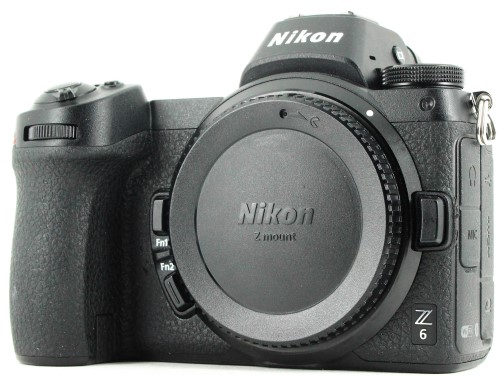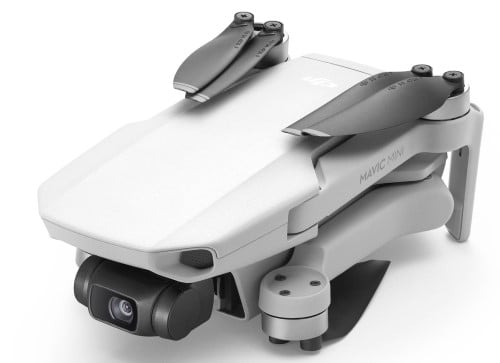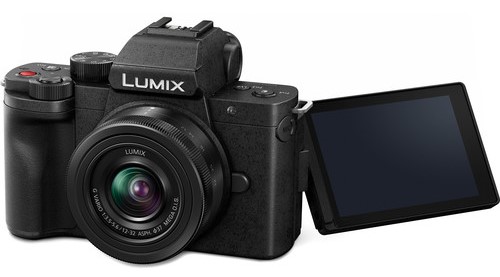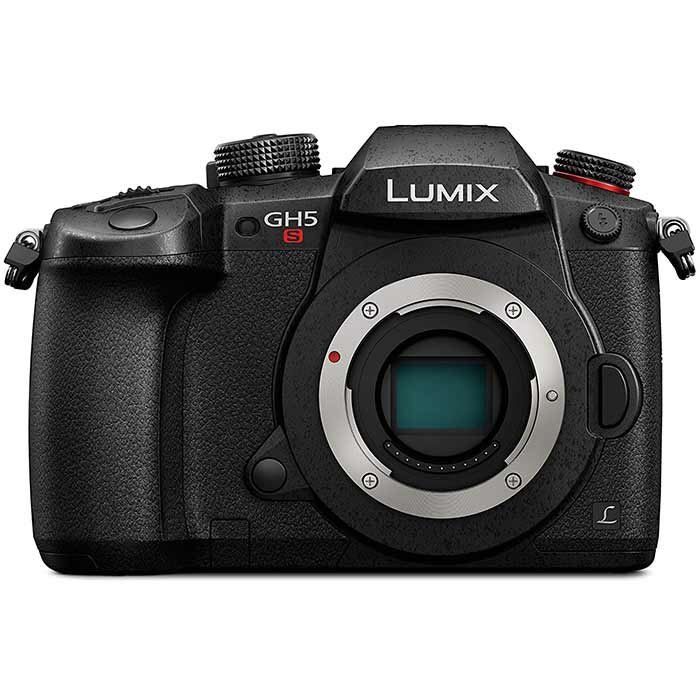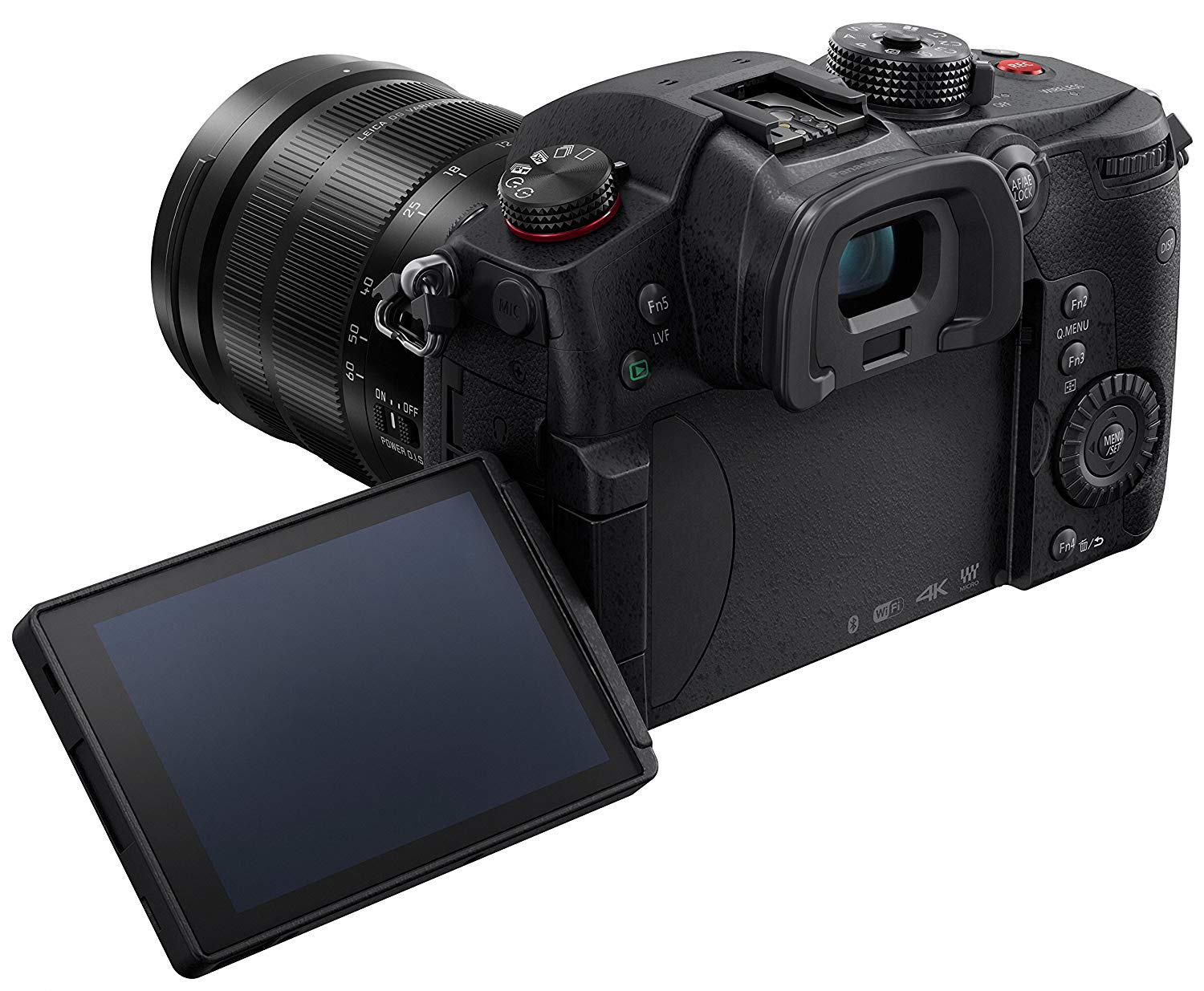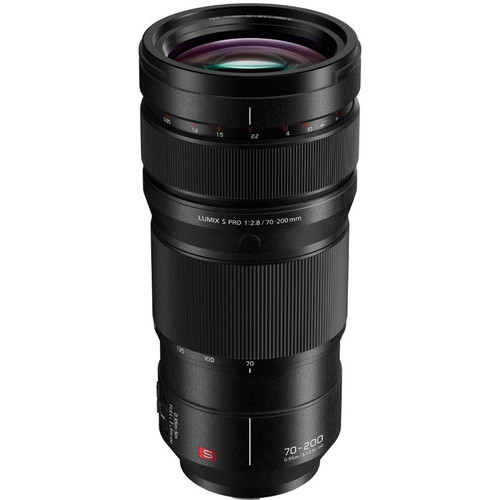3 Superb Used Mirrorless Cameras Under $1,000
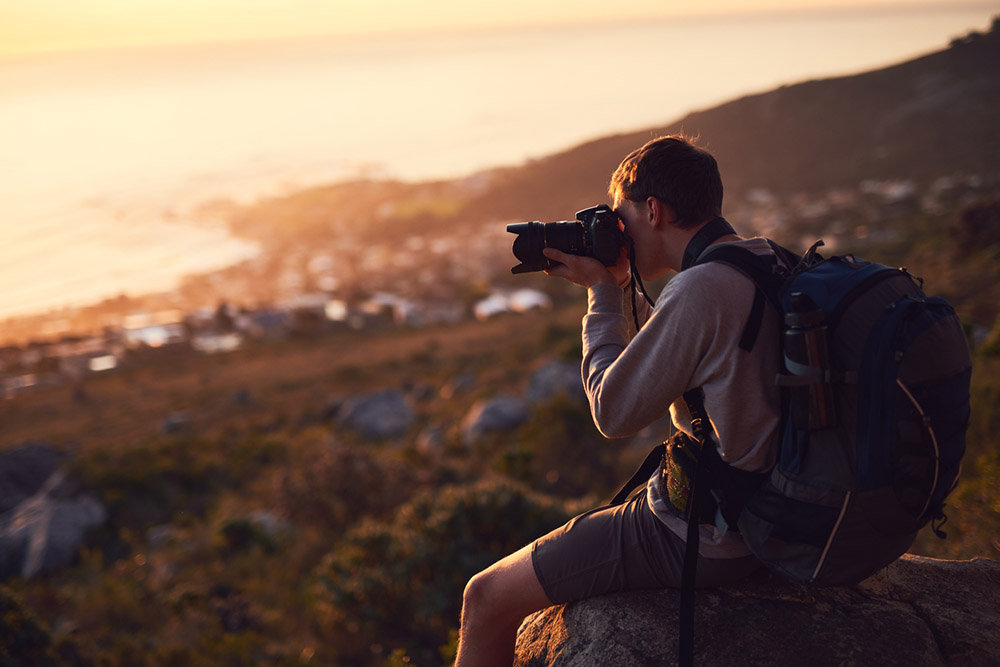
Photo by PeopleImages via iStock
Mirrorless cameras are the most modern technology in the camera industry, but that doesn't mean they always have to cost you an arm and a leg. There are tons of affordable mirrorless cameras currently available, and by buying used ones, you can save even more.
This mirrorless camera guide will examine three excellent used mirrorless cameras selling for under $1,000. We detail each one and share important information like the key specs and features, who will benefit most from shooting with it, and more! Additionally, thanks to innovative online platforms like MPB, buying a used mirrorless camera has never been cheaper and easier than it is today.
MPB is a trustworthy and reliable online platform selling used photo and video gear at unbeatable prices. All their cameras and lenses are methodically hand-inspected by expert product specialists and backed by six-month warranties, allowing you to make your purchases confidently and worry-free.
We have bought, sold, and traded more photography equipment than we can remember using MPB’s online platform, and it’s always been an easy and rewarding experience. That’s why we proudly recommend their products and services to you today. Now, let’s find out which used mirrorless camera under $1,000 is best for you and your needs!
Table of Contents
- Best Used Mirrorless Cameras Under $1,000: Sony Alpha a7R II
- Best Used Mirrorless Cameras Under $1,000: Panasonic Lumix DMC GH5S
- Best Used Mirrorless Cameras Under $1,000: Canon EOS R10
- More Amazing Used Mirrorless Cameras Under $1,000
Best Used Mirrorless Cameras Under $1,000: Sony Alpha a7R II
TheSony Alpha a7R II is an ultra-high-resolution mirrorless camera that debuted in 2015 and has a 42.4-megapixel Full-Frame sensor. Thea7R III anda7R IV have since superseded it, but that is good news for people on a budget. Because while the newest model will cost you over $2,000, a used a7R II has an average price of only $974!
Courtesy of its high pixel count, the a7R II is an ideal camera for professionals and nature/landscape enthusiasts. Moreover, when shooting outdoors, its fully-weather-sealed construction protects it from the elements (water, moisture, dust, etc.).
Other notable features include 4K video capabilities, 5-axis in-body image stabilization (IBIS), and responsive autofocus (AF). The 4K video makes it a good choice for hybrid photographers/videographers. The IBIS improves low-light performance and handheld video quality. And the AF makes capturing sharp, in-focus photos and videos easy.
Now, here’s an in-depth look at the key features and specs of this superb used mirrorless camera under $1,000:
- Camera Type: Mirrorless
- Sensor: 42.4MP Full-Frame BSI-CMOS Sensor
- ISO: 100 - 25,600 (expandable to 50 - 102,400)
- Lens Mount: Sony E Mount
- Speed: 5.0 fps
- Autofocus: 399 focus points
- Video: 4K/30p & 1080p/60p
- Size/Weight: 127 x 96 x 60 mm / 625 grams
- Battery Life: 290 shots
- Stabilization: Yes
- Touchscreen: Yes
- Price: $974
Check out the video above byaows to learn more about why the Sony Alpha a7R II is still a great camera in 2023.
Best Used Mirrorless Cameras Under $1,000: Panasonic Lumix DMC GH5S
Next, there’s thePanasonic Lumix DMC GH5S. It’s a video-centric digital camera released in 2018 and is a sister to the stills-orientedPanasonic Lumix DMC GH5 II. It’s one of the best used mirrorless cameras for weddings, events, and videographers.
Its signature feature is its super-light-sensitive 10.2-megapixel Four Thirds image sensor. Panasonic developed it specifically with video and low-light shooting in mind, and it delivers stunning results. It’s the same large-pixel/low-megapixel concept as other premium cameras like the Sony Alpha a7S III.
Furthermore, it boasts UHD and DCI 4K video at up to 60 fps frame rates, 1080p/240p slow-motion video, and Dual Native ISO. The 4K video quality is uncropped and uses the entire sensor. In-camera slow-mo video capture saves loads of time during post-production. And Dual Native ISO eliminates noise when working with high ISOs.
Now, here’s an in-depth look at the key features and specs of this superb used mirrorless camera under $1,000:
- Camera Type: Mirrorless
- Sensor: 10.2MP Four Thirds Live MOS Sensor
- ISO: 160 - 51,200 (expandable to 80 - 204,800)
- Lens Mount: Micro Four Thirds Mount
- Speed: 12.0 fps
- Autofocus: 225 focus points
- Video: 4K/60p & 1080p/240p
- Size/Weight: 139 x 98 x 87 mm / 660 grams
- Battery Life: 440 shots
- Stabilization: No
- Touchscreen: Yes
- Price: $979
Check out the video above byAdam Savage’s Tested to see how the Panasonic Lumix DMC GH5S compares to thePanasonic Lumix DC GH5.
Learn More:
Best Used Mirrorless Cameras Under $1,000: Canon EOS R10
Another one of our favorite used mirrorless cameras is theCanon EOS R10. It came out in 2022 and is the firstCanon R mirrorless camera to feature an APS-C sensor. Thanks to the 24.2-megapixel sensor and its all-new Digix X image processing engine, it’s one of the fastest and most advanced entry-level cameras ever.
Its vibrant colors, easy-to-navigate menu system, and various automatic shooting modes make it one of the most sought-after used mirrorless cameras for beginners and children. On top of that, the 23 frames per second max continuous shooting is great for capturing fast-moving subjects (i.e., action, sports, and wildlife photography).
More impressive features are the Dual Pixel autofocus, video capabilities, and a fully-articulating rear display. The AF is fast and accurate in both photo and video modes. The EOS R10 has 4K/30p and 1080p/120p video resolutions. And the articulating screen is a must-have for YouTubers, vloggers, and social media influencers.
Now, here’s an in-depth look at the key features and specs of this superb used mirrorless camera under $1,000:
- Camera Type: Mirrorless
- Sensor: 24.2MP APS-C CMOS Sensor
- ISO: 100 - 32,000 (expandable to 100 - 51,200)
- Lens Mount: Canon RF Mount
- Speed: 15.0 fps
- Autofocus: 651 focus points
- Video: 4K/30p & 1080p/120p
- Size/Weight: 123 x 88 x 83 mm / 426 grams
- Battery Life: 450 shots
- Stabilization: No
- Touchscreen: Yes
- Price: $839
Check out the video above by Canon Australia to learn everything there is to know about the Canon EOS R10.
More Amazing Used Mirrorless Cameras Under $1,000
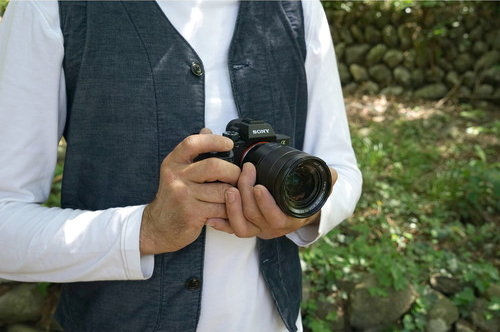
While those are three of the bestused mirrorless cameras for photo and video available today, they are far from the only options. Check out the list below to compare and contrast them with other fantastic mirrorless cameras. All of them are on sale now for under $1,000 onMPB!
Learn More:
- What is the Best Nikon Camera Under $1000?
- Three of the Best Cameras Under $500 to Consider for 2023
We Recommend
4 Reasons Why the Panasonic Lumix GH6 is One of the Best Hybrid Cameras on the Market
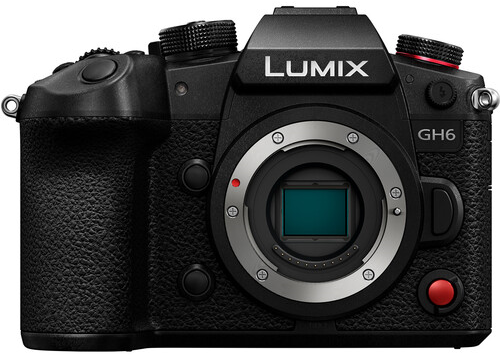
If you are a digital content creator who shoots photos and videos and is searching for your next camera, look no further than the Panasonic Lumix GH6! In this Panasonic camera review, we’ll share everything there is to know (and then some) about this out-of-this-world hybrid mirrorless camera!
We’ll discuss must-know topics like its fantastic imaging and video capabilities, amazing lens compatibility, budget-friendly price, and more. Additionally, thanks to innovative online platforms like MPB, buying a used mirrorless camera has never been cheaper and easier than it is today.
Who is MPB? They are a trustworthy and reliable online platform selling used photography and videography gear at unbeatable prices. Better yet, all their cameras and lenses are carefully hand-inspected by professional product specialists with years of experience and backed by six-month warranties, allowing you to make your purchases confidently and worry-free.
Over the years, we’ve saved thousands of dollars upgrading our photography kits by buying, selling, and trading in camera equipment on MPB’s online marketplace. To start doing the same, head to their website today. Now, let’s dive in and discover four reasons why the Panasonic GH6 is one of the best hybrid cameras on the market!
Check out the video above by Dan Watson to learn why the GH6 remains a great camera in 2023.
The Imaging Capabilities of the Panasonic Lumix GH6
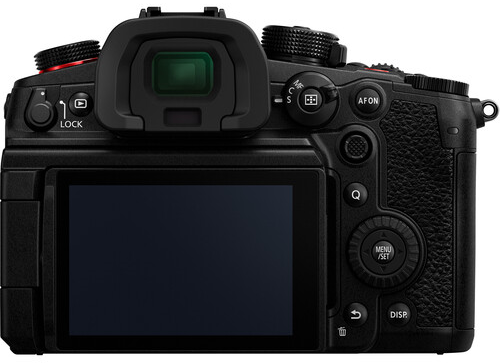
When shooting still images, the Panasonic Lumix GH6 uses a 25.2-megapixel Live MOS Micro Four Thirds sensor. Combined with its advanced, new Venus Engine image processor, the GH6 is sharper, faster, and flat-out better than its predecessor, the GH5. Another update ideal for hybrid photographers is the 315-point Depth-from-Defocus (DFD) autofocus system.
Two more awesome imaging features we love are the camera’s noise-reduction technology and its hand-held high-resolution photo mode. The “2D Noise Reduction” improves low-light performance (especially in high ISO) by significantly reducing unwanted noise. Alternatively, the high-res photo mode takes eight exposures and creates gorgeous 50 or 100MP photos.
Now, here’s an in-depth look at the key features and specs of the Panasonic Lumix DC-GH6:
- Camera Type: Mirrorless
- Sensor: 25.2MP Four Thirds CMOS Sensor
- ISO: 100 - 25,600
- Lens Mount: Micro Four Thirds
- Speed: 75.0 fps with E-Shutter (14.0 fps with AF-S)
- Autofocus: 315 focus points
- Video: 5.8K/30p, 5.7K/60p, 4K/120p & 1080p/240p
- Size/Weight: 138 x 100 x 100 mm / 403 grams
- Battery Life: 360 shots
- Stabilization: Yes
- Touchscreen: Yes
- Weather-Sealed: Yes
- Used Panasonic Lumix GH6 Price: $1,249
The Video Performance of the Panasonic Lumix GH6
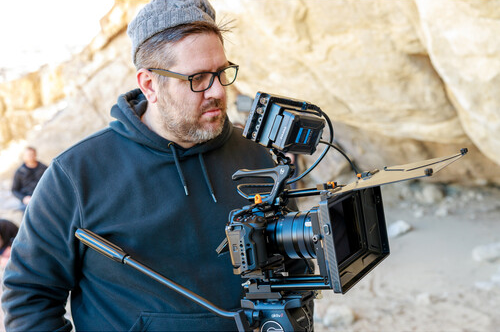
Now that we told you how great the Panasonic Lumix GH6 is at taking pictures, it’s time to let you in on a little secret…It’s even better at recording video! It captures stunning 5.8K/30p and 5.7K/60p video, making it the perfect camera for professional videographers and filmmakers. Also, it can film 4K/120p slow-motion video and 1080p/240p super-slow-motion video.
Other noteworthy video features include stabilization, various professional codecs (Apple ProRes 422 & 422 HQ), a built-in fan, unlimited recording, and a nifty audio button that gives instant access to the audio settings. Furthermore, a fully articulated rear LCD provides tons of shooting flexibility and is a must-have feature for YouTubers and vloggers.
Learn More:
- An Essential Guide to Micro Four Thirds Camera Systems
- Is a Panasonic Lumix GH5 Still Worth Your Money?
The Lens Compatibility of the Panasonic Lumix GH6
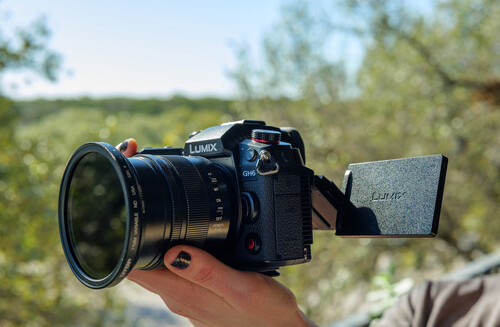
Like all Panasonic mirrorless cameras, one of the biggest strengths of the Panasonic Lumix GH6 is its deep and versatile Micro Four Thirds lens lineup. With over 200 native lenses currently on the market, you can find the perfect lenses for you and your needs, whether you shoot videos, photos, or both.
Here’s a short list of a few of the best Panasonic GH6 lenses lenses for photo and video to pair with the Panasonic Lumix DC-GH6.
- Panasonic Lumix G X Vario 12-35mm f/2.8 II ASPH Power O.I.S.
- Panasonic Lumix G X Vario 35-100mm f/2.8 II Power O.I.S.
- Panasonic Leica DG Vario-Elmar 100-400mm f/4-6.3 ASPH. Power O.I.S.
- Panasonic Leica DG Summilux 9mm F/1.7 ASPH
- Panasonic Leica DG Summilux 25mm f/1.4 ASPH II
The Affordable Price of the Panasonic Lumix GH6
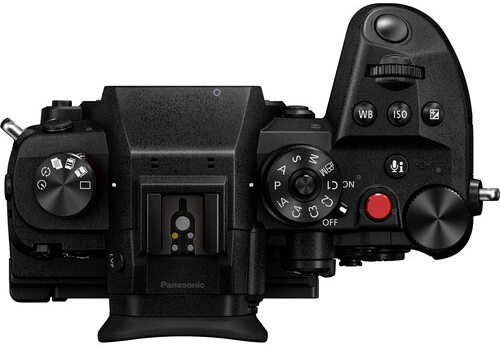
Last but not least, there’s the low price of the Panasonic Lumix GH6. When it launched in 2022, it had a retail price of $2199. However, now you can pick up a new body for around $1700 at places like Amazon or B&H.
For an even better deal, you can find “like new” pre-owned GH6s between $1200 and $1300. Remember to always use a reliable and dependable camera store when shopping for used photography gear, though.
Final Thoughts on the Panasonic Lumix DC-GH6
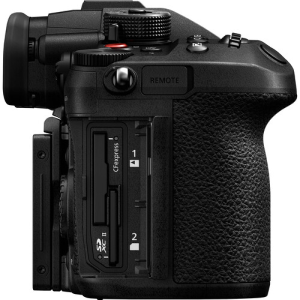
For hybrid photographers/videographers, the Panasonic Lumix GH6 is unquestionably one of the best hybrid cameras on the market. So, whether you primarily shoot photos and like to dabble in video or vice versa, the GH6 will do the job in style. One group, particularly, who loves working with it is wedding photographers.
Not sure if the Panasonic Lumix GH6 is the right choice for you? No worries! Check out the list below of other popular hybrid mirrorless cameras in stock at MPB to compare it with the competition:
Learn More:
We Recommend
5 Features That Make the Panasonic Lumix GX9 Worthy of Being in Your Camera Bag
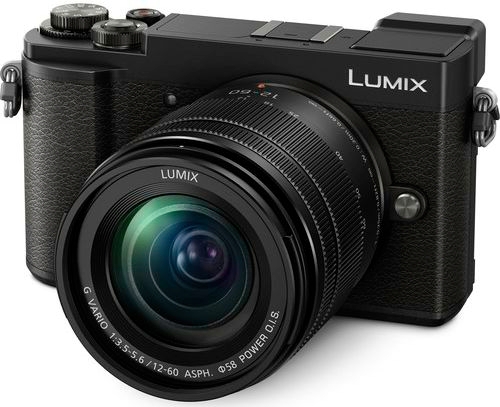
The Panasonic Lumix GX9 is a compact and attractive entry-level Panasonic G mirrorless camera that debuted in 2018. Since its release, it’s become a sought-after camera for street and travel photographers and vloggers, and if you are considering investing in one, you’re in the right place!
In this Panasonic Lumix GX9 review, we’ll share five reasons it deserves a spot in your camera bag in 2024 and beyond. We’ll touch on features like its design, photo and video performance, compatible lenses, and price. Additionally, thanks to websites like MPB, buying a used mirrorless camera has never been cheaper and easier.
Who is MPB? It is a trustworthy and innovative photography company offering high-quality used photo and video gear at affordable prices. Better yet, every camera and lens it sells is hand-inspected by professional product specialists with years of experience and backed by a six-month warranty, allowing you to make your purchases confidently and worry-free.
We love MPB because of its one-of-a-kind online platform for photographers. It’s a remarkable tool that has helped us save thousands of dollars buying, selling, and trading photography equipment over the years, and we firmly believe it can do the same for you. With that said, let’s explore five features that make the Lumix GX9 an excellent choice today!
Check out the video above by Universal Language to learn more about the Panasonic GX9 and compare it against the Fujifilm X100V.
Table of Contents
- The Body & Handling of the Panasonic Lumix GX9
- The Photo Capabilities of the Panasonic Lumix GX9
- The Video Capabilities of the Panasonic Lumix GX9
- The Lens Compatibility of the Panasonic Lumix GX9
- The Budget-Friendly Price of the Panasonic Lumix GX9
- Final Thoughts on the Panasonic Lumix GX9
The Body & Handling of the Panasonic Lumix GX9
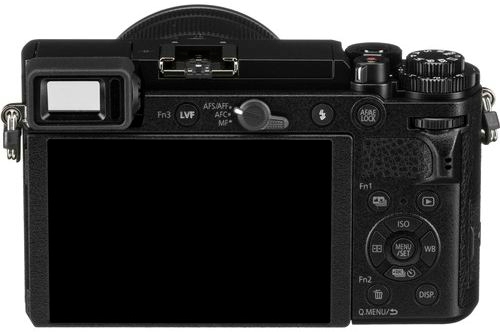
The first thing you will notice when you hold the Panasonic Lumix GX9 is how small and light it is, especially if you are transitioning from a DSLR. Its portable size means it’s easy to pack and carry when traveling. Moreover, it is a good option for people with smaller hands, such as women and children.
A unique design feature of the Lumix GX9 is its tilting electronic viewfinder (EVF), which makes capturing shots from difficult angles easier. At the same time, the solid customization options allow you to configure the camera to best suit you and your shooting needs. Finally, while the GX9 has a sturdy metal body, one small complaint is that it’s not fully weather-sealed.
Now, here’s a closer look at the Panasonic Lumix GX9 specs and key features:
- Camera Type: Mirrorless
- Sensor: 20.3MP Micro Four Thirds CMOS Sensor
- ISO: 200 - 25,600 (expandable to 100 - 25,600)
- Lens Mount: Micro Four Thirds Mount
- Speed: 9.0 fps
- Autofocus: 49 focus points
- Video: 4K/30p & 1080p/60p
- Size/Weight: 124 x 72 x 47 mm / 450 grams
- Battery Life: 260 shots
- Stabilization: Yes
- Touchscreen: Yes
- Weather-Sealed: No
- Used Panasonic Lumix GX9 Price: $739 - $879
The Photo Capabilities of the Panasonic Lumix GX9
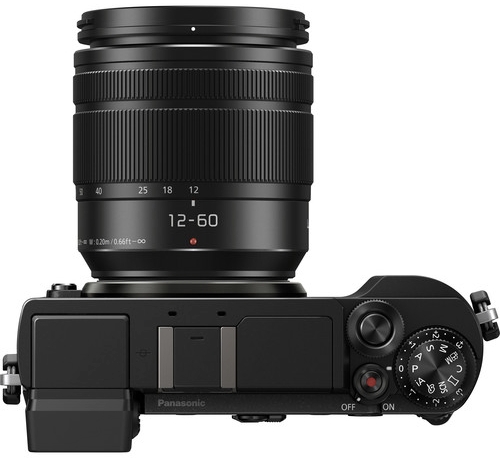
Still photos shot on the Panasonic Lumix GX9 are taken using the camera's 20.3-megapixel micro four thirds sensor. Thanks to the sensor's omission of an AA filter, it captures images that are noticeably sharper than the previous GX8. Besides the sensor, the body also houses a powerful Venus Engine image processor that produces speedy and reliable DFD autofocus.
Other photography features include the GX9's new monochrome mode and 9.0 fps maximum continuous shooting speed. The monochrome mode delivers stunning black-and-white photos straight from the camera, with no editing needed. The 9.0 max burst shooting speed is average for a mirrorless camera, but that number drops to 6.0 fps when using continuous AF.
Learn More:
The Video Capabilities of the Panasonic Lumix GX9
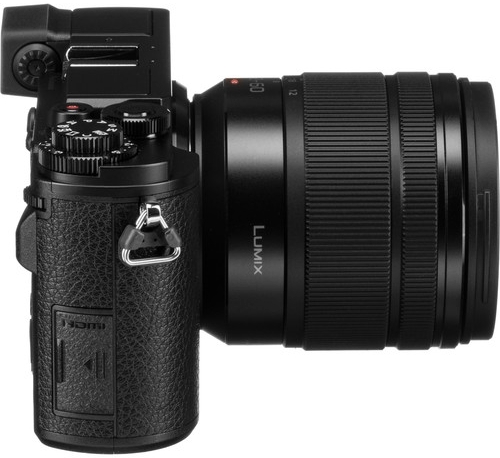
Videographers and hybrid photographers will be pleased with how the Panasonic Lumix GX9 handles in video mode. It has 1080p Full HD and 4K video capabilities, and regardless of which one you choose, the quality is excellent. 4K video is recorded at either 24 or 30 fps. However, one thing to note is that a crop factor is applied to the footage.
Due to the crop factor, we like the GX9 better for people who prefer filming Full HD movies, like YouTubers, vloggers, and social media influencers. Another strength is the Dual IS in-body image stabilization. It reduces camera shake, boosting handheld video quality and low-light performance. On the flip side, a drawback is that no headphone or microphone ports exist.
The Lens Compatibility of the Panasonic Lumix GX9

Whenever you purchase a new interchangeable lens camera, the compatible lens lineup is one of the biggest things to research. Without high-quality lenses, your camera body will be useless. With that in mind, the Panasonic Lumix GX9’s lens compatibility is one of its biggest advantages.
The micro four-thirds lens mount was first introduced in 2008, and hundreds of amazing lenses have been released since then, including zoom lenses, prime lenses, telephoto lenses, and wide-angle lenses. Here’s a quick list of some of the best micro four thirds lenses for photo and video to pair with the Panasonic Lumix DC-GX9.
- Panasonic Lumix G Vario 12-60mm f/3.5-5.6 ASPH Power O.I.S.
- Panasonic Lumix G Vario 45-200mm f/4-5.6 Mega O.I.S.
- Panasonic Lumix G 20mm f/1.7 ASPH
- Panasonic Lumix G Vario 7-14mm f/4 ASPH
- Panasonic Lumix G Vario 100-300mm f/4-5.6 Mega O.I.S.
The Budget-Friendly Price of the Panasonic Lumix GX9
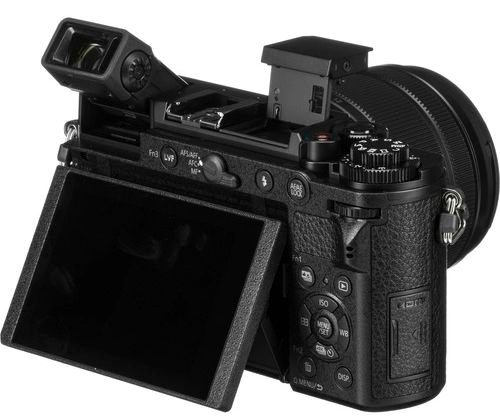
Lastly, there’s the low price of the Panasonic Lumix GX9. The going rate for a used body currently sits between $739 and $879, which is a fantastic value. For comparison, most new cameras today that offer the same advanced specs and features as the GX9 will cost you two or three times the price.
Then, you can use the money you saved to expand your camera kit with accessories such as lenses, tripods, camera bags, and drones.
Final Thoughts on the Panasonic Lumix GX9
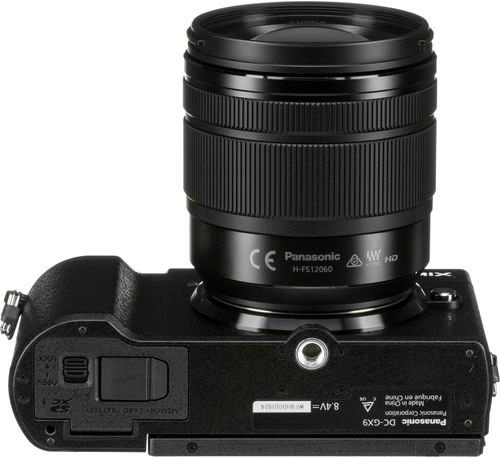
Now that you’ve gotten a better look at the Panasonic Lumix GX9, what do you think?!? Is it a good match for your photography and video needs? If you are still uncertain, here is our final recommendation. The GX9 is a great camera for enthusiast photographers and hybrid content creators. Its photos and videos are ideal for sharing on platforms like Instagram and YouTube.
Do you want to compare and contrast the Lumix GX9 with similar mirrorless cameras from Panasonic and Olympus? If so, check out the links below to more popular micro four thirds cameras currently available at MPB.
- Panasonic Lumix GH5
- Panasonic Lumix GX8
- Panasonic Lumix G9
- Olympus OM-D E-M1 Mark III
- Olympus OM-D E-M1X
- Olympus OM-D E-M5 Mark III
Disclaimer: Just so you know, some of the cool stuff we mention comes with affiliate links, meaning we earn a commission if you buy (no extra charge to you!). Plus, we occasionally feature sponsored content, but rest assured, we only shout out products we genuinely stand behind.
Learn More:
- The Olympus OM-D E-M1X is the Budget Pro-Level Camera You Need
- 5 Reasons Why the Olympus OM-D E-M1 Mark III is the Best Micro Four Thirds Camera for 2024
We Recommend
An Essential Guide to Micro Four Thirds Camera Systems
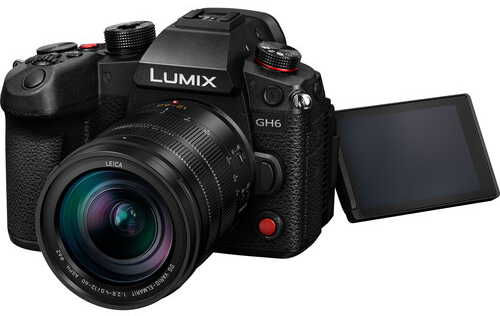
Micro Four Thirds camera systems, also written as MFT or Micro 4/3rds, are one of the crop formats that are smaller than Full Frame but still seen as one of the digital formats that are professionally capable.
The Micro Four Thirds camera format is joined in the realm of crop format sensors by the larger APS-C format seen in mirrorless and DSLR cameras and the smaller 1”-Type format found in some video camcorders and better point-and-shoot cameras. Any Micro Four Thirds camera will be a mirrorless camera instead of a DSLR-style one.
A Micro Four Thirds camera has superb still imaging capabilities, and the format is one of the industry standards for high-end video production. Panasonic, Olympus, and Blackmagic are three of the most prolific manufacturers of the Micro Four Thirds camera format.
Many Micro Four Thirds camera models are advanced intermediate or full-fledged professional cameras. Buying a preowned MFT camera from theonline platform MPB is a wonderful way to get a higher-end camera without spending your entire budget on these excellent quality tools. You can alsotrade-in or sell your current equipment through MPB to take full advantage of their online platform.
This article discusses three great buys in the Micro Four Thirds camera system, ranked Good, Better, and Best. Plus, I’ll give you a little guided tour of the idea behind the MFT camera format, as I usually do when discussing camera and lens options.
Table of Contents:
- The Complete Micro Four Thirds Camera Story
- Good Micro Four Thirds Camera - Panasonic Lumix DMC-GX85
- Better Micro Four Thirds Camera - OM SYSTEM OM-1
- Best Micro Four Thirds Camera - Panasonic Lumix DC-GH6
- MFT Camera Lenses
- Micro Four Thirds Camera Systems - Final Thoughts
The Complete Micro Four Thirds Camera Story
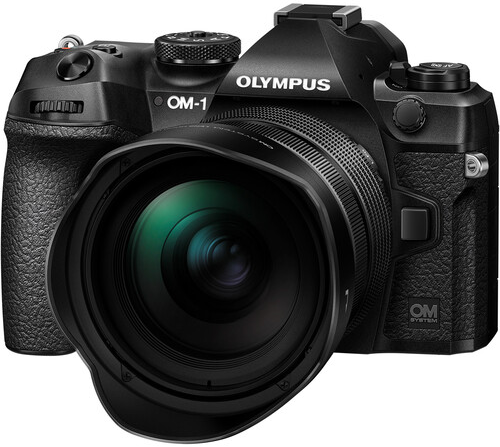
The original Four Thirds (4/3rds) camera system digital format was introduced in 2003, with the Micro Four Thirds camera format coming in 2008. The original 4/3rds format cameras were designed as DSLRs, while the MFT camera system is entirely mirrorless.
MFT and the original 4/3rds format were designed to make very compact cameras and lenses capable of producing professional-level images and video files. Both share the same digital sensor size, 17.3mm X 13mm, which is an aspect ratio of 4:3 as opposed to the 35mm film format’s 3:2 aspect ratio shared by the APS-C format.
The Micro Four Thirds camera format aspect ratio is very close to the old film movie format Super-16. This is part of why MFT is a favorite for videography and professional-level digital cinematography.
Here is a great video from That Micro 4/3 Guy explaining the aspect ratio differences and why a Micro Four Thirds camera has an optimal format for a wide variety of applications:
All Micro Four Third camera systems are mirrorless with electronic viewfinders or view screens, and most have in-camera image stabilization. The extremely short flange to film plane distance allows adapters to fit virtually any popular lens mount to the MFT camera mount. MFT has a crop factor for lenses of 2X compared to Full Frame or 35mm film.
Okay, this may not be the complete MFT story, but it gets us where we need to be to show some awesome MFT camera options!
Good Micro Four Thirds Camera - Panasonic Lumix DMC-GX85
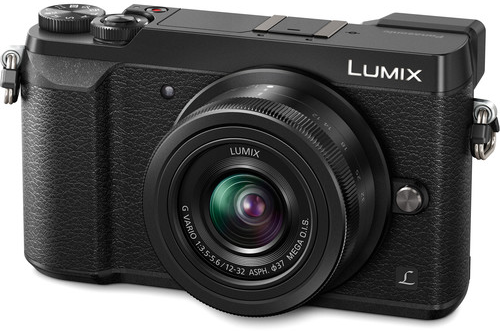
As our "good" Micro Four Thirds camera choice, I’ve picked a slightly older camera, the Panasonic Lumix DMC-GX85, which was released in 2016. This camera has interchangeable lenses in the MFT lens mount, a 16MP sensor, and 5-axis in-camera image stabilization.
It has 4K video capability, 49 AF points, and a maximum shutter speed of 1/16,000 of a second. It lacks an articulated viewscreen and has no external microphone input, plus it uses a micro USB type B port. However, the camera body design is a very compact rangefinder form.
Better Micro Four Thirds Camera - OM SYSTEM OM-1
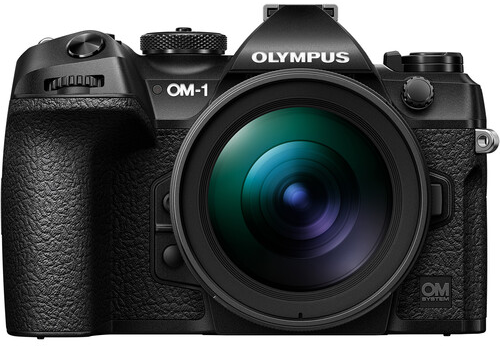
In the Micro Four Thirds camera “better” slot, I put the fantastic Olympus OM System OM-1 of 2022. It has 4K video and is an excellent camera for still imaging with its weather sealing and great ergonomics.
For video, it has a built-in microphone, a mic jack, a headphone jack, HDMI and USB Type C out, and a maximum frame rate of 60 fps. For still imaging, it has a maximum shutter speed of 1/32,000 of a second, 1053 AF points, and a 20.4MP sensor.
The camera body is made to mimic the form factor of a compact SLR and has a generous handgrip. The rear viewscreen is fully articulated and doubles as a touchscreen control panel.
Best Micro Four Thirds Camera - Panasonic Lumix DC-GH6
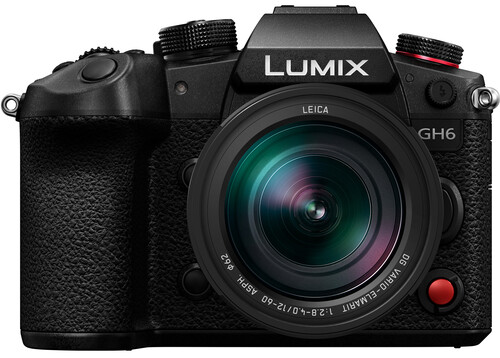
In the “best” slot for Micro Four Thirds cameras, I put the fantastic Panasonic Lumix DC-GH6 of 2022. Take everything I just said about the Olympus OM-1 and add to it a maximum video frame rate of 240 fps, maximum shutter speed of 1/32,000 of a second, 10-bit video recording, 7.5 stops of image stabilization, and 100% viewfinder coverage.
The MFT sensor is 25.2MP and has a low ISO setting of 100 for the lowest noise and highest resolution still imaging files. It has dual memory card slots and is preprogrammed with V-Log/V-Gamut and 13-stops of dynamic range with Dynamic Range Boost.
This Panasonic Micro Four Thirds camera is the best hybrid video/still camera in this format and is very compact and lightweight for a full-fledged professional-level camera system.
MFT Camera Lenses
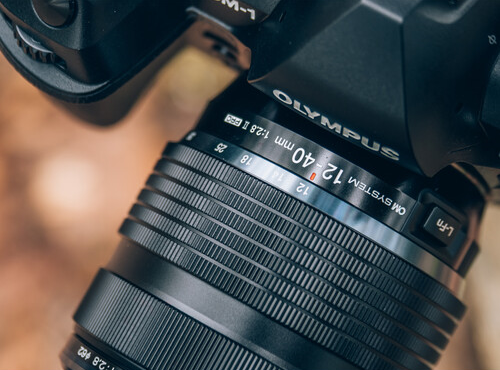
Whether using your Micro Four Thirds camera for video recording or still imaging, you’ll want to pair it with the best lenses, too. Here is a short list of pro-quality MFT camera lenses available from MPB:
- Panasonic 10-25mm f/1.7 Leica DG Vario-Summilux ASPH
- OM SYSTEM M.Zuiko Digital ED 12-40mm f/2.8 PRO II
- Sigma 16mm f/1.4 DC DN Contemporary
- Tokina Cinema 11-16mm T3.0
- Panasonic Leica DG Summilux 12mm f/1.4 ASPH
Micro Four Thirds Camera Systems - Final Thoughts
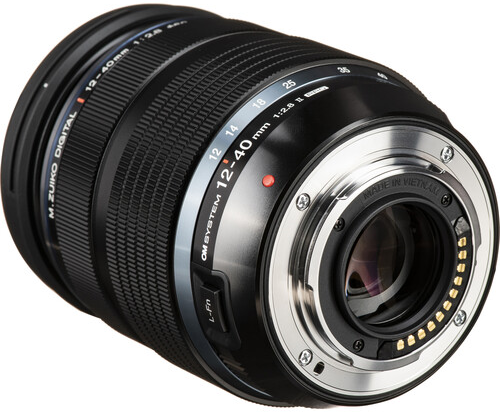
As I said at the start, every Micro Four Thirds camera has superb still imaging capabilities, and the format is one of the industry standards for high-end video production. These fine cameras are super compact, lightweight, and fully pro-capable. It’s the whole package!
Buying your MFT camera or lens through the MPB will maximize your budget for high-end imaging and video equipment - have a look at their current inventory to see what cameras and lenses you can add to your camera bag!
Learn More:
We Recommend
Best Camera for Product Photography
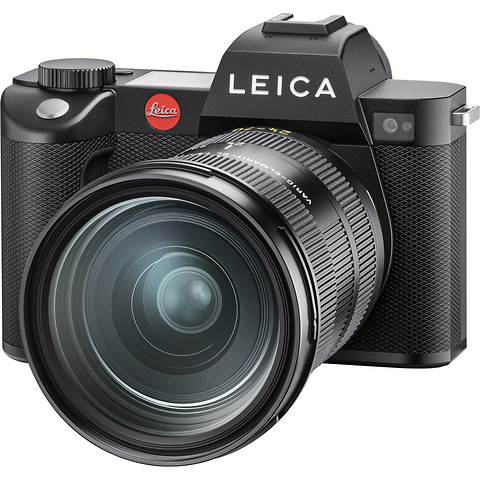
Whenever I come across an article about what is the best camera, lens, flash, tripod, or whatever for portraits, weddings, wildlife, product photography, architectural photography, or whatever, in the back of my mind I’m saying “Is there really only one best?”
I have two main reasons for this thought. One, there are SO MANY amazingly excellent cameras for all types of photography and all types of photography. And two, every photographer is different, having some tastes and desires that vary from other photographers.
Here’s the thing, though. I still read every article and learn something from them. Weird, huh? I just love being a photographer and I love teaching it, too. So, with that in mind, here are my current thoughts on what is the best camera for product photography.
Format and Type of Camera
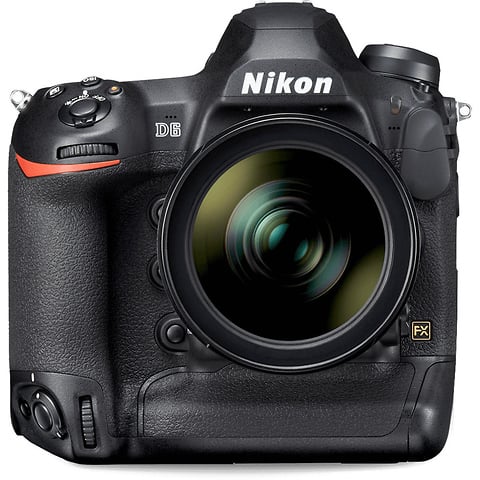
Looking at the 3 most used digital formats for serious photography, MFT, APS-C, and Full-Frame, which is the best camera for product photography?
From the perspective of total usability including post-processing, I’m going to opt for the two larger formats, APS-C and Full-Frame.
MFT mirrorless pro and prosumer cameras are super performers for quality imaging and virtually perfect for all videography, but the size of the pixels are smaller for the same resolution, so there isn’t as much capability in low light performance and I also think that still imaging color management is not quite equal to the two larger formats.
This isn't to say that a photographer couldn’t use MFT (Micro Four Thirds / Micro 4/3rds) cameras for professional product photos, simply that a larger format offers some very real benefits for professional photography.
So, as we’re searching for the best camera for product photography, we’re zeroing in on APS-C and Full-Frame format cameras. So now the question becomes between Mirrorless cameras and DSLRs, what camera is best for product photography?
In APS-C format, I’m comfortable with either type for any of the 3 levels of entry-level, intermediate, and full-fledged professional. For a Full-Frame format, full-fledged professional-level camera, I’m going to endorse mirrorless, I’ll explain why in a moment.
Must-Have Features
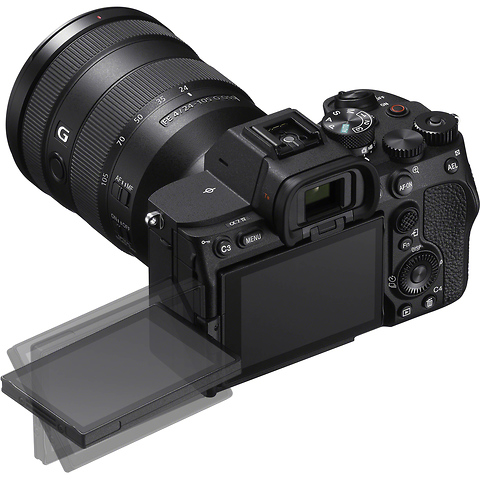
For any serious photography, there are certain features and capabilities that I see as must-have for being in the running for best camera for product photography.
Interchangeable lenses, manual exposure control, and manual focusing are the 3 basics I feel are basics for any serious photography. While I love all the different automations in modern cameras, sometimes we simply need control to adjust properly for creating what we want.
Other features I like to recommend are exposure bracketing, spot metering, and adjustable focus points. These features ease our workflow when working with many genres of professional photography.
Another important feature is a very high-resolution rear viewscreen, articulated or tilting is preferred, with the ability to magnify live view for critical focus confirmation.
4K video recording is a must-have for me now, but Full HD 1080p is acceptable for many uses. I find it interesting how many clients for still photography I’ve worked with for years are now requesting 4K video footage of their products in addition to the high-resolution still images they still want.
Learn More:
Best Camera for Product Photography - Entry-Level
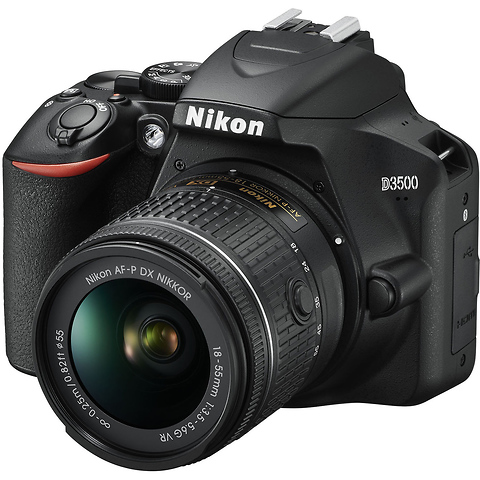
An entry-level idea for the best camera for product photography can go with either a DSLR or a mirrorless camera. Mirrorless cameras may be an easier move for stepping up from smartphone photography or getting back into photography as former point-and-shoot film camera users, but the least expensive choices are going to be DSLRs.
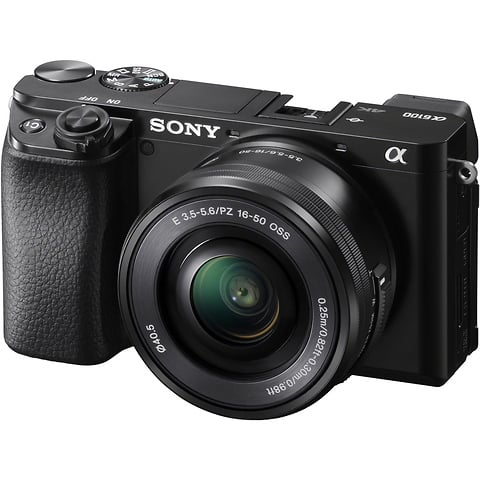
Best camera for product photography, entry-level APS-C mirrorless: Sony Alpha a6100 with 16-50mm lens. This APS-C format mirrorless camera has a 24.2mp sensor, can capture 14-bit RAW files, records video in 4K, and has a high-resolution tiltable rear viewscreen. Sony lenses are excellent, plus you can use a mount adapter for all sorts of legacy lenses since it is a mirrorless camera.
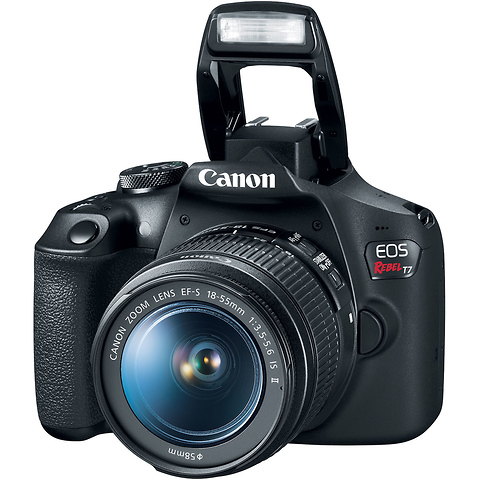
Best camera for product photography, entry-level APS-C DSLR:Canon EOS Rebel T7 with 18-55mm lens. Hands down the winner in low price for a superb camera, this camera has a 24.1mp sensor, records video in Full HD, and has a bright non-moveable rear viewscreen. The closest competition for price is theNikon D3500 with 18-55mm lens that has almost identical features.
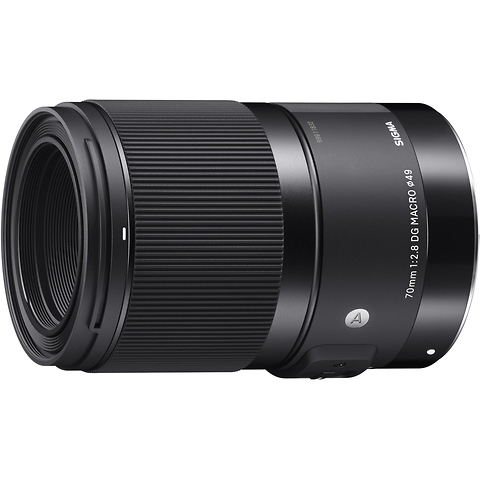
Quickly add a prime focal length macro lens from either the manufacturer or a good third-party brand such as the Sigma 70mm f/2.8 DG Macro to supplement the very sharp but slower aperture kit zoom lenses.
Best Camera for Product Photography - Intermediate or Prosumer
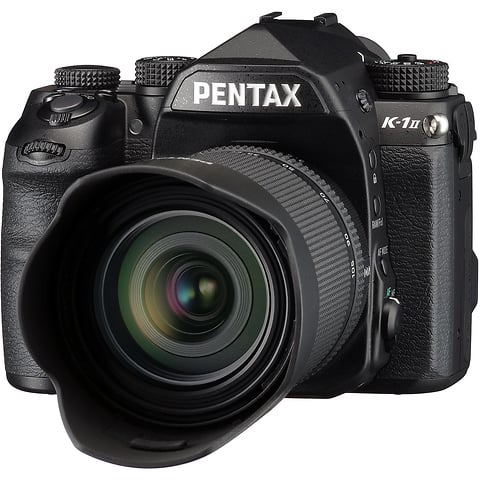
Basically, any camera that has features and build quality that appeals to intermediate photographers can be used as a prosumer-level camera. Prosumer meaning it is priced for a consumer market but having many of the features of higher-end pro cameras.
First, we’ll list APS-C format cameras.
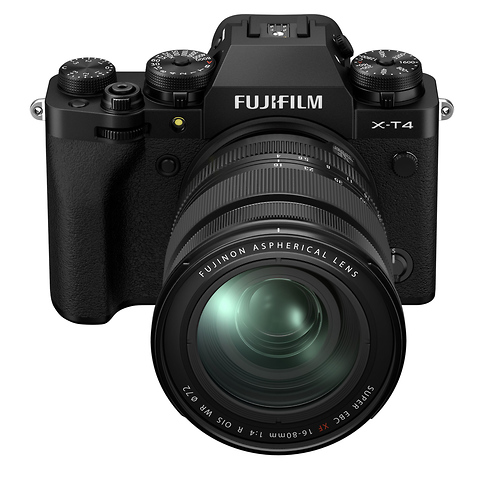
Best camera for product photography, prosumer APS-C mirrorless: Fujifilm X-T4 with 16-80mm lens. 26.1mp sensor, 4K video, and a large vari-angle viewscreen. Fujifilm is a major player in high-resolution medium format digital cameras, their expertise in all aspects of imaging is evident in any of their cameras.
Best camera for product photography, prosumer APS-C DSLR: Nikon D7500 with 18-140mm lens. Perhaps one of the best bargains in prosumer quality cameras, the Nikon D7500 has 4K video, tilting viewscreen, and a 20.9mp sensor.
And now an awesome option for a Full-Frame format mirrorless camera.
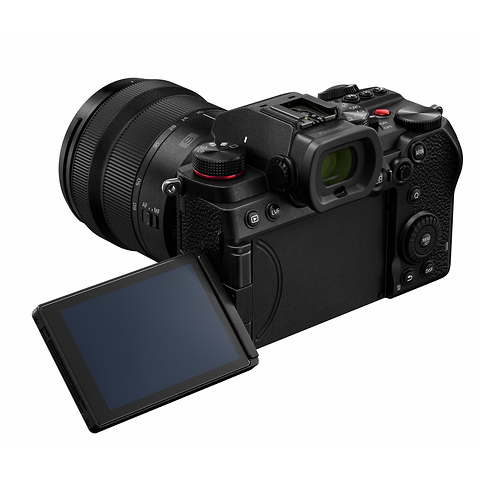
Best camera for product photography, prosumer Full Frame mirrorless: Panasonic Lumix DC-S5 with 20-60mm lens. If you’re looking to break into Full-Frame photography and want excellent video capability along with a budget-friendly price, this hybrid camera may be your best choice. 24,2mp sensor, 4K video, and a fully articulated viewscreen.
Top Pro-Choice Best Camera for Product Photography
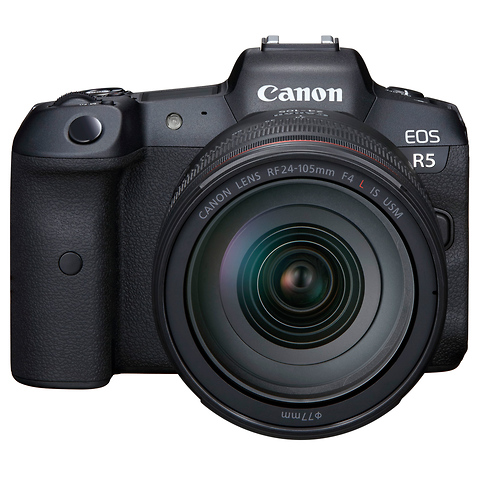
This category has been ruled by DSLRs since digital Full-Frame started, but I think mirrorless is the future for high-end digital photography. The ability to use virtually any 35mm format lens ever made via adapters and the amazing video capability of these cameras are two reasons I personally lean this way.
There are many other reasons the industry is strongly leaning this way, so I see it as the way to go from now on. So, with that in mind…
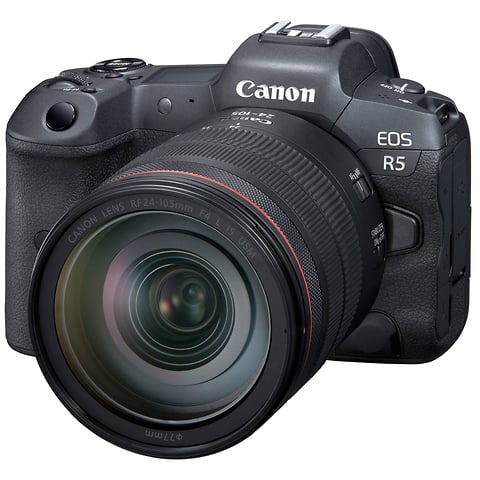
Best camera for product photography, Full-Frame mirrorless, pro-level: Canon EOS R5 with 24-105mm lens. All I can say is WOW, what a camera! 4K video, 45mp sensor, 8K video (yes 8K), articulated viewscreen, and more features than I can list in this brief write-up. Follow the link and judge for yourself how good a camera it is.
Well, now you have my list of options for the best camera for product photography, have fun following the links! Enjoy making great images, too.
Learn More:
- How To Market Yourself As a Videographer
- Food Photography Lighting Tips
- Best Lens for Product Photography
We Recommend
Best Camera of 2022 for Beginners, Enthusiasts, and Pros
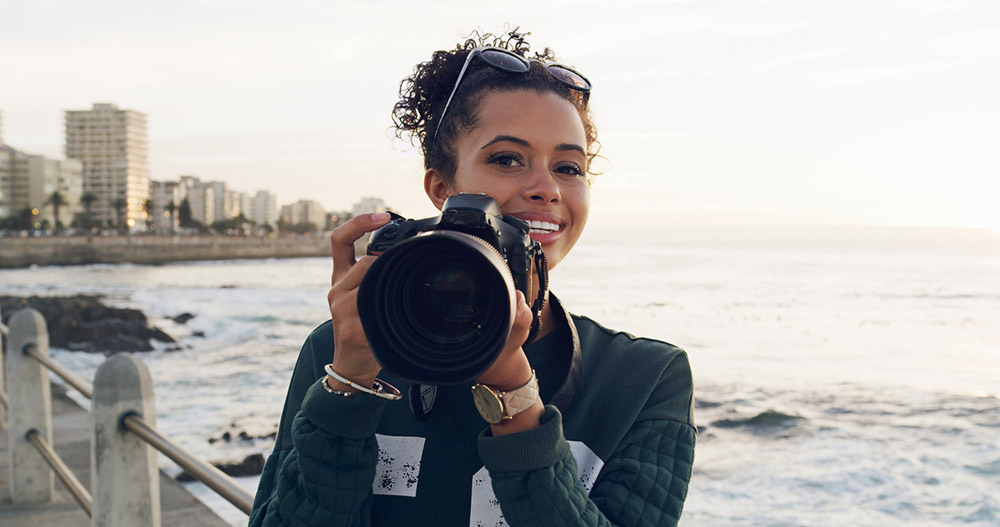
Photo by Cecilie_Arcurs via iStock
What is the best camera of 2022? Well, that's a complicated question...
The best camera for me might not be the best camera for you. It depends on many factors like your skill level, your needs in terms of specs and features, and your budget, to name a few.
So the answer to our question is that it depends!
What we've done, though, is compile a list of cameras for beginners, enthusiasts, and professionals. For each category, we've included multiple cameras, each with detailed information about specs and features, as well as details about the pros and cons of each camera.
In other words, this is a one-stop-shop for you to find the best camera to fit your current situation!
Table of Contents
Best Camera for Beginners
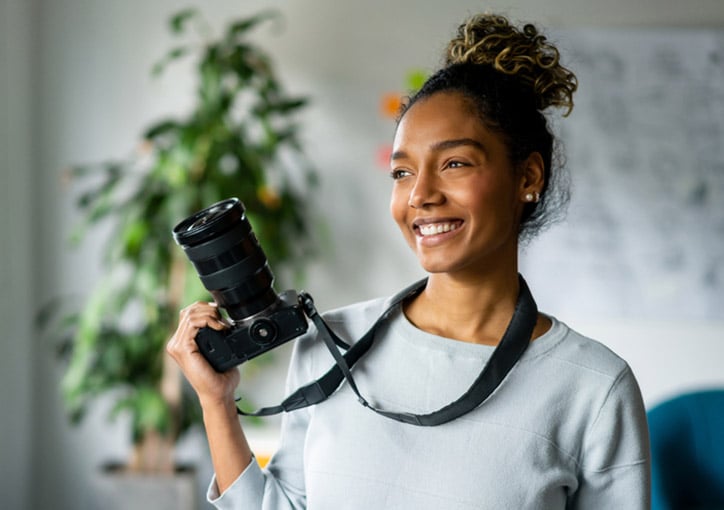
Photo by andresr via iStock
If you're a new photographer and you've outgrown the capabilities of your smartphone or existing DSLR or mirrorless camera, the options listed below give you loads of features without breaking your budget.
What's more, these cameras have enough in the way of specs that you can grow as a photographer in the coming years without necessarily needing to invest in a more robust camera.
Additionally, while this list includes options for the best camera for photography, each beginner camera also offers decent video features. It's the best of both worlds!
Olympus OM-D E-M10 Mark IV
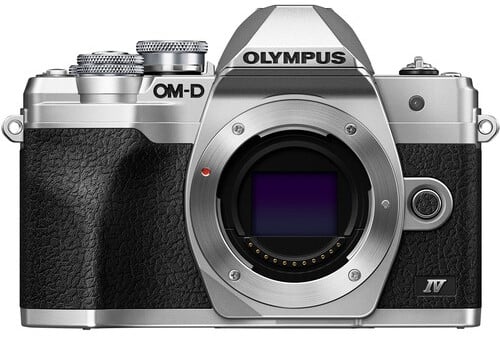
Specs and Features
- 20MP Micro Four Thirds Live MOS sensor
- TruePic VIII processor
- 121-point Contrast Detection AF system
- EVF with 2.36m-dots
- 3” tiltable touchscreen with 1.03m-dots
- 15fps burst mode
- 4K video at 30p, 25p, and 24p; Full HD video at 60p, 50p, IPB
- Built-in WiFi and Bluetooth
- Approximately 360-shot battery life
Pros and Cons
- Pros
- Fantastic sensor
- Image stabilization
- Compact size
- Cons
- Good video capabilities
- No microphone port
- No USB-C
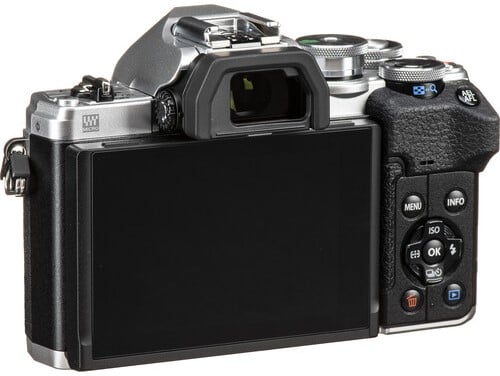
If you want a small, highly capable mirrorless camera that is compatible with hundreds of affordable lenses, the OM-D E-M10 Mark IV is right up your alley.
Though it's a beginner camera, you get some nice features headlined by a fantastic 20.3-megapixel micro four thirds sensor. The TruePic VIII processor makes it a speedy camera as well, offering up to 15fps burst shooting speed.
The camera's flip-down touchscreen is a nice touch for capturing low-angle shots while the image stabilization will help you create tack-sharp images, even when you're holding the camera.
There's no microphone or USB-C ports, and the autofocus isn't the best in this class. However, this camera is loaded with other features, has great ergonomics, and with all those available lenses, you can really build an impressive kit that can grow with you as you gain skills. It's certainly an option for the best camera of 2022!
Learn more in our Olympus OM-D E-M10 Mark IV review.
Sony A6000
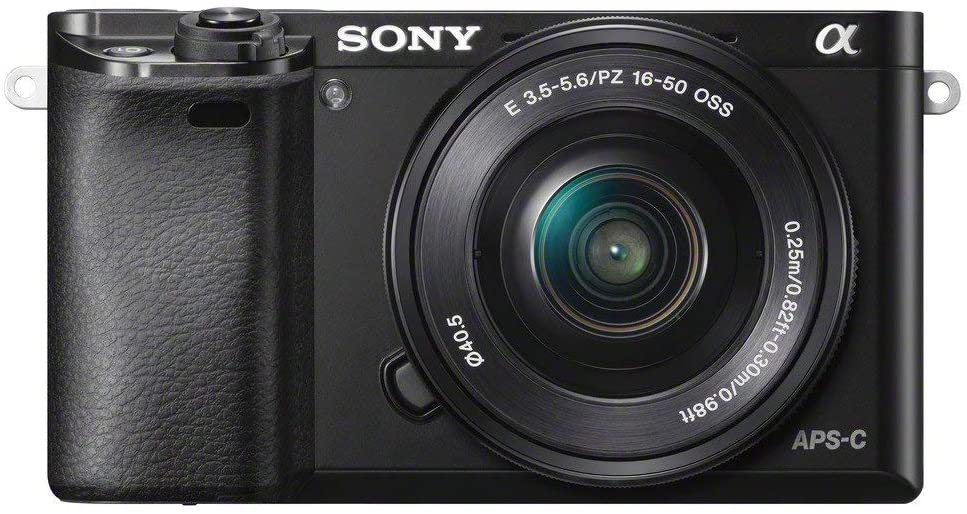
Specs and Features
- 24.3-megapixel CMOS APS-C sensor
- Bionz X image processor
- Hybrid autofocus system with 179 phase-detect and 25 contrast-detect AF Points
- 1.44-million dot OLED electronic viewfinder
- 3-inch tilting LCD with 921.6K dots
- 11 fps continuous shooting
- 1080p HD video at 24p and 60p
- Built-in NFC and WiFi
- Approximately 300-shot battery life
Pros and Cons
- Pros
- Excellent autofocus system
- Huge selection of lenses
- Small and lightweight
- Cons
- Old model
- No 4K video
- OLED EVF resolution isn't up to par

Debuting in 2014, the Sony a6000 isn't exactly a new camera. However, it's still one of the top choices for best camera for beginners because it offers excellent features at a great price point (given its age, you can often find it at steep discounts).
Sure, you don't get 4K video, but if you're more focused on stills, you can reap the benefits of a robust 24.3-megapixel sensor, a fast and accurate autofocus system, and 11fps continuous shooting. Additionally, Sony has a huge selection of images for cameras in this range, so you can outfit your a6000 with any lens you could possibly want.
Fujifilm X-T200
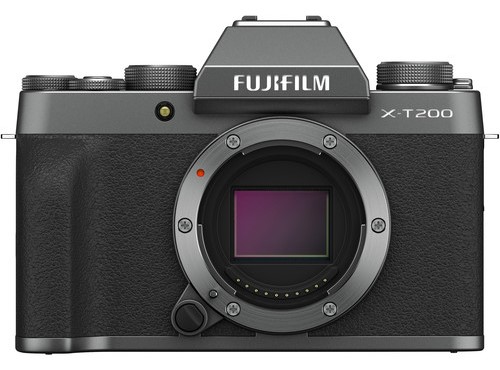
- Specs and Features
- 24.2MP APS-C CMOS sensor
- New image processing engine
- 425-point Phase Detection AF system
- EVF with 2.36m-dots
- 3.5” fully-articulated touchscreen with 2.78m-dots
- 8fps burst mode
- 4K video at 30p, 25p, and 24p; Full HD video at 120p, 60p, 50p, 25p, and 24p
- Built-in WiFi and Bluetooth
- Approximately 270-shot battery life
Pros and Cons
- Pros
- Big and bright display
- Excellent uncropped 4K video
- Digital gimbal stabilizes 1080p footage
- Cons
- No video subject tracking
- Small buffer during continuous shooting
- Small joystick
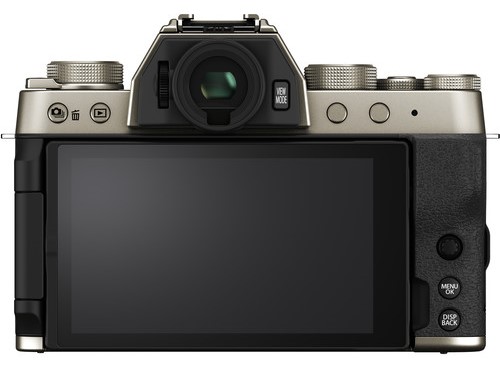
TheFujifilm X-T200 is an entry-level mirrorless camera ideal for hybrid photographers who shoot photos and videos. It was announced in January 2020 and replaced theFujifilm X-T100 as the company’s signature interchangeable lens camera for beginner photographers.
It combines a 24.2-megapixel APS-C CMOS sensor with an upgraded image processor, and the pair delivers fantastic results in both photo and video modes. Moreover, the colors in JPEGs are bright, vibrant, and very pleasing to the eye. JPEGs look great straight out of the camera and are perfect for new photographers.
Also, thanks to a new hybrid autofocus system capturing sharp, in-focus images has never been easier. The AF works during photo and video modes, and the face/eye-detection setting is phenomenal for portraits and videos. Manual autofocus is also available for people interested in learning how to use it.
A few more noteworthy features of the Fujifilm X-T200 include a giant fully-articulating touchscreen display, intuitive menus, and uncropped 4K video. The high-resolution video and articulating screen, in particular, make it an excellent camera for beginner YouTubers and filmmakers.
Learn more in our Fujifilm X-T200 review.
Sony ZV-1
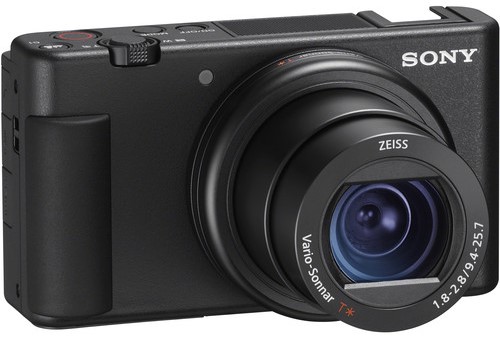
Specs and Features
- 20.1MP 1” Exmor RS BSI CMOS sensor
- Bionz X image processor
- 315-point Phase Detection AF system
- No viewfinder
- 3” fully-articulated touchscreen with 921,600-dots
- 24fps burst mode
- 4K video at 30p, 25p, and 24p; Full HD video at 120p, 100p, 60p, 50p, 30p, and 24p
- Built-in WiFi and Bluetooth
- Approximately 260-shot battery life
Pros and Cons
- Pros
- Great for vlogging
- Lightweight and portable design
- Attractive price
- Cons
- No viewfinder
- Weak battery life
- Not weather-sealed
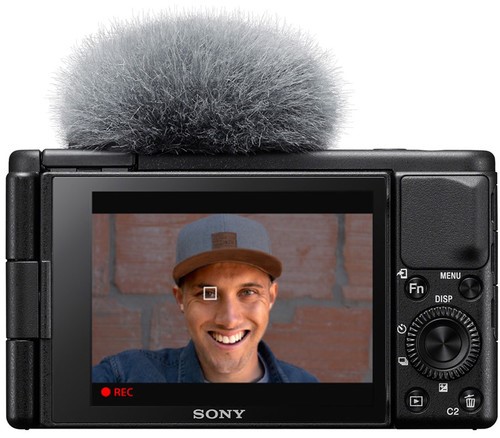
The Sony ZV-1 is an award-winning point-and-shoot camera specifically designed for vloggers, YouTubers, and influencers. It came out in May 2020 and has been flying off the shelves ever since. It has a 1-inch CMOS sensor and a powerful Bionz X image processing engine.
While it does take high-quality still images, video shooting is its bread and butter. It offers 4K video capture at frame rates of 30, 25, and 24 frames per second and has 1080p Full HD options. I recommend 30p for most people, but if you want a more cinematic look to your movies, you should opt for 24p.
More killer video features of the Sony ZV-1 are an in-camera 1080p/120p slow-motion mode, a fully-articulating touchscreen LCD, a strong battery life, and advanced audio controls. The audio controls include a port for an external microphone, a headphone jack, and a built-in directional microphone with a wind protector.
If you like the look and feel of this camera but want an interchangeable lens camera instead, you should consider the Sony ZV-E10. It has a massive lineup of native Sony E Mount lenses and is like a newer version of the Sony Alpha a6100.
Learn more in our Sony ZV-1 review.
Best Enthusiast Camera
Sony a7 IV
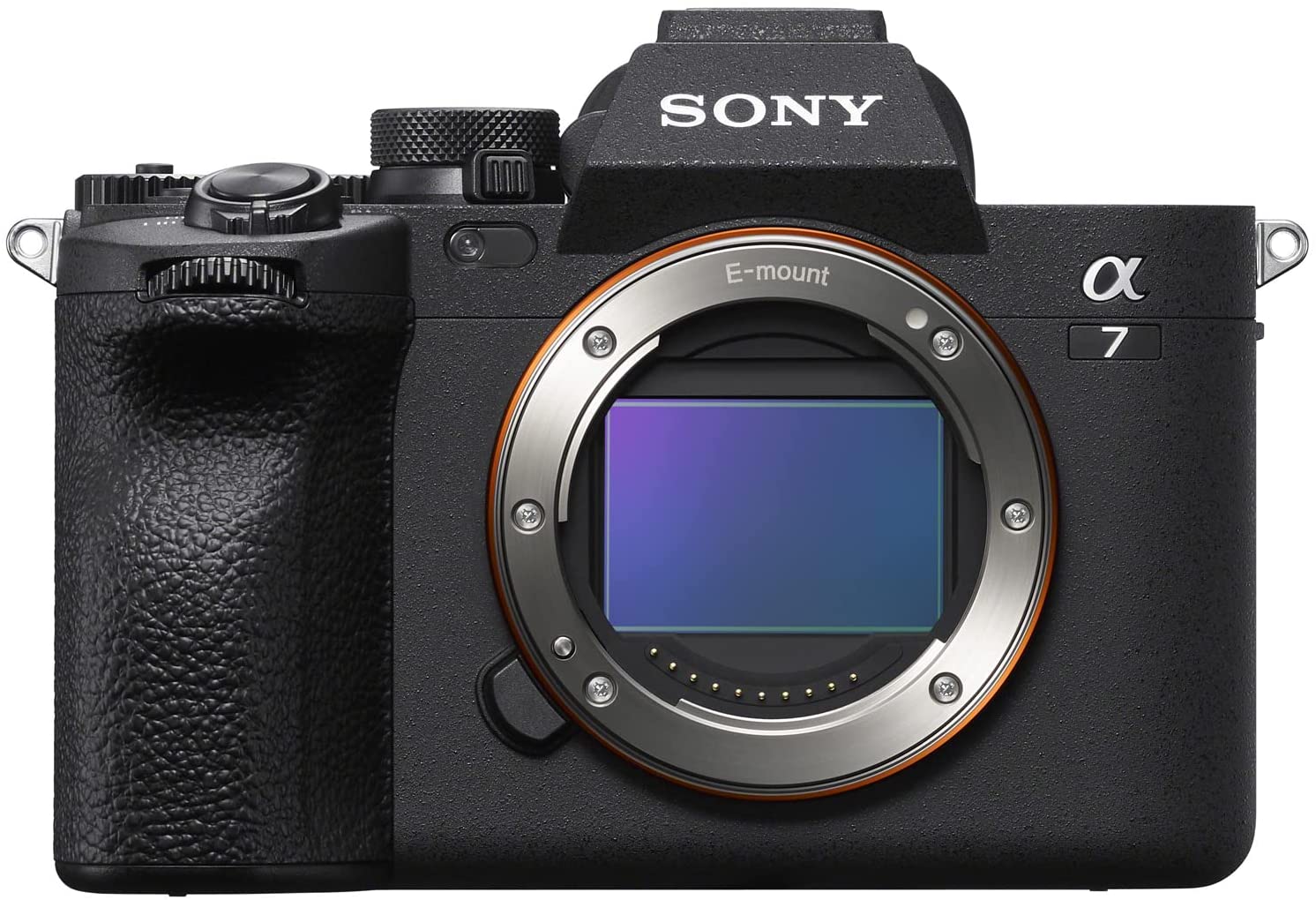
Specs and Features
- 33-megapixel full frame EXMOR R back-illuminated CMOS sensor
- Bionz XR image processor
- Hybrid autofocus system with 759 phase-detect and 425 contrast-detect AF Points
- 3.68-million dot EVF with 120fps refresh rate
- 3-inch tilting LCD with 1.036 million dots
- 10 fps continuous shooting
- Up to 4K video at 60p with 7K oversampling at 4K 30p
- Built-in WiFi and Bluetooth
- 5-axis in-body image stabilization
- Approximately 580-shot battery life
Pros and Cons
- Pros
- Amazing 33-megapixel back-illuminated sensor
- Next-level autofocus
- Exceptional EVF
- Cons
- Some menu options are very complex
- 4K video is cropped
- LCD resolution isn't that great
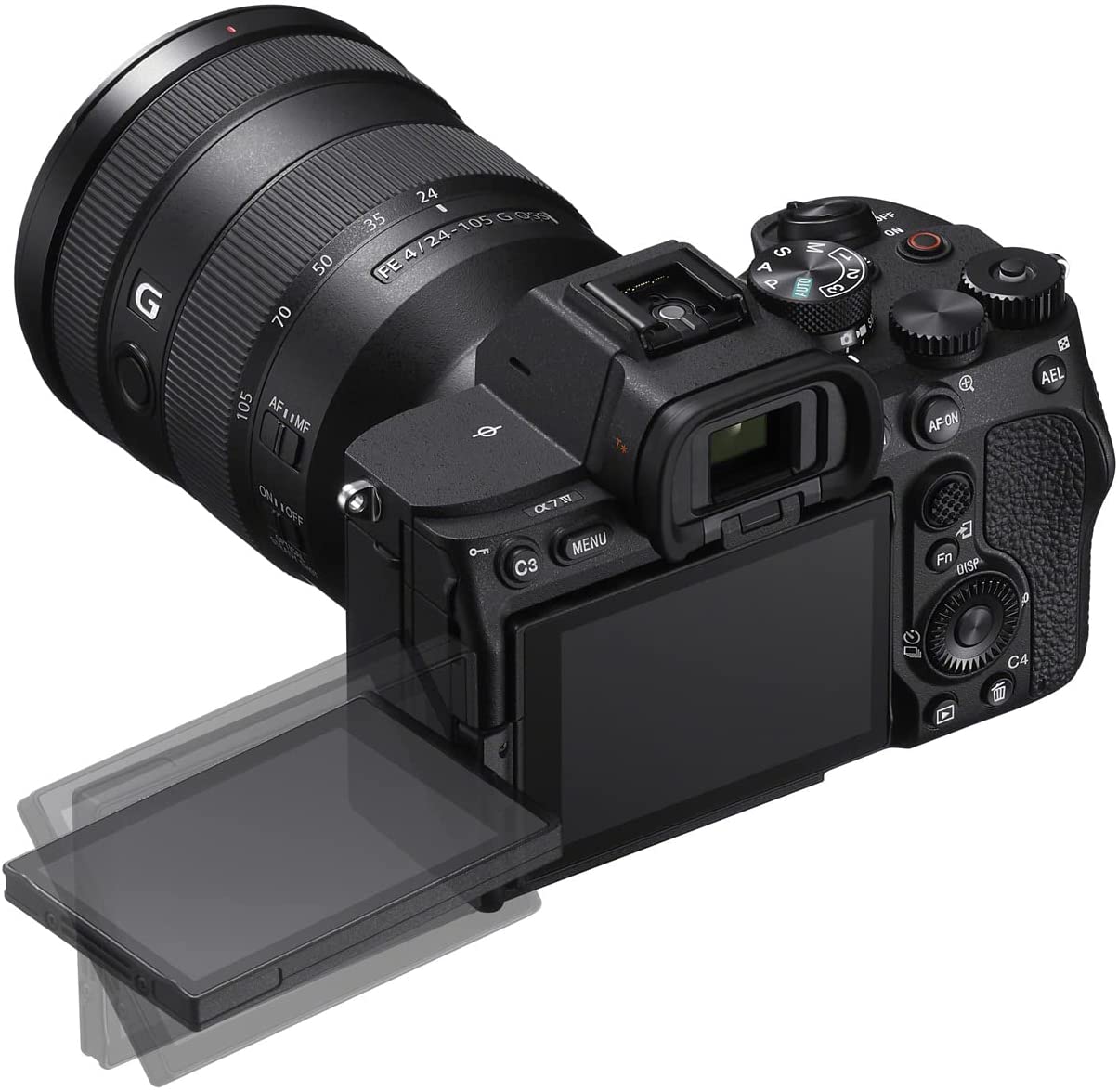
If you're an enthusiast photographer, you'll be hard-pressed to find a better all-around camera than the Sony a7 IV.
This Sony camera has a new 33-megapixel sensor that offers excellent imaging quality and good video performance, though 4K video is heavily cropped. As expected, the a7 IV has a killer autofocus system that is among the leaders in the industry.
This camera also has great battery life, which is estimated at 580 shots.
Of course, all these goodies come at a price. This is not a cheap camera, but with features like a Bionz XR processor, 10-bit video support, and a buffer that's hard to fill, you definitely get what you pay for. That's why we've ranked it as the best enthusiast camera of the year!
Canon EOS R6
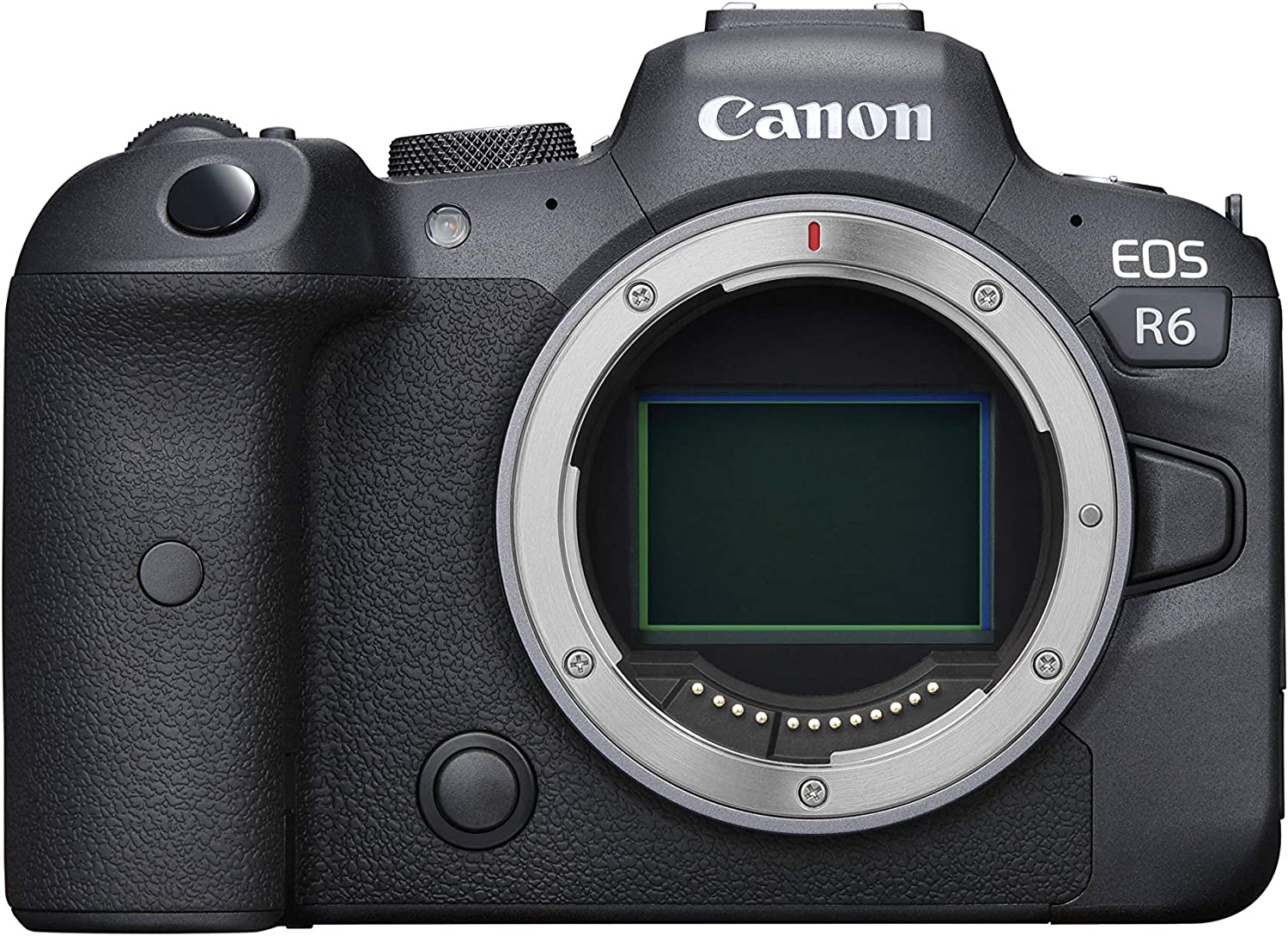
Specs and Features
- 20.1MP full frame CMOS sensor
- DIGIC X processor
- 6,072 Dual Pixel CMOS AF II AF points
- 0.5” OLED EVF with 100% coverage and 3.69k-dots
- 3” fully articulating touchscreen
- 12fps burst mode with mechanical shutter, 20fps burst mode with electronic shutter
- 4K video capabilities at 60p, 50p, 30p, 25p and 24p
- Built-in WiFi and built-in Bluetooth
- 5-axis in-body image stabilization
- Approximately 510-shot battery life
Pros and Cons
- Pros
- Superb autofocus system that's easy to set up
- Great ergonomics
- Full frame in-body image stabilization
- Cons
- Rolling shutter is an issue
- Low sensor resolution compared to similar cameras
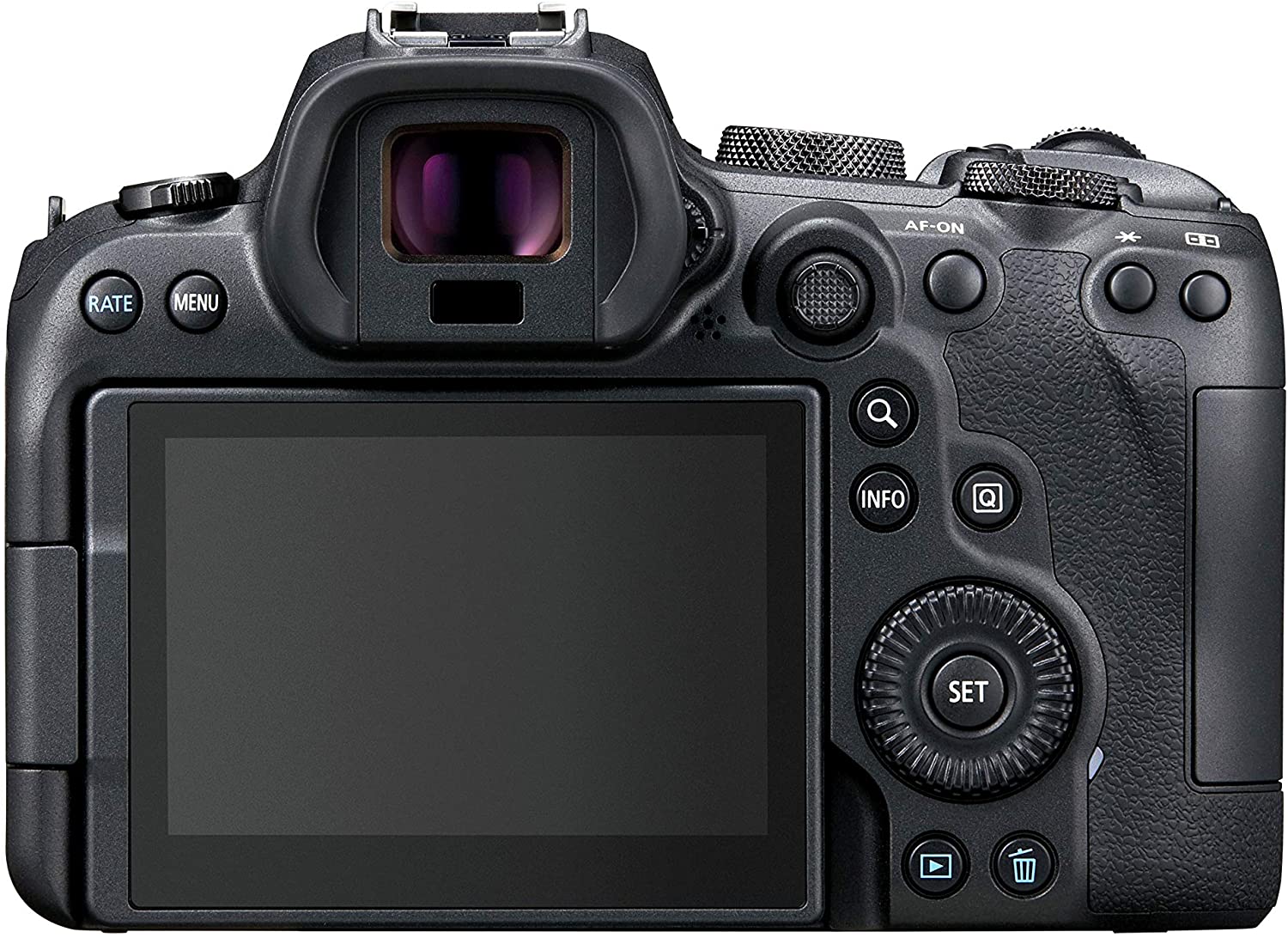
Another great option for the best enthusiast mirrorless camera is the Canon EOS R6.
One of its biggest draws is that it offers similar capabilities as the Sony a7 IV, but with a smaller price tag. It's also a true hybrid camera, so if you want excellent photo and video performance, it's a solid choice - especially if you're already in the Canon ecosystem.
Aside from the breathtaking autofocus system, the EOS R6 offers top-of-the-line burst shooting, a 5-axis stabilization system, and is compatible with Canon's impressive and ever-growing lineup of RF lenses.
While it is a good performer on the video front, overheating limitations pose a bit of a problem. Rolling shutter is also an issue, and for some, the 20.1-megapixel resolution will be a turn-off. However, despite a few flaws, this is a fantastic option for enthusiast shooters.
Learn more in our Canon EOS R6 review.
Nikon Z6 II
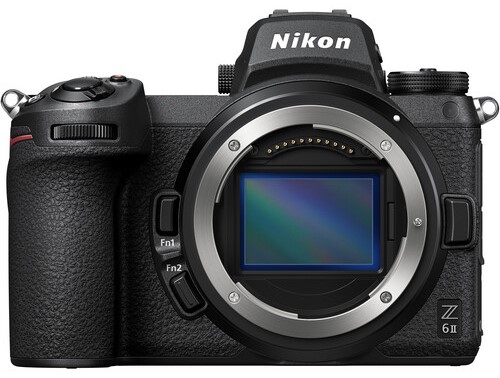
Specs and Features
- 24.5MP full-frame BSI-CMOS sensor
- Dual Expeed 6 image processor
- 273-point Phase Detection AF system
- EVF with 3.69m-dots
- 3.2” tiltable touchscreen with 2.1m-dots
- 14fps burst mode
- 4K video at 30p, 25p, and 24p; Full HD video at 60p, 50p, 30p, 25p, and 24p
- Built-in WiFi and Bluetooth
- Approximately 410-shot battery life
Pros and Cons
- Pros
- Terrific video and image quality
- Two SD card slots
- Excellent ergonomics
- Cons
- AF occasionally “hunts”
- Highest quality video compressions require an external recorder
- Intricate menu system
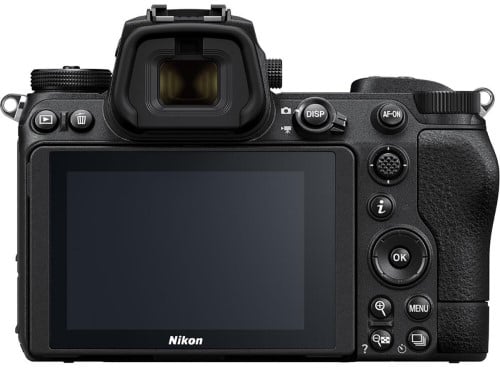
The Nikon Z6 II is a powerful hybrid mirrorless camera launched in October 2020 to much anticipation. It boasts a 24.5-megapixel full-frame CMOS sensor and two Expeed 6 image processors. The dual processors seriously increase the camera's speed and will improve your overall productivity when in the field.
One fantastic feature of this camera is its autofocus. It covers approximately 90% of the camera's sensor, has 273 selectable focus points, and works equally well in video recording as it does during still shooting. Moreover, the subject tracking in C-AF is superb and is ideal for portrait and wildlife photographers who shoot moving subjects.
On top of that, its low-light performance is far superior to the original Nikon Z6. This improvement is due to the camera’s 5-axis image stabilization technology and wide ISO range. Low-light autofocus is also much more accurate and responsive than its predecessor.
More awesome features of the Z6 II are its fast continuous shooting, dual memory card slots, and a vertical video mode. The 14fps max continuous shooting makes it an excellent camera for sports and action photography. And the vertical video mode is useful for creating content for social media platforms like Instagram and TikTok.
Learn more in our Nikon Z6 II review.
Panasonic Lumix S5

Specs and Features
- 24.2MP full-frame CMOS sensor
- Venus Engine image processor
- 225-point Depth from Defocus AF system
- EVF with 2.36m-dots
- 3” fully-articulated touchscreen with 1.84m-dots
- 7fps burst mode
- 4K video at 60p, 50p, 30p, 25p, and 24p; Full HD video at 60p, 50p, 30p, 25p, and 24p
- Built-in WiFi and Bluetooth
- Approximately 440-shot battery life
Pros and Cons
- Pros
- Great in-body image stabilization
- Unique creative photo modes
- Dual memory card slots
- Cons
- 30-minute video recording limit
- Slow burst shooting
- Awkwardly located AF-On button

The Panasonic Lumix S5 is an advanced yet affordable mirrorless camera that debuted in September 2020. It has the same 24.2-megapixel full-frame CMOS sensor and Venus Engine image processor as its cousin, the Panasonic S1, but is significantly smaller and less expensive.
It is aimed at both photographers and videographers, and new and improved features help to improve the quality of both photos and videos. For starters, it has several unique photo modes, such as the 96MP multi-shot mode. This mode captures multiple frames and compiles them together into one ultra-high-resolution image.
Alternatively, videographers and filmmakers love the video quality of the oversampled 4K/30p footage. Thanks to in-camera image stabilization, it has terrific sharpness and very little camera shake. Also, you can capture 4K/60p clips with this camera. They are ideal for slowing down in post-production and playing back in slow-motion.
Two more great features of the Panasonic Lumix S5 are its weather-sealed body and long-lasting battery. One group, in particular, who loves working with this camera is event photographers. It’s perfect for weddings, concerts, and more!
Learn more in our Panasonic S5 review.
Best Camera for Professional Photography
Nikon Z9
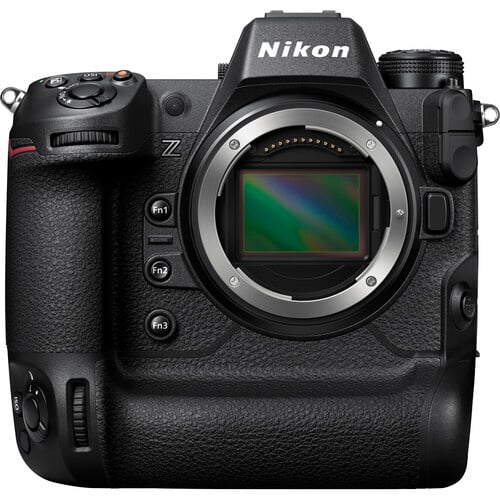
Specs and Features
- 45.7-megapixel full frame stacked CMOS sensor
- EXPEED 7 image processor
- 493 phase-detect autofocus points
- 3.69M dot OLED EVF with reduced lag and greater brightness
- 2.1M dot rear LCD with multi-directional tilt
- 30 fps JPEG shooting
- 20 fps Raw shooting (for over 1000 compressed Raws)
- 120 fps JPEG shooting at 11MP resolution
- 8K/30p capture and 4K/60p-from-8K, with ProRes 422 HQ option
- 8K/60p in 12-bit N-Raw with 4.1K ProRes RAW option
- Internal 10-bit N-Log and HLG capture
- 5-axis sensor shift in-body image stabilization
- Twin CFexpress Type B card slots
- Approximately 700-770-shot battery life
Pros and Cons
- Pros
- Excellent high-resolution sensor
- 120fps continuous shooting
- 8K video at 60p
- Cons
- Absolutely enormous body
- Paltry lens options compared to rival Sony and Canon models
- Rear LCD isn't fully articulating
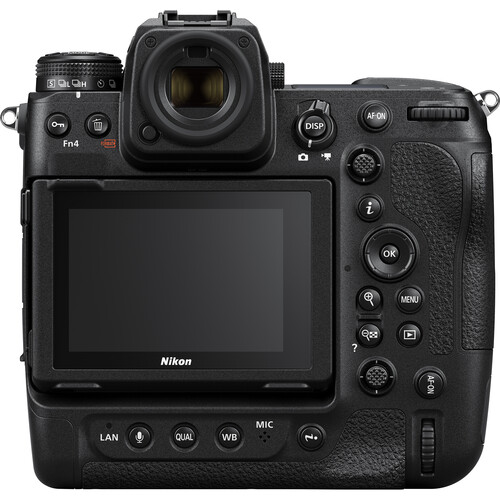
While it took a while for the Nikon Z9 to debut, it has certainly made a splash in terms of its photography and video capabilities.
Since there's no mechanical shutter, you get up to 120fps continuous shooting, which, along with the 1/32,000 top shutter speed makes this the ideal choice for sports and wildlife photographers.
But this isn't just the best professional camera for those reasons - it has an incredible autofocus system that's powered by Deep Learning AF. This means the Z9 has unsurpassed autofocus capabilities, and can recognize everything from human eyes and faces to cars, motorcycles, and animal features.
On top of that, the Z9 offers 8K 60p video. It's also capable of 8K 30p video with a two-hour time limit.
It's also the cheapest of the three flagship professional cameras - the Canon EOS R3 and Sony a1 being the other two.
Canon EOS R3
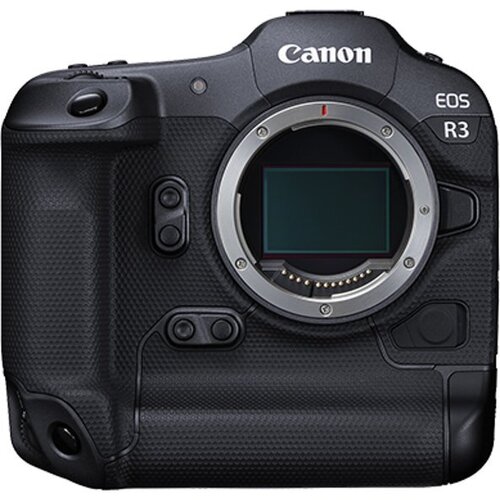
Specs and Features
- 24.1-megapixel full frame stacked CMOS sensor
- Digic X image processor
- 4,779-point autofocus system (3,969 points for videos)
- 0.5-inch EVF with 5.76-million dots
- 4.15-million dot 3.2-inch vari-angle touchscreen
- 12fps burst shooting (mechanical shutter), 30fps burst shooting (electronic shutter)
- 6K up to 60p, 4K up to 120p, 1080p up to 60p
- 5-axis in-body image stabilization (up to 8 stops with certain lenses)
- 1 SD/SDHC/SDXC card slot and 1 CFexpress Type B card slot
- Approximately 620-shot battery life
Pros and Cons
- Pros
- Excellent video capabilities
- Superb autofocus
- No blackout
- Cons
- Low resolution compared to competitors
- No 8K video
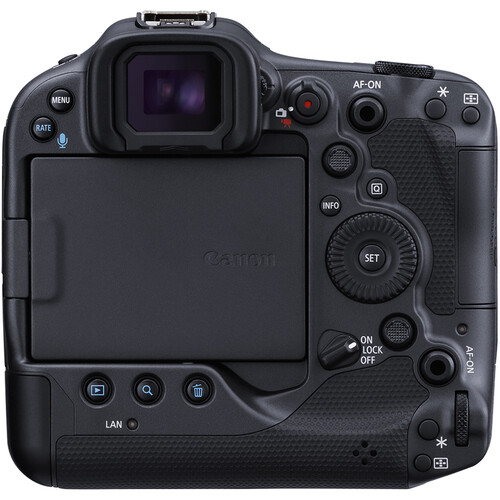
Another pick for the best professional camera for photography is the Canon EOS R3.
If it looks like a 1D X Mark III, you wouldn't be far off. This is a big camera, but it has the modern functionalities of a high-end mirrorless camera.
While the 24.1-megapixel sensor resolution seems paltry compared to other options at this price point, its stacked design gives you plenty of firepower. In fact, the EOS R3 is capable of 30fps burst shooting in RAW.
Complementing the lightning-quick burst shooting is the autofocus system, which is capable of eye control - just look at the AF point you want and the camera will select it.
Sure, the R3 doesn't have 8K video, but it does offer up to 6K at 60p with internal recording. But, this is not intended to be a video camera - it is a photo-first rig, and it shows. That's why it's on our list for the best camera for photography!
Sony a1
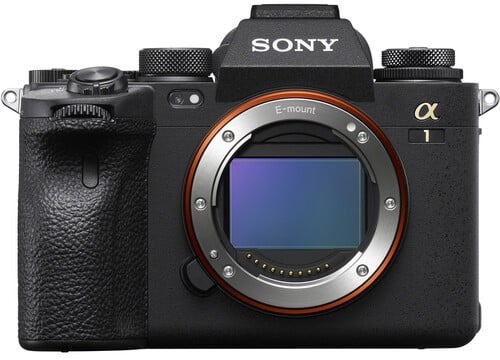
Specs and Features
- 50MP full-frame stacked CMOS sensor
- Dual Bionz XR image processor
- 759-point Phase Detection AF system
- EVF with 9.44m-dots
- 3” tiltable touchscreen with 1.44m-dots
- 30fps burst mode
- 8K video at 30p, 25p, and 24p;4K video at 120p, 100p, 60p, 50p, 30p, and 24p; Full HD video at 120p, 100p, 60p, 50p, 30p, 25p, and 24p
- Built-in WiFi and Bluetooth
- Approximately 530-shot battery life
Pros and Cons
- Pros
- Exquisite 6K video
- Best-in-class AF
- Super-fast continuous shooting
- Cons
- Expensive
- EVF resolution drops slightly when using C-AF
- Top burst shooting speeds only work with some lenses
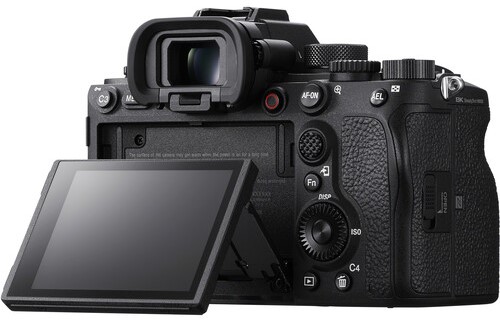
The Sony Alpha 1 was released in March 2021 and is the most powerful Sony digital camera ever. It is their flagship product and boasts a 50-megapixel full-frame CMOS sensor and dual Bionz XR image processing engines. The trio works together seamlessly and delivers jaw-dropping results.
For photographers, the 50MP image sensor can take pictures with a max resolution of 8640 x 5760 pixels. That is absolutely gigantic and means that your photos will never suffer a drop-off in image quality, even when enlarged for magazines, posters, or billboards. Furthermore, the 30 fps continuous shooting makes the a1 a great camera for sports, wildlife, and adventure photography.
As a video camera, the standout feature is the 8K video. And while the file sizes of these clips are huge, the quality is off-the-charts. Luckily, the camera also has two memory card slots so that you can record more footage. AF tracking during video recording is also industry-leading.
Lastly, this camera has many professional connection ports, including inputs for a full-size HDMI, a microphone, headphones, and more!
Learn more in our Sony a1 review.
Canon EOS R5
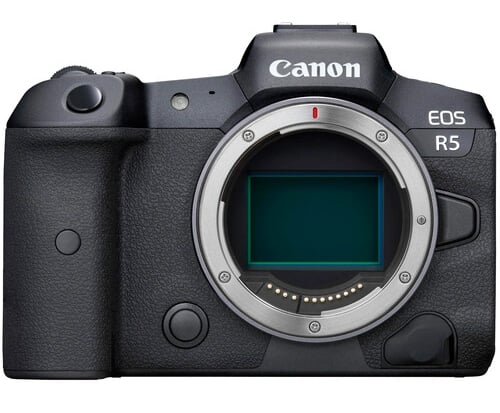
Specs and Features
- 45MP full-frame CMOS sensor
- Digic X image processor
- 5,940-point Dual-Pixel II AF system
- EVF with 2.36m-dots
- 3.2” fully-articulated touchscreen with 2.1m-dots
- 20fps burst mode
- 4K video at 30p and 24p;4K video at 120p, 60p, 30p, and 24p
- Built-in WiFi and Bluetooth
- Approximately 320-shot battery life
Pros and Cons
- Pros
- 8K video and Canon EOS Cinema features
- Outstanding AF performance
- Amazing in-body image stabilization
- Cons
- Occasional overheating during extended high-resolution video recording
- You can turn off the noise reduction in RAW files
- Limited customization
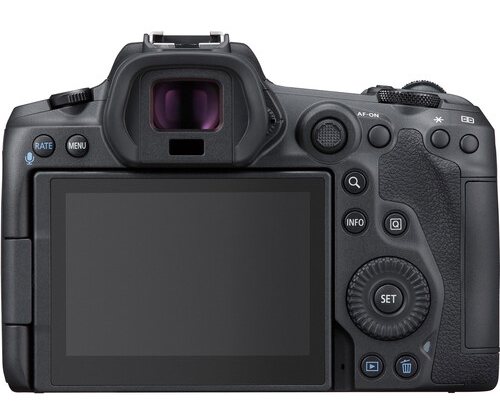
Another excellent camera for professionals is the Canon EOS R5. It’s Canon's flagship mirrorless camera for consumers and a direct competitor of the Sony a1. Canon launched it in July 2020, and it has a high-resolution 45-megapixel full-frame sensor and a Digic X image processor.
My favorite thing about this camera is its two unique operating systems—one for photography and one for video shooting. Moreover, the EOS R5 has a nifty new toggle switch that allows you to quickly and easily switch between the two. Also, you can customize the buttons and settings of the two operating systems independently.
The camera functions like a Canon EOS cinema camera in video mode. This means you have tons of professional features such as 8K video, 4K/120p slow-motion video, and advanced codecs. RAW, 10-bit, C-log, and HDR PQ are only a few of the compression formats.
One last amazing feature of the EOS R5 is the Dual Pixel autofocus. It covers 100% of the full-frame sensor and has excellent subject tracking technology. It can even locate and track the faces and eyes of animals!
Learn more in our Canon EOS R5 review.
We Recommend
Best Cameras for Beginners 2021
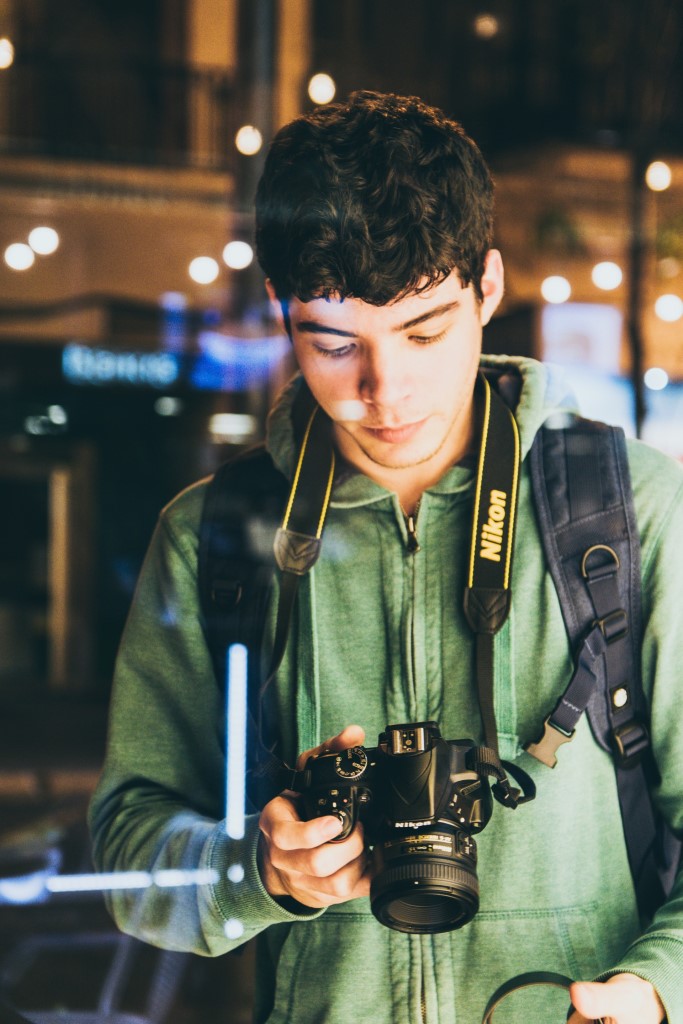
Photo by Pablo Guerrero on Unsplash
If you, like me, are going crazy sitting at home then maybe it’s time to take up a new hobby. And if you, like me, love photography then maybe you need a new camera to help you start practicing that new hobby.
Thankfully, it’s 2021, which means there are plenty of inexpensive cameras available for beginners that still have all of the features you could ever need.
So, I’ve compiled a list of the “best cameras for beginners 2021,” which features the best cheap DSLRS and the best cheap mirrorless cameras that have the newest features. There’s no need to break the bank if you’re just starting out.
Sony a6000
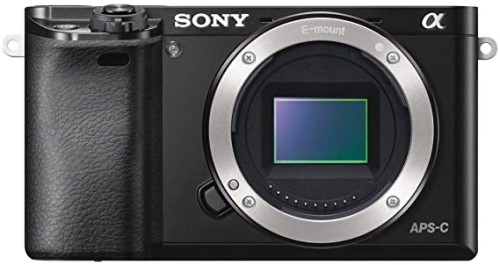
I’ve written about the Sony a6000 plenty of times before because I genuinely think it is one of the best cameras for beginners… so much so that I’m placing it as my number one choice on my “best cameras for beginners 2021” article.
The Sony a6000 is just over 6 years old, which means it’s one of the most inexpensive cameras on our list, but it still features a 24.3MP sensor and compatibility with a huge range of Sony lenses.
It’s one of the best DSLRs for beginners because it does lack some features many cameras in 2021 come with, like 4K video, but it comes with a built-in electronic viewfinder and a tilting screen so you can get used to the feel of a Sony.
If you’re shopping for inexpensive cameras, like the Sony a6000, then you should be doing so on Adorama. You can find the Sony a6000 for $550 there.
Recommended Photography Reading
- National Geographic Photo Basics: The Ultimate Beginner's Guide to Great Photography
- Photography: The Definitive Visual History
- Read This if You Want to Take Great Photographs
Nikon D3500
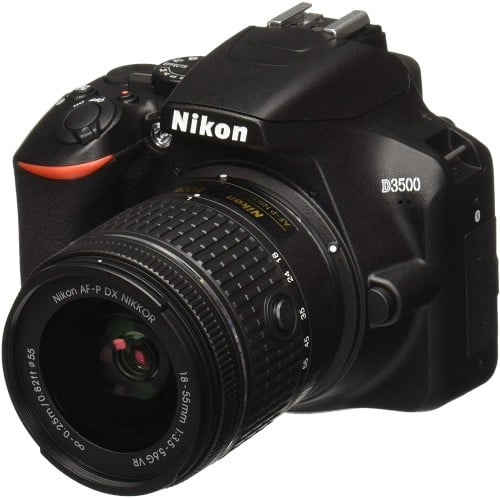
I tried to choose a wide range of manufacturers for this “best cameras for beginners 2021” list since I know some people really prefer the feel of a camera their parents used to use way back when. However, I would have included the Nikon D3500 on this list regardless because it is dirt cheap.
The Nikon D3500 is the best entry-level DSLR on this list because of its user-friendly layout. So, if you’ve never shot with a DSLR before, or if you’re trying to transition to Nikon from another brand, you won’t have any trouble figuring this camera out.
The Nikon D3500 comes with a “Guide” shooting mode that essentially walks you through how to use the camera.
Plus, the image quality on this camera is sharp.
You can purchase this best entry-level DSLR, with a nice NIKKOR lens, for $400.
Canon SL3
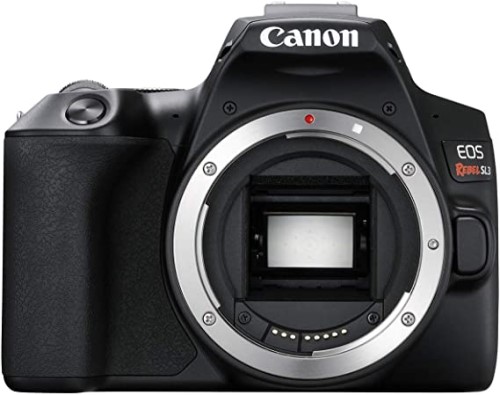
If you’re a photographer looking to break into videography, then this is the best entry-level DSLR for you because it is the first budget DSLR that can shoot 4K.
It also features a 3.5-mm microphone jack so you can capture better audio.
The screen is fully articulated and the camera feels balanced despite the fact that it weighs under 1 lb.
However, my favorite thing about The Canon SL3 is that, unlike some of the other cameras on this “best cameras for beginners 2021” list, it features an incredible battery life of 1,550 shots.
The Canon EOS Rebel SL3 is available on Adorama for $550.
Olympus OM-D E-M10 Mark III
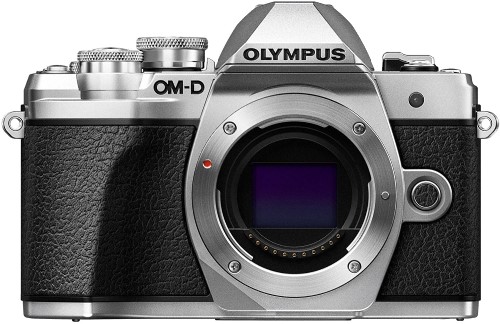
The Olympus OM-D E-M10 Mark III is the first best entry-level mirrorless camera on our list. You’ll love its retro look and feel, its tilting touchscreen and its electronic viewfinder with a resolution high enough to compete with a camera of a much higher price point.
It shoots 4K video and 8.6fps in burst mode, making it one of the most versatile of our inexpensive cameras.
It also features in-body image stabilization.
The Olympus OM-D E-M10 MARK III is currently on sale for $450.
Nikon D5600
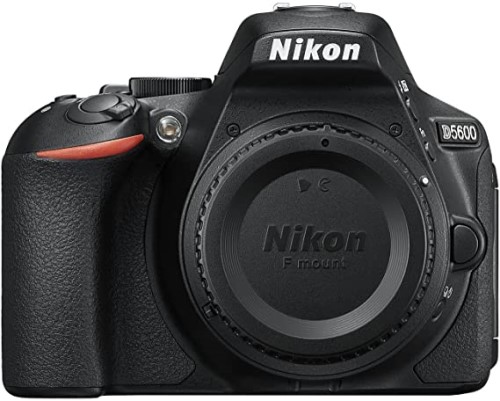
The Nikon D5600 is one of our top cameras for beginners if you suspect you’re going to stick with photography, because this camera will allow you to grow with it.
It comes with an advanced autofocus system and can shoot in low-light scenarios.
Unlike the Nikon D3500, there is no interactive “Guide” mode, so again, this DSLR may be better for beginners who are at least a little tech-savvy.
It can’t shoot 4K video, but it does shoot Full HD video, and you can shoot that video on a 3.2” vari-angle touchscreen, which is better than most of the other LCDs on this “best cameras for beginners 2021” list.
The Nikon D5600 is available for $600 right now.
Panasonic Lumix GX85
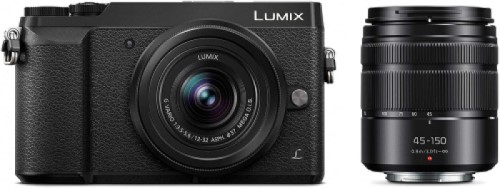
This is another option for beginner photographers who may want to start getting into videography.
The Panasonic Lumix GX85 is the best entry-level mirrorless camera for videographers due to its 4K shooting capabilities, its impressive 2.76M-dot electronic viewfinder, and its in-body image stabilization.
The one thing I don’t love about this camera is that it doesn’t feature microphone or headphone inputs, so ideally you would be using this mirrorless camera to shoot video in a quieter space, like your office instead of a crowded subway. However, it also isn’t weather-sealed, so you’d ideally not be traveling with it a lot anyways.
This camera isn’t just for videographers, though, because it shoots impressive photographs, can take 6fps in burst mode with AF, and weighs under 1 lb, so you can lug it around with you all day comfortably.
The Panasonic Lumix GX85 is currently half off on Adorama for $500.
Canon EOS Rebel T7i
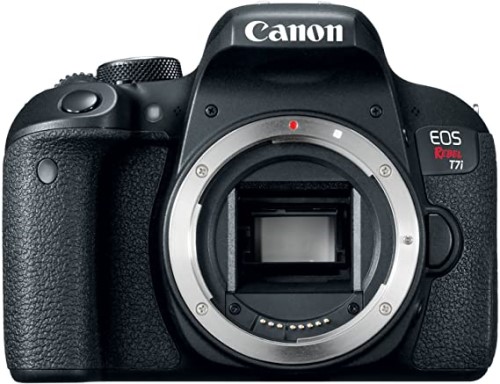
Canon’s EOS Rebel range has basically had the market for the best DSLRs for beginners for years now, and the T7i is no different.
This camera comes with a 24MP sensor, built-in Wi-Fi and can shoot Full HD video.
But, what really draws people to the Canon EOS Rebel line is the fact that the Auto mode is the best around. You can basically set the camera to Auto and it’ll perform excellently by itself. You can also use the rear screen to take all of your photos like you would with a smartphone and its performance remains the same.
While this isn’t the cheapest camera on our “best cameras for beginners 2021” list, it is the best option for an older photographer who mostly wants to point and shoot and we think it’s worth the extra money.
You can purchase a Canon EOS Rebel t7i for $700.
Fujifilm X-T200
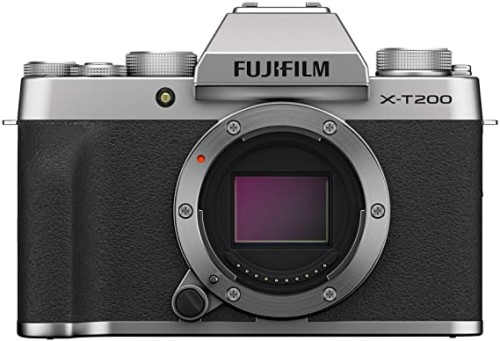
When shopping for the best mirrorless cameras for beginners, everyone starts with the Fujifilm X-T200.
It shoots 4K video, features a pretty large 3.5” vari-angle touchscreen, and will also allow you to grow with the camera, so you won’t need to upgrade for quite a few years.
This Fujifilm also dropped in February, so since most cameras have been cancelled or postponed due to the coronavirus pandemic, this may be one of the all-time best cameras for beginners 2021.
The Fujifilm X-T200 is available for $700.
Pentax K-70
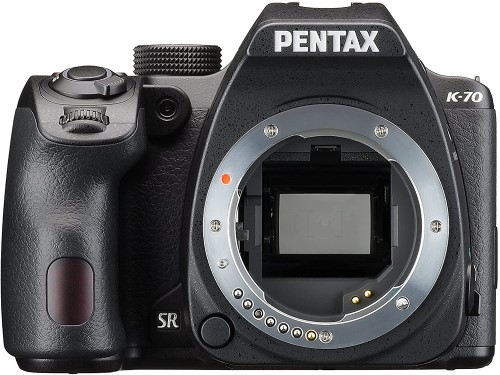
Due to the fact that Pentax isn’t as large as Canon or Sony, I don’t regularly get to write about Pentax cameras, but Pentax made the Pentax K-70 one of the best cameras for beginners 2021 due to its cheap price, its “Shake Reduction” in-body image stabilization, and its impressive 24MP sensor.
The Pentax K-70 also has an ISO range of 100-102,400, which is definitely the best low-light shooting of any of our other top cameras for beginners.
A good way to look at the Pentax K-70 is as an almost complete opposite to the Sony a6000, because the Pentax K-70 will allow you to grow with the camera and learn about manually adjusting autofocus settings whereas the Sony a6000 is truly for absolute beginners.
You can buy the Pentax K-70 for $650.
Nikon Z50
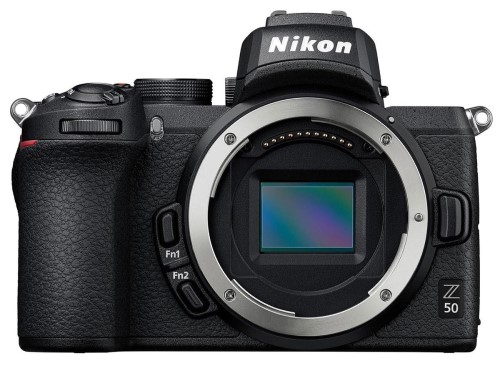
The Nikon Z50 is one of the best entry-level mirrorless cameras because Nikon specifically designed it for people who don’t consider themselves photographers.
But, it still creates incredible photos. It can shoot 4K video, features a tiltable touchscreen, and can shoot 11fps in burst mode.
Since the Nikon Z50 is one of the best cameras for beginners 2021, it is currently more expensive because it just came out. However, we suspect that with the incoming economic recession, this camera will be much cheaper in just a few months time.
The Nikon Z50 is the most expensive of our best cameras for beginners at $850.
We Recommend
Best Cameras for Vlogging

Photo by CoWomen on Unsplash
Vlogging is more than it used to be. Gone are the days where vloggers were teenagers sitting in darkly lit bedrooms complaining about their history teacher. In are the days where vloggers are technical experts in their field.
Vlogging is, in many ways, pertinent for photographers that want to grow their businesses nowadays, but if you’re going to begin vlogging, you’ll want to ensure you don’t look like a teenager in a badly lit bedroom. You’ll need the proper equipment, and that starts with a solid camera.
Here is our list of the best cameras for vlogging in 2019.
Sony a6400
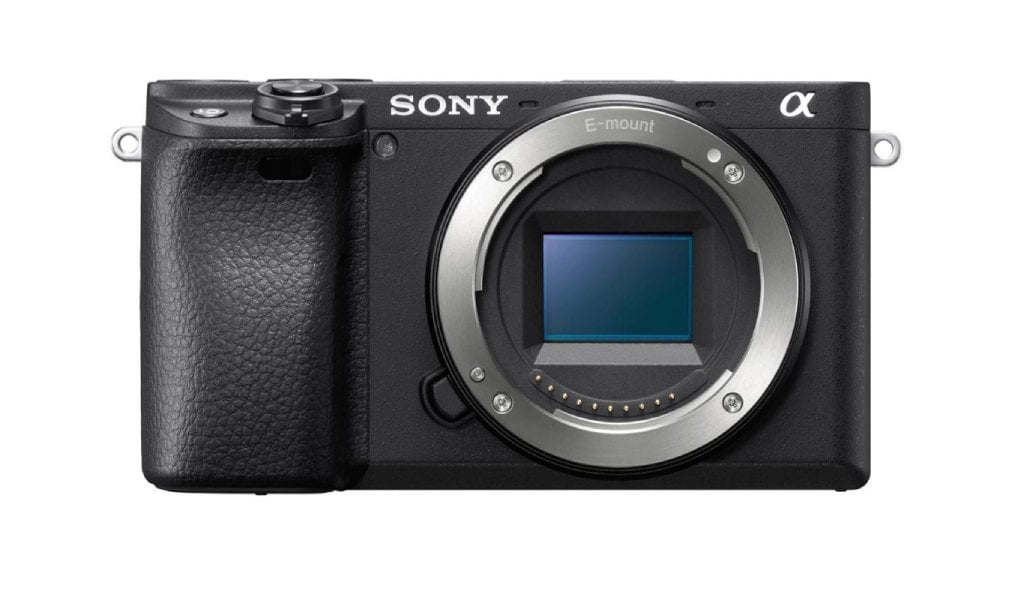
The Sony a6400 features 4K video, a front-facing screen (which is so incredibly useful, once you have a front-facing screen you’ll never go back), and and an eye-AF autofocus system to keep things nice and sharp. All of which makes it one of the best cameras for vlogging.
Huge shout out to DSI Pictures for the video above that puts the Sony a6400 through its paces.

Pros of Sony a6400:
- Insane image resolution and quality
- 4K video
- Crazy good AF system
Cons of Sony a6400:
- Not very aesthetically pleasing
- Can’t see all of the flip-up screen if you have accessories mounted to the hot-shoe
You can purchase the Sony a6400 for $900 on Adorama.

Quick Tip: Get around the flip-up screen issue with the Sony a6400 by using a field monitor.
Having a larger, brighter, more resolute screen like the Ikan Delta DH7-V2gives you a crisp view of what the camera sees, and with the 178-degree viewing angle, you get off-axis viewing for multiple people without color shifts.
You can attach the monitor to a cage, an arm, and various other attachments to put the screen right in your field of vision for an unimpeded view.

Monitors like this allow you to load 3D luts and custom cube files while also providing a huge set of tools for video making, including a histogram, clip guides, false color, peaking, and more. This monitor is also available in a kit, which adds two batteries, a dual battery charger, a power adapter, a D-Tap power cable, two HDMI cables, a ball head with shoe mount, and a soft case to carry it all!
Panasonic GH5

The Panasonic Lumix GH5 is one of my favorite vlogging cameras because it pairs in-body stabilization with 4K video at 60/50p and a 20.3MP sensor.
What I’m saying is, this is definitely the vlogging camera for the adventurer that needs a small body with a killer stabilization system.
The Panasonic GH5, as showcased by Colin Ross above, should definitely be considered a professional-level vlogging camera. It’s not for the faint of heart, but once you get familiar with this camera, the quality of video you can create is off the charts.

Pros of the Panasonic GH5:
- Crazy video specs with 4K compatibility
- Amazing stabilization system
- Is compatible with tons of lenses
Cons of the Panasonic GH5:
- Ergonomics aren’t the best
- Isn’t great at shooting with low light
- 2x crop factor
You can purchase the Panasonic GH5 for $1,300 at Adorama.
Learn More:
Canon EOS 90D

The Canon EOS 90D also features 4K video at 30p, with an incredible screen that faces forward. It also features mic input for that all-important shotgun mic you need to get high-quality audio.
There isn’t anything to hate about the uncropped 4K video of the Canon EOS 90D, either, and Dan Watsonproves it with this video test.
Besides, the 90D is compatible with dozens and dozens of EF and EF-S lenses, so there’s virtually untapped creative potential with wide-angle, standard, macro, and telephoto lenses.

Pros of Canon EOS 90D:
- Fully articulated screen
- Uncropped 4K/30p video capabilities
- Incredible sensor
Cons of Canon EOS 90D:
- Doesn’t feature image stabilization
You can purchase the Canon EOS 90D for $1,200 at Adorama.
Learn More:
We Recommend
Best Lenses for Landscape Photography
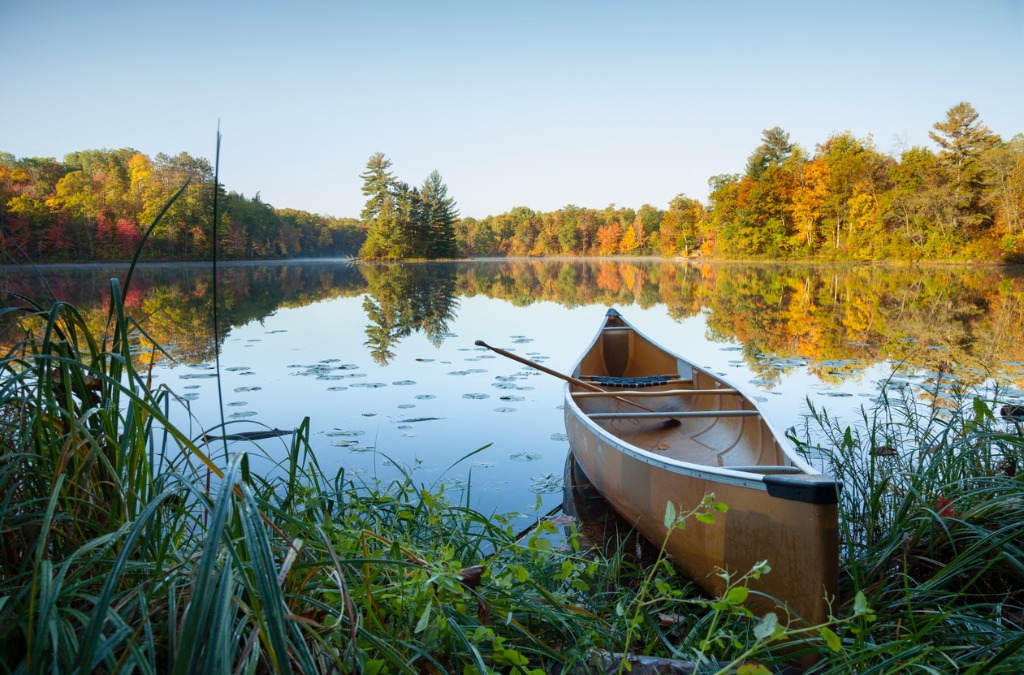
photo byWillard via iStock
You have been creating great-looking landscape photography for a while, but maybe you’re considering purchasing another lens to help further satisfy your creative ideas.
So that begs the question, what are the best lenses for landscape photography?
There are many different choices you can go with. That goes for brands, focal lengths, price points, and many other factors.
To help you narrow the field of possibilities, we’ve devised this guide to the best lenses for landscape photography. Let’s get started!
Table of Contents
- Clearing Up Misconceptions
- Nifty Fifty
- Ultra-Wide-Angle Zoom
- All-In-One Lens
- Other Recommended Photography Gear
Clearing Up Misconceptions
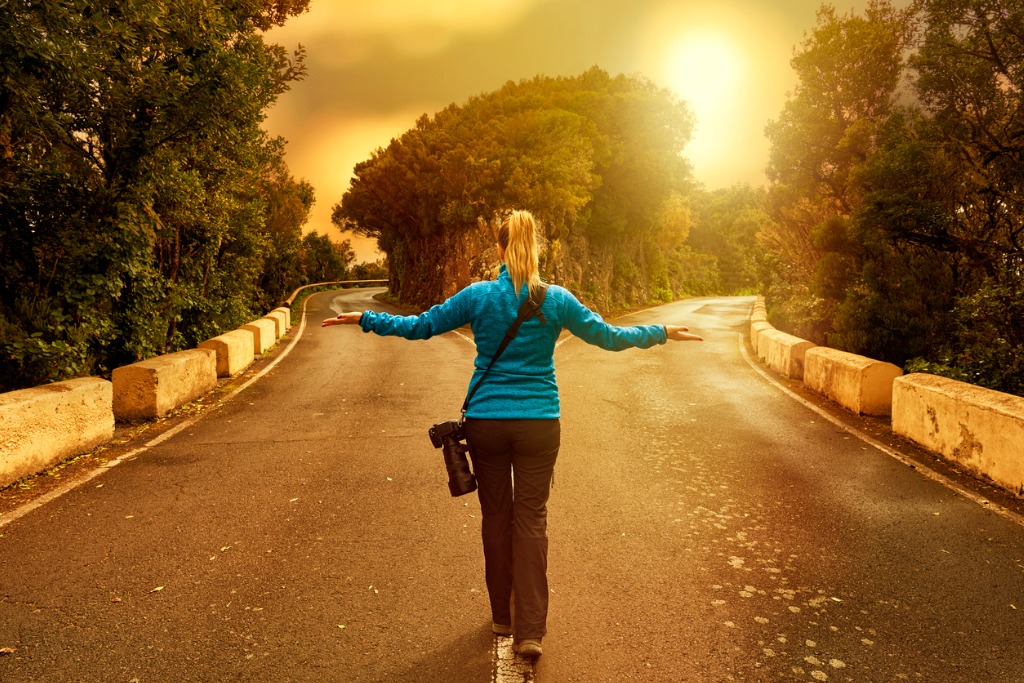
photo bystock_colors via iStock
Before I tell you some of my suggestions of what lenses are best for landscape photography, let’s clear up a few misconceptions concerning lenses and landscapes.
- Misconception #1: Wider is always better. While I love wide-angle and ultra-wide-angle lenses for a good portion of my own landscape photography, the best camera lenses for landscape photography can fall into any of the focal length ranges. In fact, I find my Nifty Fifty is a great choice for many real-world landscape situations. Telephoto lenses are also excellent for some landscape subjects.
- Misconception #2: Only use OEM lenses. OEM (original equipment manufacturer) lenses are usually excellent lenses. The days of the lack-luster, substandard 3rd party manufacturer lenses are long gone, however. Some of the best lenses for landscape photography are coming from both the camera makers themselves and from independent companies.
- Misconception #3: Use the smallest aperture. Depth of field is affected by focal length and focusing distance, as well as lens aperture, plus there are optical considerations such as hyperfocal distance and diffraction limitation to factor into our thoughts. And deep depth of field is simply one technique, selective focus can also be very effective for landscapes.
Nifty Fifty
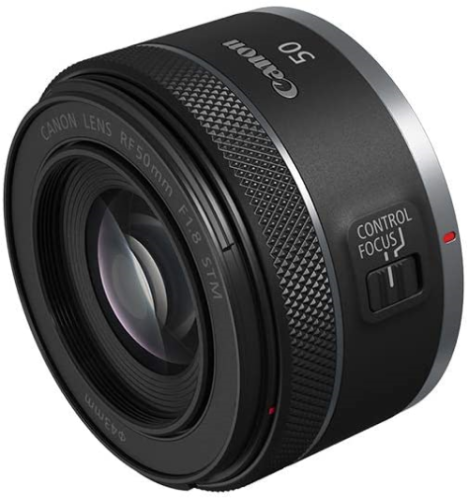
One of the best lenses for landscape photography is the standard lens for whatever format you’re shooting. In Full Frame 35mm format, that lens is the 50 to 55mm lens, affectionately nicknamed the Nifty Fifty. APC-C would use 35mm, MFT (Micro 4/3rds) has “normal” lenses of around 25mm.
If you’re using a Full Frame Canon mirrorless R Series camera, the Nifty Fifty of choice would be the Canon RF 50mm f/1.8 STM lens. There are several things that make this lens an excellent choice as one of the best lenses for landscape photography.
It is compact and lightweight, blending perfectly with the new Canon R Series of mirrorless cameras. This gives it great handling in the field. It has a fast aperture at f/1.8. With the R camera's in-body stabilization feature, good technique, and this lens, low light conditions are easily handled. Selective focus is simple to accomplish as well.
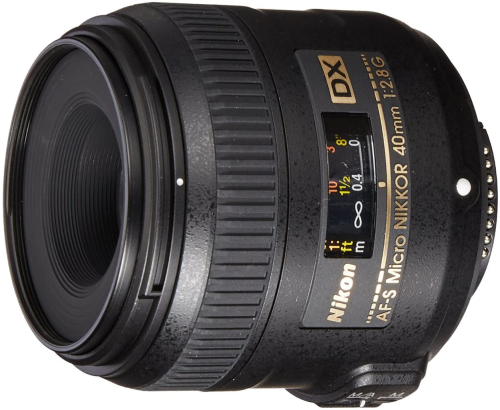
A huge reason I list this first as one of the best lenses for landscape photography is that the standard focal length field of view is close to what our eyes see. It has the field of view and the apparent perspective that lends itself well to capturing landscape images.
Most standard lenses can also focus quite close, so we can add in some of these types of views as we’re out capturing landscapes. Since many macro lenses are a normal focal length, we could choose one of those as one of the best lenses for landscape photography. The APS-C format Nikon AF-S DX Micro-Nikkor 40mm f/2.8 lens is a good example. The 40mm focal length corresponds to a 60mm lens in Full Frame format, so it’s still in the normal range.
Learn More:
Ultra-Wide-Angle Zoom
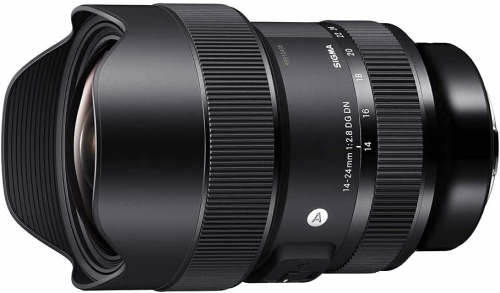
Yes, I know I just got through clearing up a misconception about this type of lens, but what I meant is that this isn’t the ONLY choice as best lenses for landscape photography, simply one of the options.
And it’s a really good option. A wide-angle lens or an ultra-wide lens is awesome for certain types of scenes in that we can capture such a sweeping view of any vista in front of us. Another function of wide and ultra-wide lenses is that we can get really close to things without losing the view of what it is. Those images with flowers or a rock formation in clear view in the foreground and the landscape in focus behind it are made possible by the optical characteristics of ultra-wide-angle lenses.
I like the zoom versions of these lenses for the versatility provided. The optical quality of most ultra-wide to wide-angle zooms is amazing, and many are made with professional-level builds for extra ruggedness, and some of them have a pretty fast maximum aperture.
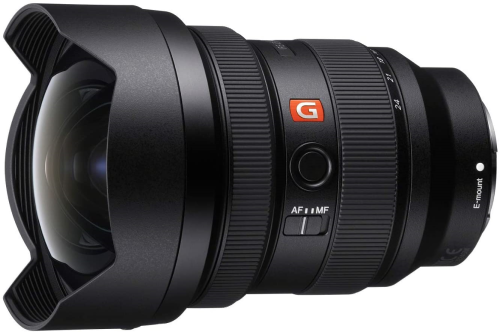
The Sony FE 12-24mm f/2.8 Master lens for Full Frame E-Series mount cameras is a great example and is often chosen as among the best lenses for landscape photography. At about 2/3rds the cost of comparable OEM lenses, check out the Sigma 14-24 f/2.8 DG DN Art lens.
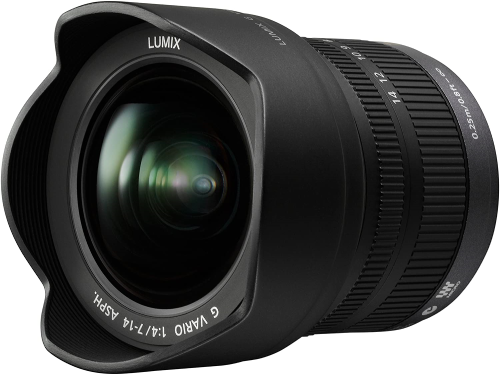
Similar lenses exist in APS-C and MFT cameras, you should consider lenses such as the APS-C format compatible Tokina ATX-i 11-20mm f/2.8 CF lens or the Panasonic Lumix G Vario 7-14mm f/4.0 lens. All are fantastic options for best lenses for landscape photography once we fully understand what makes them so.
All-In-One Lens
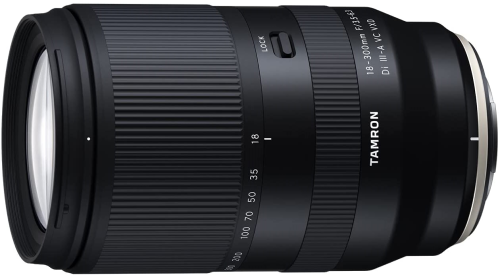
The all-in-one type of lens is what would probably work as the best lenses for landscape photography for many photographers. All-in-one is a style of lens that goes from wide-angle to fairly significant telephoto in one lens barrel.
Since telephoto lenses are usable for zeroing in on aspects of a scene or creating high levels of selective focus, lenses that have those focal lengths in it along with normal and wide-angle focal lengths can be very usable as best lenses for landscape photography.
Some examples include the APS-C format Fuji X-mount Tamron 18-300mm Di III-A VC f/3.5-6.3 VXD lens, the Full Frame format Nikon AF-S FX Nikkor 28-300mm/3.5-5.6G ED lens, or the MFT format Panasonic Lumix Vario 14-140mm f/3.5-5.6 lens.
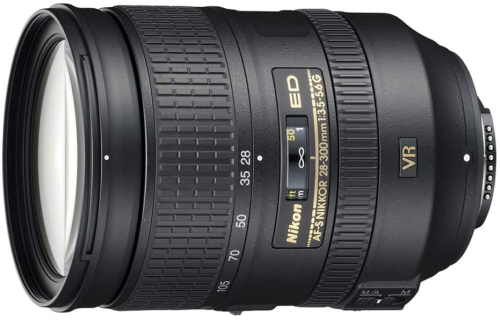
These may not be perfect choices as the best lenses for landscape photography because of their relatively slow maximum apertures, but they are super versatile if you want to carry around only one lens as you’re out capturing landscape images.
So, if you’re looking for what could be the best lenses for landscape photography for your own personal style, have a good look at the features, focal lengths, apertures, and prices of the lenses listed and adapt these recommendations to your camera format, lens mount, and personal photographic style.
Other Recommended Photography Gear
- ND Filter Kit
- Peak Design Travel Tripod
- Canon EOS R5
- Acratech GP-SS Ball Head
- Haida M10 Pro Filter Kit with Drop-In Circular Polarizer
- Peak Design Everyday Backpack V2
- Peak Design Leash Camera Strap
- Wireless Camera Remote
Learn More:
We Recommend
Cheap Digital Camera With Flip Screen: 3 Great Options
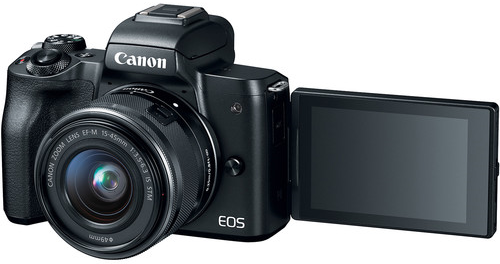
Canon EOS M50
If you’re interested in buying a cheap digital camera with flip screen, you came to the right place! In this article, I’ll share three of the most popular cheap digital cameras with flip screens currently on the market.
While there are many advantages of having a flip screen, the most significant benefit is seeing yourself. They help tremendously with composition and allow you to make sure you are always centered in the middle of the frame. For YouTubers and vloggers, in particular, flip up screens are a must on any video camera.
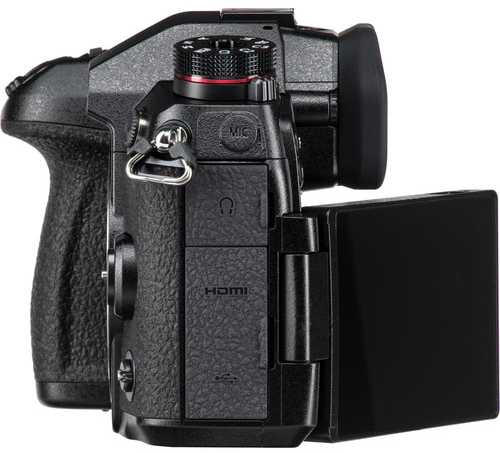
Panasonic Lumix DC-G9
One thing to keep in mind is that the word “cheap” is relative. What some may consider cheap, others may find expensive. Because of this, I have included three different cameras, all of which will be attractive to different budgets. While their prices vary, the one constant is that they all offer premium value to consumers.

One resource I recommend that always has tons of affordable digital cameras with flip screens in stock is MPB. They are a trustworthy and reliable online platform that sells used photo and video kit for unbeatable prices.
Furthermore, all of their cameras are carefully hand-inspected by experienced product specialists and backed by warranties, allowing you to make your purchases confidently and worry-free.
Now, let’s dive in and discover which cheap digital camera with flip screen is the perfect fit for you!
Table of Contents
- Cheap Digital Camera With Flip Screen: Nikon Z5
- Cheaper Digital Camera With Flip Screen: Panasonic Lumix DC-G9
- Cheapest Digital Camera With Flip Screen: Canon EOS M50
- Final Thoughts on Cheap Digital Cameras With Flip Screens
Cheap Digital Camera With Flip Screen: Nikon Z5
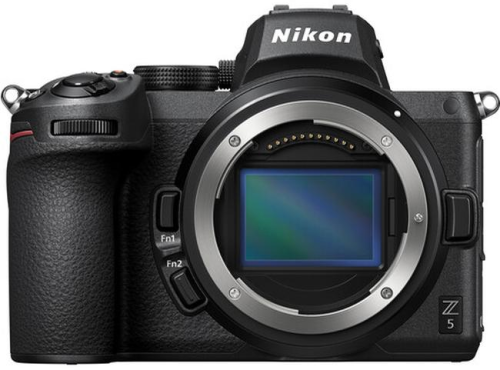
The Nikon Z5 is a powerful entry-level mirrorless camera stuffed to the brim with advanced features. It was first introduced in July 2020 and boasts a large 24.3 megapixel full-frame CMOS sensor and a speedy Expeed 6 image processor.
The pair work together to produce stunningly sharp photos and videos and make the Z5 one of the best valued full-frame cameras on the planet. Overall, the camera has a super similar look and feel to high-end Nikon cameras like the Nikon Z6 and Nikon Z7 but comes with a significantly lower price tag.
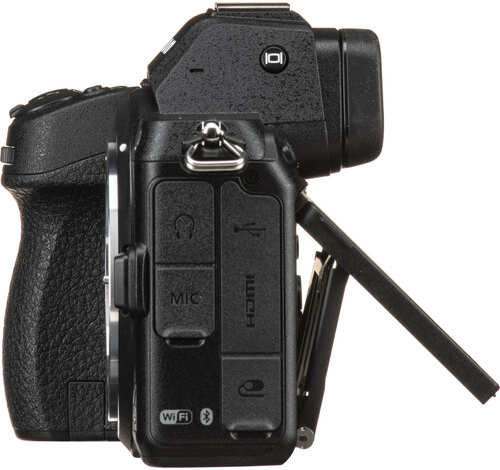
Where this camera shines brightest is as a stills camera. The high-resolution sensor consistently delivers sharp edge-to-edge images, even in low-light situations. Three factors contributing to its excellent low-light performance are its full-frame sensor, the 5-axis in-body image stabilization, and a wide ISO range.
Turning to its video capabilities, the first thing that stands out is that it records 4K movies at 30 fps and 1080p Full HD movies at 60 fps. While you will undoubtedly be tempted to always shoot in 4K, I actually prefer shooting in 1080p with the Z5. This is because, unfortunately, a heavy 1.7x crop factor is applied during 4K recording. More standout video features include two memory card slots, solid video autofocus, and microphone and headphone jacks.
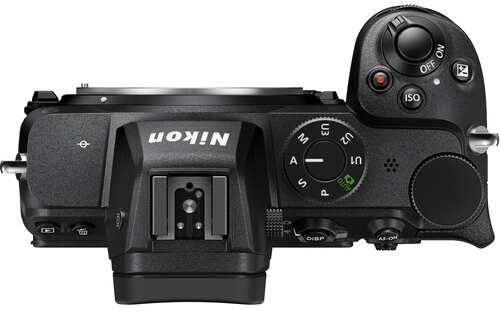
Here’s an in-depth look at the key features and specs of this cheap digital camera with flip screen:
- Camera Type: Mirrorless
- Sensor: 24.3MP Full-frame CMOS sensor
- ISO: 100 - 51,200 (expandable to 50 - 102,400)
- Lens Mount: Nikon Z Mount
- Speed: 4.5 fps
- Autofocus: 273 phase-detection points
- Video: 4K/30p & 1080p/60p
- Size/Weight: 134 x 101 x 70 mm / 675 grams (battery included)
- Battery Life: 470 shots
- Stabilization: Yes
- Touchscreen: Yes
Learn More:
Cheaper Digital Camera With Flip Screen: Panasonic Lumix DC-G9
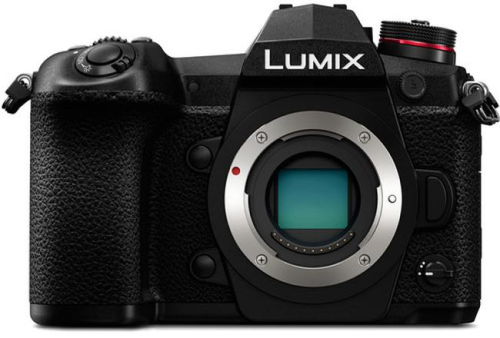
The Lumix DC-G9 is Panasonic's flagship photo-oriented camera. It hit stores in December 2017 and has been one of the most sold mirrorless cameras globally ever since. A 20.3 megapixel Four Thirds CMOS sensor and an upgraded Venus Engine image processor are at its heart.
The most impressive thing about this camera is its speed. Using its electronic shutter, it can fire off a breathtaking 20 frames per second during continuous shooting. Furthermore, even when using the live view and continuous autofocus, it still has a spectacular max burst rate of 9 fps.
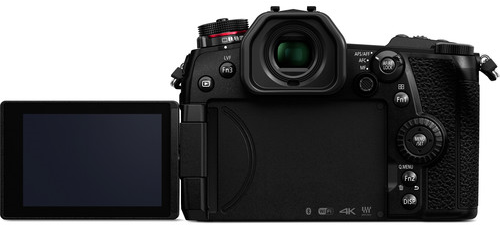
Also, it features some cool new photo modes unique to Panasonic cameras. The first two are 4K and 6K photo modes. They create still images using in-camera focus stacking technology and deliver beautiful results. Additionally, a new high-resolution setting for landscape photographers generates stunningly detailed 80MP pictures.
Even though it’s tailored more toward photography, the video specs of this cheap digital camera with flip screen are impressive. The uncropped 4K video footage is sharp, and the colors look great straight out of the camera. Moreover, the fully articulating touchscreen LCD is bright and has excellent resolution. With that said, video shooters who want an even more advanced video camera might want to opt for the Panasonic Lumix DC-GH5.
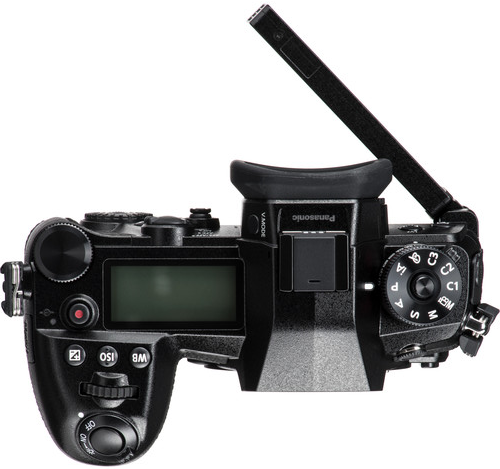
Here’s an in-depth look at the key features and specs of this cheap digital camera with flip screen:
- Camera Type: Mirrorless
- Sensor: 20.3MP Four Thirds CMOS sensor
- ISO: 200 - 25,600 (expandable to 100 - 25,600)
- Lens Mount: Micro Four Thirds
- Speed: 20.0 fps
- Autofocus: 225 contrast-detection points
- Video: 4K/60p & 1080p/60p
- Size/Weight: 137 x 97 x 92 mm / 658 grams (battery included)
- Battery Life: 400 shots
- Stabilization: Yes
- Touchscreen: Yes
Cheapest Digital Camera With Flip Screen: Canon EOS M50
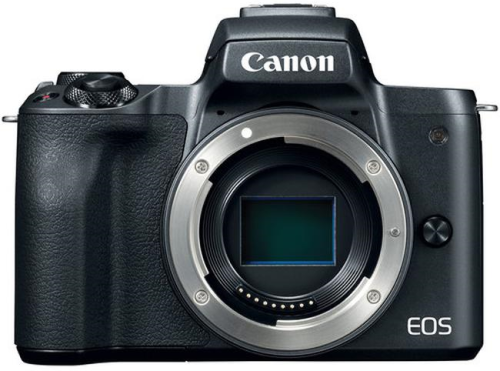
The Canon EOS M50 (sometimes called the Canon EOS Kiss M) is the predecessor to the incredibly popular EOS M50 II. While the second-generation model is a couple of years newer, the original came out in March 2018 and is a dynamic camera in its own right.
For starters, they share an identical high-resolution 24.1 megapixel APS-C CMOS sensor. On top of that, it pairs the sensor with a high-performing DIGIC 8 image processor that makes the camera super responsive. To increase your workflow even further, you can have the camera automatically transfer photos to your mobile device after every exposure.
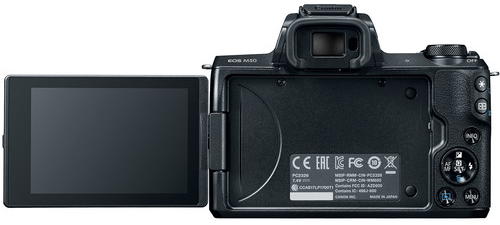
Another area this cheap digital camera with flip screen excels in is autofocus. The Canon EOS M50 uses a dual-pixel autofocus system boasting 143 phase-detection and 143 contrast-detection points. It is one of the best and most accurate AF systems I have ever tested, rivaling that of cameras like the Sony Alpha A6300 and the Fujifilm X-T200.
In terms of video, it is a terrific digital camera often sought after by YouTubers and Vloggers. Courtesy of its lightweight, compact body, travel vloggers especially can’t get enough of this camera. It has 4K capabilities, a fully-articulating rear touchscreen LCD, and bright and bold out-of-the-box colors. However, two things to note about shooting in 4K are that a 1.6x crop factor is applied and that the dual-pixel autofocus is disabled.
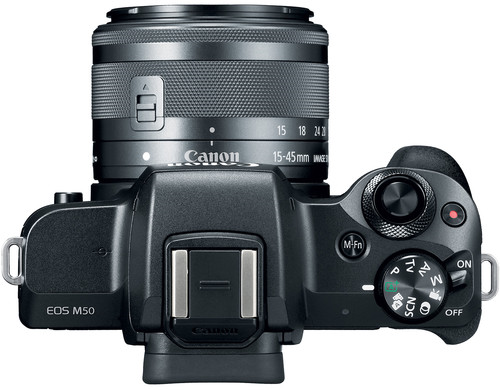
Here’s an in-depth look at the key features and specs of this cheap digital camera with flip screen:
- Camera Type: Mirrorless
- Sensor: 24.1MP APS-C CMOS sensor
- ISO: 100 - 25,600 (expandable to 100 - 51,200)
- Lens Mount: Canon EF-M Mount
- Speed: 10.0 fps
- Autofocus: 143 phase-detection points
- Video: 4K/24p & 1080p/60p
- Size/Weight: 116 x 88 x 59 mm / 390 grams (battery included)
- Battery Life: 235 shots
- Stabilization: No
- Touchscreen: Yes
Final Thoughts on Cheap Digital Cameras With Flip Screens
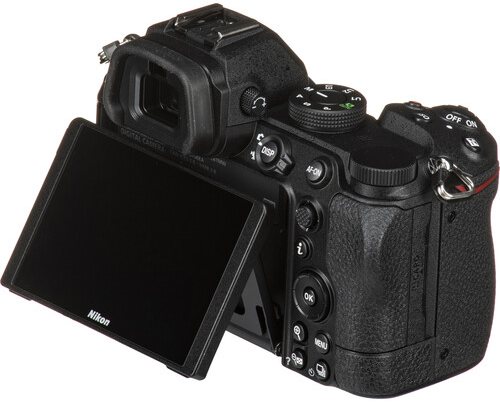
Nikon Z5
While those are three of the best affordable digital cameras with flip screens available at the moment, they are far from the only great options out there! If you want to do more research on your own, head over now to MPB.
They offer a seven-day no questions asked return window, and also, you will receive a six-month warranty on most items. Moreover, if you have an old camera or lens you no longer need, you can trade them in and offset the cost of your new cheap digital camera with flip screen!
Learn More:
We Recommend
Check Out These Deals on MPB Camera Gear
I’ve been singing the praises of the MPB used photography gear store for a while now, for some very good reasons.
Primarily, used camera gear and lenses are a fantastic way to save money on good equipment. The MPB camera gear store has a wide selection of quality used gear and gives great service and peace of mind while we save.
With that in mind, here’s a few great deals on MPB camera gear you might consider!
Table of Contents
- Used Equipment is a Good Idea
- MPB Camera Gear is a Great Value
- Used MPB Camera Gear - Canon EOS R
- Used MPB Camera Gear - Nikon Z6
- Used MPB Camera Gear - Sony a7III
- Used MPB Camera Gear - Panasonic DC-S5
Used Equipment is a Good Idea
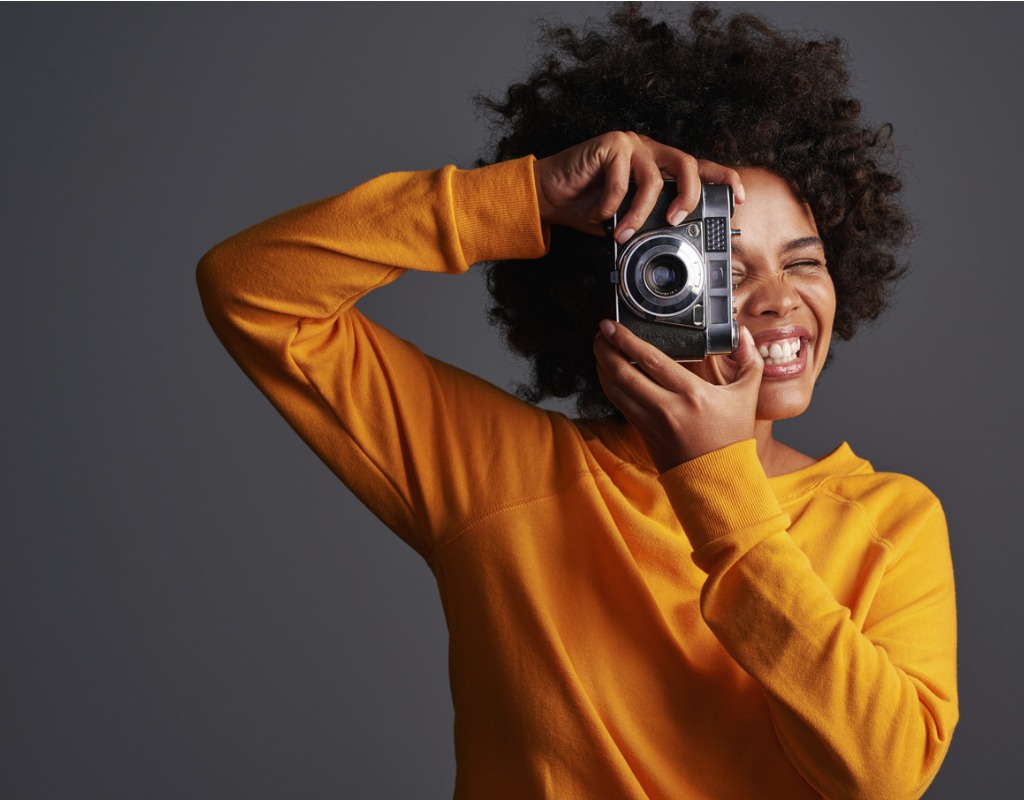
photo byHiraman via iStock
The equipment we use in photography can end up being expensive, whether we’re shooting as pros or a serious hobbyist. It is definitely a significant investment. Looking at the pages of MPB camera gear available right now, you will find items that are either very recent or sometimes current models.
Buying used items such as cameras, lenses, and accessories, we can often save a significant amount of money from what they sell for brand new, even if we shop at deeply discounted stores.
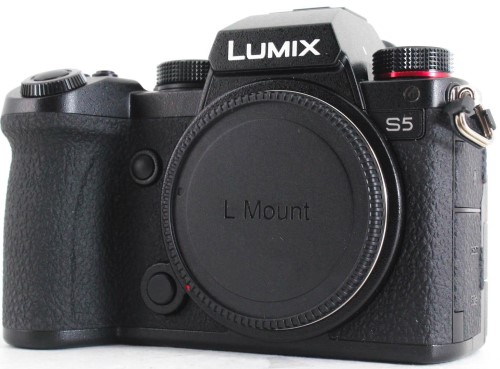
Used MPB camera gear comes from various sources. Sometimes, a photographer buys something that they quickly find out they want something different. Outside of the original store return window, this usually means a piece of equipment will be sold as used without having been used at all or used very little.
There are also store and brand representative demonstration units that can’t be sold as a brand new item, so these end up as used equipment. And then many photographers will trade-in or sell outright some of the gear they have had for a while.
All of these ways that cameras and lenses find themselves onto the used market means that we can find exceptionally favorable pricing on high-quality, good condition used equipment. MPB camera gear is firmly in this category.
MPB Camera Gear is a Great Value
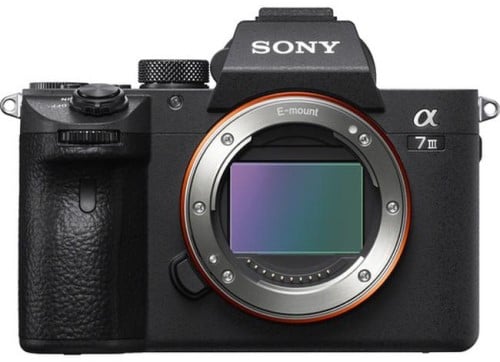
MPB camera gear is a great value in the used equipment market for several reasons. Most of the reasons relate to giving us peace of mind while saving money as we purchase used camera gear.
We definitely don’t want to buy someone else’s problem when we buy used, so how do we make sure that doesn’t happen? Buying from a well-established store that values its customers is a great method.
MPB camera gear is thoroughly checked out before they even take it into their stock. MPB is interested in purchasing your used items, by the way, either as a direct sale or as part of a trade-in. Their website tells you exactly how this process works.
A great service MPB provides us is a 6-month warranty on their used equipment. That means that even if something does happen with a camera or lens we purchase used, we aren’t left out in the cold. Their turnaround time is very quick on this service.
You also get a 7-day return window on MPB camera gear. This helps protect us from making a mistake, such as purchasing a camera or lens that really doesn’t suit our needs.
All MPB camera gear is listed with a clear and easy-to-understand rating system. Items can be anywhere from Like New or excellent all the way to Heavily Used (but still in good working order). Individual pieces of MPB camera gear are posted with a clear description of what categorizes them as any condition other than Like New or Excellent.
Learn More:
Used MPB Camera Gear
So, now let's look at what you could pick up right now as used MPB camera gear. This list is current at time of printing, but availability does fluctuate based on what people are selling or trading in at MPB.
Canon EOS R
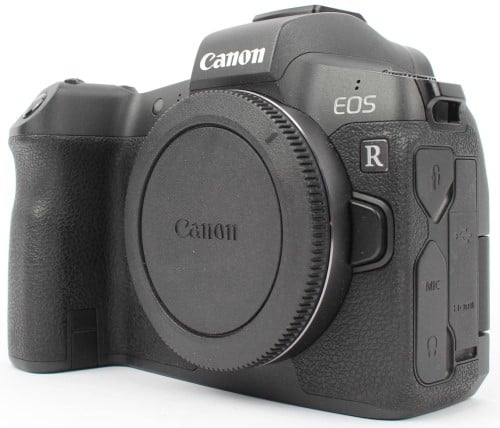
The Canon EOS R is a Full Frame format mirrorless camera with interchangeable lenses and is part of the Canon EOS R mount cameras. It has a 30.3MP sensor, records 4K video, and offers an ISO up to 30,000.
It’s a pretty new camera, but you can find it on MPB in Like New and Excellent condition with prices between $1309.00 and $1379.00 for the body only.
If you need additional MPB camera gear, there are many R lenses available, including some exceptionally fast prime lenses.
Nikon Z6
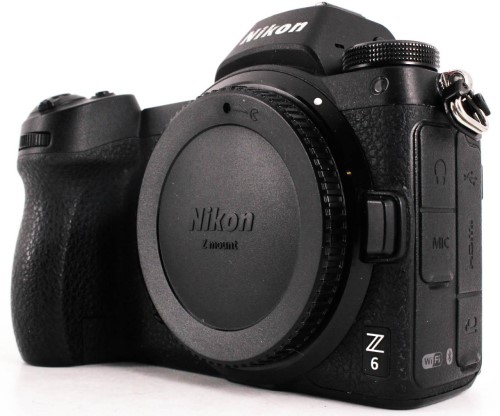
The Nikon Z6 has been replaced by the Z6ii, but it’s still a very recent camera. It has a 24.5MP Full Frame format sensor, ISO up to 51,200, and records 4K video. It is one of the best-performing cameras for low light that I’ve ever seen.
It uses the new Nikon Z lens mount, which also has extremely fast maximum aperture prime lenses. Right now, you can find MPB camera gear examples of this camera in Like New and Excellent condition for $1189.00 and $1129.00 for the body only.
Sony a7 III
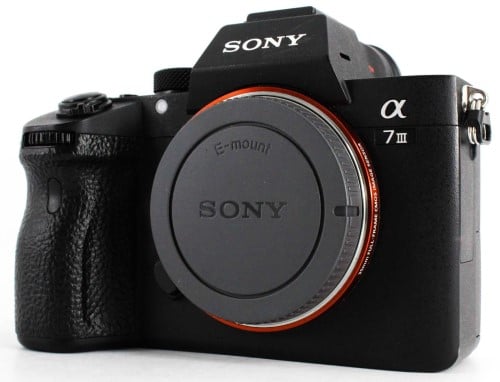
Also a low light champion, the Sony a7 III is a Full Frame format mirrorless camera with a 24.2MP sensor, 4K video, and ultra-fast autofocus with E-mount lenses.
Like New and Excellent condition MPB camera gear examples go for $1579.00 and $1499.00, for the body only. Check out all the Sony lenses in E-mount too.
Panasonic Lumix DC-S5
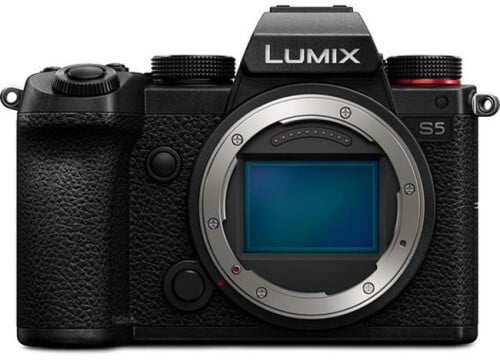
The Panasonic Lumix DC-S5 is an L-mount Full Frame format mirrorless camera with a 24.2MP sensor, 4K video, and the new L lens mount Panasonic shares with Leica and Sigma.
Prices of this camera range from $1499.00 to $1579.00 for the body only for Excellent and Like New examples.
Check out all the MPB camera gear and lenses available in all the brands and formats. There are hundreds of items for sale in conditions from Like New and Excellent to Good and even Heavily Used, so there’s something for every budget!
Learn More:
We Recommend
Check Out These Smokin' Black Friday Photography Deals

photo byGrafikactiva via iStock
I think we can all agree that 2020 has not been the best of years…
But at least we have what’s looking like an excellent Black Friday for photographers to look forward to.
I’ve put together a quick list of some of the best photography Black Friday deals at the moment. Keep in mind that this is not a comprehensive list and that many retailers have limited stock. In other words, if you see something you like, it’s best to jump on it now rather than later!
Adorama Black Friday Deals
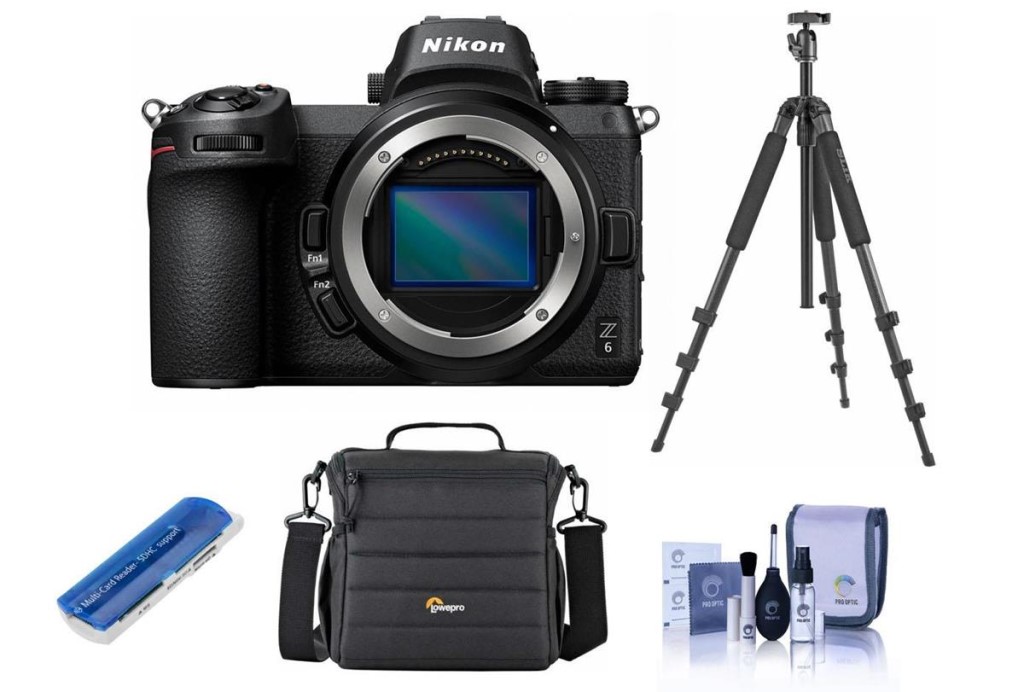
- $600 off Nikon Z6 (this deal, shown above, includes an FTZ lens adapter, a Vanguard Tripod, a Slinger Alpine Shoulder Bag, a ProOPTIC Cleaning Kit, and a Green Extreme USB Memory Stick)
- $500 off Panasonic Lumix G9 (this deal includes a huge accessory bundle, including a Joby GorillaPod 3K kit, a SanDisk 32GB UHS-I memory card, a Peak Design Everyday Sling bag, and more)
- $300 off Sony a7III (this deal includes a Flashpoint Speedlight too)
- $200 off Canon EOS R (this includes a Flashpoint Speedlight)
- $50 off GoPro Hero 9 Black
- $200 off Sigma 35mm f/1.4 DG HSM Art lens for Sony E-Mount
- $500 off Nikon 24-70mm f/2.8E ED-IF AF-S VR NIKKOR Lens (this includes an accessory bundle with a filter kit, a cleaning kit, a lens wrap, and more)
Amazon Black Friday Deals
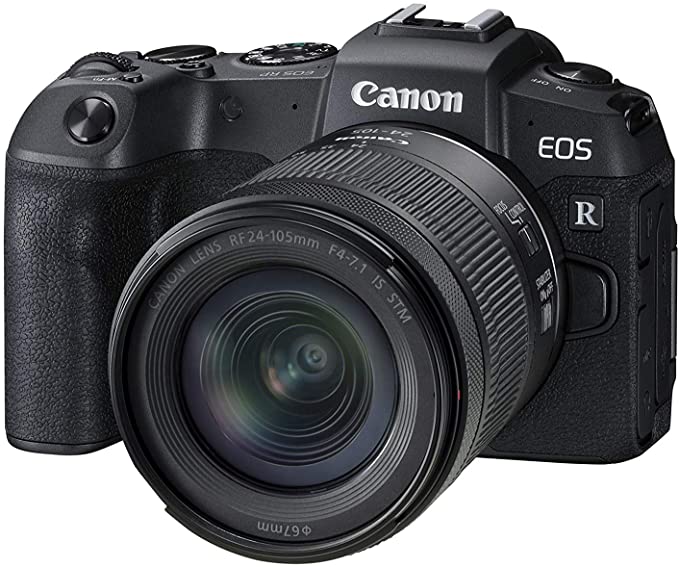
- Up to 34% off Canon cameras and lenses
- Up to 41% off Sony cameras
- Up to 41% off Panasonic Lumix cameras and lenses
- Up to 23% off Nikon cameras and lenses
- Up to 11% off DJI drones
- $60 off ViewSonic VP3881 38-inch UltraWide Curved Monitor
- $70 off ViewSonic VP3481 34-inch Curved Monitor
Nikon Black Friday Deals
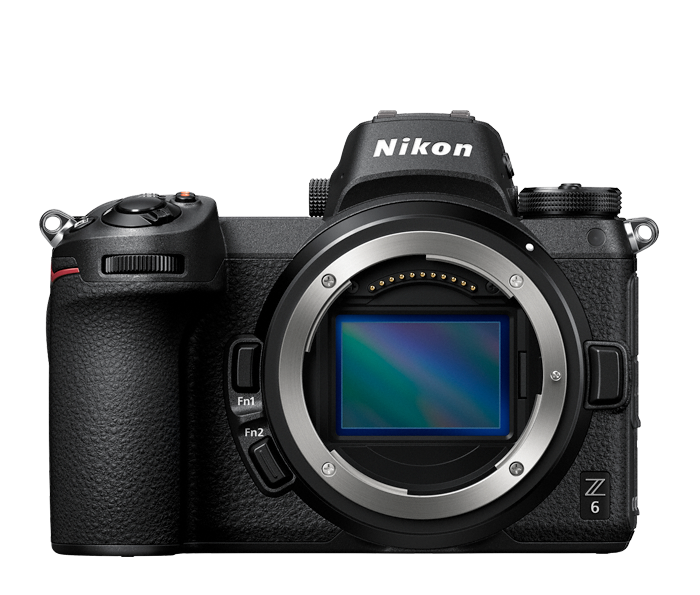
Nikon has a wealth of deals on mirrorless cameras, DSLRs, and lenses for both systems. This includes:
- $250 off Z50 two-lens kit
- $400 off Z6 24-70mm kit
- $400 off Z6 body only
- $300 off Z7 body only
- $150 off Nikkor Z 35mm f/1.8 S
- $200 off Nikkor Z 14-30mm f/4 S
- $300 off D7500 18-140mm kit
- $570 off D500 16-80mm kit
- $400 off AF-S Nikkor 14-24mm f/2.8G ED
- $500 off AF-S Nikkor 24-70mm f/2.8E ED VR
Nikon is also offering their online courses for free through the end of the year.
Holdfast Gear Black Friday Deals
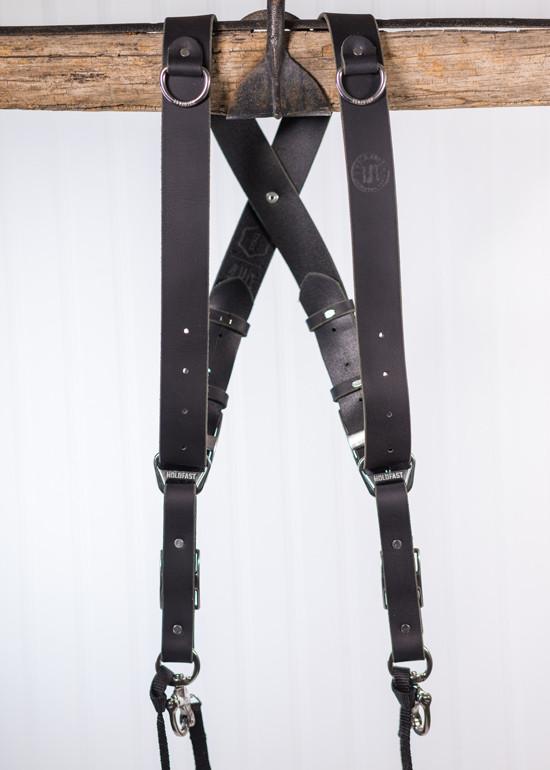
Our friends over at Holdfast Gear are kicking off Black Friday with an Early Bird Sale that gets you 20% off straps and other accessories.
Holdfast makes all sorts of high-end gear, including bags, single and dual camera straps, and a host of leather accessories like shoes, wallets, and pen holders, just to name a few.
To score the 20% discount, simply use the promo code EARLYBIRD2020 when you check out.
This is a short, time-limited discount, so hurry over to Holdfast Gear to do some early Black Friday shopping!
MPB Black Friday Deals

You can get an extra 10% off select camera bodies, lenses, gimbals, and stabilizers at MPB through November 30th. MPB has also partnered with One Tree Planted to plant a tree each time someone buys, sells, or trades gear at MPB.com as an added bonus!
Additionally, U.S. residents can score 10% off these camera bodies:
- Nikon D610
- Canon EOS 70D
- Sony Alpha A5000
- Fujifilm X-T1
The sale on these cameras runs from Black Friday through Cyber Monday. Head over to MPB to check out these deals and much more!
HEX Brand Black Friday Deals
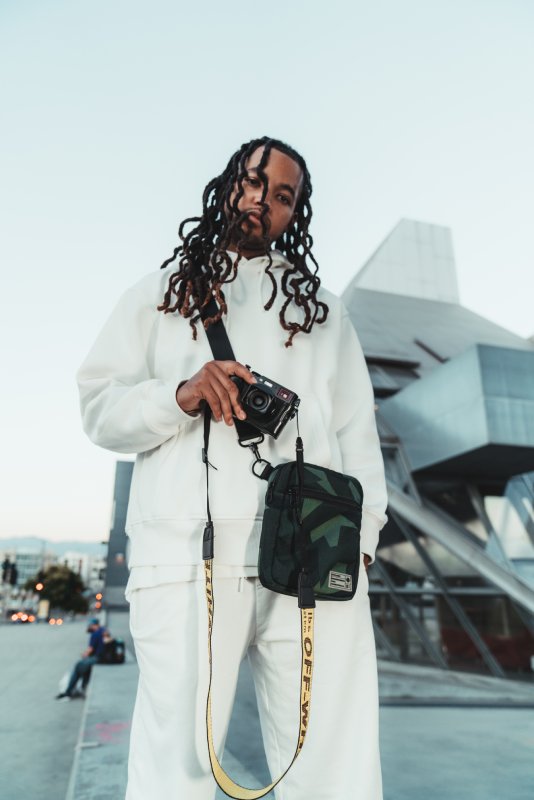
Black Friday through Cyber Monday, HEX Brand is offering 20% off, which includes their brand-new Ranger Crossbody Bag shown above.
Like all HEX Brand gear, this new Crossbody bag represents the ideal mix of style and substance.
The exterior of the bag is crafted of Genuine Cordura® and ballistic nylon. Inside is EVA foam padding to protect your camera and accessories. There's also an adjustable padded divider to keep your gear organized.
But don't think that this is a bulky bag. Quite the opposite. Its small form factor hugs your body as you move so it stays out of your way. In fact, it's just 1.3 pounds yet can hold up to 1.5 liters of gear.
Check it out at HEX Brand and see if it's the right bag for you this holiday season!
Other Photography Black Friday Deals
There are TONS of other awesome Black Friday deals for photographers. Here’s a few:
- Up to 46% off at DJI.com
- Up to 40% off paper prints at Artbeat Studios
- 25% off Adobe Creative Cloud for individual subscriptions through November 27th (which includes more than 20 apps, including Photoshop, Illustrator, Premiere Pro, After Effects, and InDesign)
- 70% off Adobe Creative Cloud for students and teachers through November 27th (the discount makes it just $15.99 per month)
- Up to 20% off on Peak Design gear through December 1st (this includes 20% off on Everyday Bags and 10% off on tripods)
- 20% off site wide on orders over $50 at Printique (use promo code BLACKFRIDAY20 at checkout)
Like I said earlier, some of these deals might disappear, and other killer deals might pop up, so keep your eyes peeled and your credit card ready!
We Recommend
How to Get a Cheap Panasonic GH5

If you’re looking for a cheap camera in 2021, then the Panasonic GH5 might be one of your best bets.
The Panasonic GH5 first came out in 2017, which means that all of its specs are still relevant enough to make it an excellent camera for a professional photographer in 2021, but it also means that plenty of these cameras are available on the used marketplace.
Unfortunately, the Panasonic GH5 is still pretty expensive if you’re planning on buying it new. The Panasonic GH5 is priced at well over $1,000 on Amazon. So, if you’re looking for a cheap Panasonic GH5, it’s important you know what good websites are available to buy used cameras and camera equipment.
In this article, I’m going to give you a quick overview of why you should own a Panasonic GH5 in 2021, and I’ll show you where you can get the best deals on Panasonic GH5.
Panasonic GH5 Specs and Features

I have already written a full Panasonic GH5 review if you’re looking for all of the information about what this camera does. I’m just going to give you a short breakdown here.
The Panasonic GH5 is a mirrorless camera that is designed with both photographers and videographers in mind. That’s because it features both 4K video and incredible still images because it is built around a 20.3MP micro four thirds sensor with no low pass filter and a Venus Engine 10 processor.
The camera also comes with dual image stabilization, since the camera features in-body image stabilization and almost every Panasonic lens does as well. That makes the Panasonic GH5 one of the most perfect cameras for someone who is always on the go.

The camera also comes with a 225-point autofocus system that lets you track subjects with ease.
Conversely, if you’re after a camera that comes with a good burst rate, the Panasonic GH5 is also for you. It comes with a 12fps burst mode if you lock your focus on the first shot. Otherwise, you can expect 9fps. If you need something faster, you can use the 6K photo mode, which allows you to take 6K video at 30fps. Then, you can get individual frames from that video.
Panasonic GH5 in 2021
So, given the fact that the Panasonic GH5 came out in 2017, why would a photographer be looking for one now?
As I mentioned above, the camera comes with a lot of features that are still considered very good today. You’ll be incredibly hard pressed to find a new camera that features a 6k 30fps burst mode or a 225-point AF system for somewhere around $1,000 today.
But, as Joe Moore Productionspoints out in his video above, the camera also comes with incredible customizations that professional photographers will greatly appreciate, specifically if they’re always working in the same photography niche.
Another good point that Joe had was that this camera is an absolute workhorse. For starters, you aren’t going to find any recording limits on this camera. You also will be incredibly hard pressed to get it to overheat. It is literally designed for shooting all day, all night, and then all day again.
That’s exhibited in the camera’s battery life, which will give you 2 hours of video shooting before it gives out on you.
But, obviously, one of the biggest reasons to purchase this camera in 2021 is the fact that it is cheap. You’ll be hard pressed to find a camera with all of these features that is as cheap as a used Panasonic GH5.
Learn More:
Benefits of Buying Used

If you have your eye on a Panasonic GH5, you may be wondering why you should buy it used, since you can still buy one new.
A pretty obvious answer to this question is that you’ll save money. And, all of the money that you save is money you could reinvest in your photography by buying a new lens or a new editing program.
You should also buy used because any reputable website will let you return it. So, if the camera shows up at your door in any condition you weren’t expecting, you really haven’t lost any money on the transaction (just a few minutes of your time).
Used cameras are also way less likely to drop immensely in price the moment you buy them. So, you will be able to get more of your money back at the end of your camera’s useful life to you.
Where to Find an Inexpensive Panasonic GH5

If you’ve never purchased a used camera before, then you may not know that it is a delicate balancing act. You’re looking for a cheap camera, obviously, otherwise you wouldn’t be buying used, but you also need to make sure that you aren’t getting ripped off by buying a camera that is damaged somehow.
It’s why we recommend that you always buy used cameras with MPB. MPB is a used camera retailer that was created by and for photographers. MPB hires photographers to rate all of the equipment that they get in, so they feature one of the most accurate rating systems in the used camera marketplace.
Not only that, but since they have such a large reach (they operate through the United States and many parts of Europe), you can expect them to have a huge selection of cameras that you’re looking for.

For instance, MPB currently has dozens of used Panasonic GH5 models available, starting at $999.You won’t find a Panasonic GH5 in excellent condition anywhere else for cheaper.
Another benefit of shopping with MPB is that you can trade in your used equipment and use whatever money you make off of it on your new camera. It’s way easier than trying to fuss with Craigslist or eBay. And, let’s be honest, your time is more valuable than trying to deal with scammers all day.
For more information about why you should be shopping with MPB, feel free to read our MPB Review below.
Learn More:
We Recommend
Is a Panasonic Lumix GH5 Still Worth Your Money?
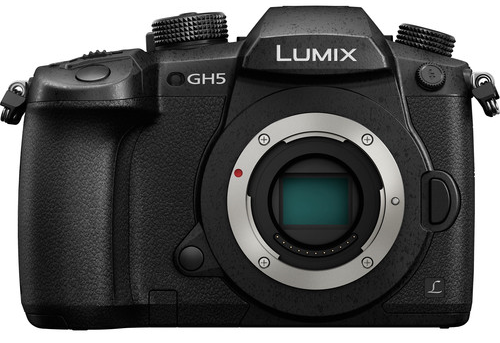
When the Panasonic Lumix GH5 launched in 2017, it immediately became one of the most advanced mirrorless cameras ever built, and it was flying off shelves left and right. Photographers and videographers alike absolutely couldn’t get enough of it, and it was particularly popular within the event and wedding photographer community.
Fast forward five years and the GH5 has since been replaced by the Panasonic Lumix GH6. However, despite the new model's release, the GH5 remains one of the most popular cameras on the market. And in this Panasonic GH5 review, we share four reasons you should still consider buying one.
A fabulous resource with tons of used Panasonic GH5 cameras in stock and a place I have bought and sold countless photo and video gear throughout the years is MPB. They are a trustworthy and reliable online platform selling used photo and video kit at unbeatable prices.
Additionally, every camera at MPB is methodically hand-inspected by expert product specialists and backed by a six-month warranty, allowing you to make your purchases confidently and worry-free. Another awesome feature of MPB is that you can trade in and sell your old camera equipment to help offset the cost of new-to-you gear you want and need.
With that said, let’s jump in and find out why the Panasonic Lumix GH5 is still worth your money today!
Check out the video above by TS Camera Gear to learn more about the Panasonic Lumix GH5 and why it’s a tremendously undervalued camera in 2023.
Table of Contents
- Panasonic Lumix GH5 Body & Design
- Panasonic Lumix GH5 Imaging Capabilities
- Panasonic Lumix GH5 Video Capabilities
- Panasonic Lumix GH5 Handling & Ergonomics
- Final Thoughts on the Panasonic Lumix GH5
Panasonic Lumix GH5 Body & Design
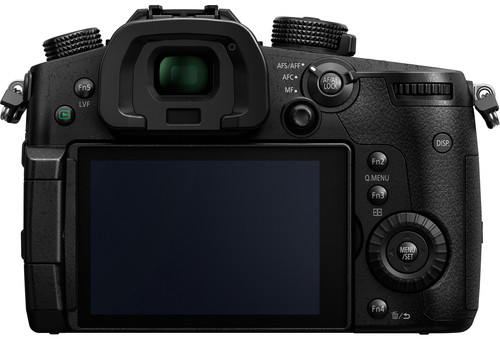
One of my favorite things about the Panasonic Lumix GH5 is its phenomenal build quality and design. For starters, it features a large, textured grip that’s both comfortable and easy to hold. Also, it has an incredibly high-resolution electronic viewfinder (EVF). The EVF has over 25% more pixels than most mirrorless cameras, making composing and framing your shots easier.
On top of that, the body is constructed from a durable magnesium alloy and is 100% weather-sealed. This makes it a great choice for outdoor photography and means the camera will hold up better over time. Lastly, weighing in at a reasonable 725 grams, its compact and portable design makes it a good camera for everyday use and traveling.
Here’s an in-depth look at the key features and specs of the Panasonic Lumix GH5:
- Camera Type: Mirrorless
- Sensor: 20.3MP Four Thirds CMOS Sensor
- ISO: 200 - 25,600 (expandable to 100 - 25,600)
- Lens Mount: Micro Four Thirds Mount
- Speed: 12.0 fps
- Autofocus: 225 focus points
- Video: Up to 4K/60p & 1080p/180p
- Size/Weight: 139 x 98 x 87 mm / 725 grams
- Battery Life: 410 shots
- Stabilization: Yes
- Touchscreen: Yes
Panasonic Lumix GH5 Imaging Capabilities
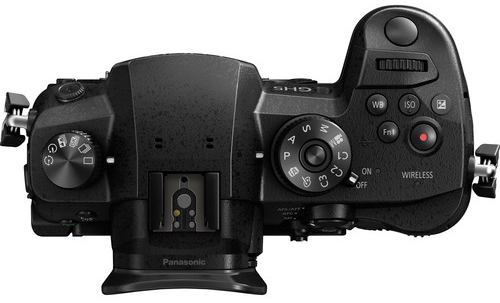
The signature photo spec of the Panasonic Lumix GH5 is its high-resolution 20.3-megapixel Four Thirds sensor. It helps capture detailed JPEG and RAW images with terrific corner-to-corner sharpness. Moreover, colors have improved, and the dynamic range has expanded compared to the previous Panasonic Lumix GH4.
Two more superb imaging features are the Depth from Defocus autofocus (DFD AF) and fast continuous shooting. The DFD AF is fast and decisive, even when tracking and following quick-moving subjects. And the camera's continuous shooting maxes out at 14 frames per second (FPS), making it an excellent camera for action, wildlife, and sports photography.
Learn More:
Panasonic Lumix GH5 Video Capabilities
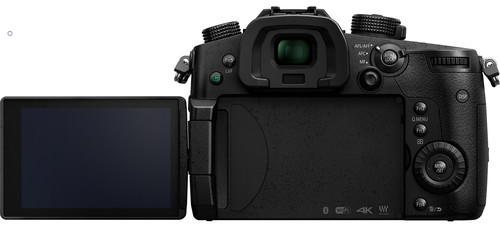
As great as the Panasonic Lumix GH5 is as a stills camera, it performs even better as a video camera! It boasts 4K/60p video filmed using the camera's entire sensor and oversamples it from 5.1K footage. The oversampling process leads to stunning footage that is noticeably sharper than 4K movies recorded on most other DSLR and mirrorless cameras.
Furthermore, the GH5 offers fast and slow-motion video shot at 1080p Full HD and has 5-axis in-body image stabilization (IBIS). Native fast and slow-motion videos are unique tools for videographers and will save you time in post-production. And the IBIS significantly improves video quality, reduces camera shake, and allows you to shoot handheld video.
Panasonic Lumix GH5 Handling & Ergonomics
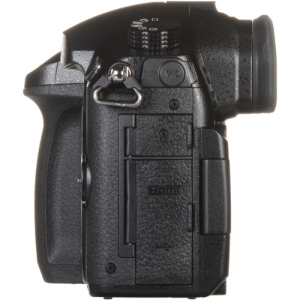
Last but not least, I love how easy to use the Panasonic Lumix GH5 is. While it features all the classic manual shooting modes, it also has a useful automatic mode for people new to photography. Throw in the clear and easy-to-navigate menus, and the GH5 is one of the best cameras for beginners.
With that in mind, it’s also an ideal camera for professionals! The autofocus joystick lets you select exactly where you want to focus within the frame, and there are many customizable buttons. These advanced tools not only lead to consistently better results but also help speed up your workflow.
Final Thoughts on the Panasonic Lumix GH5
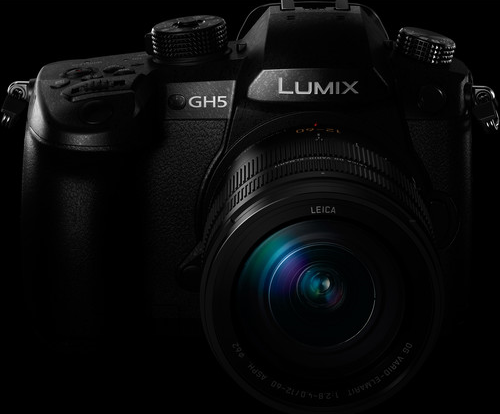
As you can see, the Panasonic Lumix GH5 remains a highly capable camera today, and ever since the release of the Panasonic Lumix GH6, their prices have dropped dramatically. You can now get your hands on one of these amazing cameras for under $800!
If you end up pulling the trigger on a GH5 or any other Panasonic G Mirrorless Camera, here’s a list of our favorite Panasonic GH5 lenses for photo and video currently in stock for unbeatable prices at MPB!
- Panasonic Leica DG Summilux 25mm f/1.4 ASPH II
- Panasonic Lumix G X Vario 12-35mm f/2.8 ASPH Power O.I.S.
- Panasonic Lumix G X Vario 35-100mm f/2.8 II Power O.I.S.
- Olympus M.Zuiko Digital ED 100-400mm f/5-6.3 IS
- Olympus M.Zuiko Digital ED 300mm f/4 IS PRO
Learn More:
We Recommend
Micro Four Thirds vs APS-C: Pros and Cons
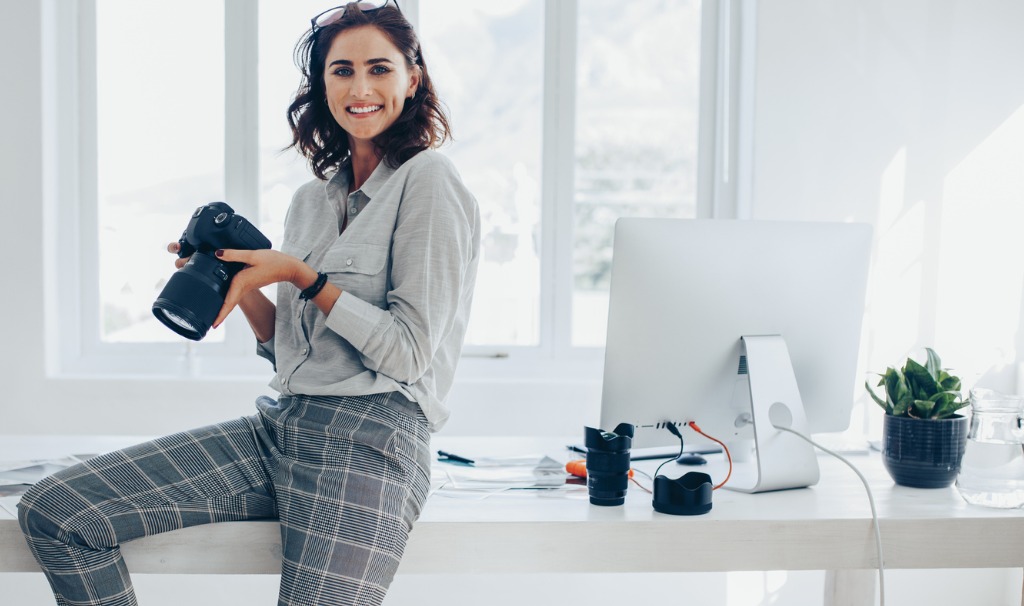
photo byjacoblund via iStock
Two different crop formats have a large share of beginner, enthusiast, and professionals using them, APC-C and MFT (Micro Four Thirds). The form factor is similar to what photographic enthusiasts have been using since the 1960s, the 35mm film SLR.
Of course, in current cameras, APS-C and Micro Four Thirds are digital camera formats, not film. What is the difference between Micro Four Thirds vs APS-C, what are the pros and cons of Micro Four Thirds vs APS-C, and which format system is right for me?
What is a Crop Format?
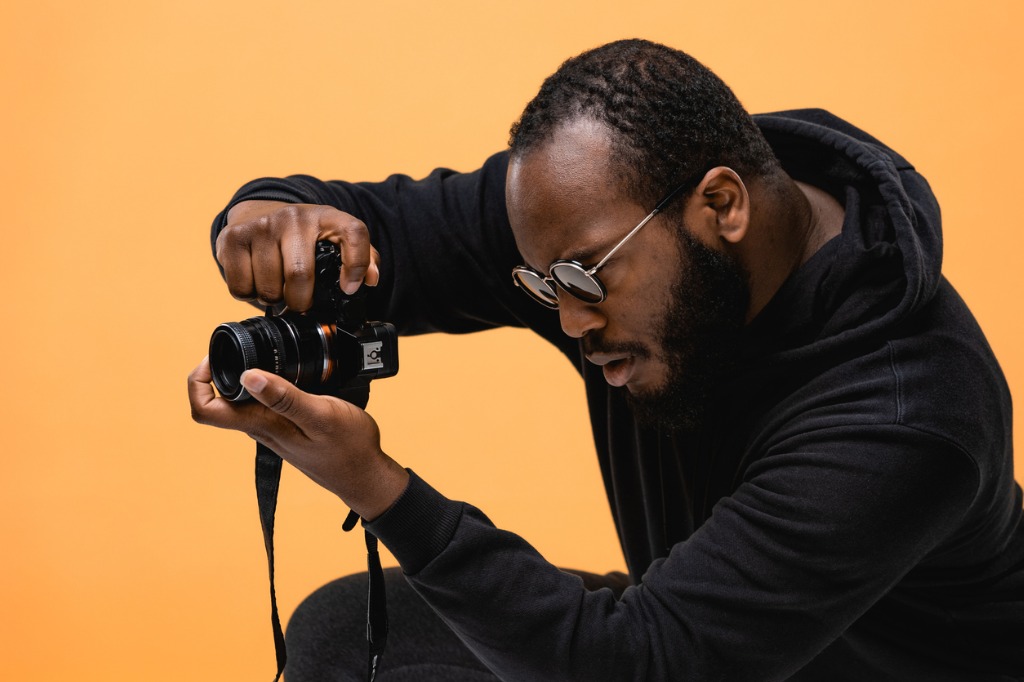
photo byAlexander Shelegov via iStock
A crop format, APS-C or MFT, is a smaller format than the Full Frame format. Full Frame corresponds directly to 35mm film format, being 24mm x 36mm in size. The other two formats we’re considering are cropped down from that.
So, what is APS-C? It’s a format with the same image aspect ratio (height to width) as Full Frame, namely a 3:2 ratio, but with a sensor size of 23.6mm x 15.6mm. This gives a crop factor compared to Full Frame of 1.5X, a specification you will see in a lot of articles and ads.
What is Micro Four Thirds? Micro Four Thirds (MFT or Micro 4/3rds) sensors are a slightly different aspect ratio, 4:3 specifically, and have a sensor size of 17.3mm x 13mm producing a crop factor of 2X.
For a full explanation of crop factors, sensor sizes, and aspect ratios, Micro Four Thirds vs APS-C vs Full Frame, check out the articles in our archives.
What it all really means for many beginner or enthusiast photographers is that we can get high-quality cameras and lenses for serious photography without the higher costs and larger sizes of Full Frame cameras and lenses.
Pros and Cons of APS-C
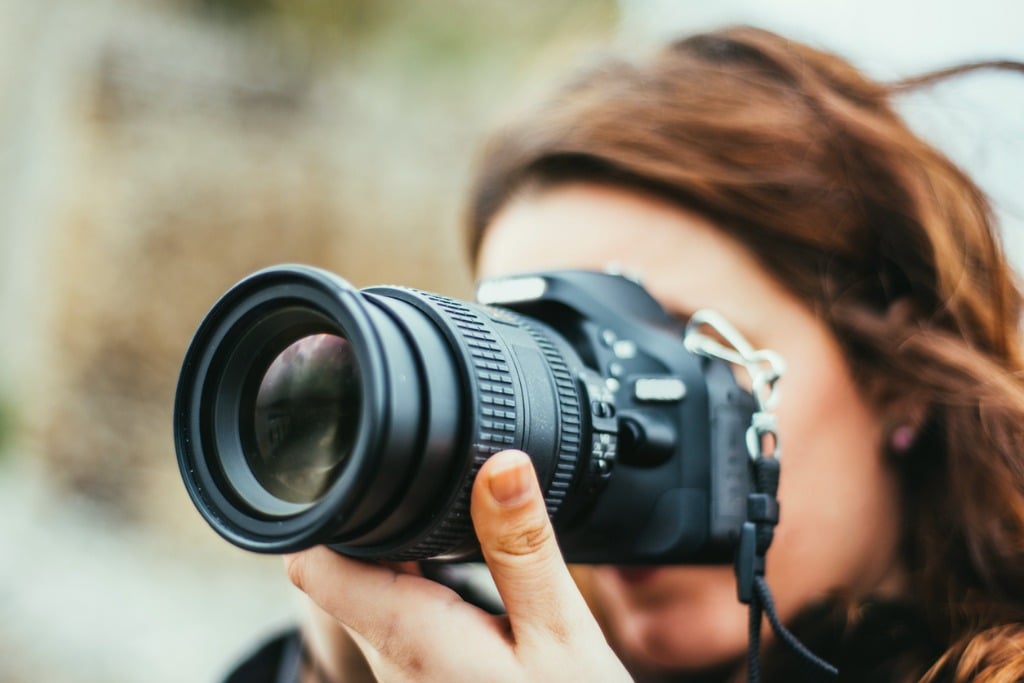
photo byMarioGuti via iStock
APS-C format also first started as a film format, a smaller alternative to Full Frame 35mm film format. It kept the aspect ratio that everyone was using, 3:2, but featured smaller cameras and lenses, plus the film cartridge was easier to load, virtually foolproof, in fact.
So, making the jump to high-quality digital imaging, it was actually a simple transition to APS-C digital format. Interestingly, many of the earliest professional and prosumer digital cameras from the major players like Kodak, Fuji, Nikon, and Canon, were APS-C format cameras.
Let’s consider some of the pros and cons of APS-C format digital cameras. Pros include the smaller size of most of the cameras and lenses compared to Full Frame, plus there are many very budget-friendly cameras in APS-C, both entry-level and higher-end gear.
One of the cons of APS-C format can also be considered a pro, depending on how you look at it, the crop factor. It is a pro when considering telephoto lenses but a con when going the other way toward wide-angle.
In order to use wide and ultra-wide lenses in this format, the focal lengths are very short. With a crop factor of 1.5X, in order to get the equivalent coverage of a 21mm lens in Full Frame format, it requires a 14mm lens in APS-C.
Low light performance is also less in smaller formats. A larger sensor size allows for larger pixel sizes, so a 24mp camera in Full Frame has better low light performance than a 24mp sensor in an APS-C format camera because the actual pixels are larger. That’s oversimplified, but you get the idea.
Some of the most budget-friendly cameras in entry-level and prosumer level are in APC-C format DLSRs, and some of the most advanced cameras at a reasonable price are APS-C mirrorless.
Here are a few examples:
The Nikon D7200 is a prosumer level APS-C DSLR that is very favorably priced compared to full ledged pro cameras in Full Frame format.
Canon EOS Rebel T6i is a fine entry-level DSLR with lots of great features that will allow you to grow as a photographer.
Mirrorless cameras in APS-C format include the Fujifilm X-T4 pro camera and many Sony cameras from entry-level to professional such as Sony Alpha A6500.
By the way, all of the cameras listed in this article are used items from MPB.com. Buying used is another great way to get high-quality camera gear for reasonable prices.
Learn More:
- Canon EOS Rebel T8i Review
- Is a Medium Format Camera Worth It?
- What to Check When Buying a Used Camera
Pros and Cons of Micro Four Thirds
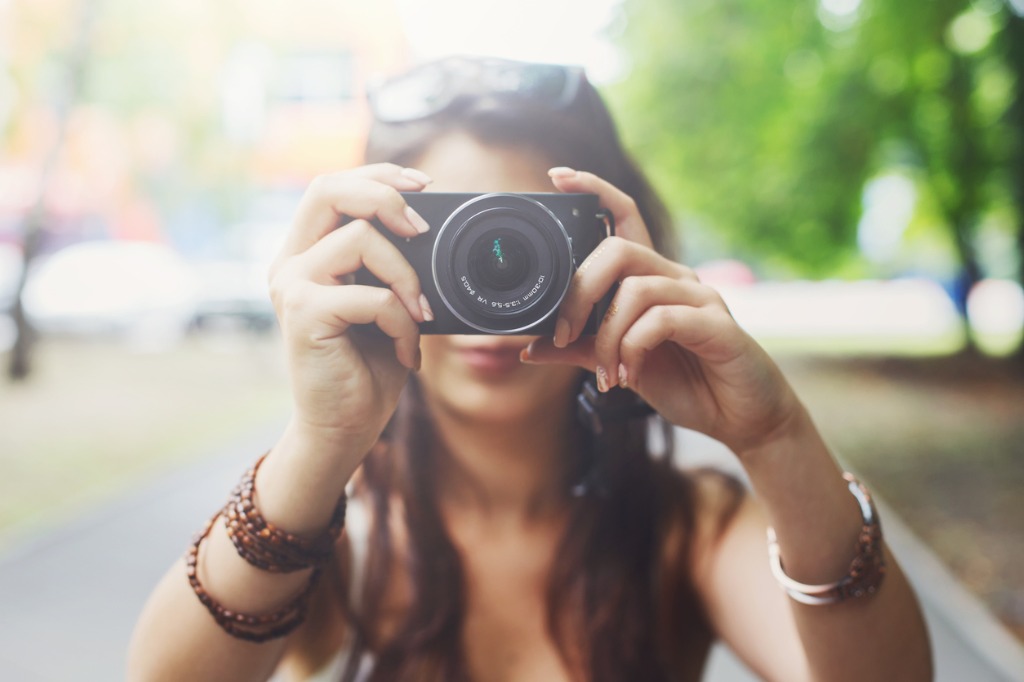
photo byProstock-Studio via iStock
Now let’s look at the pros and cons of Micro Four Thirds cameras. All Micro Four Thirds cameras will be mirrorless, no DSLRs in MFT. Some earlier cameras in 4/3rds format were DSLRs, but all of the major players now in this format are mirrorless.
Mirrorless cameras generally use power from the batteries quicker than a comparable DSLR, so that’s one of the cons. Another con is also a pro, just as in APS-C, the crop factor for lenses. Micro Four Thirds cameras have a 2X crop factor compared to Full Frame.
A great pro for Micro Four Thirds cameras is the size and weight. This format has some of the most compact, lightest weight professional capable cameras and lenses in all of serious photography.
Video performance is generally outstanding with Micro Four Thirds but you’ll be hard-pressed to find rock bottom dollar entry-level cameras in this format. Some of the pro and prosumer cameras are a little pricey, but the features are fantastic.
Examples of fine cameras in Micro Four Thirds are the video superstar Panasonic Lumix DMC-GH5 and a favorite of many wildlife photographers, the Olympus OM-D E-M5 III.
Micro Four Thirds vs APS-C - Which Should I Buy?
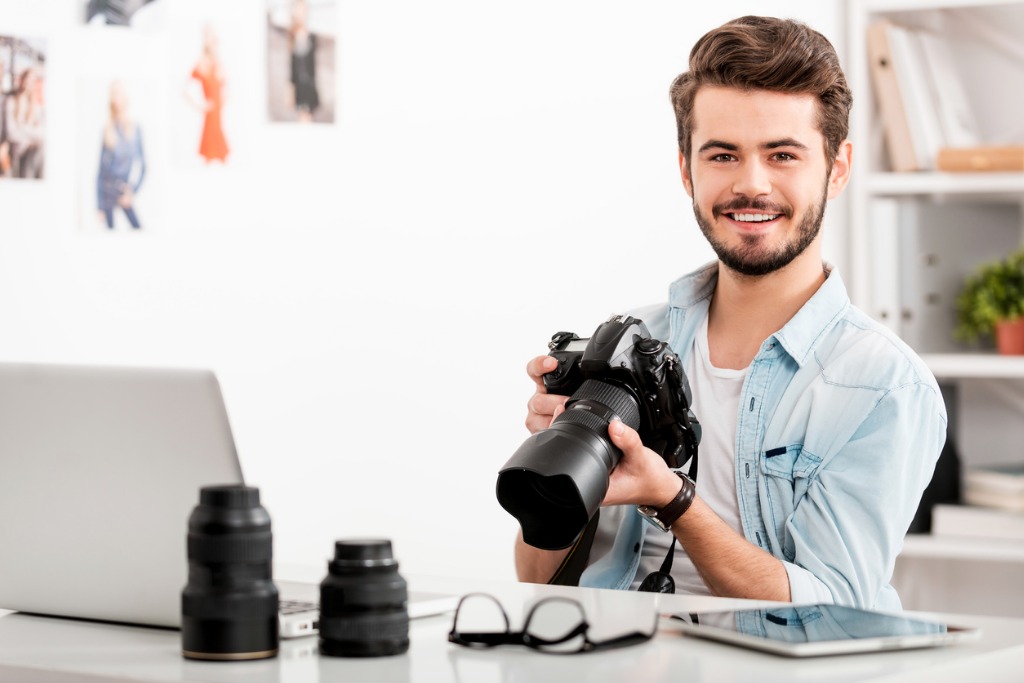
photo byg-stockstudio via iStock
So now the question of Micro Four Thirds vs APS-C formats comes down to which one to buy. There’s no one easy answer to this question, as is the case with so much photography gear and methods.
The smallest, lightest fully professional cameras are in the mirrorless Micro Four Thirds format. These cameras also have superb video capabilities. But you will be paying more for many MFT cameras than comparable items in APS-C DSLRs. And keep the 2X crop factor in mind also.
Some of the most budget-friendly entry-level cameras can be found in DSLRs in APS-C format. Many fine prosumer DSLRs of this format are surprisingly affordable as well. You can really do well with your personal budget by considering a used camera from a reputable dealer such as MPB.com.

This format has the same aspect ratio of Full Frame format so if you transitioned from 35mm film to digital photography, APS-C format will feel familiar. Some of these cameras may even take some classic lenses you may still have, though with some limitations of functionality.
Many excellent mirrorless system cameras can be found in APS-C format, many of them with excellent video features. As with Micro Four Thirds, these mirrorless system cameras are often a little higher priced than comparable DLSRs in this format.
Micro Four Thirds vs APS-C camera systems is an interesting discussion. You won’t go wrong whichever way you choose.
Learn More:
We Recommend
Must-Have Accessories for Panasonic GH5 Content Creators
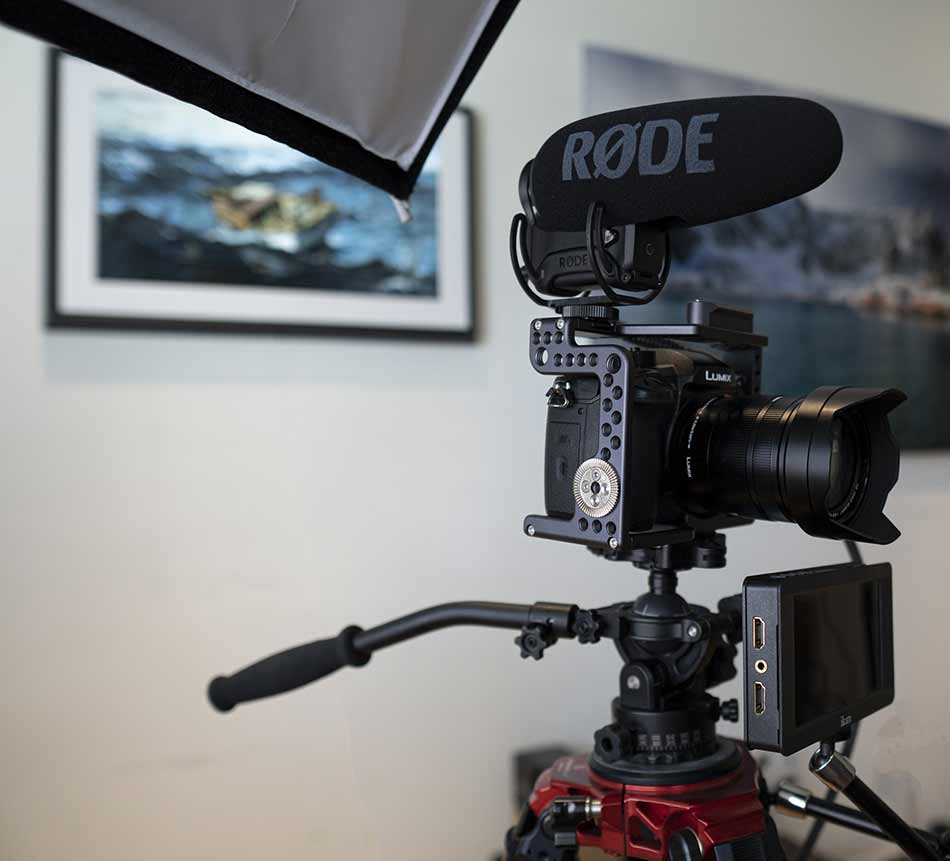
I picked up a Panasonic GH5 a few months ago, and as I explain in my Panasonic GH5 review, though this camera is a couple of years old, it's still one of the very best filmmaking cameras on the market today.
Combined with a host of lenses for the GH5 that work beautifully for both stills and videos, the GH5 has quickly become one of my favorite cameras. I'm saying that even though I've always been a Nikon shooter!
In fact, even though the GH5 is a couple of years old, I think it's still a solid buy in 2019. Find out why in my video below:
But no matter how good the GH5 does with video, you still need a few accessories to get the most out of this incredible camera.
Below, I've listed a few must-have accessories for Panasonic GH5 content creators.
Table of Contents
- First Things First: Panasonic GH5 Video Specs
- Must-Have Accessories for Panasonic GH5: Ikan Stratus Cage
- Must-Have Accessories for Panasonic GH5: RODE VideoMic Pro
- Must-Have Accessories for Panasonic GH5: Acratech GP Ball Head
- Must-Have Accessories for Panasonic GH5: Ikan Delta 5-Inch Field Monitor
- Must-Have Accessories for Panasonic GH5: Manfrotto 143 Magic Arm
- Must-Have Accessories for Panasonic GH5: Unitech USB Cable
- Must-Have Accessories for Panasonic GH5: ProMediaGear TR424L Tripod
- Bonus: Zoom H5 Recorder
First Things First: Panasonic GH5 Video Specs
If you aren't familiar with the GH5's video specs, let me enlighten you...
For starters, you can record in 4K at up to 60p and full HD at up to 180 fps to create incredible slow-motion videos.
This camera has no video crop, so you get the full sensor readout (which is oversampled from 5.1K, so your video footage is uber sharp). What's more, there's no time limit for video clips, either, though you're obviously bound by the size of your memory card and battery life.
The GH5 also has internal 8-bit 4:2:0 IPB encoding, which only improves if you use an external recorder.
At a lower frame rate, this camera will handle 10-bit 4:2:2 internal recording. Nice!
Learn how to set up a Panasonic GH5 for videomaking in the video at the start of this section by Griffin Hammond.
Must-Have Accessories for Panasonic GH5: Ikan Stratus Cage

Having a cage for your camera for video work is an absolute must, given all the accessories you need to produce high-quality videos.
I like the Ikan Stratus Cage because it's specially designed for use with the GH5. That means it fits like a glove and feels like an extension of the camera rather than a big, bulky one-size-fits-all cage that just gets in the way.
It's got an Arca-Swiss bottom plate for easy on and off, a NATO top handle to make carrying your gear that much easier (the handle also accepts bicycle grips), and there's cutouts so you can easily access the battery, SD card, and I/O doors.
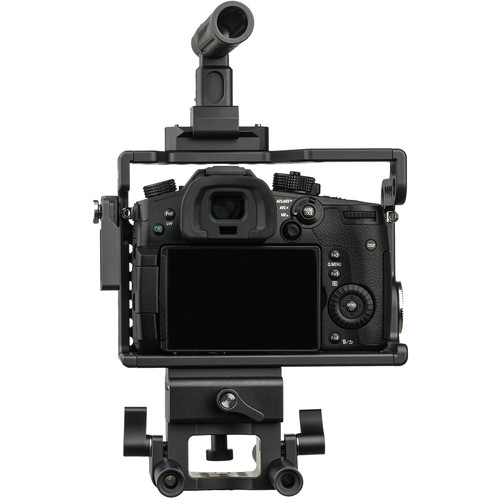
Ikan even includes a built-in lens adapter support and throws in a cable clamp, too.
And with connection points that include multiple 1/4"-20 and 3/8"-16 threaded holes, a shot mount, and an ARRI rosette, there's all sorts of gear you can attach to this thing for your video production purposes.
Learn more about the Ikan Stratus Cage for Panasonic GH5
Top Accessories for the Panasonic GH5: Rode VideoMic Pro

In photography, we always talk about how it's the lens that's the key to a great shot, not the camera.
Well, in video, the key to creating the highest-quality content is having excellent audio to match your clean, crisp video.
So, you can shoot video with a GH5 all you want, but without superb audio quality to go with that 4K video footage, your film isn't going to have the impact you want.
For that reason, I bought a RODE VideoMic Pro.

This little shotgun-style mic has a 1/2-inch condenser capsule, which results in ultra-clean audio that's broadcast quality. We're talking about a self-noise level of just 14db!
It has a super-cardioid polar pattern that reduces background noise while ensuring that it captures crisp audio of the source you want to record.
And, unlike lesser microphones, the RODE VideoMic Pro has a Rycote Lyre shock system that creates a buffer between the microphone capsule and electronics and the microphone mount. This, in turn, minimizes the vibrations of the mic and improves the quality of the audio even more.
Add in fantastic sound, easy-to-reach controls, and intuitive operation, and you have the makings of the ideal microphone for filmmaking with the Panasonic GH5.
Learn more about the RODE VideoMic Pro
Acratech GP Ball Head
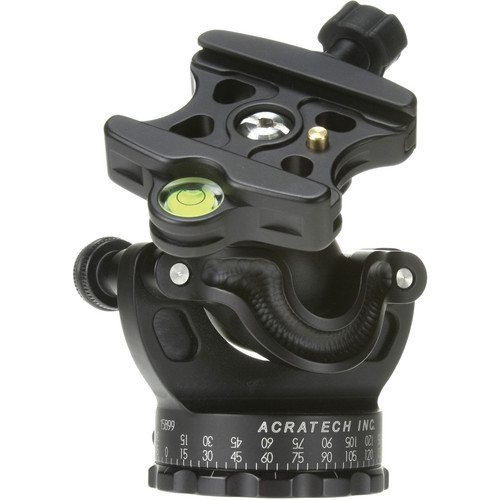
To say that I'm a fan of Acratech is the understatement of the century...
I've used their GP ball head for years and years, and it's never disappointed.
The build quality of this thing is crazy good. It's built like a tank and gives you ultra-precise and smooth adjustments for fine-tuning the framing of your footage (and for smooth panning motion, too).
This rig has a quick-release clamp or a double speed rubber knob or locking lever. There's a large bullseye level to keep your videos nice and straight, and with a weight load of 25 pounds, it'll support the GH5 and all your accessories just fine!
Learn more about the Acratech GP Ball Head
Must-Have Accessories for Panasonic GH5: Ikan Delta 5-Inch Field Monitor
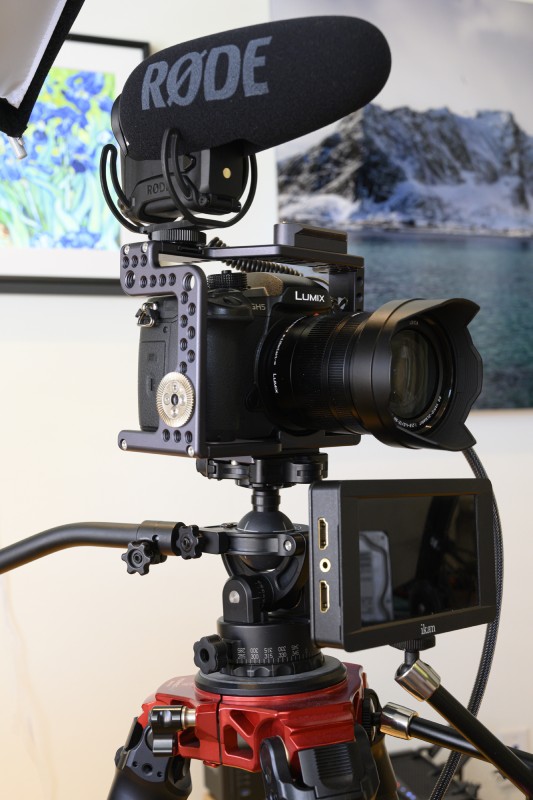
While the Panasonic GH5 has a cool swivel LCD screen that you can use to see yourself as you record, it's nice to have a larger monitor when recording video.
For that purpose, I use the Ikan Delta 5-inch field monitor (shown above, in front of the ball head).
This thing is big and beautiful and aids me in getting the exposure and focus just right.
Though it's got a gorgeous and large 5-inch screen, the overall unit is still small and lightweight, making it easy to add to my camera bag. It doesn't bog you down when filming handheld either.
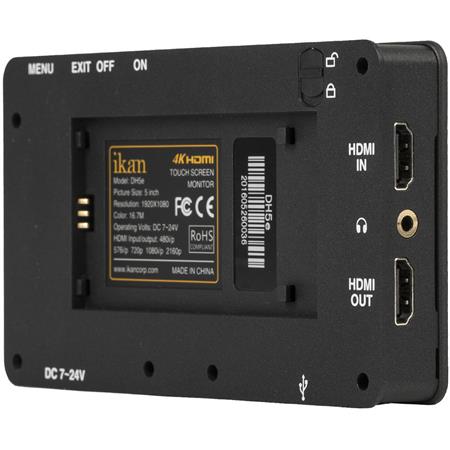
Ikan has stuffed it full of awesome features, too, like audio meters, guides, a histogram, zooming capabilities, false color, and peaking.
There's HDMI inputs and outputs, 4K UHD support, and a USB port for loading 3D LUTs.
If that doesn't scream "awesome field monitor," I don't know what does!
Learn more about the Ikan Delta 5-Inch Field Monitor
Must-Have Accessories for Panasonic GH5: Manfrotto 143 Magic Arm
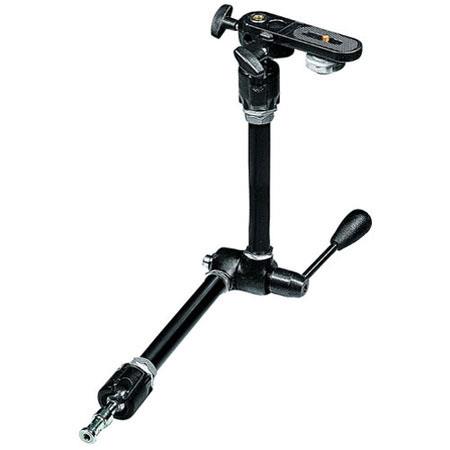
With so many needed accessories to produce videos, it's helpful to have another hand (or arm, is it were) to mount your accessories to.
For that, I use the Manfrotto Magic Arm, which has three pivot points, but just one lock to lock everything in place.
You can mount a light, a camera, or any other bit of gear to it at precisely the angle you need.
There's 5/8" male studs on the ball joints at either end with 3/8" and 1/4-20" female threads.
I use mine to hold my H5 Zoom (more on that later).
Learn more about the Manfrotto 143 Magic Arm
Must-Have Accessories for Panasonic GH5: Unitech USB Cable

You need a good cable to connect your field monitor to your camera.
In my case, I use a simple 5-foot cable from Amazon. It works great, gives me room to move around, and it set me back less than $12.
Learn more about the Unitech 5-foot USB cable
Must-Have Accessories for Panasonic GH5: ProMediaGear TR424L Tripod

To support all the weight of your video gear, you need a sturdy as hell tripod, and there's no better than the ProMediaGear TR424L.
This is hands-down the best tripod I've ever owned. It's built like a tank and can hold a whopping 125 pounds of gear.
At 6.4 pounds and 26.3-inches when it's folded, this isn't exactly a travel tripod, but for studio work, holy smokes...this thing is awesome.
The 4-section carbon fiber legs are easy to deploy and lock into place. The 3-position angle locks and quarter-turn twist locks make sure of that.

This rig also has big rubber feet to aid in stability.
Up to, the aluminum alloy head has a safety lock, a bubble level, and a tripod plate with a 3/8"-16 mount.
I also like the fact that it extends up to 77 inches to accommodate my videos whether I'm standing or sitting down.
No matter if you have it at its height maxed out, at its lowest height, or somewhere in between, this tripod offers rock-solid performance.
Learn more about the ProMediaGear TR424L Tripod
Bonus Accessory: Zoom H5 Recorder
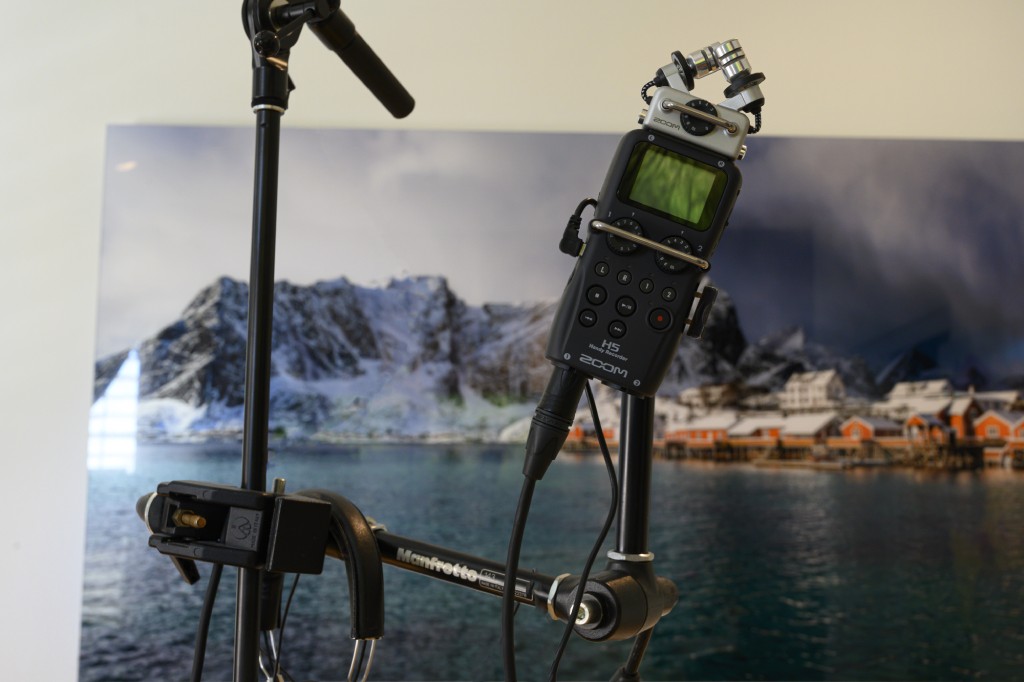
The Zoom H5 recorder might not be a must-have, when you hear the audio that comes from this, you'll consider a nice-to-have accessory for sure!
When I'm in my studio, I have my RODE NTG-4 plugged into the Zoom H5 virtually all the time.
When I'm out shooting B roll, the Zoom H5 performs masterfully for recording nature sounds and other ambient noise.
But it's the quality of the audio that's so astounding.
You can cover a huge area, yet still get beautifully crisp sound in the center with supreme clarity and sound definition.
Like I said before, great videos demand great audio, and you definitely get that with the Zoom H5!
Learn more about the Zoom H5 Recorder
We Recommend
Panasonic 6K Camera: Is the Lumix S1H for You?
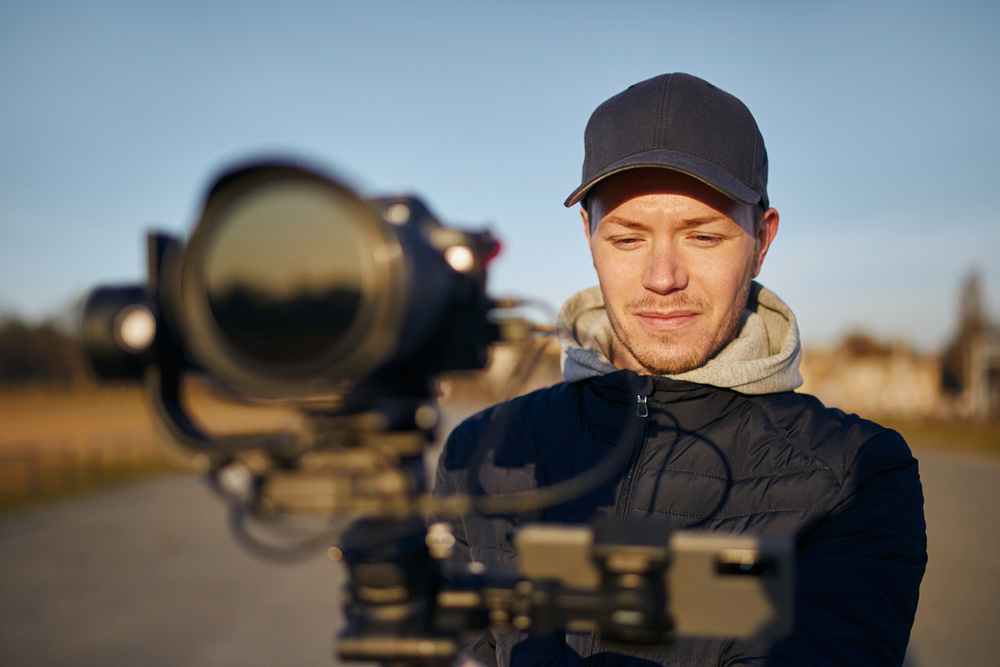
Photo by Chalabala via iStock
The Panasonic S1H is, in my opinion, the undisputed champion of video for mirrorless cameras.
In this guide, we’ll discuss who needs it, where to buy it, and more!
Keep reading to learn more about the remarkable Panasonic 6K camera and find out whether or not it’s the perfect camera for you.
Table of Contents
- Panasonic S1H Overview
- What Makes the Panasonic 6K Camera Special?
- Does the Panasonic 6K Camera Work Well for Still Photography?
- Who is the Panasonic 6K Camera For?
- Where to Buy the Panasonic 6K Camera?
- Final Thoughts on the Amazing Panasonic 6K Camera
Panasonic S1H Overview
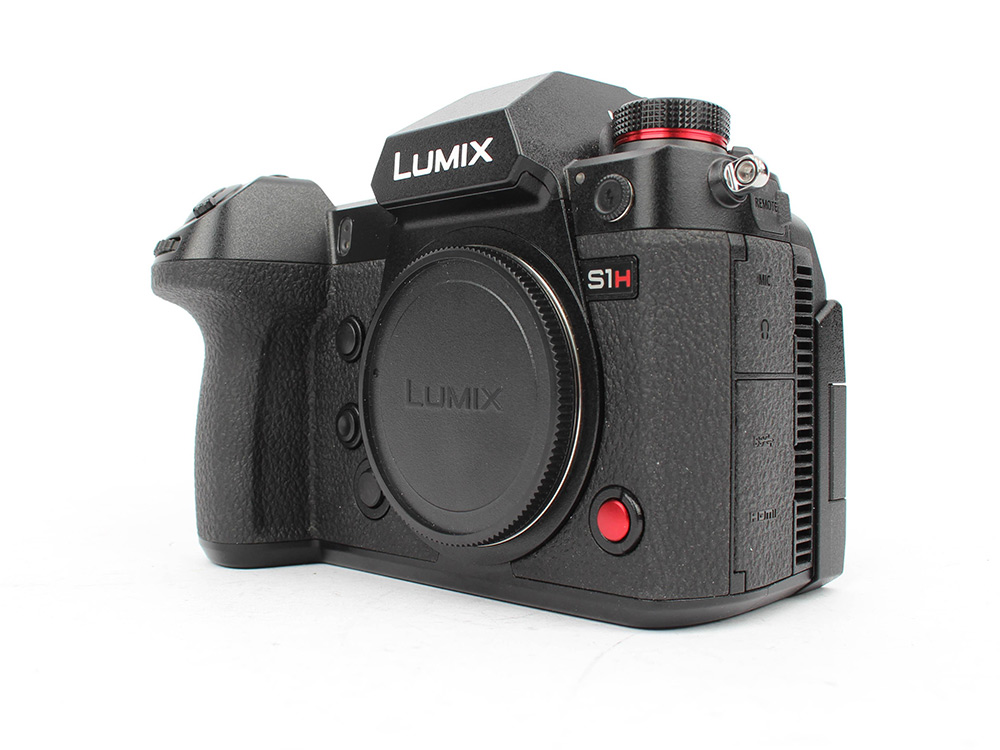
The Panasonic Lumix DC-S1H is an out-of-this-world mirrorless camera that first hit the market in September of 2019. Since then, it has received numerous awards and has been hailed by many photographers and videographers alike as the best mirrorless camera for video of all time.
It features a huge 24.2MP full-frame CMOS sensor, along with a fast and powerful Venus Engine image processor. Additionally, it has a new and improved version of Panasonic’s Dual Native ISO. These three core features help the Panasonic 6K camera be one of the most advanced digital cameras ever.
Furthermore, the Panasonic S1H comes with an L Lens mount. The L-Mount system is designed for full-frame lenses and is compatible with a continually growing lineup of lenses. Along with native Panasonic glass, there is also a giant selection of Sigma and Leica lenses you can pair with this camera.
Check out some of the most prestigious specs and features of the Panasonic 6K camera:
- 24MP full-frame CMOS sensor
- Venus Engine Image Processor
- Dual native ISO with a range of 100-51,200
- 225-point silent autofocus
- 6K 3:2 video at 24p and 6K 16:9 video at up to 30p
- 4K UHD video at up to 60p
- 4:2:2 10-bit internal recording
- Unlimited video recording time
- 14 stops of dynamic range
- Dual-SD card slots
- Fully articulating touch screen LCD display
- Built-in wifi and Bluetooth
What Makes the Panasonic 6K Camera Special?
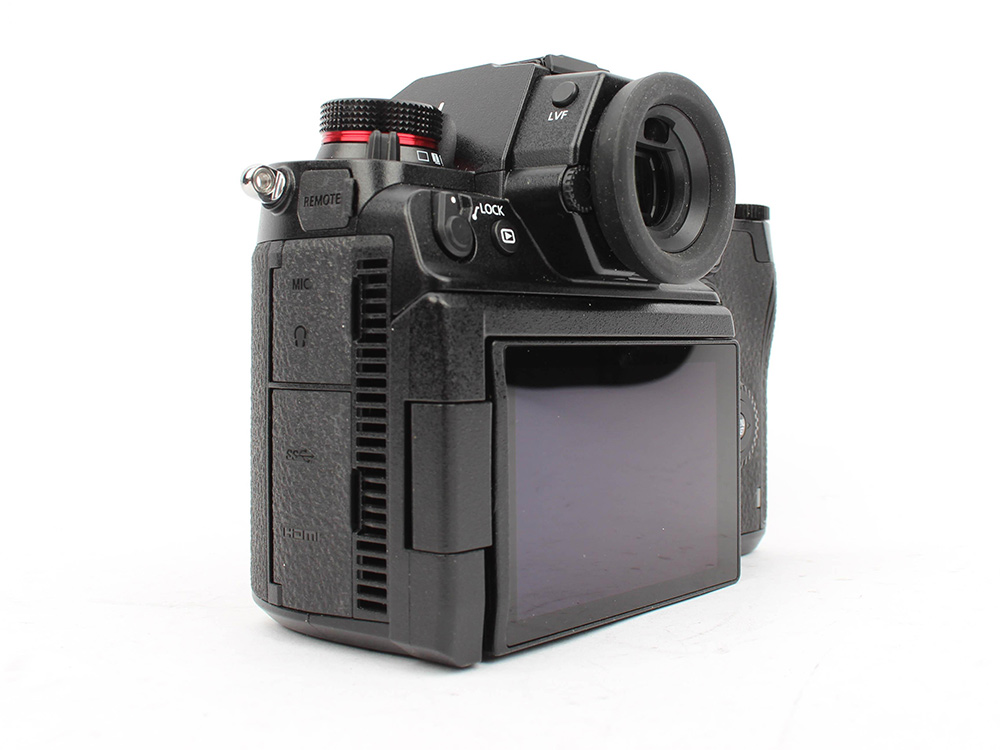
Hands down, the stand-out feature of the Panasonic 6K camera is its video recording capabilities. It has even garnered Netflix’s stamp of approval, recently being named the only mirrorless camera green-lit for filming their in-house original content.
It can record stunning 6K video at 24p, 5.4K video at 30p or 25p, and 4K video at up to 60p. While most screens and monitors today can’t actually display 6K footage, you may be asking yourself, “Why should I get the Panasonic 6K camera?”
The answer is flexibility in post-production. When you record in 6K, later when editing, you can scroll around the frame and re-crop 4K size images to use in the final product. In addition, it gives you the ability to rotate or further stabilize your content while staying inside the 4K crop parameters.
Another outstanding video feature of the Panasonic 6K camera is the unlimited recording time. It is capable of this thanks to the addition of a state of the art silent internal fan. It’s the first mirrorless camera to ever house a fan inside the body, and although it makes the camera slightly larger than most mirrorless systems, the trade-off is well worth it!
A few other noteworthy video features are 4:2:2 10-bit internal recording, V-Log and V-Gamut recording modes, a redesigned body constructed to make the filmmaker's workflow easier, and enhanced audio controls that let the audio be adjusted to 31 different levels.
Learn More:
Does the Panasonic 6K Camera Work Well for Still Photography?
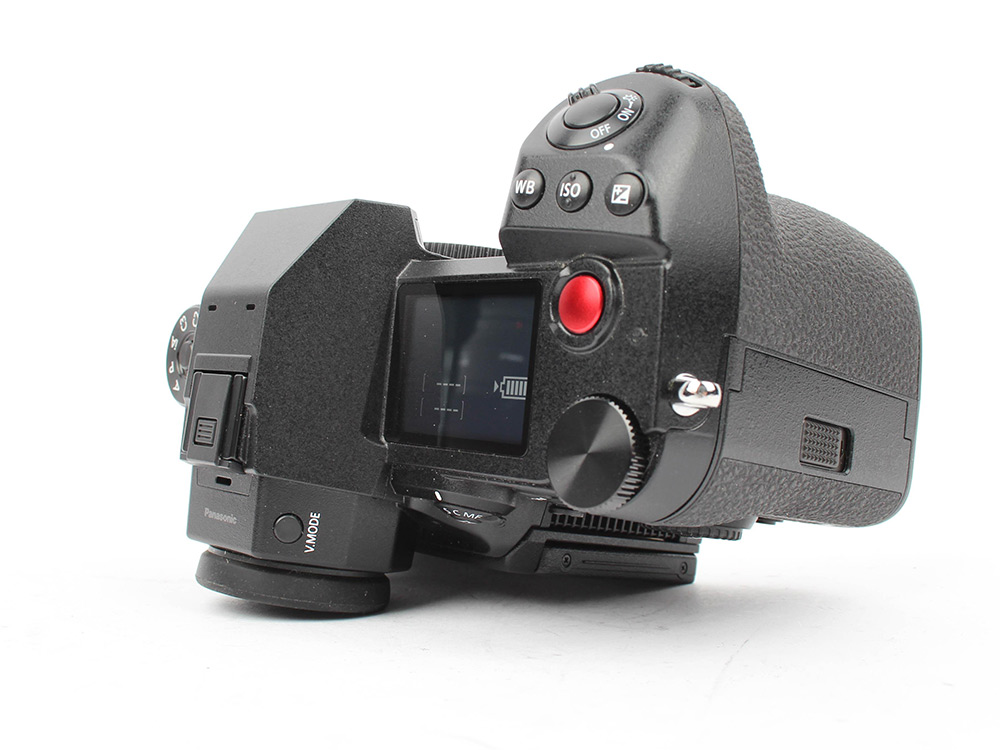
Now that I’ve finished explaining how extraordinary the Panasonic 6K camera is for video, you might be wondering how it functions as a stills camera. Make no mistake, this camera is first and foremost a high-end video camera built for professional filmmakers, but with that said, it also shoots fantastic stills!
The 24.2MP full-frame sensor creates images that maintain their sharpness corner to corner. Additionally, the 14 stops of dynamic range allow you to have maximum control over the exposure of your image even when conditions aren’t ideal.
One other cool feature I really love is the “High Resolution Mode.” If you are familiar with Panasonic’s other stills cameras, you might know about it already, but if not, it combines eight separate images to create one super high resolution 96 MP photo.
Lastly, the Panasonic 6K camera has lightning-quick autofocus, a 9fps burst mode, built-in image stabilization, and a fully weather-sealed magnesium alloy body.
Who is the Panasonic 6K Camera For?
The Panasonic 6K camera is for anyone who wants the highest quality video possible from a mirrorless camera. The easy people to throw into this category would be professional filmmakers and videographers, but they are far from the only ones who would benefit from using the Panasonic S1H.
Travel vloggers, documentarians, and nature videographers will love this camera since it is much lighter and more compact than traditional cinema cameras like the Arri Alexa, Red One, or Sony Venice.
Finally, thanks to a more attractive price point than the aforementioned cameras, even amateurs should consider buying the Panasonic 6K camera.
Where to Buy the Panasonic 6K Camera?

With an average retail price of only $4,000, the Panasonic 6K camera is far and away the best digital camera for video in its price range. With that said, I understand that it’s by no means cheap and that you want to find the best deal possible.
That’s whereMPB.com comes in! They are one of the biggest and most reliable retailers of second-hand camera equipment in the world. On top of that, all of their gear goes through a rigorous inspection process to ensure that it functions properly and is backed by a money-back guarantee.
Best of all is their unbeatable prices…
At the moment, they have a limited supply of used Panasonic 6k cameras for sale, so make sure to go scoop yours up now! If you don’t see any on the website, don’t worry! Their inventory is constantly changing, just make sure to check back frequently, and one might pop up soon.
Final Thoughts on the Amazing Panasonic 6K Camera
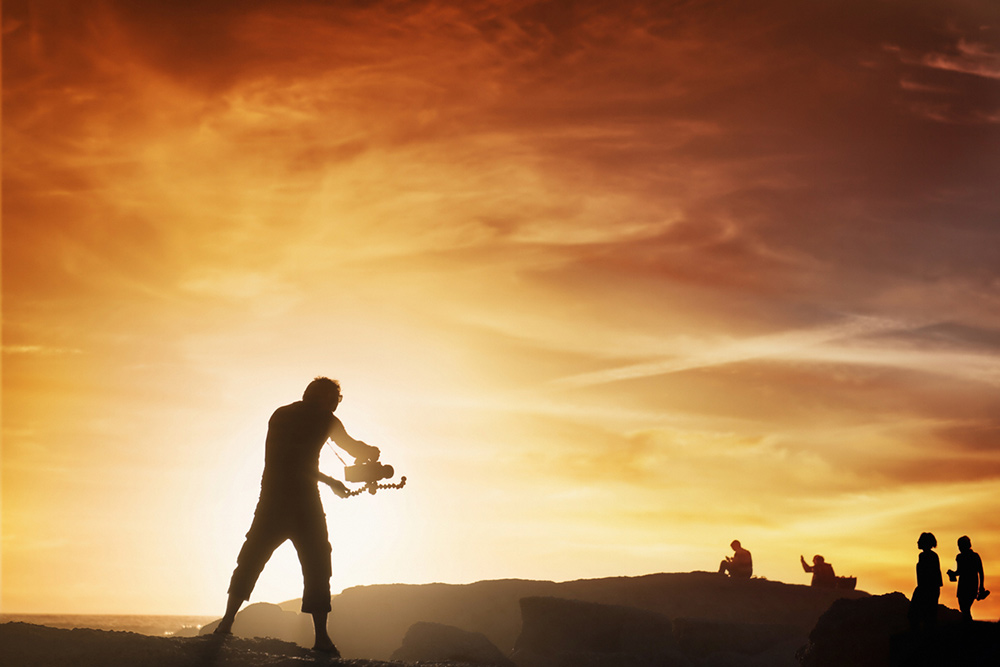
Photo by lisegagne via iStock
No matter who you are or how much experience you have, if you are shopping around for a new camera, you should without a doubt consider purchasing the incredible Panasonic 6K camera.
Moreover, if you shoot video, I would go as far as to say this camera should be number one on your list!
Learn More:
We Recommend
Panasonic DMC-FZ2500 Review
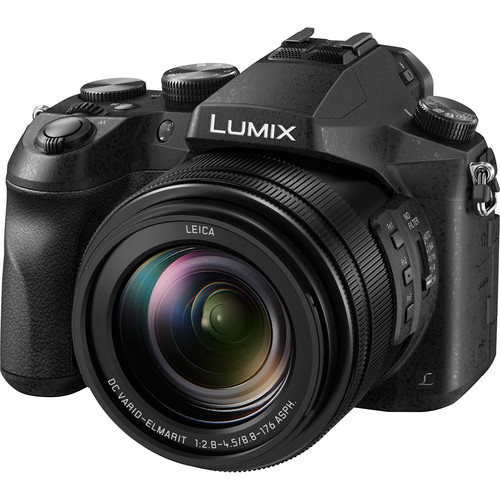
The Panasonic DMC-FZ2500 has got a name to match its very mighty build. The Panasonic DMC-FZ2500 is a 1”-type superzoom that was seemingly built for filmmaking.
This camera came out in 2016 (it was actually announced at Photokina that year). If you’re a fan of this line from Panasonic, then you’ll be pleased to know that the Panasonic DMC-FZ2500 features the same sensor as the FZ1000 did. All Panasonic did was pair this sensor with a new lens and a slightly different build.
Given the fact that this camera did come out 5 years ago, some of the Panasonic DMC-FZ2500 specs are out of date, however with its f/2.8-4.5 lens, its 4K video capabilities, and its nice electronic viewfinder, I still highly recommend the Panasonic DMC-FZ2500 for photographers and videographers in 2021.
To find out more about everything this camera has to offer, read our full Panasonic DMC-FZ2500 review.
Panasonic DMC-FZ2500 Specs
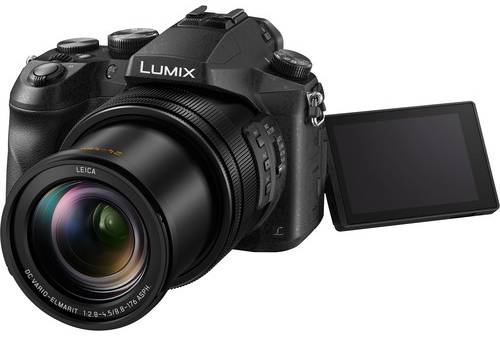
This camera features a 20.1MP sensor and a 24-480mm equivalent built-in zoom lens, which is a huge plus because you won’t have to go purchasing any Panasonic DMC-FZ2500 lenses for it.
It also features 4K video at up to 30p, a fantastic touchscreen, and an ISO range of 125-12,800. Its 5-axis image stabilization, which is available in movie mode, works wonders. So does its electronic viewfinder which features a 2.36m-dot resolution.
This camera can shoot at 12fps, comes with a built-in flash, and both microphone and headphone ports.
The only spec that is less than spectacular on this camera is its battery life, which is still reasonable at 350 shots.
Other Panasonic DMC-FZ2500 Specs Include:
- 20.1MP BSI-CMOS sensor
- 4K video capabilities at up to 30p
- ISO range of 125-12,800
- Hybrid 5-axis image stabilization in movie mode
- 3” fully articulating touchscreen with 1.04m-dots
- 2.56m-dot electronic viewfinder with 100% coverage
- 12fps burst mode
- Built-in flash
- 2.02 lbs
- 350-shot battery life
Panasonic DMC-FZ2500 Body & Design
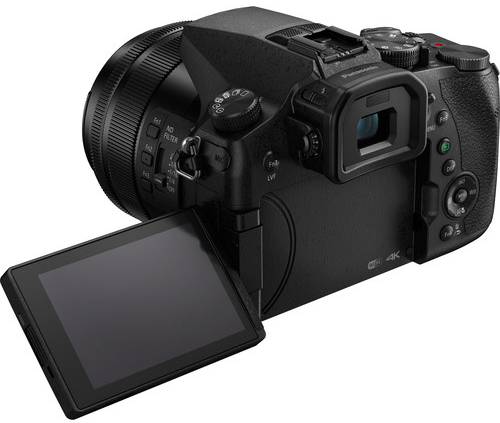
The Panasonic DMC-FZ2500 body is hefty. At 2.02 lbs and 5.42” x 4.01” x 5.3” this is not a camera you should expect to be able to bring with you everywhere. Of course, no superzoom camera is.
The Panasonic DMC-FZ2500 build isn’t just large and heavy, though, because it is made entirely with aluminum alloy. It feels like it can really take a beating.
Unfortunately, the design of this camera does drop off a little due to the plastic buttons that feel rather cheap. If it weren’t for the plastic buttons, the Panasonic DMC-FZ2500 design would have been one of my favorites of the last five years for sure.
Learn More:
Panasonic DMC-FZ2500 Build & Handling
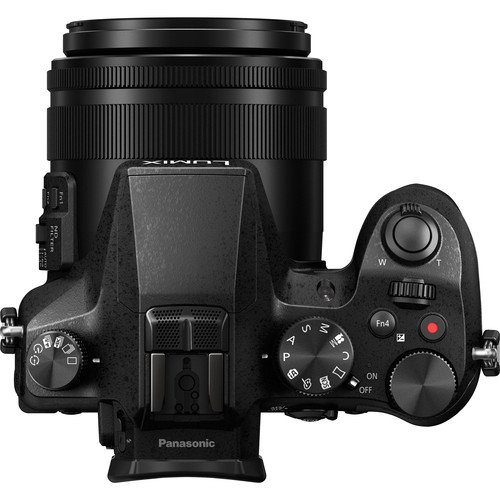
The Panasonic DMC-FZ2500 handling can really be defined by the camera’s large size. It isn’t the most comfortable to carry around all day, but Panasonic really tried. The grip on this camera is very large, but not so large that it prevents you from being able to reach all of the dials and switches that you need to.
One of my favorite parts about this camera is its 3” touchscreen, which can flip to its side and also rotate 270 degrees.
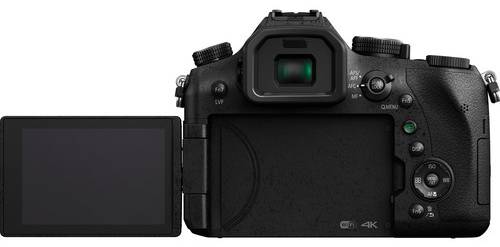
Since Panasonic was more interested in making this camera friendly to videographers than anything else, the touchscreen isn’t technically fully articulating because it gets stopped by the HDMI and USB ports. I don’t think it’s that big of a deal, but other photographers definitely disagree with me.
If I’m going to give any time to the handling of the touchscreen, then it’s only fair to also discuss the electronic viewfinder. The resolution of the EVF on this camera rivals many cameras that have just come out this year and it is far better than the EVF on the Sony RX10 III, which is its closest competitor.
Panasonic DMC-FZ2500 Video Performance
Huge thank you to TheCameraStoreTV for the Panasonic DMC-FZ2500 video performance test above.
As I already mentioned, the Panasonic DMC-FZ2500 is a phenomenal camera for videography, which is not only exciting because I rarely get to discuss cameras that are built for videographers, but it’s exciting because this camera has held up to the age test. It’s even more rare that I get to cover a camera 5 years old that is still this good for video.
So, what makes it so good? Well, the Panasonic DMC-FZ2500 shoots 4K video at up to 30p and can output 4:2:2 10-bit video, so long as you use its HDMI port to do so. You can even get V-Log L recording if you purchase it for an extra few dollars.
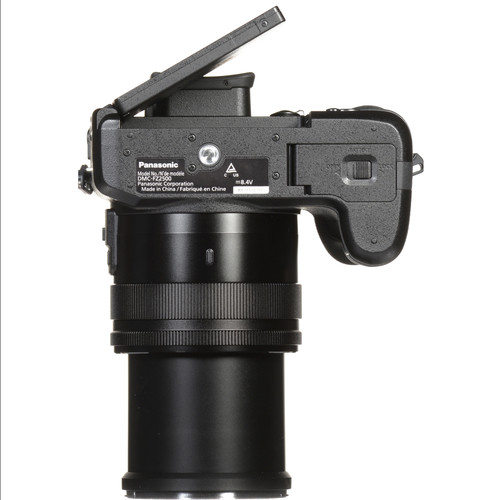
Conversely, you can shoot Full HD video at up to 60p and 200 Mbps.
This camera also comes with just about every video tool you can think of, including focus peaking, time codes, and color bars. It also comes with zebra pattern, a wind noise filter, and sound output.
If you’ve ever shot with the Sony RX10 III, the shooting experience with this camera is quite similar.
Panasonic DMC-FZ2500 Price
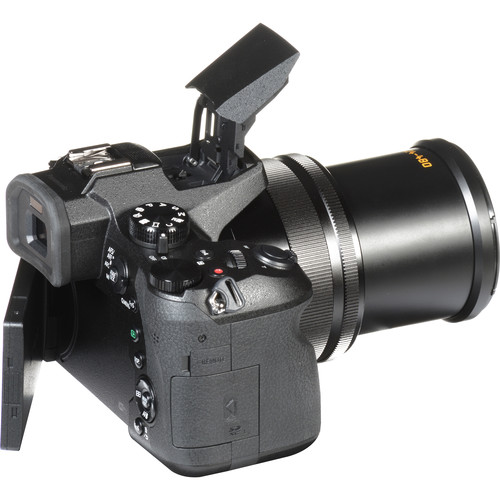
Given the fact that the Panasonic DMC-FZ2500 is five years old, you won’t be surprised to find out that the Panasonic DMC-FZ2500 price has plummeted recently.
When this camera first came out, it was being sold for $1,200. However, it is currently only going for around $900 new and even less if you purchase it used, which I highly recommend.
Like the old wisdom about never buying a brand-new car, I also believe you should try to avoid buying a brand-new camera simply because it loses so much value the second you take it out of the box.

If you’re trying to snatch a Panasonic DMC-FZ2500 for way cheaper, then you should check out MPB.
MPB is a used camera retailer that features a really reliable grading scale, so you know exactly what it is you’re purchasing. Plus, since MPB operates on multiple continents, they offer a far better selection than most used camera retailers.
While there are no used Panasonic DMC-FZ2500 models on MPB as of right now, they rotate through hundreds of products every day, so you should check the Panasonic DMC-FZ2500 page frequently.
Learn More:
We Recommend
Panasonic DMC-G7 Review

For those who don’t know, the Panasonic DMC-G7 is a midrange mirrorless camera by Panasonic that just so happens to be the company’s first ever mirrorless camera. That’s right. The Panasonic DMC-G7 came out in 2015 and Panasonic hadn’t ever released a mirrorless camera before this one.
So, I think it’s important that you keep this fact in mind while you read this Panasonic DMC-G7 review because, while there is definitely room for improvement with this model, it’s pretty solid considering Panasonic hadn’t done anything like it before.
The Panasonic DMC-G7 is dated in a few ways, which I’m going to get into more when I talk about the Panasonic DMC-G7 specs, but in other ways it is still surprisingly modern and competes with equipment much more expensive.
Let’s get started.
Panasonic DMC-G7 Specs
The Panasonic DMC-G7 definitely ages itself pretty immediately with its sensor, which is a 16MP Four Thirds CMOS. This sensor isn’t large enough to compete in a 2021 market for professionals.
However, as I mentioned in the intro, the Panasonic DMC-G7 also includes specs that you’d expect of something much more modern. For instance, you can shoot 4K video at up to 30p with this camera. Considering this solid video is then paired with a fully-articulating touchscreen, it should be considered as a mirrorless option for photographers who run vlogs or photographers who are simply interested in both photography and videography.
Other Panasonic DMC-G7 Specs Include:
- 16MP Four Thirds CMOS sensor
- 4K video at up to 30p
- 4K Photo mode
- 3” fully-articulating touchscreen with 1.04m-dots
- EVF with 2.36m-dots
- 7fps burst mode
- Built-in Wi-Fi
- 350-shot battery life
Panasonic DMC-G7 Body & Design
If you’ve heard anything at all about the Panasonic DMC-G7 body then you’ve likely heard that it feels a little, well, crappy.
In a really unfortunate decision, Panasonic opted to build a relatively good camera with a plastic body, which makes it feel cheap to the touch. It is frustrating that all of the other great Panasonic DMC-G7 features are overshadowed by the fact that it feels like a DSLR you might buy for your teenager.
However, if you can get past the fact that it feels so cheap, the Panasonic DMC-G7 design is otherwise quite intuitive.
On the top of the camera, next to the pop-up flash there is a dedicated dial that controls the Single, Self-Timer, Continuous, and 4K Photo modes. The much larger Mode dial sits on the opposite side of the flash, to its right, and the power button is right next to it.
The EVF toggle, as well as the mechanical flash release, sit next to each other right by the EVF which is placed where an optical viewfinder would be on a DSLR.
Learn More:
Panasonic DMC-G7 Build & Handling
When it comes to the Panasonic DMC-G7 handling, the first thing I have to discuss is the menu, which is easy to use and pretty straightforward. This intuitive menu is only aided by the touchscreen, which is bright and offers a great resolution considering how old this camera really is.
When you use the EVF on this camera, it will also feel like you’re using a much newer model thanks to the 2.36m-dot resolution. The EVF is a bit too big for my liking, but I know that other photographers really prefer the eyecup on this model to smaller versions found elsewhere. Whether you like it or not, it won’t be a make or break.
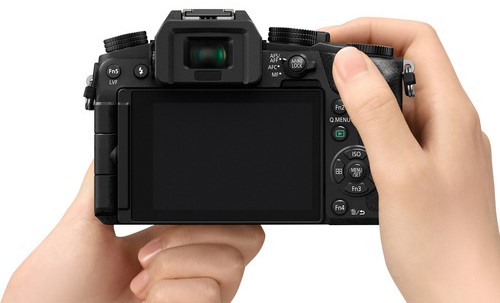
As mentioned, you can shoot up to 350 shots with this camera before you need to recharge your battery. Considering the fact that some newer cameras can only shoot somewhere in the 200s, I consider the battery life a win on this camera. I can go out for a long shoot and know that my extra battery is really only there for my own peace of mind. I likely won’t need it.
The Panasonic DMC-G7 build, as mentioned, is mostly plastic. The camera weighs 410 grams and measures 125 x 86 x 77mm. It feels comfortable to hold and comes with a deep grip.
Panasonic DMC-G7 Video Performance
As I’ve already talked about a few times in the article, the Panasonic DMC-G7 video performance is definitely going to be one of its best selling points in 2021 and beyond.
As 8K video starts to roll out in high-end cameras, we can only expect 4K capable cameras, like the Panasonic DMC-G7, to continue to drop in price. But, we are far from a world where 4K video is obsolete. To me, this makes the Panasonic DMC-G7 the perfect vlogging camera at the perfect price point for this coming year.

You can record 4K video with this camera at 30fps or 24fps. Conversely, you can record Full HD video at 60fps or 30fps.
The Panasonic DMC-G7 doesn’t come with in-body image stabilization, which means that in order for you to take full advantage of the videography skills in this camera, you will need to buy a lens that comes with image stabilization. Thankfully, there are plenty of Panasonic DMC-G7 lenses which fit the bill.
Panasonic also realised who their target audience was with this camera. It comes with a mic input, so that you don’t have to rely on the camera’s audio. It also comes with a micro USB, a micro HDMI, and a remote control connection.
Panasonic DMC-G7 Price
The Panasonic DMC-G7 price when this camera first came out in 2015 was $800. That wasn’t a bad price at all to begin with.
Of course, this price has dropped significantly since this time as Panasonic stopped manufacturing the Panasonic DMC-G7 which means you can only find them for sale from other photographers now.

I went to MPB to check the current price of the Panasonic DMC-G7 and was pleasantly surprised to find that you can purchase one in excellent condition for just $359.Conversely, you can purchase a Panasonic DMC-G7 in like new condition for $374. Regardless, it’s a lot more reasonable than $800 and the camera is now sitting in a price range, and with specs, that are amateur-friendly.
Of course, it can still be difficult to convince yourself to spend nearly $400 on a camera that you don’t know will work for you. This is why I always suggest that you shop with MPB. Whereas you never know the true quality of a camera that you pick up off of Craigslist or eBay, MPB hires an awesome crew of professional photographers and videographers to grade each piece of equipment that they decide to buy. And they’re picky about their buying process, too, because they want to make sure that you are going to be happy with your camera at the end of the day.
MPB also has a 30-day guarantee on each of their products. Try taking your broken camera back to a Craigslist seller and I’m assuming you’ll get laughed at.
For more info about why MPB is one of our favorite used camera retailers, you can read our review of the site in the learn more links below.
Learn More:
We Recommend
Panasonic DMC-GX85 Review
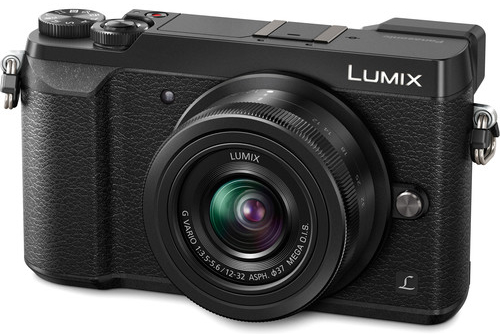
The Panasonic Lumix DMC-GX85 is getting up there in age, considering the fact that the camera was first released in 2016. However, for its used price, the Panasonic Lumix DMC-GX85 is still a really good option for photographers in 2021.
The Panasonic Lumix DMC-GX85 features all of the important specs that most hobbyists need in 2021. When it first came out it was considered a mid-range camera, and I honestly don’t think its status as a mid-range camera has slipped much since this time.
The Panasonic Lumix DMC-GX85 is just one step down from the Panasonic Lumix DMC-GX8, since it is built around a slightly smaller sensor. However, these two cameras are otherwise almost identical.
If you’re looking for a good budget camera in 2021, then the Panasonic Lumix DMC-GX85 might be it.
In this Panasonic Lumix DMC-GX85 review, I’ll walk you through its specs, its build, and your options for Panasonic Lumix DMC-GX85 lenses.
Panasonic Lumix DMC-GX85 Specs
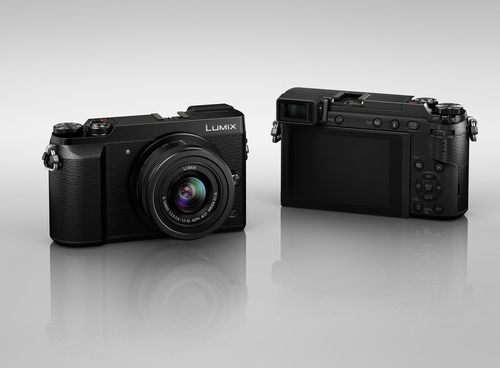
The Panasonic Lumix DMC-GX85 features a 16MP Four thirds MOS sensor, which is slightly smaller than the sensor offered by the GX8.
This camera also features 4K video capabilities, as well as a 2.76m-dot EVF. But, one of the biggest reasons why a lot of people swear by this camera is that it features 5-axis image stabilization with Dual I.S.
There are a few things that aren’t present in this camera’s specs list that I would have liked to see. For starters, the EVF does not tilt like it does in some of Panasonic’s other cameras. Additionally, it doesn’t have any weather-sealing, so you’ll need to be especially careful if you’re planning on shooting with it outside.
Other Panasonic Lumix DMC-GC85 Specs Include:
- 16MP four thirds sensor
- 4K video capabilities
- 5-axis image stabilization with Dual I.S.
- 6fps burst mode
- 2.76m-dot EVF
- 3” tilting touchscreen with 1.04m-dots
- Built-in flash
- 290-shot battery life
- .93 lbs
Panasonic Lumix DMC-GX85 Body & Design
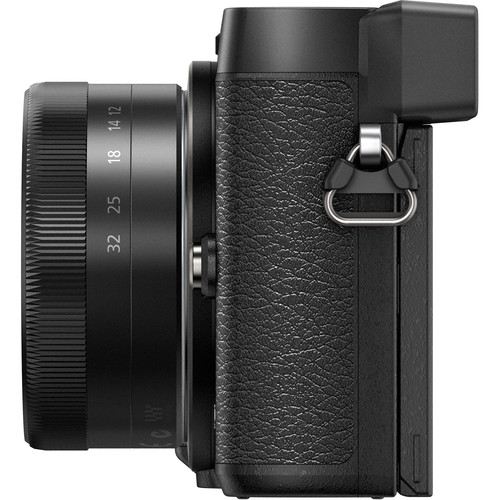
The Panasonic Lumix DMC-GX85 body measures 4.8” x 2.79” x 1.73” and weighs just under one pound.
So, it will be comfortable to lug around with you all day without being too small to actually hold and operate it. That is, unless you’re planning on using it with a ton of huge lenses. In this case, it won’t be very comfortable at all.
The camera is made of mostly metal, although the fake leather wrap that Panasonic chose doesn’t feel like it is of the best quality. It also makes it feel like I’m at risk of dropping the camera, so make sure that you’re using a wrist strap at all times.
Learn More:
Panasonic Lumix DMC-GX85 Build & Handling
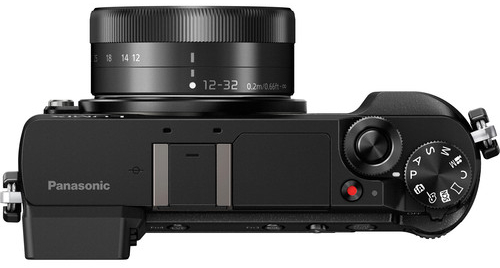
One of the most important things about the Panasonic Lumix DMC-GX85 handling is its battery life. At 290-shots per charge, you won’t find yourself running back to your house or hotel for an extra battery all too often, which is a great feature.
As I mentioned, this camera does not feature a tilting screen, which is a big bummer. However, since most of the camera’s other specs are pretty good when it comes to shooting video with it, I’ll let it pass.
One thing that you should be aware of when it comes to the Panasonic Lumix DMC-GX85 design is that since the camera is so small, the buttons on it are quite tiny as well. I wouldn’t be able to handle it in gloves or cold weather and some shooters with larger hands may have trouble handling it at all.
Panasonic Lumix DMC-GX85 Video Performance
Huge thank you to The Art of Photography for the Panasonic Lumix DMC-GX85 video performance test above.
As is pretty obvious from that video, the Panasonic Lumix DMC-GX85 does shoot 4K video and it does so at up to 30p. Conversely, it can shoot Full HD video at up to 60p.
The camera comes with focus peaking and zebra patterns, but it also comes with microphone level adjustments. In essence, this is one of the rare cameras we review that is actually designed with videographers in mind.
Since the Panasonic Lumix DMC-GX85 does have a really good touchscreen, recording video with it is pretty fun. You’ll be able to focus easily on whatever subject you’re tracking.
This camera also features 4K Live Cropping, which allows you to create a Full HD video clip that zooms using 4K pixels.
This camera also comes with 5-axis image stabilization that you can use while recording video. So, the camera is a really good option for travel vloggers.
Panasonic Lumix DMC-GX85 Price
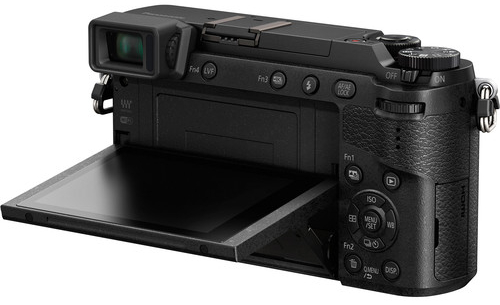
Given the fact that the Panasonic Lumix DMC-GX85 is now 5 years old, I think you’ll be pleasantly surprised at the Panasonic Lumix DMC-GX85 price.
Obviously, you can’t get this camera new anymore. So, you’ll have to go to a used camera retailer in order to find one.
I looked up the pricing on used Panasonic Lumix DMC-GX85 bodies on MPB before publishing this article and found that it starts at $354.

If you’d like a Panasonic Lumix DMC-GX85 in “like new” condition, then you can get it for $395.
I like to recommend that PhotographyTalk readers shop for their used camera needs at MPB because they make it easy to purchase used. For starters, they actually grade their used camera gear accurately. So, if the ad says your camera will be in “like new” condition, then you can actually expect it to show up at your front door like that.
But, MPB also offers you the option to trade in your old gear and use whatever money you make off of that purchase towards your new camera. This way, you can actually get some value out of your old gear, while simultaneously keeping your closet clean.
To find out more about why I recommend MPB to my readers, you can read the MPB Review in the learn more links below.
Learn More:
We Recommend
Panasonic FZ1000 Review
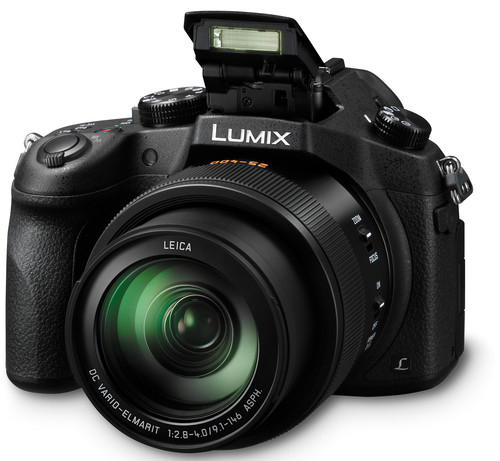
The Panasonic FZ1000 is a compact camera that comes with a long zoom lens. So, it's the perfect alternative to a more traditional entry-level DSLR. Or, at least it was, when it first came out.
The Panasonic FZ1000 is definitely getting up there in age. It originally came out in 2014. But, for photographers who are looking for a good entry-level camera on a budget, you can’t go wrong with the Panasonic FZ1000, since it was a lot heavier and larger compared with similar cameras upon its release. This weight translated to far better specs when it first came out and a lot of these specs have translated well to a 2021 shooting experience.
If you’ve been looking into purchasing a Panasonic FZ1000, then you need to read this Panasonic FZ1000 review first. It’ll teach you everything you need to know about the Panasonic FZ1000 specs, its design, and most importantly, the price.
Panasonic FZ1000 Specs
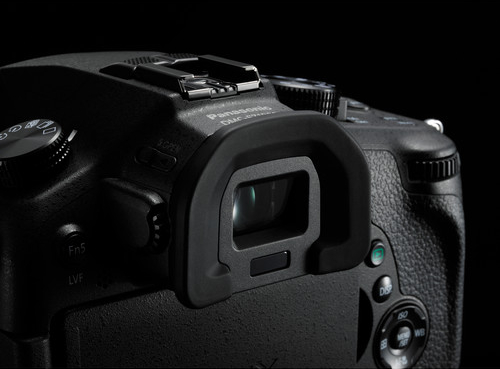
The Panasonic FZ1000 features a 20MP BSI-CMOS sensor, an ISO range of 125-12,800, and optical image stabilization.
As I mentioned, you don’t have to worry about buying any Panasonic FZ1000 lenses, since the camera comes with a built-in 9.1-146mm zoom lens. In practice, it will give you 16x optical zoom.
Unlike many cameras as old as this one, it actually features 4K video at up to 30p. It also comes with a 49-point AF system, a 3” 921k-dot fully articulating LCD screen. Unfortunately, this screen isn’t a touchscreen.
But, to make up for the lack of a touchscreen, the camera does offer a really great electronic viewfinder with 100% coverage and an impressive 2.35m-dot resolution.
Other Panasonic FZ1000 Specs Include:
- 20MP BSI-CMOS sensor
- ISO range of 125-12,800
- 3” 921k-dot fully articulating LCD screen
- 2.35m-dot electronic viewfinder with 100% coverage
- Built-in 9.1-146mm lens
- 4K video capabilities at up to 30p
- 12fps burst mode
- 49-point AF system
- Built-in flash
- Built-in Wi-Fi
- 360-shot battery life
- 1.83 lbs
Panasonic FZ1000 Body & Design
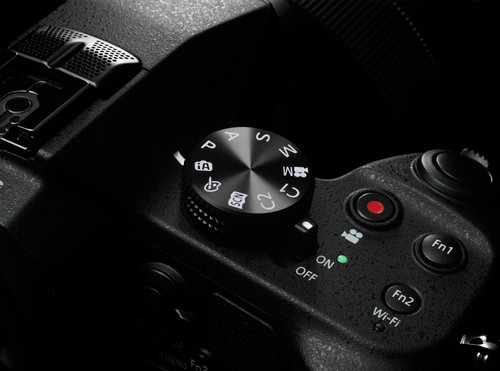
The Panasonic FZ1000 body weighs 1.83 lbs and measures 5.39” x 3.9” x 5.16”, which means it is really only considered a compact camera because of the year it came out. However, for a photographer who thinks they are interested in a DSLR, this camera will give them a more authentic shooting experience since it is so large.
The camera is made mostly out of thick plastic. It doesn’t feel like a professional camera, but it also doesn’t feel like it’s going to fall apart in your hands.
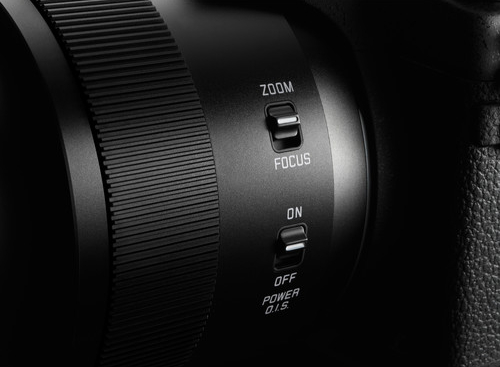
You get an on-screen quick menu with this camera that you can access via the Fn3 button. This quick menu is rather easy to use. When it comes to the main menu, you can expect a menu with five subcategories: rec, motion picture, setup, playback and custom.
The ring on the lens will either control the focus or the zoom, depending upon what you choose.
Learn More:
Panasonic FZ1000 Build & Handling
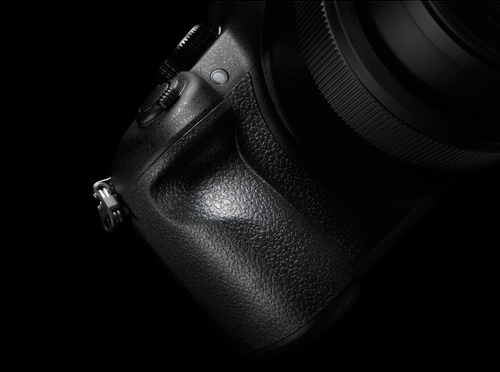
When it comes to the Panasonic FZ1000 handling, it mostly feels like you’re shooting with a DSLR.
The electronic viewfinder is fun to use since it does feature such a high resolution. The LCD screen is far less impressive, though, since it isn’t a touchscreen. It is fully articulating, though, which provides some solace.
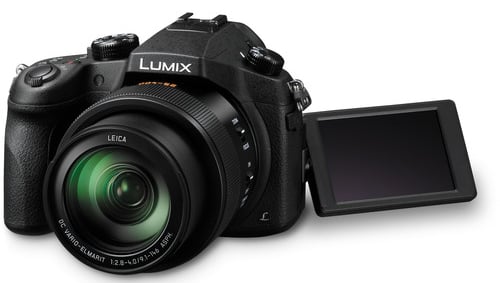
The camera is rated for 360-shots per charge, which is not bad considering all of the features this camera has. You likely won’t need to carry an extra battery around with you for day shoots.
Panasonic FZ1000 Video Performance
Since I’ve been writing about older cameras so frequently lately, I have gotten pretty used to talking about cameras that have less-than-stellar video quality. But, as you can see in the Panasonic FZ1000 video performance test from Dylan Lierzabove, the Panasonic FZ1000 isn’t one of these cameras.
Despite the fact that the Panasonic FZ1000 is 7 years old, it still features 4K video at up to 30p, as well as Full HD video at up to 60p. In fact, it was actually the first compact camera that could record 4K video at 30p.
I still wouldn’t necessarily say that this camera is designed for videographers because it doesn’t come with a headphone jack, but it does feature a microphone jack so that you can capture better quality audio. It also has optical image stabilization and a micro-HDMI port if you’re interested in recording with an external drive.
One fun feature on this camera is the fact that it allows you to choose a frame after you’ve recorded 4K video and save that frame as a 8MP photo.
Panasonic FZ1000 Price
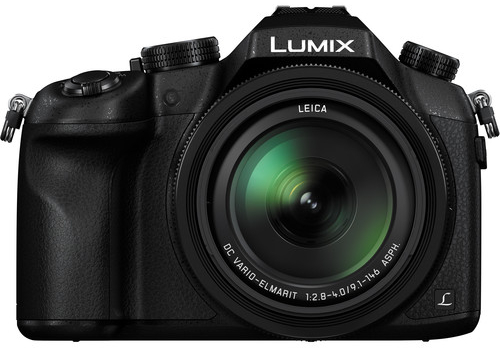
The Panasonic FZ1000 was praised when it first came out for being relatively cheap, since it was under $1,000. However, for photographers on a budget in 2021, an under $1,000 price tag isn’t going to cut it.
Thankfully, you can find plenty of used Panasonic FZ1000 bodies available for far cheaper online.
I started doing a little bit of bargain hunting for you guys and figured out that MPB currently has a Panasonic FZ1000, in excellent condition, for just $439.This Panasonic FZ1000 even comes with its original packaging.

I usually recommend that photographers find their used camera gear on MPB because I really trust their rating system, which says a lot since I’m so picky with my old camera gear. I also recommend MPB because it features a trade-in system so that you can simultaneously sell your old gear and buy new gear.
I’m definitely one of those photographers who is a little too lazy to sell most of my equipment and MPB makes it easy to do so.
For all of the other reasons why I love MPB, you can read my full MPB review in the learn more links below.
Learn More:
We Recommend
Panasonic FZ300 Review
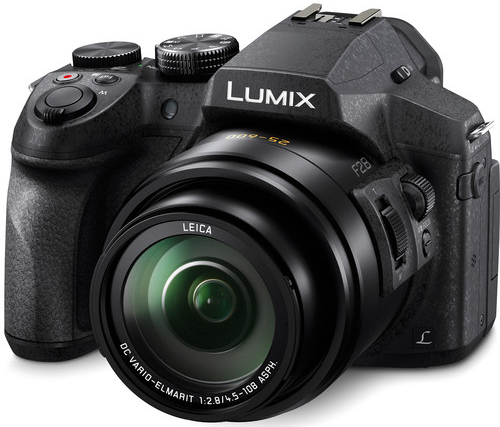
The superzoom Panasonic Lumix FZ300 is a fantastic camera with a lot of high-end capabilities built into a very compact machine. The FZ300 makes beautiful still images, films video in 4K resolution, and has a 24X f/2.8 aperture zoom lens with a range equivalent to a 25-600mm lens in Full Frame format.
Is the Panasonic FZ300 a good fit for you? We’ll have to find out!
It’s not an interchangeable lens camera, it was released seven years ago, and the image sensor is smaller than MFT. However, it has impressive video specs, works well in difficult situations, and can be found as a pre-owned camera on the online platform MPB for less than a fast normal range zoom lens for cropped format cameras.
Table of Contents:
- The Case for Superzoom Compacts
- Panasonic Lumix FZ300 Specs
- Lumix FZ300 Build & Handling
- 4K Video with FZ300
- Still Imaging with FZ300
- The Photographer Who Could Use an FZ300
- Final Thoughts: Panasonic FZ300
The Case for Superzoom Compacts
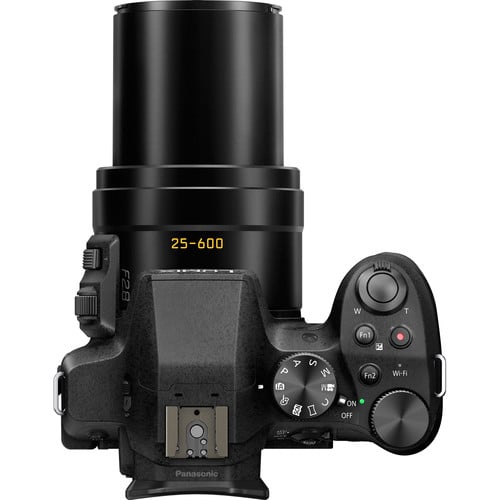
In the days of film cameras, the compact Point & Shoot (P&S) camera style had a wide appeal to all sorts of photographers. They were easier to carry around than a bag of stuff for a 35mm SLR, often being smaller and lighter than an auxiliary flashgun for other cameras. When everyone turned to digital, this style of camera was initially popular.
But they often had limitations for experienced photographers, such as a limited range for the lens, slow f-stops, and lack of manual overrides. That brought in a style of camera sometimes called a bridge camera or a superzoom compact. These had wide to very long telephoto zoom lenses, faster maximum aperture for the lens, and some type of manual control.
In order to keep the cameras compact, the sensor sizes were made smaller than the crop format interchangeable lens cameras. This had an added benefit of enabling high-power telephoto lenses in a very compact size (see our article on sensor sizes and crop factor for a detailed explanation).
Manufacturers added manual controls for exposure, or at least a huge amount of exposure compensation, and as video grew in people’s wants, these cameras were also optimized for very high-resolution recording. For cameras costing and weighing less than some individual lenses or accessories for larger system cameras, what’s not to love?
Panasonic Lumix FZ300 Specs
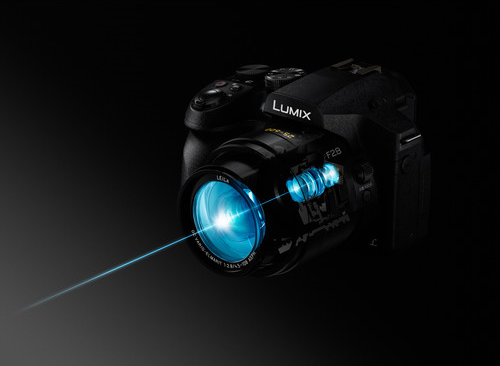
One such camera was introduced in 2015 - the Panasonic Lumix FZ300. At the heart of the camera is a 12MP 1/2.3 inch sensor and a Leica Vario-Elmarit 4.5-108mm f/2.8 aspherical zoom lens that works out with a 5.8X crop factor as being the equivalent of a 25-600mm lens in Full Frame format.
Through the lens (TTL) viewing is accomplished with either the eye-level electronic viewfinder or a fully articulated rear view screen. The camera is weather sealed and can capture still images at 12fps or record up to 4K video. The ISO ranges from 100 - 6400. There is a built-in flash, 49 AF points, and a shutter speed up to 1/16,000. There are also several exposure modes, including full manual control.
The sensor size is 4.55 x 6.17mm, the camera weighs 24 ½ ounces, and measures 5.2 x 3.62 x 4.61 inches. It records both the still images and videos on a single SD card.
Learn More:
- Digital Camera Features You Need to Know
- What You Need In a Beginner Photography Kit
- Panasonic DMC-GX85 Review
Lumix FZ300 Build & Handling
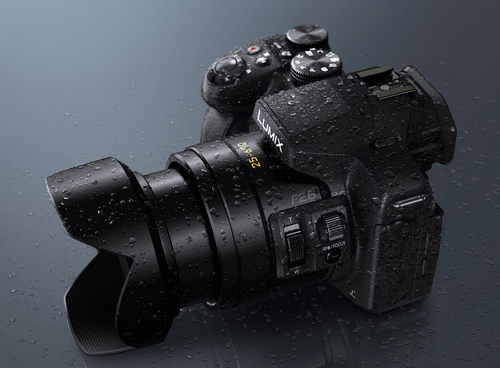
The Lumix FZ300 is comfortable to use since it has a large handgrip and a form factor similar to a DSLR or mirrorless camera. As mentioned before, the camera is weather sealed and is rather rugged for a compact camera.
The camera is not a featherweight, coming in at 24 ½ ounces with a battery, but the moderate weight allows for comfortable holding whether using the camera at eye level or with the 3” fully articulated rear view screen.
Truth be told, a little weight is a welcome thing when trying to steady the camera at the long telephoto end of its zoom. Even with the excellent image stabilization feature, the long end of the telephoto is very high magnification.
The controls on the camera body and the side of the lens are simple in design and fall to hand readily in use. Some camera functions are accessed by the rear viewscreen, but nothing takes too many menus to get to, so it’s an easy camera to operate in the field.
4K Video with FZ300
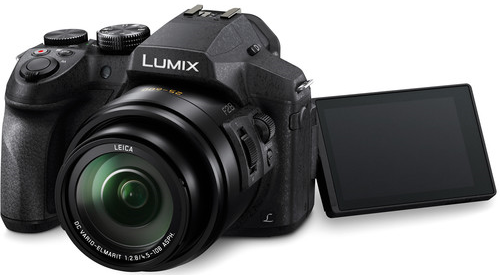
Another benefit of a smaller sensor with high resolution is that you can upgrade the video. The Panasonic FZ300 is capable of 4K video at 30p, which is really nice for a compact camera at this price.
Very rapid autofocus and good image stabilization are two welcome features for videographers. You can also opt for recording in several lower resolutions since 4K video takes up a lot of room on a card. You will want a high-capacity SD card with fast read/write speeds to get the most out of the 4K capability of the FZ300.
Still Imaging with FZ300
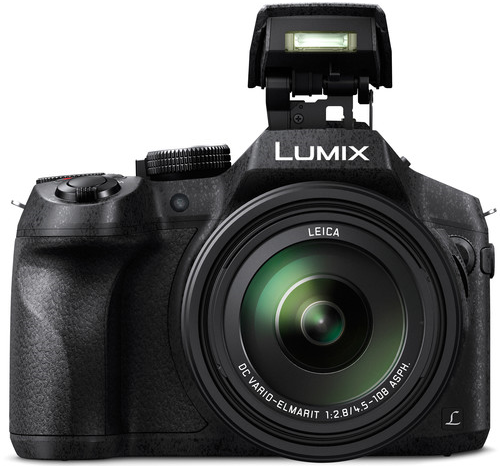
The Panasonic FZ300 can record in several JPEG resolutions or in Panasonic’s RAW format. Holding the camera at eye level is very comfortable in both portrait landscape orientations, but it can get a little squirrely when using the rear screen at the long end of the telephoto zoom or when in portrait orientation at any focal length.
Images have lots of color and exposure depth in RAW, but the low light limitations of smaller sensors show up in marginal lighting conditions. The smaller sensor means it’s also a challenge to achieve selective focus in some conditions.
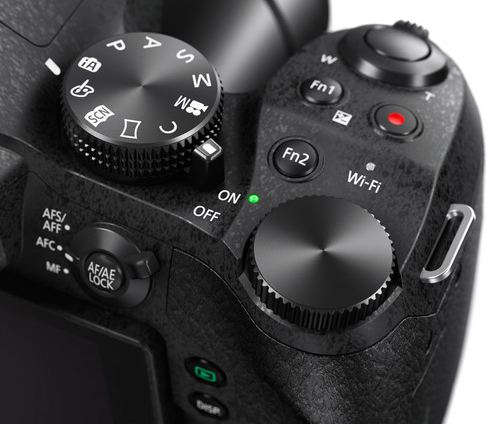
What type of photographer would benefit from a Panasonic Lumix FZ300? Photographers desiring a very long telephoto in a small size will love the FZ300. Shooting wildlife, sports, the moon, and other distance photography is where this small camera really shines.
The 4K video in a small camera with a very variable lens will appeal to most serious photographers wanting to try out video, plus it’s a great camera for vlogging.
Additionally, anyone using high-end gear for serious or professional photography or videography will enjoy taking this camera for fun photo and video outings. Having full manual control available will satisfy any creative urges.
Final Thoughts: Panasonic FZ300
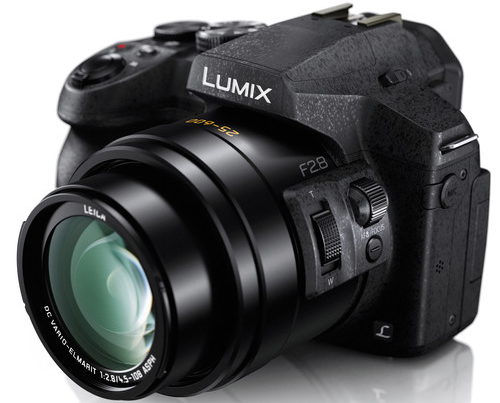
It’s hard to go wrong with a camera this good, especially since you can get one in like-new or excellent pre-owned condition right now at MPB for under $400! MPB is the first place I go when considering a new-to-me camera or lens, and I highly recommend it be the first place you go as well.
In addition to the fabulous cost savings of used equipment, MPB gives us peace of mind with accurate item descriptions, a generous seven-day return or exchange period, and a six-month warranty on virtually everything they sell.
That means you get great gear and peace of mind to go with it, too. Add in a great price, and you have the makings of a great gear-buying experience with MPB. I should know - I’ve bought, sold, and traded gear on MPB for years!
Yes, the Panasonic Lumix FZ300 is an older camera, has a small sensor, and a few handling quirks, but it's also fully capable of producing superb video, and having the equivalent of 600mm telephoto in a compact camera allows for some image captures unheard of with a smartphone camera. If you want a capable camera on the cheap, the FZ300 might be the one for you.
Learn More:
We Recommend
Panasonic G85 Review
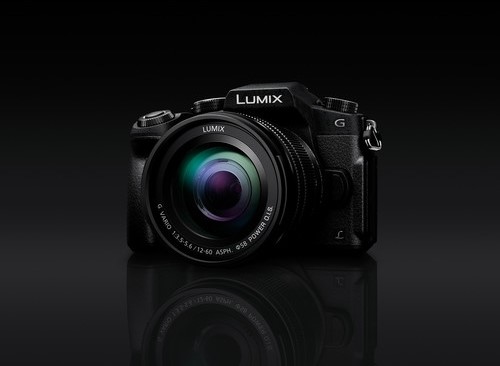
I think that the last decade has definitely been Panasonic’s best to date and one of the stand out cameras of that decade was the Panasonic G85 which came out in 2016.
The Panasonic G85 is a mirrorless camera that is considered mid-range. If you’ve ever shot with the Panasonic G7, then you are likely already pretty familiar with the Panasonic G85 setup since they are essentially in the same lineup, even though Panasonic never really admitted this.
The Panasonic G85 has a lot of specs that will make it really appealing to professionals, but it also has some specs that make it appealing to an enthusiast. This appeal is only furthered by the fact that the Panasonic G85 is now going on 5 years old and is pretty cheap.
The Panasonic G85 does have quite a few competitors, namely the Sony a6300 and the Fujifilm X-T10, both of which I’ve reviewed for PhotographyTalk before.
In this Panasonic G85 review, I will walk you through all of the Panasonic G85 features, as well as the Panasonic G85 price (used, of course) and the Panasonic G85 video performance.
Panasonic G85 Specs
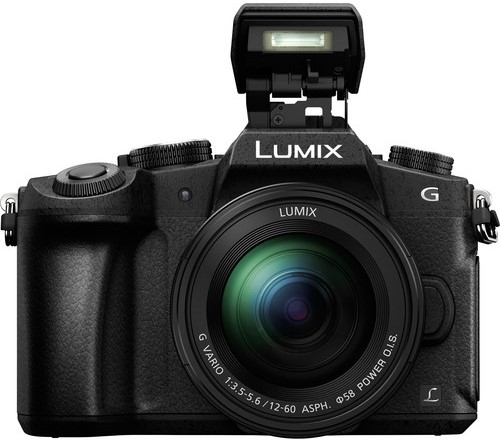
As I already mentioned, the Panasonic G85 is a mirrorless camera. It comes with a 16MP sensor, a 5-axis image stabilization system, and a weather-proofed body.
Although the Panasonic G85 did come out quite a few years ago, it is still new enough to feature 4K video capabilities, which is an added bonus for enthusiasts who may be looking to get into videography.
The screen on the Panasonic G85 is a 3” articulating touchscreen with 1.04m-dots, which is another added bonus for potential videographers.
The electronic viewfinder comes with 2.36m-dots and the camera can shoot up to 6fps in burst mode while using its autofocus system.
Other Panasonic G85 Specs Include:
- 16MP Four Thirds sensor
- 5-axis in-body image stabilization system
- 2.36m-dot EVF
- 6fps burst mode with autofocus
- Contrast detect autofocus system with 49-points
- 3” fully articulating touchscreen with 1.04m-dots
- 4K video capabilities at up to 30p
- Weather-proofed body
- .99 lbs
- 320-shot battery life
Panasonic G85 Body & Design
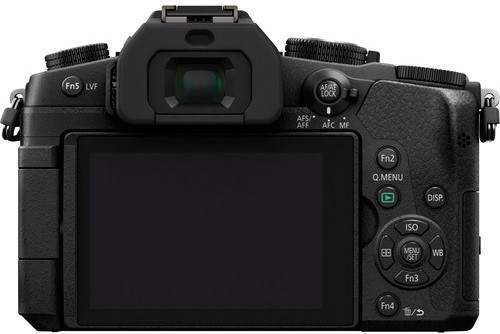
The Panasonic G85 design is not much different than other cameras in this lineup. It comes with a magnesium front plant and is weather-proofed. It weighs just under 1 lb, so it still seems pretty sturdy for a mirrorless camera.
It did come with a slightly larger grip, as well, as compared to previous models. I am going to talk about this a little later on in the video section, but the SD card was (finally) moved to the grip.
Still, if you were looking at the Panasonic G85 and the Panasonic G7 on a table, you likely wouldn’t know which is which.
Learn More:
Panasonic G85 Build & Handling
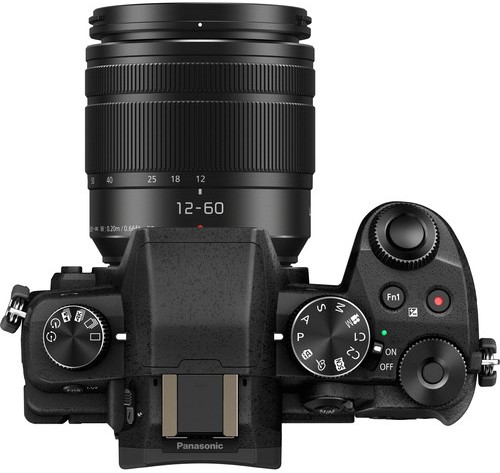
The Panasonic G85 handling is pretty fun because you don’t need both hands to operate this camera if you’re going to be shooting with the kit lens or a lens of a similar size.
All of your controls are easily in reach of your right hand, and despite the fact that this camera is weather-proofed which means the buttons are a little stiffer, they are each still easily pressed.
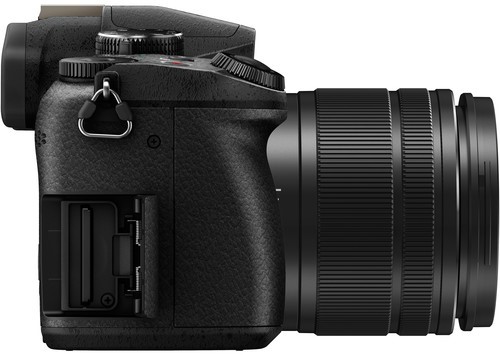
Where the camera is not made of magnesium, it is made of rubber, which lends to an easier grip. Of course, the slightly larger grip also helps to control your camera with just the one hand.
The customization of this camera is also very thorough. It comes with 5 different customizable buttons and 5 different customization slots in the menu.
Panasonic G85 Video Performance
The video test above is by Nolan Gunn.
Before diving into all of the pros and cons of the Panasonic G85 when it comes to video, I think it’s pretty important to give you all of its video specs.
As I already mentioned, the Panasonic G85 does shoot 4K video at up to 30p at 100 Mbps. You can also shoot full HD video at up to 60p.
The camera comes with a headphone and microphone socket, so you can monitor your audio levels and use external microphones while shooting. However, you may just find that the built-in stereo microphone is good enough for your purposes, especially if you don’t consider yourself a serious videographer, because this built-in microphone comes with a filter that prevents wind noise.
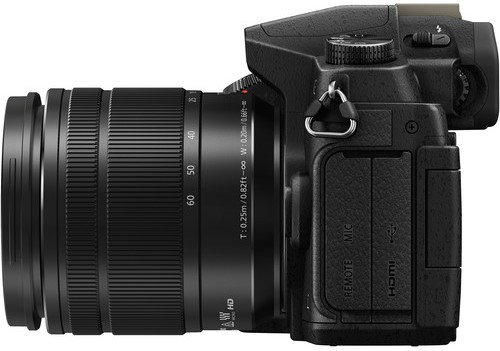
One change that Panasonic implemented with this camera that a ton of videographers were really stoked on when it happened was that the SD card slot was moved to the grip of the camera. On Panasonic models that came out before this one, the SD card slot was super inconveniently located on the bottom of the camera and it was basically a disaster.
If you’re paying attention (and owned older Panasonic models), you likely noticed that all of the jacks used to be located on the grip and are wondering where they are on this model. They’re located on the left side of the camera.
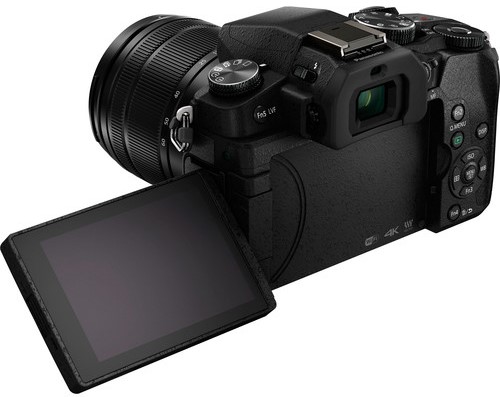
The stabilization works incredibly while shooting video, especially because of some recent firmware updates that Panasonic implemented. There are some Panasonic G85 lenses which come with image stabilization, the camera itself has in-body image stabilization, and the camera comes with a feature called “e-stabilization” which essentially acts as your editing buddy. It can crop some of your footage in order to make any videos you’re taking by hand look less shaky.
While the image stabilization works wonderfully with video, the autofocus is less wonderful. It was definitely improved in the Panasonic G85 build, but the camera still has some problems working with certain lenses while shooting video with the autofocus on.
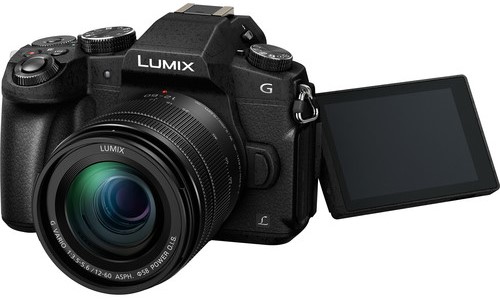
Another slight issue that this camera has when it comes to its video capabilities is low light shooting. It does only feature a micro four thirds sensor, so it can’t handle lower ISOs like similar cameras from other manufacturers. However, its low light shooting was still improved over older models and unless you are a professional photographer shooting video in low light scenarios frequently, the level of noise that is introduced to your video shouldn’t be a huge deal.
One last thing I need to say about the Panasonic G85 video capabilities is that you should buy an extra battery. Its 320-shot battery life isn’t exactly great even if you’re strictly shooting stills, but it really seems to plummet when you’re shooting video. Save yourself the hassle and buy an extra battery right out of the gate.
Panasonic G85 Price
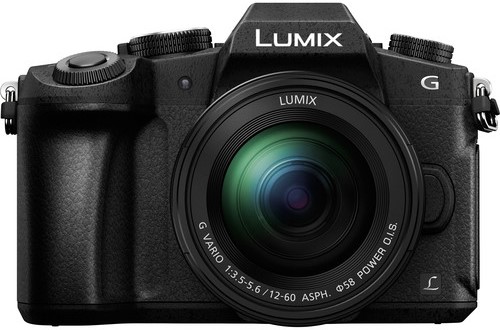
When the Panasonic G85 first came out in 2016 it cost $900. This makes sense since it’s a really capable camera, but it also definitely was not such a good deal that I felt like I had to rush out and immediately purchase one.
Given the fact that it has been a few years, you can now purchase a much cheaper used Panasonic G85 from a variety of retailers.
I searched MPB for their used Panasonic G85 bodies and they currently have over a dozen starting at $554 for one in excellent condition and ranging up to $579 for one in like new condition.

I think this is an extra good deal if you can find a Panasonic G85 body that comes in its original packaging (a few of which do) because that will help you to get a better resale value when you inevitably decide to upgrade a few years down the line.
I used MPB for this price check because I think that MPB has the best condition cameras on the market. You could find a cheaper Panasonic G85 on Ebay, but then you’re really guessing as to what the camera will look like when it shows up at your front door and a $20 difference, to me, isn’t worth the crushing anxiety I’ve dealt with when I realized I just bought a camera that doesn’t work.
MPB hires professional photographers and videographers to rate all of the camera gear they buy from individual photographers so you know that the rating system is topnotch.
Learn More:
We Recommend
Panasonic GH5 Review
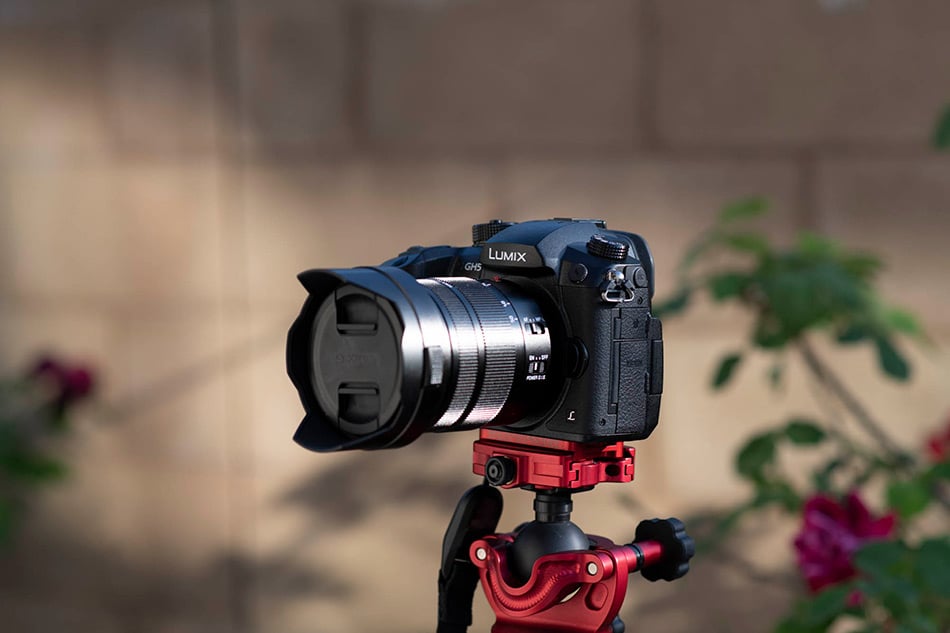
The Panasonic Lumix DC-GH5 is a mirrorless all-rounder camera, aimed to satisfy those who are both into taking stills and making videos.
This camera was released in 2017 and it replaced the Panasonic DMC-GH4 which was the world's first mirrorless camera with 4K video recording capabilities. Overall, the GH5 improves many features of its predecessor, both in terms of video and photography.
Though it’s two years old, I’m just now getting my hands on one, and spoiler alert...I’m sorry I waited so long!
Just the other day, I compared the Sony a7R III to the Panasonic GH5, but today I wanted to give more attention to the GH5 in a standalone article.
Could this be the perfect camera for you? Find out in the following Panasonic GH5 review.
UPDATE: I've now had this camera for about six months.
Though I primarily use it for video, I've taken a fair number of stills with it as well.
In the video above, I outline what I like, what I don't like, and whether or not you should pick one of these cameras up in 2019.
Panasonic GH5 Review: Essential Specs
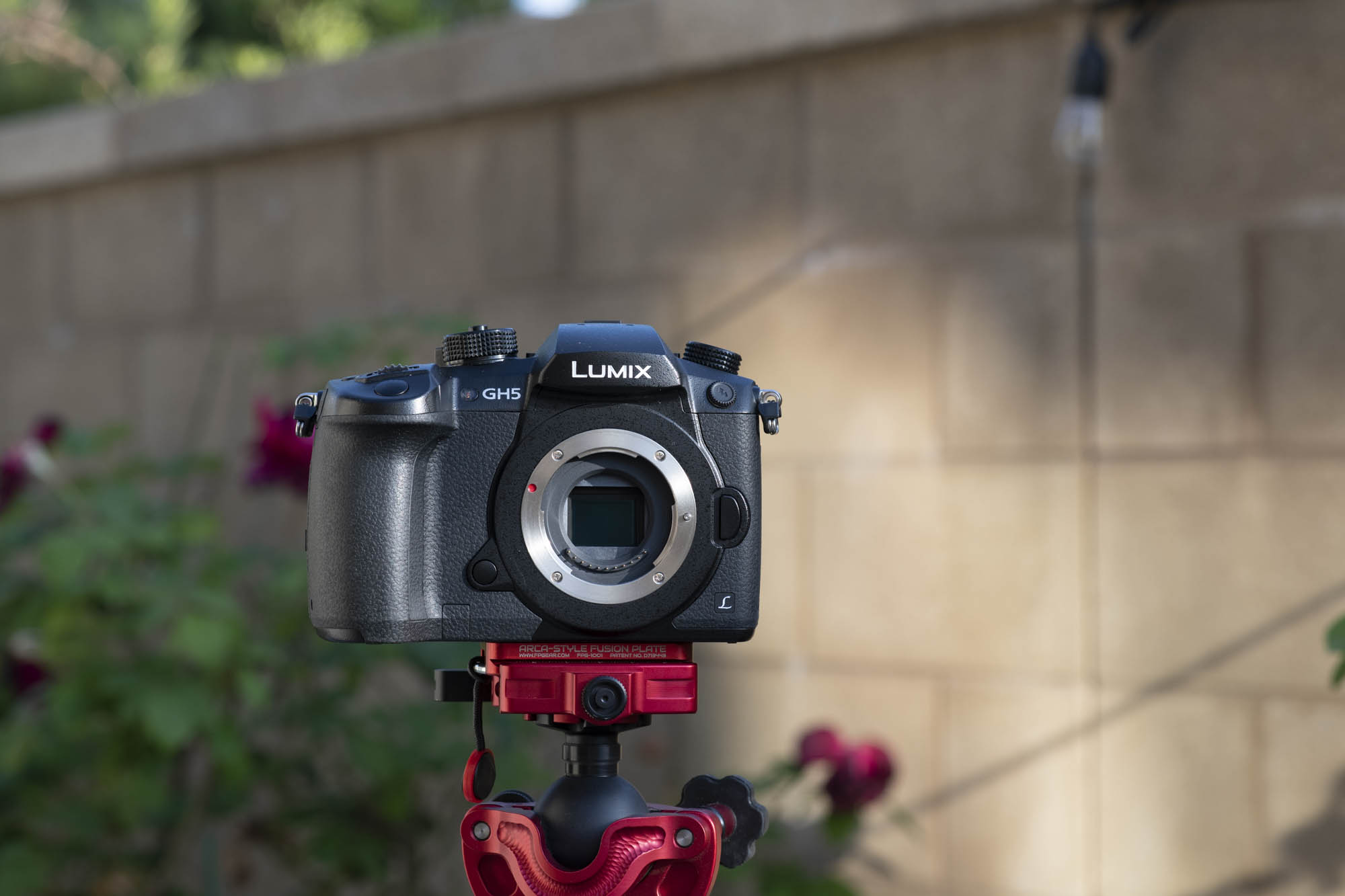
The Panasonic Lumix DC-GH5 was built around a 20.3MP micro four thirds sensor with no low pass filter and a Venus Engine 10 processor.
The removal of the low pass filter, in combination with the GH5’s improved sensor, produces a significant visual improvement in each image's fine details.
So, needless to say, image quality is superb with accurate color rendition, gorgeous detail, and good dynamic range for a micro four thirds camera.
The GH5’s dual image stabilization combines the camera’s in-body stabilization with the in-lens stabilization offered by most of Panasonic’s compatible lenses. Together, this allows the user to shoot with a longer focal length lens at slower shutter speeds, minimizing or eliminating the human jitter factor. As I noted in my comparison of the GH5 to the Sony a7R III, the GH5’s image stabilization is without equal, in my opinion. See it in action in the video above by JK Flash.
It performs so well thanks to the hybrid design of the system. It combines sensor-shift stabilization in-body with stabilized lenses, the result of which is the ability to shoot with a shutter speed that’s five stops slower than what would normally be possible when hand holding the camera.
Not only does the image stabilization work like a charm for still photos, but it’s a champ for handheld video shooting as well.
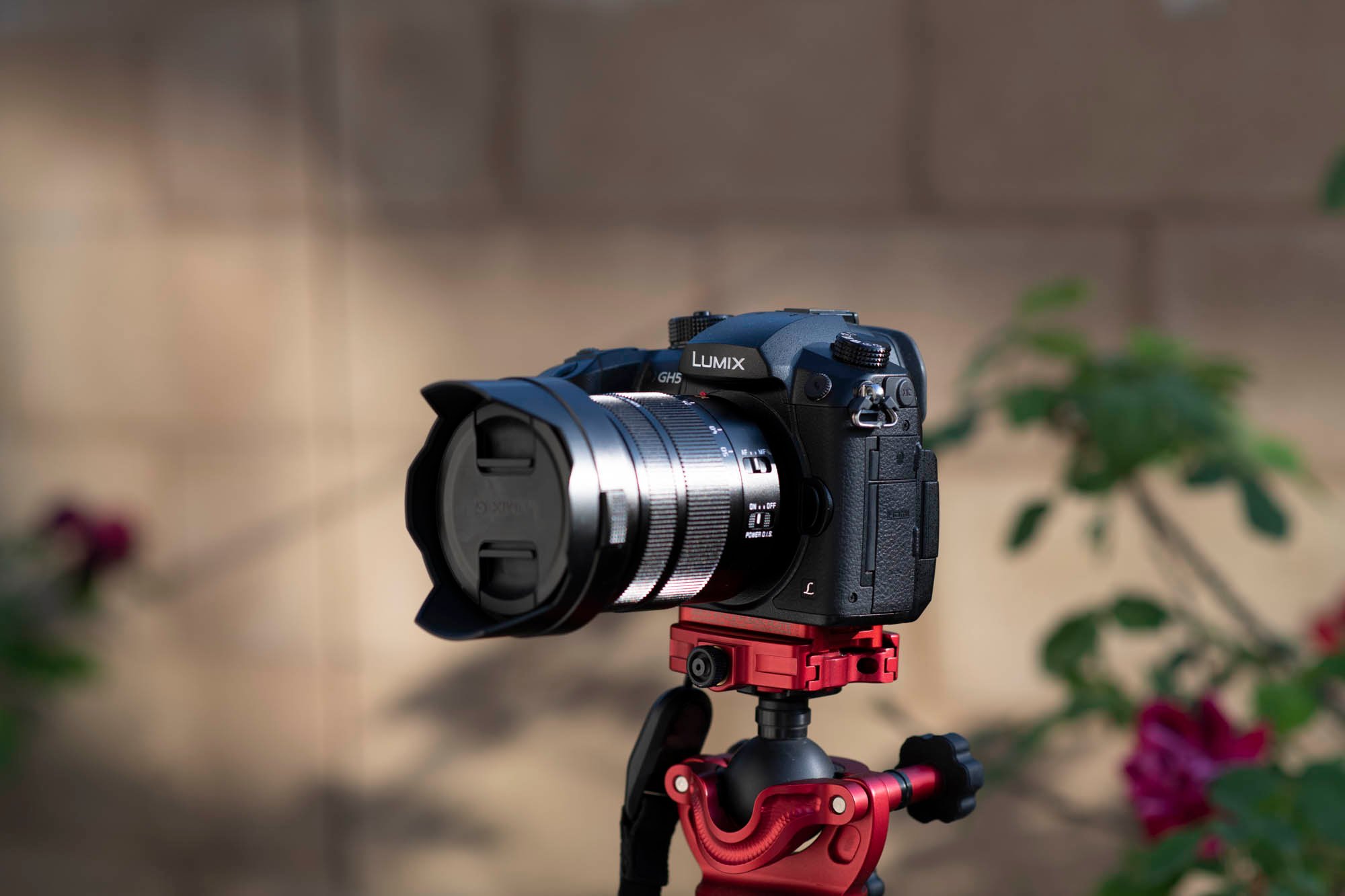
The GH5 comes with a 225-point autofocus system along with DFD (Depth from Defocus) technology. The company claims the camera achieves ultra-high-speed Auto Focus in up to 0.05 seconds. There shouldn’t be a problem for the camera to acquire focus even in low-light situations since DFD technology works in light levels as low as -4EV.
I used this camera this past weekend to take photos of my son’s 4th birthday party, and I can attest to the lightning-fast performance of this camera’s autofocus system.
Granted, I didn’t have a chance to test it out in low light, but I can assure you that this rig has a more than capable autofocus system when taking photos of kids on a sugar high running around in typical lighting situations.
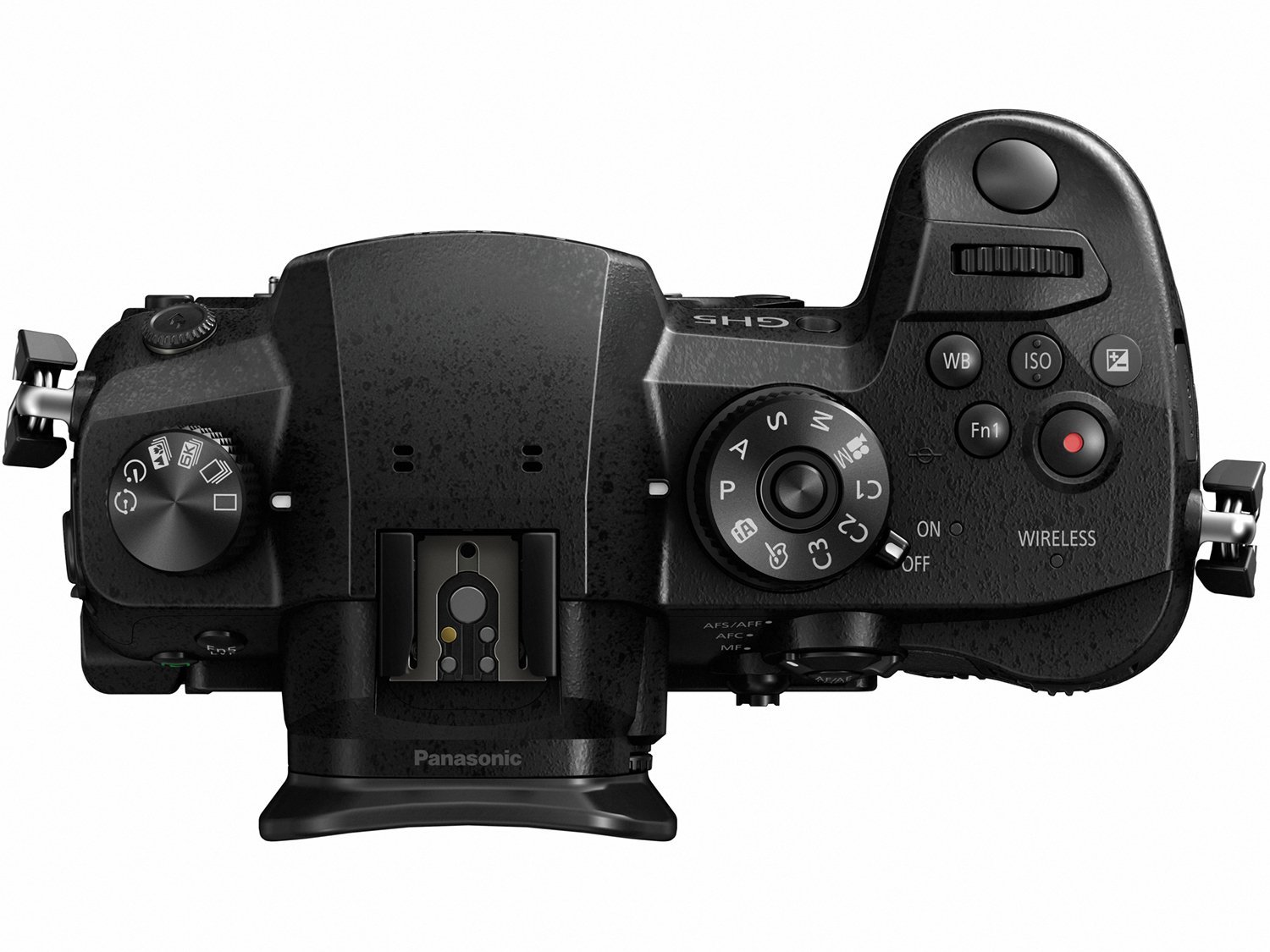
When it comes to burst shooting, the GH5 also has a lot to offer.
The camera allows burst shooting at 12 fps, but only if you lock the focus on the first shot. If you want to use continuous focus, the camera offers burst shooting at up to 9 fps, which is still nothing to frown about.
If you need even more speed, you can try the 6K photo mode, which essentially takes 6K videos at 30 fps, from which you can extract individual frames. The result is a method by which you can get a 30 fps burst rate.
Learn More:
Panasonic GH5 Video Capabilities
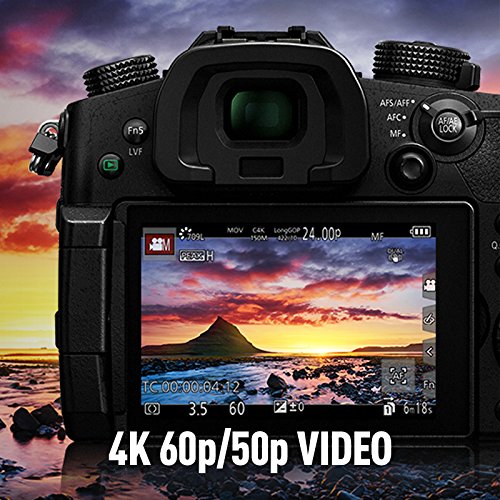
The Panasonic Lumix DC-GH5 is one of the best cameras on the market today for video. The reason for this is that it allows you to record 4K videos at up to 60p and Full HD videos at up to 180 fps.
Moreover, there is no crop and no time limit for video clips (at least until your card fills up or the battery dies), so you can record footage at your leisure knowing you’ll get the full frame beauty of 4K. That full sensor readout means footage is oversampled from 5.1K, so you get gorgeously sharp video.
Internal video recording offer 8-bit 4:2:0 IPB encoding (up to 150Mbps), but you can ramp up the quality if you use an external recorder. Likewise, if you shoot using a lower frame rate, the GH5 can up the quality to 10-bit, 4:2:2 internal recording.
I’ll have MUCH more on the GH5’s video capabilities in upcoming videos of my own, but for now, learn why this is a great camera for video in the video above by DSLR Video Shooter.
Panasonic GH5 Review: Design and Connectivity
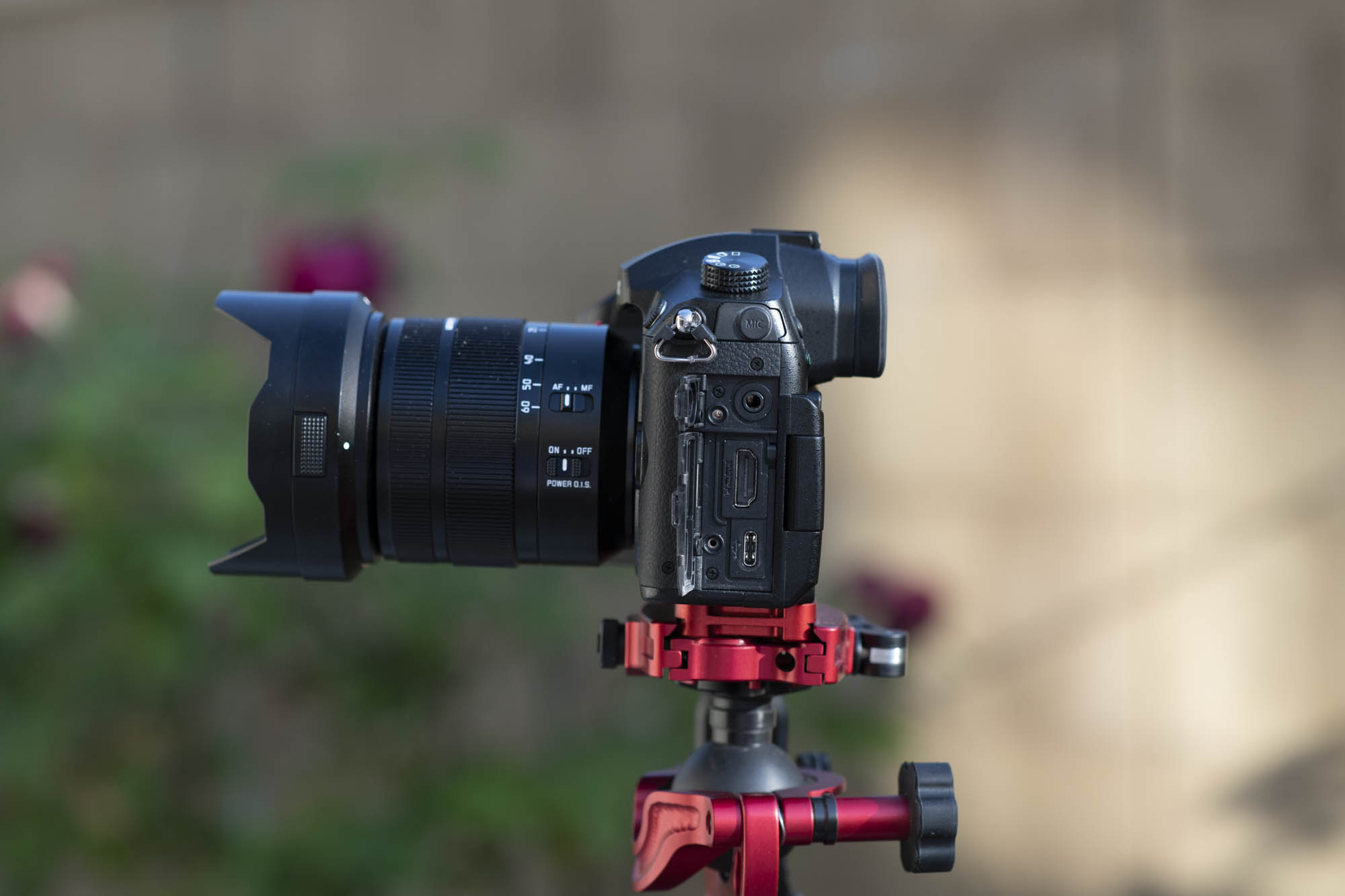
The Panasonic Lumix DC-GH5 is built of magnesium-alloy and it is splash-resistant.
I have to admit that when I ordered this camera, what caused me the most concern was the ergonomics of it.
But I was happily surprised that when I unboxed it, the grip felt great. The camera has a nice, solid feel to it and it simply feels well-balanced in the hand.
Overall, the GH5 is not one of the most compact models on the market, but it is definitely portable and comfortable for handling because of its deep grip. In fact, the grip on this camera feels more like one on a DSLR than a mirrorless camera, and for a guy like me with big hands, that’s a bonus.
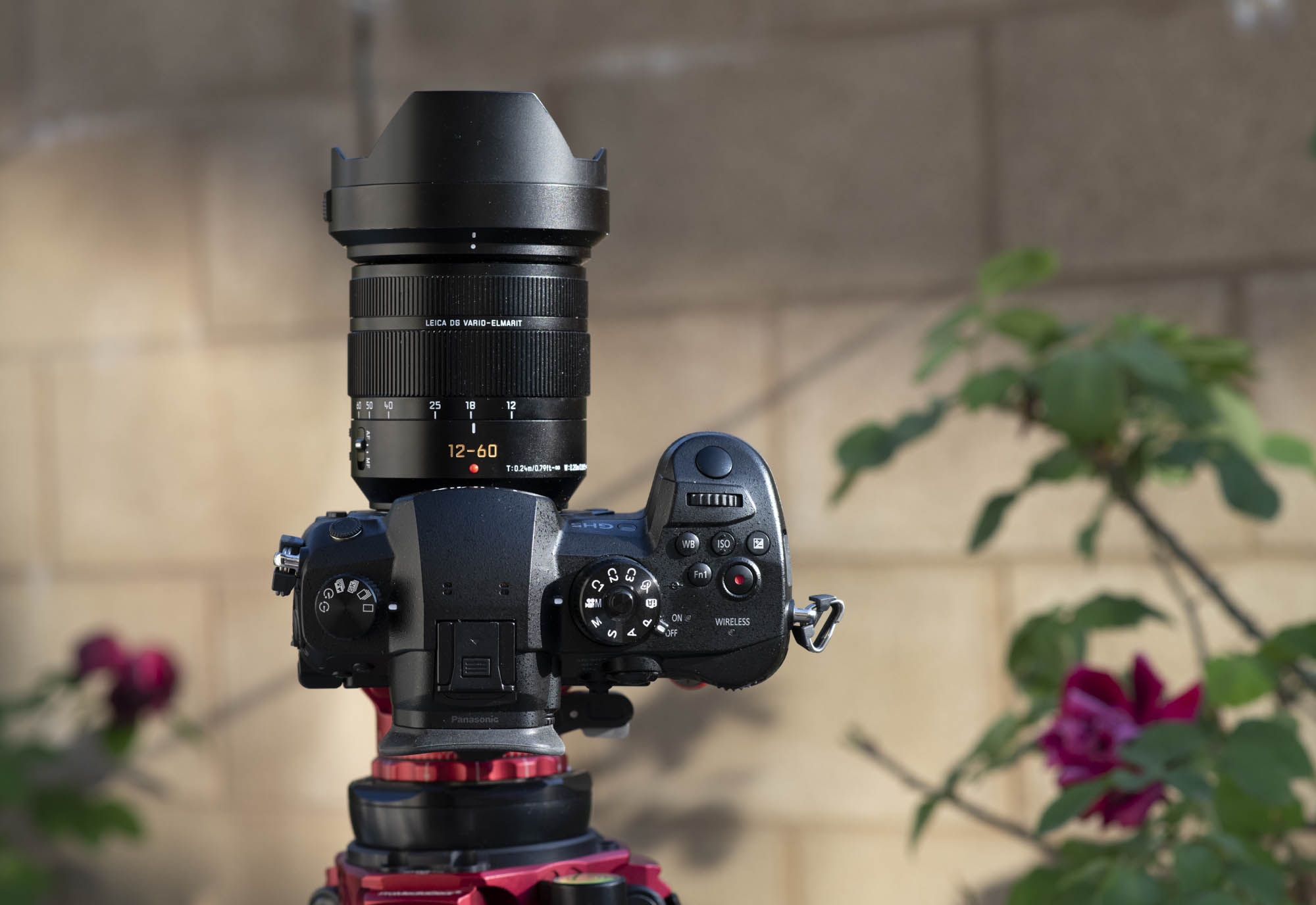
The controls are intuitively placed on the camera so you can easily reach many of them and manipulate them without taking your hand off the grip.
On top are separate video record and still shutter buttons so you have easy access to both. There’s a control wheel near the shutter and an additional wheel on the back near your thumb so you can make quick adjustments without having to take the camera away from your eye.
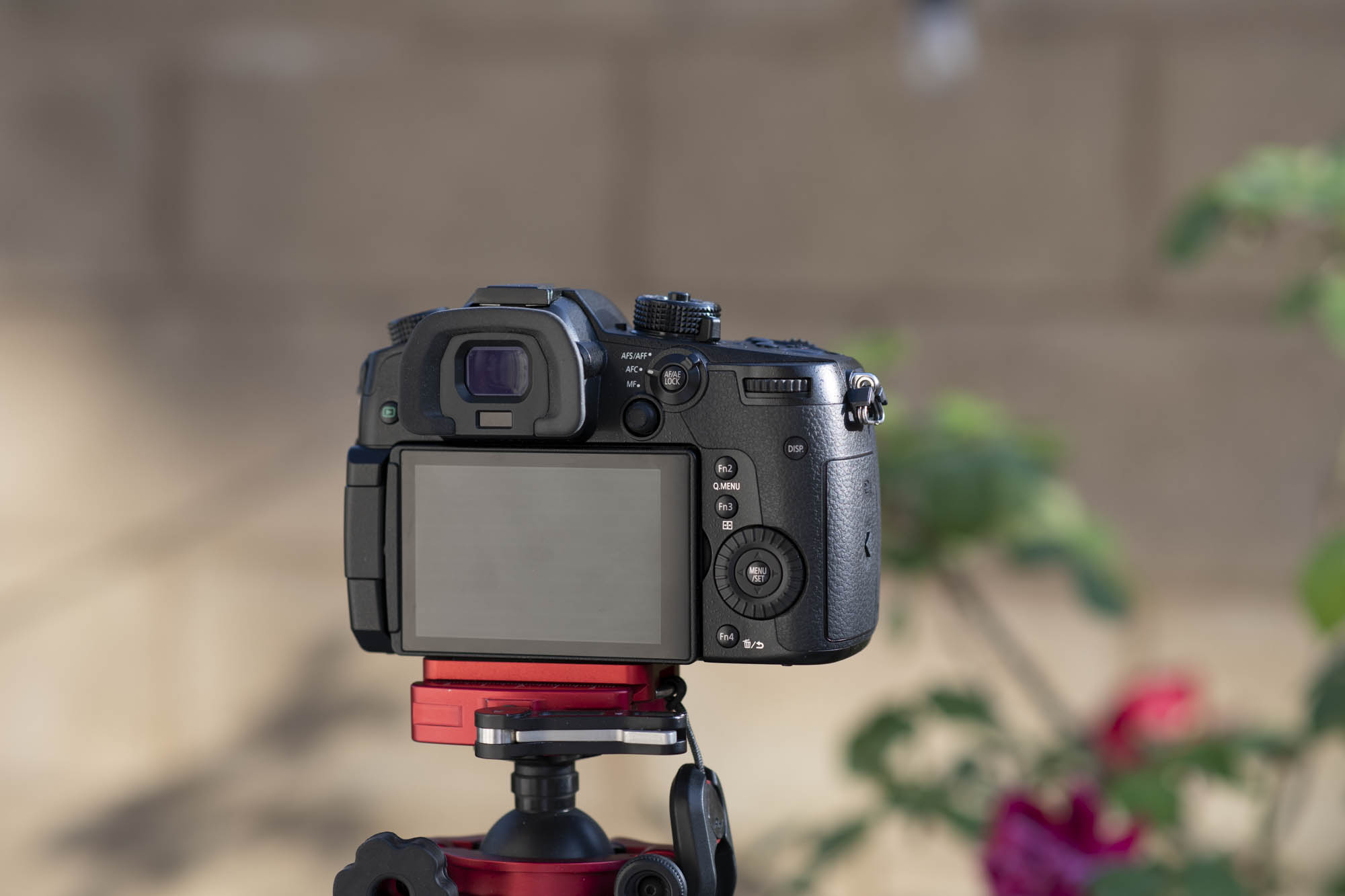
You’ll find shortcut buttons on the top of the camera for ISO, white balance, and exposure compensation. Likewise, there’s a dial for burst mode, the timer, post focus, and 6K photo modes as well.
What impressed me the most, though, is that Panasonic incorporated six customizable buttons on this camera that you can program to do just about anything you want. Since photography is such a personal undertaking with each of us having a different workflow, that’s a nice feature to have.
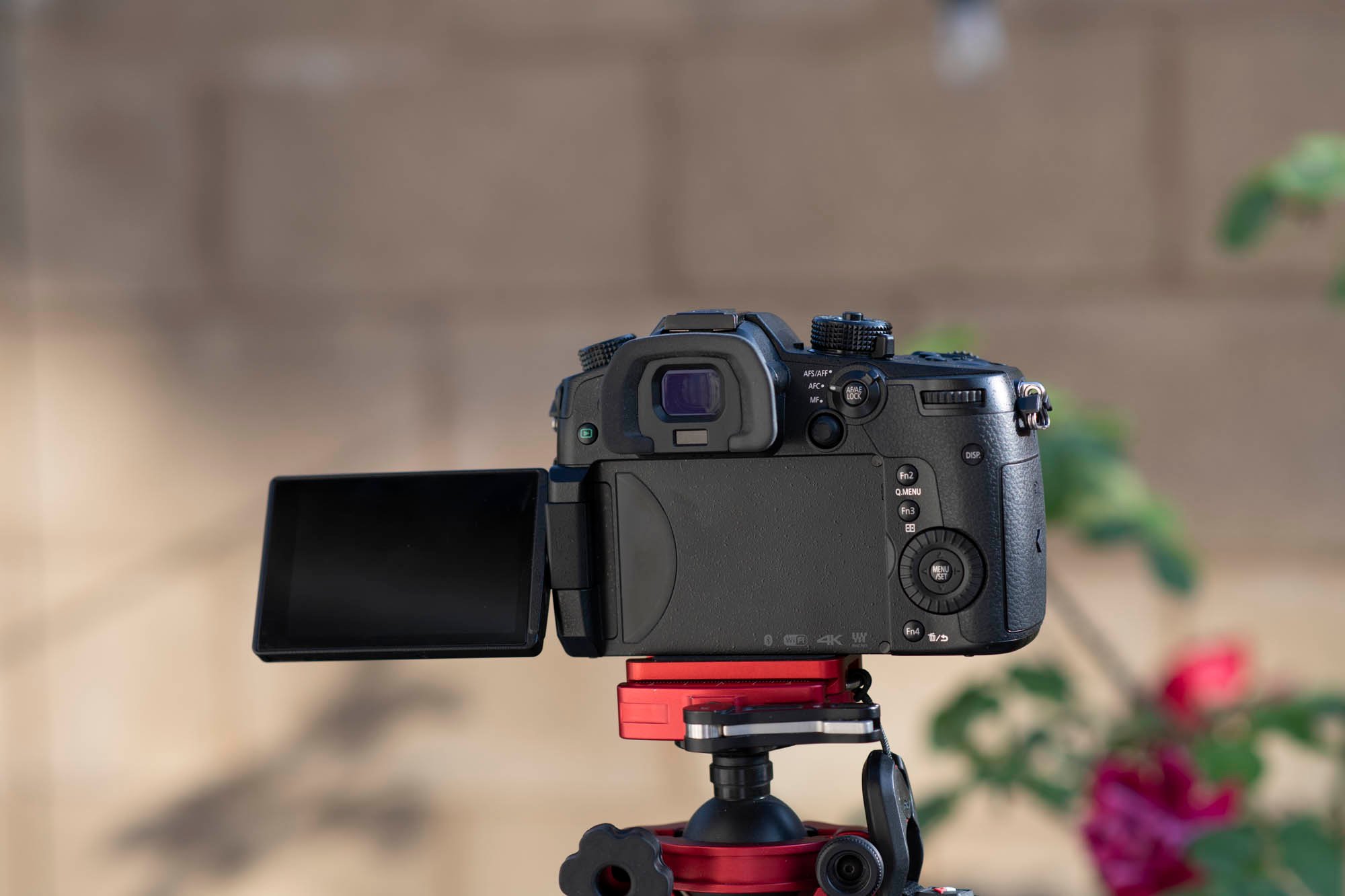
You’ll find shortcut buttons on the top of the camera for ISO, white balance, and exposure compensation. Likewise, there’s a dial for burst mode, the timer, post focus, and 6K photo modes as well.
What impressed me the most, though, is that Panasonic incorporated six customizable buttons on this camera that you can program to do just about anything you want. Since photography is such a personal undertaking with each of us having a different workflow, that’s a nice feature to have.
Panasonic incorporated various focus controls to the right of the viewfinder. This includes a switch for selecting single autofocus, continuous autofocus, and manual focus. In the middle of that switch is an autofocus and auto-exposure lock button.
The GH5 has a joystick on the back that allows you to easily change the focal point. You can also adjust the focal point by tapping the LCD screen, though with 225 AF points, tapping the screen isn’t as accurate as using the joystick.
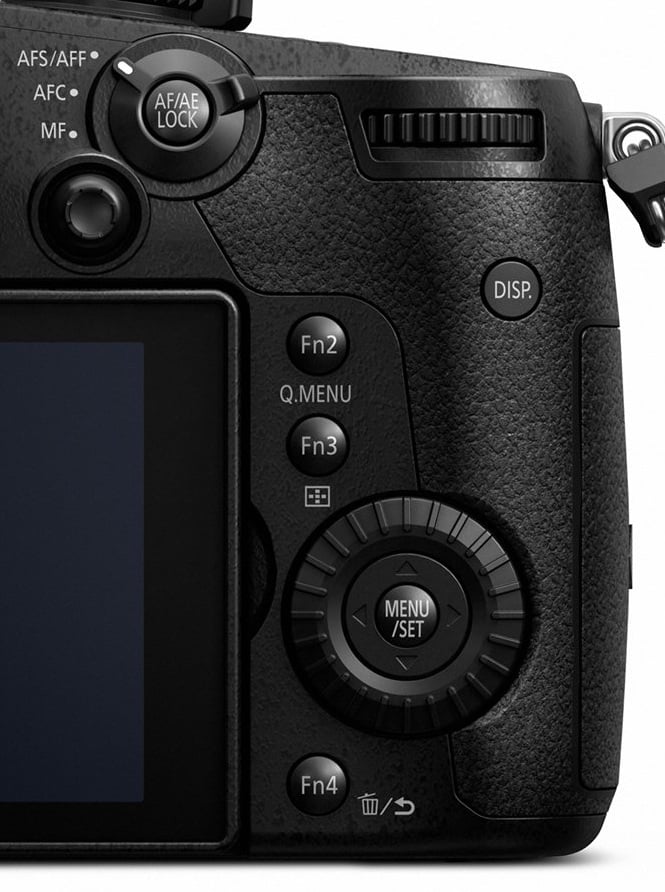
Jointly using Wi-fi and Bluetooth, the GH5 can be remotely controlled using an app that is available for both Android and iOs mobile devices. To increase battery life, low power Bluetooth technology now turns the Wi-fi on and off. The camera also has a 3.5 mm audio port, an external flash shoe, a microphone jack, and an HDMI output.
Additionally, the camera has a dual-card slot and a battery life of approximately 400 shots, though I sailed well past that this weekend taking photos of my son’s birthday.
Learn More:
Panasonic GH5 Price
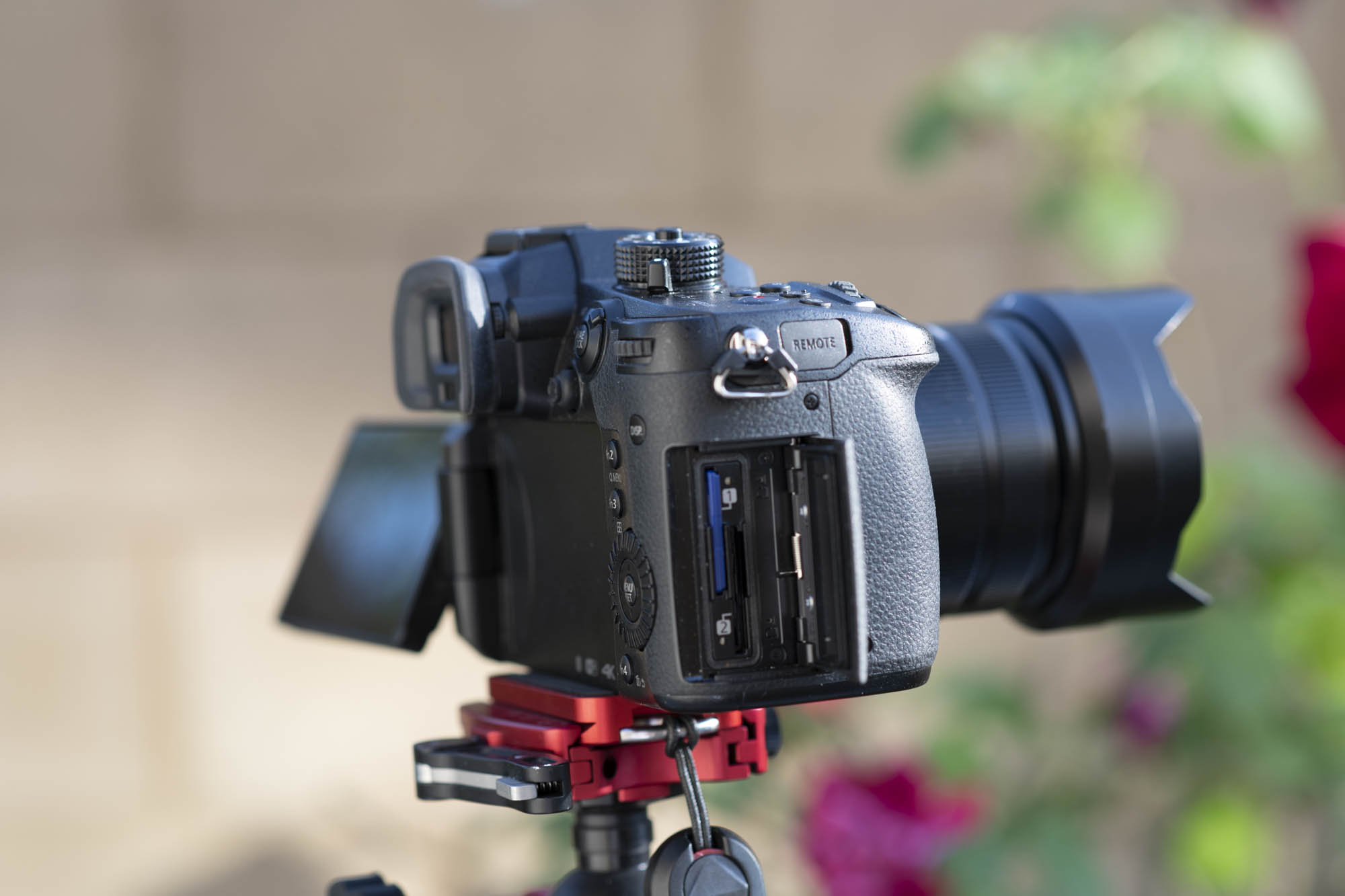
At the moment, the Panasonic GH5 price is $1,497.99 for a new body or you can find a Panasonic GH5 used for as little as $1,289.00 at the time of this writing.
Either way, this camera is well worth the price. As I noted earlier, I wish I hadn’t waited two years to pick one up because it has quickly demonstrated that it’s one of the best cameras on the market, period. And that’s coming from a lifelong Nikon guy!
I get that the Panasonic GH5 isn’t for everyone. But if you want a truly epic camera that has all the tools you need to create detailed, rich, sharp photos and videos, I don’t think there’s a better option.
Is this camera still worth buying in 2019? If this Panasonic GH5 review hasn’t convinced you, get an answer to this question in the video above by Armando Ferreira.
As a sidenote, Panasonic has also created the GH5S, which offers more advanced video features and is optimized for videographers. For the still photographer, the G9 adds additional features and optimization aimed at the still photographers. Both models are capable of shooting both still photos and video.
We Recommend
Panasonic GH5 vs GH5S
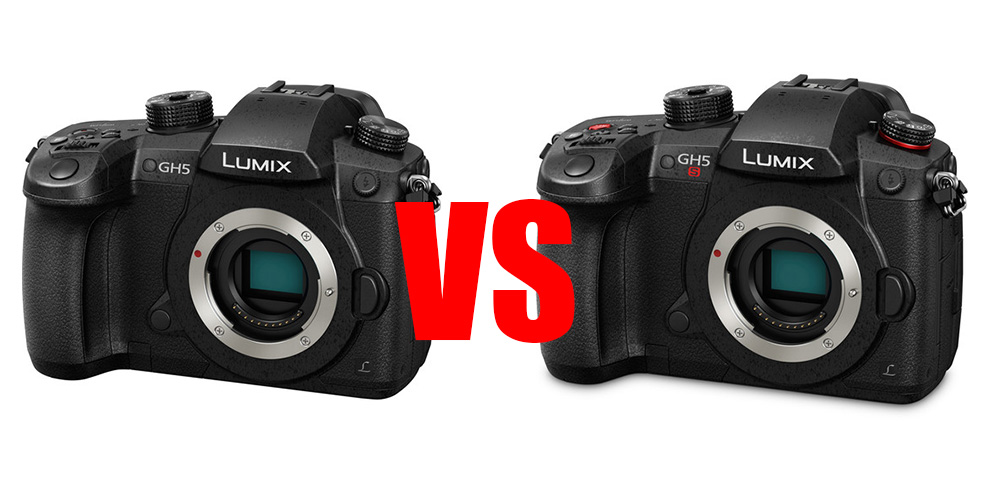
Two of Panasonic’s most sought-after mirrorless cameras currently on sale are the Panasonic Lumix DC-GH5 and the Panasonic Lumix DC-GH5S. If you are on the fence and can’t decide which one to buy, you’ve come to the right place.
In this article, we break down both cameras and make a detailed head-to-head comparison of the GH5 vs GH5S. First, we review the key features and specs before later talking about the imaging and video performance of these two fantastic Panasonic cameras.
One killer resource with tons of used cameras in stock is MPB. They’re a trustworthy and reliable online platform that sells used photo and video kit at unbeatable prices.
I’ve bought and sold countless items on their marketplace over the years, and it’s always been a wonderful experience. That’s why I can proudly and confidently recommend you go to check them out.
You can also use MPB to trade-in gear you no longer need or want to fund gear that you do want. It's a quick, easy process, and a great way to get rid of stuff you don't need while reducing the price on stuff you do need!
Without further ado, let’s dive in and figure out which used Panasonic mirrorless camera will take your photography and videography skills to the next level!
Table of Contents
- Panasonic Lumix GH5 vs GH5S: Key Features and Specs
- Panasonic Lumix GH5 vs GH5S: Imaging Performance
- Panasonic Lumix GH5 vs GH5S: Video Performance
- Final Thoughts on the Panasonic Lumix GH5 vs GH5S
Panasonic Lumix GH5 vs GH5S: Key Features and Specs
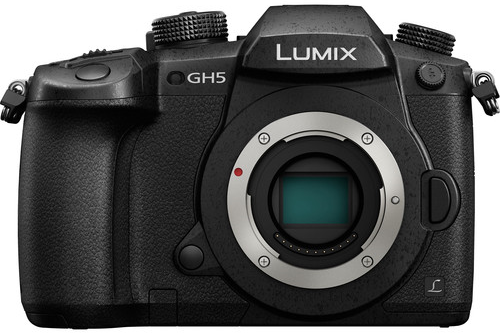
GH5
First things first, the GH5 debuted in March 2017, while the GH5S was released shortly after in January 2018. In the years since, the two cameras have been replaced by the Panasonic GH5 Mark II and the Panasonic GH6. There is no denying that the newer models are technologically superior in many ways, but the GH5 vs GH5S remain capable cameras today.
Better yet, the prices of the GH5 and GH5S have dropped drastically since the newer cameras hit the market. Because of this, they are excellent options for both beginners and professionals looking for great deals.
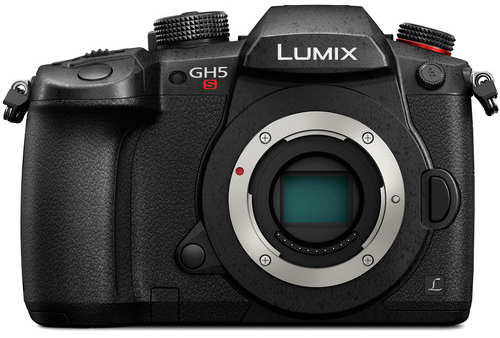
GH5S
Both cameras have Micro Four Thirds sensors and powerful Venus Engine 10 image processors at their cores. The GH5 has the upper hand in terms of sensor resolution (20.3 megapixels vs 10.2 megapixels), but the GH5S significantly outperforms it during low-light shooting.
Looking at their bodies, while the GH5 is slightly heavier, they are identical in size. The extra weight is due to the fact that the GH5 has built-in image stabilization, but the GH5S does not. Another similarity the two bodies share is that they are both weather-sealed, protecting the cameras from moisture, dust, and extreme temperatures.
Here’s a more in-depth look at the key specs and features of the Panasonic Lumix GH5S vs GH5.
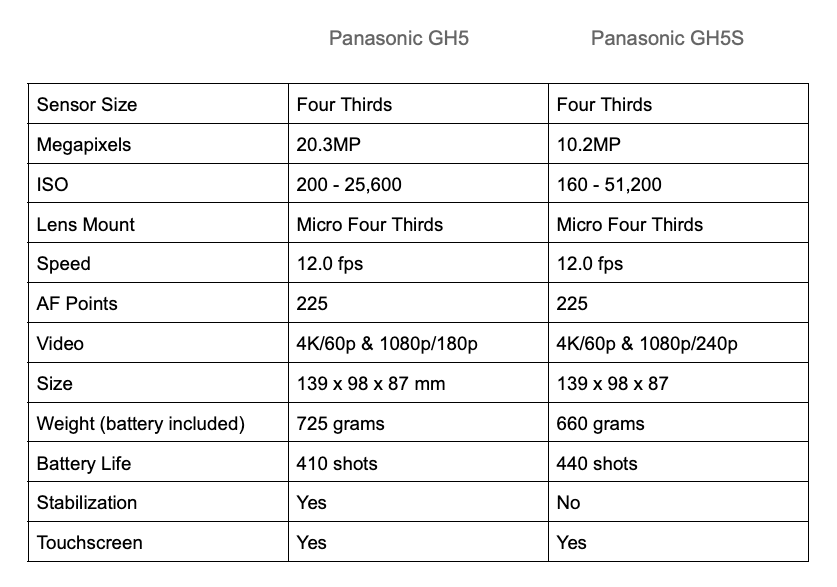
Panasonic Lumix GH5 vs GH5S: Imaging Performance
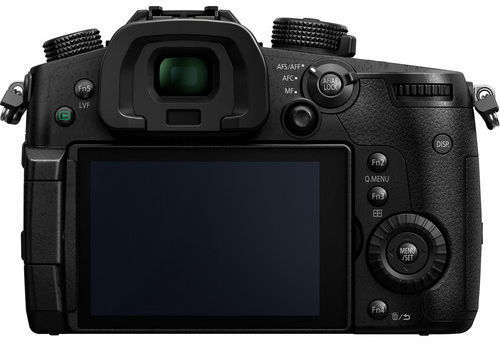
Panasonic GH5
While the Panasonic GH5 vs GH5S are both hybrid digital cameras (meaning they shoot photos and videos) and have excellent edge-to-edge sharpness in pictures, the GH5 beats the GH5S in overall image quality. This is primarily because of the substantial difference in pixel count between the two cameras.
Courtesy of its higher resolution sensor, images captured with the GH5 retain noticeably more detail. If you only publish your photos on Instagram or other social media websites, this is not a big issue, but if you regularly need to enlarge your images for print, the GH5 has a clear advantage.
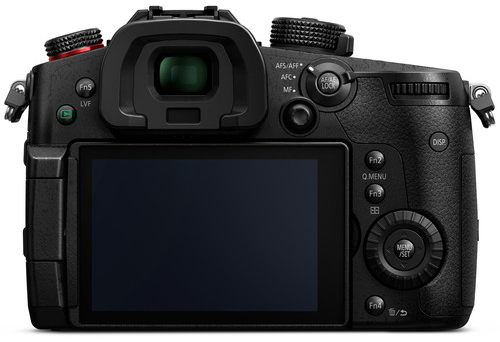
Panasonic GH5S
Alternatively, one area where the GH5S outperforms its counterpart is dynamic range. Its 14 stops of dynamic range are industry-leading for Micro Four Thirds cameras and easily trump the 12 stops found on the GH5.
If you typically use JPEGs, this won’t have a huge impact. However, if you shoot RAW files, a wide dynamic range means more information in the shadows and highlights and more control in post-production.
Winner: Panasonic GH5
Learn More:
Panasonic Lumix GH5 vs GH5S: Video Performance
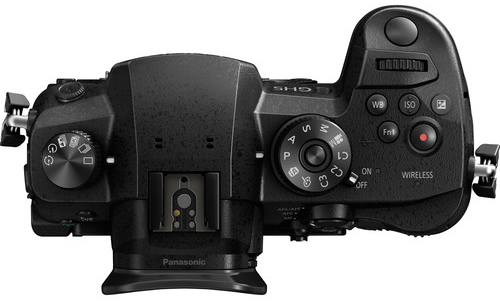
Panasonic GH5
As far as video is concerned, both the Panasonic GH5S and GH5 are award-winning mirrorless cameras. With that said, the “S” stands for sensitivity, and the GH5S was explicitly designed with low-light and video shooters in mind. It’s the same concept that Sony uses with the Sony Alpha a7 III and the Sony Alpha a7S III.
The GH5S uses an upgraded Dual Native ISO and has more than double the ISO range of the GH5 (160-51,200 vs 200-25,600). Moreover, the larger size of every individual pixel on the GH5S further improves its low-light performance during video recording.
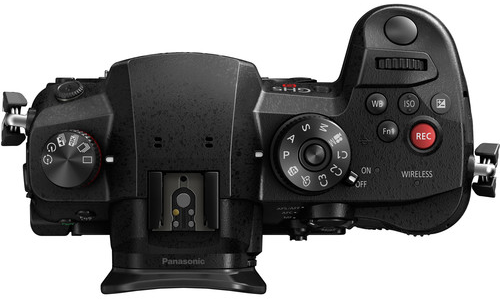
Panasonic GH5S
Both cameras have DCI and UHD 4K video capabilities and the same maximum frame rate of 60p when filming in 4K. When shooting 1080p Full HD footage, the GH5S can go up to 240 frames per second, whereas the GH5 tops out at 180 fps. Both speeds are well above industry standards and produce stunningly smooth slow-motion movies.
Lastly, even though the GH5 has in-camera stabilization technology and the GH5S doesn’t, don’t be worried. All native Micro Four Thirds lenses feature optical image stabilization, helping eliminate camera shake when shooting handheld.
Winner: Panasonic GH5S
Final Thoughts on the Panasonic Lumix GH5 vs GH5S

photo bysimonkr via iStock
The Panasonic GH5 and GH5S are two of the most popular mirrorless cameras on the planet and for good reasons. Regardless of which camera you ultimately choose, I promise you will be blown away by the results. With that in mind, here are my final recommendations.
Thanks to its higher resolution still images, photographers and hybrid shooters should go for the Panasonic GH5. Wedding and event photographers, in particular, are two groups who will love the GH5. On the other hand, video-oriented content creators (videographers, filmmakers, vloggers, etc.) will see better results from the Panasonic GH5S.
Thanks for taking the time to read our Panasonic GH5 vs GH5S review, and I hope it has helped you come to a decision. However, if you still aren’t convinced one way or the other, check out these other amazing used Panasonic cameras currently in stock at MPB:
- Panasonic Lumix DMC-G85
- Panasonic Lumix DC-G9
- Panasonic Lumix DC-S5
- Panasonic Lumix DC-S1
- Panasonic Lumix DC-S1H
Learn More:
- Why the Panasonic GH4 is Still a Great Camera for Video
- What is the Best Cheap Mirrorless Camera for Video?
We Recommend
Panasonic GH6 Review
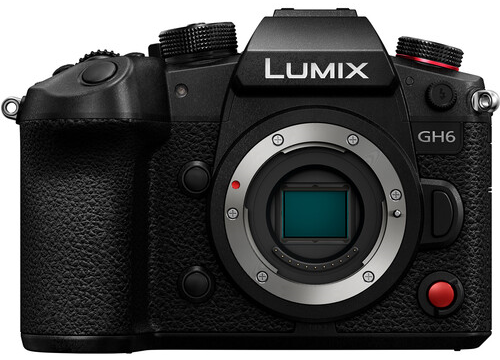
The Panasonic Lumix GH6 is one of the hottest-selling digital cameras worldwide, and we are here to tell you why. Panasonic stuffed so many professional photo and video features into its compact body that even the biggest gearheads on the planet couldn’t help but be impressed. And if you are considering making it your next camera, this article is for you.
This Panasonic GH6 review shares absolutely everything you need to know about this one-of-a-kind mirrorless camera. You will learn about its key specs/features, imaging performance, video performance, and more. In addition, thanks to innovative online platforms like MPB, buying a used Panasonic GH6 has never been cheaper and easier than it is today.
MPB is a trustworthy and reliable online platform selling used photo and video gear at unbeatable prices. All their cameras and lenses are meticulously hand-inspected by expert product specialists and backed by six-month warranties, allowing you to make your purchases confidently and worry-free.
We have bought, sold, and traded in endless camera equipment using MPB’s online platform and have always had amazing experiences. That’s why we are overjoyed to recommend them to you here. With that said, let’s dive in and discover the good, the bad, and the ugly of the Panasonic GH6!
Check out the video above by DSLR Video Shooter to learn more about the Panasonic Lumix GH6 and why it’s a great option in 2023.
Table of Contents
- Panasonic GH6 Review: Overview
- Panasonic GH6 Review: Imaging Capabilities
- Panasonic GH6 Review: Video Capabilities
- Recommended Lenses for the Panasonic GH6
- Final Thoughts on the Panasonic GH6 Review
Panasonic GH6 Review: Overview
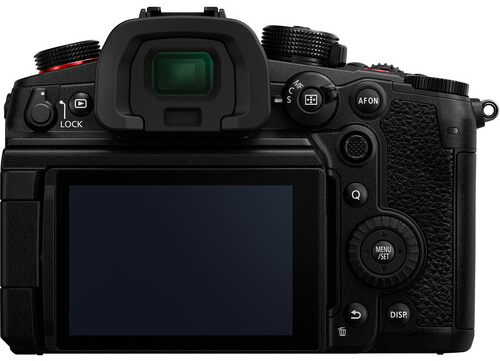
The Panasonic GH6 is a state-of-the-art hybrid camera that came out in 2022 and replaced the GH5 II as the company’s flagship product. It houses an all-new Four Thirds image sensor and an upgraded Venus Engine image processor. The pair works together seamlessly to make the GH6 one of the fastest and most advanced mirrorless cameras ever.
The camera’s body and controls closely resemble those of previous Panasonic G Series cameras, and the handling and ergonomics of the GH6 are definitely one of its strengths. Two new user-friendly design features are an articulating/tilting rear screen and an extra Fn button. It’s one of 13 customizable buttons found on the camera.
Now, here’s an in-depth look at the key features and specs of the Panasonic Lumix GH6:
- Camera Type: Mirrorless
- Sensor: 25.2MP Four Thirds CMOS Sensor
- ISO: 100 - 25,600
- Lens Mount: Micro Four Thirds
- Speed: 14.0 fps
- Autofocus: 315 focus points
- Video: 5.7K/60p, 4K/120p & 1080p/240p
- Size/Weight: 138 x 100 x 100 mm / 403 grams
- Battery Life: 360 shots
- Stabilization: Yes
- Touchscreen: Yes
Panasonic GH6 Review: Imaging Capabilities
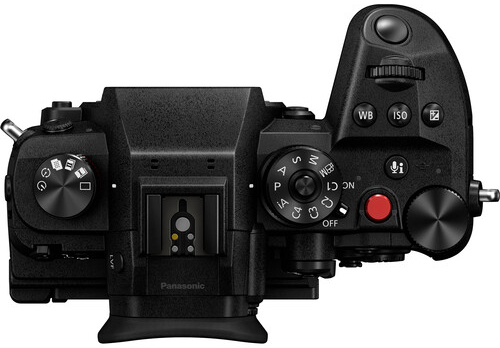
The sensor of the Panasonic GH6 now boasts 25 megapixels compared to the 20 megapixels found on previous models. This uptick in MPs makes still photos sharper and gives them better detail retention. While you won't notice the difference if you look at pictures on Instagram, it’s very apparent on images that have been blown up for printing, making it a superior option for professionals.
Another awesome feature is the 100MP high-resolution mode. It uses pixel-shifting technology to capture multiple frames and stitches them together into one gorgeous photo. It’s great for landscapes and nature photography. Two things I’m not crazy about when shooting stills with the GH6 are its below-average dynamic range and low-light performance.
Learn More:
Panasonic GH6 Review: Video Capabilities
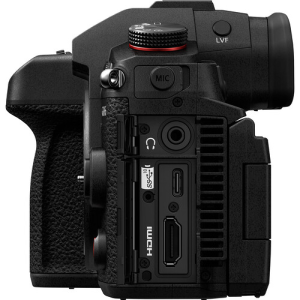
We want to make this extremely clear, while the Panasonic GH6 does a good job in the photography department, it’s first and foremost a video camera. Panasonic’s target audience when it released the GH6 was filmmakers, videographers, YouTubers, and vloggers. Furthermore, it’s a direct competitor to other video-centric hybrid cameras like the Sony Alpha a7S III and the Canon EOS R5.
Its signature feature is, without a doubt, the 5.7K video. It’s captured from the full width of the sensor and is absolutely beautiful. On top of that, the GH6 records stunning slow-motion video in 4K/60p and super-slow-motion clips in 1080p/240p.
More video features include a built-in fan, image stabilization (IBIS), dual SD card slots, and advanced audio controls. The fan prevents overheating. The IBIS adds up to 7.5 stops of exposure. The extra memory card gives you more flexibility during filming. And the audio controls improve sound quality, saving you time in post-production.
Recommended Lenses for the Panasonic GH6
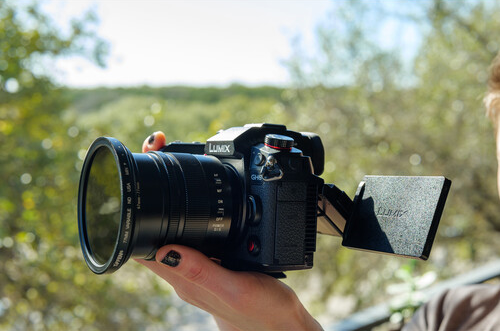
One of the biggest benefits of shooting with the Panasonic GH6 is its excellent lineup of native lenses. The GH6 uses a Micro Four Thirds lens mount, and hundreds of compatible Micro Four Thirds lenses are available today.
Panasonic and Olympus manufacture the most in-demand MFT lenses, but there are also some fantastic lenses from companies such as Sigma, Fujinon, SLR Magic, Voigtlander, and others. If you are looking for a high-quality, budget-friendly lens, you should look for lenses from Rokinon, Samyang, and 7Artisans.
Here are some of our favorite photo and video lenses to pair with the Panasonic Lumix GH6. We have included both budget and high-end options.
Budget Lenses
- Rokinon 7.5mm f/3.5 UMC Fisheye - Micro Four Thirds Fit
- Panasonic Lumix G Vario 45-200mm f/4-5.6 Mega O.I.S.
- Olympus M.Zuiko Digital ED 12-40mm f/2.8 PRO
- Olympus M.Zuiko Digital ED 75mm f/1.8
- Panasonic Leica DG Vario-Elmarit 12-60mm f/2.8-4.0 ASPH Power O.I.S.
Professional Lenses
- Panasonic Leica DG Summilux 12mm f/1.4 ASPH
- Panasonic Leica DG Vario-Elmar 100-400mm f/4-6.3 ASPH Power O.I.S.
- Panasonic 10-25mm f/1.7 Leica DG Vario-Summilux ASPH
- SLR Magic 35mm T2.4 Anamorphot-CINE - Micro Four Thirds Fit
- Olympus M.Zuiko Digital ED 300mm f/4 IS PRO
Final Thoughts on the Panasonic GH6 Review
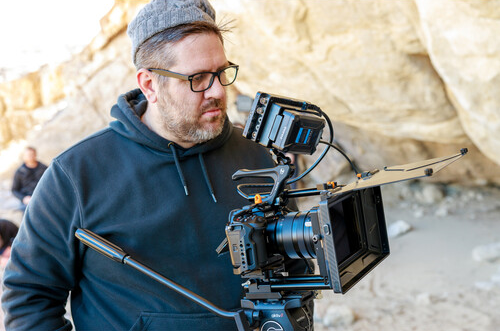
As you can see, the Panasonic GH6 is an ideal choice for videographers and filmmakers. It’s also a solid option for content creators who dabble in both photography and videography. With that in mind, two groups of hybrid shooters who can’t stop raving about the GH6 are event and wedding photographers.
Not 100% sold on the Panasonic Lumix GH6? Don’t sweat it. Check out this list of similarly priced used cameras to compare and contrast it with other popular cameras currently in stock at MPB:
Learn More:
We Recommend
Panasonic GX8 Review
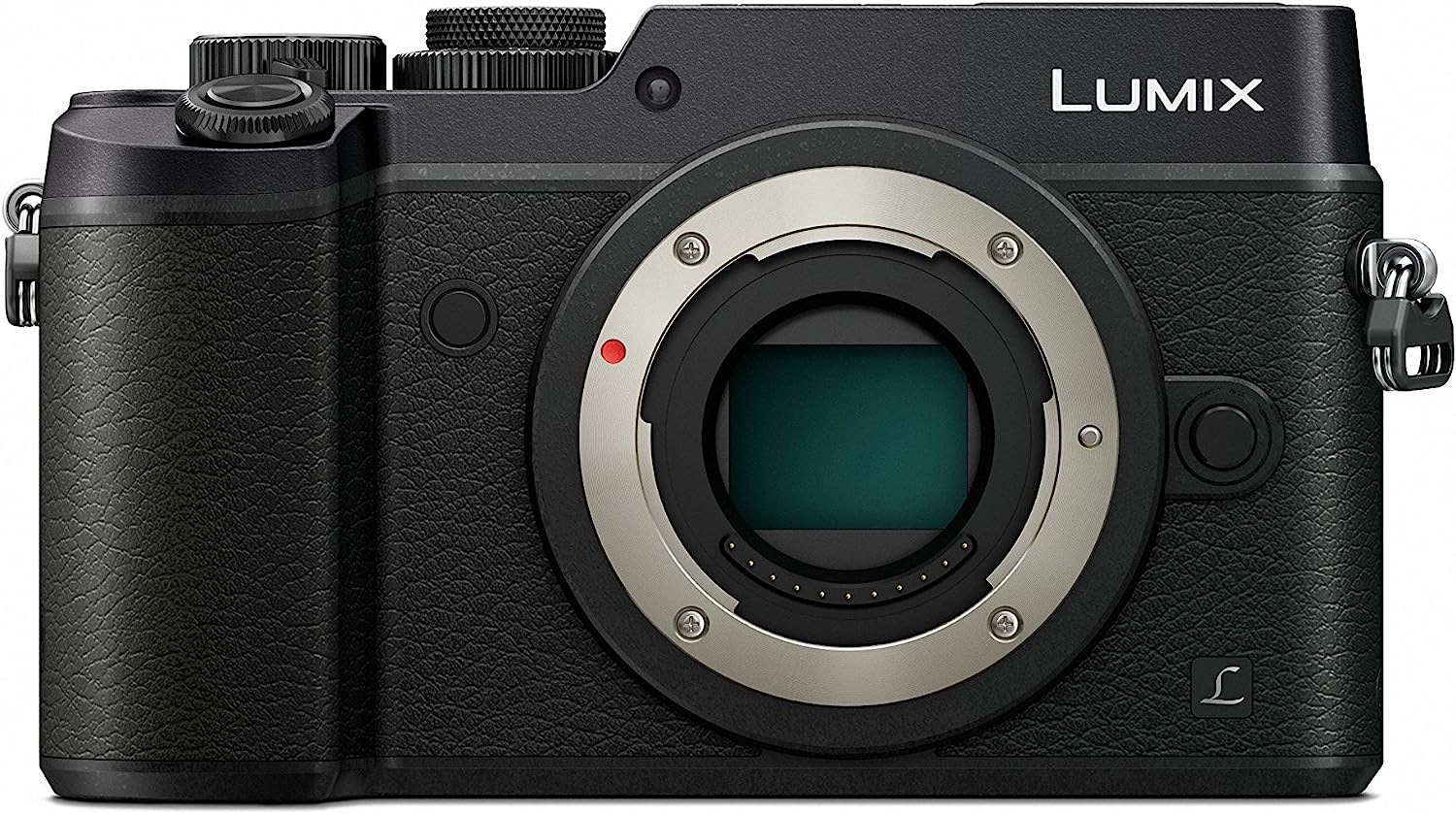
If you are new to photography and looking for the perfect first camera to learn on and improve your skills, a great option is the Panasonic Lumix GX8. It has a beginner-friendly design, various automatic/semi-automatic shooting modes, and even 4K video capabilities. Moreover, its low price makes it ideal for newbies, kids, and people on a budget.
In this Panasonic GX8 review, we’ll share a basic overview of the camera, its photo and video specs, which content creators will see the best results shooting with it, recommend our favorite Micro Four Thirds lenses, and more. Additionally, thanks to innovative online platforms like MPB, buying a used mirrorless camera has never been cheaper and easier than it is today.
Who is MPB? They are a trustworthy and reliable online platform selling pre-owned photography and videography gear at unbeatable prices. Better yet, all their cameras and lenses are meticulously hand-inspected by expert product specialists with years of experience and backed by six-month warranties, allowing you to make your purchases confidently and worry-free.
Over the years, we’ve saved thousands of dollars buying, selling, and trading in camera equipment through MPB’s online marketplace, and we want the same for you. That’s why we are stoked to recommend them to you today. With that said, it’s time to jump in and learn everything there is to know about the Panasonic GX8!
Check out the video above by Grant Robert Davies to discover more about the Panasonic Lumix DMC-GX8 and why it remains a great choice in 2023.
Table of Contents
- Panasonic GX8: Overview
- Panasonic GX8: Imaging Capabilities
- Panasonic GX8: Video Capabilities
- Recommended Lenses for the Panasonic GX8
- Final Thoughts on the Panasonic Lumix DMC-GX8
Panasonic GX8: Overview
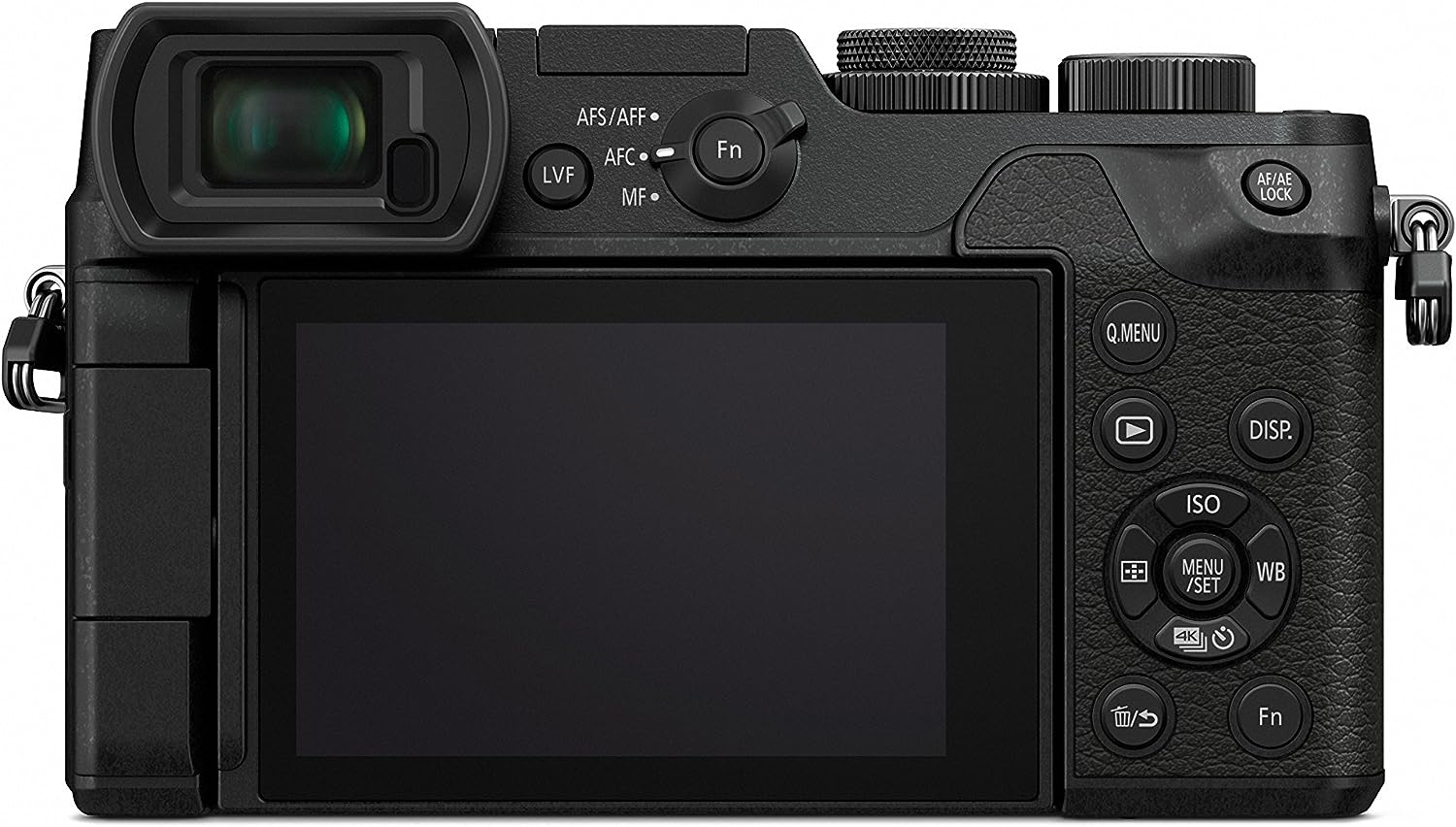
Despite being a somewhat older camera (it was released in 2015), the Panasonic Lumix GX8 still packs a powerful punch, especially for beginner photographers. It combines a 20.3-megapixel Four Thirds sensor with a Venus Engine image processor, and the impressive results speak for themselves.
Weighing only 487 grams, the camera body of the GX8 is much lighter and more compact than similarly priced DSLR cameras, making it a solid choice for travel and street photographers. At the same time, the body’s robust all-weather coating protects it from elements like rain, moisture, and dust.
A few more easy-to-use features you will love are its customizable interface, fast DFD (Depth From Defocus) autofocus, and built-in Wi-Fi. The GX8’s customization options allow you to best match your shooting style. The DFD autofocus makes it easy to capture sharp, in-focus images. And thanks to the Wi-Fi, you can instantly send photos and videos to your mobile devices.
Now, here’s an in-depth look at the key features and specs of the Panasonic GX8:
- Camera Type: Mirrorless
- Sensor: 20.3MP Four Thirds CMOS Sensor
- ISO: 200 - 25,600 (expandable to 100 - 25,600)
- Lens Mount: Micro Four Thirds Lens Mount
- Speed: 10.0 fps
- Autofocus: 49 focus points
- Video: 4K/30p & 1080p/60p
- Size/Weight: 133 x 78 x 63 mm / 487 grams
- Battery Life: 330 shots
- Stabilization: Yes
- Touchscreen: Yes
- Pre-Owned Panasonic GX8 Price: $379 - $499
Panasonic GX8: Imaging Capabilities
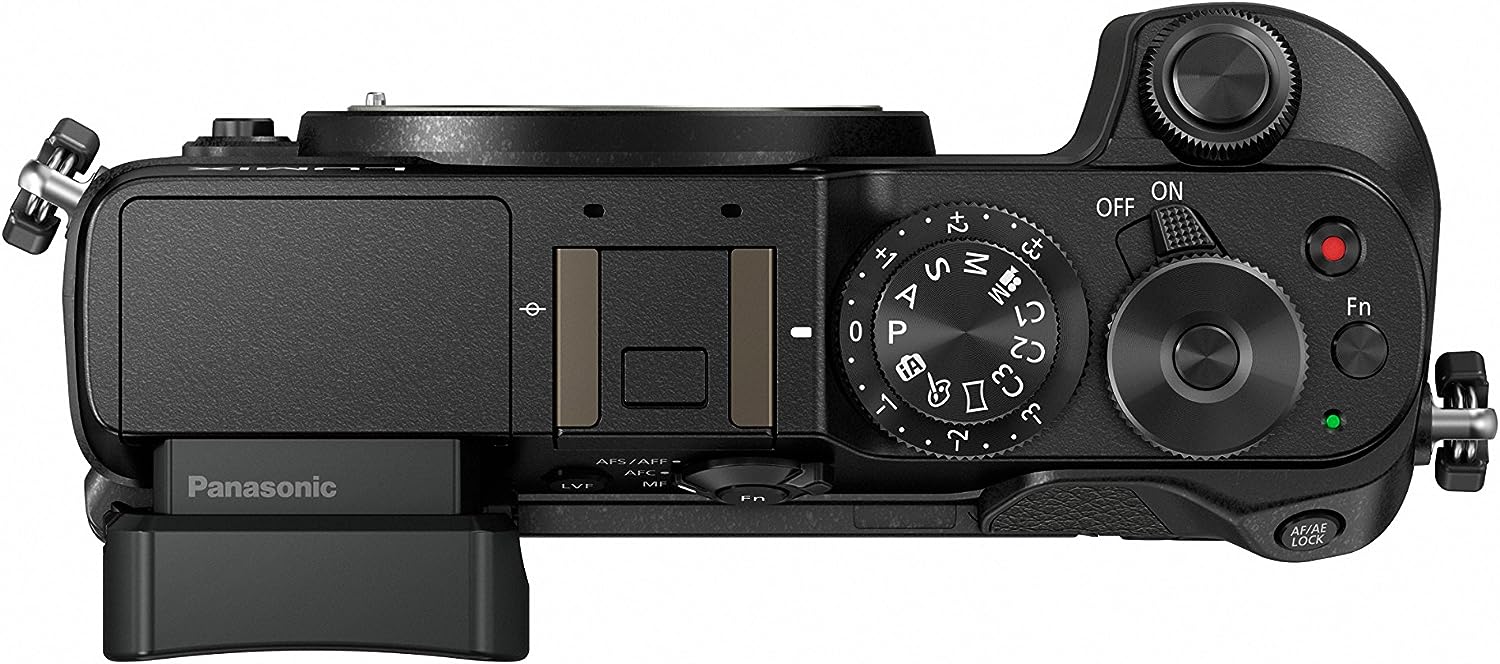
While the 20.3MP image sensor of the Panasonic Lumix GX8 doesn’t jump off the page, it’s right in line with newer micro four thirds mirrorless cameras, which is saying something since the GX8 is now eight years old. Better yet, both JPEGs and RAW images have excellent detail retention and bold, vibrant colors.
In terms of still photography, this camera really shines in its ease of use. For example, there is a fully automatic shooting mode for people who are brand new to taking photos with a real camera. For those with a bit more experience, you can use the A (aperture priority) or S (shutter priority) modes to learn and improve your photography skills.
And, of course, once you feel confident enough, there is also a fully manual mode where you are 100% in control of the exposure settings. Another cool feature rarely found on newer cameras is the exposure compensation dial. It gives you more freedom when shooting in poor lighting by allowing you to artificially adjust the brightness of your images.
Learn More:
Panasonic GX8: Video Capabilities
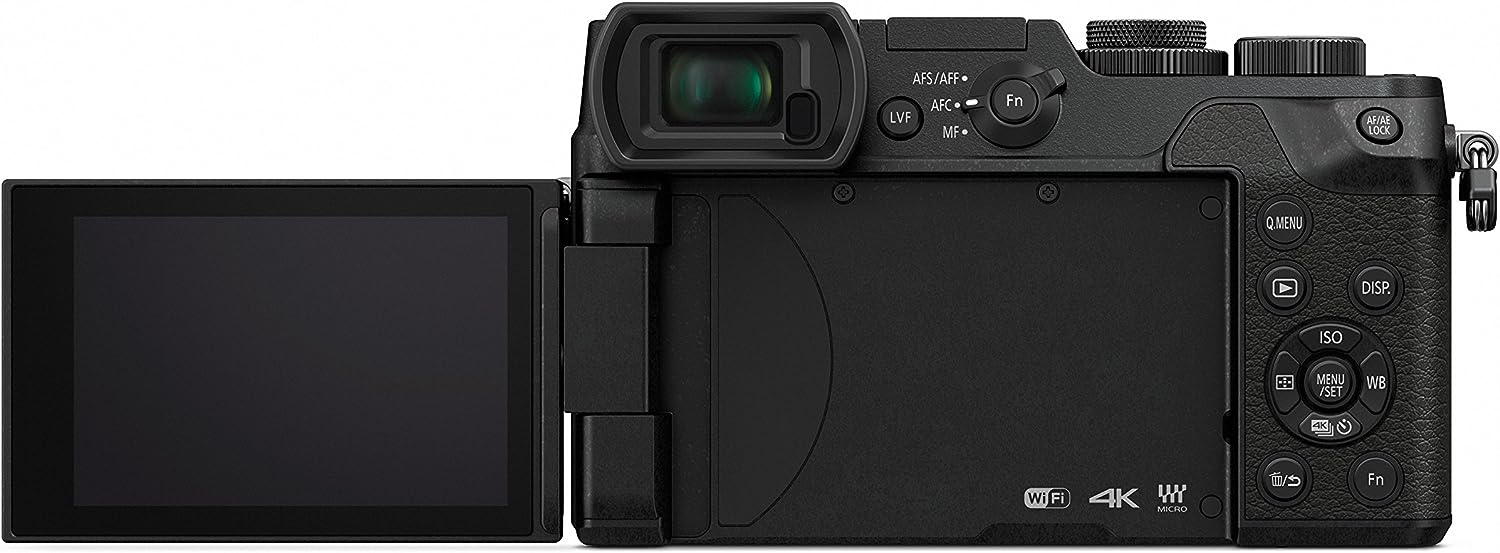
Now for a closer look at the video specs of the Panasonic Lumix GX8. For starters, it was one of the first Micro Four Thirds cameras capable of capturing 4K video, and the quality of its 4K footage holds up well today. YouTubers and vloggers will feel right at home recording 4K/30p clips, while filmmakers will prefer the look and feel of its 4K/24p video.
The Dual IS stabilization of the GX8 is also a huge plus for video content creators. It combines the built-in image stabilization found in the camera with stabilized micro four thirds lenses to reduce camera shake and add up to five stops of exposure compensation.
Other notable video features include Full HD video, a microphone port, and the nifty “Snap Movie Mode.” Full HD video tops out at 1080p/60p. The microphone input lets you attach an external mic for better audio quality. And the Snap Movie Mode captures 2-8 second video clips perfect for social media.
Recommended Lenses for the Panasonic GX8
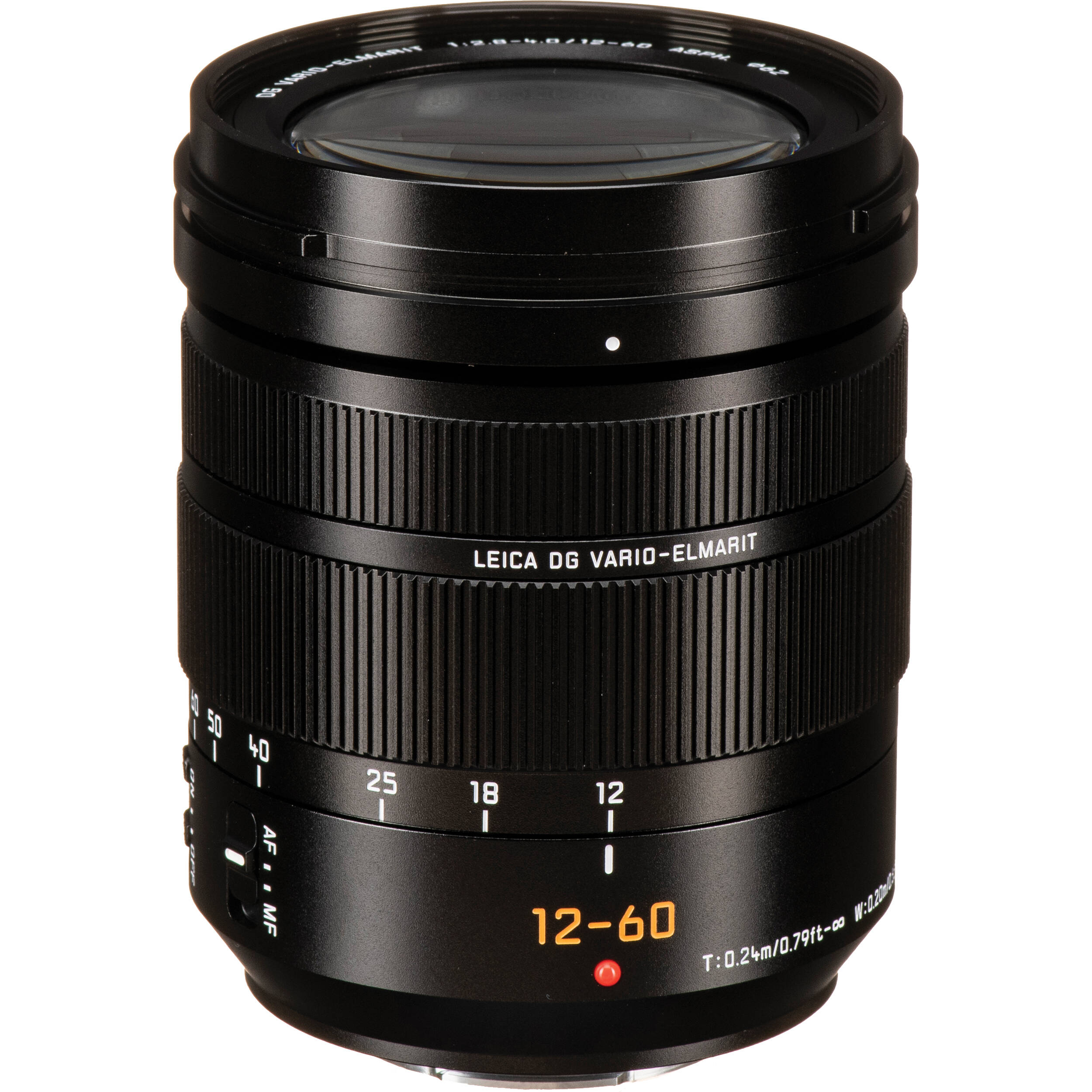
Here’s a short list of some of the best Panasonic GX8 lenses for photo and video to pair with the Panasonic Lumix DMC-GX8.
- Panasonic Leica DG Vario-Elmarit 12-60mm f/2.8-4.0 ASPH. Power O.I.S.
- Panasonic Lumix G X Vario 12-35mm f/2.8 ASPH Power O.I.S.
- Panasonic Lumix G Vario 100-300mm f/4-5.6 II Power O.I.S.
- Panasonic Leica DG Vario-Elmarit 8-18mm f/2.8-4.0 ASPH.
- Olympus M.Zuiko Digital ED 75mm f/1.8
Final Thoughts on the Panasonic Lumix DMC-GX8
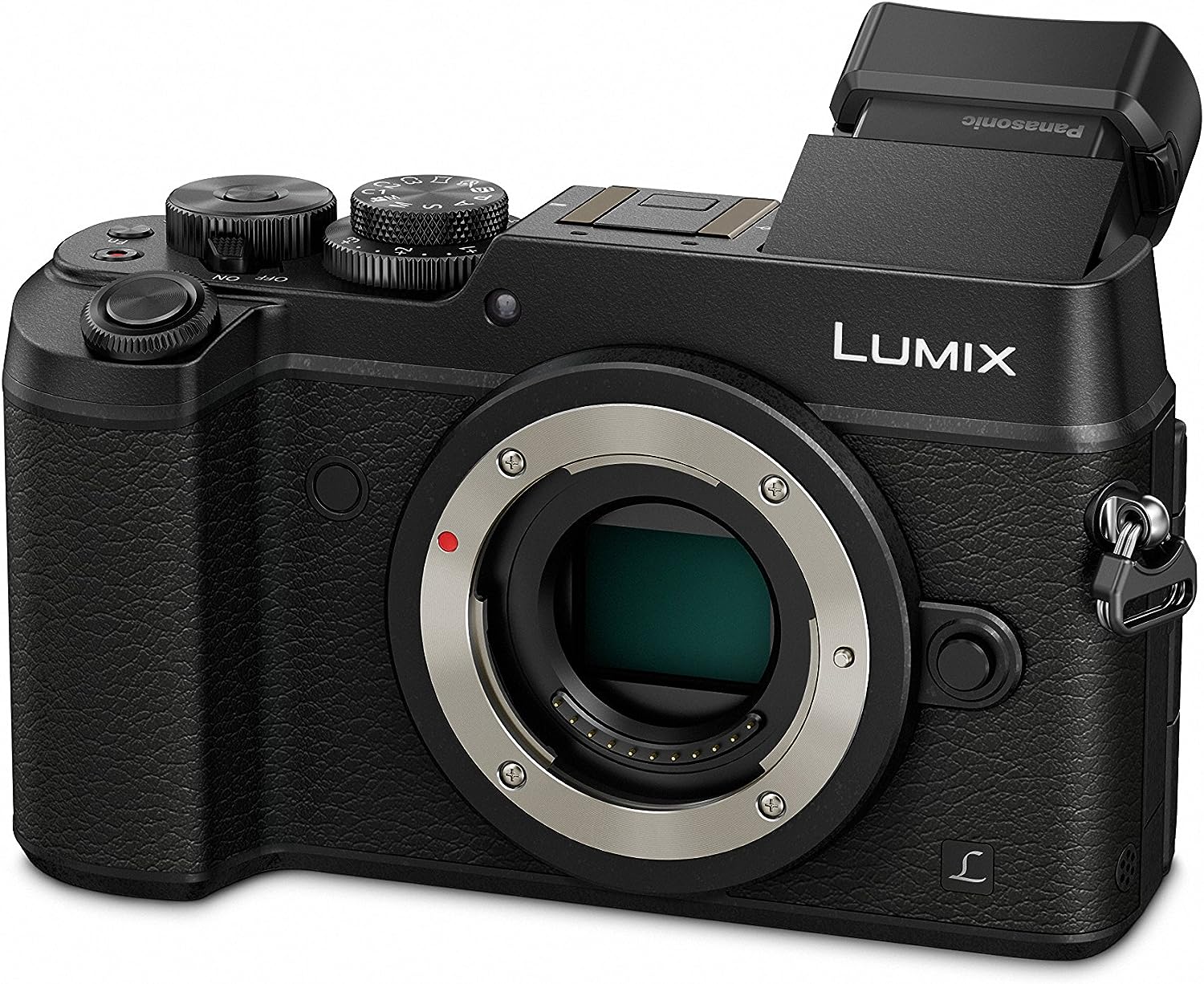
As you can see, although the Panasonic Lumix GX8 isn’t the newest camera on the market, it’s still a highly capable camera perfect for beginners and photographers on a budget. In fact, we actually believe that its age is a positive! That’s because, while it used to cost $1,199 when initially released, you can now get your hands on one for $379 - $499. What an incredible value!
Undecided and want to compare the GX8 with other similarly priced cameras? Check out the list below of some more of the best mirrorless cameras under $500 currently in stock and on sale at MPB:
Learn More:
We Recommend
Panasonic Lumix DC-G100 Review
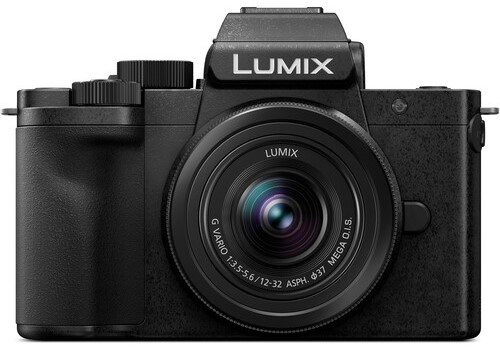
The Panasonic Lumix DC-G100 is a camera built specifically for vloggers, and since we so rarely cover cameras created with videographers in mind, I figured it was about time to do so in this Panasonic Lumix DC-G100 review.
The Panasonic Lumix DC-G100 is a Micro Four Thirds mirrorless camera that comes with a ton of features vloggers will love, like electronic image stabilization that works with different image stabilization lenses. It’s a dream come true.
The Panasonic Lumix DC-G100 is relatively new. It just came out this year. That means that it features a lot of new specs vloggers need.
But, Panasonic wanted to try and keep the Panasonic Lumix DC-G100 relatively cheap, so there are also no specs that a vlogger wouldn’t need.
To find out everything you need to know about the Panasonic Lumix DC-G100 specs, handling and price, keep reading.
Panasonic Lumix DC-G100 Specs
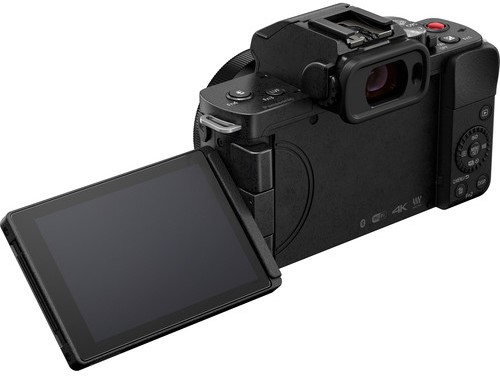
The Panasonic Lumix DC-G100 features a 20MP Four Thirds CMOS sensor and electronic image stabilization. This image stabilization is especially awesome because it works with a variety of Panasonic Lumix DC-G100 lenses for double the stabilization.
This camera was built for vloggers, so it comes with 4K video capabilities and OZO directional audio, which I’ll talk about more later on. Its screen is ultra-bright and fully articulating.
It’s also a really lightweight camera, so you can easily take it with you wherever you’re going.
Other Panasonic Lumix DC-G100 Specs:
- 20.3MP live MOS Micro Four Thirds sensor
- “OZO” directional audio
- ISO range of 200-25,000
- 4K video capabilities at 30p, 25p, and 24p, or Full HD video capabilities
- 3” fully-articulating touchscreen with 1.84m-dots
- 10fps burst mode with electronic shutter, 6fps burst mode with mechanical shutter
- Built-in Wi-Fi and Bluetooth
- .66 lbs
- 270-shot battery life
Panasonic Lumix DC-G100 Body & Design
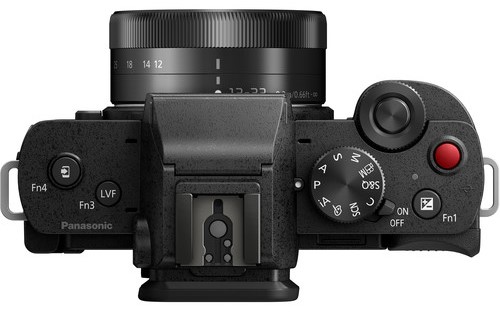
The Panasonic Lumix DC-G100 body is impressive because of the fact that it fits so many specs into such a small package. As I already mentioned, this camera weighs just a little over a half pound and measures 4.52” x 3.22” x 2.12”. But, it still somehow managed to fit a fully articulating screen.
One thing that I’m really loving about this camera is that, while it is being marketed towards vloggers (and for good reason), it also allows photographers and videographers who want to learn, the ability to do so. The menu is super easy to read, the four customizable Fn buttons aren’t overwhelming, and the ergonomics of the camera make you want to keep shooting on it.
I definitely recommend this camera for shooters who are looking to go from entry-level into a more professional sort of photography.
Learn More:
Panasonic Lumix DC-G100 Build & Handling
The Panasonic Lumix DC-G100 build is solid. The body is made from a polycarbonate material that makes me confident I shouldn’t have any problems if I ever were to drop it.
I don’t suppose you’ll really need it, given how bright the articulating screen is on this camera, but it also features a 3.68m-dot electronic viewfinder that comes with 0.73x magnification. It’s little considerations like this that make me really appreciate the handling on this camera.
One part of this camera that I’m not thrilled about is the fact that it can only take 270-shots on one charge. Obviously, this means that you’re only going to get a little bit of shooting time as a vlogger, as well. I definitely recommend you purchase an extra battery for this camera in order to save yourself some heartache when you first start shooting with it.
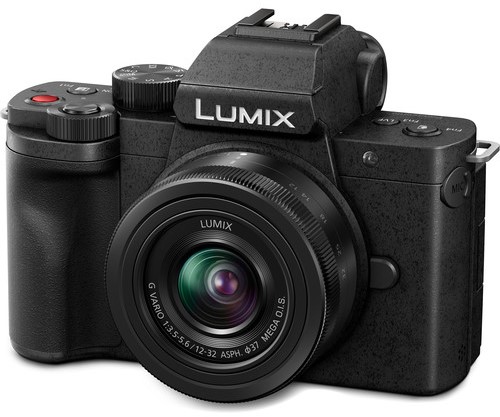
The biggest selling point when it comes to the handling of the Panasonic Lumix DC-G100 is its fully articulating screen. For those who have shot with Sony’s ZV-1 camera before, this Panasonic will feel very familiar. I’m also going to talk a little bit more about the “Self Shot” mode offered later on, but suffice it to say that you are not going to be left struggling to get the perfect selfie with this camera.
Finally, the main menu is super easy to understand. It does come with a Custom Settings tab, which is the most advanced trait on this camera, but I’m assuming that most users won’t get this far. For those who may, there are five different sections in the custom settings tab and they are all fairly straightforward.
Panasonic Lumix DC-G100 Video Performance
B&H Photo Video created the video above testing the Panasonic Lumix DC-G100 video performance. Feel free to check it out for a more in depth look at what the Panasonic Lumix DC-G100 can do in terms of videography.
As I mentioned before, the Panasonic Lumix DC-G100 shoots 4K video at 30p or Full HD video at up to 120p for slowmo options.
This feature pairs nicely with its fully articulated 1.84m-dot LCD screen, which is also labelled as “high-brightness,” so vloggers can shoot easily in broad daylight. While I haven’t had the opportunity to try this high-brightness screen out on the go quite yet, other reviews I’ve read have made it seem like a really promising feature.
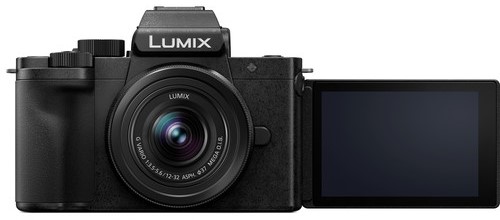
Another spec that vloggers are going to love in the Panasonic Lumix DC-G100 is its “OZO” direction audio. The camera comes with three different microphones and each one of these microphones can pick up noise in three distinct directions: front, rear and surround. So, when your camera’s face detection system picks up a person, the “OZO” directional audio automatically redirects the microphones to best capture them.
In essence, the Panasonic Lumix DC-G100 design allows you to limit background noise without even trying.
Finally, when you are vlogging, you can put the camera into a “Self Shot” mode. When you’re in the “Self Shot” mode, the menu settings become simplified so that you can control things like the self-timer and different Effect Filters for yourself.
One slightly frustrating thing about the Panasonic Lumix DC-G100 handling in “Self Shot” mode is that your video is automatically delayed by 3 seconds, but you can change this if you want to.
Panasonic Lumix DC-G100 Price
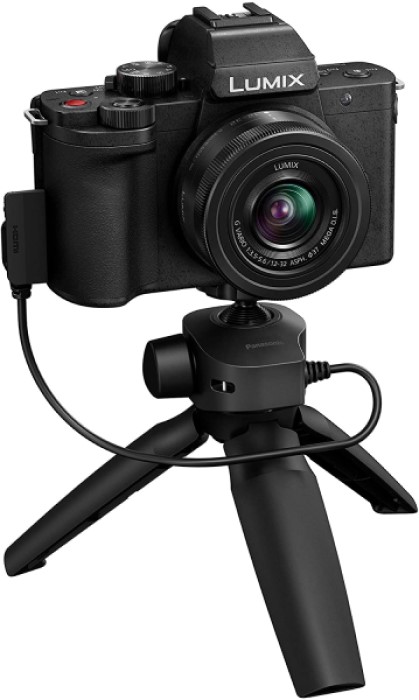
The Panasonic Lumix DC-G100 price is nearly as important as everything else in this review, because vloggers, like photographers, are typically running a pretty tight ship when it comes to their budgeting.
The Panasonic Lumix DC-G100 is currently selling for $800 on Amazon.
But, since the camera did come out quite a few months ago now, I wouldn’t dare purchase it new because I know that I could get a much better deal on a slightly used one.

My favorite used camera retailer, MPB, doesn’t currently have any bodies of the Panasonic Lumix DC-G100 available, but they rotate through hundreds of new cameras every single day, and I know based on past purchases that I’ve made with MPB that you could save hundreds of dollars if you wait and check back in.
If you’re interested in watching for a bargain, here is MPB’s Panasonic Lumix DC-G100 page.
I love talking about MPB so much because I know exactly how much money they’ve saved me over my years in the business. I gave up on Craigslist and Ebay years ago after a series of scams. I just didn’t feel safe using either of those sites and I figured there had to be something better available out there.
Thankfully, I quickly found MPB and realized that they have all of the safeguards in place that websites like Ebay don’t. For starters, I’m not actually purchasing a used camera from an unnamed person on the other side of the internet. I’m purchasing a used camera from MPB that they bought from another photographer.
This means that I know whatever grade the camera has been given is going to be accurate. I also happen to know that MPB hires professional photographers for just this reason.
If you’re interested, you can keep reading about MPB in my MPB review below.
Learn More:
We Recommend
Panasonic Lumix DC-S5 Review

The Panasonic Lumix DC-S5 came out late last year, but thanks to the pandemic craze, it didn’t come out with a ton of fanfare.
I think this isn’t quite fair because it’s an excellent upgrade to an otherwise already excellent line of Panasonic cameras.
This camera is very compact, comes with some shocking specs, and will be an excellent camera for professional vloggers who are willing to spend a pretty penny on a camera that has practically no limitations.
This camera is also a great choice for photographers who had their eye on the Panasonic S1, but couldn’t quite afford its $2,500 price tag.
While I did mention the appeal of this camera to vloggers, it is also aimed at still photographers as well. It comes with different photo modes that haven’t been seen elsewhere before and features a 96MP high-resolution mode.
Let’s get into our full Panasonic Lumix DC-S5 review.
Panasonic Lumix DC-S5 Specs

When it comes to the Panasonic Lumix DC-S5 specs, there’s almost too much to name.
This camera comes with a 24MP full frame CMOS sensor and can shoot 4K video at up to 60p. It appeals to vloggers thanks to the fully articulating touchscreen. The resolution did drop a little bit on this model, but I think that’s the price you have to pay for all of the other features in this camera.
The body is dust and splash resistant and, unlike other Panasonic full-frame cameras, is marketed towards general photographers. I don’t think this is a very niche camera at all.
The Panasonic Lumix DC-S5 is absolutely wonderful with low light shooting. Later on in this article, I’m linking to a video test that has an ISO test in it if you want to see it in action for yourself.
Other Panasonic Lumix DC-S5 Specs Include:
- 24MP CMOS sensor
- ISO range of 100-51,200
- 5-axis in-body image stabilization
- 5.9K RAW video capabilities, 4K video capabilities at up to 60p, and 1080p video capabilities at up to 60p
- 3” fully articulating touchscreen with 1.84m-dots
- EVF with 2.36m-dots
- 7fps burst mode
- Built-in Wi-Fi and Bluetooth
- 440-shot battery life
- 1.57 lbs
Panasonic Lumix DC-S5 Body & Design

The first thing you need to know about the Panasonic Lumix DC-S5 body is that it comes with an L-mount, which means that if you’ve been shooting with Panasonic for a while, then you likely already have Panasonic Lumix DC-S5 lenses. If you don’t, though, then you can purchase the kit lens.
The Panasonic Lumix DC-S5 design is only shocking because the size of the camera is so small. Of course, you don’t get a more compact camera without some losses. With the Panasonic Lumix GH-5, you can expect to lose a top plate LCD which is no longer present.
The mode dial was also shifted slightly, as compared to the S1.
Learn More:
Panasonic Lumix DC-S5 Build & Handling

If you’ve ever shot with a Panasonic Lumix GH-5, you may expect the Panasonic Lumix DC-S5 to physically be quite similar.
And while it’s true that the two cameras look the same, the Panasonic Lumix DC-S5 build is way different. For starters, it is much smaller. This camera measures 3.8” x 5.2” x 3.2”. It’s also much lighter. It weighs just 1.6 lbs.
When it comes to the Panasonic Lumix DC-S5 handling, the first thing I should mention is all of the fun ways to save power. The first is a new shooting mode called the Power Save LVF. It’s supposed to extend the camera’s battery life quite a bit. The second is the fact that this camera comes with a better battery. As compared to the older Panasonic Lumix GH5, this battery should last 15% longer. I’ll talk more about the third battery saving mode in the video section.
If I’m being quite honest, there’s not much to say about the ergonomics of this camera, other than they are excellent (which is a feature that should be expected with a camera at this price point).
Panasonic Lumix DC-S5 Video Performance
Thank you to DSLR Video Shooter for this Panasonic Lumix DC-S5 video performance test.
It is seemingly rare that I get to write about cameras that are built specifically for photographers, but the Panasonic Lumix DC-S5 definitely comes close.
The Panasonic Lumix DC-S5 features 5.9K RAW video, 4K video at up to 60p, and 5-axis in-body image stabilization.
Depending upon what you’ll be using this camera for, you also have the option to shoot with an e-stabilization. This does mean that your image will be slightly cropped, but e-stabilization is a great option for times when you absolutely can’t use a tripod because it provides an extra level of stabilization.

The camera is also great for vloggers because it comes with a flip out screen.
The camera comes with a micro-HDMI, 2 card slots, a headphone jack and microphone input. It also comes with a USB-C input. This is obviously important for transferring data, but it’s also important if you’re looking to shoot a ton of 4K video. You can buy an external battery that allows you to transfer power through the USB-C input into your camera to basically double the amount of time you can shoot in 4K.

DSLR Video Shooter said they got 2 hours of 4K shooting out of the camera by itself, but using this handy battery trick, they got 4 hours.
Since this camera is still not considered one of the best videography cameras you can buy, you will have some issues when shooting video on it. For example, you cannot shoot 4K video at 50 or 60p without an APS-C crop.
You also have a recording limit of 30 minutes while shooting in 4K at 50 or 60p.
Panasonic Lumix DC-S5 Price

So, with all of these incredible specs, you can probably guess that the Panasonic Lumix DC-S5 price isn’t cheap.
When the camera first came out last year, it did so at a cost of $2000. However, since it is a few months old now, used Panasonic Lumix DC-S5 bodies are available to purchase for a discount online.
I actually recently purchased a Panasonic Lumix DC-S5 secondhand for $1,750. I still think I got lucky.
If you’re looking to do what I did and find a used Panasonic Lumix DC-S5 online for way cheaper than the new price tag, then you should check out MPB.

MPB is our favorite used camera retailer. Unlike with Craigslist or Ebay, you aren’t actually dealing with any third party sellers. MPB purchases used equipment from sellers all over the world, cleans it, repackages it, and sells it back to you.
This type of a middleman scenario works excellently for photographers who are spending thousands of dollars on gear because you don’t actually have to take anyone’s word for the state of the camera. MPB specifically hires photographers and videographers to rate each piece of equipment that they buy.
The rating system on MPB ranges from “faulty” to “like new.” With a camera that just came out, like the Panasonic Lumix DC-S5, you can expect to find plenty of them in “like new condition.” If you’re lucky, you’ll also find it in its original packaging.
I just checked and as of the publishing of this article, MPB doesn’t currently have any Panasonic Lumix DC-S5 bodies for sale.
Still, they rotate through hundreds of products everyday. So, if you want to possibly save a couple hundred dollars on your Panasonic Lumix DC-S5 purchase, you can check the Panasonic Lumix DC-S5 page on MPB right here.
Learn More:
We Recommend
Panasonic Lumix DMC GH4 Review
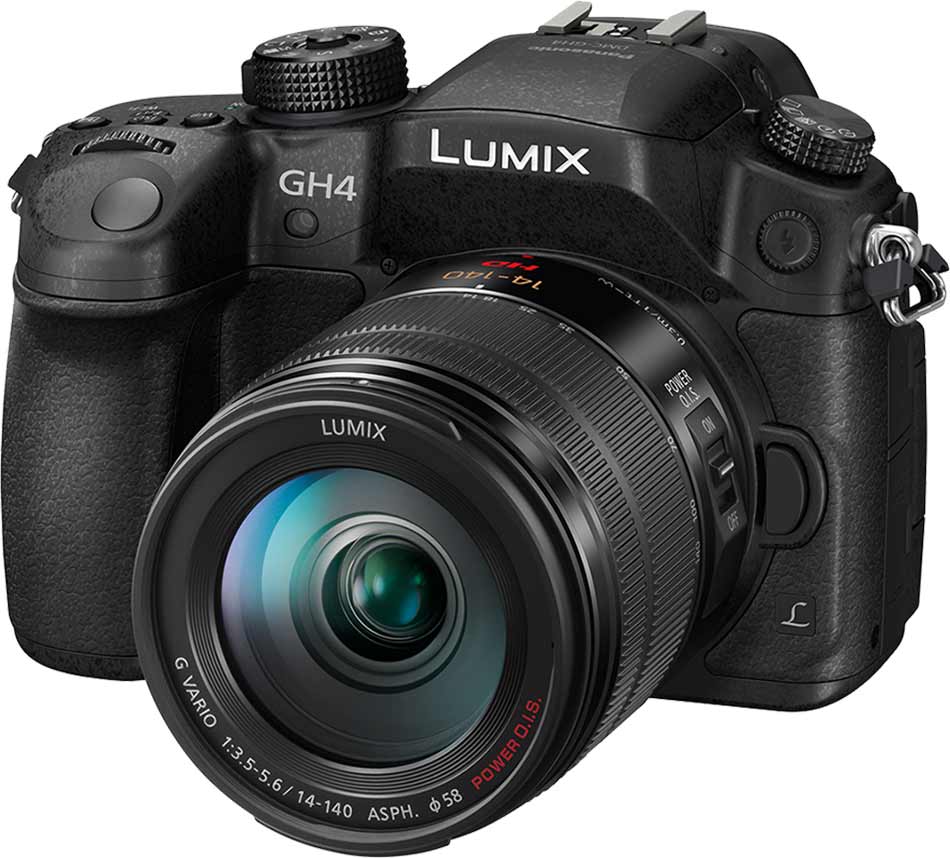
The Panasonic GH4 dropped 5 years ago, so why are we writing a review on it now?
Because the Panasonic GH4 features almost all of the state-of-the-art specs that many cameras dropping in 2019 feature.
The Panasonic GH4 comes with 4K video capabilities, 12fps burst shooting, and a 2.36m dots electronic viewfinder.
This Panasonic GH4 review will show you exactly why you should consider it for your next compact camera purchase.
Panasonic GH4 Specs
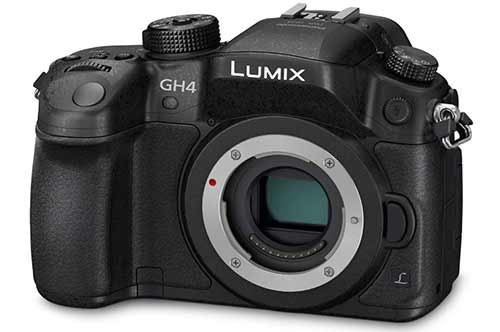
The Panasonic GH4 features 4K video capabilities, 12fps burst shooting, and a very durable build. The Panasonic GH4 should last for 200,000 shots.
Other Panasonic GH4 specs include:
- 16MP Four Thirds CMOS sensor
- ISO range of 200-25600
- 3” fully articulated screen
- 4K video capabilities
- Built-in Wi-Fi
- 1.23 lbs
- Weather sealed
- Magnesium alloy body
The Everyday Dad did a video earlier this year that showcases just how many new features this old camera has.
Panasonic GH4 Body & Design
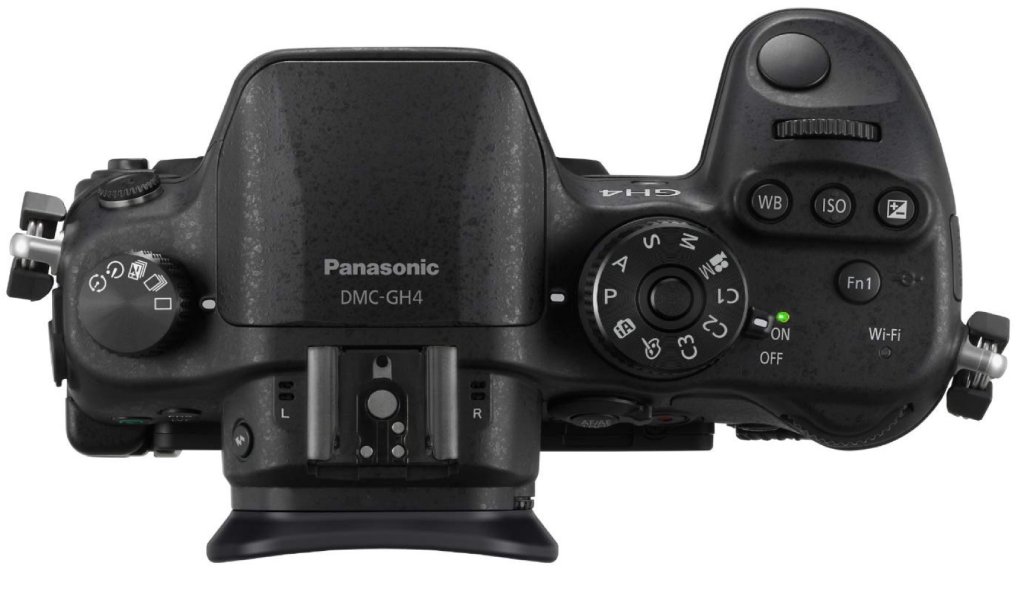
As aforementioned, the Panasonic GH4 features a weather sealed magnesium alloy body that is built to last.
The Panasonic GH4 also has a built-in, pop up flash as well as a hot shoe to connect external flashes.
The fully articulated 3” screen, which is also a touchscreen, doubles as a selfie-friendly screen or a good screen for vloggers since it flips out and upside down.
The Panasonic GH4 and the Panasonic GH3 are almost identical in their button design. The front of the camera doesn’t feature very many buttons, except for the lens mount release button and the flash sync terminal.
However, whereas the Panasonic GH3 didn’t have a locking mechanism on its model dial, the GH4 does.
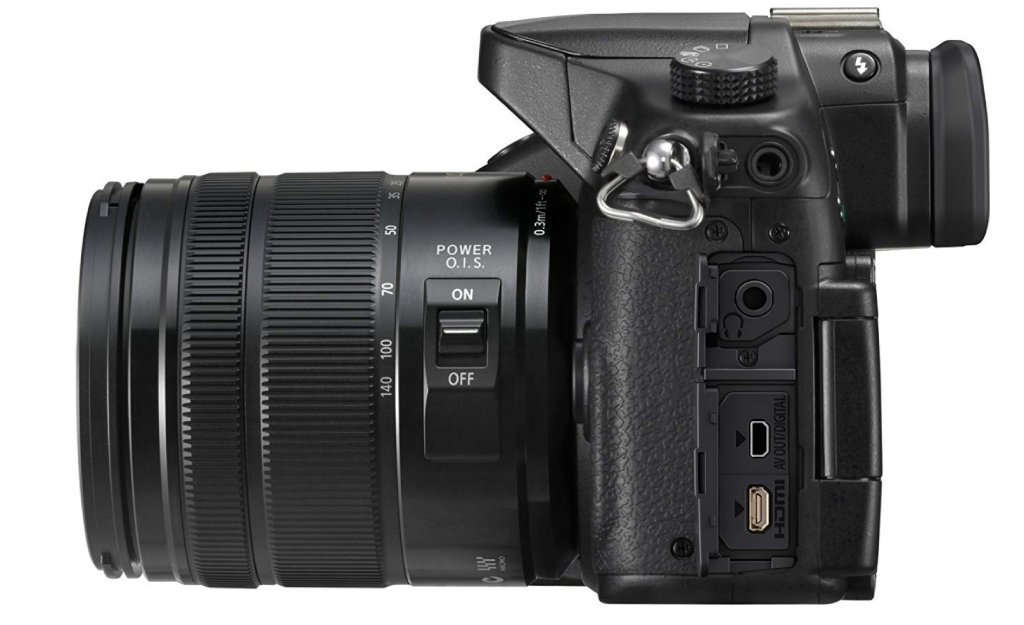
Helpfully, the Panasonic GH4 has a few buttons on the top of the handgrip, like White Balance, ISO and Exposure Compensation buttons.
Just in front of those buttons there is another dial that allows you to make adjustments to your exposure settings.
Finally, there is a Wi-Fi indicator light located closest to you.
The Panasonic GH4 also comes with an external headphone port, a flash sync port, and an external microphone port, which are pictured above.
Learn More:
Panasonic GH4 Build & Handling
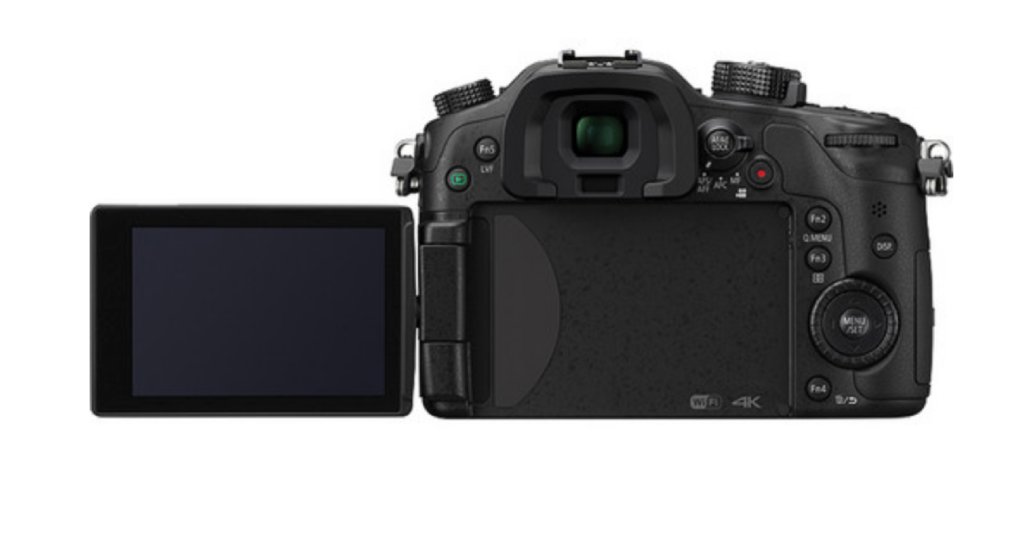
The Panasonic GH4 is quite heavy at 1.23 lbs. It also measures larger than other similar cameras at 5.24 in x 3.6 in x 3.31 in.
This is to be expected of a camera with this many features that is half a decade old.
The Panasonic GH4 rubberized grip is the exact same one featured on the GH3.
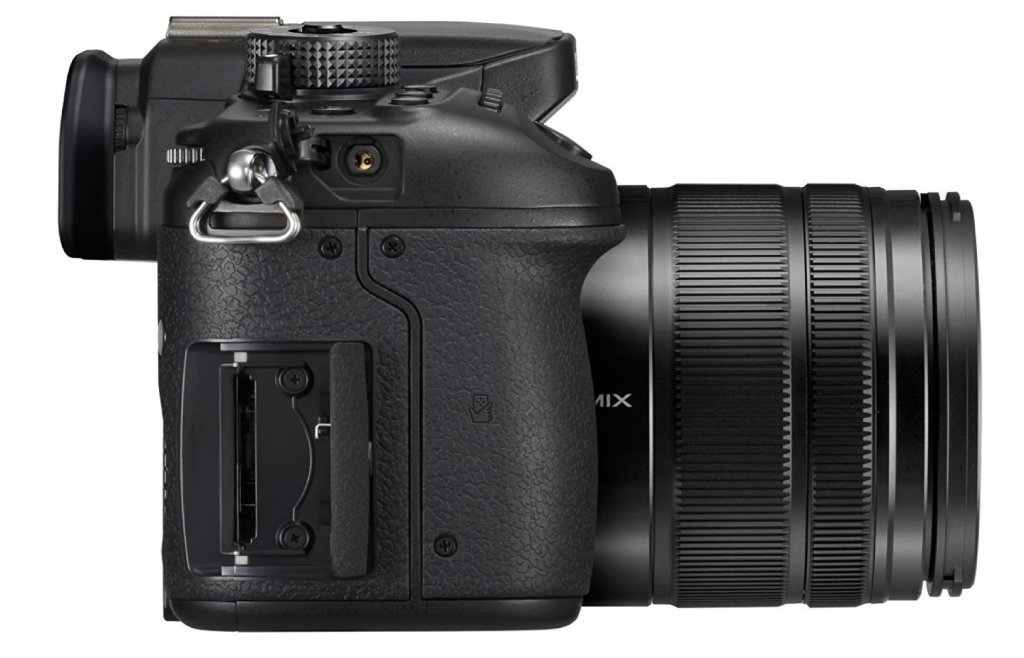
The ergonomics of this camera could be considered less than ideal for photographers with smaller hands since the Panasonic GH4 is extra thick.
The eye-cup on the Panasonic GH4 is improved over that on the GH3 so you can better shoot in inclement weather. It’s larger as well.
The body is both dust and splash proof too.
Panasonic GH4 Video Performance
The Buff Nerds completed this beautiful video test on the Big Island of Hawaii with just the Panasonic Lumix GH4.
The Panasonic GH4 features Cinema 4K video, at 4,096 x 2,160, and 4K Ultra HD video, at 3,840 x 2,160. You can shoot in both of these 4K video options at 100Mbps with IPB compression, or if you’re in the market for a faster bitrate you can shoot in Full HD video at 200Mbps.
You can also use the Panasonic GH4 in 4K with unlimited continuous video recording.
Additionally, for serious videographers, Panasonic created an attachable interface unit, the DMW-YAGH, that allows you to integrate professional cinema technology with the camera.
Check out this video by DSLR Video Shooter to further examine the Panasonic GH4 specs for video.
Panasonic GH4 Price
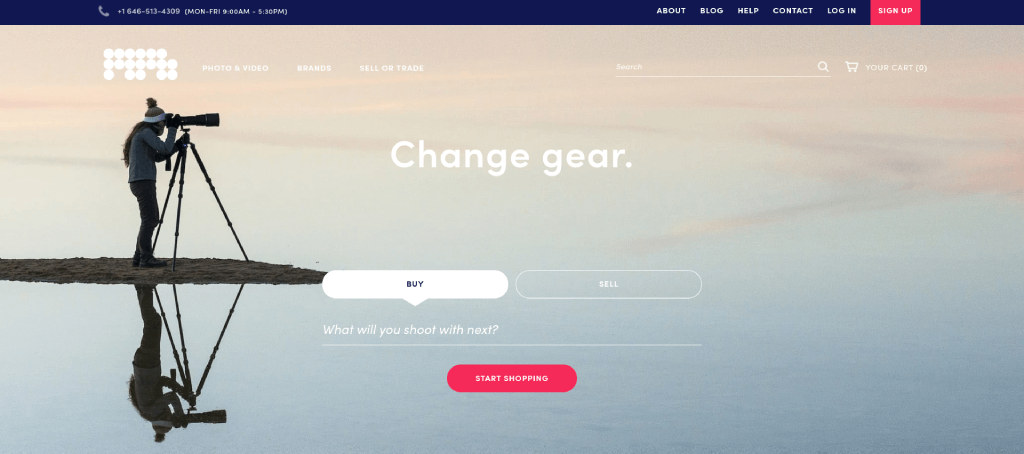
The Panasonic Lumix GH4 is a shocking 60% off on Amazon right now, making it $600 new.
However, if you don’t have $600 right this second and you end up missing the sale, you can buy a Panasonic GH4 used on MPB starting at $500.
Plus, MPB goes through hundreds of products everyday as one of the leading camera resale sites, so there could be a great deal on the Panasonic Lumix GH4 by the time this article gets published.
Finally, MPB features thousands of different cameras at any given time, from antique to rare to brand new cameras. If, after reading this review, you’ve determined the Panasonic Lumix GH4 isn’t for you, there’s probably something that is for you over at MPB.
Learn More:
We Recommend
Panasonic Lumix DMC-G6 Review
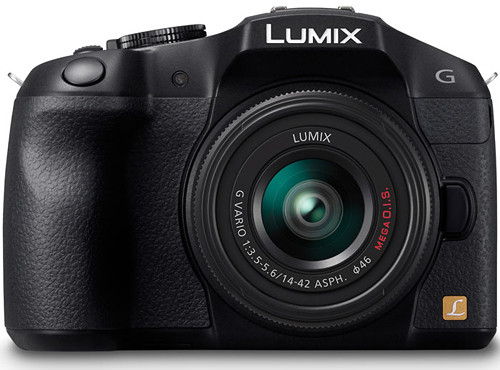
I’m starting to feel older and older as some of my favorite cameras that I was so excited about when they first dropped are now considered budget buys because of their age. The Panasonic Lumix DMC-G6 is the perfect example of this problem I’m having.
The Panasonic Lumix DMC-G6 came out in 2013, which means that it is going on a decade of age. When it first came out, it was one of the best mid-range mirrorless cameras on the market. It was a follow up to the Lumix G5 and designed really similarly.
The Panasonic Lumix DMC-G6 looks like a mini DSLR, presumably because it was designed for DSLR shooters looking to break into the mirrorless market.
When it first came out, the Panasonic Lumix DMC-G6 had quite a few upgrades that made it really competitive. But, is the Panasonic Lumix DMC-G6 still a serious competitor for a shooter in 2021?
In this Panasonic Lumix DMC-G6 review, I’m going to show you all of the Panasonic Lumix DMC-G6 features which made it so popular when it first came out. I’m also going to talk a little bit about the overall design, compatible Panasonic Lumix DMC-G6 lenses, and finally the Panasonic Lumix DMC-G6 video performance.
Panasonic Lumix DMC-G6 Specs
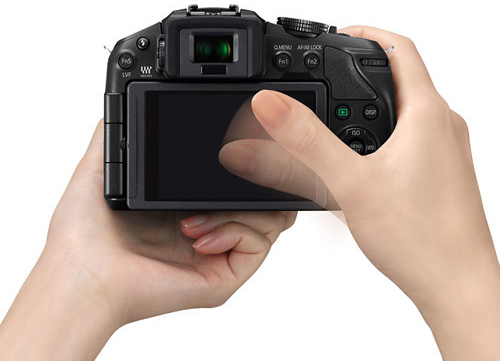
The Panasonic Lumix DMC-G6 is an SLR-style mirrorless camera with an 18MP Four Thirds sensor.
The camera has a good ISO range of 160-25,600 and an autofocus system with 23 points.
Importantly, the 3” LCD screen is fully articulated, so the camera is appealing to videographers. The LCD is a touchscreen that is highly responsive. Of course, since the camera is older, it doesn’t shoot 4K. It does, however, shoot Full HD at up to 60p.
Other Panasonic Lumix DMC-G6 Specs Include:
- 18MP Four Thirds sensor
- ISO range of 160-25,600
- 3” 1.03m-dot touchscreen that is fully articulated
- Full HD video capabilities at up to 60p
- 23-point AF system
- 7fps burst mode
- 1.44m-dot EVF with 100% coverage
- Built-in flash
- Built-in Wi-Fi
- 340-shot battery life
- .86 lbs
Panasonic Lumix DMC-G6 Body & Design
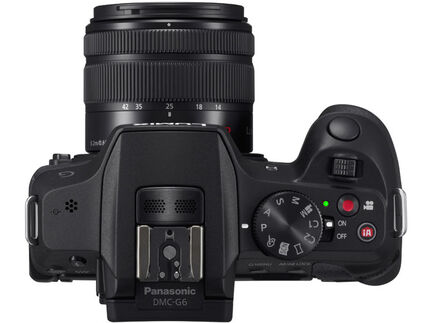
You pretty much know what to expect when it comes to the Panasonic Lumix DMC-G6 body if you’ve shot with any other cameras in this lineup before.
The camera weighs just .86 lbs and it measures 4.8” x 3.35” x 2.8”.
The camera comes in different colors, black, white or silver, and is designed with amateurs in mind. This means that all of the buttons are laid out in an easy to use manner.
One of my favorite things about the design of this camera is its screen. Not only is it fully articulating for vlogging or selfies, but it is also really bright so you shouldn’t have any issues shooting with it in the middle of the day.
Learn More:
Panasonic Lumix DMC-G6 Build & Handling
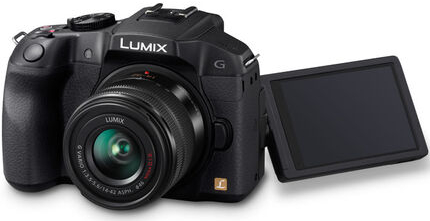
The Panasonic Lumix DMC-G6 build is sturdy. The camera is pretty much wrapped in a rubber coating to make handling easy, but it still feels hefty in your hands.
The camera is really easy to connect to your smartphone so that you can automatically upload images when you need to. You can either transfer your photos exactly how they are or you can compact them into a smaller size. It usually takes under a minute to transfer a photo.
One other thing I need to point out in terms of the Panasonic Lumix DMC-G6 handling is its battery life. This camera can shoot up to 340 shots one one charge, making it a breeze to take on longer shoots or overnight trips.
Panasonic Lumix DMC-G6 Video Performance
Thank you to ReviewLampfor the Panasonic Lumix DMC-G6 video test above.
As I already briefly mentioned, since this camera is older, it doesn’t shoot 4K video. It does, however, shoot Full HD video 60, 50, 30, or 25p. Importantly, you also have full manual control while shooting video. If you are choosing to shoot in MP4, you do need to be mindful of the camera’s audio. It just isn’t as good for some reason.
The camera does come with a 3.5mm external mic socket so you can record better audio.
It’s also really sensitive to light, which means that you are going to be able to take beautiful videos with this camera at events in dim lighting or right before the sun comes up or sets.
The EVF on this camera is also pretty large, so if you are planning on shooting a lot of videos using the EVF you’ll be really happy about it.
Panasonic Lumix DMC-G6 Price
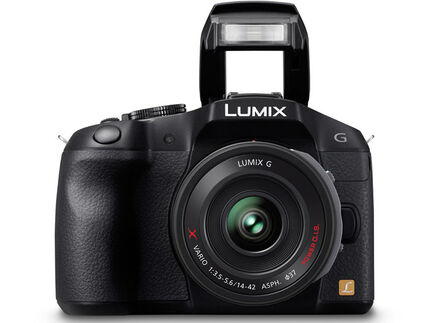
The Panasonic Lumix DMC-G6 was never designed for professional photographers. Even when the Panasonic Lumix DMC-G6 first came out it was designed as a mid-range mirrorless. So, it was never truly expensive.
But, the Panasonic Lumix DMC-G6 price has still gone down quite a lot in the last 8 years as it was replaced by the Panasonic Lumix DMC-G7 and still other cameras after that.
You can no longer get the Panasonic Lumix DMC-G6 directly from the manufacturer, but if you know where to look, you can still get a camera that is in really good condition for half the price.

I checked my favorite camera retailer to see if they had any Panasonic Lumix DMC-G6 bodies right before I published this article and they only had a single one for sale.
But, it is in “like new” condition and it only costs $264.
One of the reasons why I swear by MPB is their rating system. A “like new” camera will be in near mint condition with barely any signs of use. This means that the LCD screen is in perfect condition, the sensor is totally clear of any scratches, and the rubber grips and covers look as if they haven’t been touched.
Another reason why I swear by MPB is that they stand by their products. If you buy something from them and you aren’t happy with it, you can return it. Try doing that with a Craigslist or Ebay seller.
Learn More:
We Recommend
Panasonic Lumix DMC-ZS100 Review
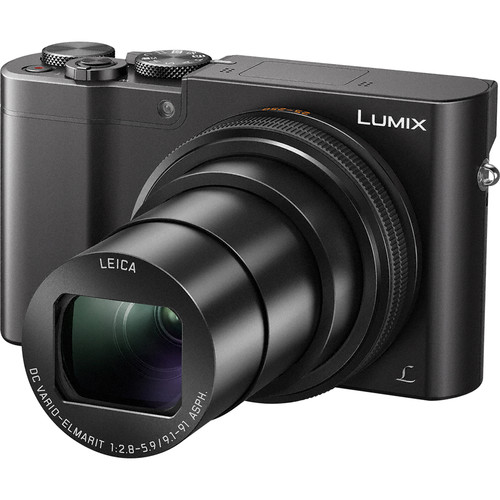
If you haven’t heard about the Panasonic Lumix DMC-ZS100 before, that’s because it was released about 4 years ago without a ton of fanfare.
The Panasonic Lumix DMC-ZS100 is a 1”-type compact camera that replaced an earlier edition Panasonic created, the Panasonic DMC-FZ1000, back in 2014. Among its many upgrades were a much smaller body, a much better zoom lens, and 4K video. The zoom lens was actually the best one available in a camera of this size when it came out in 2016.
The Panasonic Lumix DMC-ZS100 is aimed at a very specific type of photographer, since Panasonic offers the LX100 compact, which is aimed at beginner photographers, and the FZ1000 megazoom, which is aimed at, well, anyone needing a megazoom.
So, the Panasonic Lumix DMC-ZS100 sort of adds the best of both of these cameras together to create a great camera for photographers who want a “travel zoom.”
Let’s get into our full Panasonic Lumix DMC-ZS100 review to find out more.
Panasonic Lumix DMC-ZS100 Specs
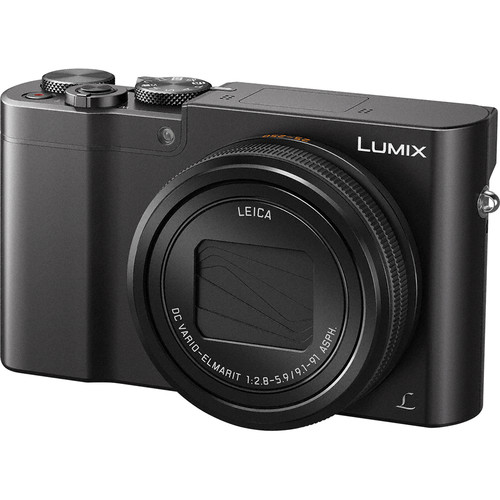
The Panasonic Lumix DMC-ZS100 specs are a little aged at this point, but still impressive for a camera at this price point. For starters, this camera comes with a 20MP CMOS sensor and an ISO range of 125-12,800, so you can expect to capture crisp photos in a wide array of lighting.
It also comes with a hybrid 5-axis image stabilization option while shooting video, which helps to keep your footage stable even when zoomed in and not using a tripod. Of course, I wouldn’t usually recommend not using a tripod, but it’s a nice feature for someone who is brand new to photography.
Speaking of video, this camera can shoot in 4K or Full HD, with some limitations which will be discussed later on.
Other Panasonic Lumix DMC-ZS100 Specs Include:
- 20MP CMOS sensor
- ISO range of 125-12,800
- 4K video capabilities
- 10x optical zoom
- 3” articulating LCD touchscreen with 1.04m-dots
- EVF with 100% coverage
- Built-in flash
- 300-shot battery life
- 0.69 lbs
Panasonic Lumix DMC-ZS100 Body & Design
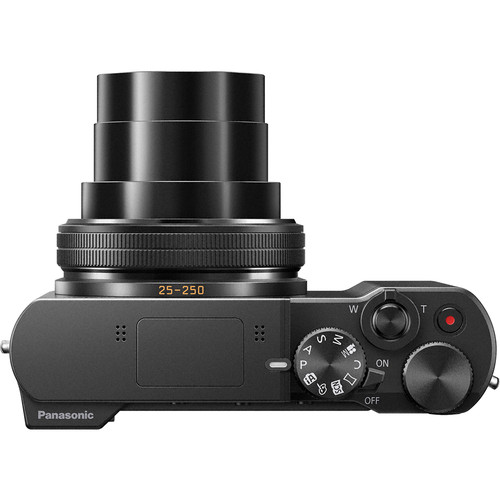
The Panasonic Lumix DMC-ZS100 body is exactly what you would expect of this type of point and shoot zoom camera. It weighs just 0.69 lbs, so it easily travels, and measures 4.37” x 2.56” x 1.73”. So, it doesn’t exactly fit in your pocket, but it gets pretty close.
The Panasonic Lumix DMC-ZS100 design is very similar to other cameras in the line up, except for the fact that the body is built of all-metal, which makes it feel more expensive and professional.
The layout of the buttons on the back of the camera is really intuitive, although the camera is quite small, so the buttons are crammed together. I definitely would not take this camera out shooting anywhere I needed to wear gloves because it would be too frustrating.
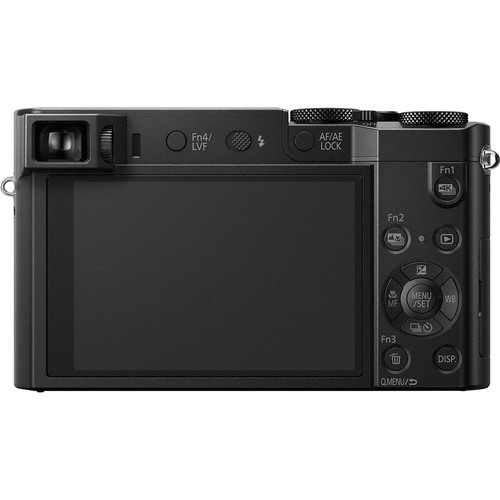
The top of the camera, on the other hand, is quite simple. The pop-up flash takes up most of the space, alongside the power button and mode dial. I suppose this makes sense because the pop-up flash is a big selling point for enthusiast photographers as the flash can be tilted with a finger to bounce the light. This is definitely a fun feature to the Panasonic Lumix DMC-ZS100 build.
Learn More:
Panasonic Lumix DMC-ZS100 Build & Handling
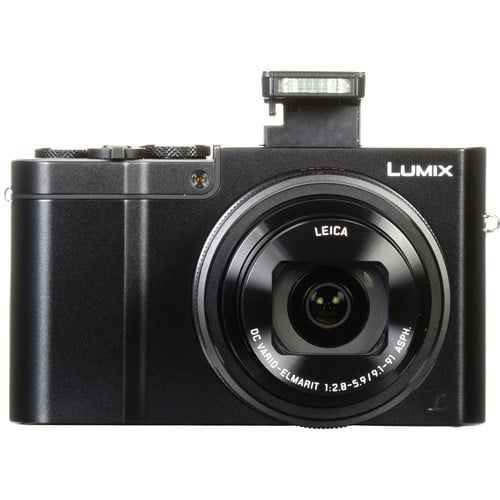
When it comes to the Panasonic Lumix DMC-ZS100 handling I do have a few complaints. The camera has basically no grip, which is to be expected of this type of model, but the all-metal body means the camera is really slippery and I would have expected Panasonic to build some type of rubberized grip to prevent drops. This did not happen and it’s really frustrating. Make sure you’re never shooting with this camera without a wrist strap.
The electronic viewfinder, though, is even worse. You’re definitely not going to be buying this camera for its handling.
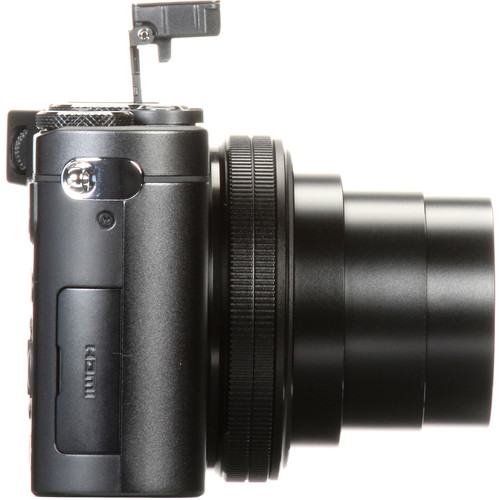
My main problem with the electronic viewfinder is the fact that it’s really tiny. But, its resolution also isn’t great. If you look at the spec sheet, you would expect it to function pretty well, since its EVF features a 1.17m-dot equivalent resolution, but the issue is that in practice the screen is cycling between different colors on the color spectrum, so you’re really only getting something like 307k-dot resolution.
To be honest, when I’m shooting with this camera, I just forego the EVF altogether and that hasn’t been a problem for me. I also recognize that I’m used to shooting with professional-grade equipment and this lower resolution may not be as big of a dealbreaker for other people.
When it comes to the menu, this camera is awesome. You can customize a lot, both physically and digitally. But, you can also customize the menu itself so that you can find the icons you’re looking for more quickly.
Panasonic Lumix DMC-ZS100 Video Performance
Thank you to Exploring Filmmaker for the Panasonic Lumix DMC-ZS100 video performance test above.
As I already mentioned, the Panasonic Lumix DMC-ZS100 features 4K video that works really well for point-and-shoot videography. You will see some noise if you’re going to be shooting in low light or if you’re going to be shooting with zoom but without a tripod.
So, while its 4K video isn’t incredible (it is cropped and you can’t record 4K for longer than 12 minutes), the fact that the Panasonic Lumix DMC-ZS100 comes with 4K at all at its price point is surprising.
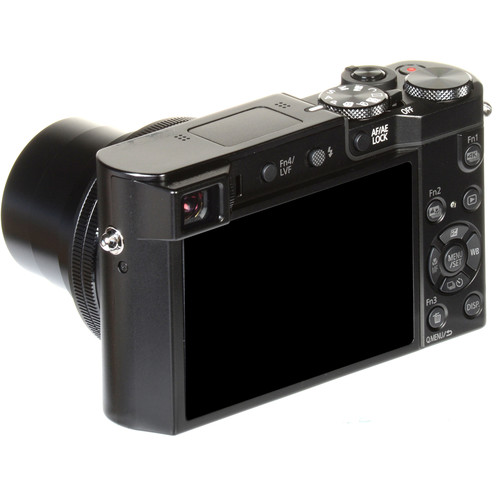
While shooting video, my favorite aspect of this camera is its autofocus which seems to work quickly and well. The fact that the Panasonic Lumix DMC-ZS100 features a touchscreen also means that you can simply tap on whatever subject you want to track.
Unfortunately, the audio isn’t incredible with this camera because you can’t use an external microphone. The lack of this feature, alone, lets me know that the Panasonic Lumix DMC-ZS100 wasn’t built for videographers. Still, unless you’re going to be shooting video outdoors quite frequently, it will do just fine.
Panasonic Lumix DMC-ZS100 Price
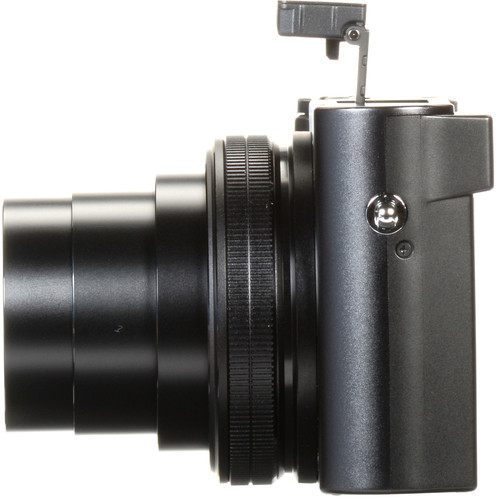
I obviously can’t pull the Panasonic Lumix DMC-ZS100 price anymore because this camera is now several years old and is no longer being sold new, from Panasonic.
So, if you want to purchase a Panasonic Lumix DMC-ZS100 then you need to do so one a used camera site.
MPB is one of PhotographyTalk’s favorite used camera retailers for a number of reasons, but the first is that they save each member of our staff hundreds of dollars a year.
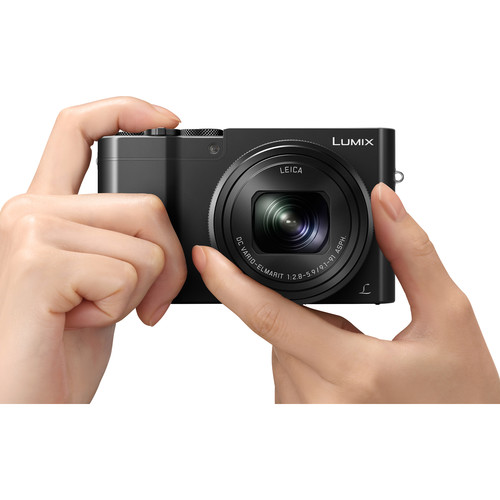
The second is that you can actually expect every camera, or lens, that you purchase off of MPB to show up at your front door exactly as it was described online. Scams have been proliferating the used camera industry since Ebay and Craigslist first became popular and there is nothing more disappointing than assuming you’re purchasing a camera in good or excellent condition and then finding out the hard way that this isn’t true.

MPB hires professional photographers and videographers to rate each piece of equipment they receive. They take meticulous notes on that condition and then pass that information along to you so you can make an informed decision.
If you want to learn more about why we love MPB, then you can do so in the learn more links below.
Now, unfortunately as of the writing of this article, MPB doesn’t have any Panasonic Lumix DMC-ZS100 bodies for sale, but that doesn’t mean they won’t have one up by the time you’re reading this.
If you want to save yourself a ton of money, you can check their Panasonic Lumix DMC-ZS100 pageright here. You’ll likely end up saving hundreds of dollars for a camera that is still in excellent condition.
Learn More:
We Recommend
Panasonic Lumix G9 Review
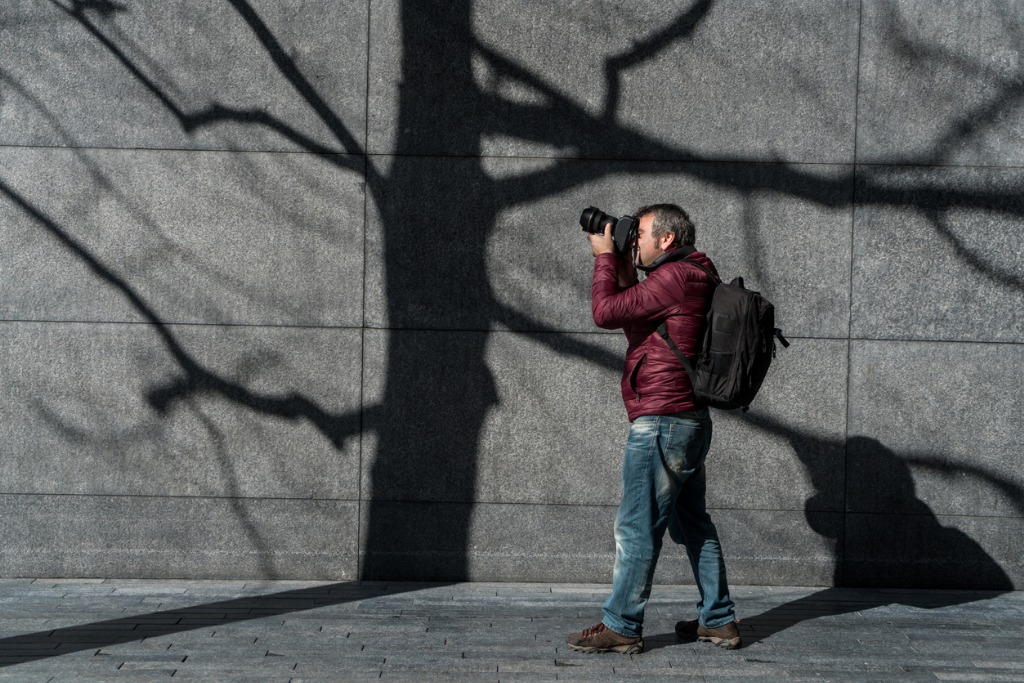
photo byozgurdonmaz via iStock
The Panasonic Lumix G9 is a mirrorless Micro Four Thirds camera primarily optimized for stills. While there are many great Panasonic cameras that are specialized in video recording, the company was struggling to create a stills-oriented camera that will be good enough to compete with the products of other major photography companies. This is why we got the Panasonic G9.
Although it is primarily aimed at stills photographers, the G9 can also be a powerful tool for videographers. The camera is equipped with a 20.3-Megapixel sensor with 5-axis Dual image stabilization, it offers 4K 60P recording, and it is encased in a weather-sealed body built out of magnesium-alloy. Additionally, the G9 has a High-Resolution Mode that will allow you to produce 80.6-megapixel images, and it offers burst shooting of up to 60 frames per second. Sounds awesome, right?
Overall, the G9 is one of the best cameras developed by Panasonic, but is this the right camera for you? Find out by reading our Panasonic Lumix G9 Review.
Panasonic Lumix G9 Specs
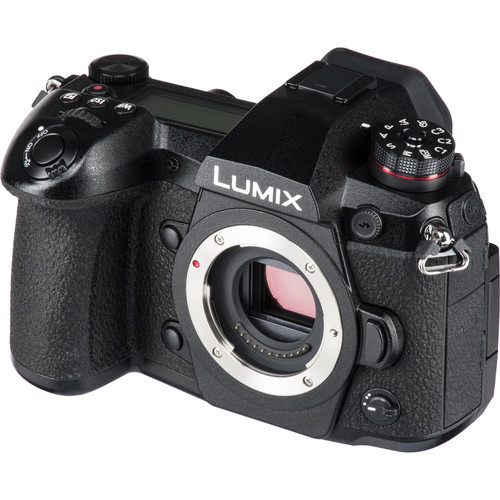
The Panasonic Lumix G9 features a 20.3MP Micro Four Thirds Live MOS sensor without a low-pass filter, but the camera is capable of producing 80.6-megapixel images if you use its High-Resolution Mode. How is this possible? Well, the Panasonic Lumix G9 has an option to combine eight different shots into an up to 80.6-megapixel image. This allows you to make sharp and detailed photos that can be printed on huge surfaces.
The sensitivity range of the camera runs from ISO 100 to 25,600. In addition, the G9 has a 5-Axis Dual I.S. 2.0 (Image Stabilizer), a technology that helps in reducing the effects of camera shake in both photo and video recording. According to the company, even lenses not equipped with Optical Image Stabilizers (O.I.S.) can benefit from the LUMIX G9 in-body image stabilization. Because of this, the Panasonic Lumix G9 handles low-light conditions amazingly well.
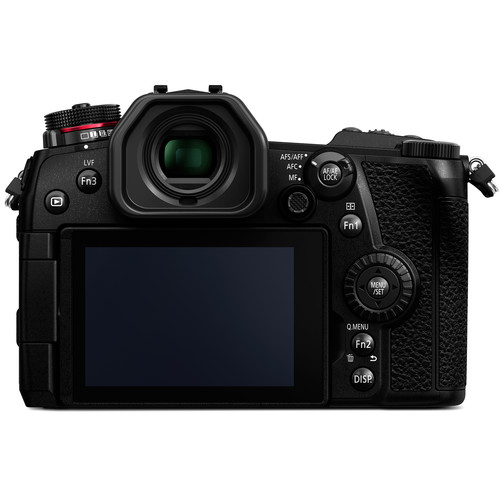
The camera uses DFD (Depth from Defocus) autofocus technology, and it has 225-area AF coverage. The G9 is successful in focusing subjects in very low light (down to EV -4), while the camera acquires focus in only 0.04 seconds. All in all, its autofocus system is impressive, but its disadvantage is that it doesn’t have phase-detection.
Finally, the Panasonic Lumix G9 offers very fast shooting speeds. For example, the camera allows you to shoot a staggering 60 frames per second (RAW or JPEG files). However, if you want to use continuous autofocus, you can take “only” 20 frames per second (black-out free) with electronic shutter and 9 fps with mechanical shutter. The electronic shutter reaches shutter speeds of 1/32,000-second, while the mechanical shutter tops out at 1/8000 second.
Panasonic Lumix G9 Design
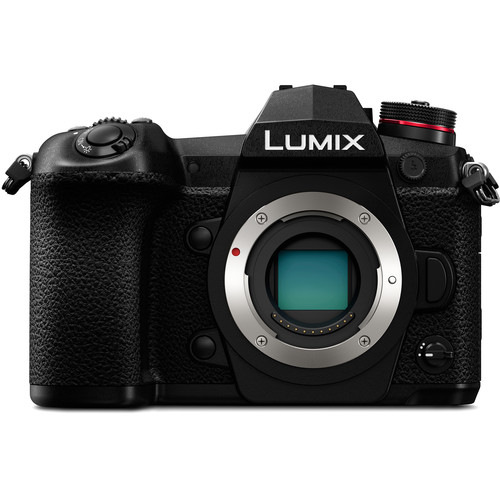
The Panasonic Lumix G9 has a DSLR-like design. The camera measures 5.39 x 3.82 x 3.6 inches and weighs 1.45 lbs. (including batteries). With this being said, the G9 is not much smaller or lighter than an average DSLR, although we would expect it given that it is a mirrorless model. However, the G9 is a durable, user-friendly camera with excellent ergonomics.
The Lumix G9 features one of the best viewfinders one can find on a mirrorless camera. The viewfinder has a 3,680,000-dot resolution, 0.83x magnification, and 120 fps refresh rate. Also, it is very large and bright so you will definitely enjoy using it.
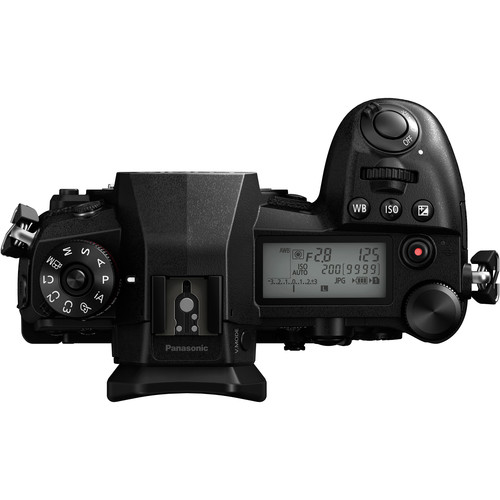
On the back of the camera, there is a vari-angle 3-inch touchscreen display with a resolution of 1,040k dots. Additionally, the camera has a top LCD screen which is useful for quickly checking the camera’s settings when you are in the middle of the shooting.
In terms of connectivity, the camera features USB Power Supply, dual SD card slots (UHS-II U3 compatible), Wi-Fi, and Bluetooth 4.2.
Learn More:
- The Nikon Z50 is Officially Nikon's First Crop Sensor Mirrorless Camera
- Everything We Know About the Sony a7S III
Panasonic Lumix G9 Build and Handling
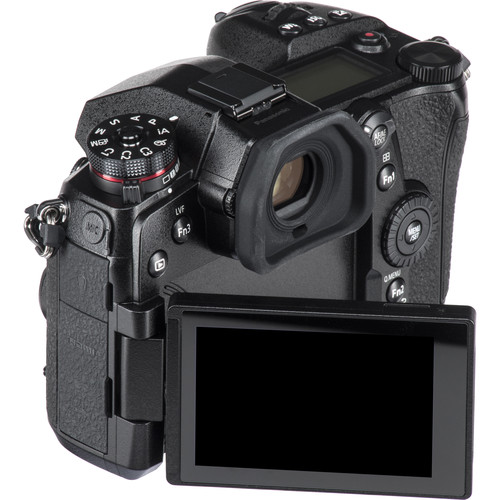
One thing you will certainly love about the G9 is its great build quality. The camera was built out of magnesium-alloy, and it has weather sealing on each joint, dial and button. The G9 can be used both in extremely cold (down to -10 degrees) and extremely hot temperatures. Also, a small amount of moisture, water or dust will not do much harm to the camera.
Another thing that is great about the G9 is that it has a large and deep grip because of which the camera will feel comfortable in your hand. Its buttons and dials are placed in intuitive positions. Also, on the back of the camera there is a very useful joystick for moving the focus point around the frame.
The battery life of the camera is about 400 shots, but you can double it if you invest in an optional vertical battery grip.
Panasonic Lumix G9 Video Performance
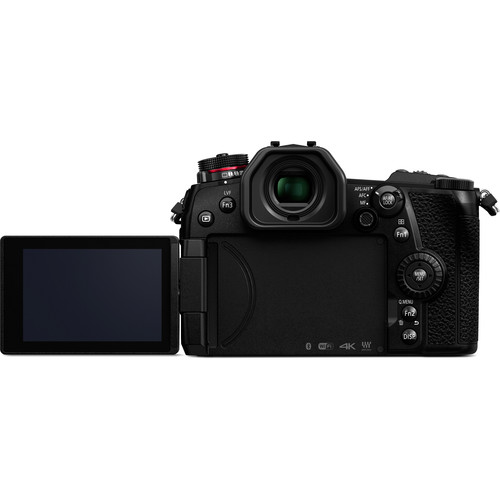
Although we have stated this is a stills-oriented camera, the Panasonic Lumix G9 is also great for video recording. Of course, there are much better Panasonic cameras for videographers (for example, the Panasonic GH5), but the G9 can also get work done.
The Panasonic Lumix G9 shoots Cinema 4K video (4096 x 2160) at 60 fps and Full HD video at up to 180fps. Also, there is a convenient option to extract 8MP still images from 4K, and 18MP images from 6K footage. Additionally, the camera has a microphone and headphone jacks, as well as an HDMI output.
Downsides are that the Lumix G9 doesn’t have V-Log or 10-bit video, and it has an annoying time limit (10 minutes) for 4K 60P video recordings.
Learn more about the Panasonic Lumix G9 in the video above by The Art of Photography
Panasonic Lumix G9 Lenses
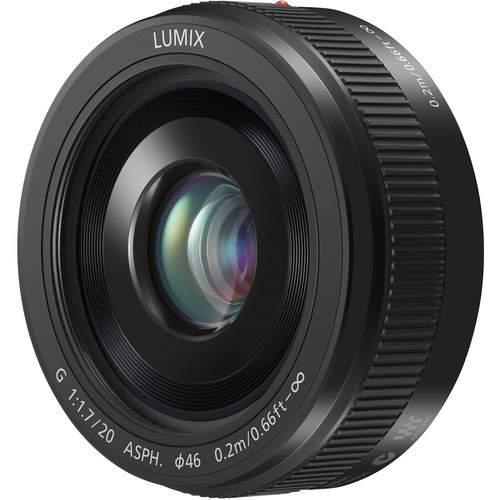
By now, it should be clear that the Panasonic Lumix G9 offers impressive features for both stills and video. However, if you don’t pair your camera body with the right lenses, you will never get the desired results.
Which lens to choose can be a hard decision, and it largely depends on your photography style. However, we suggest you try some of the following lenses:
Olympus M. Zuiko ED 12 – 100mm F/4.0 IS PRO – An excellent zoom lens with a huge focal range.
Panasonic Leica DG Nocticron 42.5mm f/1.2 ASPH – A versatile prime lens.
Olympus Zuiko Digital ED 60mm f/2.8 Macro Lens – A great option for portraits.
Panasonic Lumix G 20mm II f/1.7 – A wide-angle prime with a large f/1.7 aperture.
Learn More:
Panasonic Lumix G9 Price
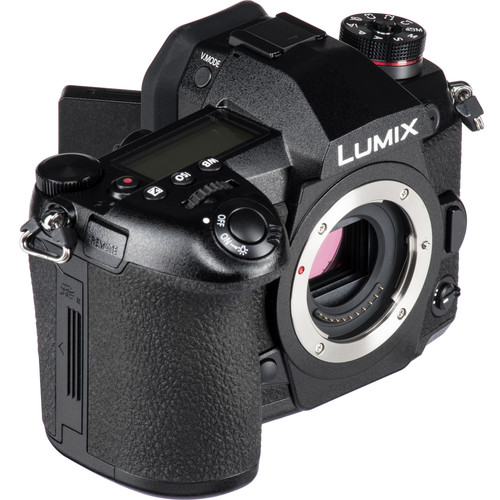
At the moment, you can buy a new Panasonic Lumix G9 for around $1,197.99 (body only). If this is out of your budget, you can also consider buying a used one. For example, on MPB, you can find a used Panasonic Lumix G9 for the price as low as $869.00.
If you're not familiar with MPB, check out our MPB review to learn why it's our top-recommended used gear resource.
We Recommend
Panasonic Lumix GH5S Review
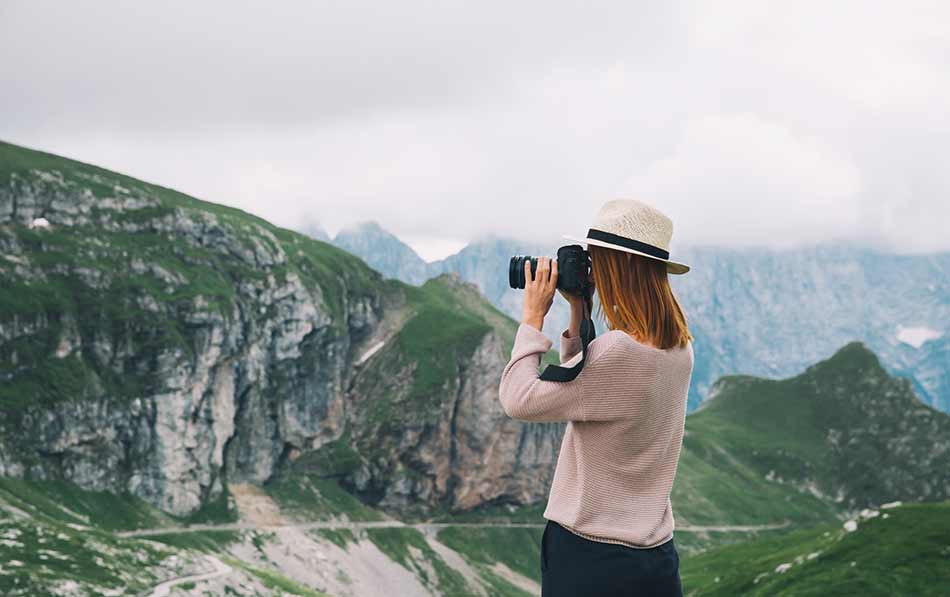
phot by NataliaDeribinavia iStock
The Panasonic Lumix GH5S is a mirrorless camera specifically designed to provide astonishing video.
While it lacks features that will satisfy the needs of all types of consumers, videographers will truly enjoy what this camera is capable of.
Find out why this is the gem among mirrorless cameras for shooting video in the following review.
Compare the Panasonic GH5S' specs with the Panasonic GH5.
Why Does the GH5S Have Only 10.28 Megapixels?
The GH5S was built around Micro Four Thirds sensor that has only 10.28 megapixels.
This is way below today’s standards, but although the bigger amount of megapixels sounds attractive, we all know it is not all that matters.
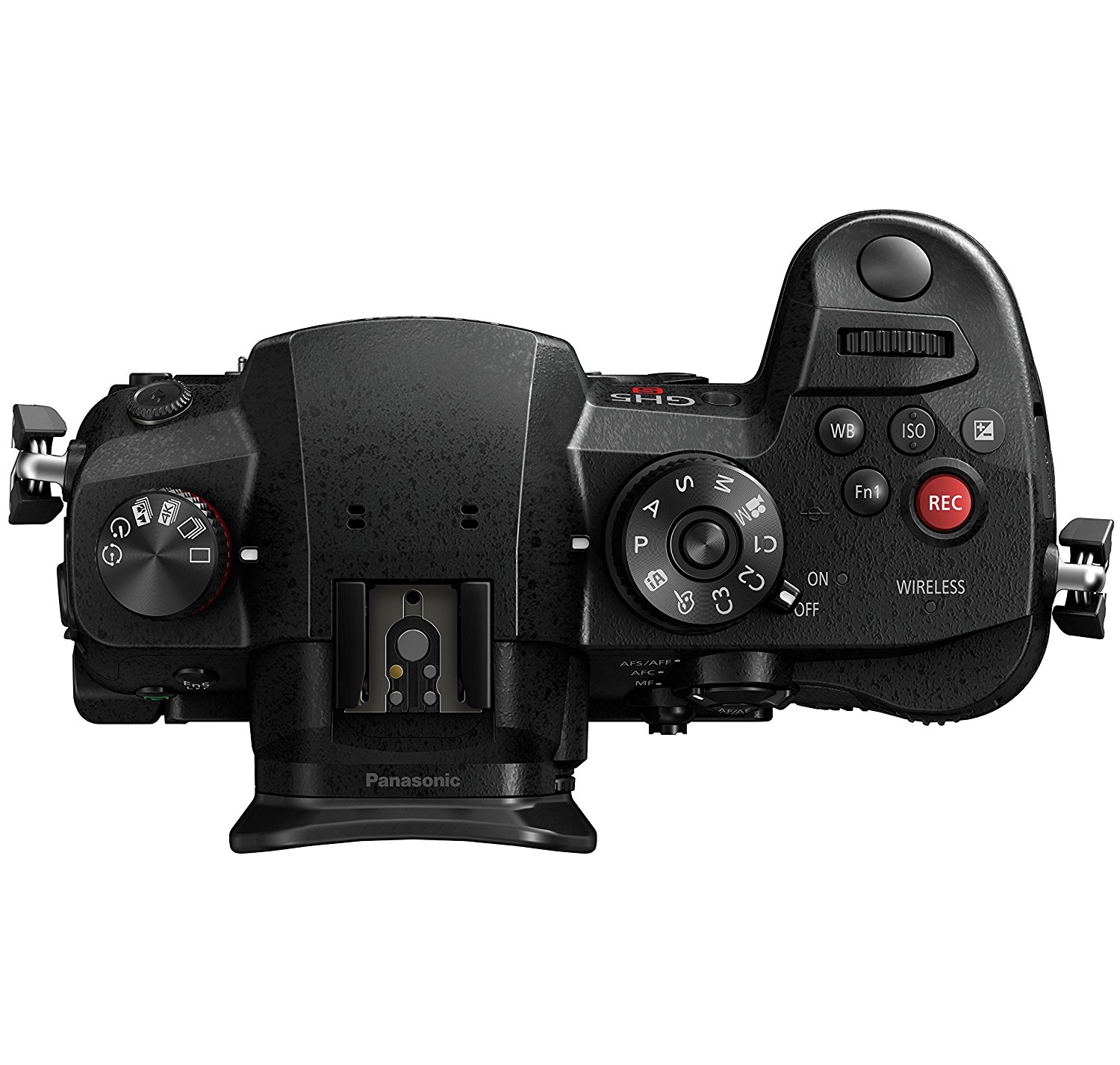
The truth is that Panasonic decided to cut resolution in the GH5S because they wanted to make pixels on this camera physically larger.
It is well known that larger pixels capture more light and less noise which improves the dynamic range of the camera and enhances its performance in low-light conditions.
In other words, fewer pixels provide better results for recordings, and this camera is all about video.
In fact, the sensor handles multiple aspect ratios (4:3, 17:9, 16:9 and 3:2) without a change in focal length and has an ISO range from 160 – 51,200, which is extendable to 80 – 204,800.
The Panasonic GH5S Has Cinematic 4K Video Features
The stand-out feature of this camera is its capability to deliver Cinema 4K (C4K: 4096 x 2160) 60p/50p 8-bit video recording with no crop and without a limit to the recording time.
In addition, the GH5S allows you to record 1080p footage at up to 240 frames per second.
There is also the possibility to extract 8MP stills from 4K video footage.
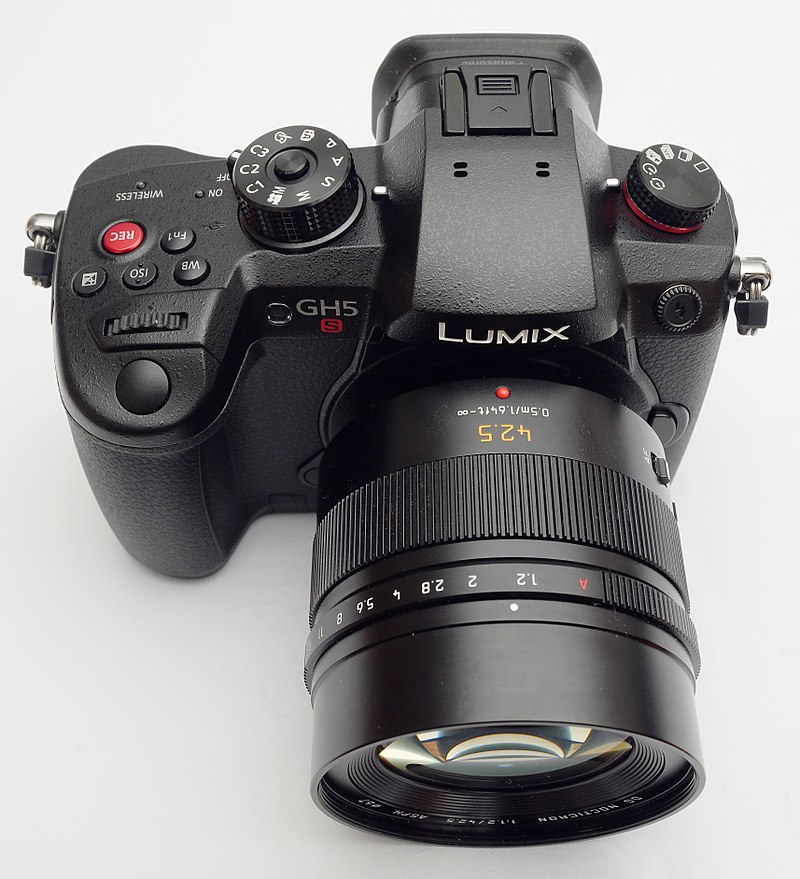
You can see the 4K recording made on this camera in the video above (don’t forget to choose 4K quality in YouTube settings).
Learn More:
The Panasonic GH5S Body is Compact and Weatherproof
With dimensions of 5.45 x 3.86 x 3.44 inches and weight of 1.45 lbs., the GH5S is one of the most compact and lightest cameras of similar capabilities.
This doesn’t mean the camera is fragile...
On the opposite, the GH5S was designed to sustain freezing temperatures as low as -10F degrees, while splashes and dust can’t do much harm either.
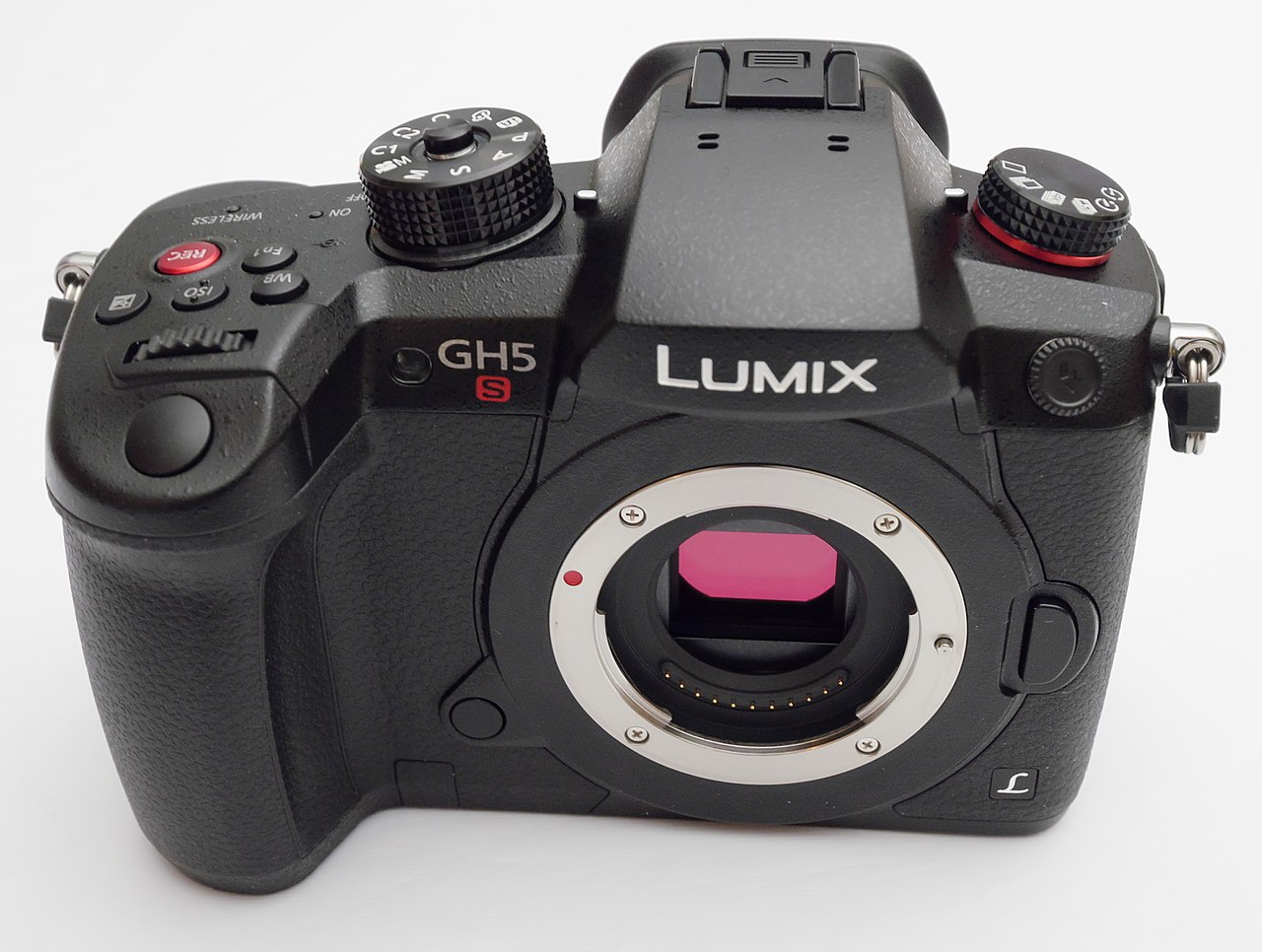
The camera incorporates 1.62M-dot (900 x 600 pixel) fully articulated LCD and 3.68M-dot (1280 x 960 pixel) OLED viewfinder with 0.76x magnification.
The LCD is tiltable which makes things easier for vloggers or selfie maniacs.
Get a detailed look at this camera in the video below by TheCameraStoreTV.
Good Connectivity Options in the GH5S
The camera has a place for 2 SD card slots so you will have enough place to store your shootings.
There is an HDMI connection which will allow you to playback or externally record videos as well.
For connectivity options, there are also headphone jacks, microphone jacks, and PC sync port.
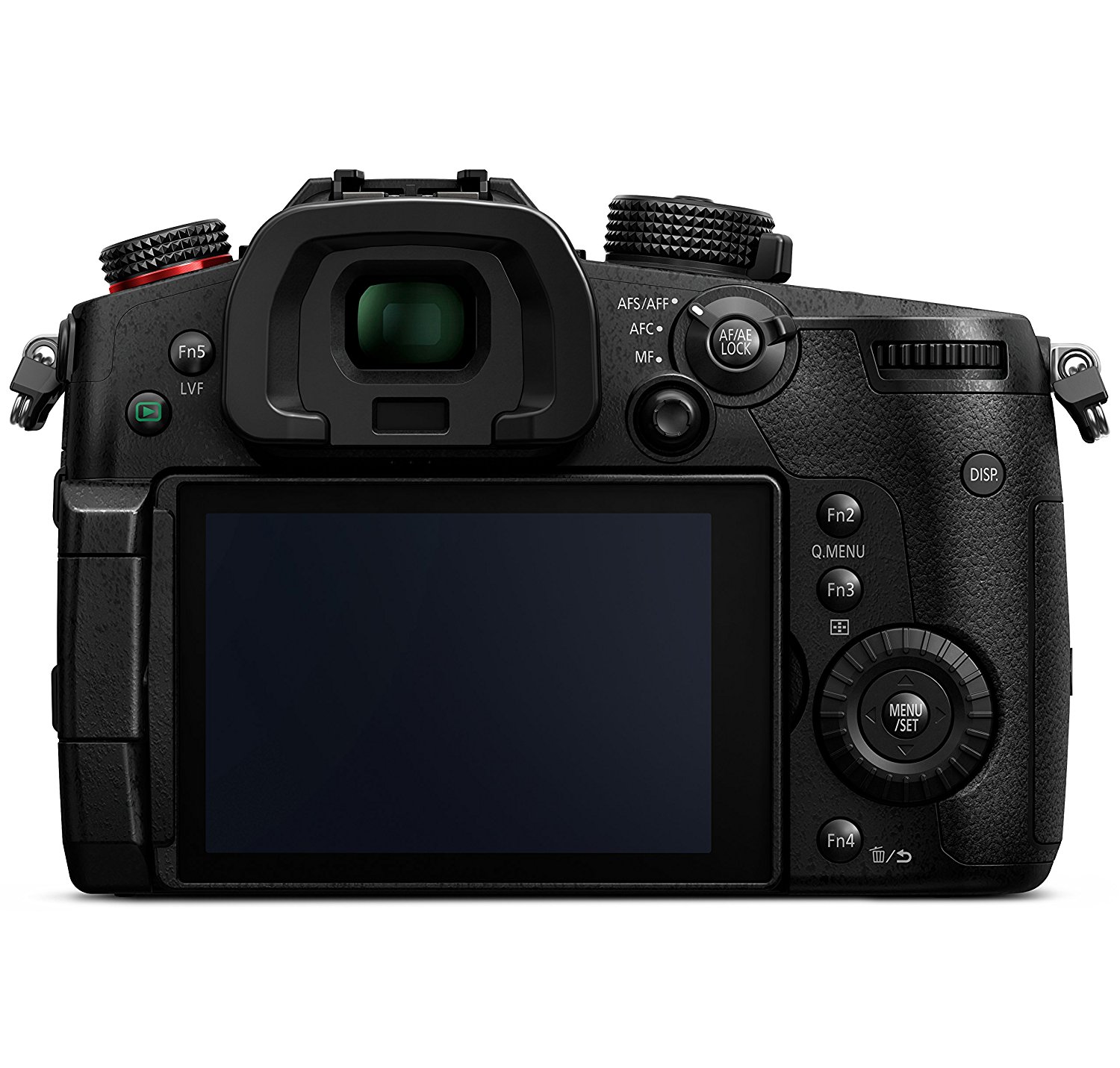
Panasonic GH5S Price
As we already pointed out, the GH5S is not aimed for everything and for everyone.
If you prefer taking stills over videos, this model is probably not the best choice. In that case, you might want to look at one of the other cameras from our review section.
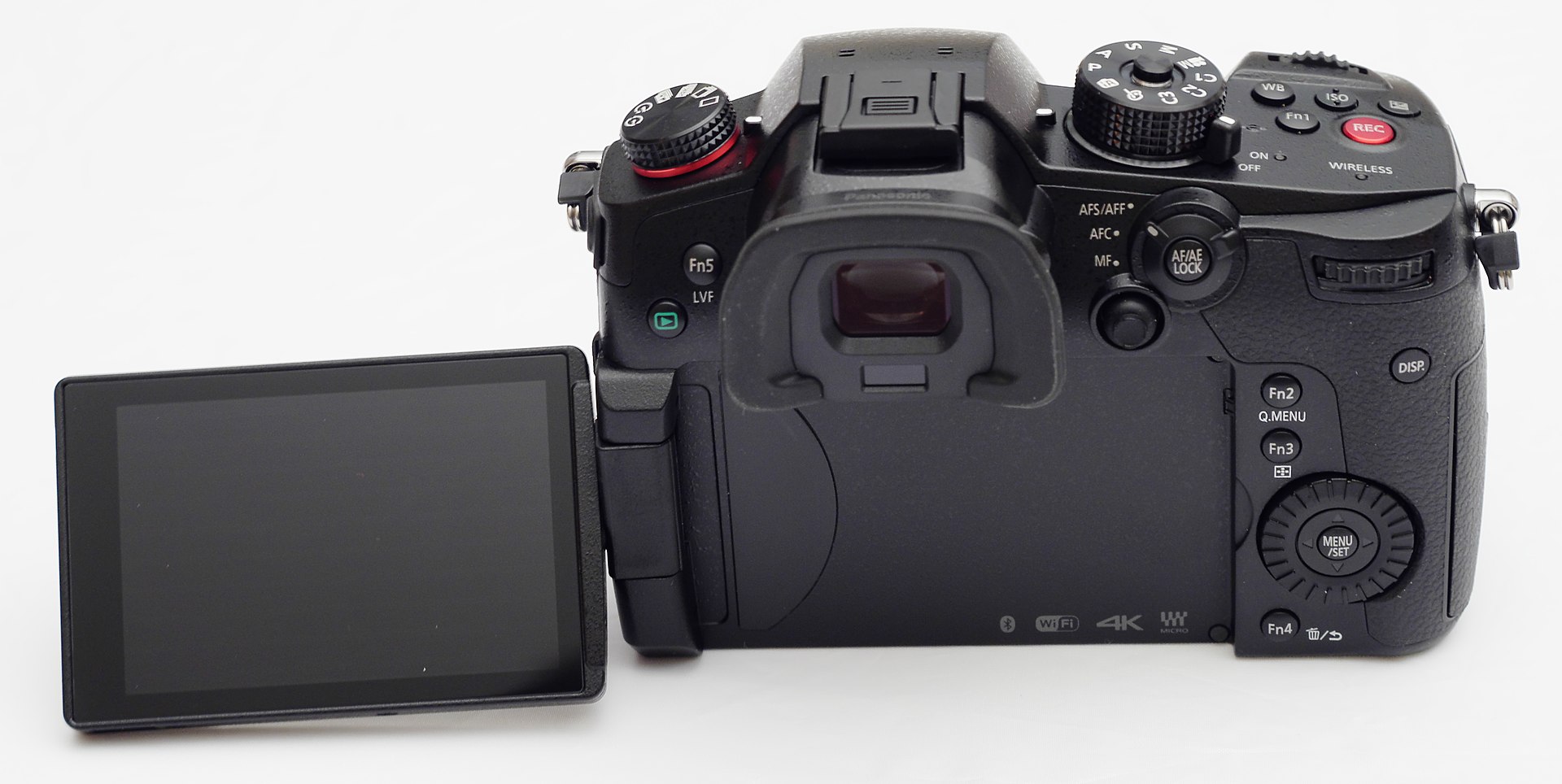
If you are looking for a compact camera that can produce great videos you should consider buying the Panasonic Lumix GH5S.
At the moment, the camera is priced at $2,500.
Have questions? Visit the Panasonic camera forum.
We Recommend
Panasonic Lumix S1 Review

Photo by Anastase Maragos on Unsplash
When Panasonic’s first full frame mirrorless camera dropped a few years ago, nobody could stop talking about it. The Panasonic Lumix S1 was a pretty big deal, not only for Panasonic lovers, but because Panasonic unveiled this full frame mirrorless camera alongside a big lineup of incredible lenses.
When it comes to mirrorless cameras, not every manufacturer puts as much forethought into their lens lineup as Panasonic did and it was cool to see.
The Panasonic Lumix S1 also featured one of the highest resolution electronic viewfinders on the market when it came out. This is still true to this day.
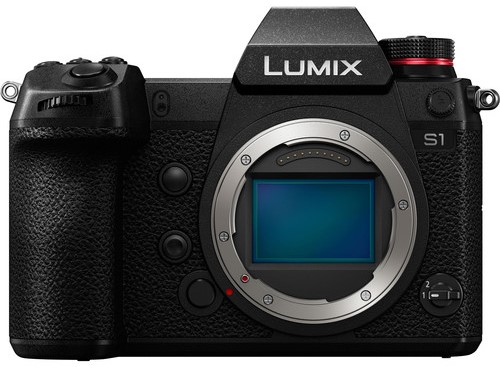
Overall, the Panasonic Lumix S1 design is very appealing to still photographers, while the upgraded Panasonic Lumix S1H is the better choice for videographers. However, there is a cinematic firmware upgrade available for videographers wanting to save some money and purchase the Panasonic Lumix S1 instead.
But, since the Panasonic Lumix S1 came out a few years ago, we figured we should do a full Panasonic Lumix S1 review to figure out if this camera is really still worth it in 2020.
We’re going to cover the Panasonic Lumix S1 specs, build, video and lenses.
Panasonic Lumix S1 Specs
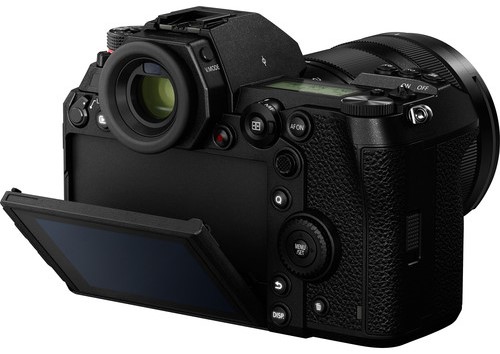
We already talked about the electronic viewfinder on the panasonic Lumix S1, which features 5.7m-dots, but there are plenty of other Panasonic Lumix S1 features that are just as impressive.
For example, the in-camera image-stabilization is one of the best on the market, as is its weather-sealing.
The Panasonic Lumix S1 also features a high res mode that allows you to shoot multiple shots at 96MP.
Other Panasonic Lumix S1 Specs:
- 24MP full-frame sensor
- 5-axis in-body image stabilization
- 6fps burst mode
- 5.76m-dot electronic viewfinder
- Dual-hinged 2.1m-dot touchscreen LCD
- 4K/60p video with 1.5x crop or 4K/30p video without a crop
- 380-shot battery life
- Weather-sealing
Let’s do a deeper dive into some of our favorite specs.
In the video below by PanasonicUK, the weather-sealing on the Lumix S1 is tested by throwing dust and breaking multiple panes of glass on the camera. The creators of the video also submerge the camera in a box of ice, throw 4 liters of water at it, and douse the camera with what looks to be a flamethrower.
When we say the Panasonic Lumix S1 features full weather-proofing, we are not kidding around. It’s a phenomenal camera for an adventurous photographer, or a photographer who lives in an area where they can reasonably expect crazy weather.
Panasonic Lumix S1 Body & Design
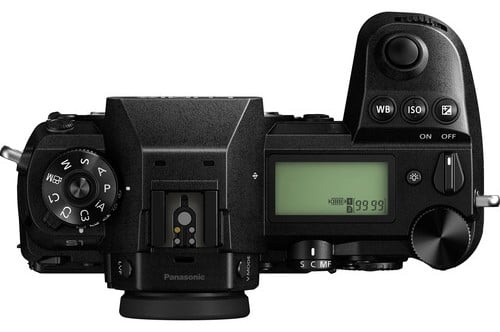
We obviously already talked a little bit about the Panasonic Lumix S1 build, but the reason it can be so incredibly weather-proofed is that it’s pretty heavy. Weighing in at just over 2.25 lbs, the Panasonic Lumix S1 is definitely one of the heavier cameras in its category.
It’s also much bigger than similar cameras, but again that allows the camera to feel as sturdy as it does.
The entire camera is designed around the high-resolution EVF. There’s a button next to the EVF that allows you to set the EVF to go to sleep a specific amount of seconds after you take your eye away from it.
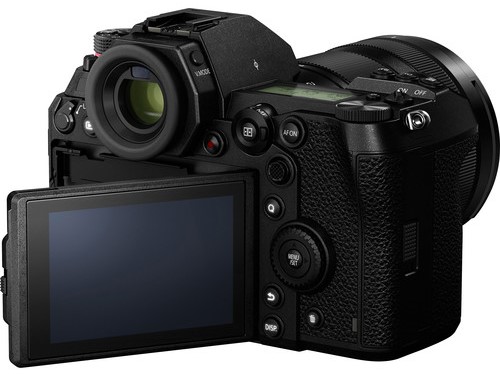
The EVF is surrounded by a large circular eyecup that must be rotated before you can take it off. The lag on this EVF is less than .005 seconds, which is just about the best you’ll find on the market.
The other portions of the Panasonic Lumix S1 are all highly customizable. For example, there is an eight-way rear joystick that controls the AF point (which is much better than the four-way joysticks featured on other Panasonic cameras).
Learn More:
Panasonic Lumix S1 Build & Handling
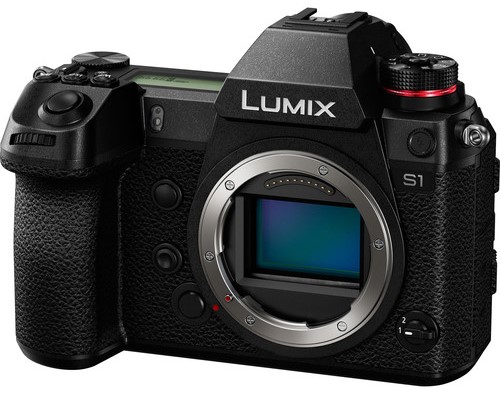
My favorite thing about the Panasonic Lumix S1 handling is that the buttons are all backlit, which you don’t see all too often with mirrorless cameras. This allows you to shoot in low-light environments with ease.
The LCD touchscreen is also very helpful. It’s double-hinged, like the LCD on the Fujifilm X-T2. You can either make it tilt up and down for shooting landscapes or tilt it up while shooting portraits.
While the battery life on the Panasonic Lumix S1 isn’t anything to write home about, at 400-shots it isn’t awful either. You can prevent running your battery low by using the LCD or EVF less often.
The most helpful tip I’ve learned about the battery life on the Panasonic Lumix S1 is that you can make it jump up to nearly 1,000 shots if you use that button next to the EVF I talked about to make the camera go to sleep immediately after you take your eye away.
Panasonic Lumix S1 Video Performance
Huge thanks to FinalCutProes for this Panasonic Lumix S1 video test.
The Panasonic Lumix S1 video performance isn’t as good as the video performance on the updated Panasonic Lumix S1H, but it’s still pretty impressive.
It allows you to shoot 4K at 60p with a small APS-C crop. If you want to avoid this crop you can by shooting in oversampled 4K at 30p. Additionally, you can shoot full HD at 180fps with an impressive output at either 50p or 60p.
I personally believe that once you shoot full-frame 4K video with this camera, you probably won’t ever shoot in any other video mode because it’s that good.
When it comes to the autofocus while in video mode, it’s pretty steady. It, of course, makes some mistakes, but none of these mistakes are going to make shooting video any more difficult for you. At this point, that’s just about all you can ask for with video AF.
If you’re a videographer hoping to use the Panasonic Lumix S1 body specifically for video, you’ll definitely want to purchase the DMW-SFU2 upgrade. For $200, this firmware upgrade allows you to shoot with Panasonic’s V-Log gamma profile. It also allows you to use 42:2 10-bit 4K/30p internal recording or 4:2:2 10-bit 4K/60p while using an external recorder via the HDMI.
Panasonic Lumix S1 Lenses
This video by The Raven Studio walks you through a few Panasonic Lumix S1 lenses, and you can watch it for some more information.
Panasonic, alongside Leica and Sigma, joined the L-Mount Alliance which means that the Panasonic Lumix S1 can use Leica’s L-mount. This is great news for anyone wanting to purchase this camera because the lens line is likely going to grow much faster because it has three invested manufacturers.
In fact, at the beginning of this year, Panasonic promised that 18 L-mount lenses would be dropping by the end of this year. While Panasonic hasn’t officially announced whether the coronavirus pandemic is going to affect this number, it likely will. Still, it’s nice to know that Panasonic is incredibly interested in providing us with all of the Panasonic Lumix S1 lenses that it can.
However, if you’re thinking about picking up a Panasonic Lumix S1 right now, then you’re probably wondering what L-mount lenses are currently available.
They are as follows:
- Super-Vario-Elmar-SL16–35 f/3.5–4.5 ASPH
- Vario-Elmarit-SL 24–90 f/2.8–4 ASPH
- APO-Summicron-SL 35 f/2 ASPH
- Summicron-SL 50 f/1.4 ASPH
- APO-Summicron-SL 50 f/2 ASPH
- APO-Summicron-SL 75 f/2 ASPH
- APO-Summicron-SL 90 f/2 ASPH
- APO Vario-Elmarit-SL 90–280 f/2.8–4
If none of the above lenses appeal to you, though, you can also purchase an adaptor from Leica so you can use any R-mount, M-mount or S-mount lens with this camera.
Panasonic Lumix S1 Price
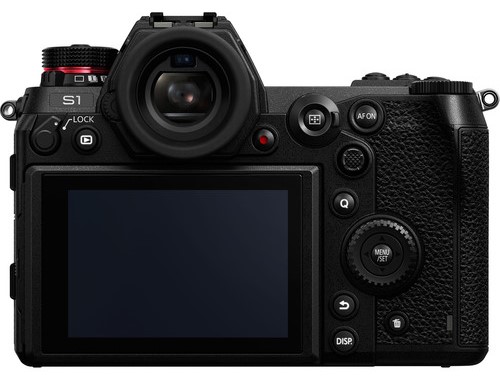
As impressive as this camera may be, it always comes down to the cost.
The Panasonic Lumix S1 price was well over $3,000 when it first dropped, but since you can now purchase this camera used, you’re going to save a ton of money.
If you think the Panasonic Lumix S1 may be the camera for you, you can pick a used one up on MPB starting at $1,900.

I often use MPB to sell my old gear, but I’ve purchased plenty of used cameras from MPB over the years. It’s a painless process, and since MPB inspects and grades each camera they list, I know that the camera I get in the mail will be the one I purchased.
MPB offers a six-month warranty on many items and has a top-notch customer service team to assist you with any problems you might have.
If you’re ready to upgrade your kit with a Panasonic Lumix S1, head over to MPB to get started!
Learn More:
We Recommend
Panasonic Lumix S5 IIX Review
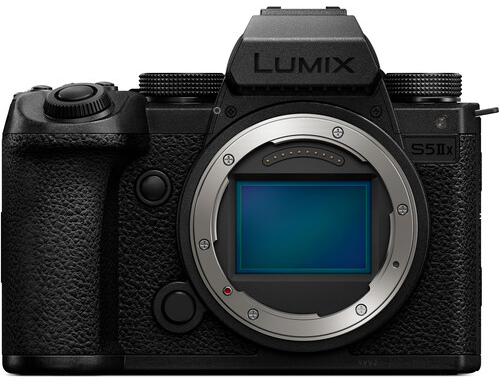
While Panasonic is best known for its micro four thirds cameras, they recently started producing some amazing full-frame mirrorless cameras, too. One of those cameras is the all-new Panasonic Lumix S5 IIX, and if you are considering making one your next camera, you’ve come to the right place!
In this Panasonic Lumix S5 IIX review, we’ll share a basic camera overview, break down its photo and video specs, recommend our favorite compatible lenses to shoot with, and more. Additionally, thanks to innovative websites like MPB, buying a used mirrorless camera has never been cheaper and easier.
Who is MPB? It is a trustworthy and reliable online platform selling pre-owned photography and videography gear at unbeatable prices. Better yet, all of its cameras and lenses are hand-inspected by knowledgeable product specialists with years of experience and backed by six-month warranties, allowing you to make your purchases confidently and worry-free.
We love MPB because, over the years, we have saved thousands of dollars buying, selling, and trading in photography equipment on their one-of-a-kind online marketplace. You can start saving, too, by visiting their website today. With that said, keep reading as we explore everything there is to know about the Panasonic Lumix S5 IIX!
Check out the video above by Kevin Le to learn why the Panasonic Lumix S5 IIX was one of the best cameras for content creators in 2023 and why it will remain so moving forward into 2024.
Table of Contents
- Panasonic Lumix S5 IIX: Overview
- Panasonic Lumix S5 IIX: Imaging Capabilities
- Panasonic Lumix S5 IIX: Video Capabilities
- Recommended Lenses for the Panasonic Lumix S5 IIX
- Final Thoughts on the Panasonic Lumix S5 IIX
Panasonic Lumix S5 IIX: Overview
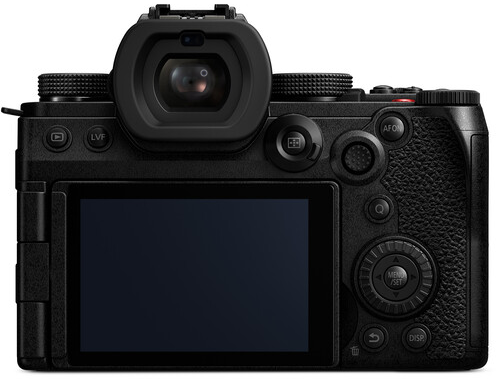
The video-oriented Panasonic Lumix S5 IIX was released in the middle of 2023, a few months after its sibling, the S5 II. It’s the newest camera in Panasonic’s S lineup of full-frame hybrid cameras and was designed with professional content creators in mind. The camera features a 24.2-megapixel sensor and a powerful new image processor co-developed with Leica.
The S5 IIX is the first Panasonic Lumix camera with a phase-detection autofocus system. This significantly improves its AF performance and makes it comparable to other high-end Canon and Nikon mirrorless cameras. Moreover, the AF can automatically recognize, lock onto, and track humans and animals. A face/eye-detection mode is also available.
Ergonomically speaking, the S5 IIX is superb. It’s smaller and lighter than most full-frame cameras currently on the market, making it a good choice for traveling and hiking. On top of that, it has a high-resolution electronic viewfinder (EVF), a fully articulated rear display, an eight-way AF control stick, and various customization options.
Now, here’s an in-depth look at the Panasonic Lumix S5 IIX specs and key features:
- Camera Type: Mirrorless
- Sensor: 24.2MP Full-Frame CMOS Sensor
- ISO: 100 - 51,200 (expandable to 50 - 204,800)
- Lens Mount: Leica L Mount
- Speed: 30.0 fps
- Autofocus: 779 focus points
- Video: 6K/30p, 4K/60p, & 1080p/180p
- Size/Weight: 134 x 102 x 90 mm / 740 grams
- Battery Life: 370 shots
- Stabilization: Yes
- Touchscreen: Yes
- Weather-Sealed: Yes
- Used Panasonic Lumix S5 IIX Price: $2,049
Panasonic Lumix S5 IIX: Imaging Capabilities
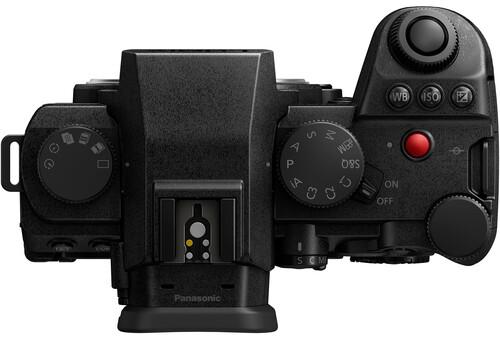
We know that some photographers will be disappointed by the 24.2MP max resolution of the Panasonic Lumix S5 IIX, but it makes up for it in other ways. For instance, the large size of the pixels and the dual native ISO make it a good camera for low-light photography. You can expect sharp photos with minimal noise, whether working in a dimly lit studio or outside under the stars.
RAW images deliver up to 14 stops of dynamic range and store tons of extra information in the highlights and lowlights. This provides photographers with great flexibility and allows them to make all the essential edits your images need in post-production. However, if you need to regularly enlarge images for print, it’s not the best choice. Go for the Sony A1 instead.
The 96MP high-resolution multi-shot mode and fast burst shooting are two more notable imaging features. When using multi-shot mode, your camera should be on a tripod, and it’s ideal for cityscapes and landscapes. At the same time, the maximum continuous shooting speed of 30 frames per second (fps) makes it a solid choice for action and sports photography.
Learn More:
- Panasonic S5 II Review
- 4 Reasons Why the Panasonic Lumix GH6 is One of the Best Hybrid Cameras on the Market
Panasonic Lumix S5 IIX: Video Capabilities
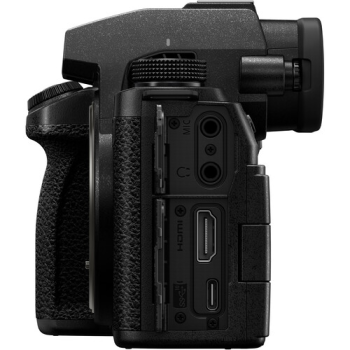
While the S5 II was already a powerful video camera, the Panasonic Lumix S5 IIX takes it to a new level. The biggest difference between the two cameras is that the S5 IIX captures RAW video with less compression. Beginners probably won’t notice the difference, but it’s a game-changer for professionals.
Regarding video quality and resolution, the S5 IIX boasts 6K, 4K, and Full HD video capabilities. It records 6K footage at up to 30 fps, 4K as high as 60 fps, and 1080p slow motion video at 120 fps. On top of that, a built-in fan cools down the camera during video shooting to prevent overheating. For you, the fan means unlimited 4K recording and 6K for up to 30 minutes.
Other luxury video features include Dual I.S. 2 image stabilization, live streaming, and dual UH-S II SD card slots. The stabilization reduces camera shake and boosts the quality of handheld video. It can live stream to platforms like YouTube, Twitch, and Microsoft Teams. And the two memory card slots let you record uninterrupted for longer.
Recommended Lenses for the Panasonic Lumix S5 IIX
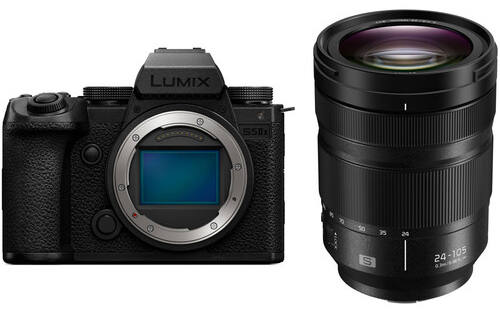
Here’s a quick list of some of the best Leica L Mount lenses for photo and video to pair with the Panasonic Lumix S5 IIX.
- Panasonic Lumix S 24-105mm f/4 Macro OIS
- Panasonic Lumix S 18mm f/1.8
- Panasonic Lumix S PRO 16-35mm f/4
- Panasonic S Pro 50mm f1.4
- Panasonic Lumix S PRO 70-200mm f/2.8 O.I.S
Final Thoughts on the Panasonic Lumix S5 IIX
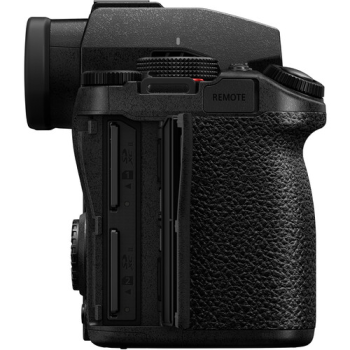
If you are a hybrid content creator who leans more towards video, you will be hard-pressed to find a better camera in 2024 than the Panasonic Lumix S5 IIX. And once you factor in price, nothing tops it!
Before deciding, do you want to compare this Panasonic hybrid camera against its competitors? Check out the list below of other Panasonic S and Panasonic G mirrorless cameras on sale now at MPB.
- Panasonic Lumix DC-S1R
- Panasonic Lumix DC-S1H
- Panasonic Lumix S5 II
- Panasonic Lumix DC-GH6
- Panasonic Lumix DMC-GH5 II
A quick heads-up: If you snag something through our affiliate links or check out our sponsored content, we might earn a commission at no extra cost to you. But fear not, we're all about recommending stuff we're truly stoked about!
Learn More:
- This is the Fujifilm Hybrid Camera to Buy in 2024
- This Videography Gear is Critical for Creating the Best Content
We Recommend
Panasonic S1H Review
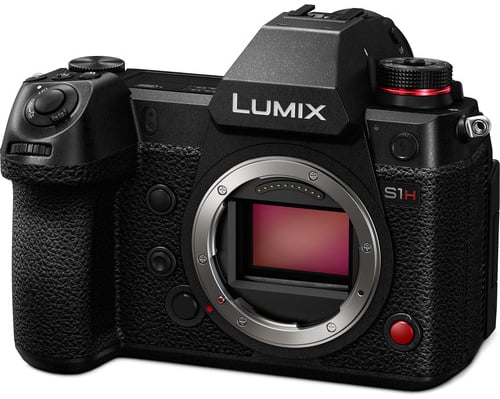
The Panasonic S1H has been dubbed as Panasonic’s attempt to update the Lumix S1 for video. However, I actually think that the Panasonic S1H is too different from the Lumix S1 to be classified this way. In fact, I think I like the Panasonic S1H more.
The Panasonic S1H came out in early 2020, right before the pandemic hit. I think that’s likely why the Panasonic S1H hasn’t received as much attention as it should have.
If you do know anything about the Panasonic S1H, then you likely know that it features 6K video capture. Obviously, this is a huge deal for videographers, but the full Panasonic S1H specs lends itself to stills photography as well.
The Panasonic S1H is a full-frame mirrorless camera that is built around a 24MP sensor. But, in order to really understand just what this camera can do, we’ll need to dive into our full Panasonic S1H review.
Panasonic S1H Specs
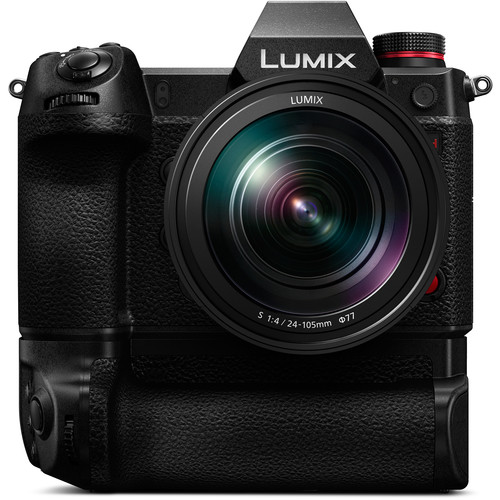
The Panasonic S1H features a 24.2MP full frame CMOS sensor, a Venus image processor, and an ISO range of 100-51,200.
Moreover, this camera can shoot video in both 6K and 4K and features a 9fps burst mode. Whereas other cameras like this one come with continuous filming time limits, the Panasonic S1H comes with an internal fan that keeps your camera cool enough to allow you to film for as long as you need to. Of course, this does mean that the camera is much heavier and thicker than the S1.
Other Panasonic S1H Specs Include:
- 24.2MP full frame CMOS sensor
- ISO range of 100-51,200
- 6K video capabilities at up to 24p, 4K video capabilities at up to 60p
- 225-point AF system
- 9fps burst mode
- Built-in Wi-Fi and Bluetooth
- 2-hour or 400-shot battery life
- 2.56 lbs
Panasonic S1H Body & Design
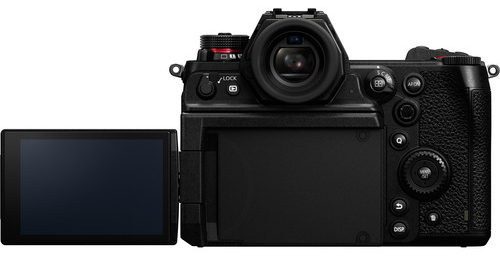
The Panasonic S1H body looks a lot like the S1. In fact, the Panasonic S1H design really doesn’t differ from the original S1 in very many ways. Both of these cameras came with a weather-sealed body. However, the Panasonic S1H is a bit thicker and heavier because of the internal fan that I already mentioned.
The Panasonic S1H also comes with a fully articulating screen, which wasn’t present in the S1. This fully articulating screen is one of my favorite aspects of this camera because it actually can extend out of the camera so that you don’t have to worry about it hitting any of your wires plugged into the ports.
One other small thing about the Panasonic S1H build is that it was definitely created to be put in a cage. This is evident through the placement of two REC buttons, one on the top plate and one on the front corner.
Learn More:
Panasonic S1H Build & Handling
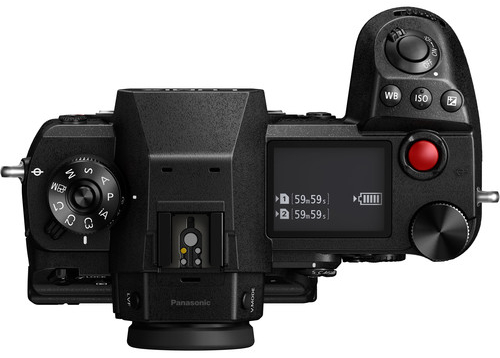
The Panasonic S1H handling is wonderful. The battery life on the camera is extraordinary, considering how much it can do. The camera comes with twin SD slots, an orientation pin you can use if you’re planning on working with a video tripod plate, and an adaptor for a BNC cable.
In essence, Panasonic really did think of everything.
One thing I do need to mention if you’re transitioning to this camera from another camera designed for still photography is that this camera comes with an interesting interface. For example, you will no longer get shutter speeds, but “shutter angles,” and you won’t get an aperture setting, but an “iris” setting.
Panasonic S1H Video Performance
I love this Panasonic S1H video performance review by Engadget because it gets right down to business. The Panasonic S1H is the best mirrorless camera for video that is available for sale right now.
Obviously, the camera shoots 6K video, which is hard enough to find as is, but it then pairs that 6K capture with 4:2:2 10-bit internal recording and V-Log gamma. If you’re planning on shooting in 6K, you can expect to do so at 24p. If you’re planning on shooting 5.4K video, you can do so at either 29.97p or 25p. If you’re planning on shooting in 4K, you can do so at up to 30p.
One of the Panasonic S1H features that you likely haven’t heard about is its expanded audio options. You can adjust your audio recording levels in 31 different levels, but you can also turn off your audio completely.
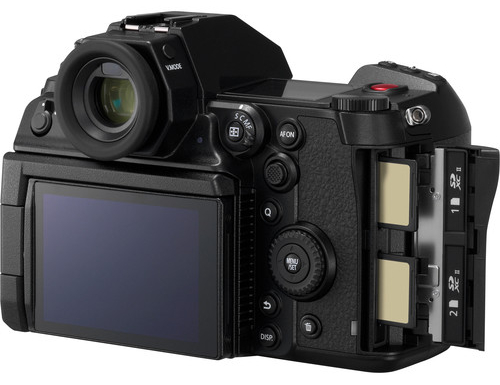
You will also find it far easier to track your audio levels since the audio meters on the menu were made larger and were given a makeover. You can now watch your level in bright green, yellow and red.
Panasonic S1H Price
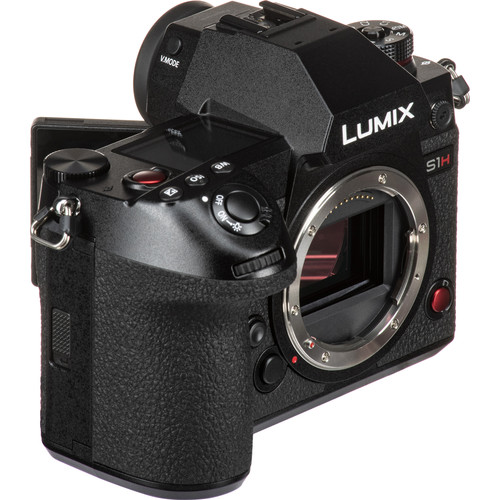
So, given the fact that the Panasonic S1H essentially just came out, nobody will be surprised to hear that the Panasonic S1H price isn’t exactly within reach for every photographer.
In fact, the Panasonic S1H is currently selling for a rather steep price of $4,000. This might be completely out of reach for you.
However, if the draw of the Panasonic S1H is almost too much for you to handle, there may be an option. You can buy one off of MPB.

MPB is a used camera retailer. They sell old cameras, lenses, and other camera gear for far cheaper prices than the original manufacturers. However, unlike some used camera retailers, every piece of equipment that MPB buys goes through a rigorous examination. Each camera is rated on a scale which ranges from “faulty” to “like new.” This means that you can actually expect your used gear to show up in the condition you read it was in.
MPB also allows you to trade in your old camera to them and use whatever price you get for it towards the purchase of your new-to-you camera.
I just checked the Panasonic S1H page on MPB and unfortunately there aren’t any for sale as of the publishing of this article. However, since MPB rotates through so many products every day, this could be false by the time you’re reading it. All you can do is continue to check the Panasonic S1H page and hope.
Learn More:
We Recommend
Panasonic S1R Review
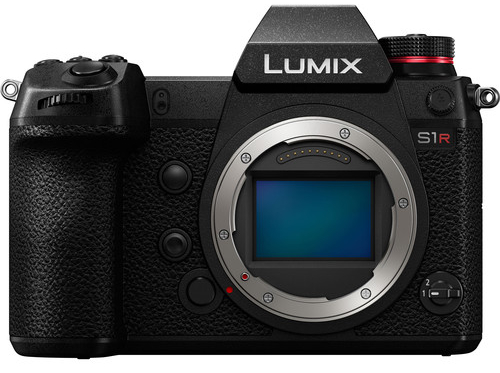
The Panasonic S1R was best known when it first came out in 2019 because it was the highest-resolution full frame mirrorless camera in the world.
Since this time, the Panasonic S1R has lost this title. However, it’s still an incredible piece of equipment designed with professionals in mind.
In this Panasonic S1R review, I’m going to walk you through its specs, the Panasonic S1R design, and its video performance.
Panasonic S1R Specs
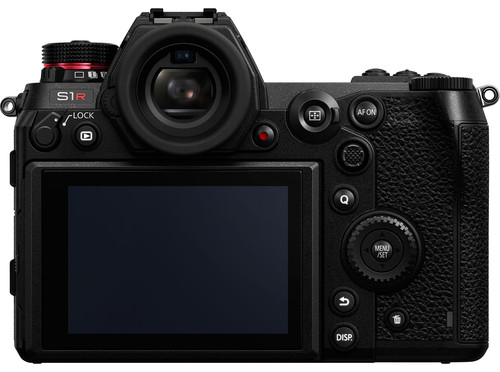
The Panasonic S1R features a 47MP sensor, a 5-axis in-body “Dual IS” system, and incredible 4K/60p video capture.
Notably, the Panasonic S1R also comes with a 187MP “High Resolution” mode, which will come in handy for photographers working in marketing.
It’s EVF features a crazy 5.76M-dot resolution, which makes the shooting experience one of the most fun I’ve had in a long while. You can literally see everything in picture perfect detail.
Despite the high resolution on this mirrorless camera, it isn’t designed for sports or wildlife photography because it only features a 6fps burst mode. This mode works really well because it comes with continuous AF, but it isn’t high enough for a serious sports or wildlife photographer.
The touchscreen is dual-hinged and features a 2.1M-dot resolution.
Other Panasonic S1R Specs Include:
- 47MP full-frame CMOS sensor
- 5-axis in-body “Dual IS” system
- 187MP “High Resolution” mode
- 4K video at up to 60p with 1.09x crop
- 6fps burst mode
- 2.1m-dot touchscreen LCD
- Fully weather-sealed
- 360-shot battery life
Panasonic S1R Body & Design
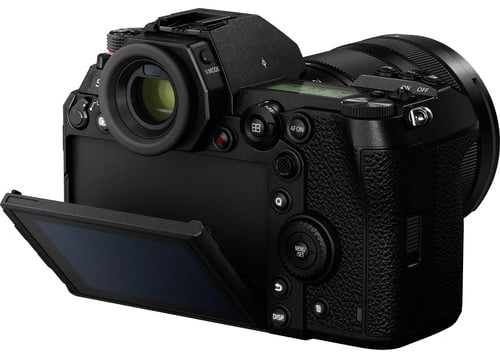
The Panasonic S1R body is serious business. It is completely weather-sealed and made out of magnesium alloy.
The camera features an 8-way joystick so that you can easily direct the AF system. The camera also features a lock switch that is customizable so that you can turn the touchscreen off or lock all of the dials.
In comparison with past Panasonic batteries, this one works way better. You get 360-shots out of a single charge and can get a lot more than that if you’re shooting wisely.
This camera uses a menu that is extensive, yet simple to use.
Panasonic S1R Build & Handling
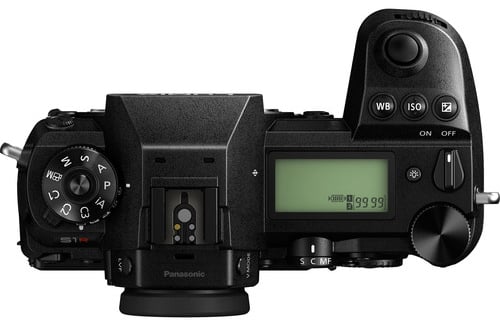
The Panasonic S1R build is hefty. This camera weighs 2.25 lbs, which lends it a very serious feel, and measures 5.87” x 4.33” x 3.82”.
If you have ever shot with similarly designed cameras from other manufacturers, then you know that the Panasonic S1R is much larger and heavier than its competitors. Of course, this just gives the photographer peace of mind knowing that it would be pretty hard to damage this camera. It works in temperatures down to 14-degrees fahrenheit.
When it comes to the Panasonic S1R handling, one of my favorite aspects is the EVF. It features such a high resolution that it easily trumps its competitors in this category. Importantly, the lag time on this EVF is only .005 seconds. If you are upgrading to this camera, you will be amazed how realistic the shooting experience is because of these facts.
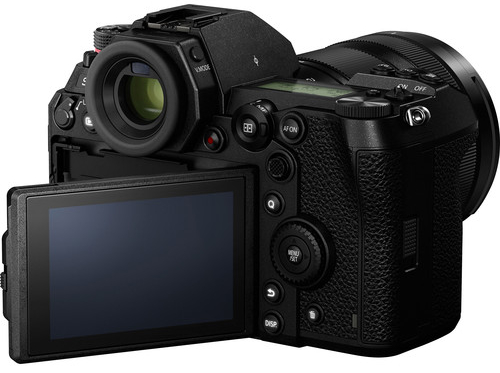
The touchscreen LCD is also a ton of fun to work with. It is double-hinged so that you can tilt it up and down if you are doing landscape work, but you can also turn it for shooting portraits as well.
But, some of the smaller features are what really make this camera a joy to handle. For instance, all of the buttons come with a backlight, so that you can shoot in the dark without any issues at all.
Of course, since the Panasonic S1R is being billed as a “professional” camera, it also comes with dual card slots. You can use a UHS-II SD and a XQD card and pick how each of them is used.
Learn More:
Panasonic S1R Video Performance
Thank you to DSI Pictures for the video test above.
As I already mentioned, this camera features 4K video at up to 60p, though this mode will come with a very slight 1.09x crop. Conversely, you can shoot Full HD video at up to 180p, with output at up to 60p.
When you are shooting 4K video, you can only do so for clips up to 15 minutes in length. Since this camera does require pixel binning to shoot 4K video, you do need to keep it in mind that when you use a smaller crop, your noise performance will be a lot worse. Since this camera is relatively new, there isn't a huge range of Panasonic S1R lenses to choose from, so when you use a smaller crop you may not find a lens that allows you to capture a wide-angle.
Given some of these limitations, I think it would be fair to say that this camera wasn’t designed for videographers. However, a stills photographer can absolutely get great video footage from it.
Panasonic S1R Price
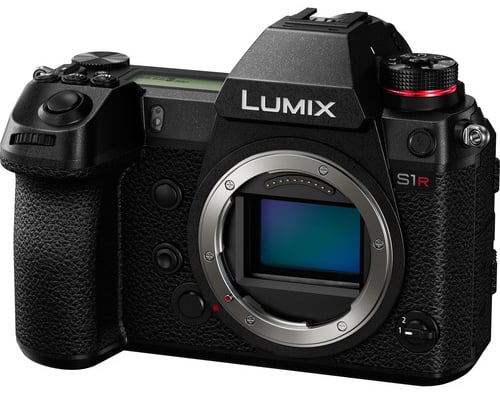
Given the fact that the Panasonic S1R is still relatively new to the market, and given the fact that it has so many impressive features, you would be correct in assuming that it definitely isn’t cheap.
If you buy a new Panasonic S1R, then you can expect to pay nearly $4,000 for it. However, you can get a much better Panasonic S1R price if you buy this camera used.

I like to recommend that my readers go to MPB for all of their used camera needs first because it is one of the few used camera retailers that I actually trust.
You’ll get a huge discount on every piece of camera gear that you buy there, but you won’t be giving up any quality for it.
So, I checked out MPB for a used Panasonic S1R and was pleasantly surprised. You can expect to get almost a 50% discount if you buy a Panasonic S1R there. Whereas a new Panasonic S1R costs almost $4,000, you can get a used Panasonic S1R on MPB starting at just $2,050. If you want a Panasonic S1R in “like new” condition, you can get it for $2,160.
If you need help getting that price down even more, you can trade in your old camera gear to MPB and use whatever money you make off of that sale towards this purchase.
Learn More:
We Recommend
Selecting the Right Camera for Shooting Video

Photo by Jakub Gorajek on Unsplash
The first time I picked out a camera for shooting video I had no idea what I was looking for. Most cameras aren’t marketed for videographers, which means there’s much less information out there for us.
While I appreciate the many ways a camera can be used for still photos, sometimes I’d like to know more about a camera’s video capabilities than what it can do for stills.
Plus, it seems the most expensive cameras are always marketed for videographers, which means if I’m in the market for a budget camera for shooting video, there’s truly no info out there.
As such, I’ve compiled a list of a wide range of the best cameras for vlogging, from a few hundred dollars to a few thousand.
Panasonic Lumix G7 (Best Inexpensive Option)

The Panasonic Lumix G7 is 4 years old, which means its price has significantly decreased to where it now sits (less than $500), but it isn’t yet so out-of-date that it isn’t extremely useful.
The Lumix G7 features a 3” touchscreen that is fully articulated for those of us who aren’t just vlogging behind a computer desk. It also has built-in Wi-Fi and an external microphone port.
The Lumix G7 can also be controlled remotely with your smartphone, which is helpful for one-man video operations. This is truly why it is one of the best cameras for vlogging on the market, even 4 years after it dropped.
Of course, it can’t shoot 4K video due to its age and price point, but it still features a high video bit rate of 100mbps.
Plus, while it’s a great beginner camera, it can also function for those of us who are more advanced in our careers, i.e. it isn’t frustrating for a seasoned pro.

Pros of Panasonic Lumix G7:
- 3840 x 2160 video resolution
- 3” fully articulated screen
- Lightweight at less than 1 lb
- Built-in Wi-Fi
Cons of Panasonic Lumix G7:
- Can’t shoot 4K video
- No image stabilization
- Short battery life (especially with video)
You can buy a Panasonic Lumix G7 for only $450 here.
Sony A7 III (Best Advanced Camera)

If you’re in the market for mirrorless cameras for video, then look no further.
The Sony A7 III is a full frame mirrorless with in-body image stabilization. But, most importantly, it features 4K video capabilities, a microphone jack, Real Time Eye Autofocus (for vloggers), and it stores video clips of up to 29 minutes.
Beyond that, you can choose from two different 4K bitrates (24p and 30p) at either 100MBPS or 60MBPS, S-Log includes, and excellent ISO performance. Plus, the full frame sensor is a huge bonus at this price point, so you don’t have to worry about that pesky crop for video like other cameras in this price range have.

Pros of Sony A7 III:
- 4K video
- Microphone/headphone inputs
- Large battery life
- In-body image stabilization
Cons of Sony A7 III:
- 3” screen isn’t fully articulated and has limited touchscreen capabilities
- Not weather-resistant
You can purchase the Sony A7 III on Samys Camera for $1,800.
Learn More:
GoPro HERO 8 Black (Best Rugged Option)

We all know what this camera for shooting video is known for - image stabilization.
But, the latest GoPro edition has a surprising amount of features, including 4K video capabilities, accessories called “Mods,” which include a mini shotgun microphone connection, a selfie-screen, and a video light connection, and an incredibly easy-to-use interface.
It’s clear to see that GoPro can now be used as an all-around camera for shooting video, instead of being forced into the action niche as it was for so long.

Pros of GoPro HERO 8:
- 4K video capabilities at up to 60fps
- Incredible image stabilization
- One of the best vlogging cameras due to new selfie-screen
Cons of GoPro HERO 8:
- Not for still photographers
- Can’t perform well in low-light situations
You can get a GoPro HERO 8 BlacK for just $350 on Samys Camera, and the best part is it’s a GoPro kit which includes a tripod, a head strap for insane outdoor activities (skydiving, anyone?), and an extra battery!
If this informs you of anything, it’s that there are plenty of options - and varied ones at that - for investing in a high-quality camera for shooting video without busting your budget.
Whether you’re on a strict budget, want an affordable full fram option, or need something rugged to take with you on your adventures, any one of these cameras can fulfill your needs while keeping more money in your bank account.
What’s not to like about that?!
Learn More:
No Matter the Camera, You Need a Great Light...

Whether you opt for a DSLR, mirrorless camera, or action cam for your video recording, you need to have a top-quality light to help you get the best results.
Personally, I use the Litra Torch LitraPro, which I reviewed a few months ago.
The LitraPro is mid-range in terms of price, ringing in at $220, but top-shelf in terms of its capabilities.
Each LitraPro is comprised of 60 individual LED lights, which is pretty impressive considering the overall size of 2.75 x 2 x 1.2 inches.
You can also adjust the color temperature between 3000K and 6000K and it has 1200 lumens of output.
One of my favorite qualities on the LitraPro is that it's waterproof up to 90 feet. It also has dual industry-standard 1/4 20 mounts.

If you run the LitraPro for an hour at max output, the battery will last you one hour. But, if you run it at min output, that extends to 10 hours.
The LitraPro comes with full dimming capabilities and Bluetooth connectivity too.
Litra products are built like you're heading into a warzone, which I really appreciate. The LitraPro is no different. This on-camera video light has been MIL-SPEC 810 tested, and for those of you who don't know, this test is used by the U.S. military to determine whether a product is ready to be shocked, thrown, dropped and put into extreme temperatures.
The 1200 lumens on this light extend up to 9.5 feet. It also features a 70-degree beam angle, which means it provides flicker-free light at any angle.
In other words, this is the ideal little light for your video production needs!
Learn More About Litra Torch LitraPro
We Recommend
Should I Still Buy a DSLR?
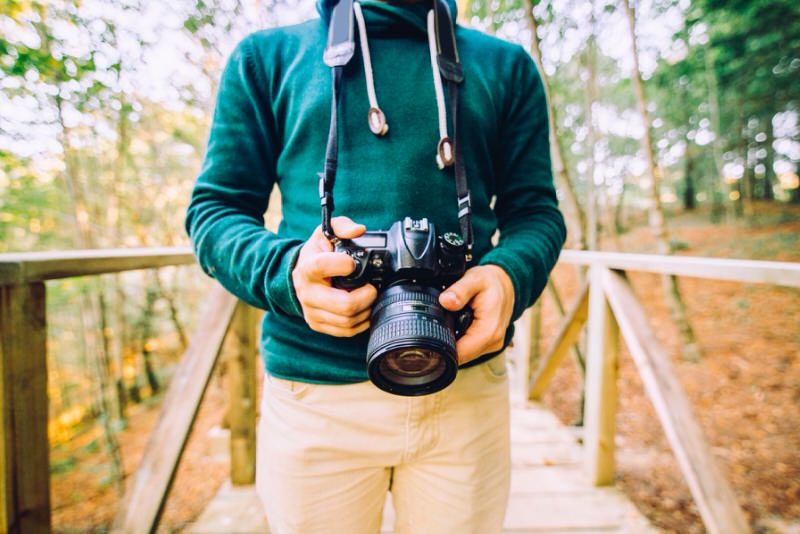
photo byMarioGuti via iStock
Much of the photographic news concerning new releases is focusing on mirrorless cameras, causing many photographers to wonder if they should buy a DSLR as their next upgrade. Many beginners into serious photography also have questions of whether to purchase mirrorless or DSLR.
DSLR vs Mirrorless
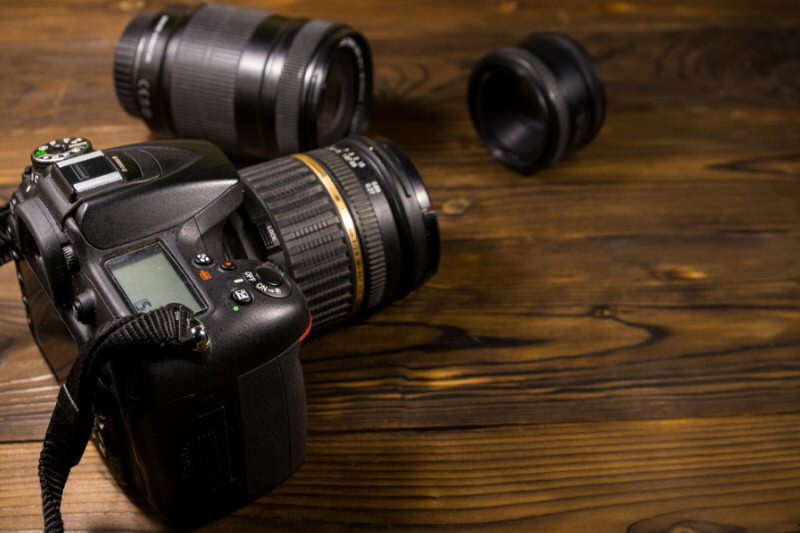
photo byOlyaSolodenko via iStock
If one were to only look on social media for camera release news, they might think DSLRs are gone from the marketplace. But there are a lot of new DSLR cameras being released in entry-level, prosumer, and full-fledged professional models.
It also helps to know this if we are looking at used cameras, since it means the camera manufacturers are still invested in DSLRs.
There are good reasons why camera makers are so focused on mirrorless technology, though. Mirrorless cameras offer features that appeal to many photographers.
Let’s look at the benefits of mirrorless and the benefits of DSLRs and discuss what they may mean to you.
Pros and Cons of DSLRs
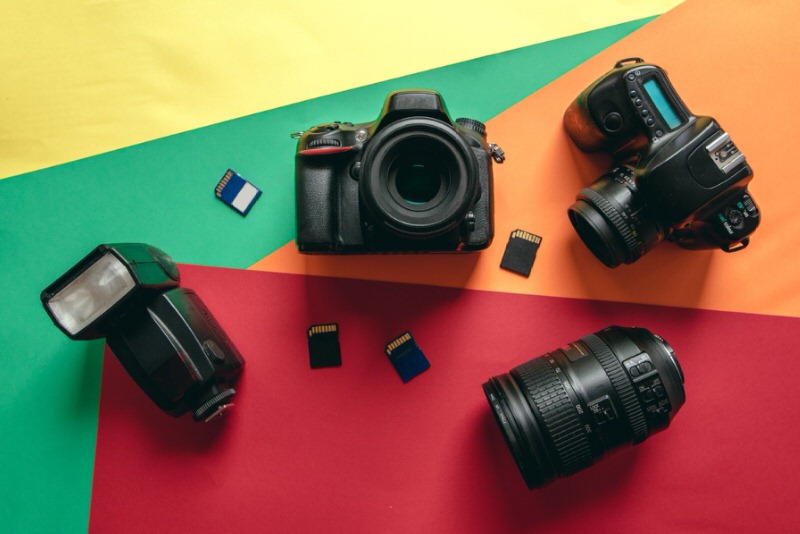
photo by MarioGuti via iStock
Pros:
- Great battery life
- Many native lenses available
- Low-priced entry-level models
- Generally larger size
Cons:
- Noise (both in terms of the shutter and mirror)
- Speed of operation
- Generally larger size
Learn More:
Pros and Cons of Mirrorless
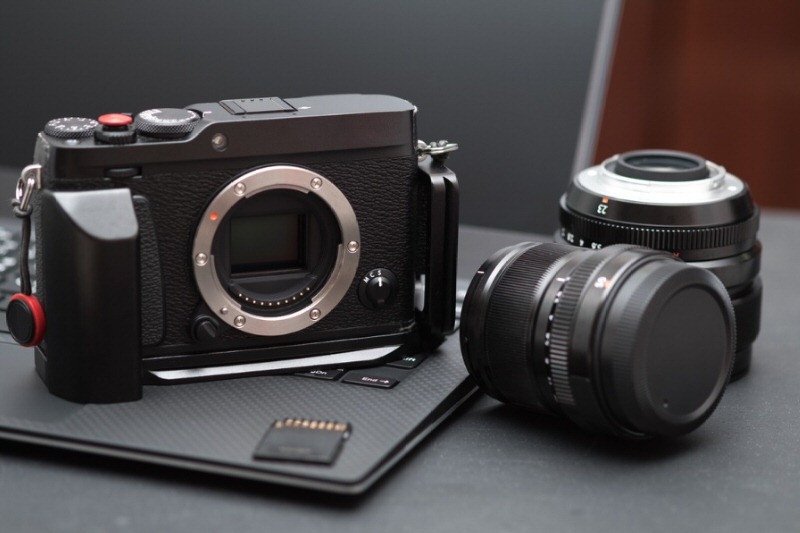
photo bystructuresxx via iStock
Pros:
- Quiet operation
- Smaller-sized bodies
- AF during videography
- Adapters allow many lenses
Cons:
- Full frame lenses are large
- Poor battery life
- No viewfinder on some
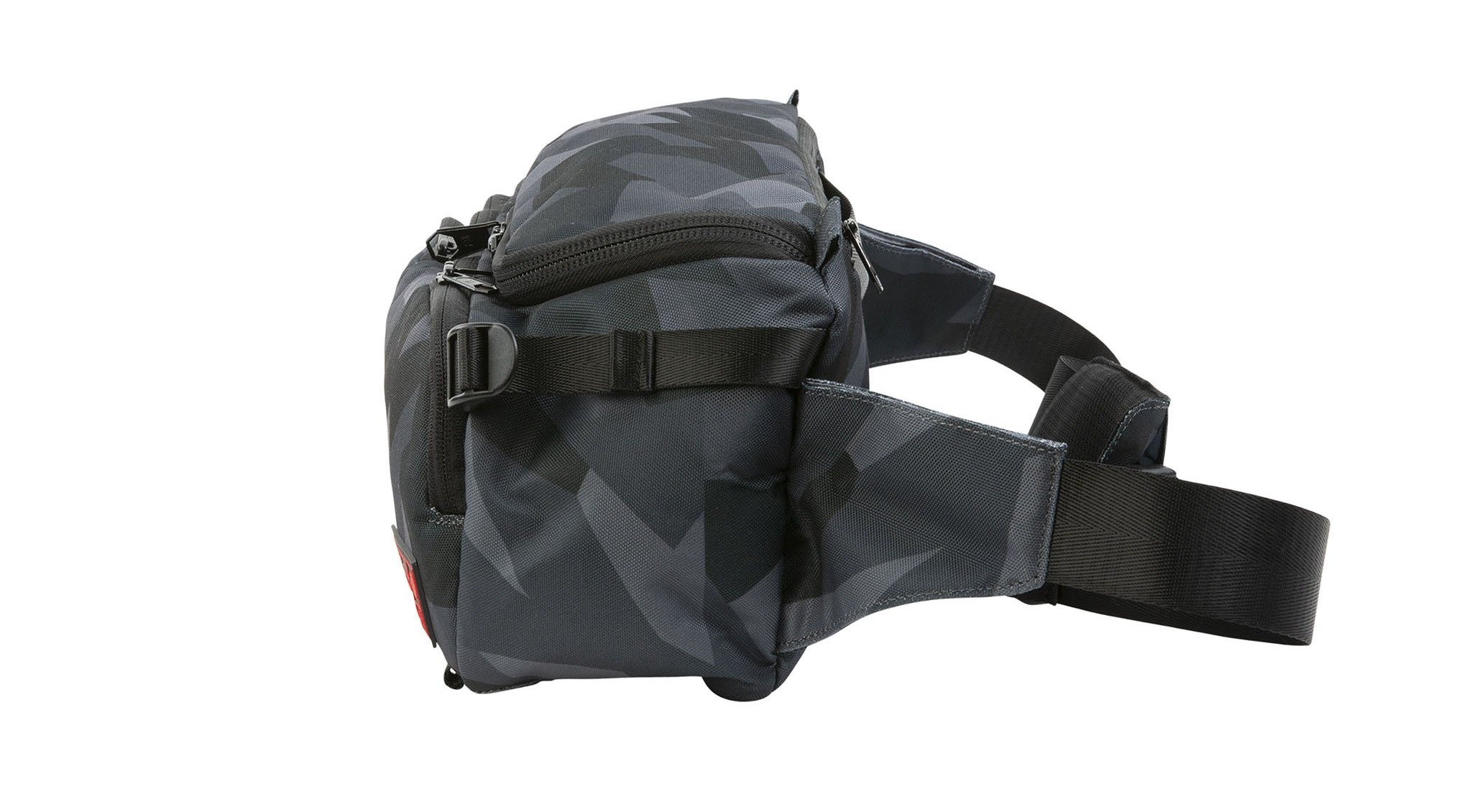
Pro Tip: Regardless of whether you get a DSLR or mirrorless camera, you need a solid bag to carry them. When you hear "camera bag," you might think of a big, ugly bag that's uncomfortable to carry, but the HEX Ranger Sling V2 is none of those things. This is my everyday bag and it's super functional, comfortable to carry, and easy on the eyes. It accommodates up to eight liters of gear yet hugs your body in a way that you wouldn't expect of a bag with that kind of capacity. It's easy to access gear, too - simply rotate the bag from back to front to get what you need. There's even a mini version if you have a small kit!
Explaining the Pros and Cons of Each

photo byasbe via iStock
Some of the bullet points above may need a little bit of an explanation…
Let’s start with the questions about lenses. Even though the mirrorless camera bodies are smaller and lighter than DSLRs, the lenses are often just as big as lenses for DSLRs, at least in regards to Full Frame format. APS-C and MFT format mirrorless cameras have some small and light lenses.
So for some photographers, the smaller body with a lens that’s still substantial may make the combination a little unwieldy. Some photographers add a specialty grip or a battery grip which helps out but kind of invalidates the ‘benefit’ of a smaller body.
The native lens situation is an interesting phenomenon, as well. Though there may not be as many native lenses (lenses in that mount) for a mirrorless camera as there are for DSLRs, the proliferation of third-party mount adapters makes possible mounting almost any 35mm camera lens from the last 40 to 60 years and newer to a mirrorless camera.
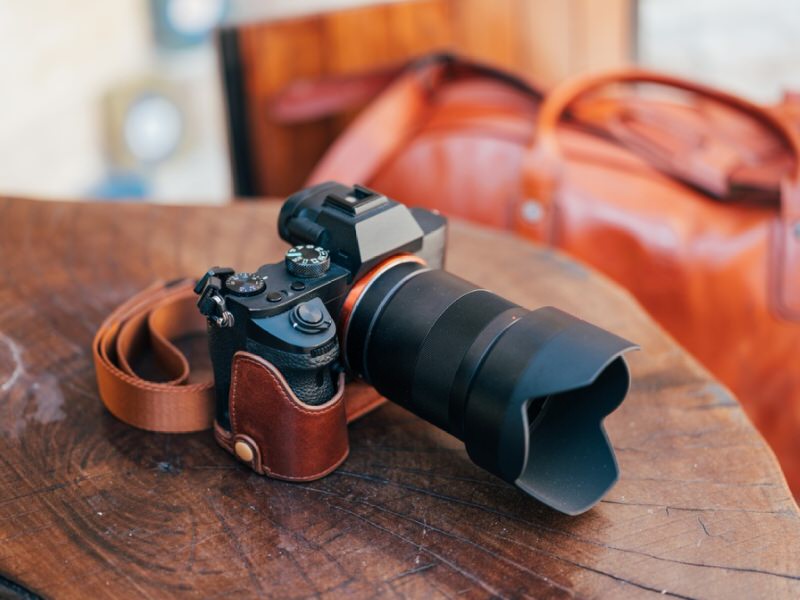
photo byhsyncoban via iStock
As for larger size being both a pro and con of DSLRs, some users with larger hands actually prefer the layout and handling of a larger DSLR vs mirrorless cameras, while the small size of crop format cameras and lenses in mirrorless is a definite plus for others.
Since mirrorless cameras are constantly showing either a rear view screen or an electronic eye level viewfinder (EVF), then it’s no surprise that they have less battery life than many DSLRs. Another thing that impacts purchase decisions is that some mirrorless cameras only have a view screen and no eye level viewfinder at all.
Entry-Level Prices
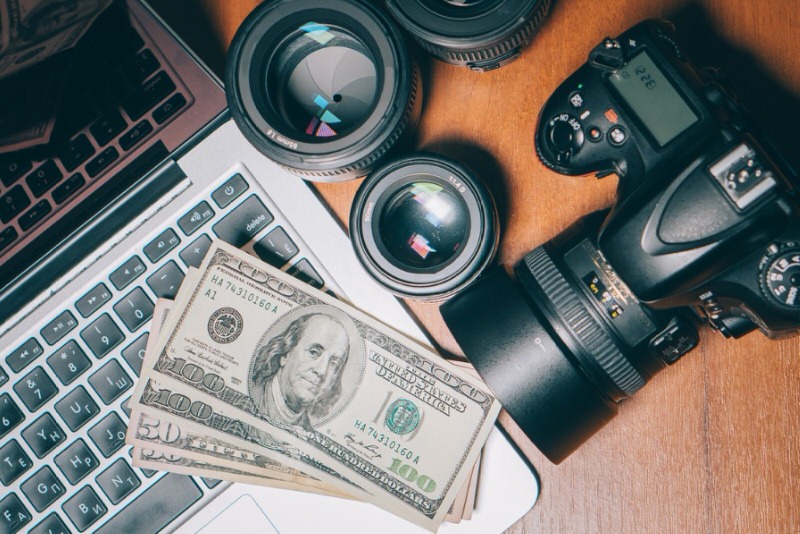
photo byielanum via iStock
I’m putting this one all by itself in the bullet point explanation since it is kind of a big deal for anyone beginning serious photography and unsure of what their budget should be. I can find a brand new entry-level DSLR with a kit lens, sometimes even two lenses, for less than my last upgraded smartphone cost!
And if we factor in buying used cameras, we can find some amazing bargains in entry-level DSLRs. Of course, the used market has more than entry-level cameras. I’ve found many excellent cameras and lenses from all the major brands and in categories including prosumer and full fledged professional levels.
Used Cameras Are a Fantastic Option
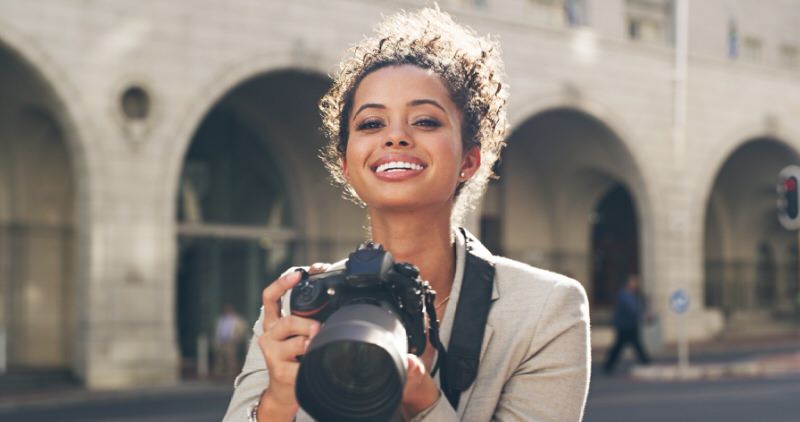
photo byCecilie_Arcurs via iStock
If you are thinking about your options to buy a DSLR in 2021, you should really look into the used market. For mirrorless cameras, too. And here’s the thing, you can find current models of cameras, many in virtually brand new condition, on used camera websites. Head on over to one of my favorite used gear sites, MPB,to see first hand what I mean.
You will find the best used DSLRs on well regulated used marketplaces. Buying from an individual has an element of risk, even if the camera is almost new or the person selling is someone you know. Many online marketplaces have terms and conditions which protect the consumer from fraud, misleading descriptions, or getting a lemon, but the best used camera stores go a step further.
Having the cameras and lenses rated by knowledgeable experts is probably one of the top reasons for using an online marketplace like MPB for purchasing used photographic gear. This also makes these stores a great place if you have any used gear you want to sell yourself. Since they inspect and rate everything in their stock, you know you will get a fair offer for your own equipment and you will know the condition of your next used camera purchase.
I’ve noticed that even the newest models of cameras, mirrorless or DSLR, will have used cameras available in just a few weeks from release. Sometimes these are store or camera rep demos being offered, since these can’t be sold as brand new items.
Examples of Best Used DSLRs
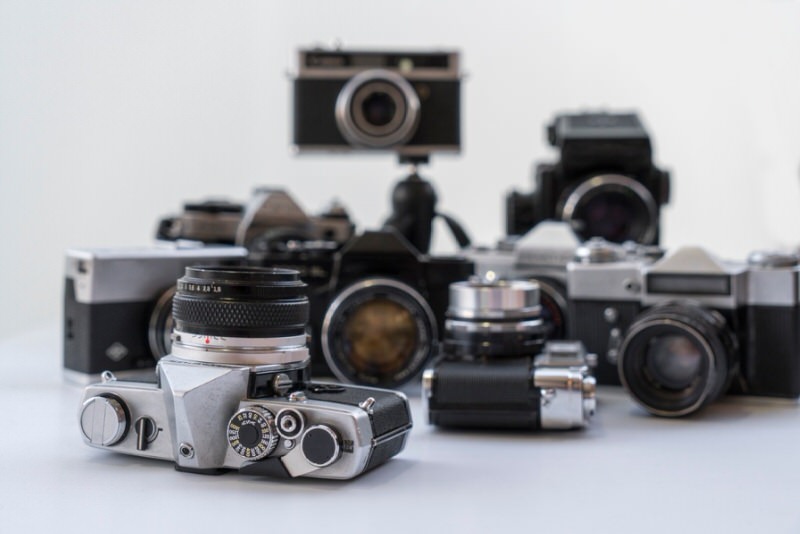
photo byozgurdonmaz via iStock
The used market is going to be highly variable as to what stock is available at any given time, but let’s look at a few offerings I found at MPB as I wrote this article.
Nikon Mirrorless or DSLR:
- Nikon D3500 entry-level APS-C format DSLR
- Nikon 18-55mm kit lens
- Nikon D750 prosumer level Full Frame format DSLR
- Nikon 24-70mm f/2.8 lens
- Nikon Z6 prosumer level Full Frame format mirrorless
- Nikon D5 pro level Full Frame format DSLR
Canon Mirrorless or DSLR:
- Canon EOS Rebel T3i entry-level APS-C format DSLR
- Canon EF-S 18-55mm kit lens
- Canon EOS 6D prosumer level Full Frame format DSLR
- Canon EF 24-70mm f/2.8 lens
- Canon EOS R prosumer level Full Frame format mirrorless
- Canon EOS 1DX Mk II pro level Full Frame format DSLR
Other Choice Used Gear:
- Fujifilm GFX 50R pro level Medium Format mirrorless
- Panasonic Lumix DC-G9 prosumer level MFT format mirrorless
- Arri Alexa LF pro level Full Frame cinema camera
- Blackmagic Pocket Cinema prosumer level cinema camera
- DJI Mavic 2 Pro prosumer level drone
So, as you can see, it will be easy to buy a DSR in 2021 and be assured of finding just what you want in regards to type of camera, format, user level, and even used or new. Choosing a DSLR in 2021 is a very good choice for any level of photographer.
Learn More:
We Recommend
These Cameras Are Great Bargains for 2021
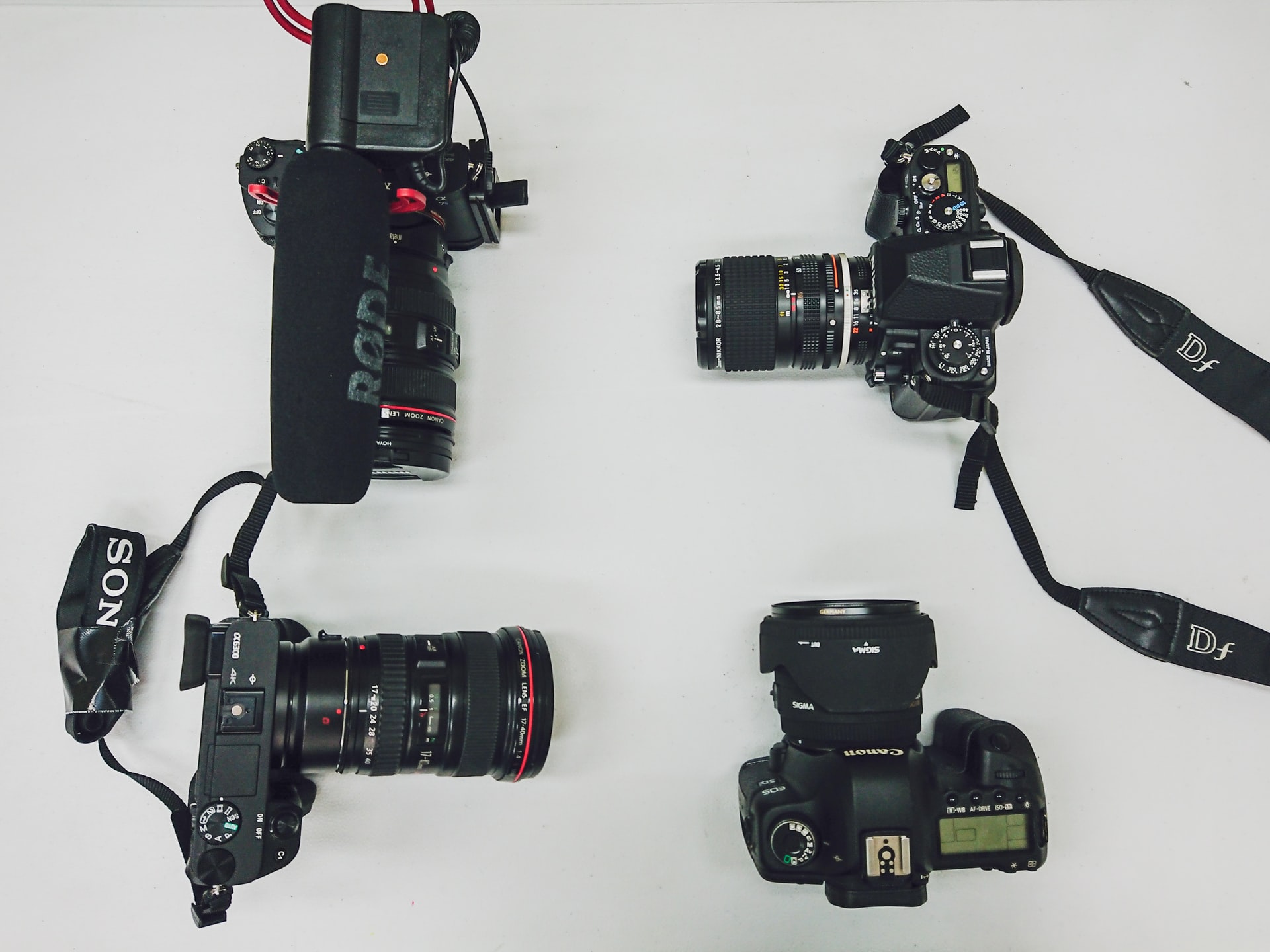
Photo by ???? ??? on Unsplash
If one word sums up 2021, it would have to be “bargain.” I’m definitely not making the same amount of money as I did last year, and chances are, you probably aren’t either.
Wherever possible, I’m always looking for a bargain. If that means searching, “cameras on sale,” at least once a day then so be it.
But, bargains are few and far between when it comes to bargain cameras. Photography equipment is, generally, very expensive. Or, conversely, you may end up getting ripped off when trying to purchase cheap cameras.
If you find yourself looking for a camera this year, then don’t get ripped off. This list includes a range of bargain cameras at different price points, but we made sure that each one of the cameras on this list are good cameras for 2021, i.e., they’re going to have all of the specs you’ll need this year.
Nikon D3500
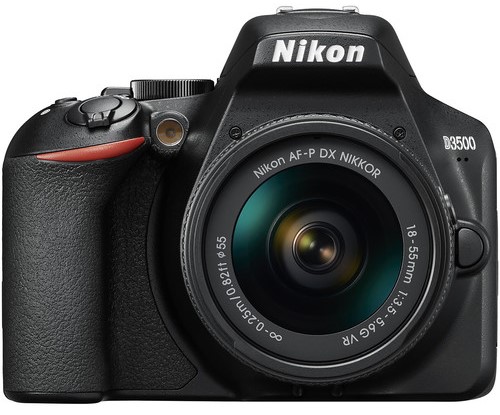
The Nikon D3500 dropped in September of 2018 as a replacement for the Nikon D3400. Fans of this line weren’t entirely thrilled by the Nikon D3500 because Nikon didn’t update as many specs as some people expected them to. But, I think Nikon did a great job of updating the important specs while still keeping the camera at a good price point for amateur photographers.
For those unfamiliar with this line, the Nikon D3500 is an entry-level DSLR with an incredibly impressive battery life. But, videographers beware: it doesn’t feature 4K video.
Specs/Features
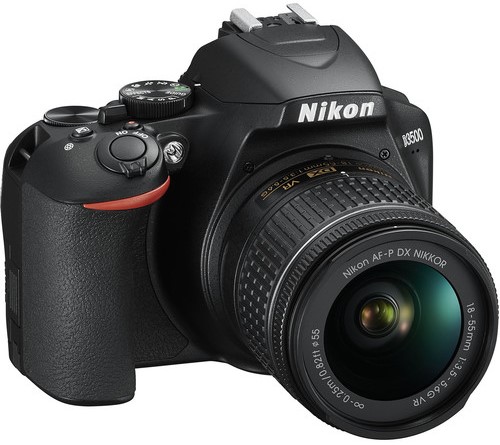
The Nikon D3500 is one of my favorite bargain cameras because its specs are solid across the board. For starters, it comes with a 24MP sensor and can shoot 11fps in burst mode.
But, it’s also light at just under 1 lb, and as I mentioned before, it has a tremendous battery life of 1,550 shots. With this type of a battery, you can go multiple days without needing to recharge, which is super beneficial for travel photographers.
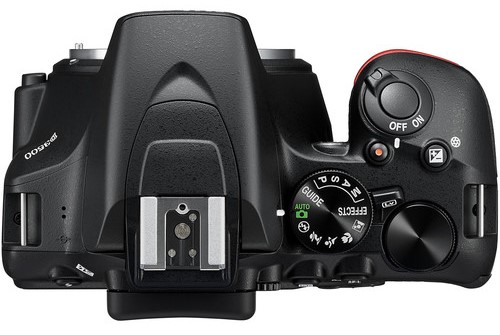
Other Nikon D3500 specs include:
- 24MP sensor
- Full HD video capabilities
- 3.0” LCD with 921k-dots
- Built-in Bluetooth
- EXPEED 4 processor
- 1,550-shot battery life
- 14.6 oz
Pros/Cons
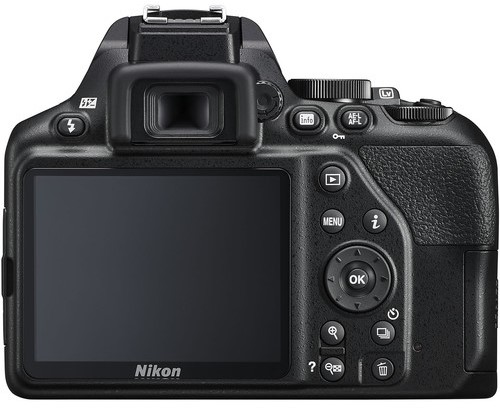
I’m going to get the biggest con of this camera out of the way. It doesn’t shoot 4K video. While an entry level camera at this price point shouldn’t be expected to shoot 4K, the lack of 4K in 2021 may still be a little off putting for people who have been in the industry for even a short while.
This camera also doesn’t have a tilting LCD or touchscreen, which is frustrating for street shooters.
But, I’d argue the pros of this camera far outweigh the cons. The biggest pro is the price, which I talk about more below. This camera features great image quality for the price. It also features a great ISO performance and is comfortable to hold.
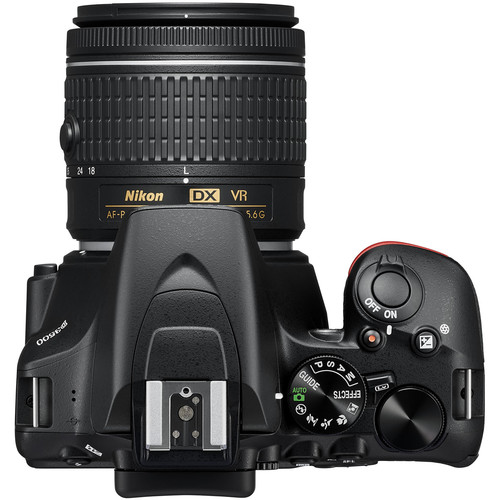
I love bargain cameras that come with a wide variety of lenses, and this one does. The lens that comes packaged with the body, the 18-55mm f/3.5-5.6G is itself a great starter lens. It lessens vibrations via its vibration reduction feature.
But, this camera is compatible with dozens of lenses. I write more extensively about your lens options for the Nikon D3500 in the full review I did of this camera a few months ago. You can read that here.
Price
While the Nikon D3500 originally cost $500, you can now find a used one (body only) on MPB for $300.
Sony a7 II
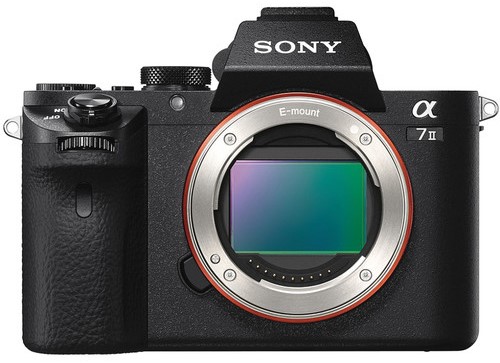
The Sony a7 II is definitely a step up as compared to the Nikon D3500. The Sony a7 II isn’t an entry-level camera, like the Nikon D3500, and it also isn’t a DSLR. It’s a full-frame mirrorless.
Specs/Features
The Sony a7 II is best known for its image stabilization, which is incredibly good considering the camera came out over five years ago. But, it also features an impressive ISO range.
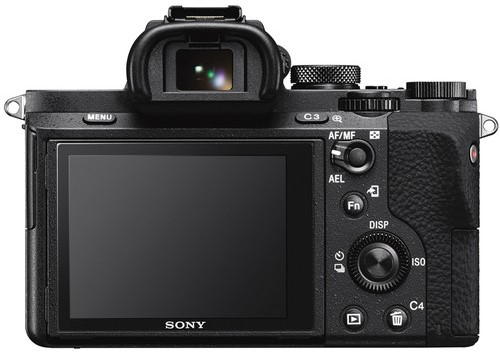
Other Sony a7 II specs include:
- 24MP full frame sensor
- 5-axis sensor-based image stabilization
- 117-point AF system
- 3” tilting LCD with 1.23m-dots
- Full HD video capabilities
- Built-in Wi-Fi
- 5fps burst mode
- ISO range of 100-25,600
Pros/Cons
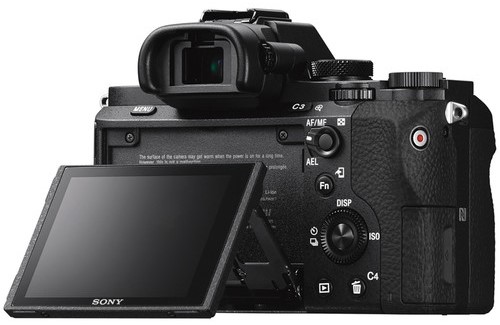
Again, since the Sony a7 II dropped so long ago, it doesn’t feature 4K video. Videographers looking for bargain cameras will need to read on.
The 5fps burst mode also seems wildly outdated.
But, for anyone looking to transition from a DSLR to a mirrorless, I highly recommend this camera. For starters, it feels much more like a DSLR than a mirrorless thanks to its chunky body. It also shoots great in low light scenarios.
Price
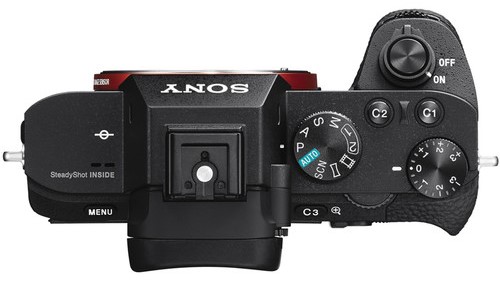
When the Sony a7 II first dropped, it cost nearly $1,500. Thankfully, the price has gone down over the years and you can now find a used Sony a7 II starting at $740 (body only).
Learn More:
Canon EOS RP
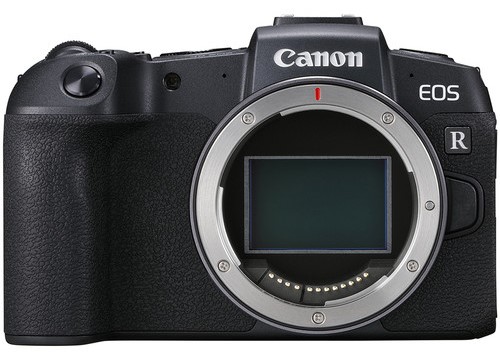
Next up on our bargain cameras list is the Canon EOS RP, which is a relatively new mirrorless camera that just so happens to be one of the most inexpensive cameras of its type to ever be released.
Specs/Features
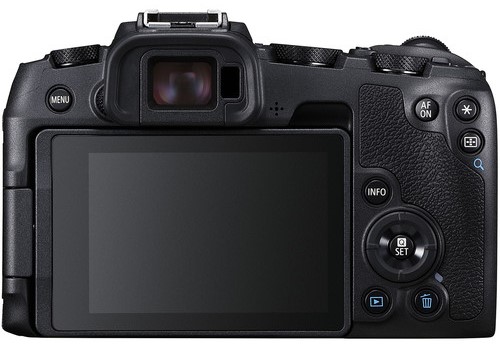
The Canon EOS RP comes with a 26MP sensor, a native ISO range of 100-40,000, and, wait for it, 4K video!
That’s right, it’s the first camera on our bargain cameras list to feature it. It can shoot 4K video at up to 24fps.
Other Canon EOS RP specs include:
- 26MP sensor
- DIGIC 8 processor
- 3” vari-angle touchscreen with 1.04m-dots
- 5fps burst mode
- 4K video
- Built-in Wi-Fi
- Built-in Bluetooth
- 250-shot battery life
Pros/Cons
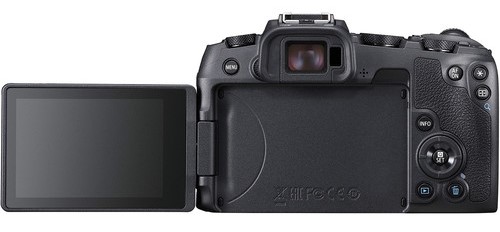
One major con of this camera is its battery life, which definitely means you will be requiring an extra battery, which means a higher startup cost and a heavier bag.
Its 4K video can be considered a pro or a con, depending upon how you look at it. While it’s a huge pro that it features 4K video, it also requires a crop in order to do so.
Price
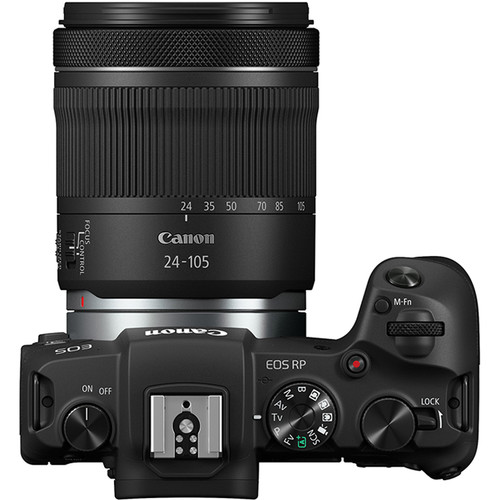
You may be wondering why the Canon EOS RP is on this list since it is a bargain cameras list, but I found a Canon EOS RP in like new condition on MPB for just $930 (body only). If you compare this to its original $1,300 price tag, you’re saving nearly $400 and receiving the exact same quality of camera.
Panasonic G9
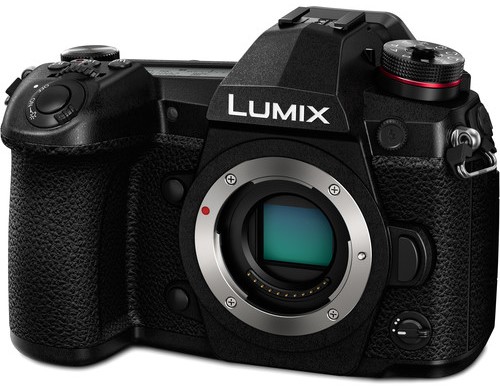
The Panasonic G9 will make it onto every bargain cameras list I ever create because I love it. It’s a mirrorless Micro Four Thirds camera that is phenomenal for still photographers, although I wouldn’t recommend it for its video capabilities.
Specs/Features
The Panasonic G9 features a 20MP Micro Four Thirds sensor, however it can create 80.6MP images by combining up to eight different shots for one incredibly detailed final product.
Its ISO is noble at 100-25,600, but is nothing compared to how great its 5-axis dual image stabilizer is.
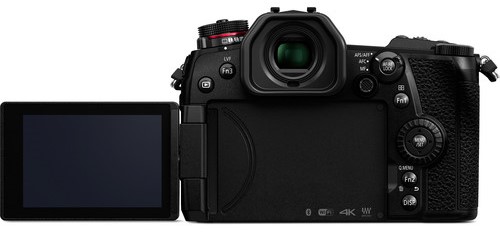
Other Panasonic G9 specs include:
- 20MP Micro Four Thirds sensor
- 3” fully articulating screen with 1.04m-dots
- 5-axis image stabilization
- ISO of 100-25,600
- 60fps burst mode
- 1.45 lbs
Pros/Cons
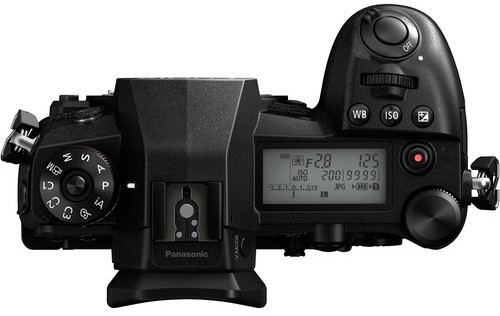
The entirety of the Panasonic G9 spec sheet is a huge pro for me. It’s viewfinder works excellently, it shoots just about the highest image quality possible, and it is one of many great bargain cameras.
Unfortunately, it is a little large for a mirrorless, which some people don’t like. But, overall I can’t find much wrong with this camera.
Price
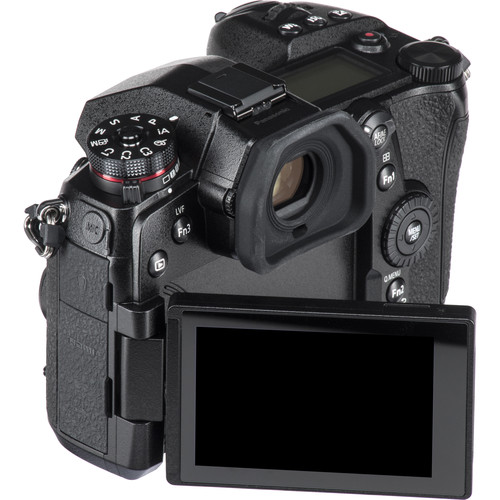
The Panasonic G9 is another camera that is typically priced at well over $1,000. Its list price is actually $1,500, but MPB has multiple bargain cameras. You can find the Panasonic G9 there for as low as $960 (body only) in excellent condition.
Learn More:
We Recommend
These New Panasonic Lumix S Pro Lenses are Something to Behold
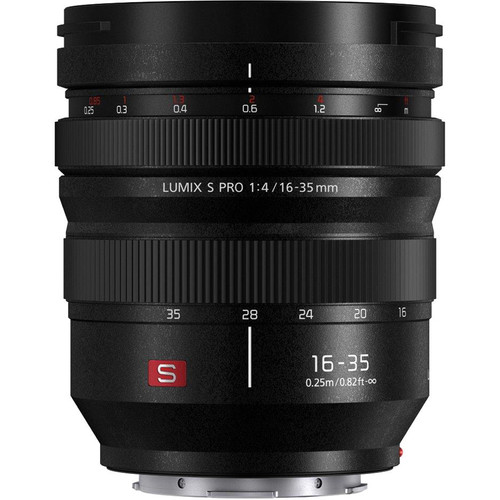
Panasonic is dropping two new Panasonic Lumix S Pro lenses in January, and while they’re both expensive, it’s looking like they’re going to be worth it.
Let’s take a look.
Panasonic Lumix S Pro 16-35mm f/4
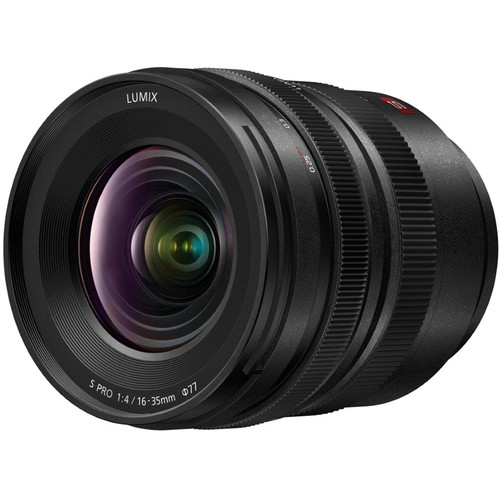
The Panasonic Lumix S Pro 16-35mm f/4 is an L-mount lens that is set to suppress double-line bokeh, while ensuring the entirety of the image is high resolution, meaning no vignetting in the corners.
This lens features 12 elements in 9 groups and an extra-low dispersion element to achieve superb image quality.
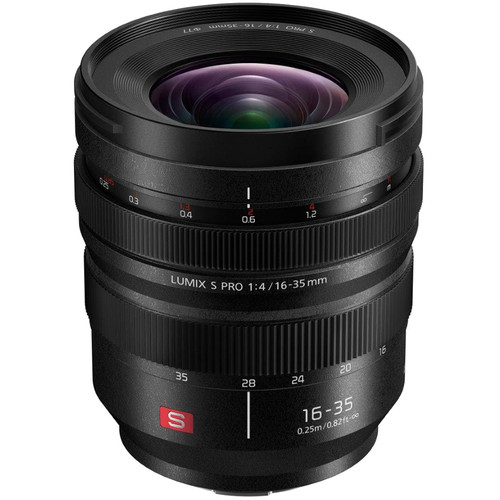
The autofocus is something to behold, too - it’s a double magnet linear autofocus motor, but you can also switch to manual focus incredibly quickly.
It’s water, dust, and weather resistant up to -10 degrees Fahrenheit, and we’ll keep you updated when it eventually drops if these new Panasonic lenses are really all they claim to be.
Learn More:
Panasonic Lumix S Pro 70-200mm f/2.8 O.I.S.
I’m not sure Panasonic’s marketing of this lens, which is built for “professional field shooting,” really makes a lot of sense to those of us out in the field. It seems Panasonic is trying to appeal to every photographer without excluding anyone, but that doesn’t mean I’m not excited for this Panasonic Lumix S Pro 70-200mm.
It features 22 elements in 17 groups with both ultra extra-low and extra-low dispersion elements.
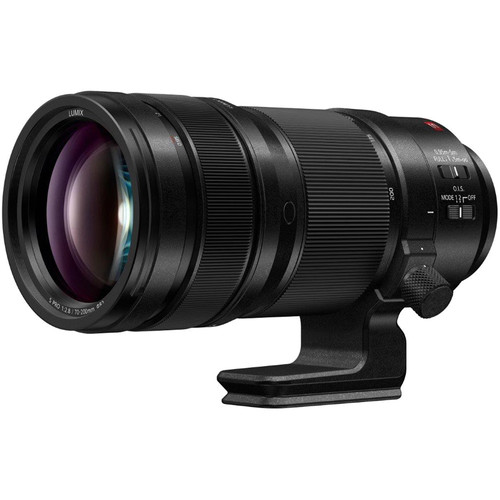
This lens features Panasonic’s Optical Image Stabilizer and is compatible with the 1.4x and 2x Lumix S L-mount teleconverters for up to 400mm focal lengths.
This lens itself features instant manual focus switching and is also water, dust and weather resistant at up to -10 degrees Fahrenheit.
Get more details on these lenses and other new product announcements from Panasonic in the video above from B&H Photo Video.
When Will These Panasonic Lumix S Pro Lenses Be Available?
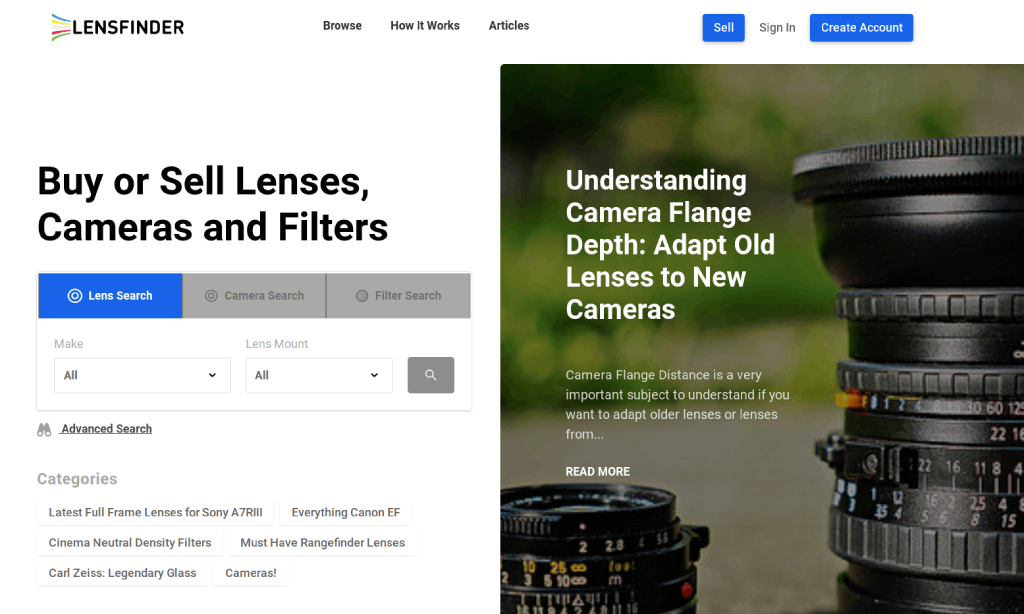
These lenses aren’t expected to drop until January of 2020. The 16-35mm will be available for $1,500 and the 70-200mm will be available for $2,600.
If you aren’t exactly looking to drop $2k on one lens, though, a good option for you is to buy your photography equipment used, and I try to buy all of my lenses on Lensfinder.
Lensfinder is essentially the eBay of used lenses, meaning you can find some extremely rare lenses on it, but without all the woes of buying camera gear on eBay (sky-high shipping, scams, and badly damaged equipment).
You can stretch your budget and get a couple of lenses, or you can sell some of your old glass to finance a new lens purchase, like one of the incredible S Pro lenses detailed above.
Lensfinder also has a selection of used filters and camera bodies (or you can list yours for sale), so it really is a one-stop shop for photographers that need gear or need to unload gear!
Learn More:
We Recommend
These Panasonic S5 Specs Make It a Worthy Camera for 2023
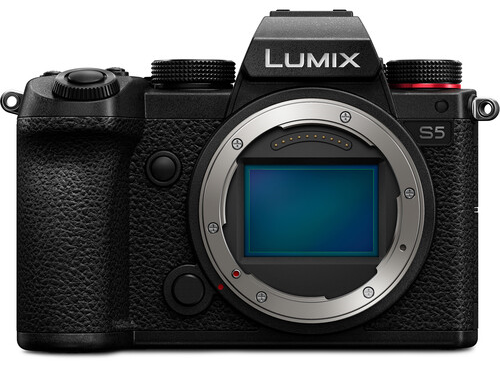
If you are shopping for a new hybrid camera and considering getting a Panasonic Lumix S5, you’ve come to the right place! In this must-read Panasonic S5 guide, we take a detailed look at the camera's most impressive specs, share why it’s still one of the hottest cameras on the market, let you know where you can get your hands on one, and more!
One incredible resource with tons of used Panasonic Lumix DC-S5 cameras in stock and a place I have bought and sold countless photo and video gear throughout the years is MPB. They are a trustworthy and reliable online platform selling used photo and video kit at unbeatable prices.
Moreover, all their cameras are dutifully hand-inspected by expert product specialists and backed by warranties, allowing you to make your purchases confidently and worry-free. Another fantastic feature of MPB is its online platform, where you can trade in and sell your old gear to help offset the cost of new-to-you photography and videography gear you want and need.
Now, without further ado, let’s dive in and discover five Panasonic S5 specs that make it a worthy camera for 2023!
Check out the video above by Gerald Undone to learn more about the specs of the Panasonic S5 and why it still offers tremendous value to photographers and videographers in 2023!
Table of Contents
- Panasonic S5 specs: Stunning 5.9K Video
- Panasonic S5 specs: Excellent In-Body Image Stabilization
- Panasonic S5 specs: Dual SD Card Slots
- Panasonic S5 specs: 24.2MP Full-Frame Sensor
- Panasonic S5 specs: Rugged Weatherproof Body
- Final Thoughts on the Specs and Features of the Panasonic S5
Panasonic S5 specs: Stunning 5.9K Video
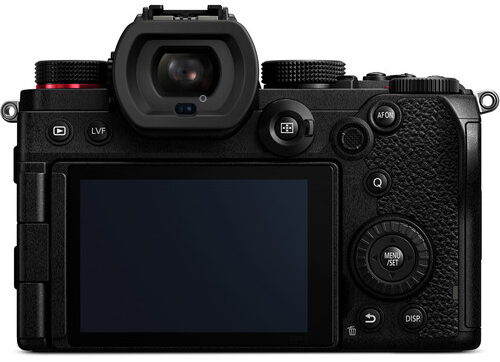
The headlining Panasonic S5 spec is undoubtedly the mind-blowing 5.9K video. When Panasonic originally launched the camera in 2020, its highest resolution was 4K, but thanks to a 2021 software update, it now boasts Blackmagic RAW 5.9K video. Only a few flagship mirrorless cameras, like the Sony Alpha 1 and Canon EOS R5, can top the resolution of the S5.
Furthermore, it offers 4K and 1080p Full HD video at 24, 30, and 60 fps frame rates. The high-quality video makes it one of the most popular cameras for professional videographers, filmmakers, YouTubers, and vloggers today.
Here’s an in-depth look at the key features and specs of the Panasonic Lumix S5:
- Camera Type: DSLR
- Sensor: 24.2MP Full-Frame CMOS sensor
- ISO: 100 - 51,200 (expandable to 50 - 204,800)
- Lens Mount: Leica L Mount
- Speed: 7.0 fps
- Autofocus: 225 focus points
- Video: 5.9K/30p, 4K/60p & 1080p/60p
- Size/Weight: 133 x 97 x 82 mm / 714 grams
- Battery Life: 440 shots
- Stabilization: Yes
- Touchscreen: Yes
Panasonic S5 specs: Excellent In-Body Image Stabilization
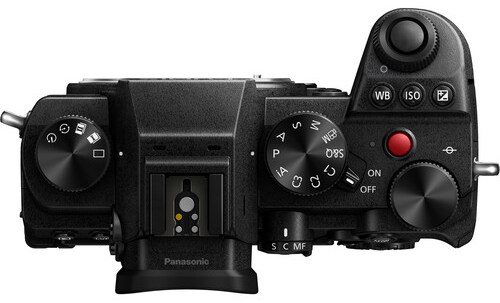
Another killer Panasonic S5 spec is its 5-axis in-body image stabilization (IBIS). It uses advanced sensor-shifting technology and adds up to 6.5 stops of exposure to both photos and video footage. This means the camera excels in low-light conditions and can shoot clear and noise-free content even at high ISO levels.
In addition, it is a total game-changer when filming video. Cameras that don’t feature IBIS need to always be mounted on a tripod or gimbal to avoid shaky footage, but that is not the case with the S5. Its industry-leading stabilization significantly reduces camera shake during handheld recording and makes the S5 a great camera for documentary filmmakers and travel vloggers.
Panasonic S5 specs: Dual SD Card Slots
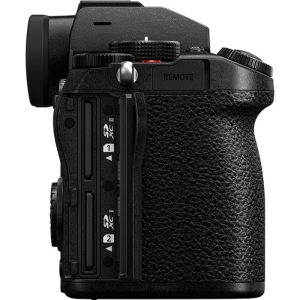
One downside of high-resolution video is that the file sizes are huge and take up loads of space on memory cards. Typically, this leads to constantly swapping out memory cards inside your camera. Or even worse, when your memory card is full, it will abruptly stop recording, even if you are in the middle of filming a once-in-a-lifetime shot!
The Panasonic Lumix S5 built two memory card slots into the camera to avoid these nightmare scenarios. How it works is that the S5 will save photos and videos to the first memory card and automatically switch over to the second SD card when the first one is out of space. This way, you can always ensure you have one empty card in the camera.
A few more noteworthy video features of the Panasonic S5 are the fully-articulated rear LCD, professional audio controls, and slow/quick modes for directly creating slow-motion and fast-motion movies inside the camera.
Learn More:
Panasonic S5 specs: 24.2MP Full-Frame Sensor
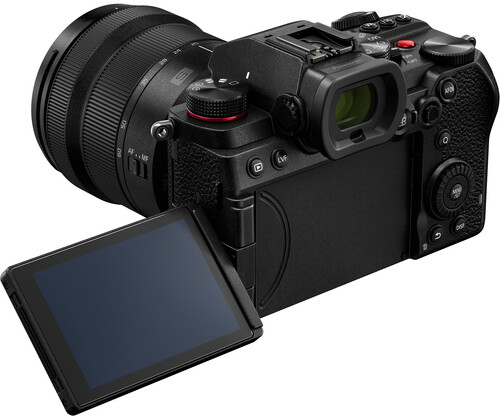
While there’s no denying that the S5 was made primarily with video shooting in mind, it’s no slouch at still photography. It’s one of the only cameras in Panasonic’s lineup that features a full-frame image sensor, and its 24.2-megapixels is well above the industry average. The sensor captures high-quality RAW and JPEG images with excellent clarity and vibrant colors.
Additionally, RAW files have superb dynamic range. This means they are ideal for editing and enhancing using post-production software like Adobe Lightroom and Photoshop. One more awesome feature I love is the High-Resolution mode. It compiles multiple exposures into one ultra-high-resolution 96 MP picture.
Panasonic S5 specs: Rugged Weatherproof Body
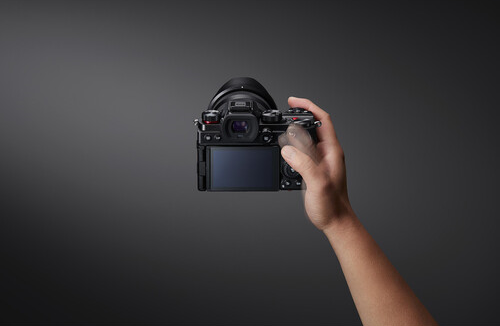
Finally, I must mention the outstanding build quality of the Panasonic S5. The body is made from a heavy-duty aluminum alloy and is fully-weather sealed to protect it from the elements. This means it is resistant to water, moisture, dust, sand, and snow, making the S5 a perfect camera for outdoor, adventure, landscape, and wildlife photographers.
Moreover, the body has a large, textured grip that feels great in the hands and provides extra security when shooting with the camera. So, if you invest in the Panasonic S5, you will get a durable camera that will help take your photos and videos to the next level and will last a lifetime!
Final Thoughts on the Specs and Features of the Panasonic S5
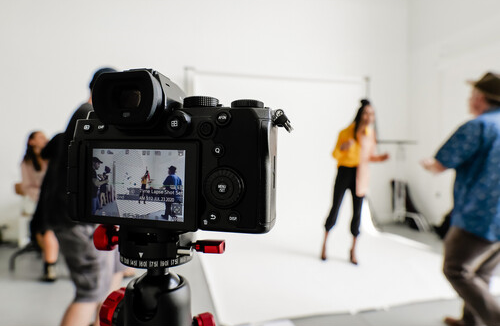
If those Panasonic S5 specs weren’t enough to convince you to pull the trigger on one of these amazing cameras, maybe its budget-friendly price will! Their average price has dropped considerably since the camera's initial release two years ago, and you can now find used Panasonic S5 cameras for under $1,400 on platforms such as MPB!
And as a final farewell gift, here is a list of my top L Mount lenses for photo and video when shooting with the Panasonic S5:
- Panasonic Lumix S 24mm f/1.8
- Panasonic Lumix S Pro 16-35mm f/4
- Sigma 150-600mm f/5-6.3 DG DN OS SPORT - L Fit
- Leica 35mm f/1.4 Summilux-TL ASPH
- Leica APO-Macro-Elmarit-TL 60mm f/2.8 ASPH
Learn More:
- Panasonic 6K Camera: Is the Lumix S1H for You?
- Why the Panasonic GH4 is Still a Great Camera for Video
We Recommend
Three of the Best Cameras Under $500 to Consider for 2023
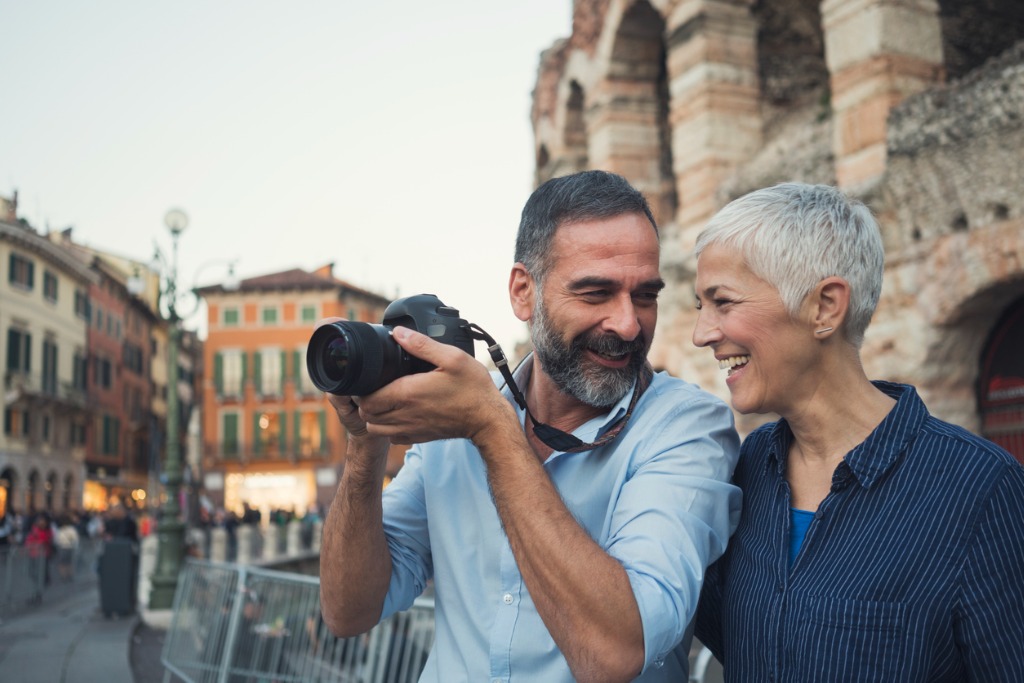
Photo by Vesnaandjic via iStock
If you are on the hunt for a cheap digital camera and don’t know where to start your search, you are in the right place! We designed this guide as a one-stop shop where you can learn everything there is to know about some of the best budget-friendly cameras on the market today.
One outstanding resource with heaps of used mirrorless cameras and used DSLR cameras for under $500 and a place I have bought and sold endless photography equipment throughout the years is MPB. They are a trustworthy and reliable online platform selling used photo and video kit at unbeatable prices.
Moreover, every one of their cameras is dutifully hand-inspected by expert product specialists and backed by warranties, allowing you to make your purchases confidently and worry-free. Another amazing feature of MPB is its online platform, where you can trade in and sell your old gear to offset the cost of new-to-you photography and videography gear you want and need.
With that said, it’s time to jump in and take a closer look at three of the best cameras under $500 to consider for 2023!
Table of Contents
- Best Cameras Under $500: Olympus OM-D E-M5 Mark II
- Best Cameras Under $500: Panasonic Lumix DMC-GX85
- Best Cameras Under $500: Sony a6000
- More Excellent Cameras Under $500
Best Cameras Under $500: Olympus OM-D E-M5 Mark II
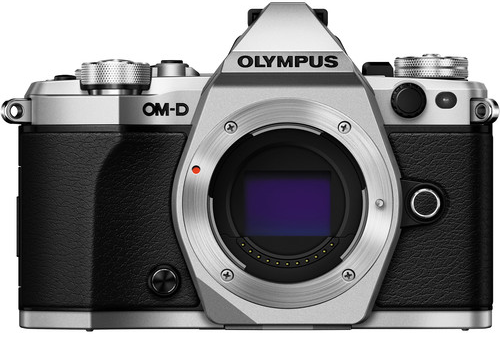
First on our list of the best cameras under $500 is the prestigious Olympus OM-D E-M5 Mark II. It originally debuted in 2015, but despite its old age, it remains an extremely capable camera thanks to its 16.1-megapixel Four Thirds sensor and fast TruePic VII image processing engine. The pair works together to deliver fantastic image quality in both still photos and videos.
One area where the OM-D E-M5 Mark II shines brightest is low-light shooting. The new TruePic VII image processor significantly improves low-light performance compared to the original OM-D E-M5 and boosts the camera's dynamic range. The wide dynamic range allows you to better edit your pictures in post-production.
Another advanced feature is the built-in 5-Axis image stabilization. It further enhances low-light image quality and helps reduce camera shake during handheld video recording. The last thing I love about this camera is the 40MP high-resolution mode. It uses AI technology to combine multiple exposures into one high-res photo and is great for nature and landscape photography.
If you have a slightly higher budget, check out its successor, the Olympus OM-D E-M5 Mark III. Now, here’s an in-depth look at the key features and specs of one of the best cameras under $500:
- Camera Type: Mirrorless
- Sensor: 16.1MP Four Thirds CMOS sensor
- ISO: 200 - 25,600 (expandable to 100 - 25,600)
- Lens Mount: Micro Four Thirds
- Speed: 10.0 fps
- Autofocus: 81 focus points
- Video: 1080p/60p, 1080p/30p, & 1080p/24p
- Size/Weight: 124 x 85 x 45 mm / 469 grams
- Battery Life: 310 shots
- Stabilization: Yes
- Touchscreen: Yes
Check out the video above by Peter Forsgård to learn more about why the Olympus OM-D E-M5 Mark II is still worth buying in 2023.
Learn More:
Best Cameras Under $500: Panasonic Lumix DMC-GX85

Next up is the Panasonic Lumix DMC-GX85 (or DMC-GX80 as it’s known in Europe). It was released in 2016 and is an intermediate-level mirrorless camera with a 16.0-megapixel Four Thirds sensor. It’s a fantastic all-around camera, perfect for photography and videography alike.
The standout feature of this camera is its 4K video capabilities. It records stunning UHD 4K footage at frame rates of 30p and 24p. Additionally, the camera’s powerful built-in image stabilization technology yields excellent results and all but eliminates unwanted camera shake. For even better results, use a Micro Four Thirds lens with optical image stabilization like the Panasonic Lumix G Vario HD 14-140mm f/4-5.8 Mega O.I.S.
Some standout still photography features include three 4K photo modes, superb ergonomics/handling, and responsive Depth-From-Defocus autofocus. The AF technology works well in both photo and video modes and has solid subject tracking. This makes the DMC-GX85 a good choice for portrait and street photographers.
If you are willing to spend a little more, check out the upgraded Panasonic Lumix DC-GX9. Now, here’s an in-depth look at the key features and specs of one of the best cameras under $500:
- Camera Type: Mirrorless
- Sensor: 16.0MP Four Thirds CMOS sensor
- ISO: 200 - 25,600 (expandable to 100 - 25,600)
- Lens Mount: Micro Four Thirds
- Speed: 8.0 fps
- Autofocus: 49 focus points
- Video: 4K/30p & 1080p/60p
- Size/Weight: 122 x 71 x 44 mm / 426 grams
- Battery Life: 290 shots
- Stabilization: Yes
- Touchscreen: Yes
Check out the video above by MicroFourLife to learn more about what makes the Panasonic Lumix DMC-GX85 great in 2023.
Best Cameras Under $500: Sony a6000
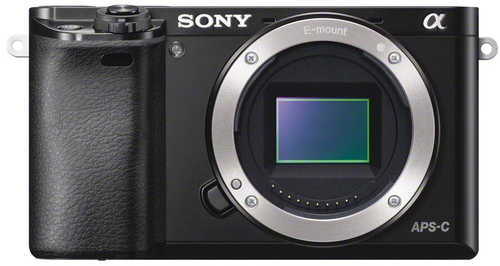
One more of the best cameras under $500 is the insanely popular Sony Alpha a6000. It launched in 2014 and is the longest-running and most-sold mirrorless camera of all time. For children and those of you brand-new to photography, there is no better camera on the market thanks to its user-friendly interface and lightweight, compact design.
The camera’s hybrid phase-detection autofocus is incredibly fast and means capturing crystal-clear images is a piece of cake, even when shooting moving subjects. Moreover, this camera offers burst shooting at speeds of up to 11 frames per second. This makes it an ideal camera for action, adventure, sports, and wildlife photography.
Lastly, the a6000 also excels as a video camera. While it can’t shoot 4K footage, the video quality of its 1080p Full HD clips is impressive. Other useful video features include the tilting touchscreen LCD, zebra markers, and a built-in stereo microphone.
If you can expand your budget slightly, check out its replacement, the Sony Alpha a6100. Now, here’s an in-depth look at the key features and specs of one of the best cameras under $500:
- Camera Type: Mirrorless
- Sensor: 24.3MP APS-C CMOS sensor
- ISO: 100 - 25,600 (expandable to 100 - 51,200)
- Lens Mount: Sony E Mount
- Speed: 11.0 fps
- Autofocus: 179 focus points
- Video: 1080p/60p, 1080p/30p, & 1080p/24p
- Size/Weight: 120 x 67 x 45 mm / 344 grams
- Battery Life: 360 shots
- Stabilization: No
- Touchscreen: No
Check out the video above by Arron Prescott to learn more about why the Sony a6000 is still a fantastic camera to purchase in 2023.
More Excellent Cameras Under $500

Photo by PeopleImages via iStock
While those are undoubtedly three of the best cameras under $500 available today, there are many other great options out there if you know where to look. MPB, for example, has tons of cheap used cameras in stock now! And with that in mind, here are a few more of my favorites:
Learn More:
We Recommend
Top Autofocus Lenses for Micro Four-Thirds Cameras
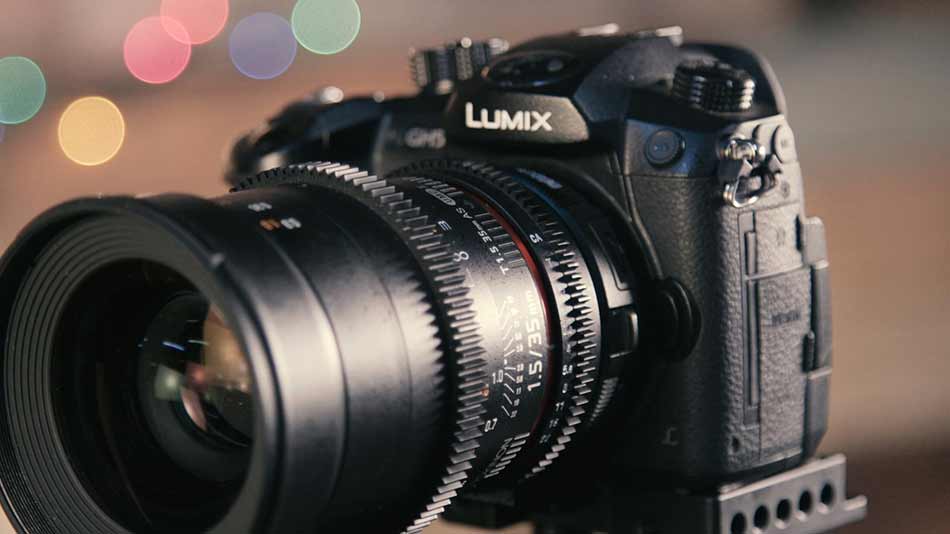
Photo by ShareGrid on Unsplash
I love shooting with Micro Four Third cameras, and I’m not alone.
Google searches for “best micro four-thirds lenses” have gone through the roof in the past few years. But, newfound popularity in Micro Four Third cameras, also means that we can play around with some (resale!) top autofocuses lenses. And I’m always down for a bargain.
So, I compiled a list of the top autofocus lenses you can use with a Micro Four-Thirds camera, and all for under $300.
BEST PRIME AUTOFOCUS LENSES
PANASONIC LUMIX G 14MM F/2.5

If you’re looking for the Micro Four-Thirds equivalent of a 28mm, this one by Panasonic is for you. I use it for street photography, and I’ll also take it traveling with me because it works just as well in low-light as it does at noon.
It’s also tiny at 0.8” thick and 2oz, so it fits in my luggage, and comes with a multi-coated lens so it’s less prone to scratches.
It’s also fun to play with the rounded seven-blade diaphragm because it produces cool highlights when working with selective focus.
PANASONIC LUMIX G 25MM F/1.7
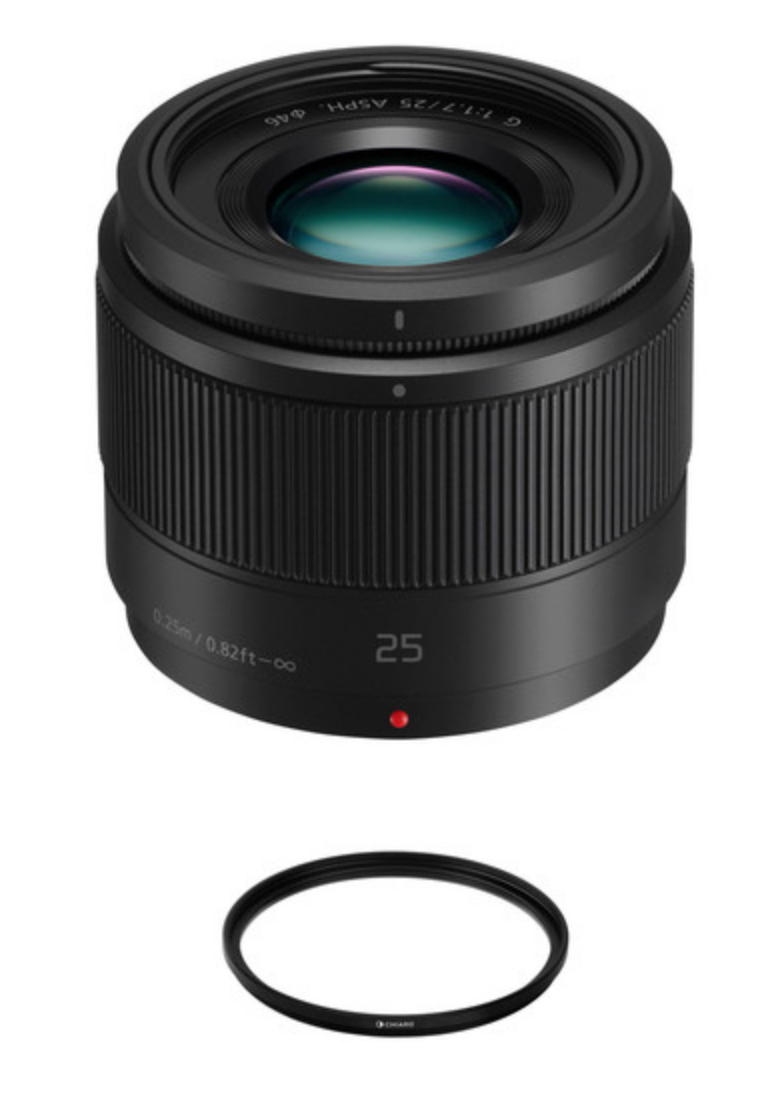
Not to be that person, but I’m recommending another one of Panasonic’s line for my best prime autofocus lenses.
This LUMIX strikes me as one of the best micro four-thirds lenses because it’s the equivalent of a 35mm, which means it can be used to shoot virtually any subject at pretty much any time of day, and for one of the cheapest prices of any top autofocus lenses.
It comes with a f/1.7 aperture for incredible low light shooting, and doesn’t skimp in strong lighting conditions either due to a Nano Surface Coating which reduces lens flare.
SIGMA 30MM F/1.4 DC DN CONTEMPORARY
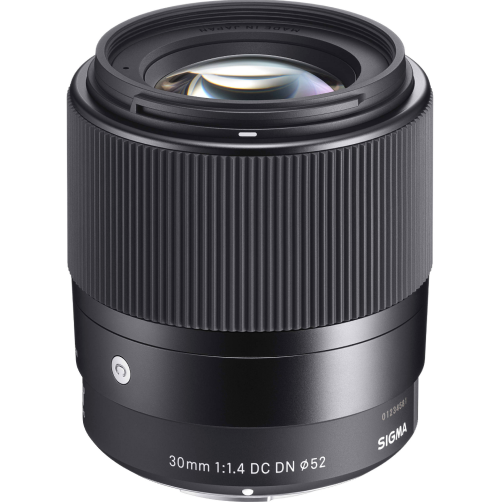
We can’t get into the best prime autofocuses lenses and not at least mention Sigma’s versatile contemporary lens.
The f/1.4 aperture offers wonderful opportunities for minimizing the depth of field for portraits and close-up shots.
This Sigma should also be considered one of the best micro four-thirds lenses because of the aspherical elements in its optical design, which prevent spherical aberrations and produce sharper photos than any one of these other prime autofocus lenses.
The Super Multi-Layer Coating on this Sigma also enables photographers to grab images with incredible contrast without color distortion. It’s a win-win!
OLYMPUS M. ZUIKO DIGITAL 45MM F/1.8
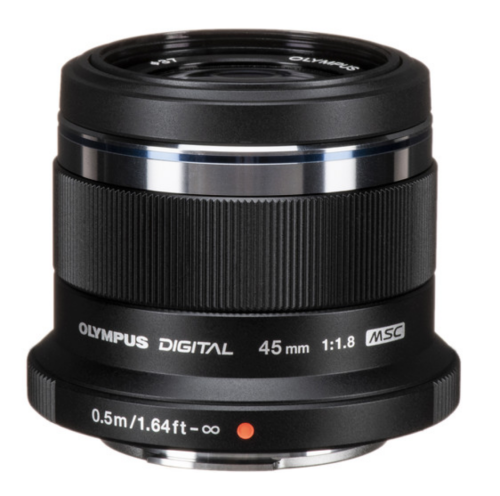
Portrait photographers who haven’t worked with the Olympus Zuiko Digital, what are you doing? This is absolutely one of the best autofocus lenses for portrait photographers, thanks to the short-telephoto focal length and the f/1.8 maximum aperture.
With this lens, you no longer need to be worried that golden hour is fading because it handles low-light portraits just as well.
This is also one of the top autofocus lenses for micro four-thirds cameras because of the Movie & Still Compatible (MSC) autofocus system. It shoots video in the same way it shoots photos - quickly and quietly.
Learn More:
Best Zoom Autofocus Lenses
LUMIX G VARIO 45-150MM F/4-5.6 ASPH. MEGA O.I.S.
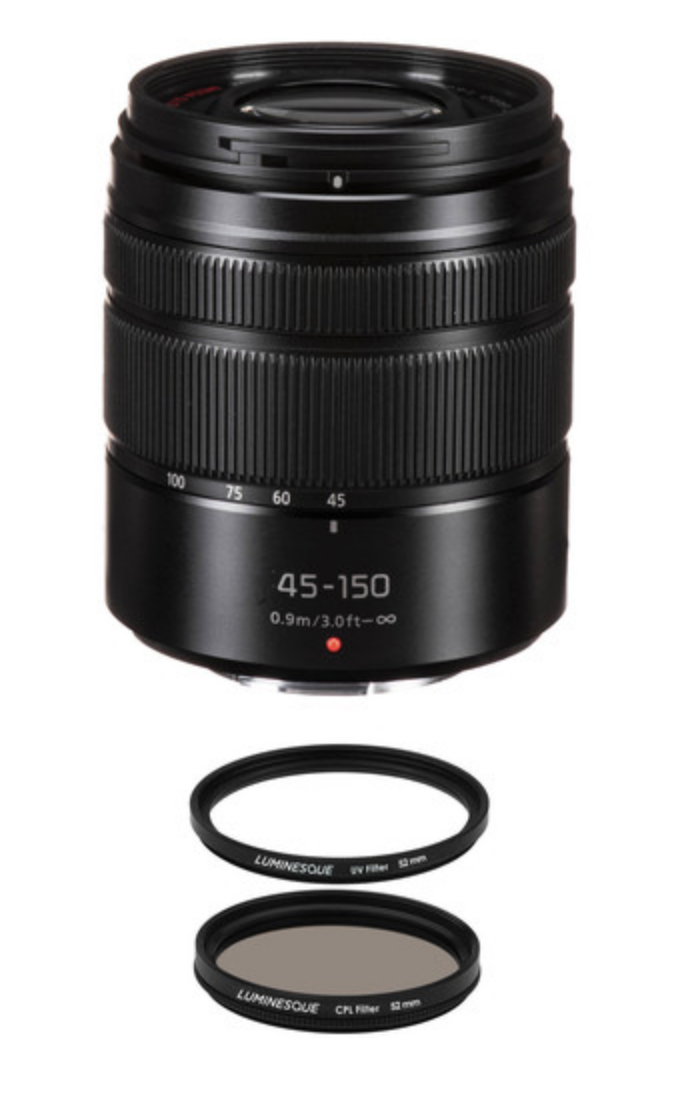
This Lumix is so cheap, yet it’s great for 4K, is the full frame equivalent of 90-300mm, and is comparatively light.
No, I wouldn’t recommend this Lumix as one of the top autofocus lenses for still photographers, but if you so much as dabble in videography, you need to experience shooting with a Mega O.I.S. It basically prevents your hand shake from diminishing the video quality, so you’re shooting better than with any other micro four-thirds lens.
It also comes with a stepping motor to create an almost silent autofocus.
Olympus M. Zuiko Digital ED 14-42mm f/3.5-3.6
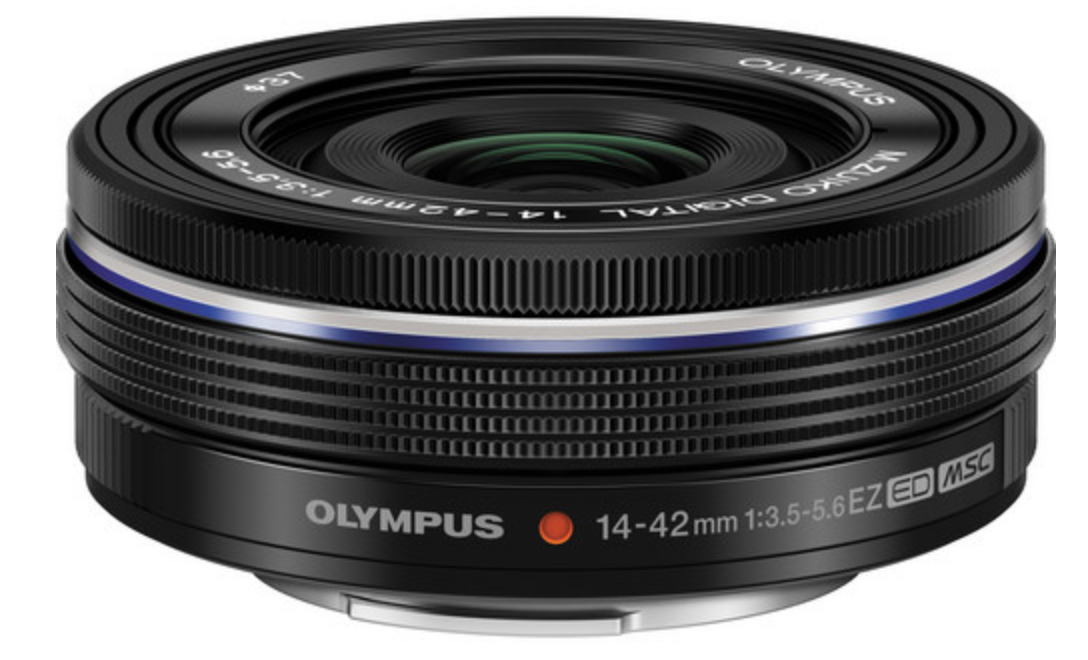
No, this lens isn’t as exciting as the previous Lumix, but it does everything it’s supposed to, which is sometimes a lot to ask of a lens.
It’s small (3.2oz and less than 1in. In depth), quiet and comes with the MSC autofocus.
It does have one downside though: at f/3.5-5.6, it’s not the fastest lens out there. So, if you’re not involved in sports or wildlife photography in which you need to crank up the shutter speed, check this zoom autofocus lens out.
Where to Buy These Top Autofocus Lenses
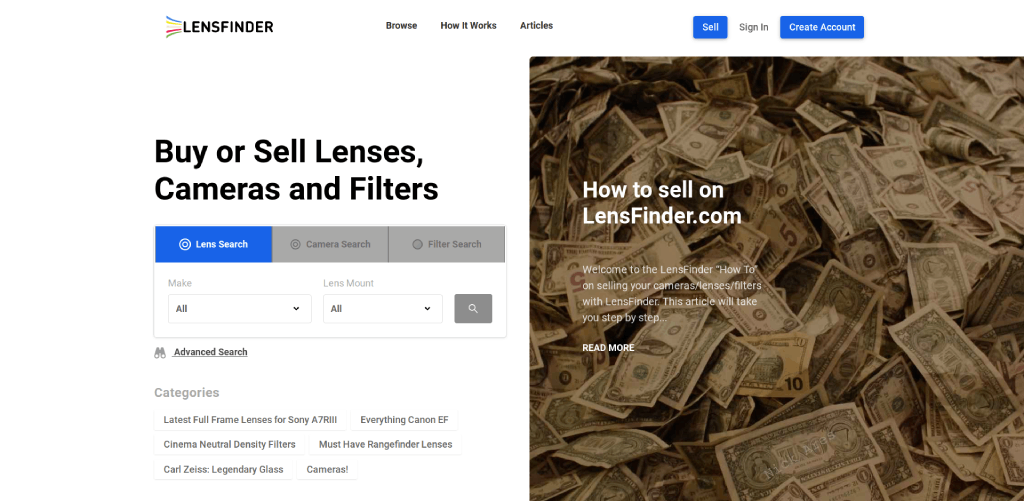
Whenever I’m bargain shopping for the best micro four-thirds lenses, I always head straight to Lensfinder.
Not only do they have an incredible array of the top autofocus lenses, but they are a resale website so each one of the lenses in their inventory has a caring photographer behind them.
This means you can rest assured your lenses were taken care of before you came across them, and you can also ask any and all questions of the sellers (no more hassling with third-party sellers on eBay).
Plus, Lensfinder ensures the sellers pay all of the fees and you know exactly what your total is going to be up front.
And, if you can’t find the exact lens you are looking for today, you can always come back tomorrow because the chances are it will be there! It’s a one-stop-shop for lenses that could help you save a good bit of money. What’s not to like about that?
Learn More:
- These Crazy Camera Lenses Have to Be Seen to Be Believed
- Best Nikon Lenses for Beginner Photographers
We Recommend
Top Beginner Cameras for 2021
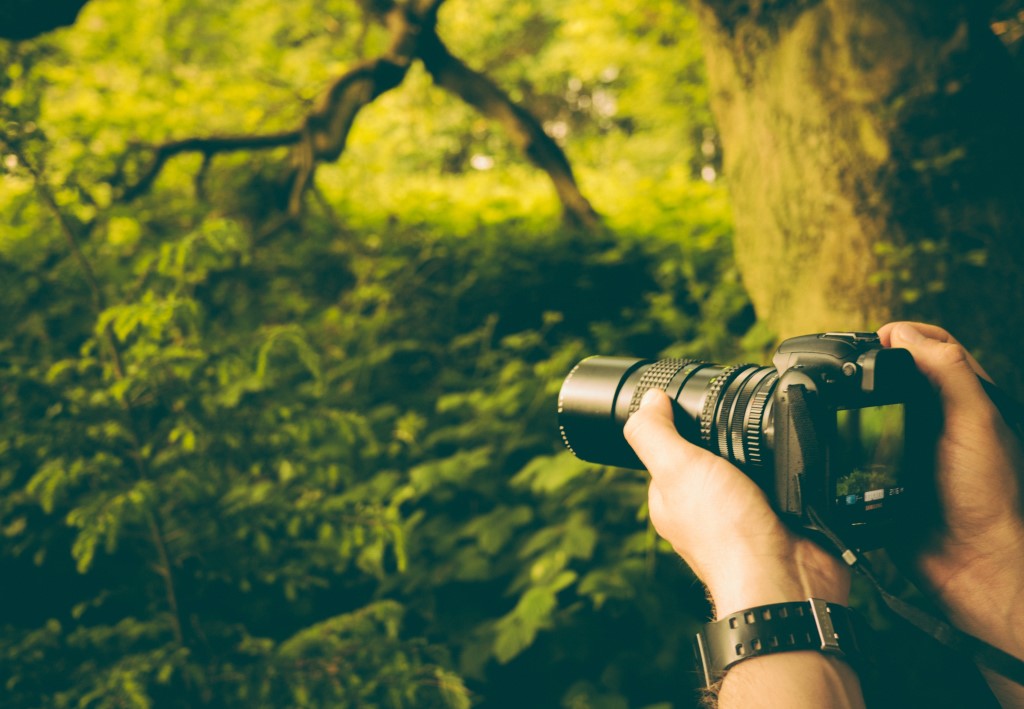
Photo by Jamie Street on Unsplash
In a world in which some cameras cost thousands and thousands of dollars, coming across a good beginner camera can seem really difficult. Why spend thousands of dollars when you’re not even sure if this is the hobby/job for you?
Thankfully, there are some incredible budget DSLRs and mirrorless cameras on the market right now. Read on about Nikon D3500 review which is my favorite DSLR along with four more cameras from different brands.
This list of top beginner cameras includes a few of each. Some came out this year, some are years old, but they’re all great for exploring your inner photographer.
Table of Contents
Nikon D3500
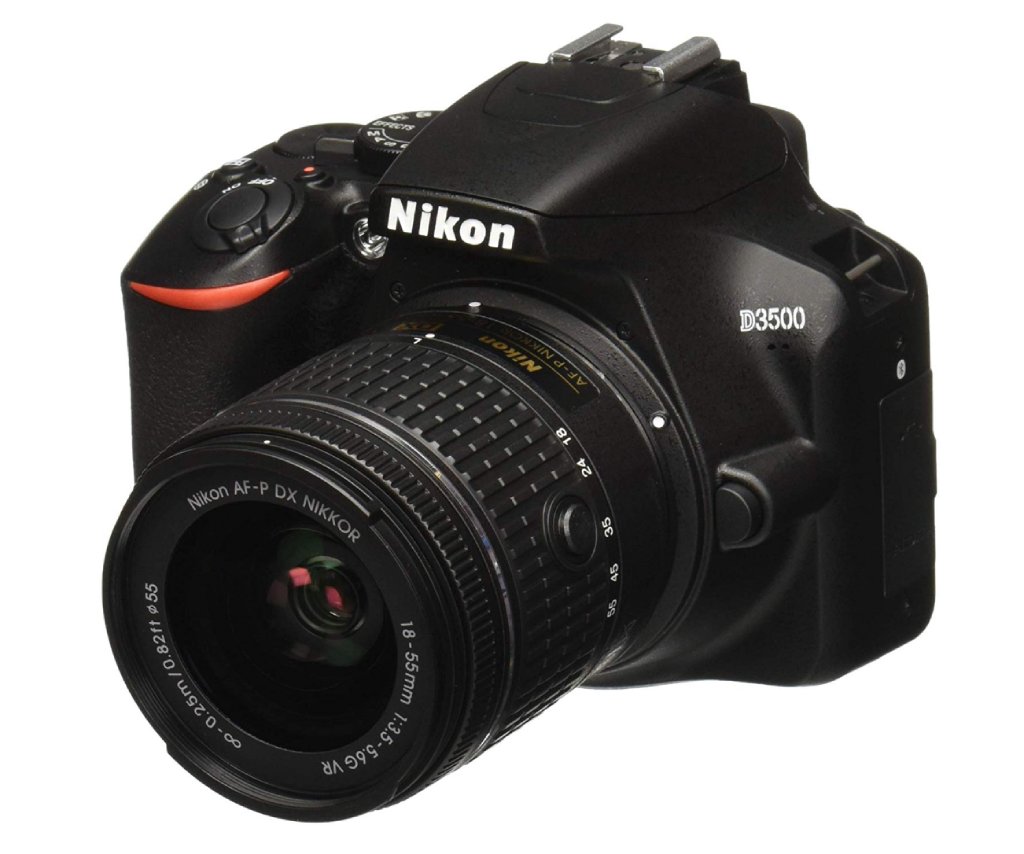
The Nikon D3500 is a special favorite DSLR of mine, primarily because of the price and the shocking battery life that’s good for over 1,500 shots.
This D3500 is Nikon’s follow up to the d3400 which came out in 2016, and offers some modest upgrades for today’s photographer.
Nikon D3500 Specs
- 24.2MP APS-C CMOS 4
- EXPEED 4
- 11-point autofocus system
- Max Image Size: 6,000 x 4,000px
- 1920 x 1080 resolution HD video
- 3.0-inch with 921K dots
- Weight: 14.6 oz
Nikon D3500 Pros & Cons
- Pro: 1,550-shot battery life
- Pro: Incredibly lightweight and compact for a DSLR
- Pro: Cheap
- Con: No 4K video capabilities
- Con: Fixed 3.0-inch LCD screen
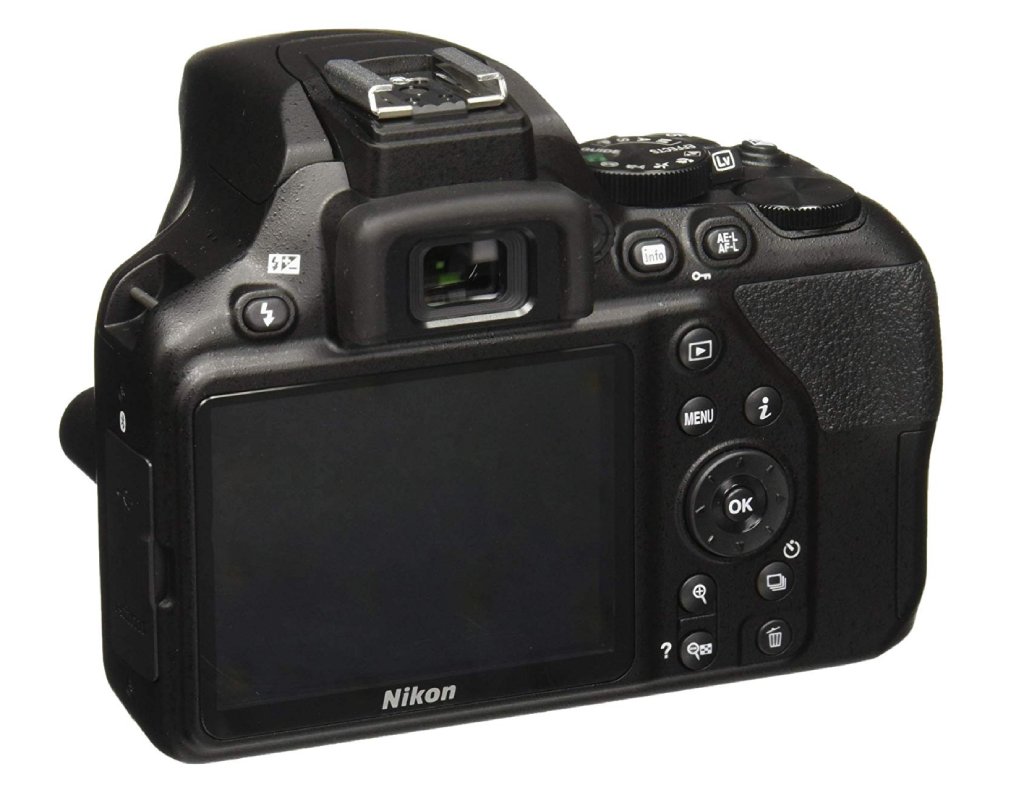
Nikon D3500 Overview
The Nikon D3500 made our list of top beginner cameras for 2021, despite being released in 2018, due in large part to its price. At $395 new, or around $180 used, this DSLR performs just as well as many mirrorless cameras in the same price range.
While this isn't one of the best beginner cameras for videographers due to the lack of 4K video, it's battery life of 1,550 shots, paired with its updated sensor and decent kit lens means this camera is one of the best entry-level cameras, especially for avid travelers.
This camera is also phenomenal for beginners because you can easily transition from its accessible guide modes to a more hands-on approach. Plus, the hands-on approach isn't frustrating due to the new layout of the buttons on the camera (so long as you're a rightie, lefties beware).
Finally, you can also process your RAW images in-camera and connect to the camera via Bluetooth. It’s not the perfect camera, but it’s darn close for a beginner!
You can purchase the Nikon d3500 new for $395, or used starting at $180 on MPB.
Sony RX100 Mark V
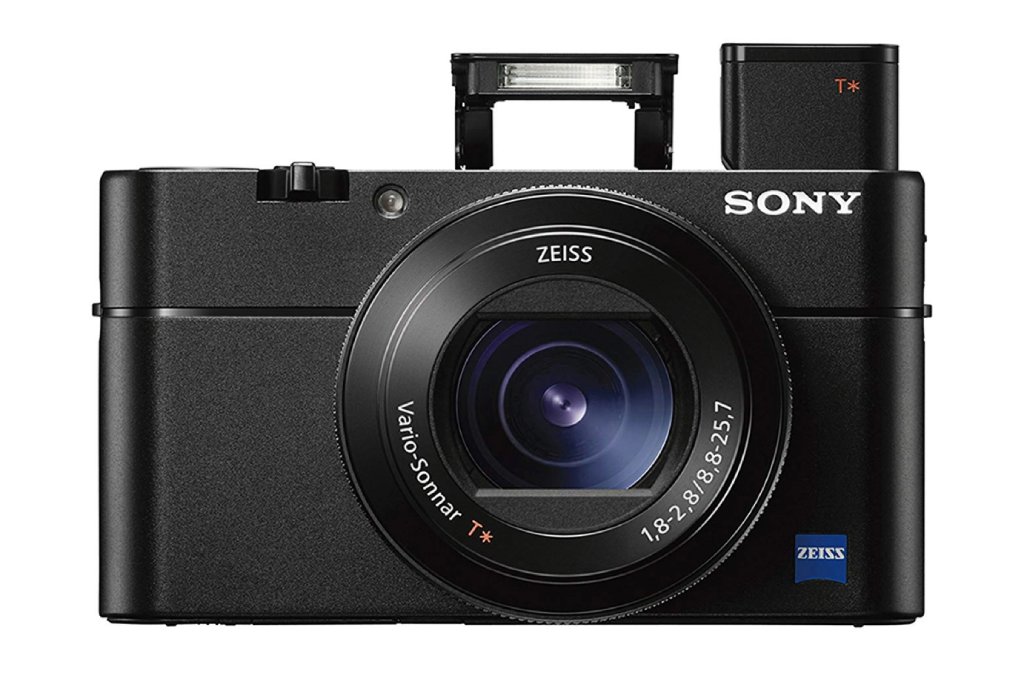
The Sony RX100 Mark V is the priciest camera on our list, but if you truly need something you can throw in your jacket pocket, then this is one of the top entry-level cameras for you.
Sony RX100 Mark V Specs
- 20MP 1”-type stacked BSI-CMOS sensor
- 24fps burst shooting with full AF
- 4K video capabilities for up to 5 minute clips
- 220-shot battery life
- 1,000fps for 8 seconds
Sony RX100 Mark V Pros & Cons
- Pro: Pocket-friendly sizing
- Pro: 4K video and high-res photos
- Pro: Fast, accurate autofocus
- Con: Pricey
- Con: No touch screen
The Sony RX100 V is another camera on this list that came out a few years ago, 2016 to be exact.
If you're in the market for cheap beginner cameras, then look elsewhere. The Sony RX100 V is a top-of-the-line compact and knows it with a price tag of nearly $1,000. However, if you can afford the splurge, this will be among the most compact beginner cameras you can find.
As mentioned, it shoots 4K video, has an incredibly fast burst mode, and features high resolution images. It automatically finds your focus areas, which is great for beginners, and it's faster than any of Sony's other mirrorless or DSLR cameras.
It's also the best camera on this list for shooting in low light.
However, because of all of the features in this camera, it may be best for those who have a decent amount of photography experience.
You can purchase the Sony RX100 Mark V for $830 on Amazon, or $530 used on MPB.
Panasonic Lumix ZS200/TZ200/TZ220
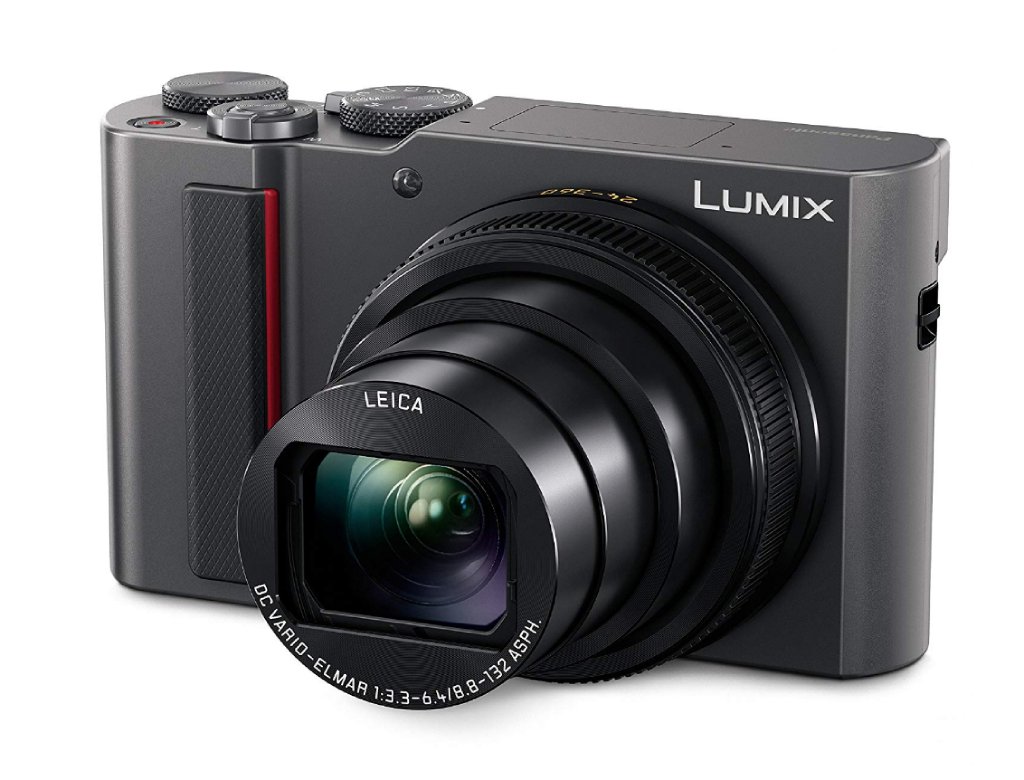
Entry-level cameras should have an entry-level price and that’s why I love this Panasonic Lumix ZS200. It comes with all the features a beginner will need, without anything extra.
Panasonic Lumix ZS200/TZ200/TZ220 Specs
- 1-inch, 20.1MP MOS sensor
- 3.0-inch, 1,240K dot LCD screen
- 10fps burst shooting
- 4K video
- Electronic viewfinder with 2,330K dots
Panasonic Lumix ZS200/TZ200/TZ220 Pros & Cons
- Pro: 15x optical zoom range
- Pro: Excellent 1.0-inch sensor
- Pro: 4K video
- Con: Fixed LCD screen
- Con: Smooths images at high ISO
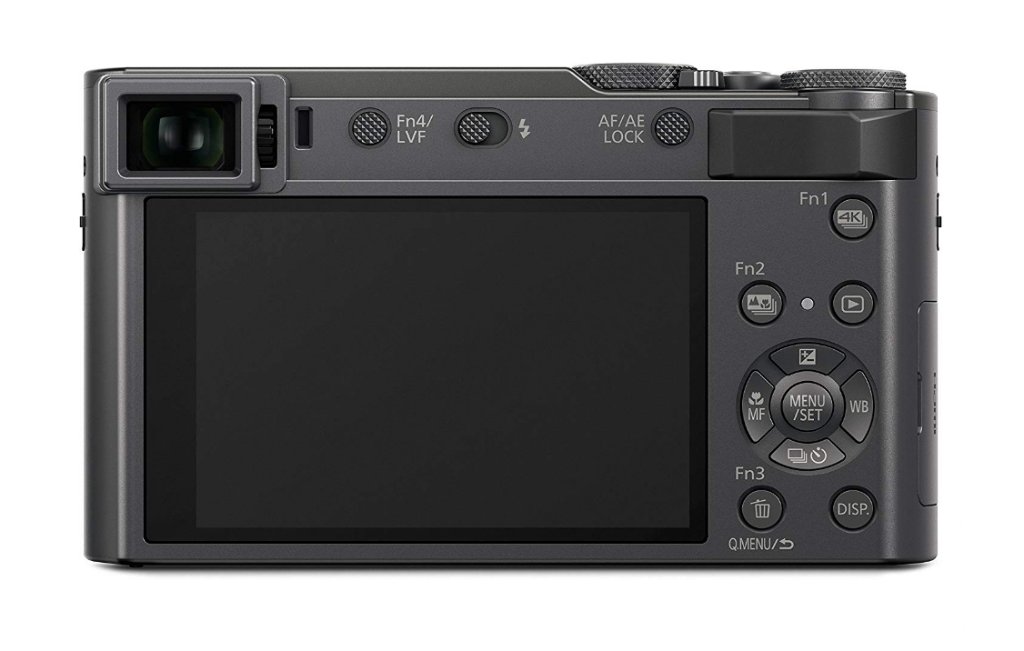
Panasonic Lumix ZS200/TZ200/TZ220 Overview
The Panasonic Lumix ZS200 is, as mentioned, one of the top beginner cameras because it features everything you need and nothing you don't. 4K video? It has it. A touch-enabled LCD screen? It has one.
It features 15x optical zoom, connects to WiFi, and has the equivalent of a 24-360mm lens. It can shoot 20MP stills and its electronic viewfinder is 15% beginner than its predecessor's.
Plus, the Panasonic Lumix ZS200 has an impressive battery life. It also shoots in both RAW and JPEG, and can easily fit in your bag.
However, the Panasonic Lumix ZS200 is slower than its competitors. And, its buttons seem to be unnecessarily pushed together, which can frustrate some shooters. Although, this button cramping issue does mean Panasonic had room to create a better grip, which means less chance you accidentally drop it.
You can buy the Panasonic Lumix ZS200 on Amazon for $700 or search for used ZS200s to save some cash.
Get more details about this camera in our Panasonic Lumix ZS200 review.
Olympus OM-D E-M10 Mark II
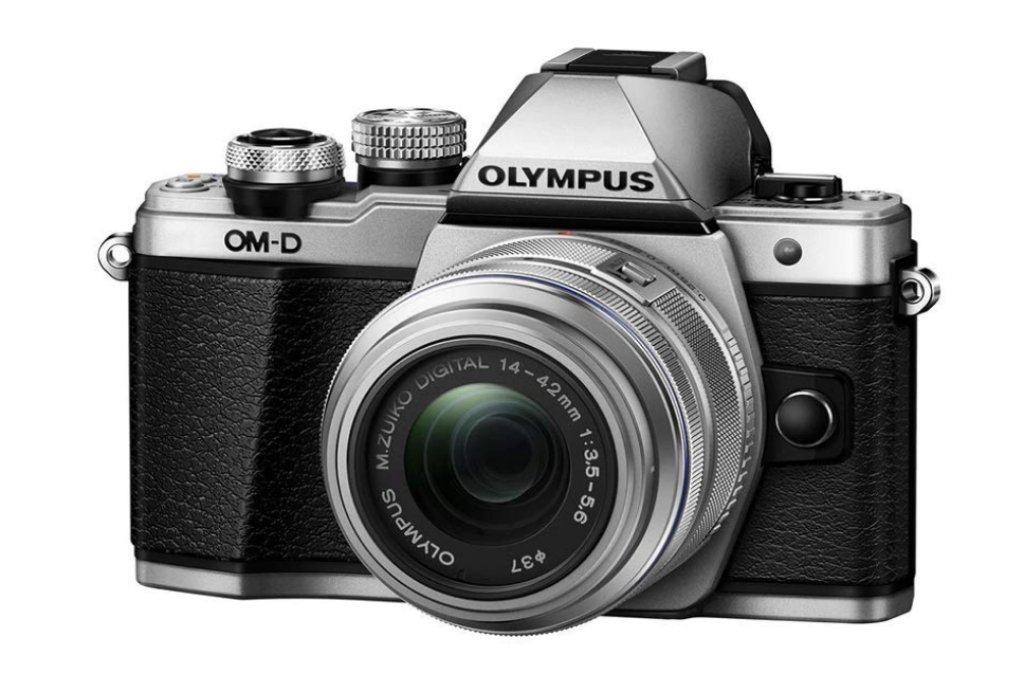
Other than the fact that I love the look of the Olympus OM-D E-M10 Mark II, it made this list for its great electronic viewfinder, its image stabilisation (which far outranks any others in its price range), and its fast burst shooting.
Olympus OM-D E-M10 Mark II Specs
- 16.1 megapixel MOS sensor
- 8.5fps burst shooting
- WiFi connectivity
- 5-Axis image stabilization
- 1080p video
Olympus OM-D E-M10 Mark II Pros & Cons
- Pro: Incredibly beautiful, with a retro vibe
- Pro: Fast burst shooting
- Pro: Tiling touch-screen
- Con: No 4K capabilities
- Con: Unusual power switch
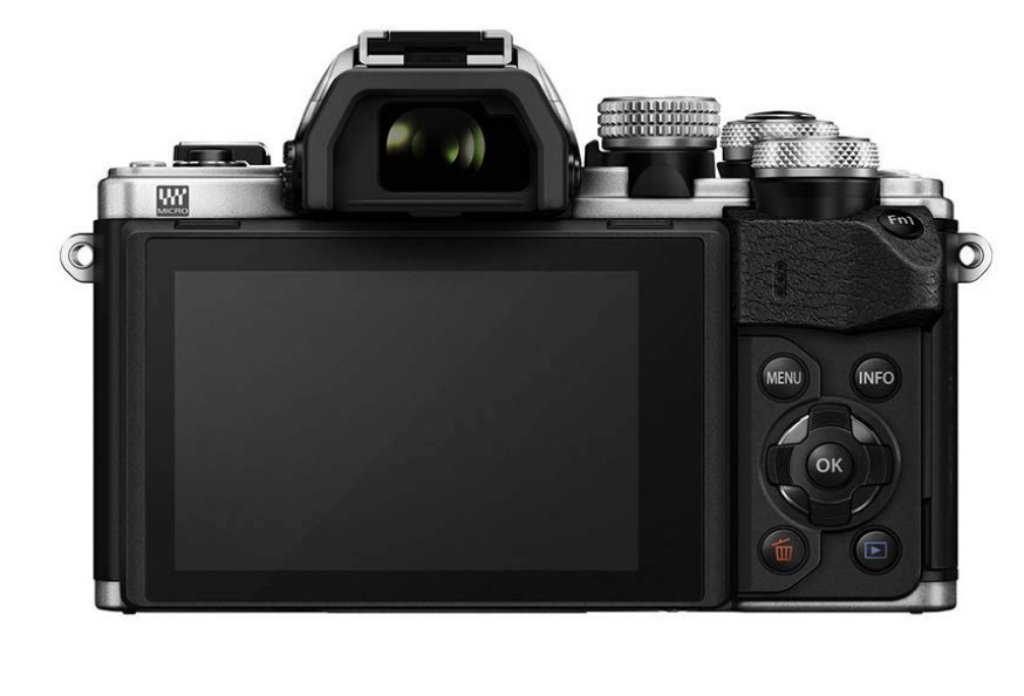
Olympus OM-D E-M10 Mark II Overview
2021 is the year of the retro, from obsessions with the fashion of the 90s to an obsession with polaroids, and the photography community definitely didn't miss out.
I love the way the Olympus OM-D E-M10 Mark II is a small throwback to the beginnings of photography. It's definitely the most aesthetically pleasing camera on our list.
Other than its looks, this Olympus also features a 3-inch tilt-angle screen with 1,040K dots. It can continuously shoot in 8.5fps and shoots full HD video. But, its image stabilization system is what really sets it apart.
It’s not often you find such inexpensive cameras with five-axis image stabilization, but this Olympus delivers. With that kind of stabilization, you can shoot handheld at slower shutter speeds with less worry of camera shake. It’s also handy for shooting video that appears to be much smoother.
Its sensor is a bit outdated and it doesn't shoot in 4K video, but what it lacks in these departments it makes up for with fast autofocus, easy handling, and smooth low light shooting.
You can purchase the Olympus OM-D E-M10 Mark II on Amazon for $499, or used on MPB starting from $269.
Sony a6000

If you are more of an intermediate photographer, then the Sony a6000 may be for you. I know this is technically a list of top beginner cameras, but sometimes it pays to purchase a camera that can grow with you, and that’s this Sony.
Sony a6000 Specs
- 24.3 megapixel APS-C CMOS sensor
- 11fps continuous shooting
- 3-inch tilting LCD screen
- Hybrid AF system
- WiFi connectivity
Sony a6000 Pros & Cons
- Pro: 25-point contrast detect Hybrid AF system
- Pro: Bionz X processor
- Pro: 11fps burst shooting
- Con: Screen isn’t touch-sensitive
- Con: No 4K video capabilities
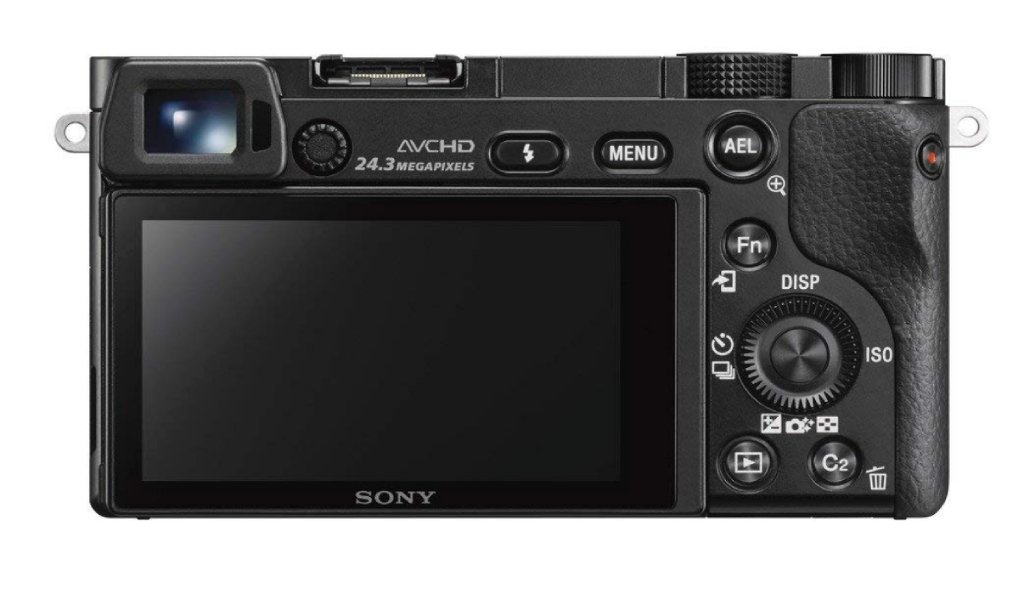
This Sony a6000 is the oldest camera on our top beginner cameras of 2021 list; it's been on the market since 2014, which is the only reason the price is so ridiculously low.
While it doesn't have some 2021 features, like 4K video and a touchscreen LCD, it makes up for it by featuring specs that were way ahead of its time, like a 24MP sensor and 179-point autofocus system.
This is also one of the best beginner cameras because it shoots at 11fps. Whether you're a sports photographer or nature photographer, this camera will work well as you photograph fast-moving subjects. Plus, it autofocuses in 0.06 seconds, so there’s that!
But, the best quality of the Sony a6000 is the Bionz X processor, which features three times the processing speed of earlier models and allows you to reduce blurry details and capture incredible textures.
You can grab the Sony a6000 for $650 on Amazon, or used on MPB from $289.
We Recommend
Top Cameras for Street Photography
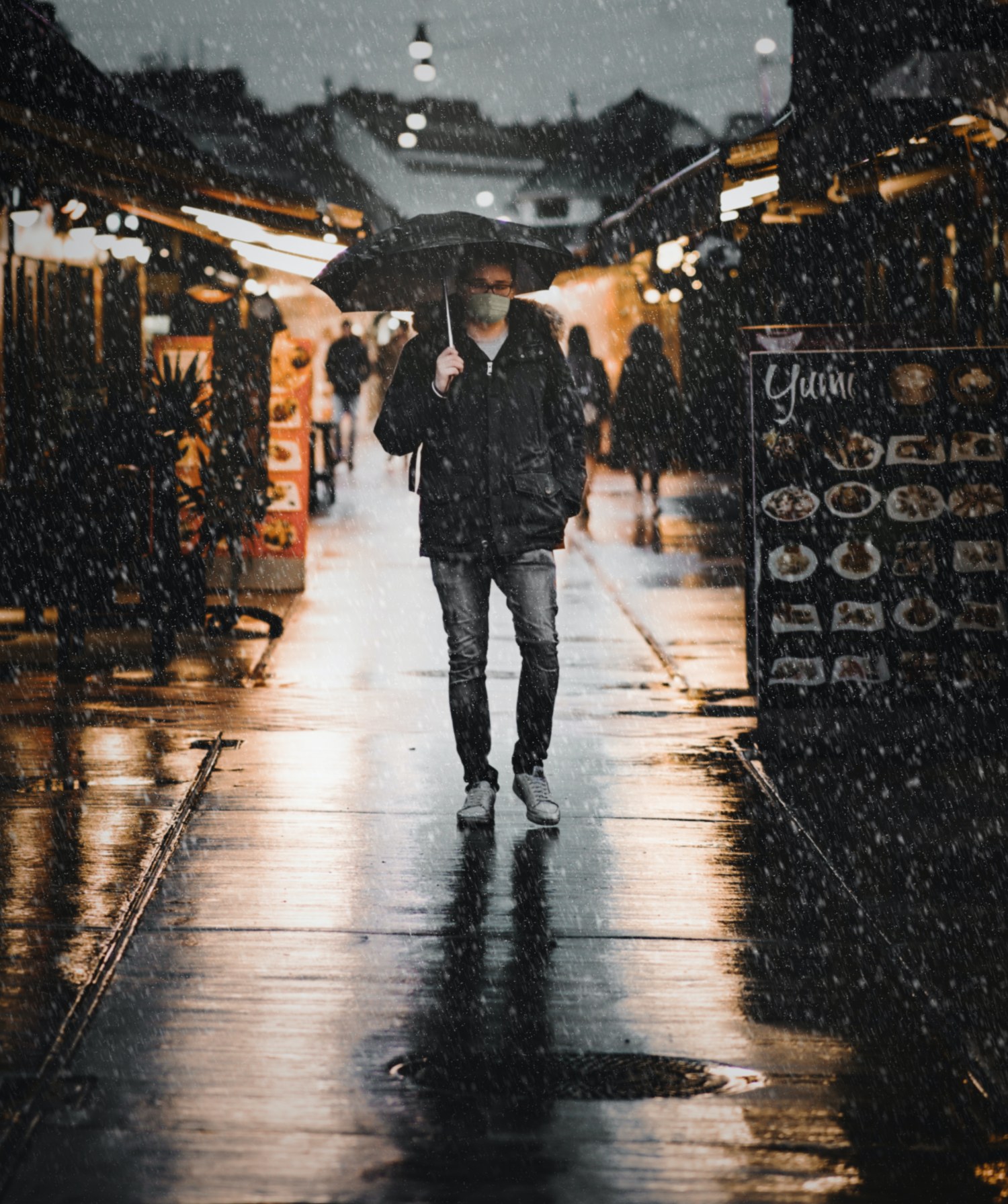
Photo by ???? ?????? on Unsplash
There have never before been so many cameras for street photography at such incredibly cheap prices as there have been this year. While you may think this means it will be really easy for you to pick a street photography camera, what it really means is that you will have an even harder time choosing one because there are so many options.
So, you need to know what to look for in a street photography camera. While many street photographers suggest purchasing a small camera, so as not to be especially noticeable, this is truly just the beginning of the street photography camera features you need.
You’ll want a fast autofocus mode and a fast burst mode, so you don’t miss any important moments. You’ll also want a camera that is lightweight so you don’t get exhausted carrying it around on your neck all day.
One thing that a lot of cameras for street photography don’t have, but should, is an intuitive menu. You don’t want to spend precious time flipping through a menu when you want to be snapping a picture.
In this list of our top cameras for street photography, every camera meets these expectations and more.
Fujifilm X-T3
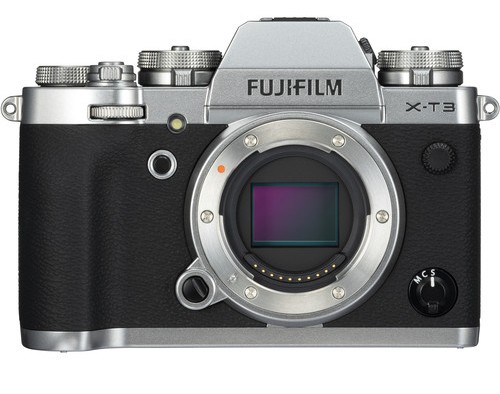
The Fujifilm X-T3 is one of our top cameras for street photography. It looks pretty retro, which lulls people into a sense of security when you whip it out to take photos. What I’m saying is, it definitely doesn’t look intimidating. It mostly just looks like the type of camera your grandpa used way back in the day.
Yet, its capabilities are far beyond any cameras your grandfather might have truly owned. It comes with a 26MP sensor, a 3.69m-dot electronic viewfinder and a large, 3.2” tilting LCD touchscreen.
Its touchscreen is one of the reasons why it's one of our top cameras for street photography. You can use the touchscreen to reposition the AF area even while you are looking into the EVF.
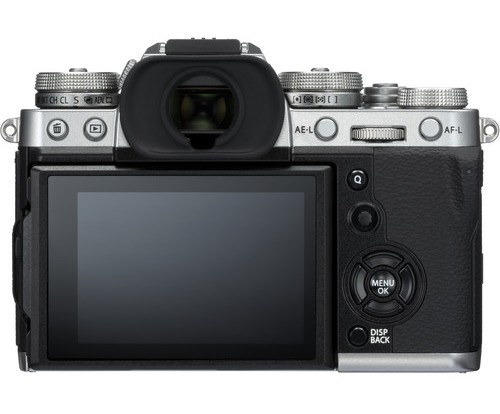
In terms of design, this camera may be a bit small for photographers with really large hands, since its grip isn’t especially pronounced.
But I’m definitely willing to overlook this relatively small problem because of all of the improvements Fujifilm made to this camera. For example, you can connect it to other smart devices via Bluetooth Low Energy support, Wi-Fi, or a USB-C connector.
This is also one of the better cameras for street photography because it comes with a slew of new options for videographers, like a headphone jack and microphone port, as well as two SD card slots.
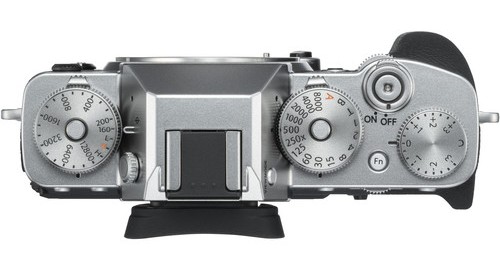
Whereas this camera cost nearly $2,000 when it first came out, its price has dropped considerably since then, especially if you opt to purchase it used.
MPB currently has quite a few of this body available for sale starting at $965.
Sony RX-100 VII
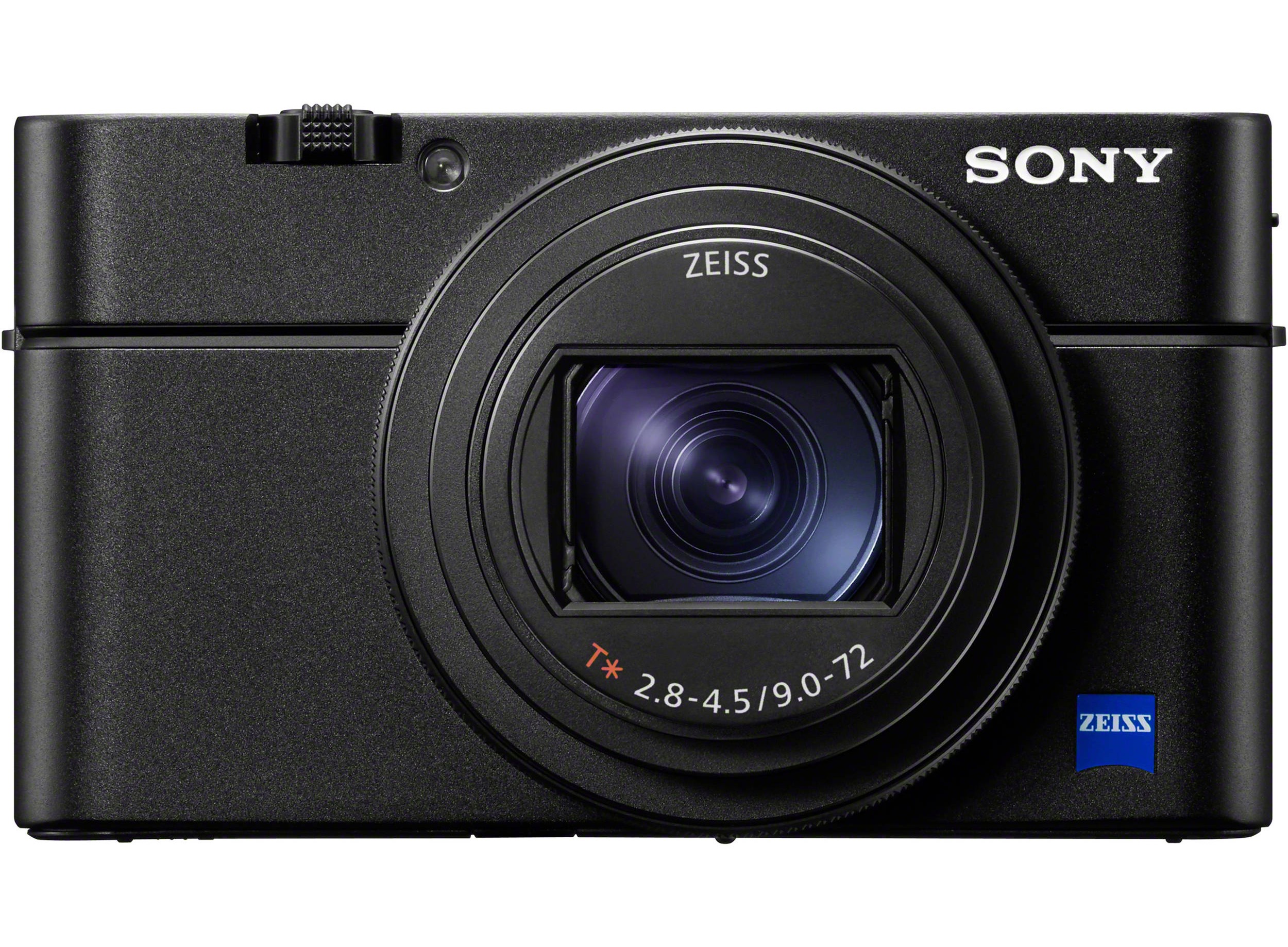
Another one of our favorite cameras for street photography is the Sony RX-100 VII.
The Sony RX-100 VII comes with a slew of great features, like 4K video, a 20fps burst mode, and a 20MP sensor.
The 24-200mm equivalent F.28-4.5 lens allows photographers to do a little wide-angle shooting, or even some telephoto shooting, which can be really helpful with your street shots.
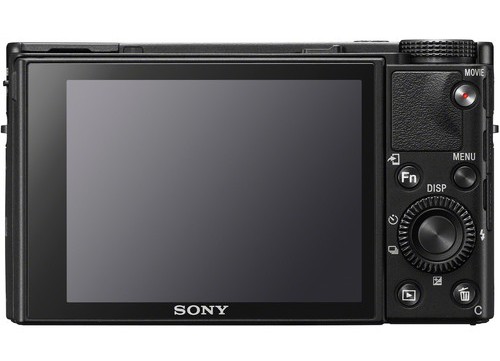
If you’re trying to track a certain subject down the road, this is one of the best cameras for street photography because it comes with a 357 phase-detection and 425 contrast-detection AF system.
It’s also small - really small. It weighs just .67 lbs and is no bigger than 4 inches across, which means you can easily carry it around with you all day without getting burnt out.
Its LCD screen is touch-sensitive and will fold 180-degrees up or 90-degrees down. If you tend to do a lot of vlogging when out on shoots, then you can ignore all of the rest of the cameras for street photography on this list because the Sony RX-100 VII is for you.
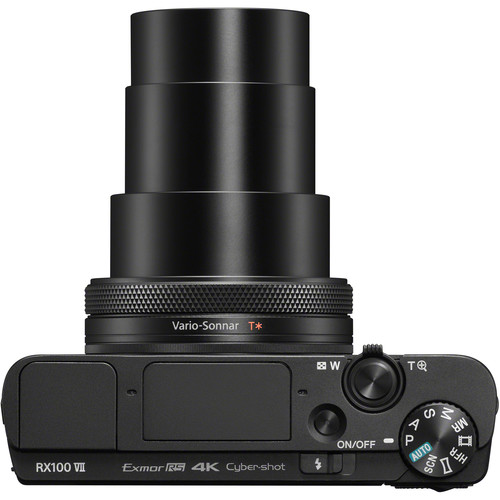
The only big downside to the camera is that, because it is so small, it doesn’t come with any weather protection, so you’re going to need to try to be extra careful to keep it protected.
While MPB doesn’t currently have any Sony RX-1OO VIIs for sale right now, they do have the younger brother, the Sony RX-100 VI for sale for $670.
Learn More:
Nikon Z50
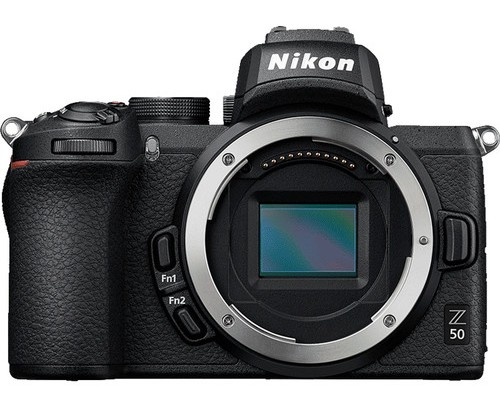
The Nikon Z50 is definitely one of the more popular cameras for street photography on this list.
It's a mirrorless camera that comes with 4K video, 11fps continuous shooting, and is one of the cheaper cameras on this list.
It comes with a 209-point AF system and does really well in low-light shooting because its native ISO range is 100-51,200.
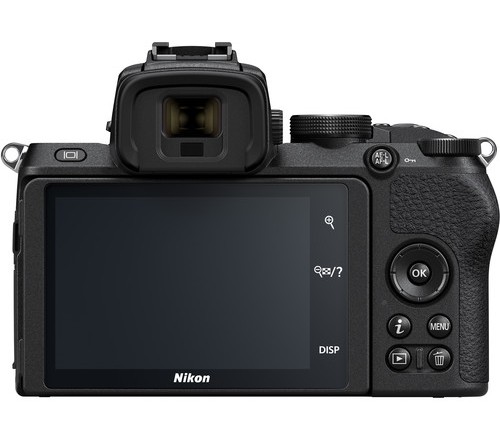
The LCD touchscreen can flip down 180-degrees, and the electronic viewfinder is incredibly clear because it comes with 2.36m-dots.
If you’ve ever shot with a Nikon Z7 before, then the transition to this camera will be quite seamless since it’s essentially a smaller version of that camera. It weighs just 15.7 oz.
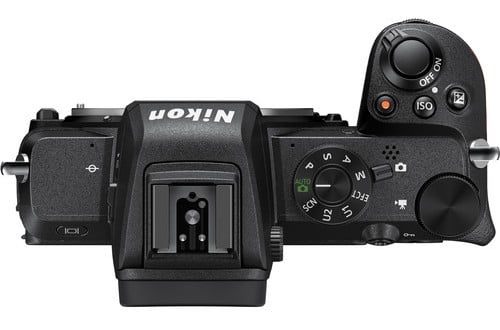
The Nikon Z50 starts at just $670, so it's a phenomenal street photography camera for enthusiast photographers who are just beginning to really explore this niche of photography.
Panasonic LX-100 II
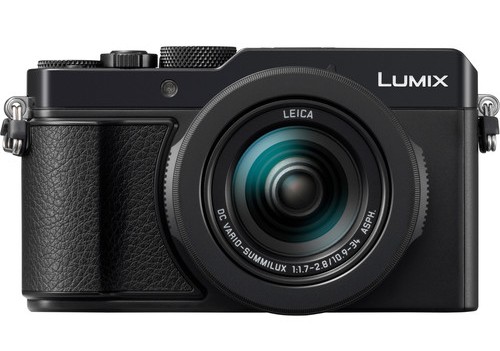
The Panasonic LX-100 II is a really popular travel photography camera, but I think a lot of the features that make it so also translate really well to street photography.
It comes with a 17MP Micro Four Thirds sensor, 4K video capabilities, and a 3” touchscreen LCD. It offers a slightly less impressive burst mode than some of the other cameras for street photography on this list at just 5.5fps, but it makes up for it in price.
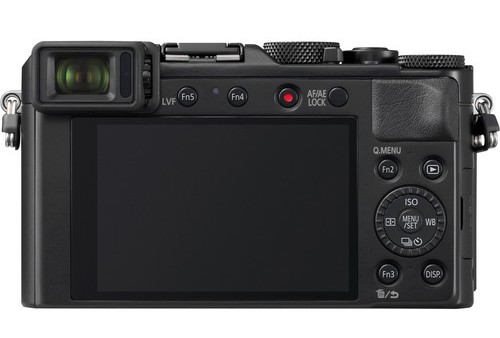
The Panasonic LX-100 II is also one of the cheapest cameras for street photography. You can pick one up on MPB for as little as $620.
Learn More:
We Recommend
Top DSLRs for 2021
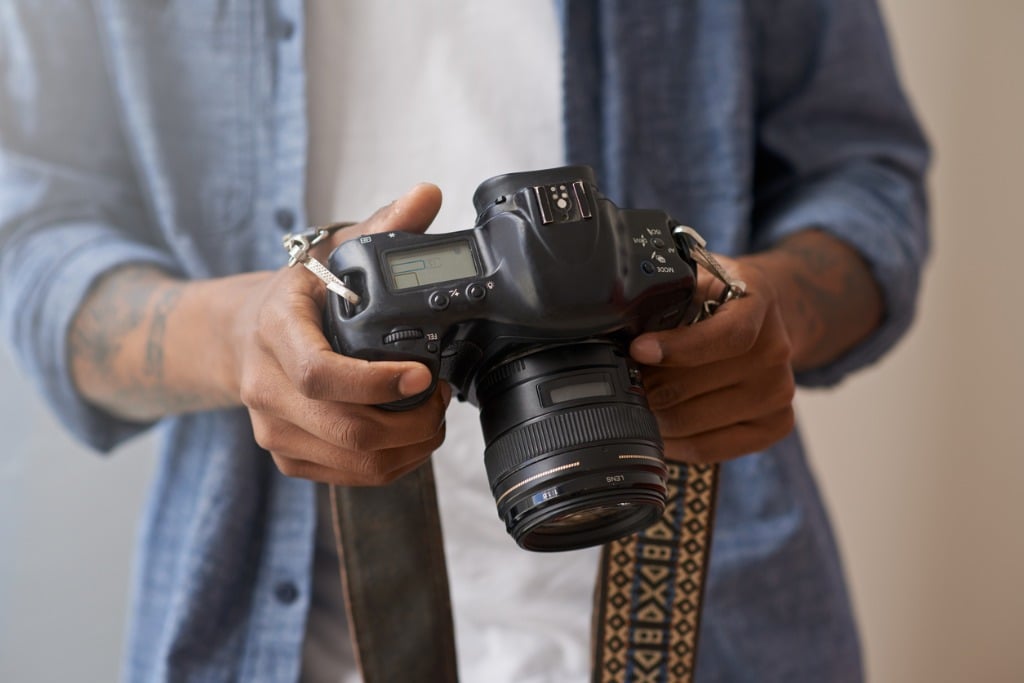
photo byjeffbergen via iStock
Now that we are about a third of the way through 2021, and it appears that there won’t be very many new DSLRs dropping this year given the pandemic, we figured we should do a top DSLRs of 2021 list.
Now, keep in mind that these aren’t the best DSLRs or 2021. We called this article the “top DSLRs or 2021” for a reason. We got these stats from Amazon.
So, these are some of the best selling DSLRs so far this year on Amazon. I think you may be surprised to find out what they are.
Editor's Note: If money is tight and you need to upgrade your camera, consider buying used. We've included links to MPB, one of the largest used photography gear sites, so you can source cameras at lower costs. MPB is continuing to operate as normal and has put measures in place to ensure the wellbeing of its staff and customers, so you can buy with confidence. Learn more here.
Nikon D3500
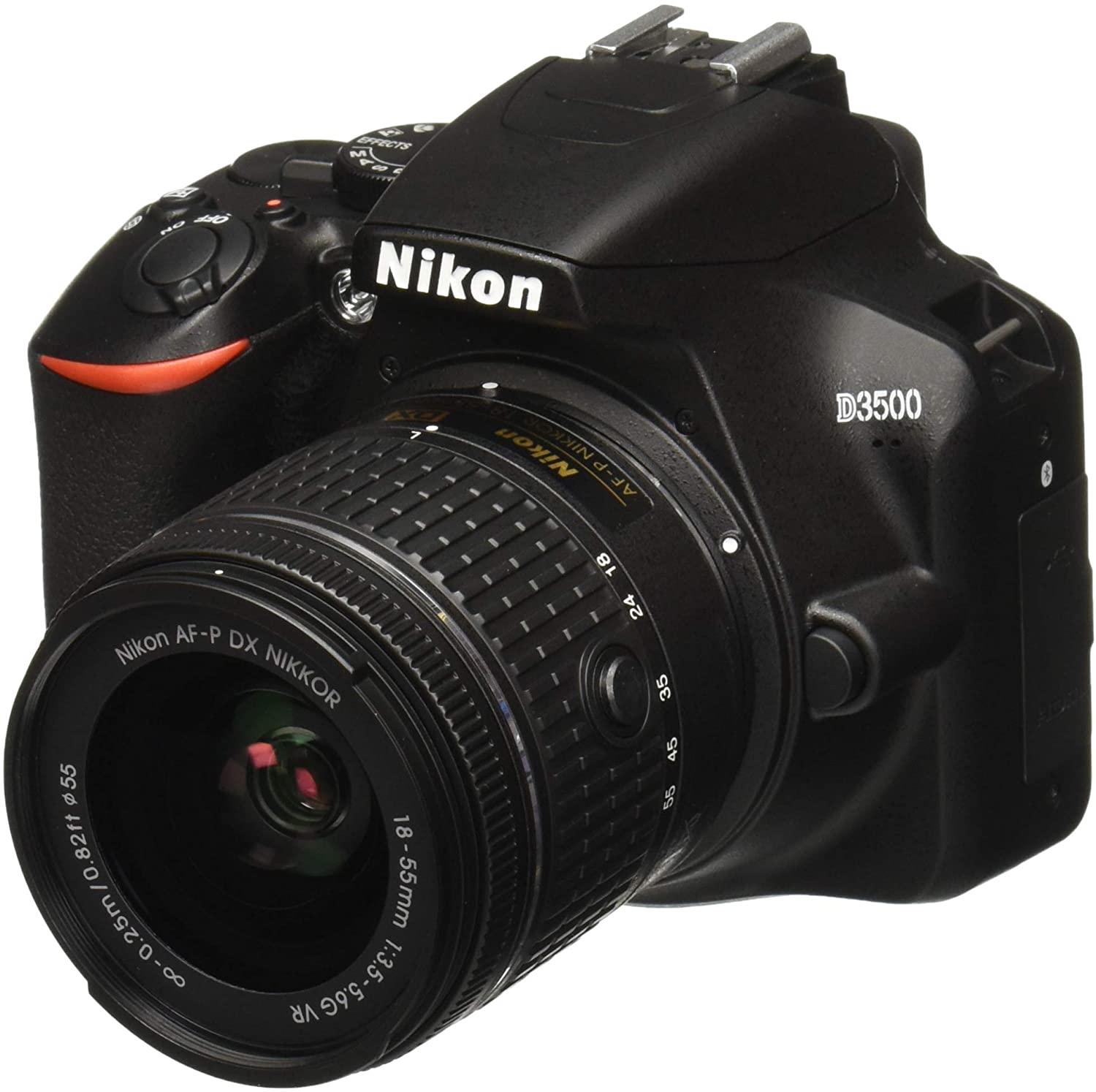
First up: an oldie, but a goodie. The Nikon D3500 dropped in late 2018 and as such it is finally a reasonable price.
This is the number one best selling DSLR camera on Amazon right now and for good reason. The Nikon D3500 features a 24.2MP sensor, an EXPEED 4 processor, and an ISO range of 100 to 25,600, making it easily the best low-light shooter in its price range.
Other Nikon D3500 Specs:
- 24.2MP sensor
- 11-point AF system
- ISO range of 100-25,600
- Full HD video
- 3” fixed LCD screen
- 5fps burst mode
- 95% viewfinder coverage
Personally, I’m a little shocked this is one of the top DSLRs of 2021, just because you don’t get built-in Wi-Fi or 4K video capabilities with this Nikon.
However, I do understand that it is the best DSLR camera for beginners and its price tag showcases that.
Canon Rebel T7
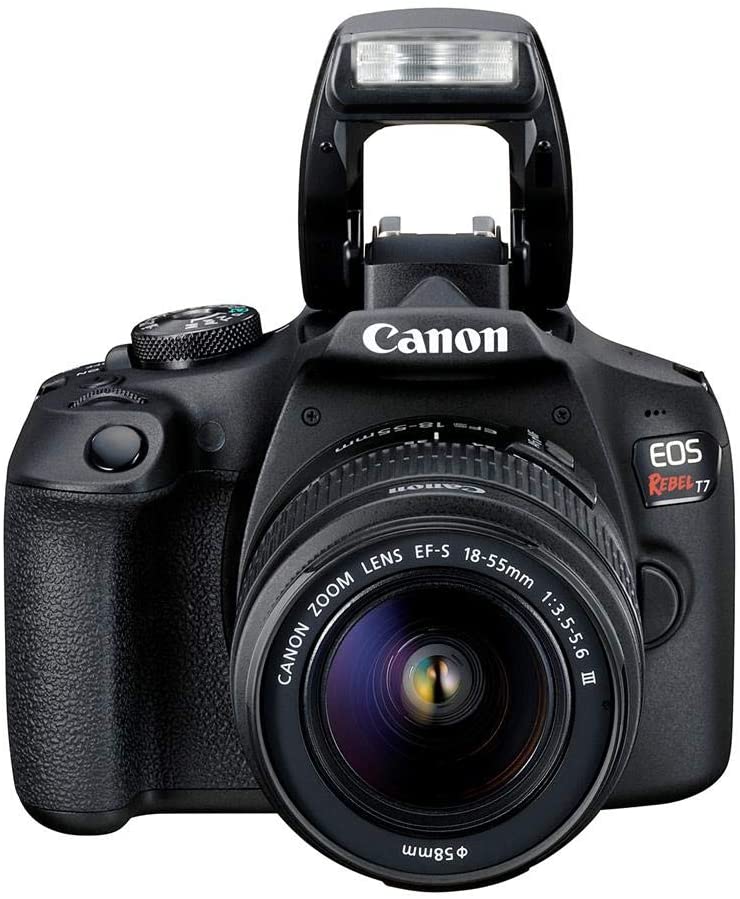
This is the first, but not last, Canon Rebel to make the top DSLRs of 2021 list.
The Canon Rebel T7 also came out in 2018 is pretty comparable to the Nikon D3500.
The Canon Rebel T7 was named the best DSLR camera for beginners when it dropped and this fact remains accurate to this date. Importantly, it is easy to use and the controls make sense to someone who has never shot with a DSLR before.
My favorite feature of this camera is the battery life (600 shots). It’s otherwise a pretty typical best selling DSLR camera. It features a 24.1MP sensor, a 3” LCD screen, and Full HD video capabilities.
Other Canon Rebel T7 Specs:
- 24.1MP sensor
- DIGIC 4+ processor
- 3” LCD screen
- Full HD video capabilities
- ISO range of 100-6,400
- 3fps burst mode
- 95% viewfinder coverage
- Built-in Wi-Fi
Editor's Note: Are you feeling a little uninspired with your photography? Check out MPB's weekly #mpbthrowback Instagram giveaway! MPB wants you to share a photo you took in the past, explain where it was, what gear you were using, and use the hashtag above to share it with MPB and others. A lot of folks (myself included!) have been reminiscing lately about photography adventures, and sharing those adventures is a great way to keep yourself and others inspired. Speaking of which, check out this incredible photo that was shared as part of the contest!
Canon Rebel T6
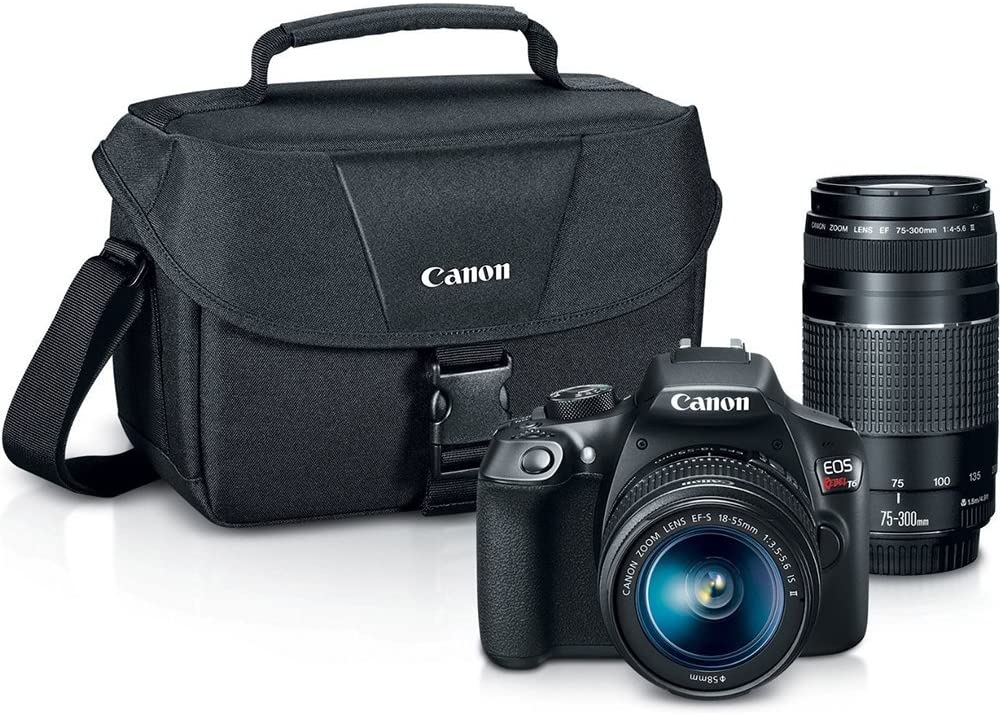
I’m not surprised that more than one Canon Rebel made this top DSLRs of 2021 list, but I am shocked two of them made the first top three.
The Canon Rebel T6 is a bit older than the T7 as it came out in 2016. The core of these best selling DSLRs are very similar. They both feature 3” fixed LCD screens; they both shoot 3fps in burst mode; they both feature the same battery life.
There are a few specific differences, though, like the fact that the T6 works better in low light and features a 17.9MP sensor, as opposed to the T7’s 24MP sensor.
Other Canon Rebel T6 Specs:
- 17.9MP sensor
- DIGIC 4+ processor
- ISO range of 100-6400
- 95% viewfinder coverage
- 3” fixed LCD screen
- 600-shot battery life
Nikon D5600
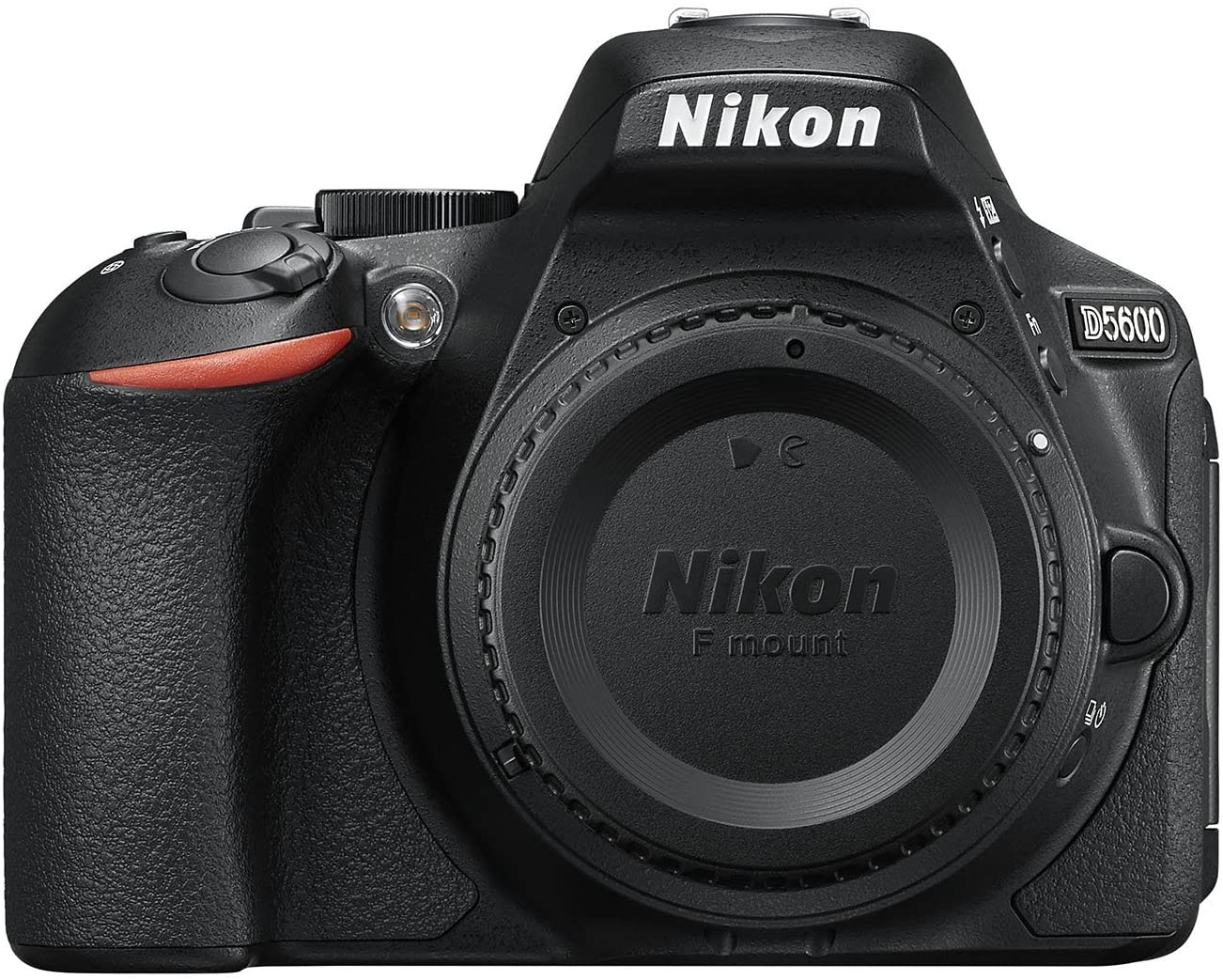
The Nikon D5600 is one of the best selling DSLRs on Amazon because it’s powerful while still being user-friendly. It’s slightly larger vari-angle screen at 3.2”, paired with its 39-point AF system and built-in Wi-Fi means even beginning photographers will love this camera.
Other Nikon D5600 Specs:
- 24.2MP sensor
- 3.2” vari-angle touchscreen
- 5fps burst mode
- 39-point AF system
- Built-in Wi-Fi
- ISO range of 100-25,600
- Full HD video capabilities
- 820-shot battery life
Panasonic Lumix FZ80
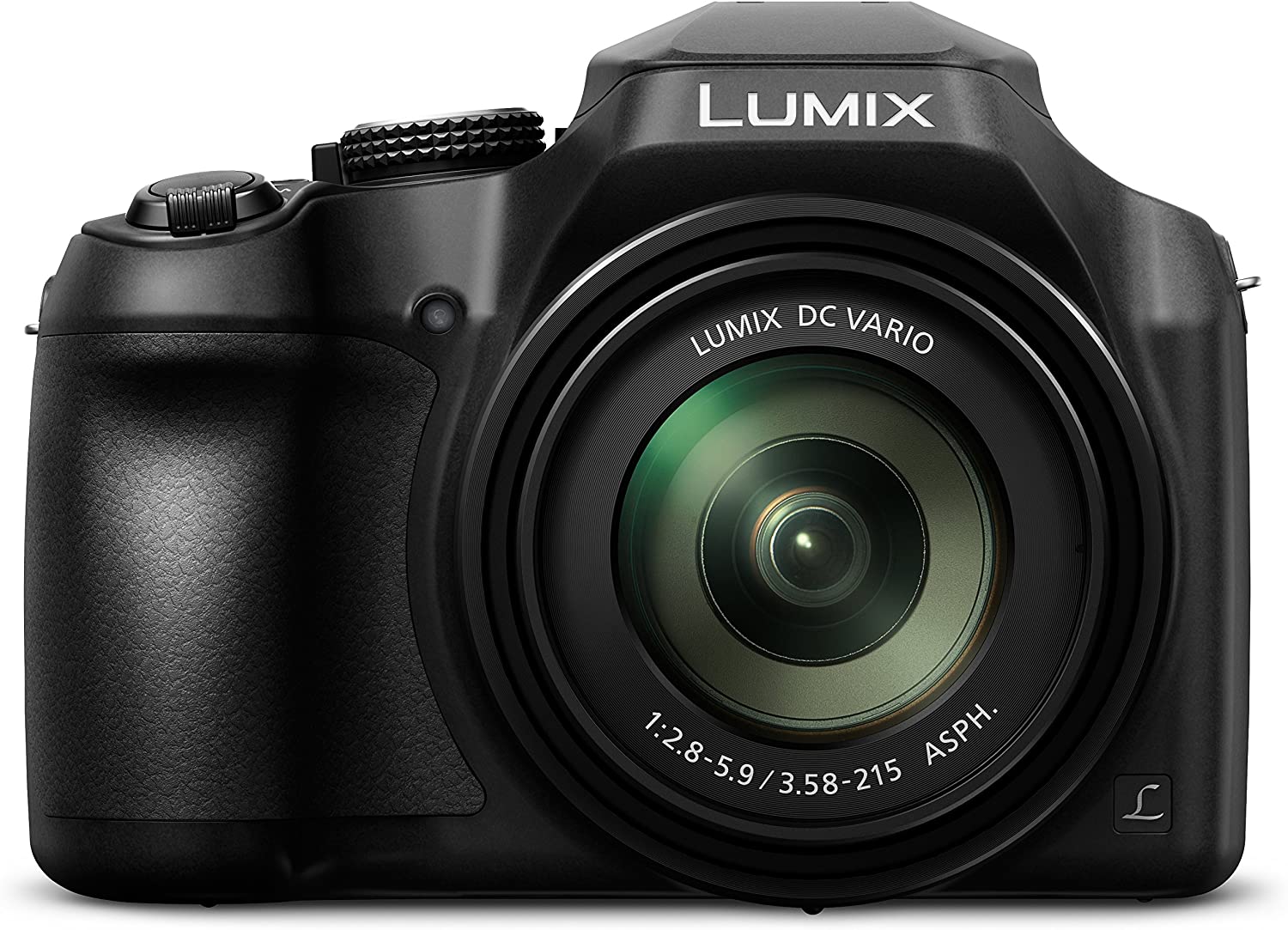
If I’m being honest, this camera is one of the most shocking best selling DSLRs on Amazon for me because it’s rather old (it came out in 2015) and, more importantly, it’s a point-and-shoot, not a true DSLR. It has a built-in 60x zoom lens.
The Panasonic Lumix FZ80 is also the first camera on our top DSLRs of 2021 list that features 4K video capabilities, which is great for videographers.
This camera also features image stabilization for people who are shooting on the go.
Other Panasonic Lumix FZ80 Specs:
- 18.1MP sensor
- 10fps burst mode
- 60x zoom
- In-camera image stabilization
- 3” touchscreen
- 4K video capabilities
- ISO range of 80-6,400
- Built-in Wi-Fi
Learn More:
Canon Rebel T7i
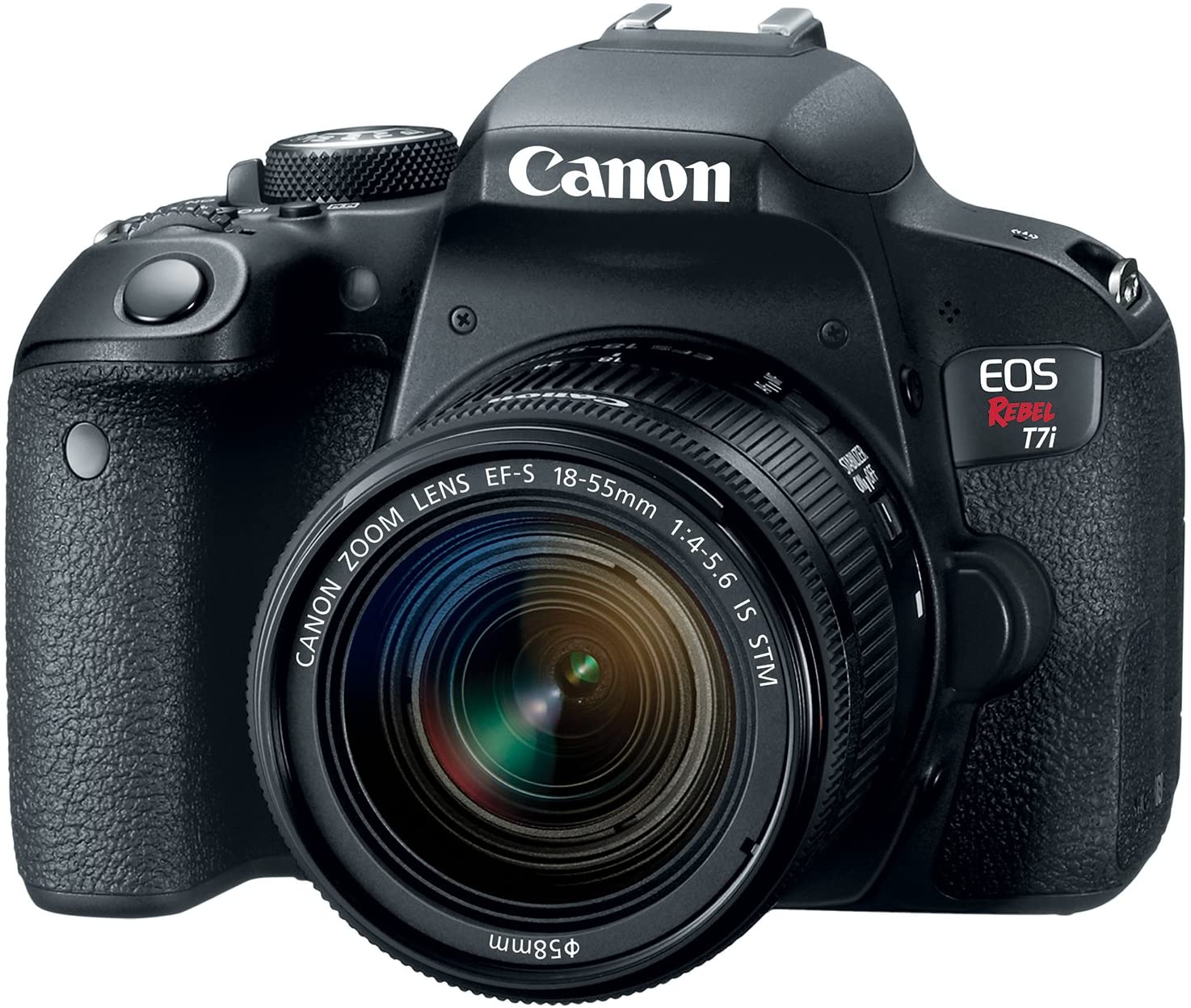
It is by now clear to me that the Canon Rebel is the best selling DSLR camera, considering this is the third version on our top DSLRs of 2021 list.
The Canon Rebel T7i features the same Rebel user-friendly controls, good image quality, and basic video capabilities.
But, it features an impressive touchscreen and better AF performance.
Other Canon Rebel T7i Specs:
- 24.2MP sensor
- DIGIC 7 processor
- ISO range of 100-25,600
- 6fps burst mode
- Full HD video capabilities
- 3” touchscreen
- Built-in Wi-Fi
Canon EOS 90D
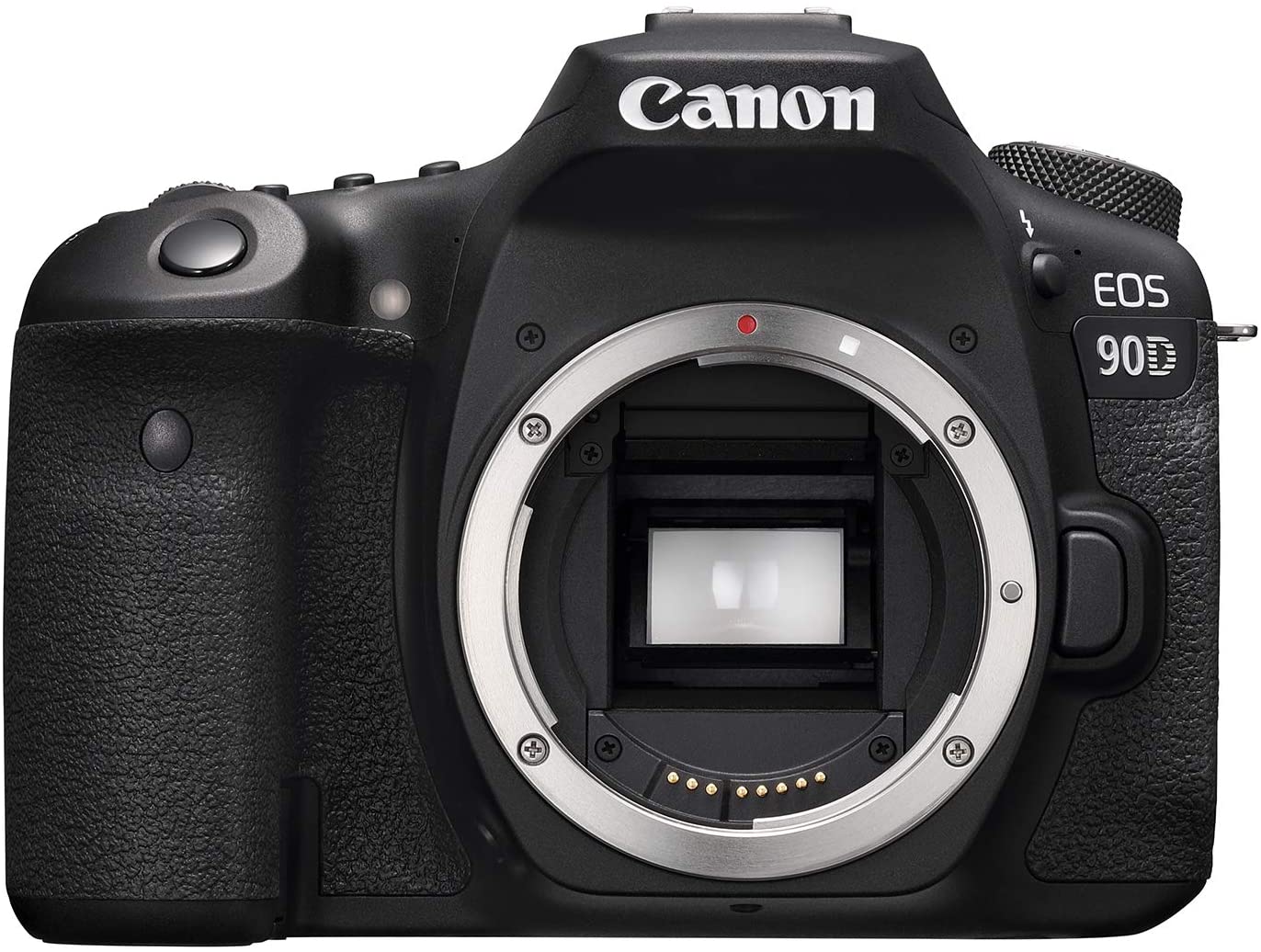
The Canon EOS 90D is one of the more expensive top DSLRs of 2021 because it is new (it dropped late last year), it features a new processor and impressive sensor, and it shoots 4K video.
If you’re looking for the best DSLRs of 2021 for travel, you may want to think about this Canon because it also has built-in Wi-Fi, built-in Bluetooth, and a battery that lasts 1,300 shots.
Other Canon EOS 90D Specs:
- 32.5MP sensor
- DIGIC 8 processor
- ISO range of 100-25,600
- 4K video capabilities
- 3” vari-angle touchscreen
- 11fps burst mode
- Built-in Wi-Fi
- 1,300-shot battery life
Canon Rebel SL3
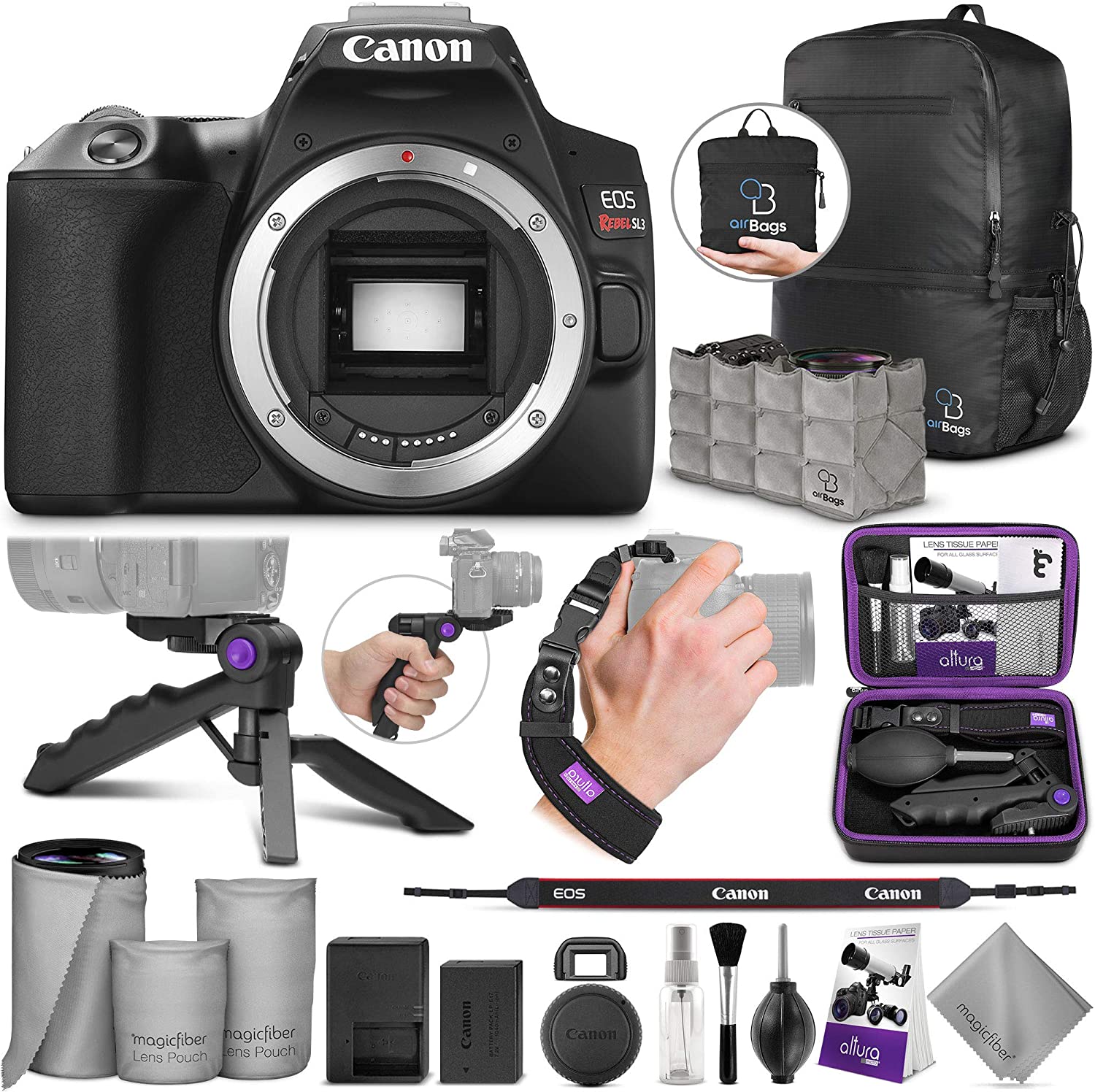
I’m sure nobody is surprised that yet another Canon Rebel made our top DSLRs of 2021 list. Meet the Canon Rebel SL3.
The Canon Rebel SL3 was released last year. It was marketed as Canon’s best DSLR camera for beginners, but still features some impressive specs, like 100% viewfinder coverage, an incredibly responsive vari-angle touchscreen, and a 1,550-shot battery life.
Other Canon Rebel SL3 Specs Include:
- 24MP sensor
- DIGIC 8 processor
- ISO range of 100-25,600
- 4K video capabilities
- Vari-angle touchscreen
- “Guide” mode for beginners
- Built-in Wi-Fi
- 1,550-shot battery life
Nikon D850
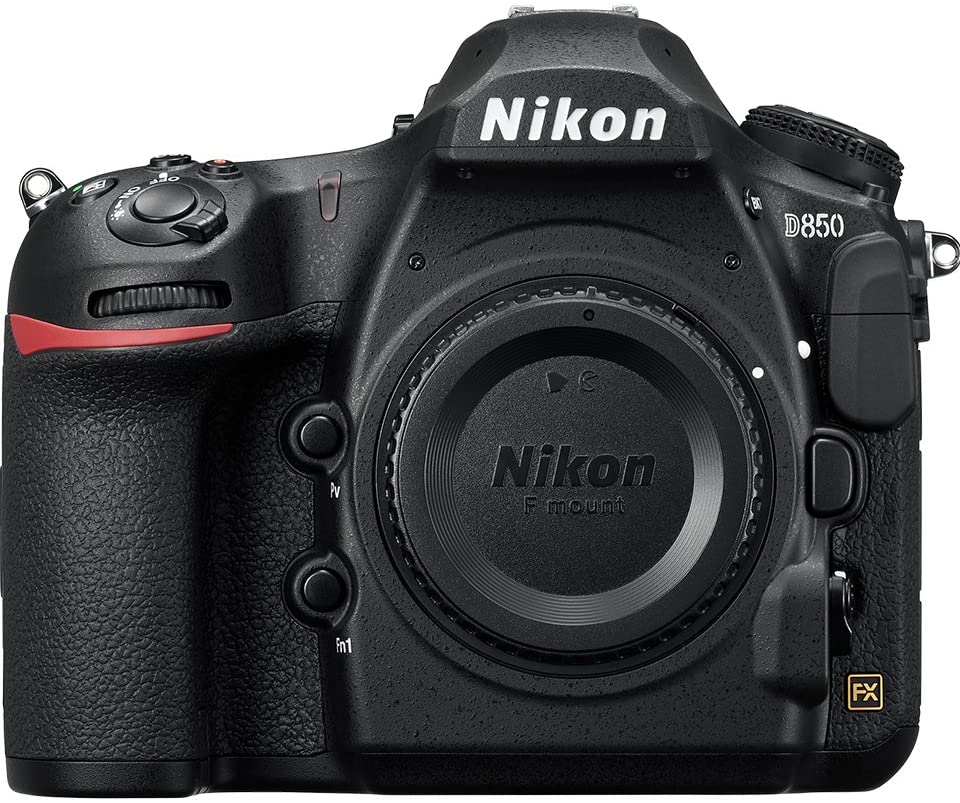
The final camera on our top DSLRs of 2021 list is the Nikon D850.
The Nikon D850 is not the best DSLR camera for beginners, since it is rather advanced (and expensive). For instance, it features a 45.7MP sensor and 153-point AF system, neither of which a beginner would need.
Other Nikon D850 Specs Include:
- 45.7MP sensor
- 4K video capabilities
- 4K and 8K time-lapse capabilities
- 120fps slow-motion
- Built-in Wi-Fi
- 7fps burst mode
- ISO range of 64-25,600
- Built-in Bluetooth
We Recommend
Top Lenses for Panasonic GH5
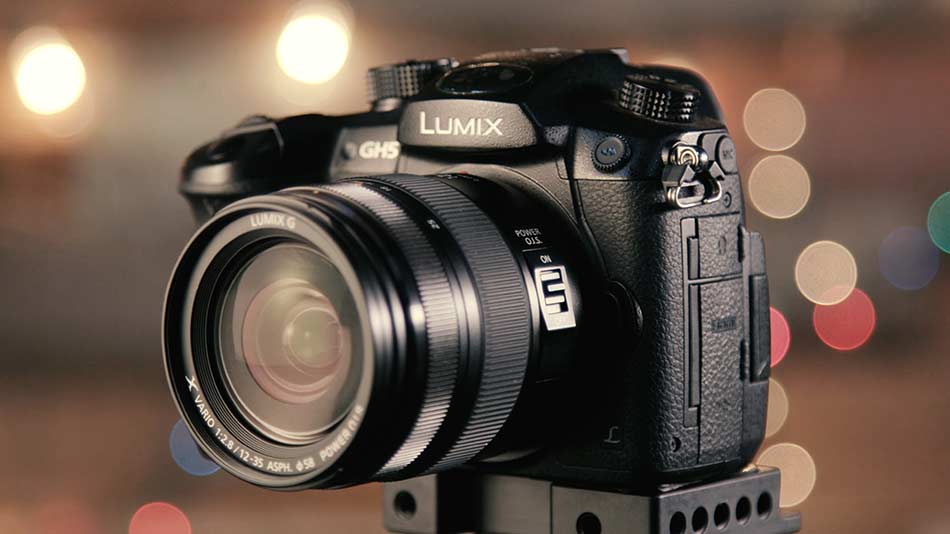
Photo by ShareGrid on Unsplash
If you follow my exploits here on PhotographyTalk, you know that I recently picked up a Panasonic GH5 - and that I’ve been blown away by the quality of this thing.
I go into detail about the specs, features, price, and more of this camera in my Panasonic GH5 review. And in the video below, I give a quick overview of the good, the bad, and the ugly of this camera:
But what I want to discuss here is a few of the best lenses you can buy for this camera.
Whether you’re a landscape photographer or portrait photographer, a budding videographer or a professional video-maker, there are plenty of top lenses for Panasonic GH5 from which you can choose.
Here are just a few lens options to consider for your GH5.
Best Prime Lens for Panasonic GH5: Panasonic Lumix G Leica DG Summilux 15mm f/1.7 ASPH Lens
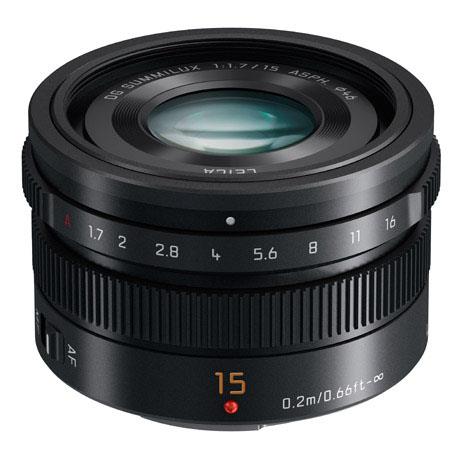
With an effective focal length of 30mm, the Panasonic 15mm f/1.7 paired with a GH5 is an ideal combination for everyday shooting situations.
The 30mm effective focal length is wide enough to capture sweeping landscapes while the f/1.7 aperture is ideal for creating deliciously blurry backgrounds for portraits without too much distortion.
This is also a great lens for shooting 4K video, I might add. See what I mean in the video below by Craig Beckta:
Speaking of distortion, the three aspherical elements in this lens help minimize spherical aberration and distortion. Paired with Panasonic’s excellent Nano Surface Coating, which minimizes reflections, ghosting, and flare, you have a recipe for a lens that offers superb clarity and sharpness.
Best feature: Beautifully crisp and clean image quality
Worst feature: Occasionally hunts for focus
Price: $547.99 at Adorama
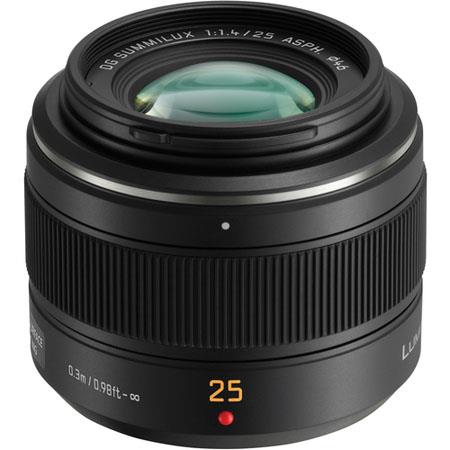
Best alternative prime lens: If the 30mm effective focal length of the 17mm f/1.7 lens is a bit too wide, you might consider the Panasonic Lumix G Leica DG Summilux 25mm f/1.4 Aspherical Lens. With an effective focal length of about 50mm, this lens offers a standard rather than a wide-angle view. The huge f/1.4 aperture gives you plenty of leeway for low-light shooting and gorgeously soft backgrounds, while the 50mm effective focal length makes it an ideal candidate for a “daily driver” or general purpose lens.
Learn More:
- Sony a7R III vs Panasonic GH5
- Compact Camera Comparison: Canon PowerShot G9 X Mark III vs Panasonic DMC-LX100
Best Zoom Lens for Panasonic GH5: Panasonic Lumix G X Vario 12-35mm F/2.8 II Aspherical Power O.I.S. Lens
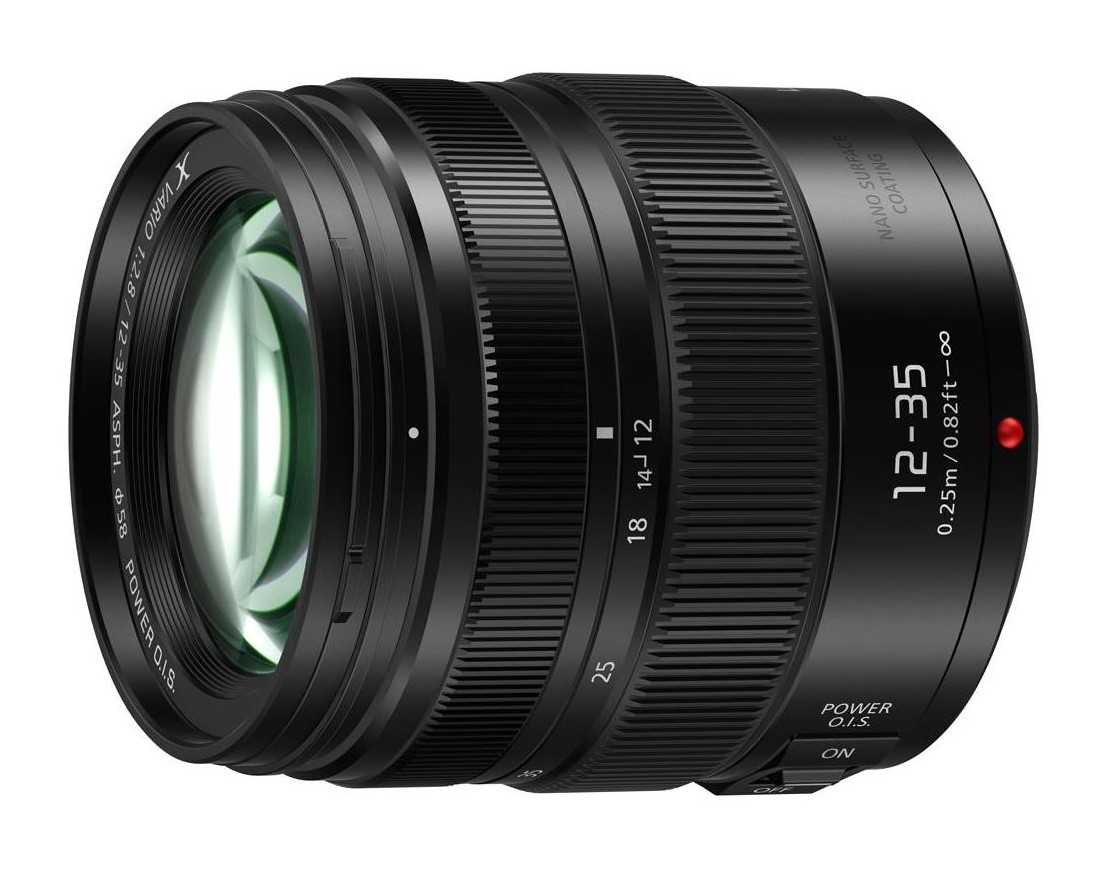
If it’s a zoom lens you’re after for your GH5, an excellent wide-angle zoom option is the Panasonic Lumix G X Vario 12-35mm f/2.8 II.
With an effective focal length of 24-70mm, this lens is ideal for photographers that shoot both landscapes and portraits, though it certainly isn’t limited to just those two pursuits.
Instead, this makes a great travel photography lens with a wide-angle to short telephoto range that gives you tremendous versatility. Learn more about the virtues of this lens in the video below by 9to5Toys.
The large f/2.8 aperture enables you to shoot indoors and in low-light situations with confidence while the splashproof and dustproof design gives you peace of mind when shooting outdoors in the elements.
The optical performance of this lens is superb as well, and with 5-axis image stabilization built-in, you get enhanced stabilization when paired with the GH5’s in-body image stabilization. In other words, this is a perfect camera for running and gunning and shooting handheld!
Best feature: Dual image stabilization makes this pairing a handheld beast
Worst feature: Pricey
Price: $797.99 at Adorama
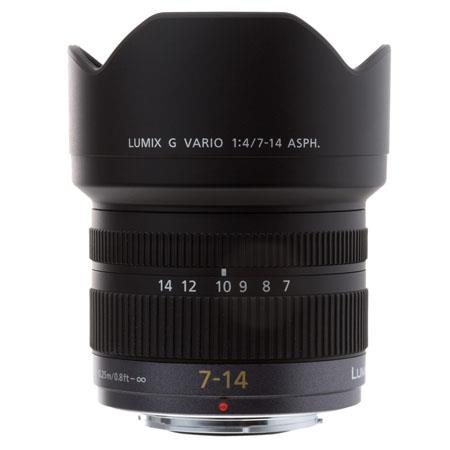
Best alternative zoom lens: If you’re after a wide-angle zoom lens for landscape photography, the Panasonic Lumix G Vario 7-14mm f/4 Zoom Lens should be at the top of your list. The 14-28mm effective focal length allows you to capture lots of details while the construction of the lens ensures sharpness from corner to corner. Though it isn’t as fast as the 12-35mm f/2.8, the constant f/4 aperture is plenty bright for most outdoor shooting situations. If, on the other hand, you need more reach, the Panasonic Lumix G Vario 100-300mm f/4.0-5.6 II Power O.I.S. Zoom Lens is a solid choice and is about $250 cheaper, too.
Best All-in-One Lens for Panasonic GH5: Olympus M. Zuiko Digital ED 12-100mm f/4 IS PRO
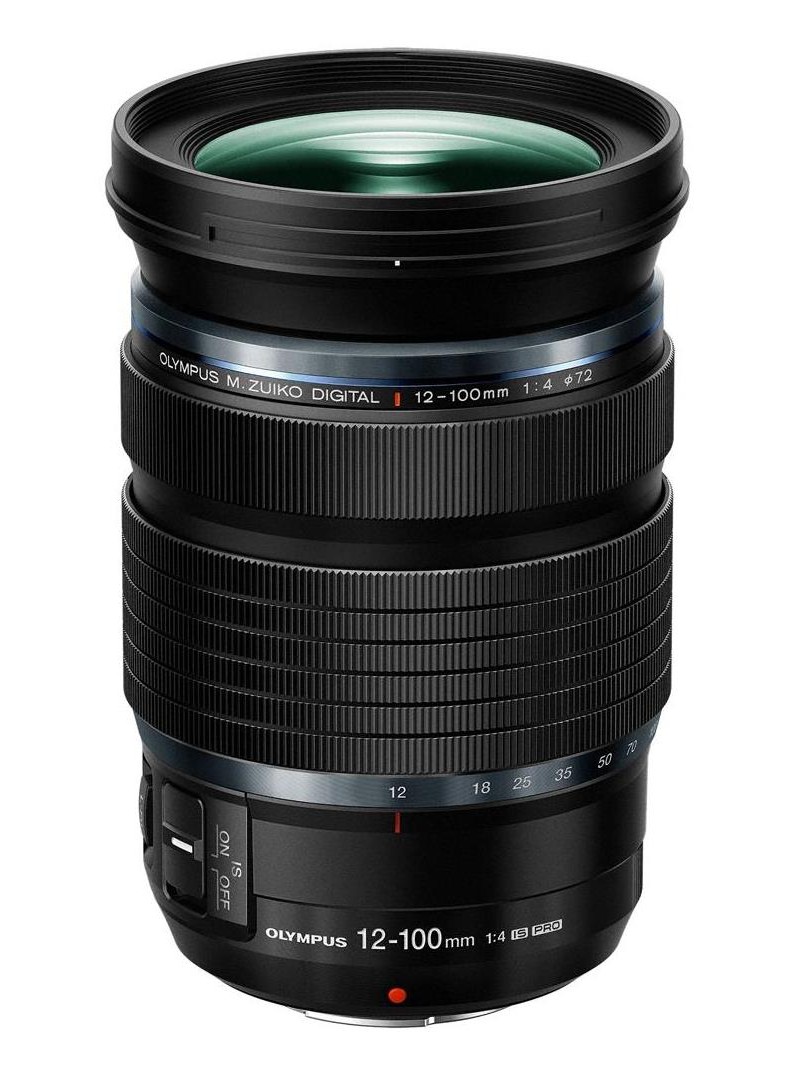
If you look up “versatility” in the dictionary, there should be a photo of this lens.
With an effective focal range of 24-200mm, you can photograph virtually any type of subject with your GH5 without ever having to do a single lens change. From close-up portraits to wide-angle shots of landscapes to macro images of insects, this is the lens you want in your bag if you shoot with a GH5.
Since it’s a PRO lens, it is built like a tank with weatherproof construction and features superior optics for top-notch performance. See this lens in action in the video below by Heng It Up Photography:
With 5-Axis Sync Image Stabilization, you can shoot handheld and do so with confidence that camera shake won’t be an issue. With ultra-fast autofocusing, a lightweight design, and a customizable lens function button on the barrel, this lens has everything you need (and nothing you don’t) to get high-quality shots.
Best feature: Best-in-class image stabilization
Worst feature: On the heavy side at 1.23 pounds
Price: $1,199 at Adorama
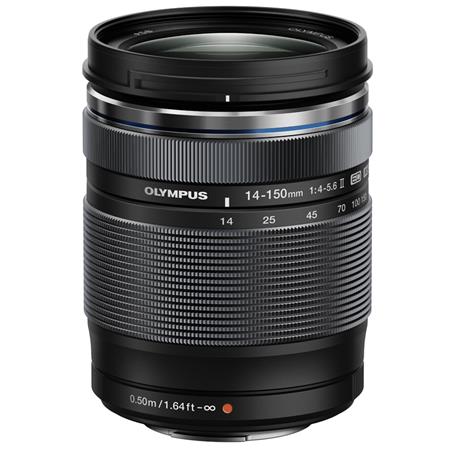
Best alternative lens: If the price tag for the 12-100mm lens is too steep, you might consider the Olympus 14-150mm f/4-5.6 II lens. Though you don’t get the constant f/4 aperture and PRO build, this lens is splashproof and dustproof, light and compact, and offers even more reach (28-300mm effective focal length). That’s not bad for a lens that’s half the price at $599!
Learn More:
- These Bargain Mirrorless Cameras Will Have You Ditching Your Old DSLR
- Best Still Cameras for Dynamic Range
Best Video Lens for Panasonic GH5: Panasonic Lumix G Leica DG Summilux 12mm f/1.4 ASPH Lens
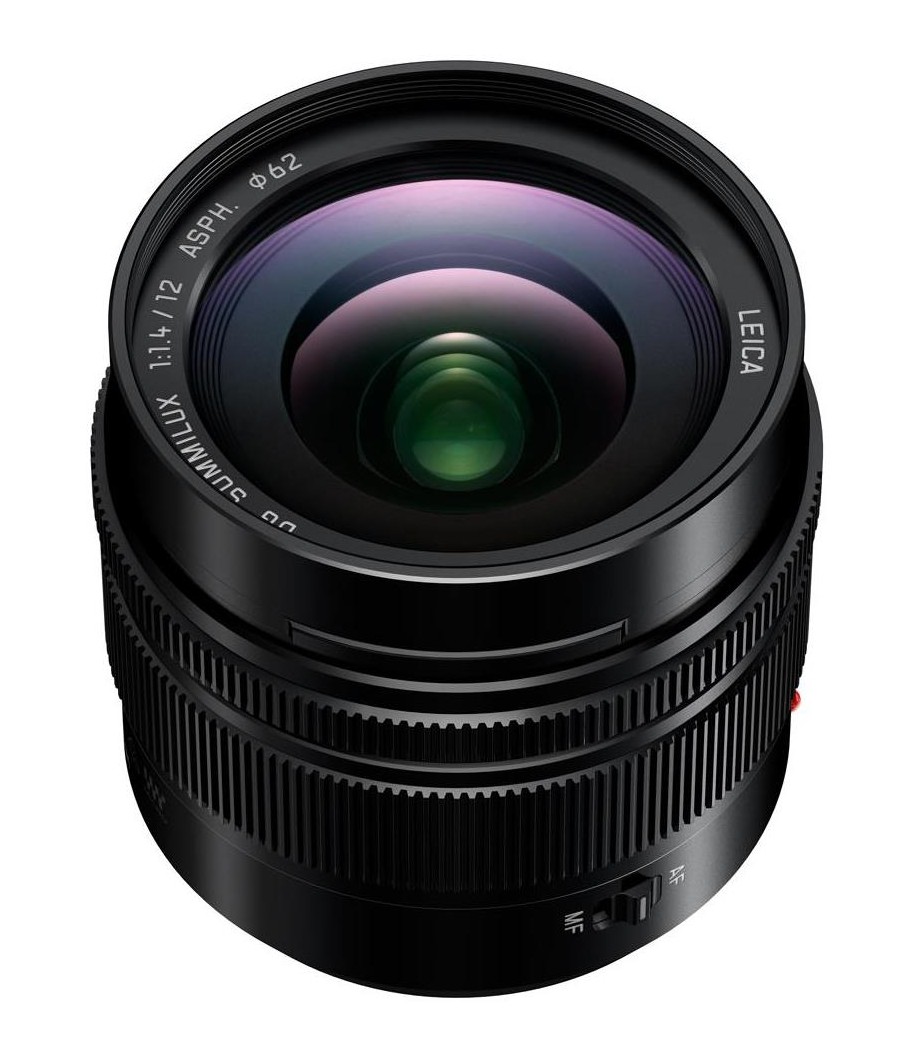
This lens is built to the highest standards, so it offers you incredible versatility and durability for shooting video in all kinds of conditions.
Videos shot with this lens are clear, crisp, contrasty, and dynamic - just what you want when creating video footage. It helps that it’s a small, lightweight lens with a small form factor, so you don’t feel like you’re lugging around a big, heavy lens as you shoot.
Better still, this lens is optimized for shooting 4K video. It gives you buttery smooth aperture changes to eliminate exposure jumps and its silent motor means you get clear crisp audio of your subject, and not the lens. Get more details on why this is an ideal lens for video in the video above by Brett Currie.
Focusing with this lens is picture-perfect, with an incredibly accurate autofocus system that gives you precise control over focusing to capture the footage you need.
Best feature: Outstanding optical quality
Worst feature: Images can be slightly soft around the edges
Price: $997.99 at Adorama
Best alternative video lens: Truth be told, I’d put the aforementioned 12-35mm f/2.8 II on the list of must-have GH5 lenses for video. That lens is a superb piece of kit that can go anywhere and do anything!
We Recommend
Top Mirrorless Cameras for 2021
1
Photo by ISO Republic on Unsplash
2021 is the year of the mirrorless. While DSLRs aren’t completely useless (yet), I definitely think the future of photography lies in mirrorless cameras.
If you’re looking for the top mirrorless cameras of 2021, look no further.
This list features all of the best selling mirrorless cameras on Amazon, which means it features a crazy wide array of different mirrorless cameras.
Editor’s note: If you want to upgrade your kit with a mirrorless camera but don’t want to pay new prices, check out the “Buy Used” links throughout this article. These links take you to MPB, one of the largest used gear sites in the world. I’ve bought, sold, and traded-in gear on MPB many times and have had an excellent experience from start to finish every time!
Panasonic Lumix G7
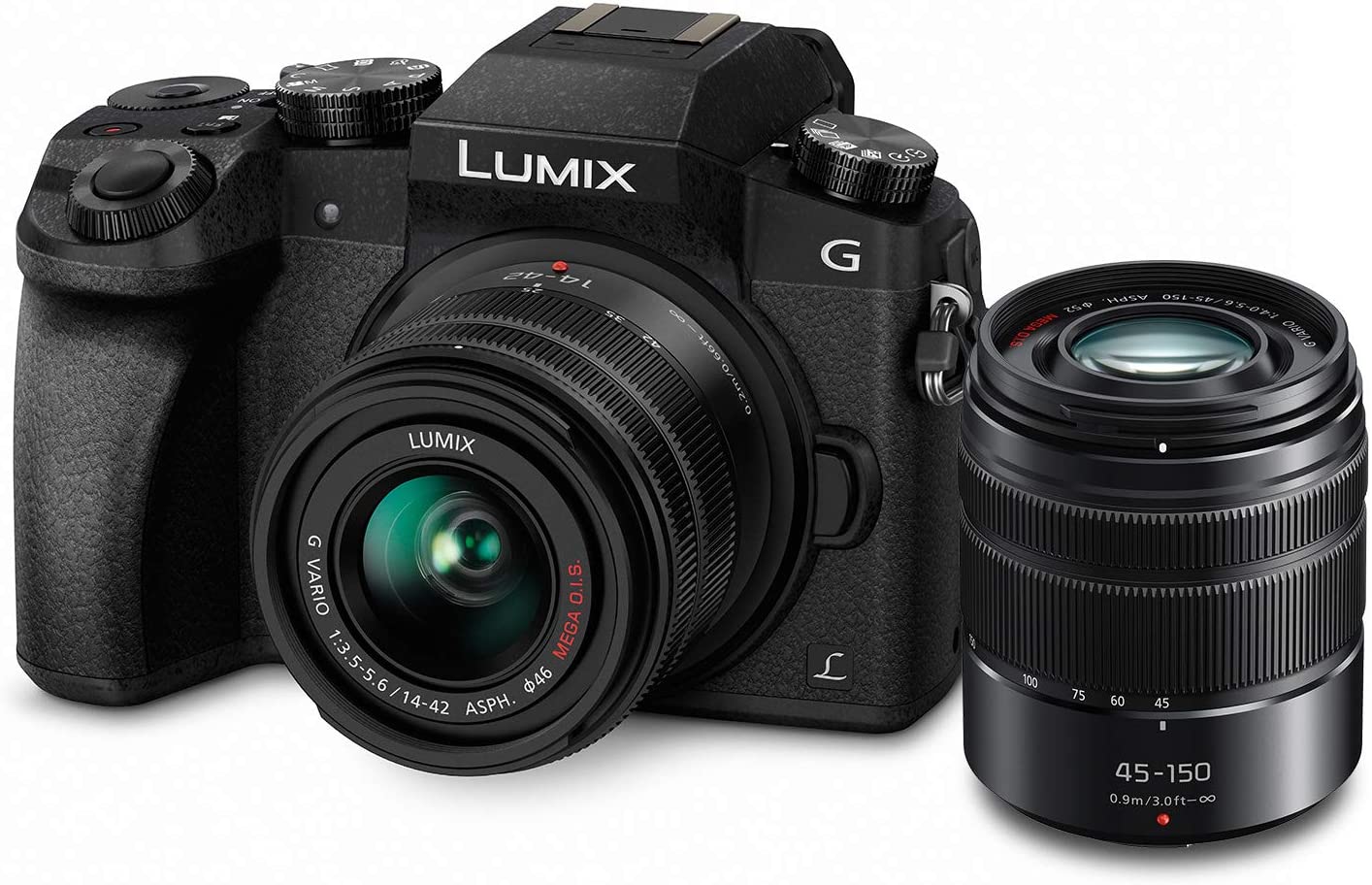
First up is the Panasonic Lumix G7. The Lumix G7 is the number one best mirrorless 2021 (according to Amazon sales, anyway). It is a mid-range mirrorless with the price of a best mirrorless camera for beginners.
The Lumix G7 features a 350-shot battery life, 4K video capabilities, and a fully-articulated touchscreen. With all of these modern features, you won’t need to upgrade for a good number of years.
Panasonic Lumix G7 Specs:
- 16MP sensor
- 4K video capabilities
- 3” fully-articulating touchscreen
- 2.36m-dot viewfinder equivalent
- 7fps burst mode
- .9 lbs
The Panasonic Lumix G7 is really only missing some qualities you would want if you’re going to be shooting in inclimate weather. For instance, it isn’t weather-sealed and there is no in-camera image stabilization.
Canon EOS M50
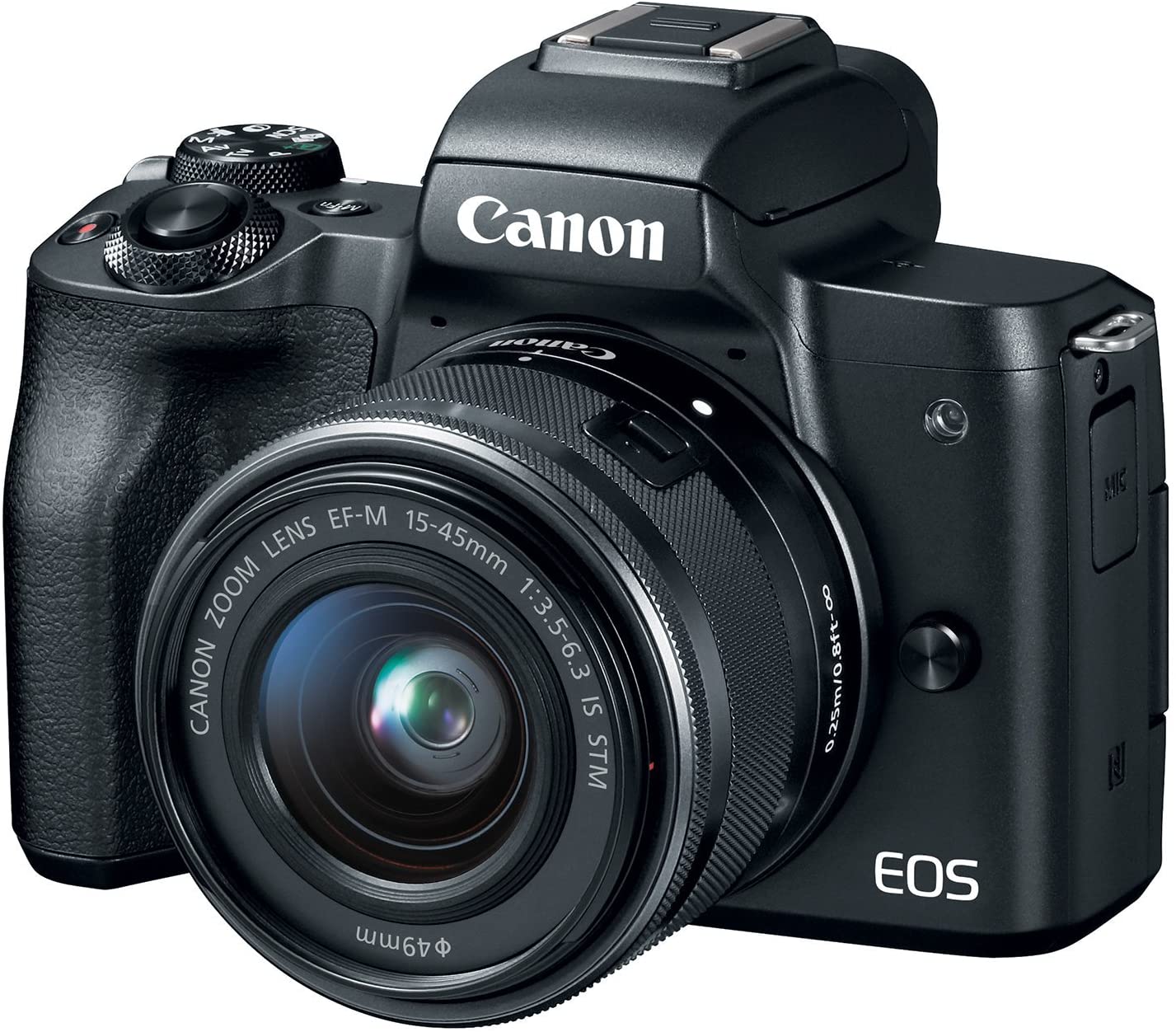
My favorite qualities about the Canon EOS M50 is that it’s comfortable to hold all day, it shoots 4K video and, for the price, it takes excellent photos.
However, it doesn’t feature a wide ISO range for shooting in poor lighting conditions. You’ll also definitely want to buy an extra battery for this camera while you’re looking through the top mirrorless cameras of 2021, since it will die on you if you’ve got a long day of shooting planned.
Canon EOS M50 Specs:
- 24.1MP sensor
- ISO range of 100-25,600
- 10fps burst mode
- 3” vari-angle touchscreen
- 4K video capabilities
- Built-in Wi-Fi and Bluetooth
- 0.39-inch OLED electronic viewfinder
Sony Alpha a6100
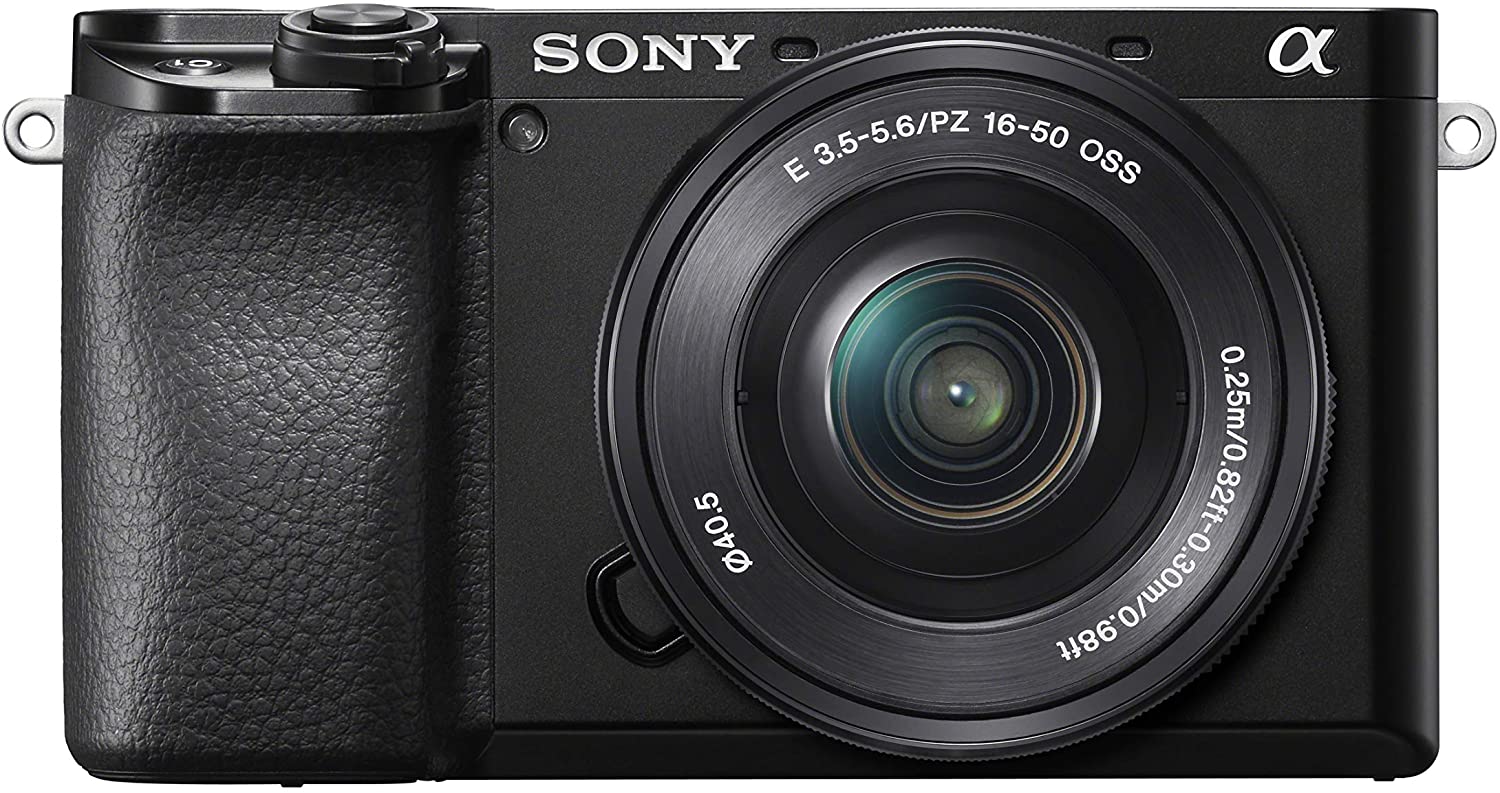
The Sony Alpha a6100 has long been a popular camera for those transitioning to a mirrorless. In fact, I would rate it as the best mirrorless camera for beginners because of how simple it is to use.
It’s no surprise, then, that it made Amazon’s top mirrorless cameras of 2021 list.
The Sony Alpha a6100 is known for its incredible autofocus system, given its price. It also shoots 4K video and features good low light performance and a selfie screen.
Other sony Alpha a6100 Specs:
- 24.2MP sensor
- 425 AF points
- ISO range of 100-32,000
- 4K video capabilities
- 3” tilting touchscreen
- 11 fps burst mode
- Built-in Wi-Fi and Bluetooth
- 1 lb
Sony Alpha a6000
I’m sort of shocked that the Sony Alpha a6000 made the top mirrorless cameras of 2021 list, if only because it came out 6 years ago in 2014. However, it clearly has remained a cult classic.
The Sony Alpha a6100, discussed above, actually served to replace the Sony Alpha a6000, although clearly this hasn’t worked out to Sony’s advantage because people still adore the original.
The Sony Alpha a6000 remains one of the best selling mirrorless cameras because, as Jason Morris points out above, it’s really popular amongst vloggers.
Sony Alpha a6000 Specs:
- 24.3MP sensor
- 179-point AF system
- 3” tilting LCD screen
- 11fps burst mode
- Full HD video capabilities
- Built-in Wi-Fi
- Built-in flash
Editor’s Tip: Join MPB for its #AskMPBAnything content series if you have any questions about photography or videography gear. The MPB will answer as many questions as they can! The goal is to provide photographers and videographers with as many answers as possible while we’re all stuck at home. Follow MPB on Youtube, Facebook, and Twitter to participate!
Sony Alpha a6400
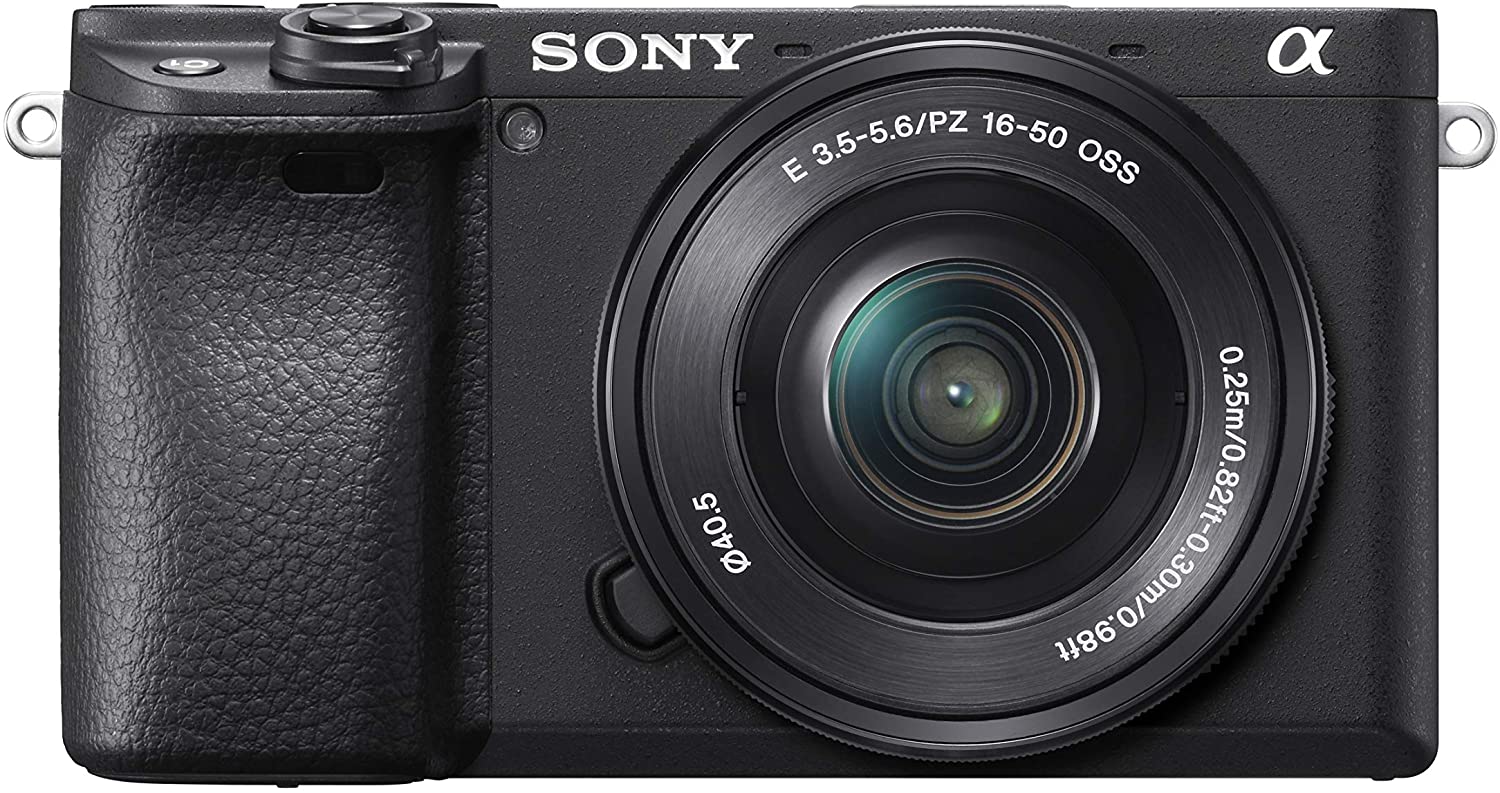
The Sony Alpha a6400 is one of the top mirrorless cameras of 2021 (alongside all of the other Sony Alphas) because it is the perfect mirrorless camera for content creators. Its 4K video is incredible and it comes with a selfie-screen for vloggers.
Again, the AF system on this camera is good (although a bit more complex than the other Alphas).
Sony Alpha a6400 Specs:
- 24.2MP sensor
- 3” tilt-angle touchscreen
- 11fps burst mode
- 4K video capabilities
- 425-point AF system
- Built-in Wi-Fi and Bluetooth
- 360-shot battery life
Learn More:
Sony a5100
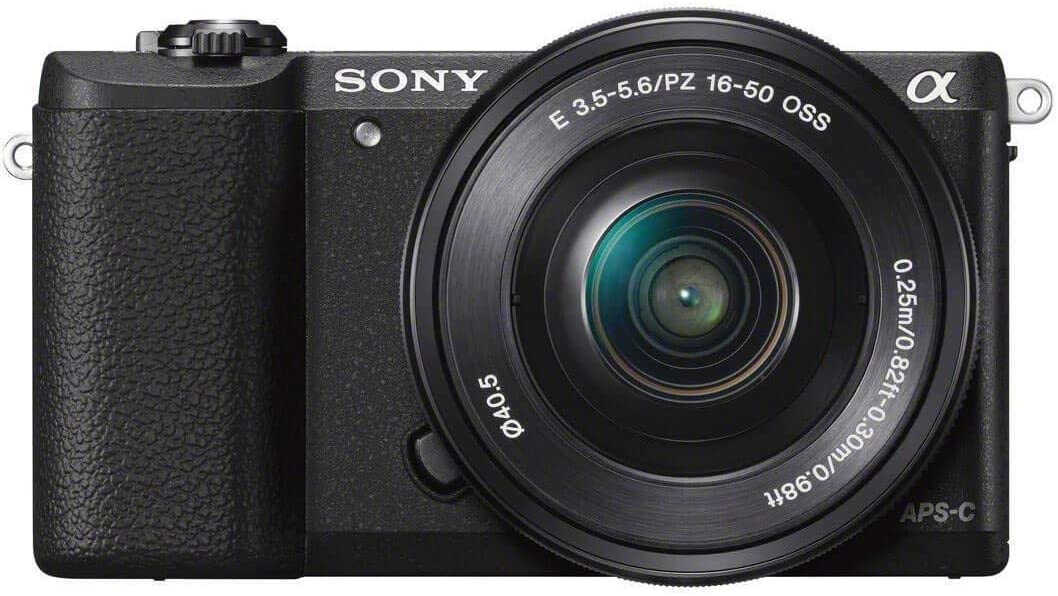
The Sony a5100 is one of the smallest top mirrorless cameras of 2021. It’s also one of the best selling mirrorless cameras because it’s relatively cheap.
The Sony a5100 is good for anyone who is looking for a small mirrorless camera they can carry with them, and features a good dynamic range and a better autofocus system. I don’t know if you’re catching on yet, but Sony is pretty good at creating mirrorless cameras with autofocus systems that can handle pretty much anything.
Sony a5100 Specs:
- 24MP sensor
- 3” tilting selfie screen
- ISO range of 100-25,600
- 6fps burst mode
- Full HD video
- Built-in Wi-Fi
- 400-shot battery life
Sony a7 III

The Sony a7 III is basically a hodgepodge of traits from Sony’s best cameras, like the Alpha A9 and A7R III. It’s got a 693-point AF system and uncropped 4K video capabilities.
But, unlike some of the other top mirrorless cameras of 2021, the Sony a7 III feels durable. Of course, you’re going to pay for that durability so this is not the best mirrorless camera for beginners.
Sony a7 III Specs:
- 24MP sensor
- 3” tilt-angle touchscreen
- 693-point AF system
- 10fps burst mode
- 4K video capabilities
- Built-in Wi-Fi and Bluetooth
- 710-shot battery life
Sony Alpha a6600
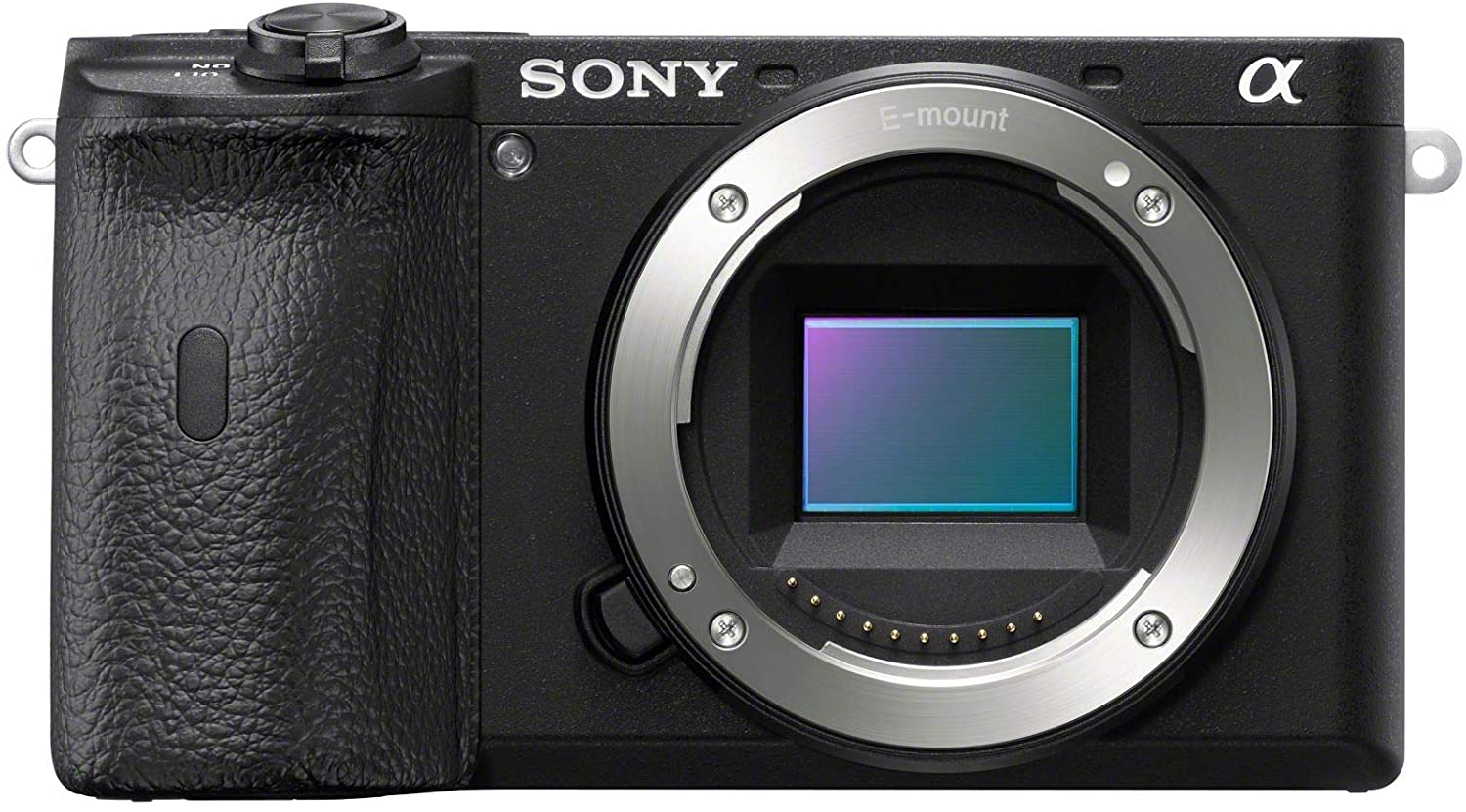
The Sony Alpha line basically dominates this “top mirrorless cameras of 2021” list and for good reason. The Sony Alpha a6600 came out in 2019 and offers new features like image stabilization and a weather-resistant build.
But, it still features the same features everyone loved about the line, like 4K video, a tilting touchscreen and an intense battery life of 810 shots.
Sony Alpha a6600 Specs:
- 24.4MP sensor
- 4K video capabilities
- 3” tilting touchscreen
- 11fps burst mode
- ISO range of 100-32,000
- Weather-resistant
- 5-axis image stabilization
Panasonic Lumix G85
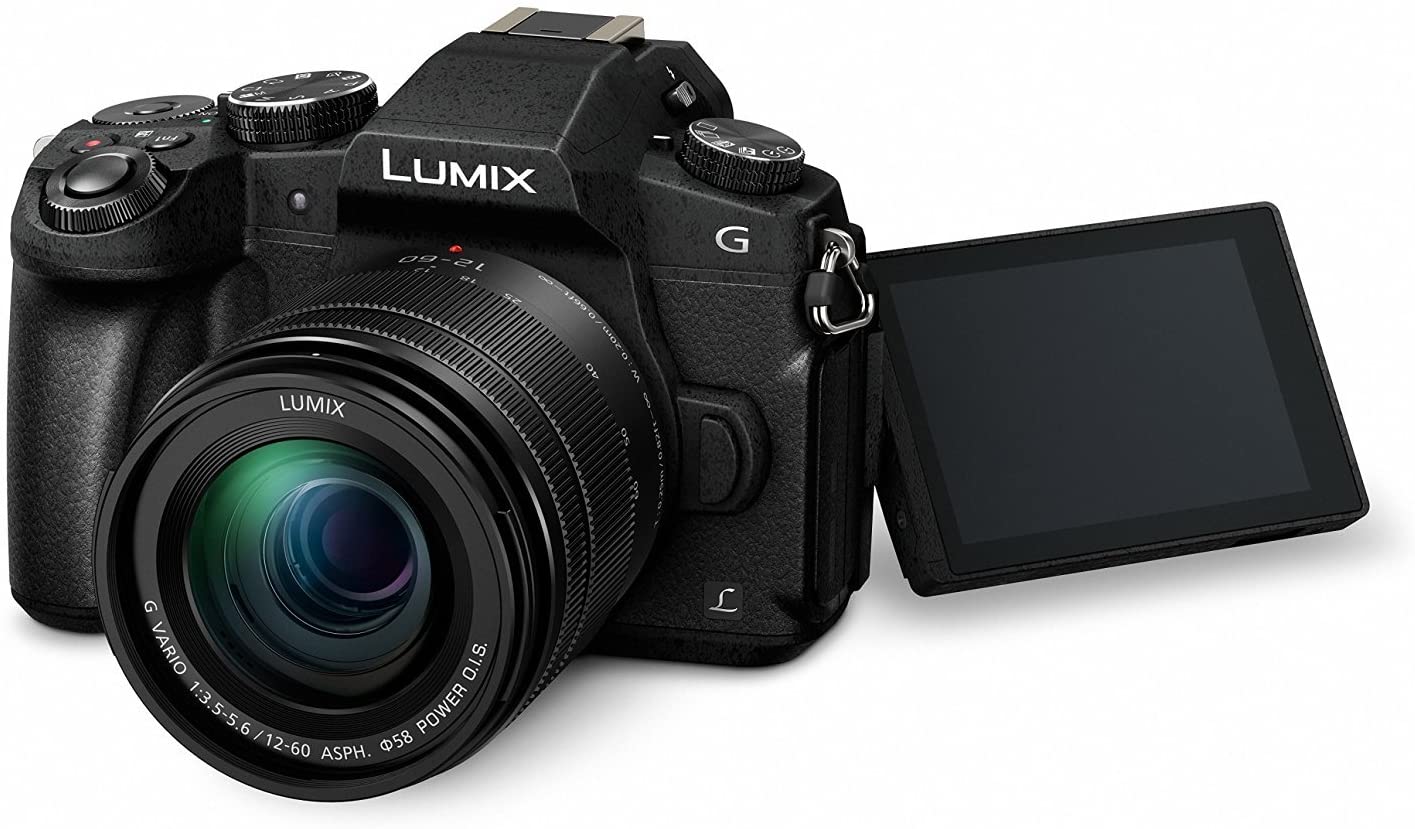
The Panasonic Lumix G85 is a great choice for a mid-range mirrorless because it features some high-tech capabilities, like in-body image stabilization while still being relatively inexpensive.
The Panasonic Lumix G85MK comes in at number nine on the “top mirrorless cameras of 2021” list because, while it is an improvement from the Panasonic G7, it’s also a bit more expensive.
For a thorough comparison of the two cameras, check out this video by Justin Reves.
Panasonic Lumix G85MK Specs:
- 16MP sensor
- 5-axis image stabilization
- 3” articulating touchscreen
- 4K video capabilities
- Splash and dust proof
- 6fps burst mode
- 320-shot battery life
Fujifilm X-T30
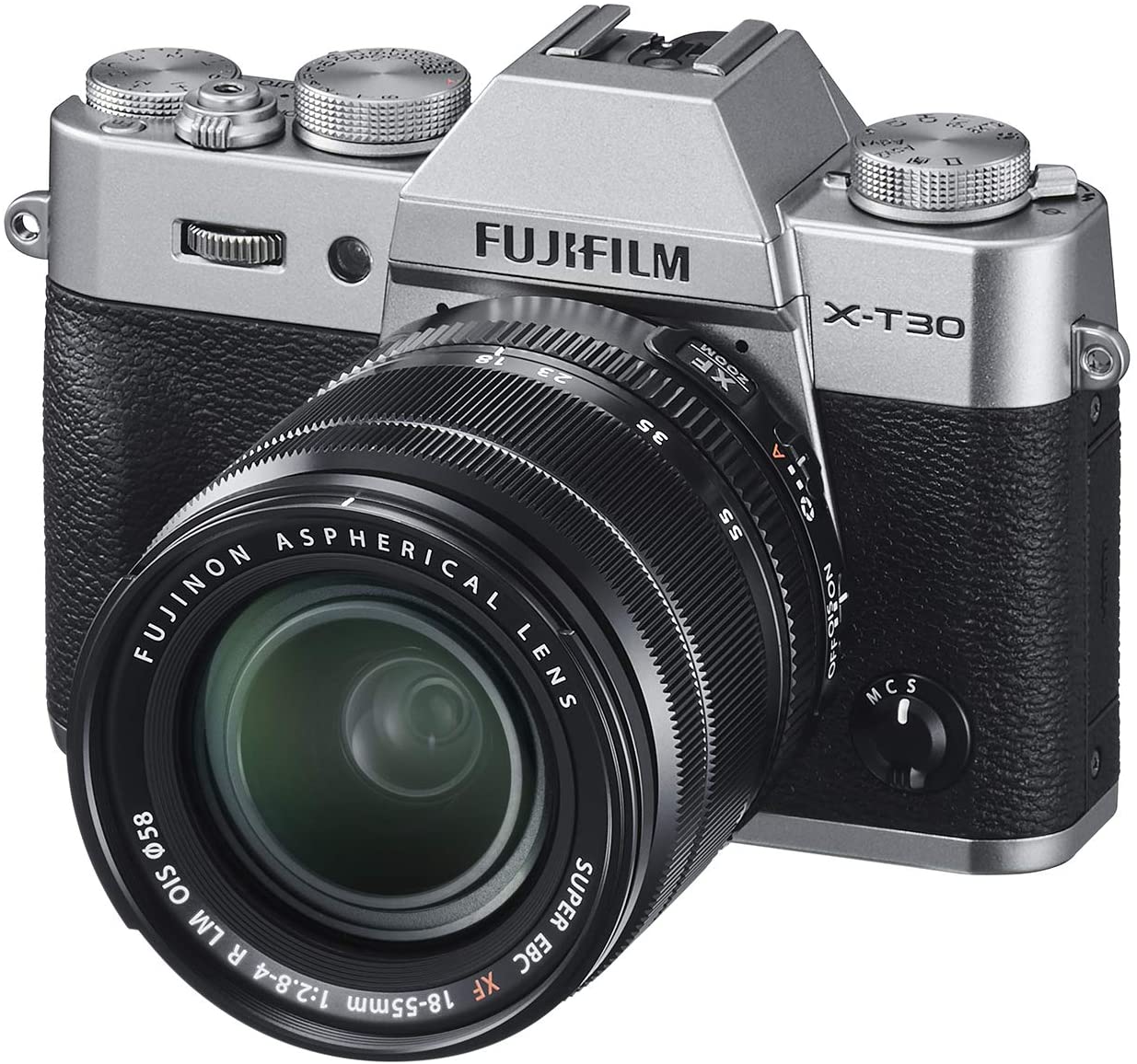
The Fujifilm X-T30 is also one of the better built top mirrorless cameras of 2021. It’s sturdy and I love shooting with it for this reason.
It’s AF system compares with Sony’s Alpha line and it shoots lovely film. It isn’t as comfortable when working with larger glass, which is my one serious concern.
Fujifilm X-T30 Specs:
- 26MP sensor
- 4K video capabilities
- 8fps burst mode
- 3” vari-angle touchscreen
- Built-in Wi-Fi and Bluetooth
- 380-shot battery life
Learn More:
We Recommend
Top Software and Gear Updates That Rocked 2019

photo byzeljkosantrac via iStock
It was a great year for photography, particularly on the software and gear fronts.
From camera accessories to post-processing software, camera bags to lighting gear, we saw tons of new, updated, and innovative products and services come to market in 2019.
It would be impossible to review everything that rocked the photography world this year, so we’ve done the next best thing and outlined more than a dozen of our favorite updates below.
Luminar 4
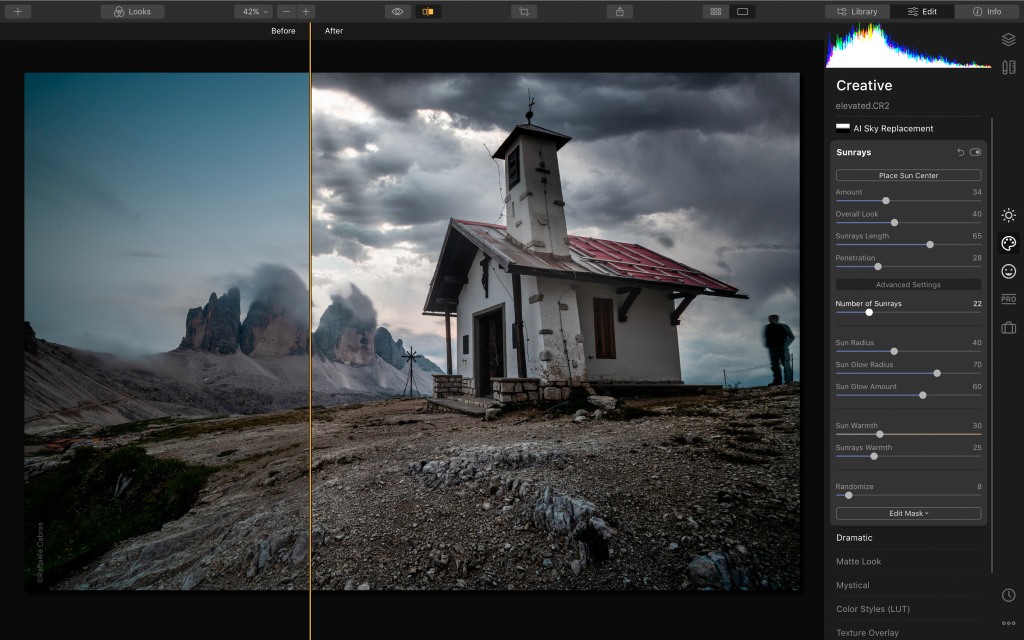
I’ve been a big fan of Luminar going back to when it was called Luminar 2018. And when Luminar 3 came out, I got my copy and began enjoying it immediately.
Now Luminar 4 is here, and with a host of improvements and expanded capabilities, it is the best Luminar yet.
If you’re unfamiliar with Luminar, let me give you a quick overview…
It’s chock-full of revolutionary tools that help you create better photos, faster.
That’s thanks in large part to artificial intelligence that drives easy-to-use tools that streamline your workflow yet still give you pinpoint control over how your images look.
Joining tools like the Accent AI Filter and the AI Sky Enhancer from Luminar 3 is a suite of new AI-powered tools that take image editing to a whole new level.
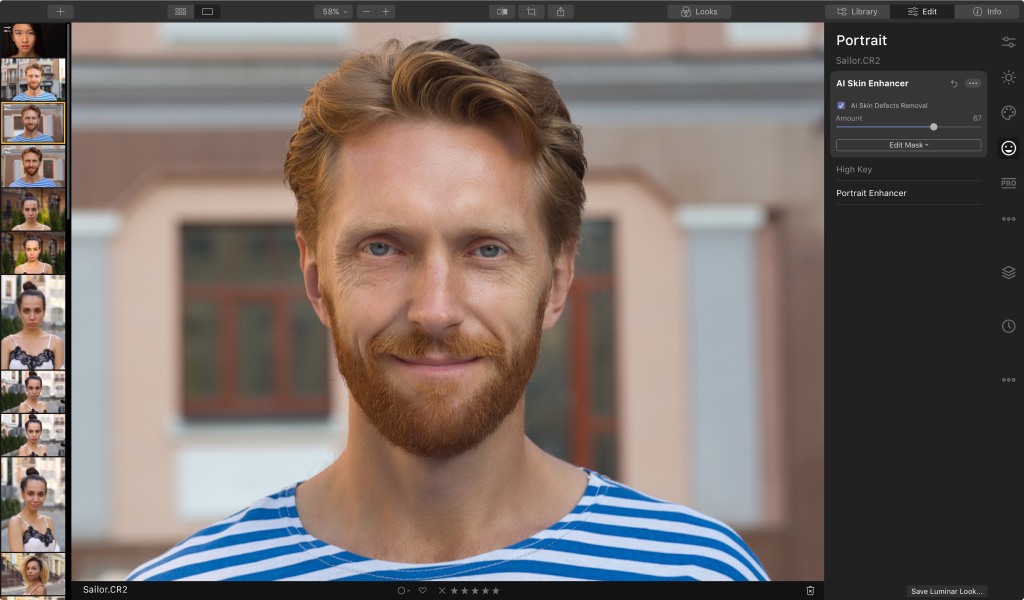
For portrait enthusiasts, the AI Skin Enhancer and Portrait Enhancer tools will revolutionize the way photo editing is done.
Using human-aware technology, the AI Skin Enhancer detects all the skin in a photo, smooths it out, removes blemishes, and does so while preserving the texture of the skin, pores, and hair.
It takes just one click to apply the Skin Enhancers edits, and then with a single slider you can adjust its strength for a picture-perfect result.
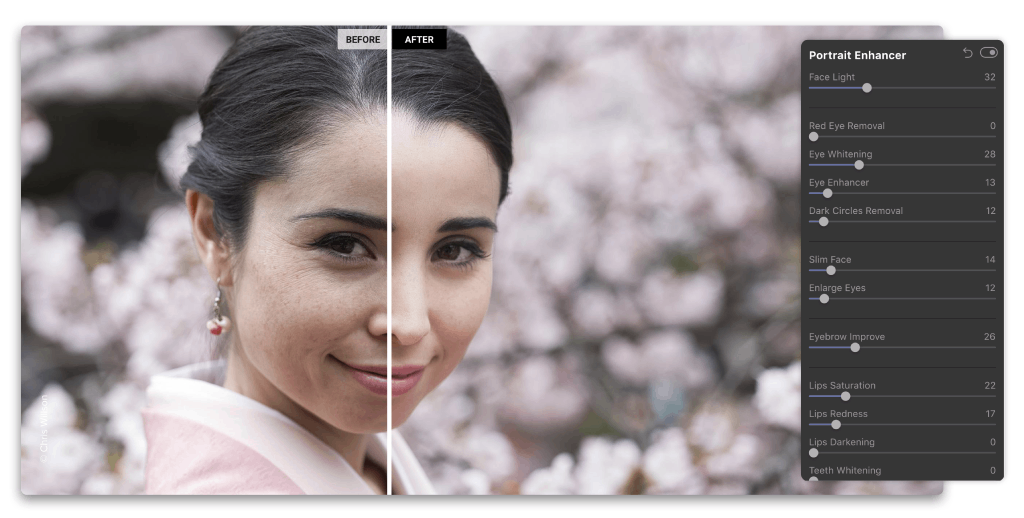
The AI Portrait Enhancer gives you a host of tools to quickly and easily make detailed changes to portraits, like whitening teeth and eyes, removing dark circles under eyes, and removing red eye, just to name a few.
In all, the Portrait Enhancer includes twelve revolutionary tools that turn editing portraits into a process that takes a minute or less!

Luminar 4 has some goodies for landscape photographers as well.
Primary among them is the AI Sky Replacement tool.
As its name suggests, this tool replaces the sky in your photos automatically - there’s no masking or selections to be made on your part.
The selection algorithms work so well, in fact, that it knows to exclude leaves, grass, and animals from the sky selection.

Not only that, but this tool relights the entire image, that way the foreground matches the brightness of the new sky.
It’s advancements like this that make Luminar 4 one of the most powerful, easy-to-use editing programs on the planet today.
Need more convincing? Get Luminar 4 today and see for yourself!
Hakutatz Pocket Size RGB+AW LED Light

Gone are the days when you have to lug around huge lights to get the key light or fill light you need for awesome portraits.
Instead, companies like Hakutatz have developed powerful pocket-sized LED lights that give you the power to customize the type of lighting to your specific needs.
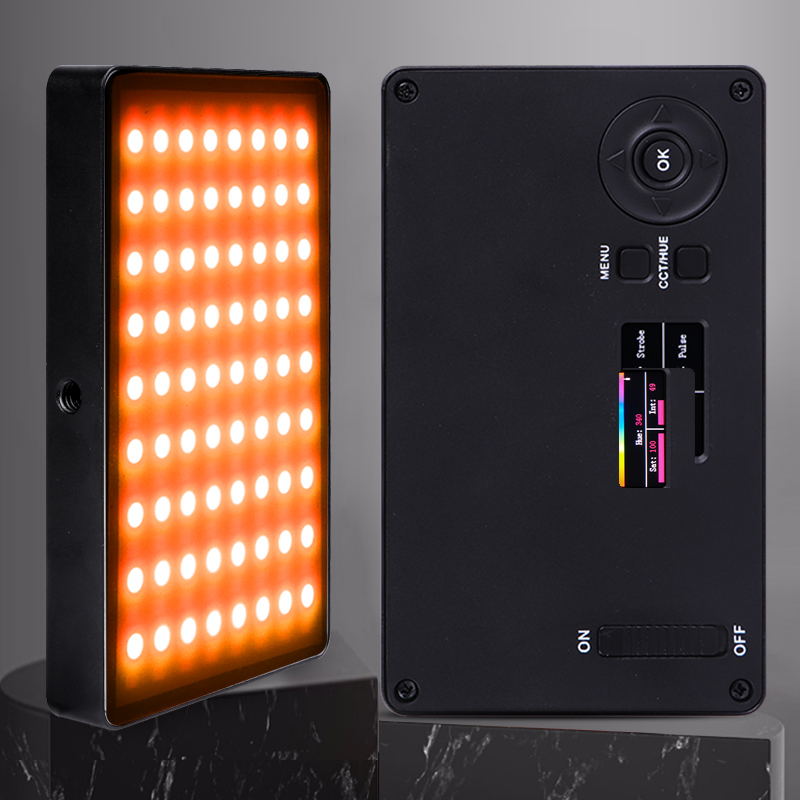
This particular light has RGB, amber, and white LEDs, so you can add accent colors to your photos and videos or dial in the ideal white balance by using the amber or white lights.
This light is completely adjustable, with controls for saturation, brightness, and color temperature. Better still, you can adjust the light’s settings via a well-designed and user-friendly smartphone app.
That means that with a simple touch or a swipe of your finger, you can fine-tune everything from the RGB color to special effects. You can even control multiple lights at the same time right from the app. No wonder their Kickstarter campaign was such a huge success!

Hakutatz literally puts the power to dial in complex lighting schemes in the palm of your hand, and does so in a way that’s clean, simple, and super functional. That’s by this little light rocked the photography world in 2019!
Be on the lookout for Hakutatz’ online store to have these lights in stock in December!
Learn more about the Hakutatz Pocket Size RGB+AW LED Light
Hazard 4® Cyclone™

Framing shots with your action cam in direct sun can be frustrating; glare in your eyes and the camera’s tiny, reflective screen are really fatiguing. Blowing sand, water or snow don’t help. But the best action is shot outside - Cyclone™ is the first real solution.

This patent-pending optic blocks the sun, but it’s lens also magnifies the screen and protects it. You effectively add mirrorless camera style composition and review to your tiny affordable GoPro or DJI action cam that survive where real mirrorless can’t. Better still, the viewfinder mounts to your action cam’s bottom screw in seconds, so there is no fumbling. But you’ll probably choose to keep it on since this little guy doubles as a tiltable handle - keeping fingers out of frame and for extension. With cheap additional hardware you can even head mount it for hands-free composition while biking, paragliding etc, and it tilts out of the way at will.


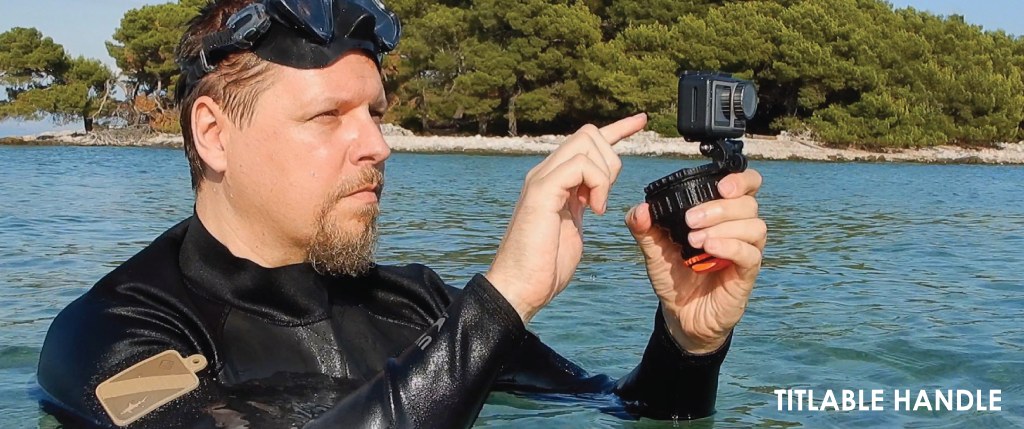
The simple, waterproof, tough, design accordions flat for easy portability and flattened can be a selfie mini tripod. It has diopter focus - even helping out ageing eyes. The high-vis cap self closes to protect the lens. And you get a tether loop action cams don’t include.

Hazard 4® has a reputation for innovating outdoor photo accessories; the Cyclone™ is no exception. As usual they have gone above and beyond to design a multi-functional, easy to use bombproof solution to a common video shooter problem. Perhaps this may push GoPro® or DJI® to finally up the resolution on their LCD’s under magnification and drive the mirrorless wars into the action cam space. Either way, you don’t have to rely on the wide angle lens for your framing anymore- you can actually compose like a pro.
This device is currently on Kickstarter, with a fund date of January 7, 2020. Head over to Kickstarter now to learn more about this device.
The Camera Pack by Nomatic and Peter McKinnon

Billed as a “functional camera pack for all types of travelers,” the Camera Pack by Nomatic and Peter McKinnon is certainly worthy of inclusion on this list.
The Kickstarter campaign to fund this pack had a goal of $100,000. It raised nearly $2.3 million. That speaks to the reputation of Nomatic and Peter McKinnon!
This bag is ridiculously well designed and has a functionality level that’s off the charts.
It’s designed to cure the woes of travel photographers who have to have one bag for their gear and another bag for their personal items.
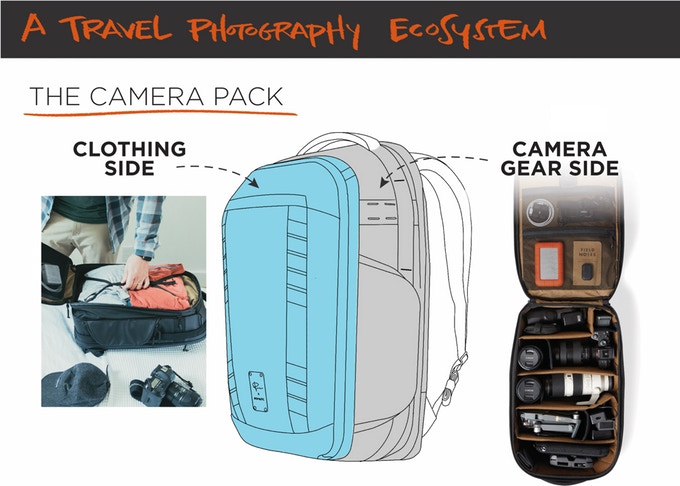
The Camera Pack solves this problem by having a clothing side and a gear side which are separated by an interior panel. This keeps everything neat and tidy so you aren’t rifling through the entire back when you need something.
Better still, the bag has a “Cube Pack” inside, which serves as the ideal organizational module within the interior ecosystem. However, as the gif below shows, the Cube Pack converts to a daypack, so if you need to run and gun a little, you don’t have to take the larger Camera Pack with you. Ingenious!

Overall, the Camera Pack can hold 35 liters of gear, but can be expanded to accommodate up to 42 liters of gear. That’s a lot of stuff! And with a full clamshell opening, you can see all the gear you’ve stowed away with ease.
And everything is neatly organized thanks to a main camera compartment with moveable interior dividers. There’s a sleeve for your tablet, pockets for your camera accessories, and quick side access for easy retrieval of gear, too.

On the clothing side, there’s compression cubes for your clothes, compression straps to keep everything where it should be, and more pockets for smaller items.
This is just a really well designed and impeccably built backpack. And with the input of a photography expert like Peter McKinnon, you know that it’s been designed with photography needs in mind.
Learn more about the Camera Pack by Nomatic and Peter McKinnon
GearFocus.com
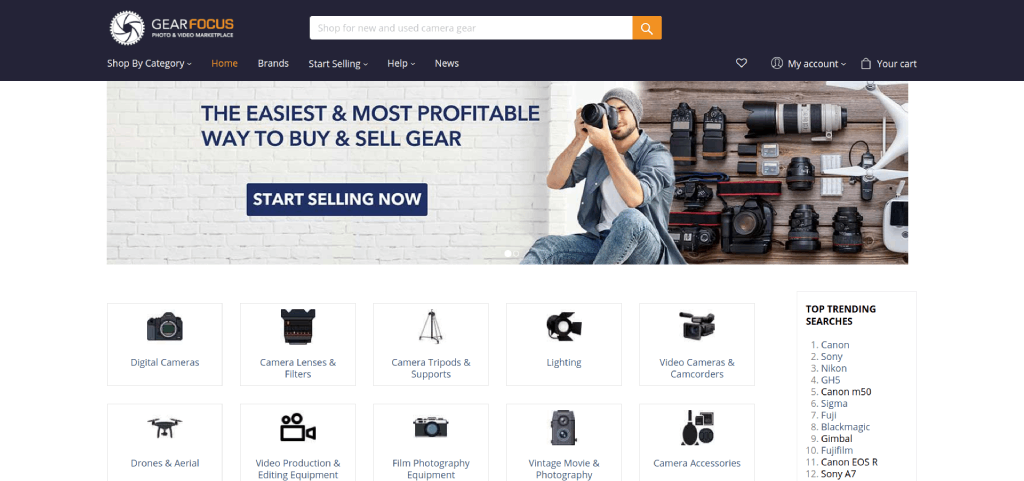
If you buy and sell your used photography gear on places like Craigslist, you’re doing it all wrong.
That’s because there are much better alternatives that take the hassle out of buying and selling used gear. GearFocus.com is certainly one of the best.
One of the top reasons GearFocus makes our list of the Top Software and Gear Updates is because they focused on building a community where people like you and I can buy quality used gear and get fair market value for stuff we sell.
Unlike other used gear sites, GearFocus doesn’t take a giant chunk of your profits when you sell your gear. Instead, they offer the lowest seller fees among B2C and C2C marketplaces, which means more money in your pocket when your item sells.
Additionally, GearFocus ensures each transaction is safe and secure by screening and monitoring every single post and transaction. Gear Focus was made by creatives, for creatives and they’ve been in this business long enough to be able to spot suspicious listings and red flags from a mile away. Without scammers creating fake listings, the buying and selling experience is enhanced so you can get the best deal on used gear and the most money for the items you sell.
Heck, they’ll even intervene on your behalf if something goes wrong! Having that kind of peace of mind alone is enough to land these guys on this list!
It’s not often that you find companies like this that prioritize community building and supporting one another over making a buck. That focus on customer service is just the icing on the cake for patrons of GearFocus. They are here to help FEED YOUR PASSION!
Learn more about GearFocus.com
Litra Studio
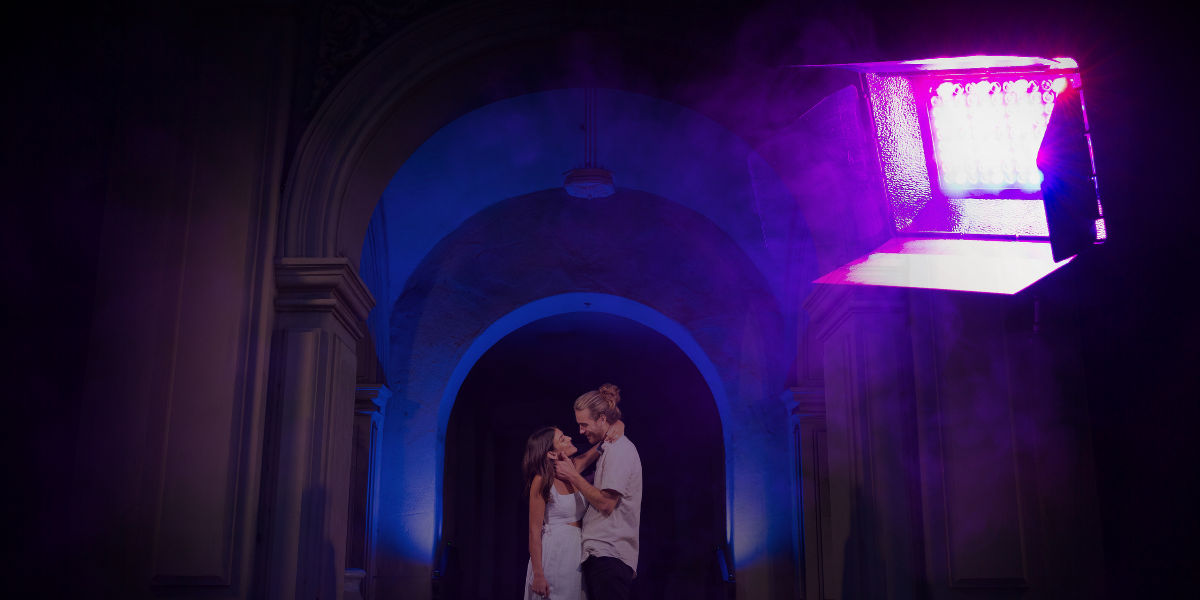
To say that the Litra Studio is powerful is an understatement.
Weighing in at just 33.5 ounces and measuring 5.5" x 3.9" x 2.9", the Litra Studio is certainly easily transported without taking up a ton of space in your camera bag.
But don’t let its small size fool you - this light can produce over one million unique colors that will help you light up your portraits and videos.

The Litra Studio can produce up to 3,000 lumens of continuous light and up to 6,00 lumens of flash. In CCT mode, you get 2,000-10,00K adjustable bi-color lighting with green and magenta color shift controls to allow for tunable blue and green screen optimization.
On top of that, this light is fully tunable and dimmable, and offers CCT, HSI, RGBWW, gel presets, flash modes, and effects, too.

The light it produces is clean and flicker-free at all shutter angles. The CRI and TLCI of 97 speak to its impeccable color accuracy.
Litra even made sure this light is rugged and durable. It’s waterproof, has highly efficient passive thermal management, and offers up to 20 hours of battery life on the low setting.
That makes this a go-anywhere, do-anything light that made huge waves in the photography world this year.
Learn more about the Litra Studio
GoPro HERO 8

While the GoPro HERO 8 doesn’t boast any major updates, it does represent a culmination of a wide range of smaller updates that, taken together, make it the best GoPro thus far.
In fact, I’d say this is the most innovative and user-friendly GoPro yet.
It has built-in mounting pins so you can directly mount the camera to accessories rather than needing a frame to do so.

There are built-in digital lenses for multiple field of view settings from Narrow and Wide to Linear and Superview. The camera’s physical lens cover is not not removable and it twice as strong as those found in older models.
Also on the ease-of-use front are numerous capture presets that allow you to create and save popular types of videos. SuperPhoto, which is GoPro’s version of HDR, gets a refresh that results in improved image quality as well.
The GoPro HERO 7 debuted incredible image stabilization with HyperSmooth, and the HERO 8 builds on that with even better results with HyperSmooth 2.0.
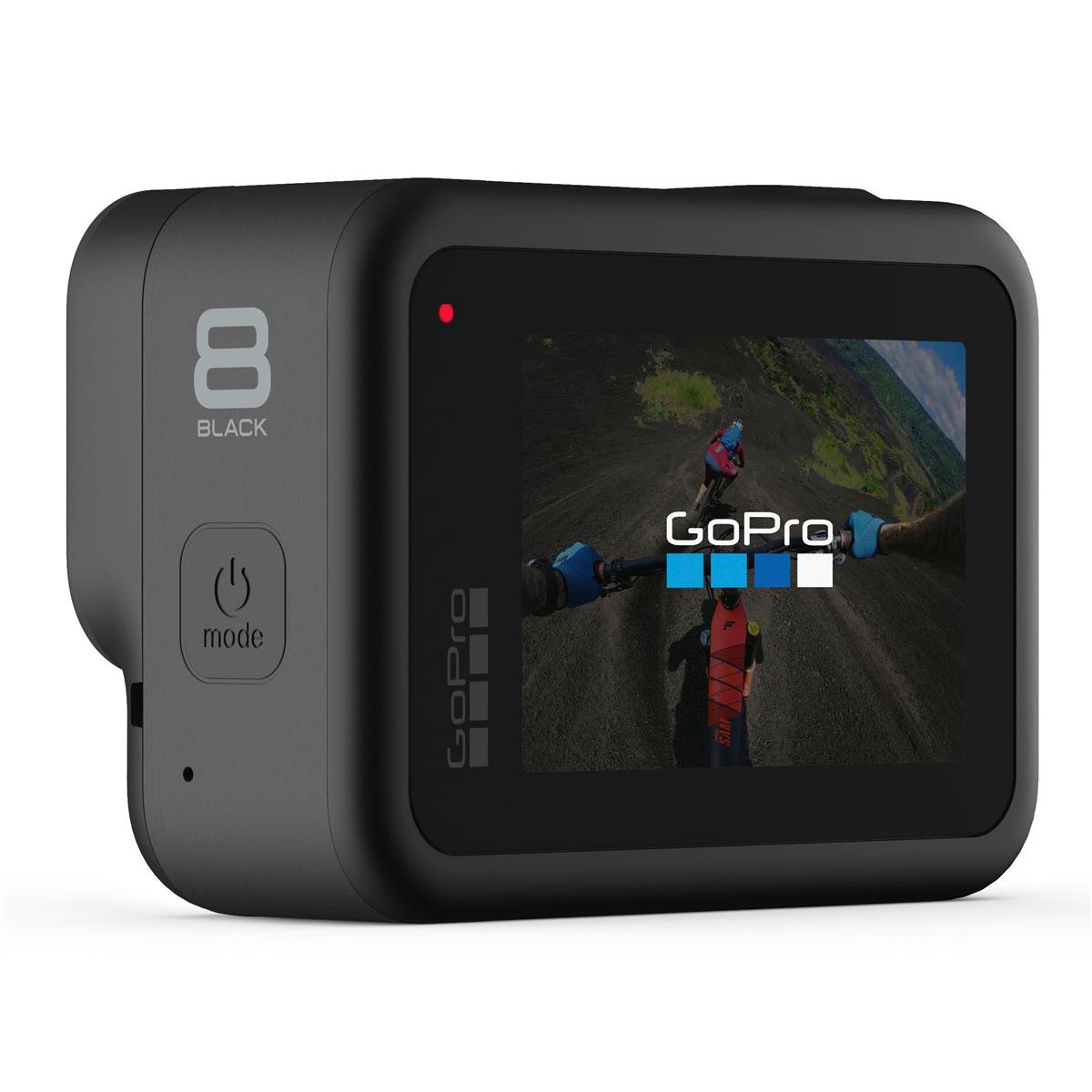
The HERO 8 also gets upgraded TimeWarp features, including an auto mode that uses sensor to detect motion and adjust the recording speed accordingly.
The camera also has improved photo-taking capabilities with face detection, smile detection, and blink detection functions, as well as LiveBurst mode for taking 1.5-second-long images before and after the shutter button is depressed.
Add in built-in GPS, motion sensors, live streaming capabilities at 1080p, 4K video at 60fps, and a host of mod accessories to expand the camera’s capabilities, and it’s no wonder that this rig set the photography world on fire in 2019!
Learn more about the GoPro HERO 8
Aputure 120D II

As far as studio lights go, it’s tough to beat the quality lights that Aputure puts out.
And at the top of their lineup is the 120d II, a light I reviewed earlier this year and was very impressed with.
This light is 1000-watt tungsten equivalent, so you get plenty of brightness for your studio work. It’s fully dimmable, too, and has a CRI and TLCI of 97+. That kind of quality light is a must-have for discerning photographers.
Aputure also included a variety of built-in lighting effects so you can dial in custom looks for your images. With this light, there’s nothing stopping your creativity!

But what’s really impressive about the 120d II is what’s “behind the scenes.”
It has an integrated power and control box, which keeps clutter to a minimum in the studio. Any studio photographer will appreciate that!
What’s more, it has an 18dB quiet fan, which keeps that annoying “whooshing” sound to a minimum so you can concentrate more thoroughly on getting killer shots.
Add in the fact that this light is 25 percent brighter than its predecessor and that it has DMX controls, a wireless remote, and excellent portability, and you have the makings of a top light for your photography studio.
Learn more about the Aputure 120d II
Exposure X5

Exposure X5 is yet another software update that sent shockwaves through the photography world in 2019.
Its predecessor, Exposure X4, was highly functional, user-friendly, and super powerful, so it was hard to imagine how the folks at Exposure could make X5 better. But they did.
For starters, Exposure X5 has custom camera profiles that allow you to control how the software interprets color from RAW files. These profiles (created by X-Rite, among others) can be applied automatically by matching the serial number of your camera or by using the camera model. Furthermore, these profiles can be matched to a specific lens or ISO range.
You get advanced chromatic aberration correction in X5 too. This allows you to remove unwanted artifacts using lens profiles, or you can remove them by making manual adjustments if you prefer.
There’s also a new fringe removal tool, so X5 makes getting rid of chromatic aberrations easier than ever before.
There are a host of other new features too.
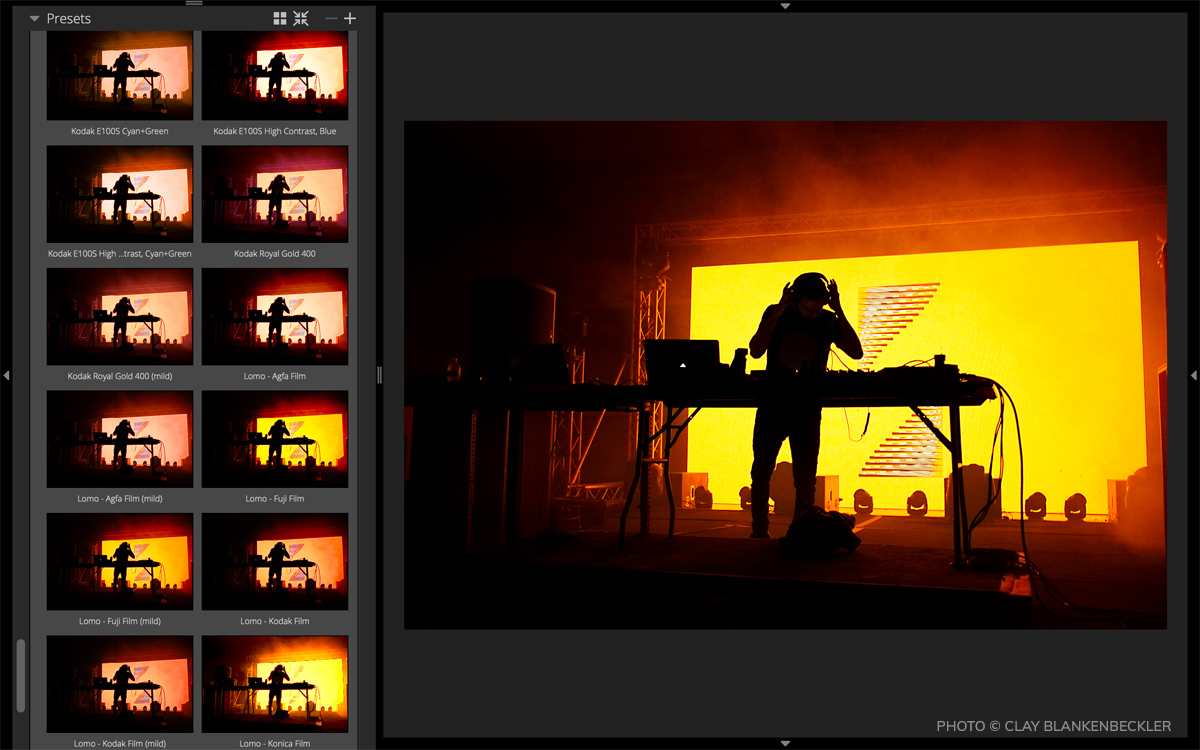
Exposure X5 includes new complementary color presets, new season-inspired looks, and new light and airy presets that give you expanded creative potential when editing your photos.
There are more black and white film options than ever before, support for grayscale TIFF and JPEG images, and new image flip options too. Exposure X5 also has multiple language options, including English, German, and French.
But for me, the best new feature in Exposure X5 is 3D color masking.
Basically, you can use this tool to make incredibly precise selections for applying adjustments to your photos. You can see it at work in the video above.
This fine level of control is made possible by using specific color characteristics (hue, saturation, and luminance) to define the adjustment areas.
What this means is that you can quickly and easily target specific areas for color masking, like the sky in a landscape photo or skin tones in a portrait. This is all done with just a few clicks.
Exposure X5 is powerful, easy to use, and incorporates tons of new features that make it the best Exposure software to date. If you’ve never tried exposure, give it a test-drive for free.
Holdfast Tanker Belt

I’ve been a Holdfast customer for a long time, and what initially drew me to them was the absolutely outstanding build quality of their products.
They use only the finest materials - things like full-grain leather and stainless steel - so when you buy a camera strap or harness or bag, you get something that is durable and will last you for years.
But as the years have gone by, I’ve come to appreciate more and more the sheer innovation that these guys display when developing new products. That being the case, I had to include Holdfast on this list of the best gear updates of the year.

One of Holdfast’s latest products is the Tanker Belt, which changes the way you carry your gear.
It’s actually two belts in one, the first of which cinches around your waist like a normal belt and the second, outer belt, which forms loops for attaching your gear.
This ingenious design means the belt stays put (as do your pants) while maximizing the amount of gear you can carry around your waist.

There are three D-rings on the belt for attaching things like your keys or a wallet, and the D-rings are moveable, so you can customize precisely where your items hang on your waist.
And, as you’d expect with Holdfast, this belt looks and feels like a million bucks - it's gorgeous handmade leather is something to behold!
Better still, the Tanker Belt was designed with functionality in mind, so it’s compatible with a wide range of Holdfast products.

You can attach the Ranger Leash to the belt and take Fido for a hands-free walk, or you can add a cell phone pouch and keep your smartphone safe and secure and out of the elements.
Add a lens pouch or two (small, medium, or large) so you have extra glass for your next shoot too!
With sizes from 28-inches up to 44-inches and multiple colors (black, tan, chestnut, and burgandy), you can customize the Tanker Belt to your specific needs and tastes.
Learn more about the Holdfast Tanker Belt
Panasonic 10-25mm f/1.7 Lens
I picked up a Panasonic GH5 earlier this year, and it quickly won me over with its astonishing video capabilities.
It wasn’t until recently, though, that I got to test out the Panasonic 10-25mm f/1.7 lens, and I have to say, I wish I would’ve gotten my hands on it a lot sooner! This is a fantastic lens, to say the least.
You can get some of my thoughts on this lens in the video above, but I want to expound on its features a little bit more.
Make no mistake - this is a gigantic lens, especially for a micro four-thirds camera. Fortunately, it’s not hard to handle at all, and despite its footprint, it’s actually not all that heavy.

But it’s massive size means that Panasonic was able to cram lots of goodies inside to help you get superb images.
This lens is supremely sharp, beautifully responsive, and gets you clean, crisp images each and every time. Its bokeh is buttery smooth and there’s wonderful brightness throughout its aperture range.
It has 17 elements in 12 groups, including three aspherical lenses and four extra-low dispersion elements which work to all but eliminate spherical aberration, distortion, and chromatic aberration. The result is images with impressive quality.
But where this lens was a game-changer in 2019 was in its video capabilities…

It’s compatible with up to 240fps high-speed sensor drives and offers silent operation thanks to the inner focus drive system and the de-clicked aperture ring.
The focus clutch is a nice touch as well, as it enables instant switching between autofocus and manual focus as well as improved accuracy when manually focusing.
With next to zero focus breathing, a micro-step drive system that accommodates brightness changes when panning and zooming, and Leica build quality, this lens certainly doesn’t disappoint!
Learn more about the Panasonic 10-25mm f/1.7 lens
Sony a7R IV

When the Sony a7R IV was announced earlier this year, it set the internet on fire with news of its massive 61-megapixel sensor. And while the sensor is impressive, it’s just the beginning of the impressive specs of this camera.
Paired with a BIONZ X image processor, the a7R IV’s back-illuminated sensor is capable of rendering images that are beautifully crisp.
You get an eyeful of all that beauty with the brand-new UXGA OLED Tru-Finder viewfinder, which has a whopping 5.76-million dots of resolution for a clean, bright, detailed look at what you’ve framed up in the shot.
This camera has a native ISO range of 100-32000 for low-light shooting, and with 15-stops of dynamic range rendering, you’ll have no problem getting tons of details in the shadows and the highlights.
Of course, the a7R IV carries on the Sony tradition of excellent autofocusing, with an ultra-fast hybrid AF system that has 567 phase-detect AF points to give you quick and accurate autofocus tracking.
Throw in UHD 4K video at 30p, Real-Time Eye AF tracking, 10fps shooting, and a bevy of other features, and you can see why the Sony a7R IV was one of the best gear updates of 2019.
Learn more about the Sony a7R IV
Haida M10 Filter System

The Haida M10 filter system is something I’ve been testing as of late, and I have to say that I’m impressed with this system.
Like the other products and services on this list, I’ve found numerous innovative and unique features that compelled me to include this product on this list.
Haida is a great value for the money with well-built components that show an attention to quality and detail that many filter companies just can’t match.

I have multiple components in my kit - the M10 filter holder, a circular polarizer, a couple of solid ND filters, and a soft-edge grad (shown above) - but you can also buy complete kits of varying sizes, including their Master Filter Kit, their Professional Kit, and their Enthusiast Kit, if you’d rather go that route.
Either way, I think you’ll find, as I have, that the Haida system is one that enhances your ability to get quality shots.
The aluminum alloy filter holder can accommodate two 100mm filters, but it can expand to include a third slot if needed. The Haida filters are made of shock-resistant optical glass and features 10 layers of anti-reflective nano coating and 10 layers of scratch and water resistant coatings.

The holder rotates a full 360-degrees, which is enormously helpful for getting just the right positioning when using graduated ND filters.
I also like the fact that Haida incorporated gaskets in the filter slots to help prevent light leaks. They even include a “dummy” filter housing that can be dropped into the filter if you’re shooting without the circular polarizer in place. Again, this helps prevent light leaks so you get a cleaner exposure.
The pinch and pull system for adding and removing filters make using this system super easy, as do the rounded edges of the rectangular filters - they’re much easier to slide into the filter holder without sharp edges.
This is just a well thought out system for beginners and enthusiasts alike!
Learn more about the Haida M10 filter system
Sony a6600

Though the Sony a7R IV probably got more attention, the Sony a6600 is certainly not something to forget about…
With a much smaller price tag than the a7R IV and more applicability for more photographers, the a6600 rocked our world this year by bringing many flagship features to a mid-range camera.
Its 24.2-megapixel Exmor CMOS sensor is ideal for capturing beautifully resolute images while the native ISO range of 100-32000 gives you excellent low-light shooting capabilities with reduced noise.

As I get more into video creation, I appreciate the fact that this camera sports UHD 4K video capabilities that can be internally recorded in XAVC S format.
The five-axis image stabilization is a dream, giving you five full stops of stabilization, while the weather-sealed construction means you can head out in adverse weather with less worry about what will happen to your camera.
With additional features like a beautiful XGA OLED Tru-Finder viewfinder, a tiltable LCD monitor, 11 fps continuous shooting, and much more, this camera is certainly worthy of the title of gear that rocked 2019!
Learn more about the Sony a6600
RODE Wireless GO

A final product I wanted to mention on this list of the top software and gear updates is this handy little guy, the RODE Wireless GO.
This wireless system automatically pairs in just three seconds and transmits via RODE’s new Series III digital transmission system. It’s a 2.4GHz system that’s optimized for short-range operation, particularly in environments in which there is a lot of RF and Wi-Fi interference. It also offers line-of-sight range of up to 70 meters.
You also get broadcast-grade audio thanks to the built-in condenser mic’s superb isolation and transparency. Alternatively, you can use it with a lavalier mic using the 3.5mm TRS input.
Additionally, the Wireless GO system operates up to seven hours on a full charge, and since the unit is so small and compact, it’s super lightweight and portable.
You can even use up to eight systems in one location if you have the need!
If you’ve ever used a ROD mic before, you know they’re some of the best in the business. The RODE Wireless GO is certainly no exception!
Learn more about the RODE Wireless GO
We Recommend
What is the Best Cheap Camera for Photography Beginners?
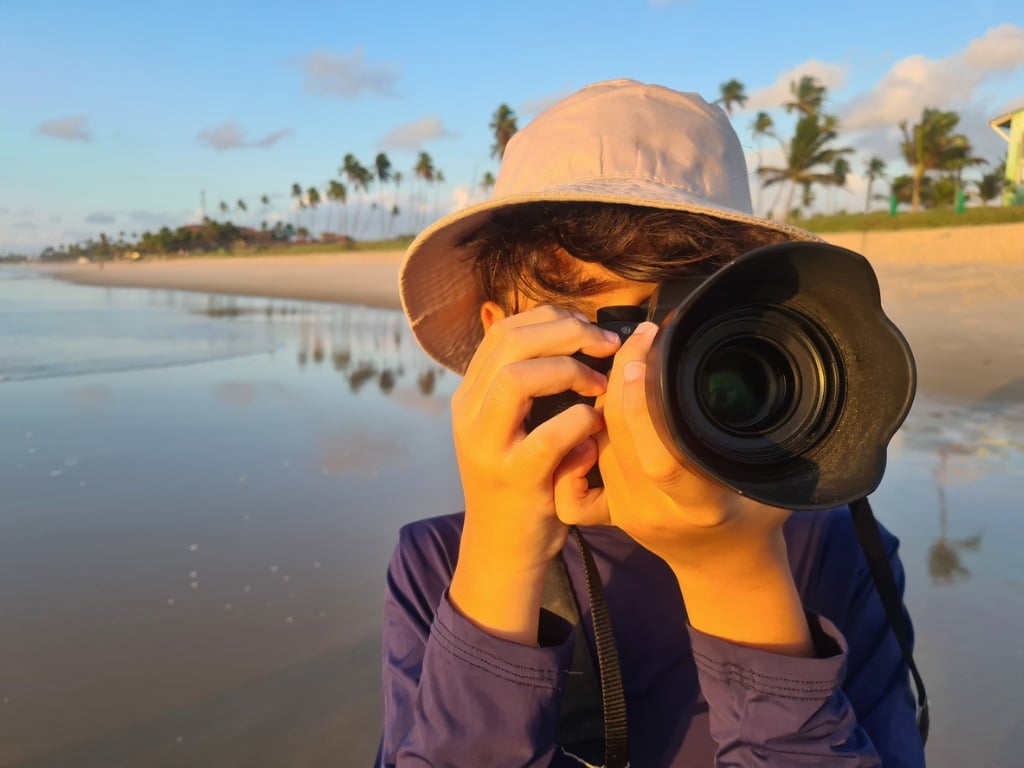
Photo by Pollyana Ventura via iStock
What is the best cheap camera for photography beginners? Besides that question, where does one find the best cheap camera for photography beginners?
As we look for the best digital camera for beginners, we’ll discuss some features that a good beginner camera should have, and then we’ll give some examples that qualify for consideration as top choices.
The cameras we’ll show you come from the best online platform for pre-owned photography gear, MPB. We’ll also show you why using the online platform MPB is a great choice for anyone searching for a good beginner camera. Really, photographers of all levels, from absolute beginners to established professionals, can find incredible cameras and lenses.
Table of Contents:
- Features of a Good Beginner Camera
- The Case for Used Photography Equipment
- Best Cheap Camera for Photography Beginners - Low Cost
- Best Cheap Camera for Photography Beginners - Medium Cost
- Best Cheap Camera for Photography Beginners - Higher Cost
- Best Cheap Camera for Photography Beginners - Special Mention
- Lenses and Other Equipment from MPB
- Final Thoughts
Features of a Good Beginner Camera
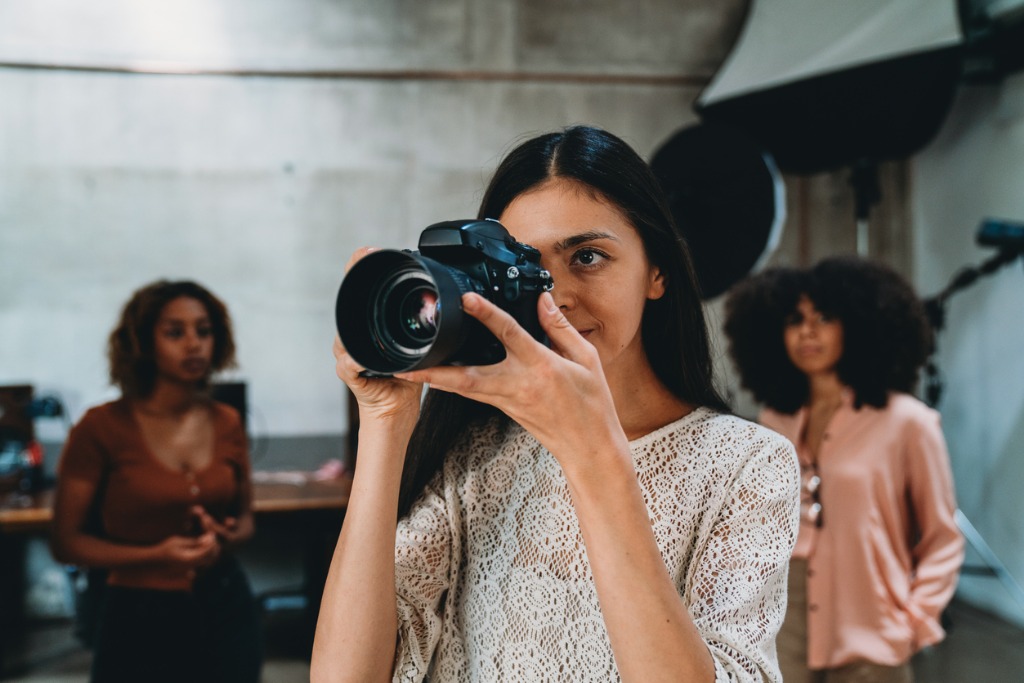
Photo by FilippoBacci via iStock
Before embarking on the trip to the best cheap camera for beginners, we need to decide on what features a good beginner camera should have. We’ll also add our usual disclaimer that there really is not one item that can be labeled the absolute best digital camera for beginners, but we can narrow it down to a few great ideas of where to start.
A good beginner camera should be simple to use, be very high quality, and allow room to grow. So let’s tackle these issues one by one to get some ideas.
A good beginner camera should be easy to get used to and a breeze to use. This means automation, but more than that, sophisticated automation. That automation should be able to be adjusted on the go as well. Just because someone is a beginner doesn’t mean shooting only for snapshots, so those sophisticated features are a must.
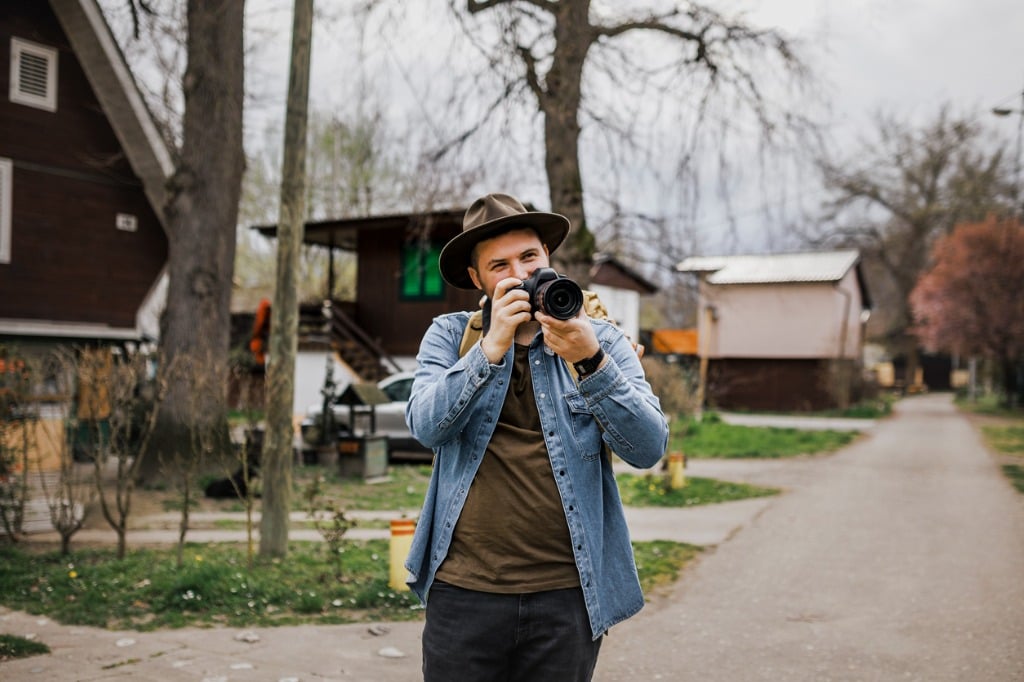
Photo by DjordjeDjurdjevic via iStock
Interchangeable lenses are high on the list of sophistication necessary since beginners will seek new ways to express themselves. Plus, those kit lenses or an all-in-one lens on a point & shoot camera always leave a new photographer wanting more. More reach, more wide angle, closer focus, more capability.
Interchangeable lens digital cameras and lenses are all very high quality. One surprising revelation for many photographers is that the sensors on the best cheap cameras for photography beginners are similar to what’s in higher-end cameras.
Having room to grow may sound like a cheesy phrase, but what it means to beginner photographers is that a good beginner will have more than simple automatic modes but also the capacity to adjust the important parts of the photographic process, either as semi-automatic or fully manual.
Watch the video above - “Photography Basic in just 13 Minutes” on the Photography Talk YouTube channel - for a fast look at what a beginner photographer needs to know.
The Case for Used Photography Equipment
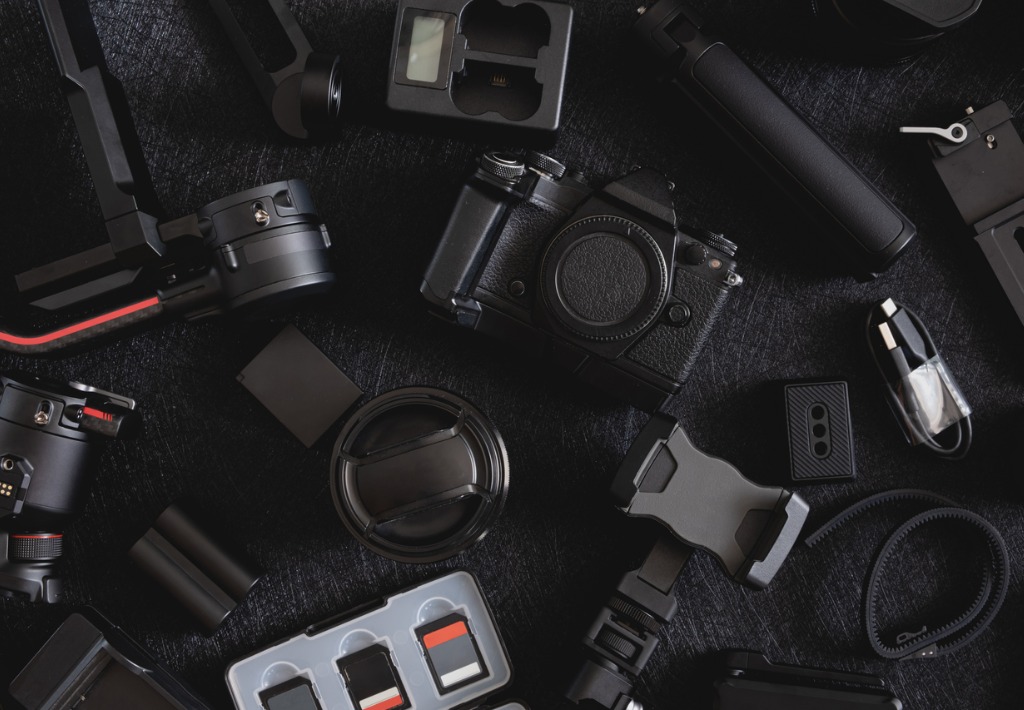
Photo by EKKAPHAN CHIMPALEE via iStock
The lowest prices on the best cheap cameras for photography beginners are going to be cameras that have been previously sold. It’s purely a matter of economics. Except for collectibles, virtually any big-ticket item is going to be less expensive once it’s been sold already as brand new.
The secret is to find those ticket items used from a trusted source. The online platform MPB is one of my favorite ways to obtain any new-to-me photographic item. The reason is guaranteed protection. No one wants to shell out good money on something that doesn’t work. The cameras and lenses at MPB have been thoroughly vetted and checked out to be in good working order.
Not only that, but MPB includes several safety protections for your purchases. First, the cameras and lenses are described accurately as to condition. If it says “Like New” or “Excellent” in the listing, it’s going to not just function properly but also look mostly new. Lower condition-rated cameras and lenses will still be fully functional, but the items may show wear from use, which will be fully disclosed on the listing.
MPB offers a 7-day return window on most purchases and a 6-month warranty as well. That means that you will definitely get a good camera for beginners that works as it should, or it’ll be taken care of for you. Honestly, I’ve never had to use any of these protections, and I’ve been frequenting MPB for years.
Saving money on used cameras and lenses means we can maximize our photography gear budget, allowing us to perhaps purchase another lens or two and a good flash unit besides just the best cheap camera for photography beginners.
Learn More:
Best Cheap Camera for Photography Beginners - Low Cost
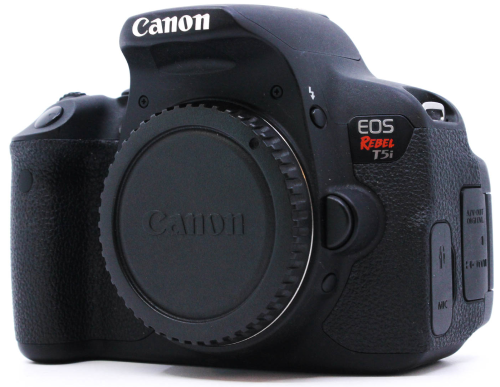
A very low-priced camera to consider as the best cheap camera for photography beginners is the Canon EOS Rebel T5i, also sold as the Kiss X7i outside of the USA. This is a DSLR-style camera with an APS-C format 18mp sensor, and it can record Full HD video.
Canon EF and EF-S lenses are suitable with it, such as the Canon EF-S 18-55mm f4-5.6 IS STM normal range zoom lens with a silent focus motor. This camera and lens are in excellent condition and right now are under $400 at MPB.
Best Cheap Camera for Photography Beginners - Medium Cost
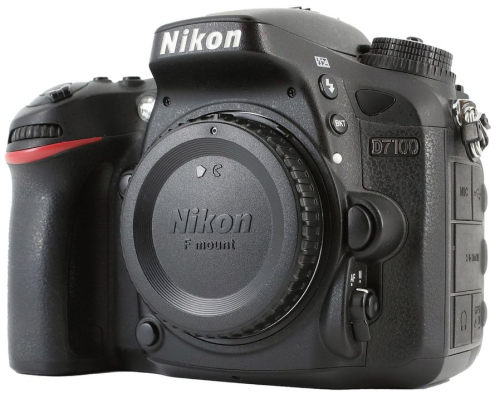
A prosumer DSLR camera you might want as your best cheap camera for photography beginners is the 24.1mp APS-C format Nikon D7100 camera. In addition to the regular features for beginners, it also has modes, functions, and features that advanced photographers prefer, such as exposure bracketing and 51-point AF. It also records video in Full HD.
Being a more advanced camera, you might want to pair it with a better lens than the kit zoom, such as the extended range Nikon AF-S DX Nikkor 18-200mm f/3.5-5.6G IF-ED VR wide to very telephoto zoom lens. Together in excellent condition, you can have this kit for around $550 at MPB.
Best Cheap Camera for Photography Beginners - Higher Cost
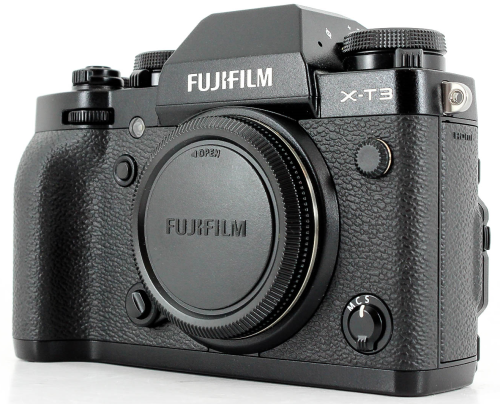
Sporting a very high-resolution X-Trans Fuji APS-C 26.1mp sensor, the Fujifilm X-T3 is a mirrorless camera that can accept all sorts of lenses by means of various adapters in addition to the superb Fujifilm lenses. It has a maximum shutter speed of 1/32000 and records 4K video.
A wonderful lens to use with this fine camera is the pro-quality Fujifilm XF 16-80mm f/4 OIS WR normal range zoom lens. In like-new condition, you can find this pair for about $1350 from MPB. Another awesome feature of Fujifilm mirrorless cameras is the +6 stop image stabilization.
Best Cheap Camera for Photography Beginners - Special Mention
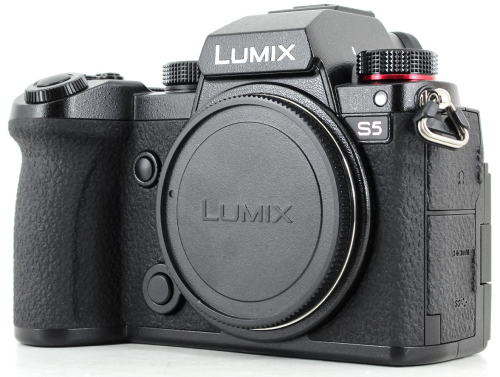
So far, we’ve looked at crop format APS-C format cameras for size and price considerations as the best digital camera for beginners. In Full Frame format cameras, check out the Panasonic Lumix DC-S5 24.2mp mirrorless camera. Part of the L-Mount system of cameras and lenses from Panasonic, Sigma, and Leica, this camera also records video in 4k 10-bit.
The image quality is absolutely fantastic, and you can use all sorts of lenses from the various makers as well as other mount lenses via adapters. A good first lens is the Panasonic Lumix S 24-105mm f/4 Macro OIS zoom lens. Together in like-new condition, this combination from MPB runs in the near $2200 range, which is outstanding for a Full Frame format outfit.
Lenses and Other Equipment from MPB
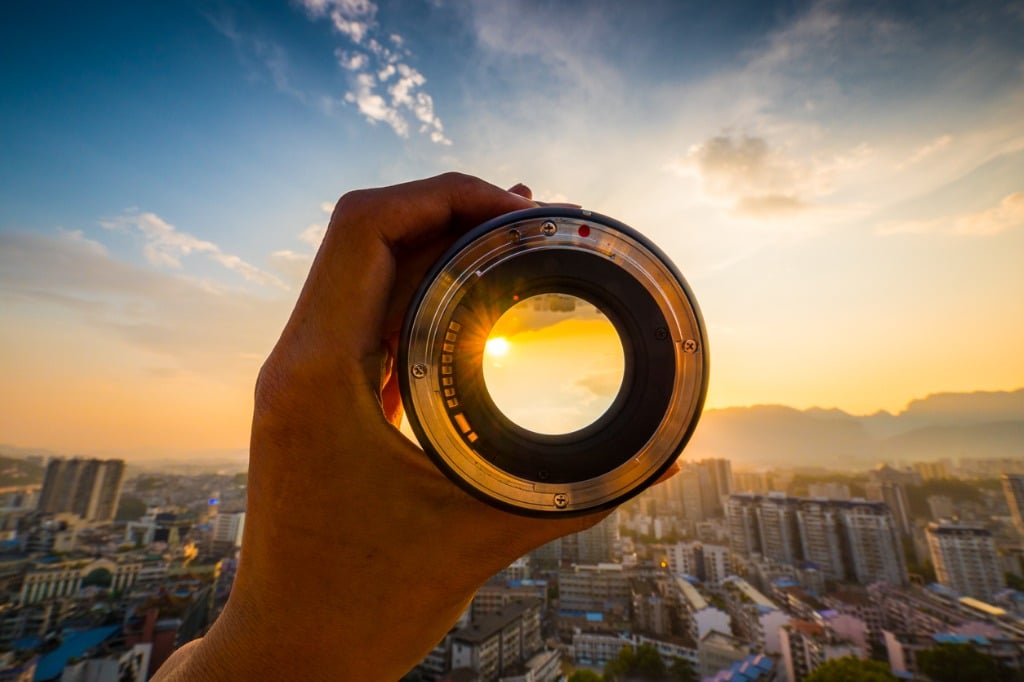
Photo by xijian via iStock
MPB has much more than the best digital camera for beginners. Over 1000 lenses, lighting equipment, tripods, camcorders, and drones, along with various accessories, can also be found in conditions from Like New to Excellent to Well Used.
Do your research as to what lens or accessory fits what camera, and you will save lots of money on very high-quality photography gear.
Final Thoughts
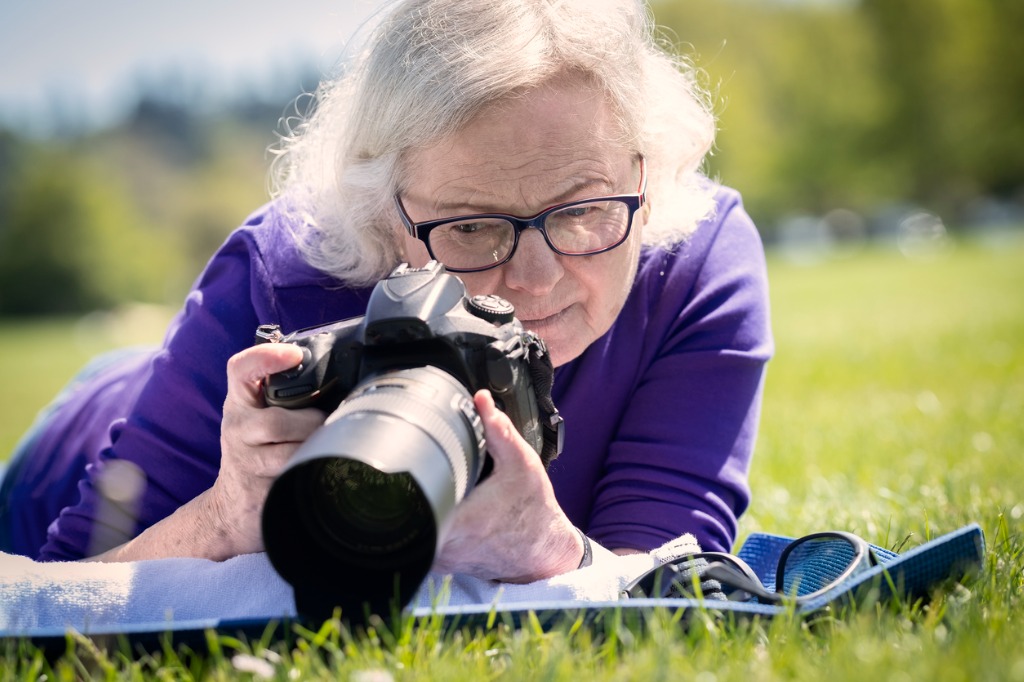
Photo by PamelaJoeMcFairlane via iStock
Finding the best cheap camera for photography beginners is easy to do once you know what to look for and where to shop.
The online platform MPB is a wonderful place to shop for all sorts of photography gear. Not only will you save money, but you will also easily find a good beginner camera for your budget and feature desires.
Learn More:
- Beginner Photography Primer: Types of Cameras Used for Photography
- The Most Versatile Focal Length
- Should I Still Buy a DSLR?
We Recommend
What is the Best Cheap Full Frame Camera?
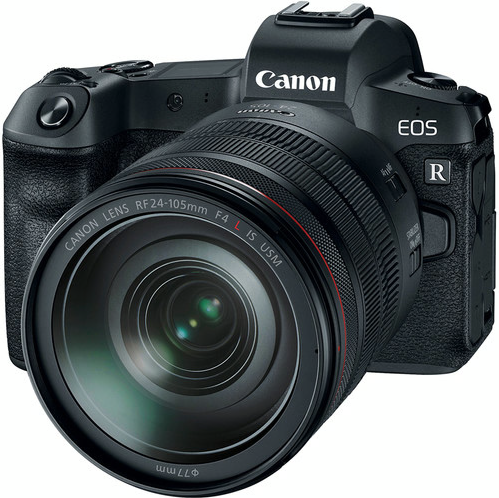
Are you looking for an inexpensive Full Frame format camera? Whether you want a second body to complement your existing gear or move into Full Frame format for the first time, the prices of some cameras can be a little concerning.
And yet, we want a good camera. So, what do we do? The answer is used camera gear. The best place to get used cameras and lenses is the online platform MPB.
You can find the best cheap Full Frame camera at MPB because they are experts in used photography equipment. Not only can you buy with confidence because of their attention to detail, great customer service, and protection policies, but you can also sell or trade in the gear you no longer want or use to offset the cost of your new-to-you Full Frame camera.
I use MPB all the time for cameras, lenses, and other accessories, and they have saved me a lot of money. Based on their descriptions and condition ratings, I know exactly what I’m getting, and I have yet to use their generous 6-month warranty and 7-day return/exchange window.
Follow along as I show what can be found at MPB as the best cheap Full Frame camera. Instead of my regular Good-Better-Best format, I’ll list several bodies that qualify as the best mirrorless Full Frame Camera.
Table of Contents:
- Best Cheap Mirrorless Full Frame Camera Challenge
- Best Cheap Full Frame Camera - Sony Alpha A7R
- Best Cheap Full Frame Camera - Nikon Z6
- Best Cheap Full Frame Camera - Canon EOS R
- Best Cheap Full Frame Camera - Panasonic Lumix DC-S1H
- Don’t Forget Lenses!
Best Cheap Mirrorless Full Frame Camera Challenge
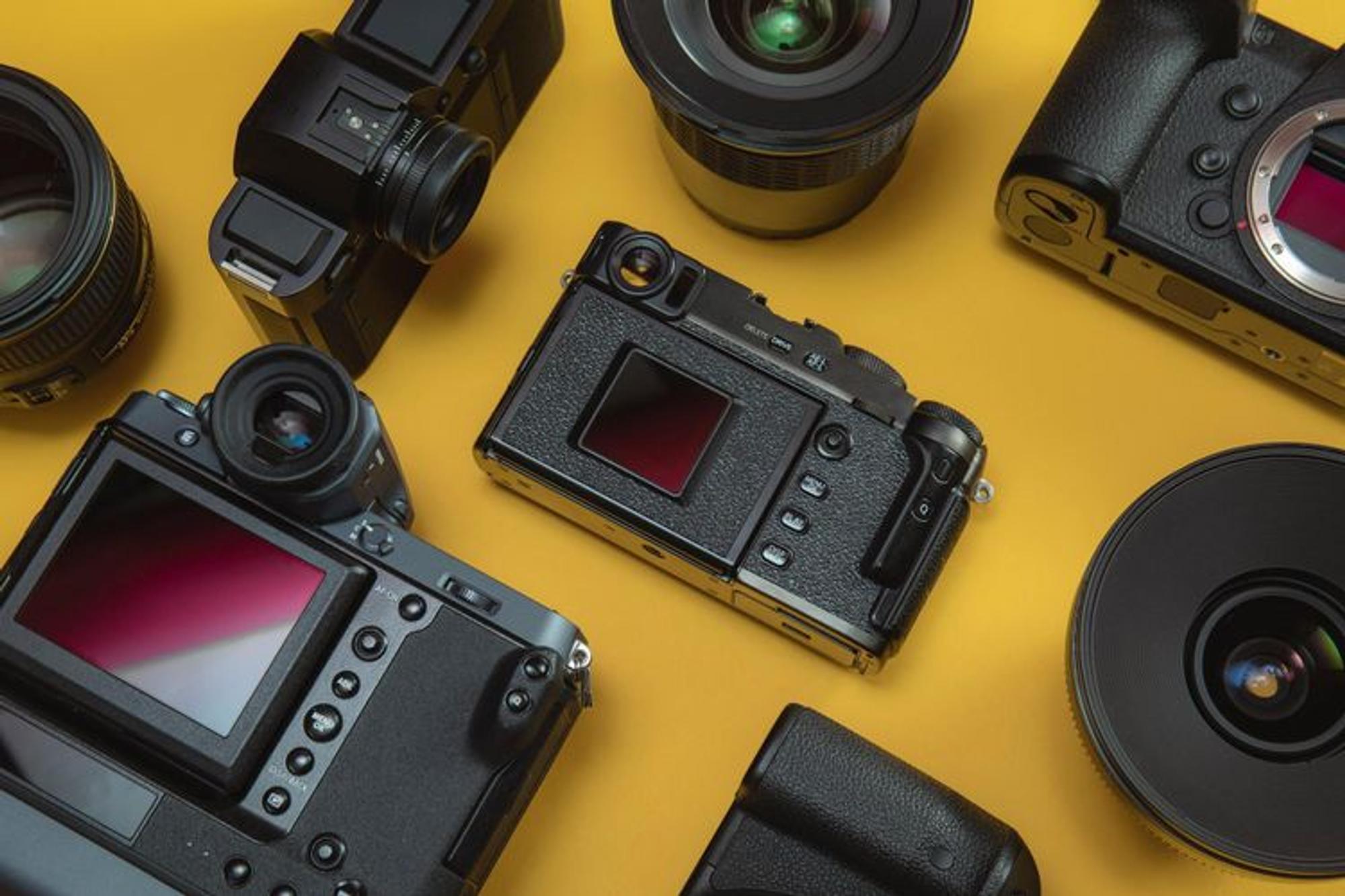
I decided to give myself the Best Cheap Mirrorless Full Frame Camera Challenge for a few reasons.
- Everyone likes saving money.
- Full Frame mirrorless cameras are versatile.
- Full Frame is a great format.
Let me take these one by one.
Saving Money
Used, or if you prefer pre-owned, cameras and lenses are a time-tested way to get great equipment for lower costs. Some people think "used" is only dusty, marginally working, ancient gear, which I have found at many stores and even buried under lace doilies at a yard sale.
The used gear I like for actual use is still relatively new, in great condition, and possibly even still on the market as brand new. Just as I can find a used car from the current model year for far less than a dealer showroom new car, I routinely find great examples of current or recently replaced cameras and lenses on the used market. And just like the vehicles, the pricing is always favorable.
Mirrorless Versatility
I decided to transition to mirrorless for my own personal gear because of its versatility. I can still use virtually any lens I’ve ever owned with the proper adapter. Mirrorless cameras are rugged. Most have superb video modes.
Full Frame Quality
All else being equal, capturing on a larger format produces better images and video. Obviously, things are rarely equal, so there is much room for different formats. I own and use several smaller format cameras, and I love the professional results.
But (here’s my big but), Full Frame format has a larger area, so images need less enlargement, often resulting in incredibly sharp images when printed as very large prints or shown on widescreen monitors. And larger formats have better low-light performance due to physically larger pixel sizes.
So, I wanted to see what’s available as usable, pro-capable, fun, and, above all, cheap camera options. I’ve listed these best cheap Full Frame camera bodies pretty much from lowest to highest prices, though prices can vary a lot on the used market.
Availability fluctuates quite a bit as well, so if there isn’t any camera in stock as you first look, MPB will take you to a place marker page for that camera model. Used gear comes and goes rapidly and constantly, so just come back in a day or two to find the one you want.
Best Cheap Full Frame Camera - Sony Alpha A7R
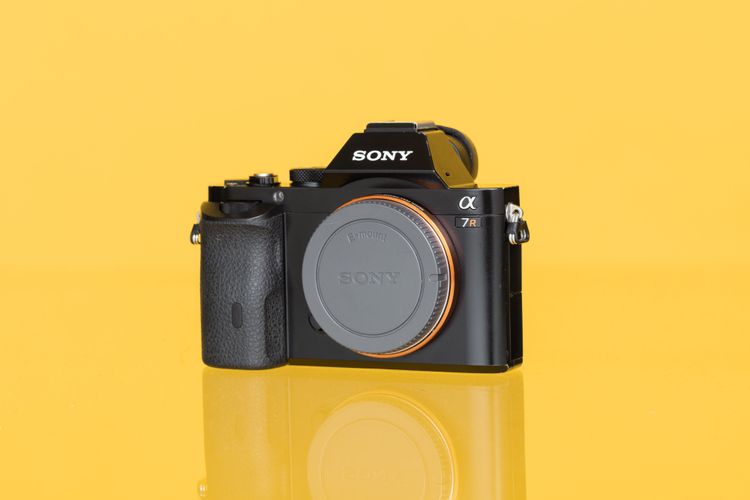
The Best Cheap Full Frame Camera - Sony Alpha A7R is the first up for discussion. Sony Alpha mirrorless cameras set an early and very high bar for professional-level, Full Frame format mirrorless cameras and haven't slowed down since.
Sony Alpha A7R was released in 2014 and boasts a 36.3MP sensor that is still on the higher end side of sensor resolution. The only thing that’s noticeably less than newer cameras is the lack of 4K video, though it does offer great quality Full HD video recording at 1080/60p and 24p.
Prices are fantastic for this heavy-duty camera, currently ranging at MPB from Good at $504 to Excellent at $559.
The Sony Alpha A7C is another good choice if you want an FE-mount camera that is smaller and lower in weight. Introduced in 2020, this camera is smaller and lighter than many crop sensor cameras. It will run in a higher price range, a little more than double what the A7R costs.
Best Cheap Full Frame Camera - Nikon Z6
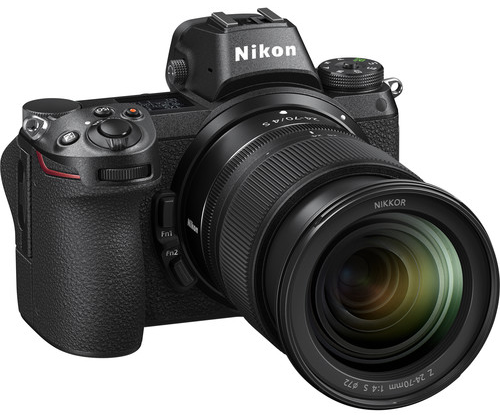
The Best Cheap Full Frame Camera - Nikon Z6 is one of two mirrorless bodies with a new lens mount Nikon introduced in 2018. Nikon went all-in with the Nikon Z6 and Z7 mirrorless cameras and numerous professional-level lenses.
It’s a fantastic camera that is fully professional but with ease-of-use features that appeal to more intermediate or even entry-level users. There was some noise about the new memory card format (and only having one card slot), but it has proven to be a great move.
The Nikon Z6 has a 24.5MP sensor and can record 4K video. The low light performance of this camera is outstanding, and it is also a favorite camera for videographers moving up to Full Frame format 4K recording. You can find this on MPB, ranging from $774 for Good condition up to $839 for Excellent.
Nikon announced a true entry-level Full Frame mirrorless camera, the Nikon Z5, in 2020 that is in the running for the best cheap Full Frame camera, too. I found it at around $919 for a Like New condition camera body.
Best Cheap Full Frame Camera - Canon EOS R
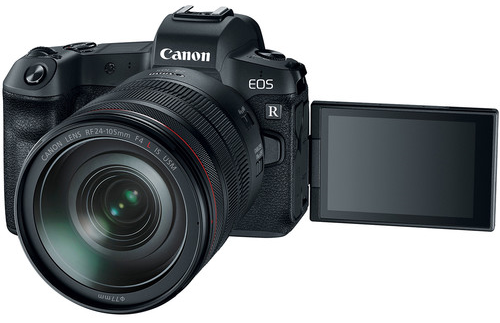
The Best Cheap Full Frame Camera - Panasonic Lumix DC-S1H deserves some love here as an awesome contender for the best cheap Full Frame camera title.
A joint project for a new mirrorless Full Frame format camera and lens mount system was announced in 2018, with Leica, Panasonic, and Sigma combining forces. The resulting cameras and lenses have been spectacular examples of high-quality equipment at surprisingly reasonable prices, even for showroom-new gear.
The Panasonic Lumix S1H was brought to market in 2020 and still looks good. It definitely belongs on this list of the best cheap Full Frame camera models. This camera uses a 24MP sensor to deliver superb low-light performance and jaw-dropping 6K video quality.
You read that right, 6K, not 4K. This camera is a favorite among advanced hybrid (dual videography/photography) shooters. It’s a wonderful pro-level camera for general use as well. I found it at MPB for $2049 in Like New condition.
With a huge selection of native lenses and virtually unlimited access to vintage lenses with the proper adapter, L-Mount cameras deserve a look.
Best Cheap Full Frame Camera - Panasonic Lumix DC-S1H
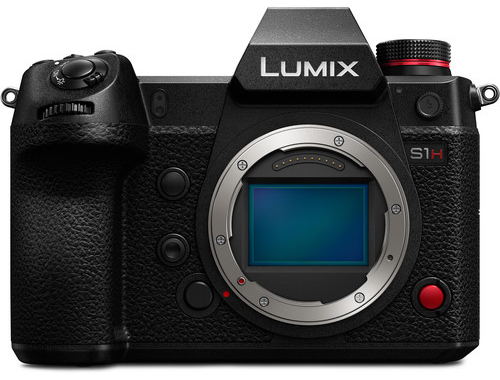
The Best Cheap Full Frame Camera - Panasonic Lumix DC-S1H deserves some love here as an awesome contender for the best cheap Full Frame camera title.
A joint project for a new mirrorless Full Frame format camera and lens mount system was announced in 2018 with Leica, Panasonic, and Sigma combining forces. The resulting cameras and lenses have been spectacular examples of high-quality equipment at surprisingly reasonable prices, even for showroom-new gear.
The Panasonic Lumix S1H was brought to market in 2020 and still looks good. It definitely belongs on this list of best cheap Full Frame camera models. Using a 24MP sensor, this camera delivers superb low light performance and jaw-dropping 6K video quality.
You read that right, 6K, not 4K. That makes this camera a favorite among advanced hybrid (dual videography/photography) shooters. It’s a wonderful pro-level camera for general use as well. I found it at MPB for $2049 in Like New condition.
With a huge selection of native lenses along with virtually unlimited access to vintage lenses with the proper adapter, L-Mount cameras deserve a look.
Don’t Forget Lenses!
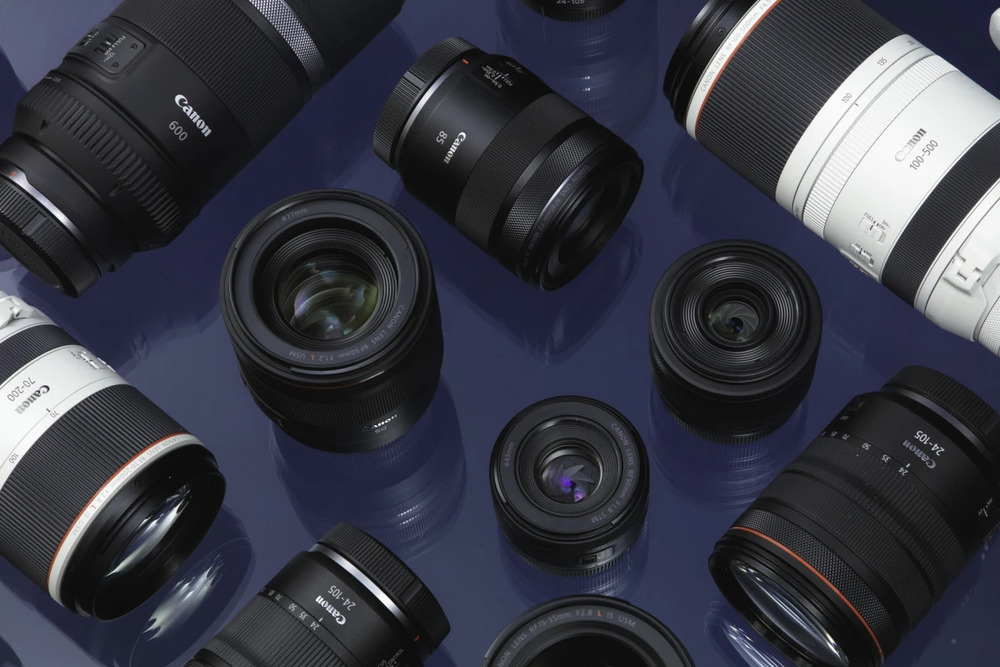
That’s just a short rundown of the best cheap Full Frame cameras I found on MPB. You will also want to check out all of the fine lenses for these Full Frame mirrorless cameras to get yourself outfitted with a truly excellent Full Frame camera setup!
Learn More:
We Recommend
What is the Best Cheap Mirrorless Camera for Video?
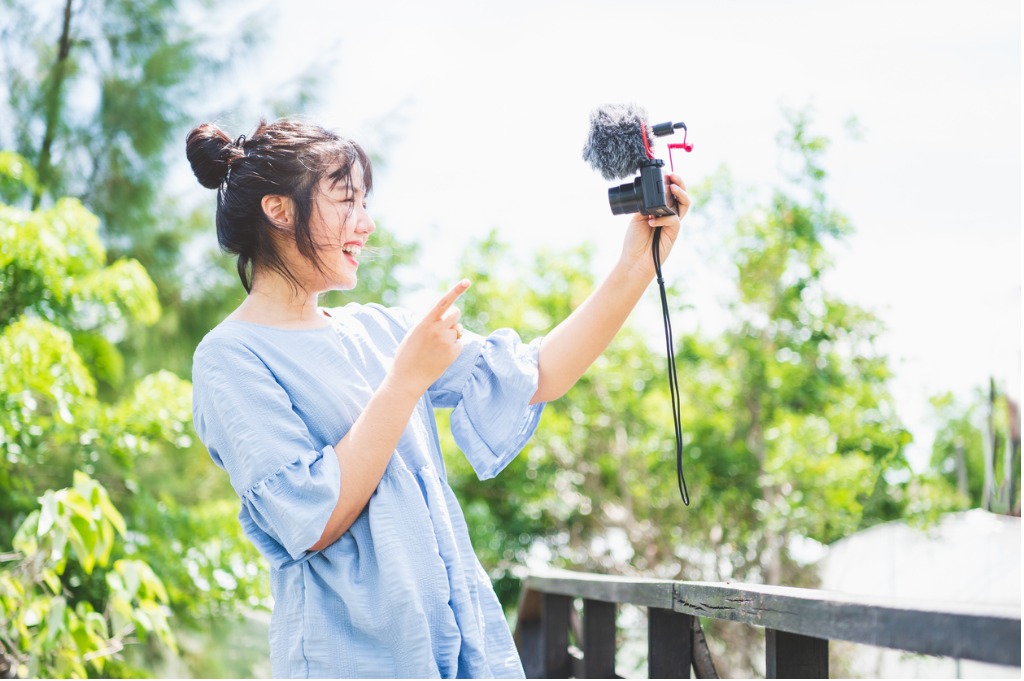
photo byShutter2U via iStock
Back in the day, only dedicated cinema cameras could produce high-quality videos. Lucky for us, that is no longer the case! Thanks to the booming tech industry, cameras are becoming cheaper and more advanced every year.
Today, even low-budget mirrorless cameras produce drool-worthy video content. For even better deals, I suggest buying a mirrorless camera second-hand. There have never been more for sale, and if you know where to look, you can even purchase one backed by a warranty.
One place I have bought gear from and keep going back to is MPB.com. They are one of the most prestigious used camera gear retailers worldwide and have a vast selection of cameras for unbeatable prices.
Today, I want to share my three favorite cheap mirrorless cameras for video. Below, I include highlights of their key features and specs, as well as details of their strengths and weaknesses. So, what are we waiting for? Let’s go check them out now!
Table of Contents
- Good Cheap Mirrorless Camera for Video
- Better Cheap Mirrorless Camera for Video
- Best Cheap Mirrorless Camera for Video
- More Fantastic Cheap Mirrorless Cameras for Video
Good Cheap Mirrorless Camera for Video
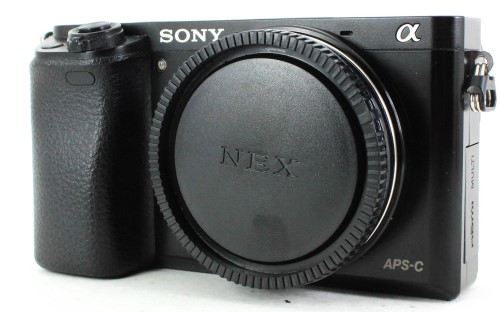
The Sony Alpha A6000 is hands down the top budget mirrorless camera for video for beginner photographers and those on a tight budget.
First released in 2014, it’s an oldie but a goodie that is still one of the most popular mirrorless cameras on the market. In fact, this awesome pocket-sized camera is the most-sold mirrorless camera of all time!
It boasts a 24MP APS-C CMOS sensor and a Bionz X image processor. Additionally, it has an ISO range of 100-25600 and lightning-fast autofocus. Sony mirrorless cameras are world-renowned for their AF technology, and the A6000 is no different. While shooting in continuous autofocus, it has no issues maintaining focus on moving subjects, even in video mode.
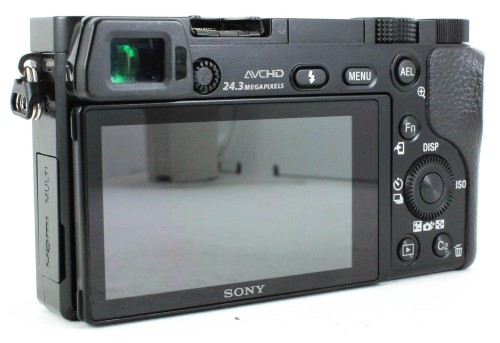
More terrific features of this cheap mirrorless camera for video are a one-hour battery life when filming, a recording limit of 30 minutes, and built-in Wi-Fi, allowing you to transfer files to your phone seamlessly. Furthermore, it uses the Sony E-Mount lens system, which has a massive selection of great lenses for video.
The biggest drawback of the Sony A6000 is that it can’t shoot 4K footage. However, it can record 1080p Full HD video in 24, 25, 30, and 60 fps. Shooting in Full HD is more than enough for those new to video. If 4K is a dealbreaker for you, you will want to go with one of the other cameras below.
Better Cheap Mirrorless Camera for Video
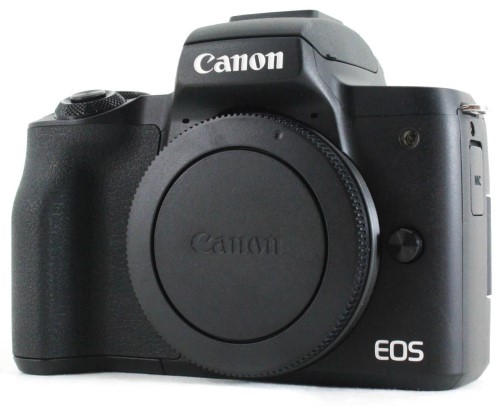
Another excellent cheap mirrorless camera for video is the Canon EOS M50 Mark II.
It hit the market towards the end of 2020 and is one of the most sought-after cameras by vloggers and YouTubers.
Like the Sony A6000, it also features a 24MP APS-C CMOS sensor. What it has that the Sony doesn’t is a powerful Digic 8 image processor. The new processor allows the Canon M50 Mark II to capture 4K footage at 24 fps. On top of that, it can also record 1080p Full HD at frame rates of 24, 30, and 60 fps.
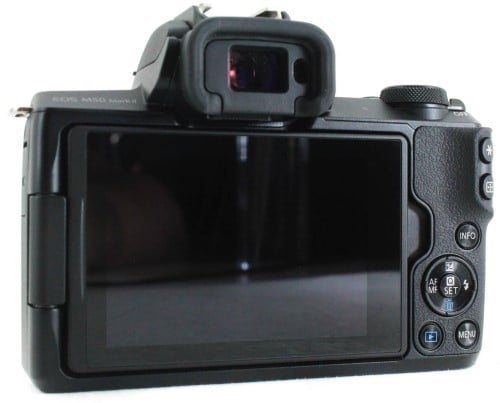
A few other killer features of this cheap mirrorless camera for video are the fully articulating rear LCD screen, the ability to live stream to YouTube wirelessly, and built-in 5-axis image stabilization. Image stabilization is an enormous advantage, especially if you expect to shoot lots of handheld videos.
One important thing to note is that when shooting in 4K, the camera applies a 1.5x crop. Because of this, if you want to get wide shots, it’s often best to record in 1080p.
Moreover, the lens lineup is my only tiny qualm with this cheap mirrorless camera for video. As of now, there are only eight native Canon EF-M lenses. With that said, you can easily access Canon's complete catalog of lenses using a lens adapter.
Learn More:
Best Cheap Mirrorless Camera for Video
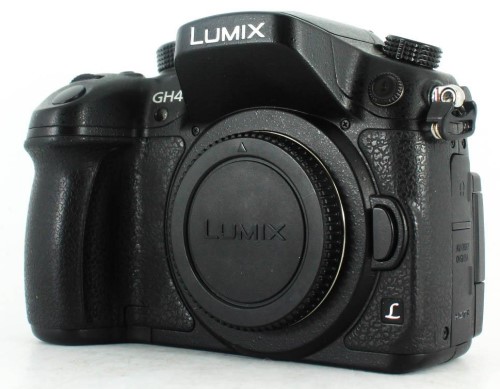
Without a doubt, my top recommended cheap mirrorless camera for video is the Panasonic Lumix DMC-GH4. Even though it’s been on the market for a while, it’s still an absolute beast of a video camera.
But, one great thing about older cameras is that you can usually find used ones for incredible bargains on websites like MPB.com.
This camera comes packed with a 16MP Micro Four Thirds sensor and a Venus Engine IX image processor. This potent duo helps the Panasonic GH4 perform less like your average mirrorless camera and closer to a high-end cinema camera. I guarantee you will be absolutely blown away by the video performance!
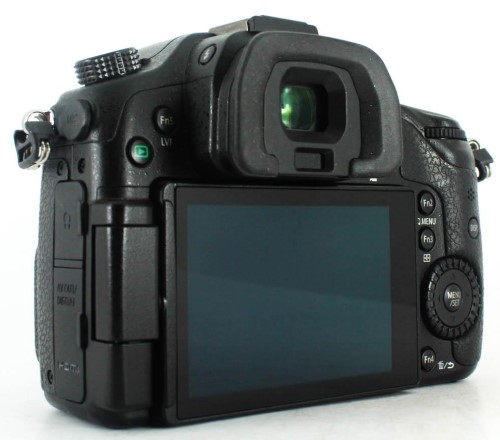
Regarding video quality, it films stunning video footage in two distinct sizes of 4K. DCI Cinema 4K (4096 x 2160) at 24 fps and UHD 4K (3840 x 2160) at 24, 25, and 26 fps. In addition, it captures 1080p Full HD at 24, 25, 30, 50, and 60 fps. Whether you want your final product in 4K or not, I always recommend filming in 4K and then resampling your footage when editing.
Other tremendous features of this cheap mirrorless camera for video are a well-thought-out design, astonishing low-light capabilities, rapid autofocus, and a battery life that leaves most other cameras in the dust. You can expect to get right around two hours out of a fully charged battery when shooting 4K video.
For videographers and filmmakers with a bit of experience, or those looking to take their content to the next level, this is definitely the best cheap mirrorless camera for video!
More Fantastic Cheap Mirrorless Cameras for Video
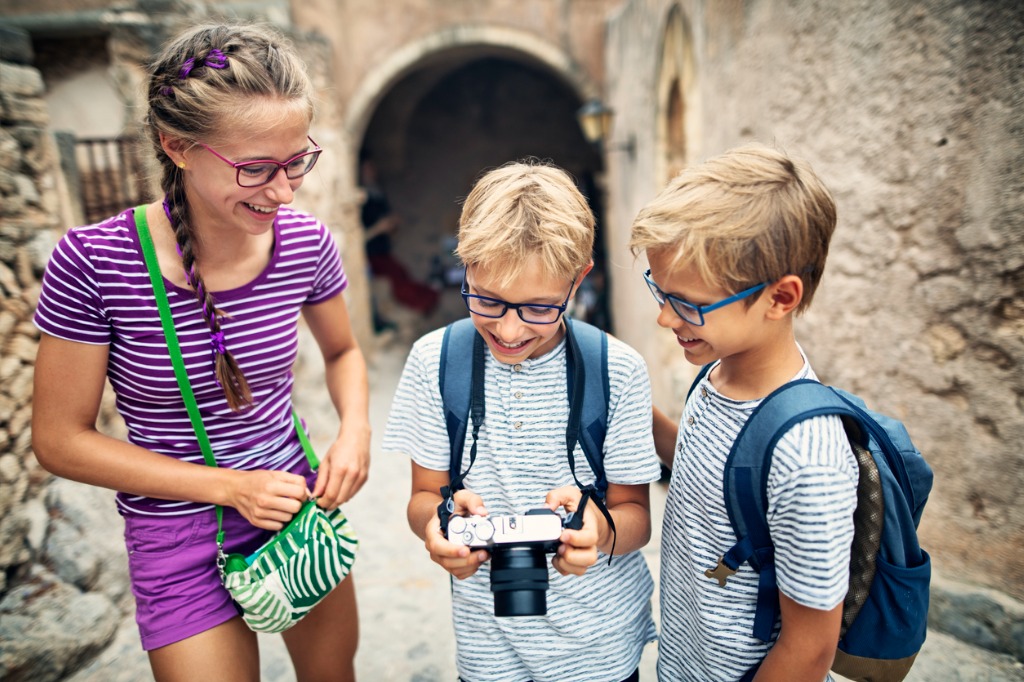
photo byImgorthand via iStock
Those are far and away my favorite budget mirrorless cameras for video, but they are certainly not the only ones out there…
Every photographer and videographer is different and requires different things from a camera. If you want to keep browsing, check out the list below of more fabulous cheap mirrorless cameras for video!
- Fujifilm X-T30
- Panasonic Lumix DMC-GX85
- Olympus OM-D E-M10 Mark IV
- Panasonic Lumix DMC-G7
- Nikon Z fc
Learn More:
We Recommend
What is the Best Used Digital Camera Under $100?
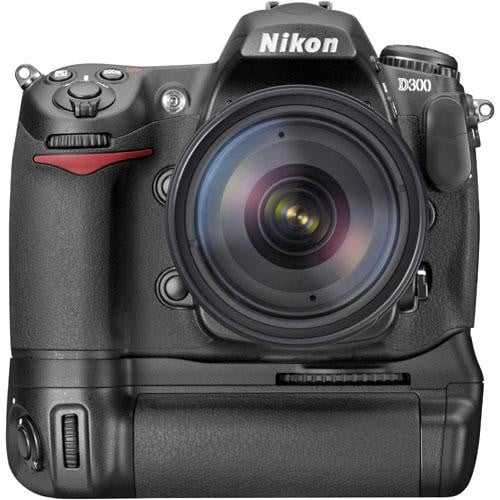
I had a fun project in mind that I thought some of you might really enjoy. I wanted to find a good, usable digital camera under $100. Can it be done? Spoiler alert: Yes!
How you find a nice camera for such a low price is to look at used cameras. I found multiple examples of a high-quality used camera under $100 at my favorite online platform for pre-owned photography gear, MPB.
I like MPB because they have a great quality control system, stand behind their stuff with a 6-month warranty, and let me trade in or sell my unneeded stuff to them. Their quality control begins before they take in a camera, inspecting each item prior to making an offer.
If they decide to accept any camera, lens, or accessory, it gets listed as the exact condition it is, including shutter count on cameras. There are also pics on the site of the actual item being listed.
Here is a video from the MPB YouTube channel explaining their condition ratings:
Now we can talk about some of the specific items I found as a digital camera under $100. Keep in mind that inventory changes daily, so check back if the camera you want is out of stock.
Table of Contents:
- Why I Want a Digital Camera Under $100
- Nikon D300 Camera Under $100
- Canon EOS 50D Camera Under $100
- Pentax K10D Camera Under $100
- Sony Alpha A700 Camera Under $100
- Panasonic Lumix DMC-G5 Camera Under $100
- You Need a Lens, Too!
Why I Want a Digital Camera Under $100
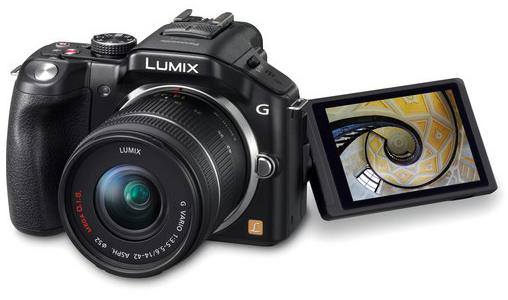
I’m a professional photographer, and some memory cards cost over $100! So, why am I searching for any camera under $100? Primarily to give entry-level photographers, such as students, the opportunity to use high-quality equipment without busting a modest budget.
A good camera under $100 is also a great entry point for anyone wanting to try out a more involved level of photography than they get from point-and-shoot (P&S) cameras or smartphones. This lets them test out how involved they may wish to be without a large cash investment.
A third reason is I sometimes like to use them myself. I love teaching other people the art and craft of photography. Utilizing a camera under $100 lets me know what an entry-level but serious photography newcomer might be using. I can be ready with tips and ideas based on the types of cameras available.
Any current serious level camera under $100 will likely be a DSLR style and several years old. The crop formats will also be much more common at this price point. Interestingly, I found many of the cameras under $100 were higher level cameras when first introduced, like advanced intermediate, prosumer, and pro cameras.
Nikon D300 Camera Under $100
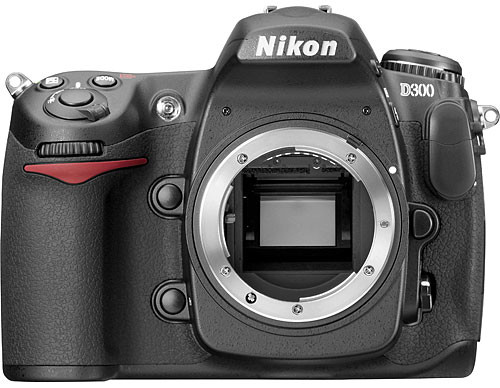
My first listing for a digital camera under $100 is the Nikon D300, a pro-level APS-C format DSLR with a stellar reputation. Reviews posted when this camera was introduced showed its rugged build, fantastic ergonomics, and excellent image quality.
Nikon D300 was the junior brother of the full-fledged professional camera in Full Frame format introduced near the same time, the Nikon D3. The features include a 12.3MP APS-C sensor, 51-point AF, high-speed motor drive, and HDMI video output.
This model saw great success in the professional photography market, and as a result, lots of the D300 cameras on the market now will have a fairly high shutter count. The life expectancy of this camera is awesome, though, so I wouldn't worry about a moderately higher shutter count as long as the camera is in decent shape.
It takes AF-S Nikon and Nikkor lenses, and many older F-Mount lenses will also fit and work, just without certain automatic features and functions. Check lens compatibility online to be certain before mounting any significantly older lenses.
In Nikon-speak, DX lenses are for APS-C and FX lenses for Full Frame format. The crop factor of DX vs FX is 1.5X.
Canon EOS 50D Camera Under $100
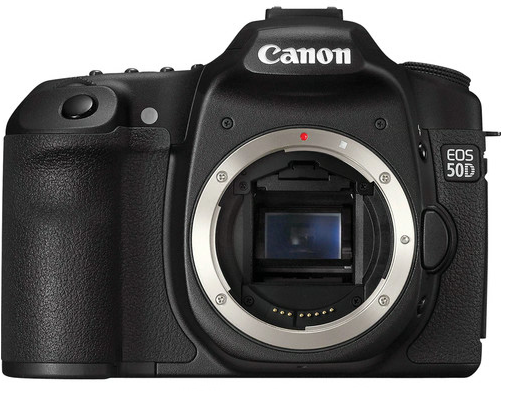
Another wonderful high-level digital camera under $100 is the Canon EOS 50D APS-C format DSLR. This fine camera is in the upper intermediate or prosumer levels of cameras.
It has a rugged build and excellent controls and features. The APS-C format sensor is 15.1MP and has impressive low-light capability for a crop sensor camera. A huge point is that any Canon EF-Mount lens from the mid-1980s and on will fit and function, though the AF may be slower with older lenses.
Lenses for the Canon EOS cameras are labeled as EF for Full Frame format, while EF-S are designed for crop format. There is a 1.6X crop factor for EF-S vs EF lenses.
Pentax K10D Camera Under $100
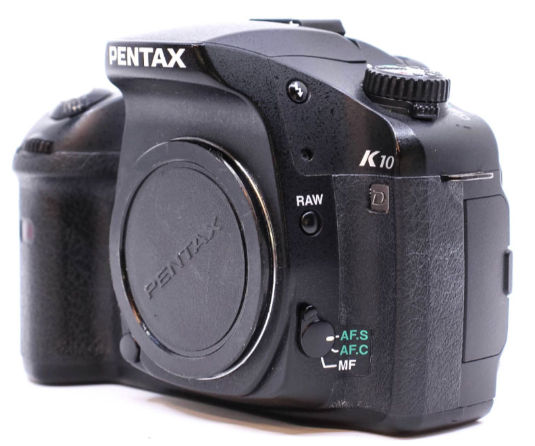
I’ve always liked Pentax cameras. The K-1000 is a fine example of a no-frills but fully capable 35mm film camera that was the backbone of high school photography classes for several decades.
For a digital Pentax camera under $100, I choose the Pentax K10D APS-C format DSLR camera with a 10.2MP sensor. This camera is a prosumer level with its rugged build, dust sealing, and advanced features.
Among the advanced features it has is in-body image stabilization. Even currently, IBIS isn’t standard for a DSLR, though it is for most mirrorless cameras. This means that almost any K-Mount lens made since 1975 will fit and operate (some functions are limited) on this camera. The crop factor is 1.5X.
In fact, with the UM-42 to K-Mount adapter that was often sold to K-Mount users during the heyday of 35mm film popularity, you could actually get limited image stabilization with a lens that is close to 80 years old! Full-aperture metering isn’t likely with those older lenses, and, of course, there is no AF, but that’s pretty impressive as it is.
Sony Alpha A700 Camera Under $100
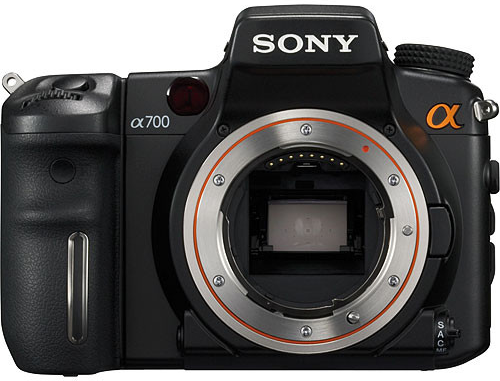
Sony took over the imaging portion of the Minolta camera company, so many of the early Sony digital cameras were very similar to the last Minoltas. The Minolta Maxxum 7000 was the first truly successful mass-market, serious autofocus 35mm SLR. Sony has continued, actually improved upon, the fine photography reputation of Minolta.
An earlier but still currently usable DSLR in this lineup is the Sony Alpha A700 camera. The lens mount for Sony/Minolta DSLRs and SLRs is called A-Mount. Sony E and FE lens mounts are for their mirrorless cameras. Any A-Mount lens will fit and function on the A700. The crop factor is 1.5X.
Sony Alpha A700 has a 12.24MP APS-C format sensor, built-in image stabilization, rugged construction, and rapid autofocus. This is a worthy selection in our search for a high-quality digital camera under $100 that a person could learn on.
Panasonic Lumix DMC-G5 Camera Under $100
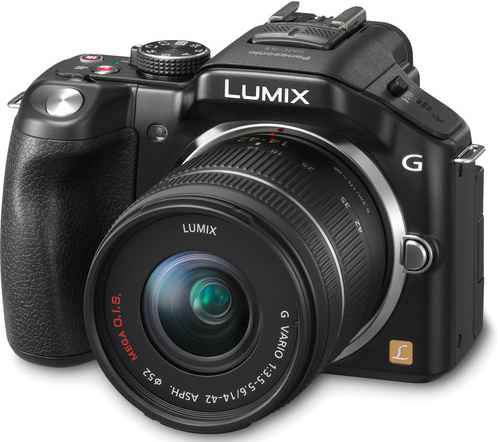
Panasonic Lumix DMC-G5 is the only MFT (Micro Four Thirds, Micro 4/3rds) camera on my list of a fine digital camera under $100, but it’s not the only example of one. But I have to stop my list somewhere.
A mirrorless camera with in-body image stabilization, professional build and features, and a 15.9MP MFT format sensor (crop factor 2.0X), this camera is the smallest and lightest in my list and, with the proper adapter, can take so many different lenses, it’ll make your head spin.
You Need a Lens, Too!
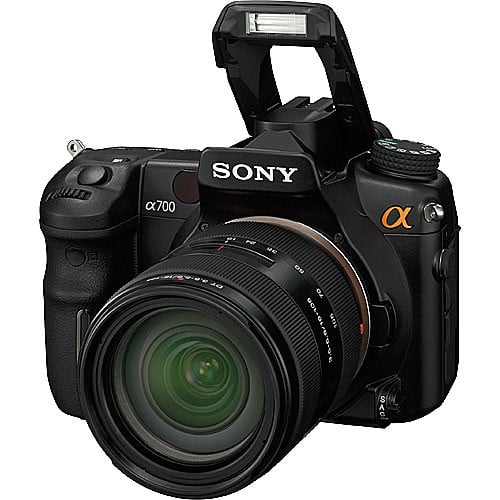
Don’t forget, you’ll need a lens to go with your camera under $100. MPB has you covered there, too. MPB makes sure to correctly label each lens as to mount and format compatibility, besides their already great condition descriptions.
The common kit lens for APS-C format cameras is in the 18-55mm range. Many can be found on MPB for around $50. Add a nice strap and an extra battery, plus some memory cards, and you could come home with a great learner camera outfit for right around $200.
Find your best digital camera under $100 and start having fun today.
Learn More:
- What Is Shutter Count (And Other Important used Camera Questions)
- 4 things to Look For when Buying a Used Camera Lens
- What Is a Prime Lens?
We Recommend
Why the Panasonic GH3 is a Good Buy in 2022
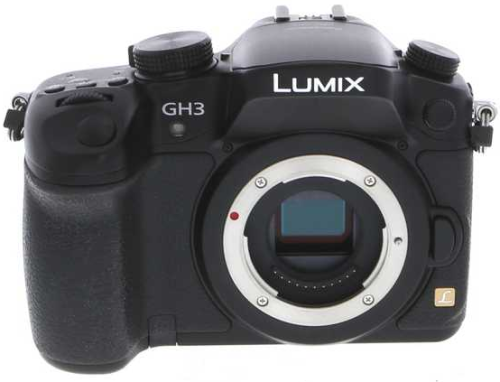
Without a doubt, one of the best mirrorless cameras for beginner photographers is the Panasonic Lumix GH3. Despite its older age, it’s a powerful camera loaded with competitive features that still hold up today. Furthermore, its affordable price makes it an absolute steal for people looking to learn the ins and outs of photography.
In this Panasonic GH3 review, we share absolutely everything there is to know about the camera. We start with a general overview of the key specs and features before taking a closer look at how it functions for stills and video work, respectively.
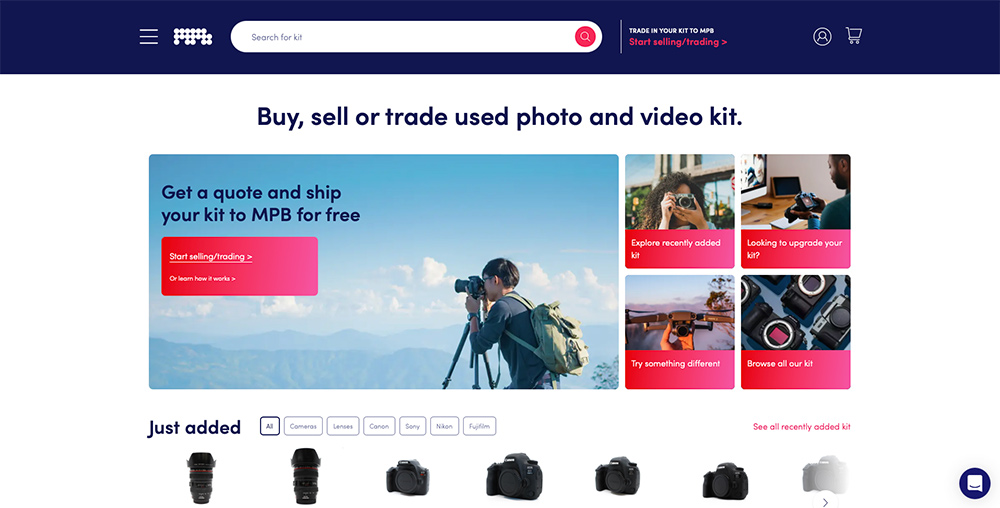
One excellent resource with loads of used Panasonic GH3 cameras in stock and a place I have bought and sold countless photo and video gear throughout the years is MPB. They are a trustworthy and reliable online platform that sells used photo and video kit at unbeatable prices.
Moreover, all of their cameras are meticulously hand-inspected by experienced product specialists and backed by warranties, allowing you to make your purchases confidently and worry-free.
Do you have any old or unused camera gear lying around? Guess what? You can also use MPBs online marketplace to sell or trade-in equipment you already have and use the proceeds towards awesome new-to-you gear. It’s an excellent way to offset costs and save even more on the equipment you want and need.
With that said, it’s time to dive in and learn why the Panasonic GH3 remains a capable camera in 2022!
Table of Contents
- Panasonic GH3 Overview
- Panasonic GH3 Imaging Capabilities
- Panasonic GH3 Video Capabilities
- Final Thoughts on the Panasonic GH3
Panasonic GH3 Overview
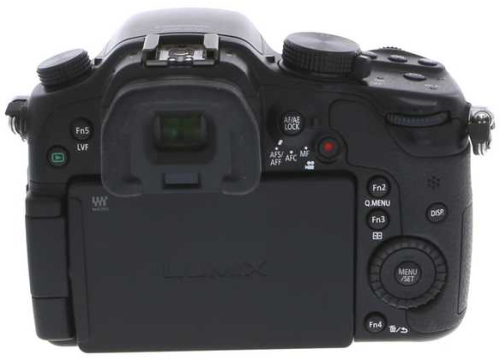
The Panasonic GH3 is a crop sensor mirrorless camera that was released in November of 2012. Since its debut, three new cameras in Panasonic’s standard “G” lineup have supplanted it. First, in 2014 there was the Panasonic Lumix GH4. Then in 2017, Panasonic launched the Lumix GH5. And most recently, the all-new Panasonic Lumix GH6 came out in February 2022.
The Panasonic GH3 boasts a 16.1-megapixel Four thirds sensor and a Venus Engine VII FHD image processing engine. The two combine to help deliver sharp photos and videos time after time. Also, thanks to its Micro Four Thirds lens mount system, this camera has a huge selection of native Micro Four Third Lenses.
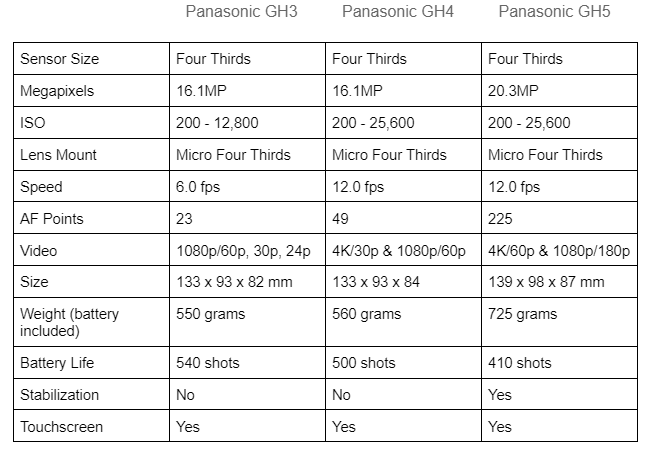
The camera is made of a durable magnesium alloy with a weatherproof coating that protects it from moisture and dust. Additionally, it is smaller and lighter than its successors, making it ideal for everyday use, travel, and even for kids.
The Panasonic GH3 was the first Panasonic G mirrorless camera to include an OLED rear display and OLED electronic viewfinder (EVF). Both are accurate and responsive and help increase workflow efficiency. Finally, the camera’s five customizable Fn buttons, two control dials, and touchscreen capabilities enhance productivity in photo and video modes even further.
Learn More:
Panasonic GH3 Imaging Capabilities
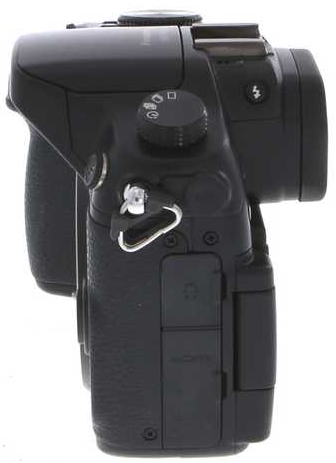
For still photography, the Panasonic GH3 works great. The resolution from the 16.1MP image sensor is sharp, and pictures taken on the GH3 have excellent edge-to-edge detail retention. In addition, you can select to shoot either JPEG or RAW files. RAW images have a higher dynamic range and are better for editing, but if you are a beginner, I recommend sticking with JPEGs.
As for the out-of-the-camera colors, they are on par with other older mirrorless cameras like the Sony Alpha a6500 or the Olympus O-MD E-M5. For the most accurate and natural-looking colors, I suggest shooting JPEGs and boosting the in-camera saturation ever so slightly.
One area where the camera lags behind competing models is low-light performance. Four Thirds imaging sensors are smaller than APS-C and full-frame sensors, and therefore less light ultimately hits the sensor. Also, the max ISO of 12,800 is on the low end. However, the Panasonic GH3 has noise reduction technology which helps boost low-light image quality.
Another thing I love about this camera is its creative photo modes. The HDR mode can capture numerous images, increases clarity, and makes colors pop. On the other hand, the multiple exposure mode allows you to shoot two photos and overlay them on top of each other for exciting and unique results.
Panasonic GH3 Video Capabilities
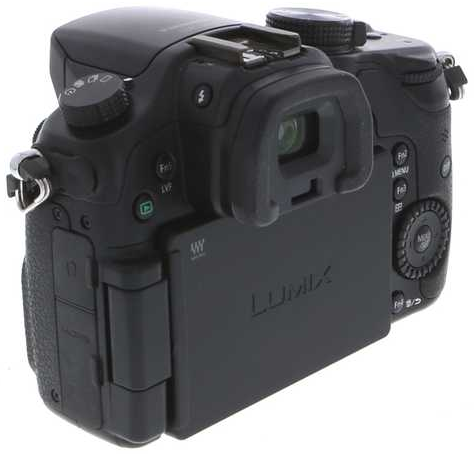
If you like recording videos, you will be thrilled to hear that the Panasonic GH3 is also a fantastic video camera. And although it isn’t the best option for professional videographers, thanks to its lack of 4K, it’s ideal for beginners and intermediates. Plenty of vloggers and YouTubers have also had great success with this camera.
It shoots 1080p Full HD footage at frame rates of 24, 25, 30, 50, and 60 frames per second. Regardless of the frame rate you choose, video quality is superb. If you want to create slow-motion footage, the best method is to use 1080p/60p and then slow down the footage manually in post-production.
Thanks to a built-in intervalometer and the fun time-lapse mode, you can also create exquisite time-lapse movies directly in the camera. This mode eliminates a massive step from the editing process and is perfect for capturing sunsets, sunrises, stars, and more.
Other notable video features of the Panasonic GH3 include a fully-articulating touchscreen display, timecode support, and microphone and headphone jacks. The articulating screen makes composing images easier, and the multiple jacks improve audio quality.
Final Thoughts on the Panasonic GH3
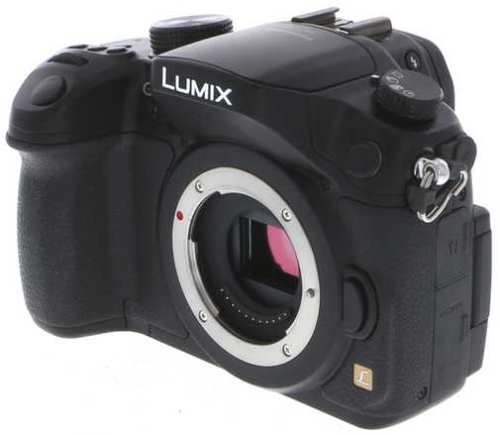
While it may not be the newest or coolest kid on the block, the Panasonic GH3 certainly still has a place in 2022. Whether you are a beginner looking for the ideal camera to learn on, or someone on a budget, the Panasonic GH3 is the perfect camera for you!
If you do decide to get a GH3, or any other Panasonic or Olympus camera, here are some of the most popular used Micro Four Thirds lenses to pair with it that are currently on sale at MPB:
- Panasonic Lumix G 25mm f/1.7 ASPH
- Panasonic Lumix G 42.5mm f/1.7 ASPH Power O.I.S.
- Panasonic Lumix G Vario 7-14mm f/4 ASPH
- Olympus M.Zuiko Digital ED 40-150mm f/2.8 PRO
- Panasonic Leica DG Vario-Elmar 100-400mm f/4-6.3 ASPH. Power O.I.S.
Learn More:
We Recommend
Why the Panasonic GH4 is Still a Great Camera for Video
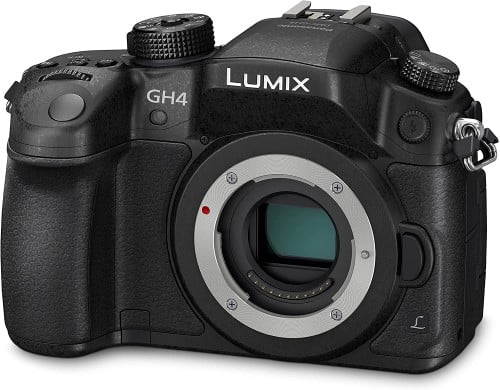
The Panasonic Lumix GH4 may have originally been released in 2014, but it’s one of those cameras that just refuses to go away! In fact, even now it’s still one of the most popular and sought-after cameras by videographers and vloggers alike.
The outstanding features and specs of this camera still hold up great in comparison to newer cameras, and thanks to the release of the Panasonic Lumix GH5, the Panasonic GH4 has never been cheaper. Today, you can get your hands on one of these spectacular cameras for only a fraction of the original cost if you shop through a used gear retailer such as mpb.com.
Continue scrolling to see exactly why the Panasonic GH4 is still a great camera for video!
Fantastic Features of the Panasonic GH4
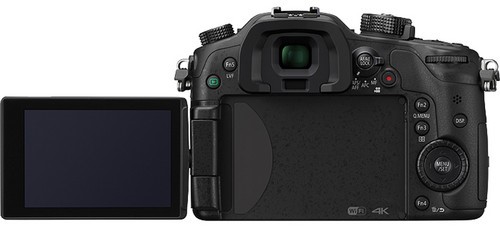
When the Panasonic GH4 came out, it was unquestionably one of the most advanced mirrorless cameras for video ever created. Lucky for you, it has aged extremely well and it still boasts some of the most impressive video features of any camera on the market.
While the Panasonic GH4 is a stills/video hybrid, it was definitely built with filmmakers in mind! On the photography side it received only minor upgrades from its predecessor, but when looking at the video features, it’s like a whole different camera.
It’s absolutely jam-packed with useful features that are designed specifically to make life easier for you and improve the quality of your video content. The Panasonic GH4 has a 16MP micro four thirds sensor, shoots 4K footage at two distinct sizes, and shoots stunning slow-mo shots at 96 fps. Better yet, that’s just the tip of the iceberg!
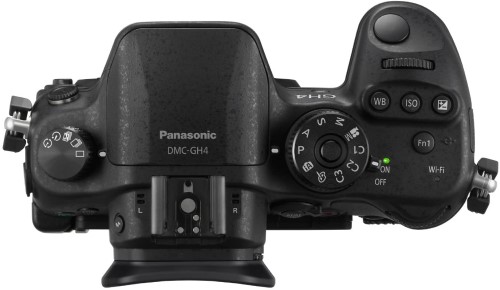
Here’s a full breakdown of the Panasonic GH4’s best video features:
- 16MP micro four thirds sensor
- 4K video 4K - DCI 'Cinema 4K' (4096 x 2160) or UHD 4K (3840 x 2160)
- 10-bit 4:2:2 external recording
- 96 fps slow motion recording
- No video recording length limit
- Headphone and microphone jacks
- Continuous autofocus in video mode
- 4K photo mode
- Audio level adjustment during recording
- Silent mode
- Fully articulating touch screen
An Amazing Camera for an Unbeatable Price
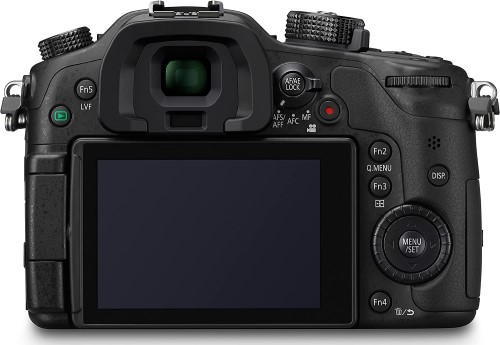
Arguably the most attractive quality of the Panasonic GH4 today is the remarkably low price tag! While the Panasonic GH5 retails for a hefty $1699, the GH4 can usually be purchased for somewhere between $400 and $500.
While it’s possible to occasionally find new Panasonic GH4’s available in some stores, without a doubt the best way to pick one up is on the second-hand market. You can try your luck on places like Facebook Marketplace or Craigslist, but unless you are knowledgeable about cameras, I always recommend going through a trustworthy and reliable used gear retailer.
They’re not only a great way to save money, but normally they include warranties on all of their products as well, so you can make your purchases completely worry free! Personally, I have bought a handful of used cameras through the years from mpb.com, and I would definitely not hesitate to recommend them!
Right now they have a ton of Panasonic Lumix GH4 used cameras available, and every so often they have Panasonic Lumix GH4 refurbished cameras on sale at even lower prices!
Learn More:
Panasonic GH4 Lens Compatibility
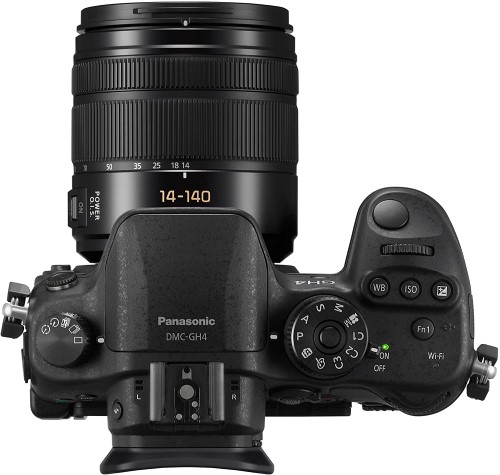
When deciding on a camera for video, one of, if not the most important things to consider is what lenses you can pair with the body. I don’t know if you know this, but the lens, not the body, actually has the biggest impact on the quality of your video footage!
Fortunately, the Panasonic GH4 has an astounding selection of lenses to choose from! Whether you are a professional videographer, a filmmaker, or a vlogger trying to make a Panasonic GH4 vlog, there are endless lens options to pick from!
Here is a quick list of my favorite video lenses for the Panasonic GH4:
- Sigma 18-35 f1.8
- Olympus M.Zuiko ED 40-150mm f/2.8 Pro
- Panasonic Lumix G Vario 14-140mm f/3.5-5.6 ASPH Power OIS II
- Tamron 14-150mm f/3.5-5.8 Di III
- Panasonic Leica DG 100-400mm f/4-6.3 ASPH POWER O.I.S.
- Olympus M.Zuiko ED 75-300mm f/4.8-6.7 II
Limitations of the Panasonic GH4
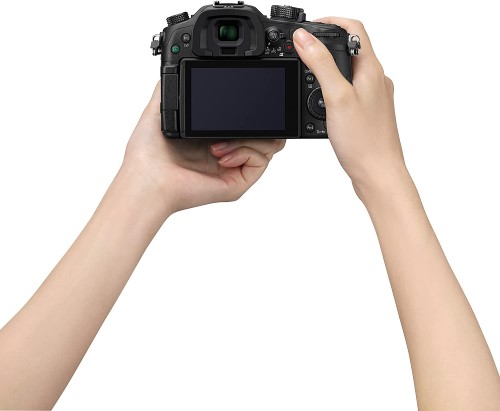
The biggest thing missing from the Panasonic GH4 is in-body stabilization. In-body stabilization is a fixture in most new cameras, but it’s also something many people are too concerned about. Sure it would be nice to have, but with tons of terrific lens options that include stabilization, it’s nothing to be overly concerned about.
Secondly, the Panasonic GH4 functions better as a video camera than a stills camera. When shooting photos I have found that the four thirds sensor does not hold up great in low light situations, and if you try to crank up the ISO too high, the image quality tends to go down pretty quickly. Don’t get me wrong, the Panasonic GH4 is no slouch when it comes to photography, but you may want to consider other options if you plan on using it more for photos than video.
The final thing I wanted to note is the fact that there is only one memory card slot. For video I love when cameras have room for two SD cards, but thanks to the rise of memory cards with incredibly high storage capabilities (up to 1TB!), this is by no means a deal-breaker.
Go Get Yours Today!
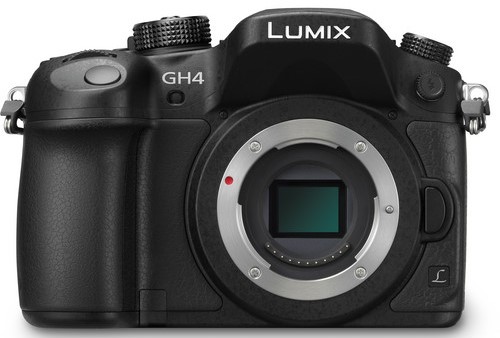
Thank you for taking the time to read this Panasonic GH4 review! Now that you understand where to buy a Panasonic GH4, and why it’s a great camera for video, what are you waiting for?!? Go get yours today today and start recording astonishing 4K content!

